Plant Descriptions – Palmera scandens – Peristeranthus hillii
Palmeria scandens
Pandanus conicus
Pandanus cookii
Pandanus gemmifera
Pandanus lauterbachii
Pandanus monticola
Pandanus oblatus
Pandanus solmslaubachii
Pandanus spiralis
Pandanus tectorius
Pandorea jasminoides
Pandorea linearis
Pandorea nervosa
Pandorea pandorana
Panicum bisulcatum
Panicum decompositum
Panicum effusum
Panicum lachnophyllum
Panicum obseptum
Panicum paludosum
Panicum pygmaeum
Panicum queenslandicum
Panicum simile
Papillilabium beckleri
Pararchidendron pruinosum
Paraserianthes lophantha
Parsonsia brownii
Parsonsia dorrigoensis
Parsonsia fulva
Parsonsia induplicata
Parsonsia lanceolata
Parsonsia longipetiolata
Parsonsia straminea
Parsonsia velutina
Paspalidium aversum
Paspalidium criniforme
Paspalidium distans
Paspalidium gausum
Paspalidium grandispiculatum
Paspalum distichum
Paspalum orbiculare
Paspalum scrobiculatum
Paspalum vaginatum
Passiflora aurantia
Passiflora cinnabarina
Passiflora herbertiana
Patersonia glabrata
Patersonia longifolia
Patersonia sericea
Pavetta australiensis
Pelargonium australe
Pelargonium helmsii
Pelargonium inodorum
Pelargonium rodneyanum
Pellaea falcata
Pellaea nana
Pellaea paradoxa
Peltophorum pterocarpum
Pennantia cunninghamii
Pennisetum alopecuroides
Pentaceras australe
Peperomia blanda
Peperomia tetraphylla
Peripentadenia phelpsii
Peristeranthus hillii
Palmeria scandens
Classification:
Class: Equisetopsida
Subclass: Magnoliidae
Order: Laurales
Family: Monimiaceae
Genus: Is named in honour of Sir James Fredrick Palmer; 1803-1871, who was a physician, pastoralist and the first president of the Legislative Council of Victoria.
Specie: From Scandere, which is Latin for the people of Scandere. It refers to people, which are very good climbers from very mountainous or hilly district.
Sub specie:
Common Name: Anchor Vine or Pomegranate Vine
Distribution:
Palmera scandens is found in 2 distinct populations on and east of the Great Dividing Range. The northern population is found south from the MacIlwraith Range to the Eungella National Park west of Mackay in northern Queensland. The southern plants a found south from Forest Glen near Nambour in southern Queensland to Shoalhaven in central coastal New South Wales.
https://avh.ala.org.au/occurrences/search?taxa=Palmeria+scandens#tab_mapView
Habitat Aspect Climate:
Palmeria scandens prefers dappled shade to full sun. It grows in or adjacent to lowland rainforests to well-developed warm mountainous rainforests. The altitude ranges from 20 meters ASL to 1550 meters ASL.
The temperatures range from 1 degree in July to 36 degrees in January.
The rainfall ranges from lows of 800mm to 3200mm average per annum.
Soil requirements:
Palmera scandens prefers better quality loams to medium clays. The soils are usually derived from brown basalts, black basalts, granites or sandstones. The soils pH ranges from 5pH to 6pH. It does not tolerate of waterlogged soils. Non saline soils to moderately saline soils are tolerated.
Height & Spread:
Wild Plants: 20m to 30m by 8m to 12m.
Characteristics:
Palmera scandens grows as a tall woody climber, sometimes scrambling in juvenile stages. The 200mm diameter stem’s bark is rough, shallowly furrowed and corky in appearance. The mid grey-brown trunk is covered in lichens and mosses. The juvenile and young stems are reddish-brown and covered in white stellate hairs.
The opposite to sub opposite leaves are elliptic to oblong and measure 55mm to 180mm in length by 25mm to 70mm in width. The petioles measure 4mm to 12mm in length. The slightly symmetrical to asymmetrical bases are broad cuneate to rounded while the apexes are acuminate to narrow acute. The discolourous laminas are mid green to mid grass-green and sparsely covered in white puberulent hairs on the upper laminas while the lower laminas are paler and sparsely to moderately covered in white pubescent hairs and white stellate. The laminas a slightly undulating, curve upwards from the mid vein to the margins and decurve slightly downwards at the apexes. The margins are entire to finely crenate. The mid vein is strongly prominent on the lower lamina near the base and slightly prominent at the apex and is clearly visible on the upper lamina. The lateral and reticulated veins a slightly prominent on the lower laminas and form pronounced loops inside the margins.
The dioecious inflorescences are born as short panicles. On the male plants while it is shorter racemes on the female plants. The panicles and racemes are born from the leaf axils and are densely covered in cam pulverulent and stellate hairs.
The male inflorescence measures 70mm to 90mm in length. The 6 to 12 individual flowers measure 7mm to 9mm in diameter. The 4 nodding, pastel creamy-yellow to pastel creamy-green tepals a densely covered in cam stellate hairs externally, are glabrous internally and measure 4mm to 6mm in length.
There are 4 to 6 sessile or sub sessile anthers on each tepal that are covered in short, puberulent hairs and measure 1mm in length.
The female racemes measure 45mm to 50mm in length. The individual flowers measure 3mm to 3.5mm in diameter. The inner surface of the receptacle is densely covered in white bristly hairs with the carpels borne amongst the hairs. The 11 to 15 carpels in each flower measures 0.5 mm to 0.6mm in length. There is 1 ovule in each carpel. The flowers appear from June to September.
Palmera scandens fruits are pseudo ellipsoidal to spherical drupes. The individual drupes are creamy green to greenish-fawn externally while the pseudo drupes are scarlet to crimson and sparsely to moderately covered in long white pulverulent hairs internally.
The pseudo drupes measure 15mm to 25mm in diameter. The 3 to 9 fruiting carpels are black and glossy. The single seed in each carpel measures 5mm to 6mm in diameter. The seeds are obtuse at one end but pointed at the other.
Wildlife:
Palmera scandens does not appear to have any predators though the flowers are occasionally visited by many small butterflies, native bees and beetles. The fleshy part of the fruits disintegrates quickly once they fall to the ground attracting numerous native flies and beetles.
Cultivation:
Palmera scandens is a magnificent large creeper that deserves a place in every warm temperate, sub-tropical or tropical native or exotic garden. They ideal in almost every setting on pool fences, at the edge of a rain forest in court yards, pergolas or larger rockeries When their size is balanced. In cultivation they will grow from 10 meters to 15 meters in height by 10 meters to 15 meters in width.
It grows exceptionally well on lighter soils When deep leaf litter keeps the soil cool and moisture at an even level. If these requirements are met they can cope with temperatures as low as minus 2 degrees and up to 40 degrees. It is moderately drought resistant.
Add to the above, if it is given an adequate supply of native fertilizers on a regular basis the plants will respond with spectacular flowering over a long period.
It often reaches its full potential in just 5 years and flower from the third year from seed.
Be imaginative When planting on pergolas, fences or other structures. Use the plants in different configurations and with different creepers that flower at different times.
Use curves and light pruning after flowering or tip pruning will help to maintain the plant to a smaller size.
Ensure that the whole plant or at least most of it is on display from most sections of the garden as the flowers are a real bonus.
When it is in flower these plants will catch your attention and the viewer will be transfixed on the display rather than watching the path.
Propagation:
Seeds: The seeds can be removed easily from the plants as they fall to the ground. Sow freshly collected seeds directly into a deep seed tray and cover the seeds with 5mm to 8mm of a sterile seed raising mix. Keep the mix moist not wet and place the tray in a warm position or hot house When the temperatures main at around 18 to 28 degrees. Germination will commence after about 60 days. When the seedlings reach 20mm to 25 mm tall, prick them out and plant them into 75mm native tubes using a good organic mix.
As the seedlings roots reach the bottom of the tubes plant them out into their permanent position. Do not delay.
Fertilize using seaweed, fish emulsion or organic chicken pellets soaked in water on an alternate basis. Fertilize every two months until the plants are established then twice annually in early September and March to maintain better health, vitality and flowering.
Further Comments from Readers:
Hi reader, it seems you use The Bible of Botany a lot. That’s great as we have great pleasure in bringing it to you! It’s a little awkward for us to ask, but our first aim is to purchase land approximately 1,600 hectares to link several parcels of N.P. into one at The Pinnacles NSW Australia, but we need your help. We’re not salespeople. We’re amateur botanists who have dedicated over 30 years to saving the environment in a practical way. We depend on donations to reach our goal. If you donate just $5, the price of your coffee this Sunday, We can help to keep the planet alive in a real way and continue to bring you regular updates and features on Australian plants all in one Botanical Bible. Any support is greatly appreciated. Thank you.
In the spirit of reconciliation we acknowledge the Bundjalung, Gumbaynggirr and Yaegl and all aboriginal nations throughout Australia and their connections to land, sea and community. We pay our respect to their Elders past, present and future for the pleasures we have gained.
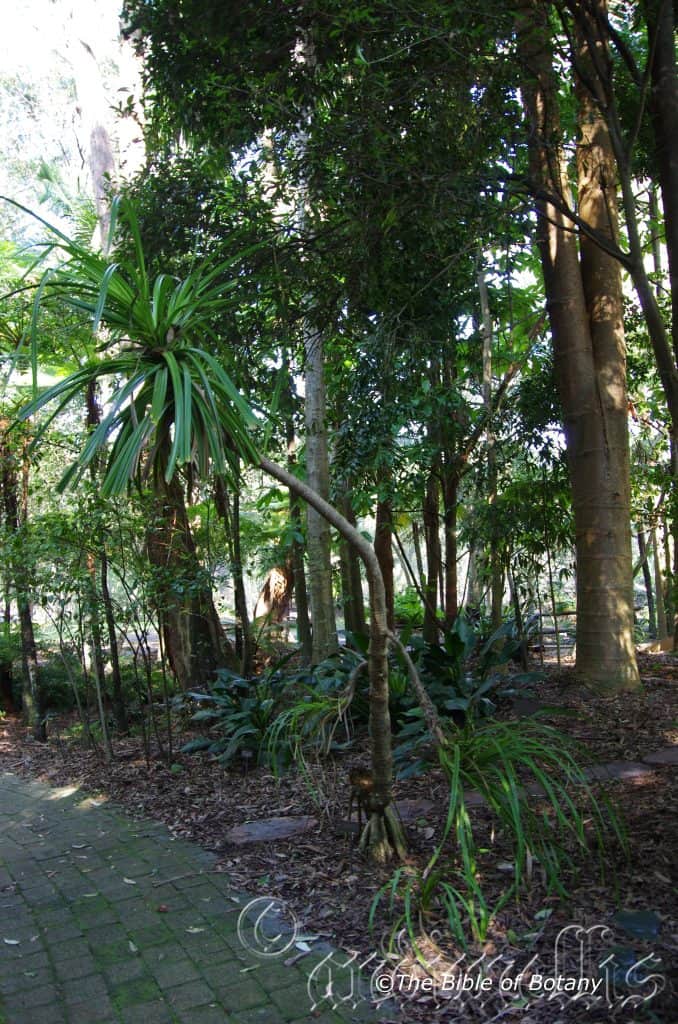
NCBG Coffs Harbour NSW
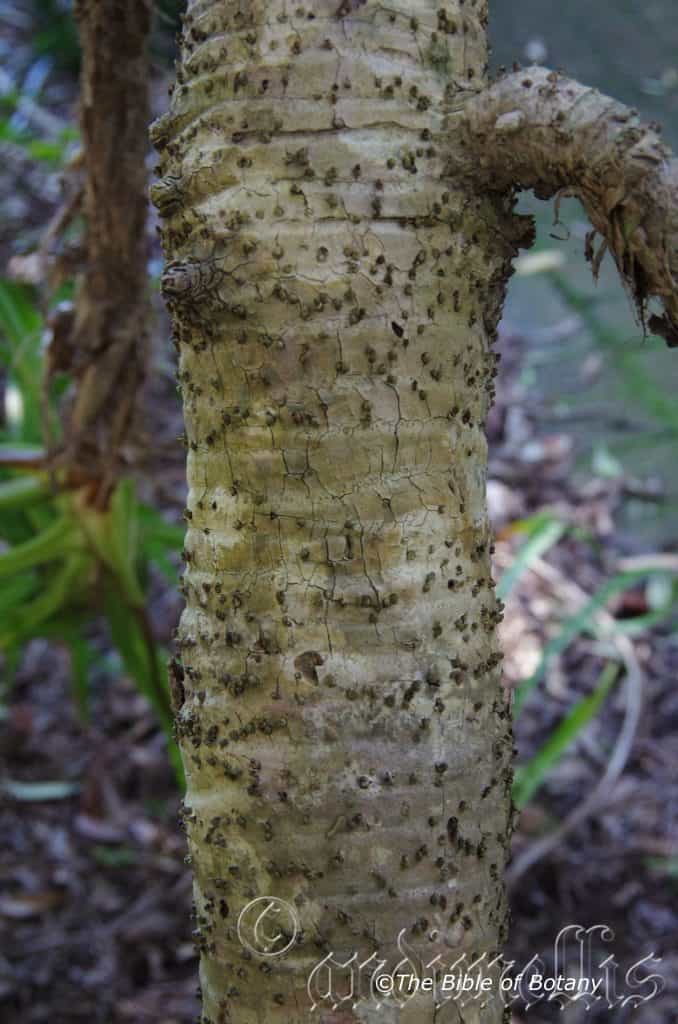
NCBG Coffs Harbour NSW
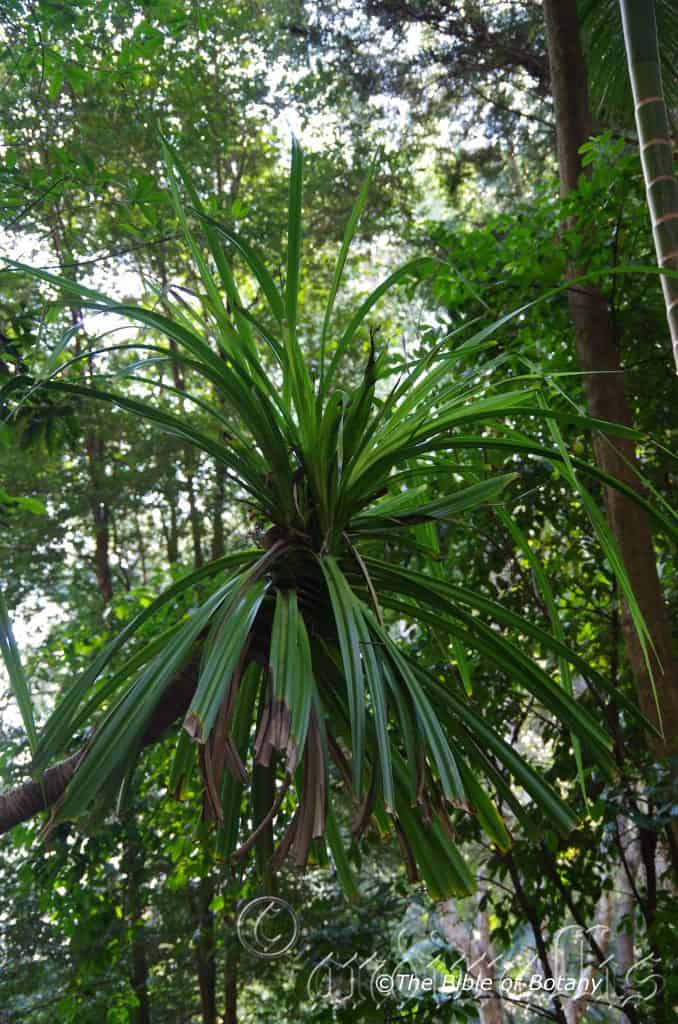
Pandanus aquaticus
Classification:
Unranked: Monocots
Order: Pandanales
Family: Pandanalaceae
Genus: From Pandan, which is Latinized from the Malayan vernacular name for to have sword like spiralling leaves. It refers to leaves, which take the form of a sword and spiral from around the trunk.
Specie: From Aquāticus, which is Latin for water or a watery environment. It refers to plants which prefer a watery habitat.
Sub specie:
Common Name: Water Screw Pine or river Pandanus.
Distribution:
Pandanus aquaticus is found in 2 distinct populations. It grows in far north-west Western Australia through to the far north west of the Northern Territory. In Queensland it is found along George Creek and Lawn Hill creek across to the Gregory River and north to near Burketown in the Gulf of Carpentaria.
https://avh.ala.org.au/occurrences/search?taxa=Pandanus+aquaticus#tab_mapView
Habitat Aspect Climate:
Pandanus aquaticus prefers dappled shade to full sun. It grows close to permanent water along drainage lines. The altitude ranges from 5 meters ASL to 200 meters ASL.
The temperatures range from 12 degrees in July to 46 degrees in January.
The rainfall ranges from lows of 400mm to 1800mm average per annum.
Soil requirements:
Pandanus aquaticus prefers fine sands, sandy loams to light fatty clays. The soils a usually derived from decomposed sandstone or alluvial deposits. The soils pH ranges from 5pH to 7pH. It tolerates waterlogged soils. Non saline soils to moderately saline soils are tolerated.
Height & Spread:
Wild Plants: 5m to 7m by 6m to 8m.
Characteristics:
Pandanus aquaticus grows as a medium spreading densely canopy tree with a spread equal to its height. The grey trunk is covered in numerous spiny conical nodules and lepidote lumps on the trunk and larger branches. The juvenile and young shoots are deep blue-green. Mature trees have numerous prop roots on the basal section.
The linear leaves of Pandanus conicus are arching, crowded spirals near the apex of the branches. It is shallowly ‘m shaped’ in transverse section and have blunt, antrorse and retrorse prickles ascending on the margins but lack such prickles on the lower mid vein. The prickles are usually absent from near the base. The bases are strongly clasping while the apexes are long narrow acute. The concolourous laminas are mid blue-green to deep green and glabrous. The mid vein is strongly prominent on the lower lamina and is visible on the upper lamina.
The dioecious inflorescences of Pandanus aquaticus are born on terminal spikes. Flowers unknown to the author.
Pandanus aquaticus’s fruits are spherical cones. The individual fruits are rectangular in cross section and taper towards the base. The green fruits turn deep orange or yellow when ripe and measure 150mm to 300mm in length by 150mm to 300mm in. Each phalange measure 50mm to 100mm in length by 15mm to 30mm in diameter.
Wildlife:NCBG Coffs Harbour NSW
Pandanus aquaticus does not appear to have any predators though the flowers are occasionally visited by many small butterflies, native bees and beetles. The fleshy part of the fruits disintegrates quickly once they fall to the ground attracting numerous native flies and beetles.
Cultivation:
Pandanus aquaticus is a magnificent medium Pandanus that deserves a place in every tropical, monsoonal or semi arid native garden. It is ideal in almost every setting near ponds, at the edge of a rain forest in court yards, around swimming pools or larger rockeries When their size is balanced. In cultivation it will grow from 6 meters to 7 meters in height by 7 meters to 9 meters in diameter When grown in the open.
It grows exceptionally well on lighter soils When deep leaf litter keeps the soil cool and moisture at an even level. If these requirements are met they can cope with temperatures as low as 6 degrees and maybe lower. It requires a wet area for best results.
Be imaginative When planting in mass. Use the plants in different configurations and use curves. It is great feature against stark walls and fences.
It is best used adjacent to small areas of bush but kept back 4 to 5 meters from paths so their spines do not catch clothing or hair. It is a great in medium to large rockeries as the main feature and can be used to recreate great desert scenes. It can be planted in small groups of 2 or 3 scatted as you would find them in nature to give a great tropical bush scene. It is best used in the mid ground surrounded by shorter plants with fine foliages with white or d flowers so they will dominate at the center of the bed especially When it is in flower.
Two or the planted in a central bed or round about mixed with rocks or boulders make a very strong statement. He they can be under planted with Lomandra or ground covers or annuals to display completely different personalities.
Ensure that the whole plant or at least most of it is on display from most sections of the garden as the fruits are a real bonus.
Propagation:
Seeds: The seeds of Pandanus aquaticus can be collected as soon as they fall to the ground. Each fruit contain lots of seeds. There is no way of telling which seeds are viable to those which are sterile. Soak the seeds in fresh water for 24 to 48 hours before sowing. Sow a seed into a 75mm native tube using a good organic mix and cover with 10mm to 20mm of the mix. Each seed may contain up to 3 individual plants. Place the tubes in a sunny position and keep moist during the summer and allow to dry out between watering during the cooler months as cold weather and moisture will cause the seeds to riot off. For this reason a hot house is best for germination. Seeds may take anything up to 12 months to germinate, so your patience is required.
Once the seedlings reach 150mm to 200mm in height they can be repotted into 250mm pots or planted into their permanent position.
Fertilize using seaweed, fish emulsion or organic chicken pellets soaked in water on an alternate basis. Fertilize every two months until the plants are established then twice annually in early September and March to maintain better health, vitality and flowering.
Further Comments from Readers:
Hi reader, it seems you use The Bible of Botany a lot. That’s great as we have great pleasure in bringing it to you! It’s a little awkward for us to ask, but our first aim is to purchase land approximately 1,600 hectares to link several parcels of N.P. into one at The Pinnacles NSW Australia, but we need your help. We’re not salespeople. We’re amateur botanists who have dedicated over 30 years to saving the environment in a practical way. We depend on donations to reach our goal. If you donate just $5, the price of your coffee this Sunday, We can help to keep the planet alive in a real way and continue to bring you regular updates and features on Australian plants all in one Botanical Bible. Any support is greatly appreciated. Thank you.
In the spirit of reconciliation we acknowledge the Bundjalung, Gumbaynggirr and Yaegl and all aboriginal nations throughout Australia and their connections to land, sea and community. We pay our respect to their Elders past, present and future for the pleasures we have gained.
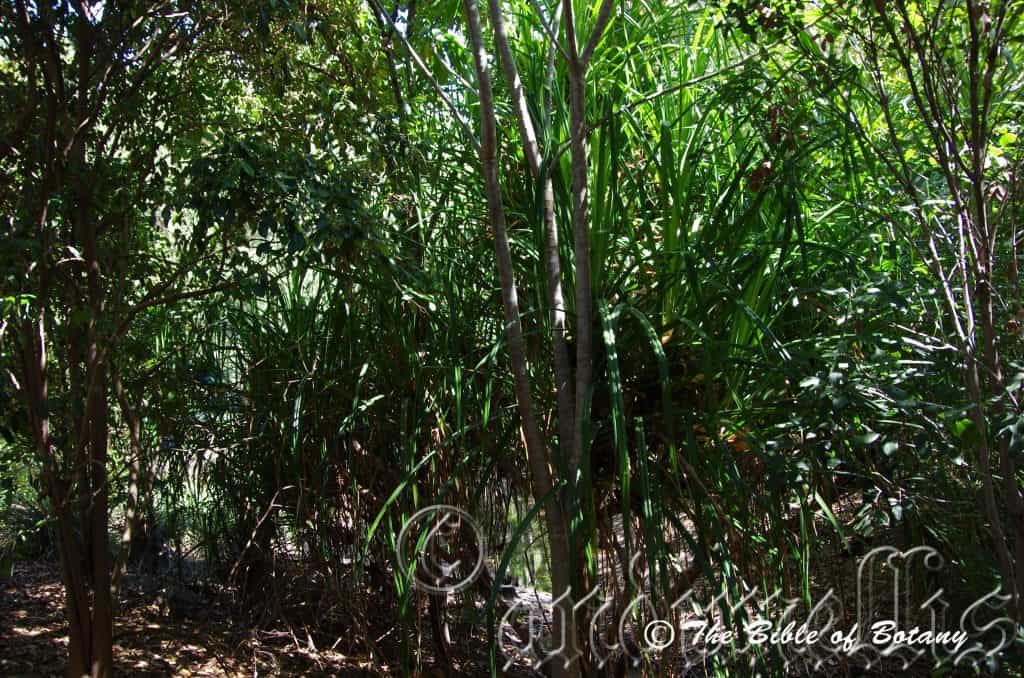
Mount Cootha Botanical Gardens Qld.
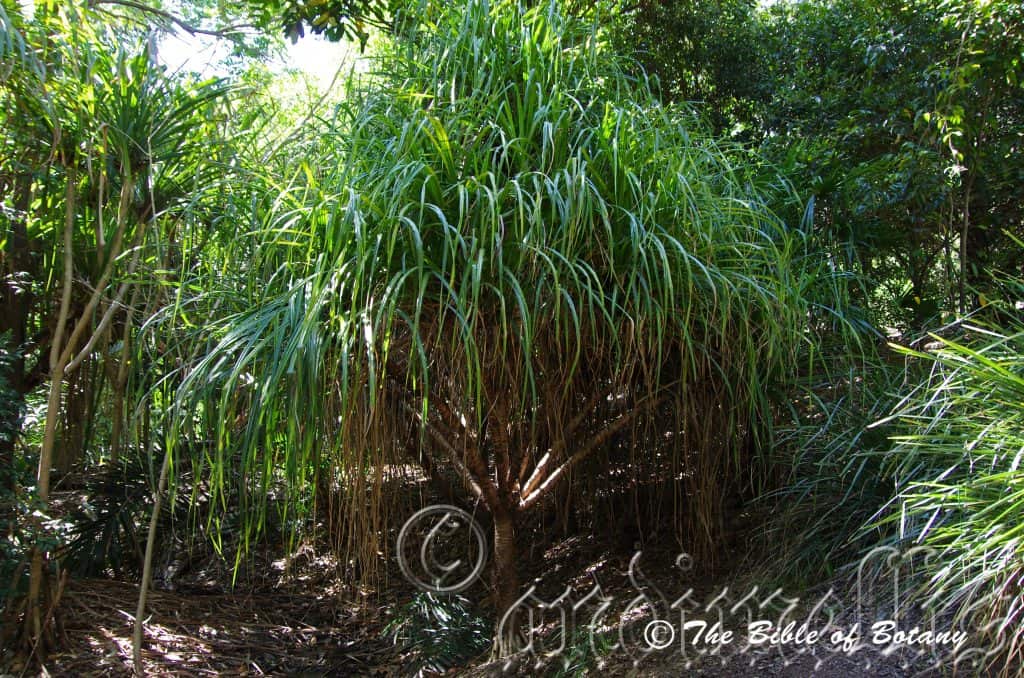
Mount Cootha Botanical Gardens Qld.
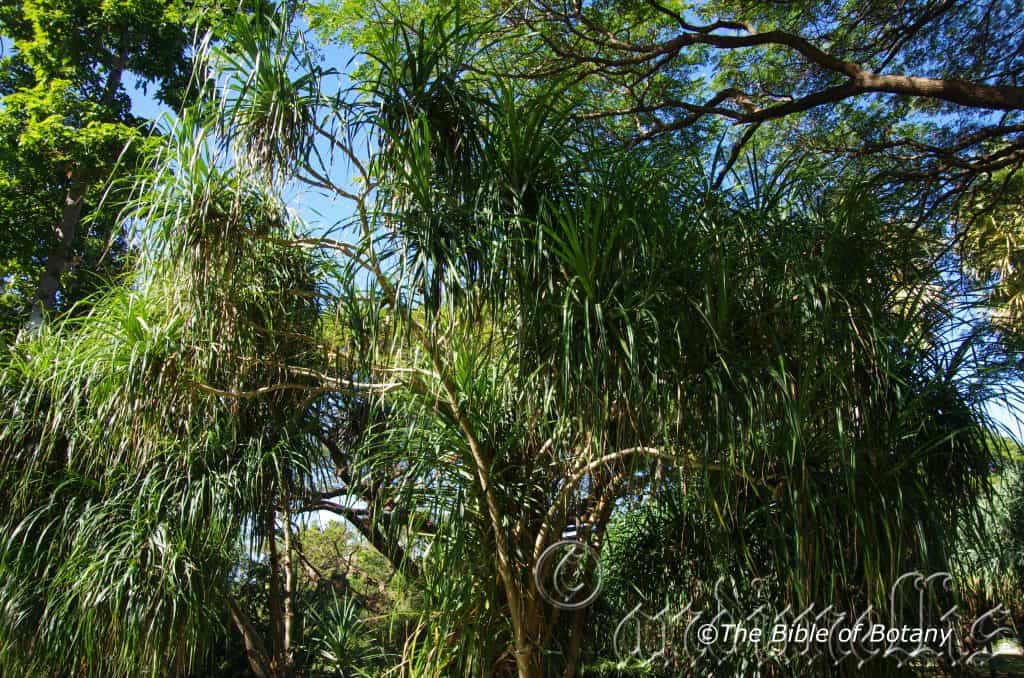
Anderson Gardens Townsville Qld.
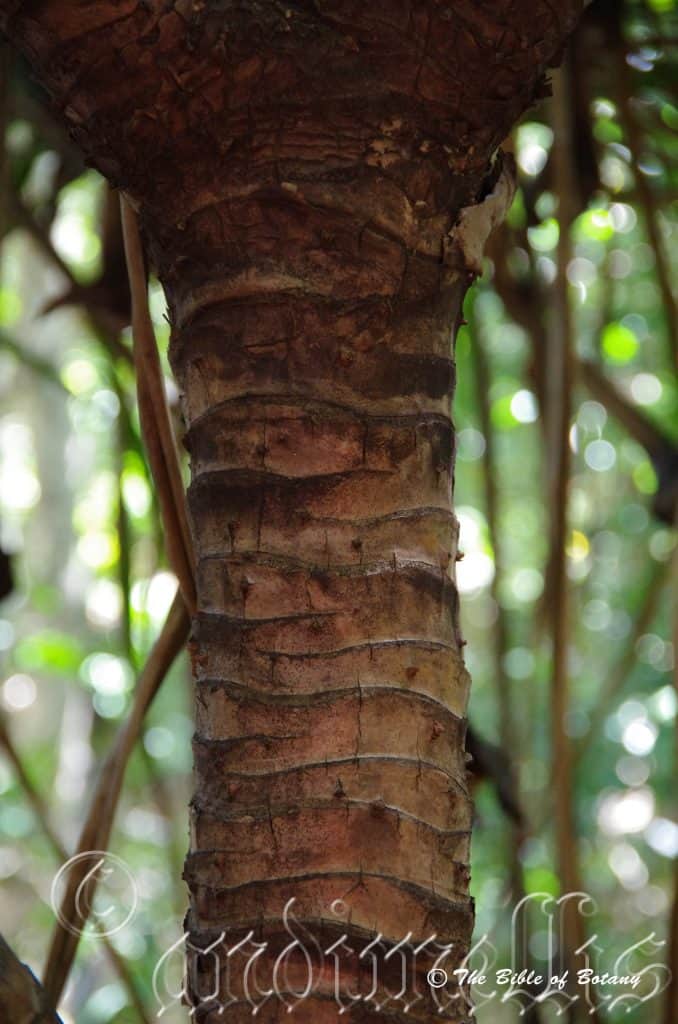
Mount Cootha Botanical Gardens Qld.
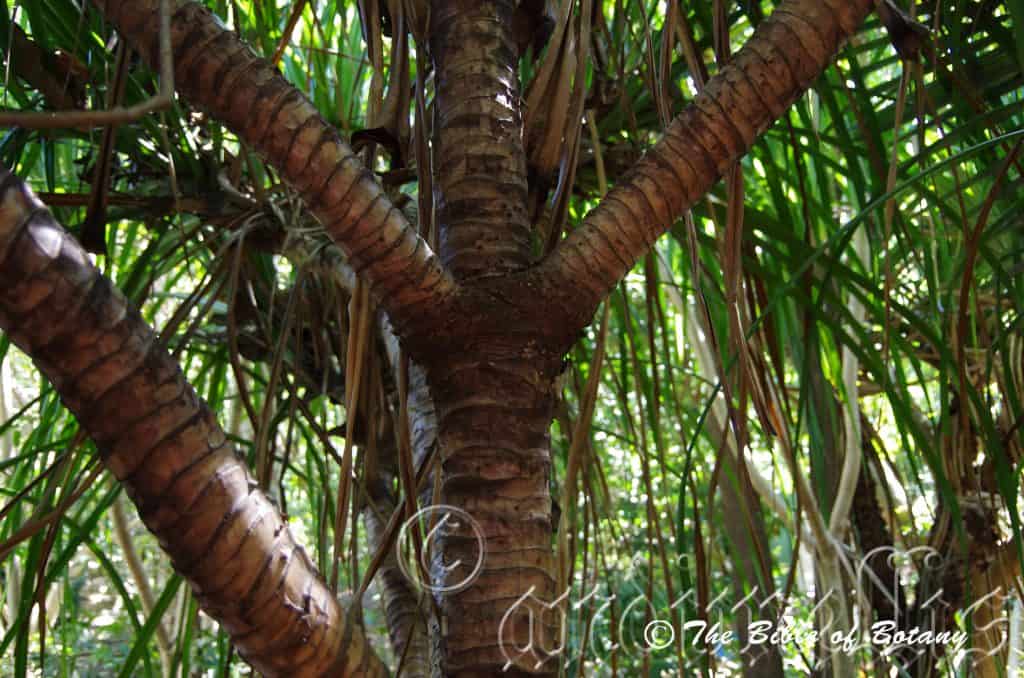
Mount Cootha Botanical Gardens Qld.
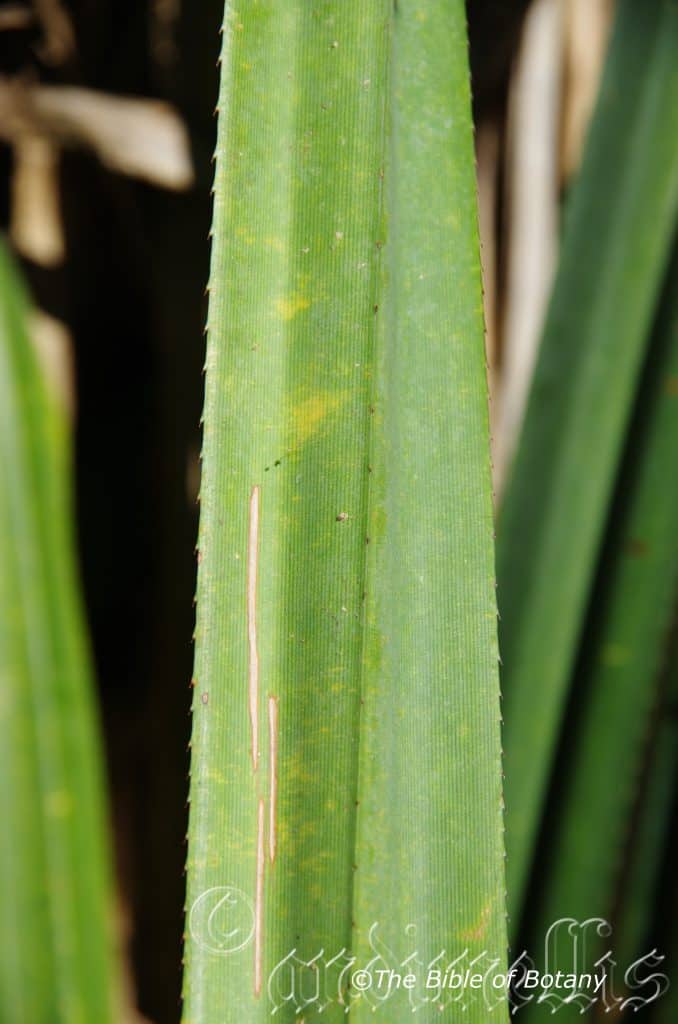
Mount Cootha Botanical Gardens Qld.
Pandanus conicus
Classification:
Order: Pandanales
Family: Pandanalaceae
Genus: From Pandan, which is Latinized from the Malayan vernacular name for to have sword like spiralling leaves. It refers to leaves, which take the form of a sword and spiral from around the trunk.
Specie: From Konicos, which is Ancient Greek for taking the form of a pine cone. It refers to the vague similarity to the fruits of pine tree.
Sub specie:
Common Name: Screw Pine or Mace Screw Pine.
Distribution:
Pandanus conicus is found south from Injune to Lankelly Creek on Silver Plains on Cape York Peninsula in far north east Queensland.
https://avh.ala.org.au/occurrences/search?taxa=Pandanus+conicus#tab_mapView
Habitat Aspect Climate:
Pandanus conicus prefers dappled shade to full sun. It grows in or adjacent to coastal tropical rainforests, littoral rainforests, vine thickets and mangrove margins as an understorey plant. The altitude ranges from 5 meters ASL to 520 meters ASL.
The temperatures range from 12 degrees in July to 38 degrees in January.
The rainfall ranges from lows of 1200mm to 2000mm average per annum.
Soil requirements:
Pandanus conicus prefers fine sands, sandy loams to light fatty clays. The soils a usually derived from decomposed granites. The soils pH ranges from 5pH to 6pH. It does not tolerate waterlogged soils. Non saline soils to moderately saline soils are tolerated.
Height & Spread:
Wild Plants: 8m to 10m by 8m to 12m.
Characteristics:
Pandanus conicus grows as a small spreading densely canopy tree with a spread equal to its height. The grey trunk is covered in numerous spiny conical nodules and lepidote lumps on trunk. The branches a thick, round grey and glabrous near the apexes. The juvenile and young shoots are deep blue-green. The numerous, slender prop roots measure 400mm to 550mm in length.
The linear leaves of Pandanus conicus are arching, crowded spirals near the apex of the branches. They measure 1200mm to 2000mm in length by 25mm to 40mm in width. It is shallowly M shaped in transverse section and have blunt, antrorse and retrorse prickles ascending on the margins and along the midrib on the underside of leaf. The prickles are usually absent from near the base. The bases are strongly clasping while the apexes are long narrow acute. The concolourous laminas are mid blue-green and glabrous. The mid vein is strongly prominent on the lower lamina and is visible on the upper lamina.
The dioecious inflorescences of Pandanus conicus are born on terminal spikes.
The male inflorescence’s floral bracts measure 0.7 meters to 1.2 meter in length. The inflorescences measure 350mm to 420mm in length and have 18 to 22 stamens in each individual flower. The white filaments are thick and fleshy while the anthers twist like a corkscrew after dehiscence. The flowers are sweetly scented.
The female inflorescences a globular to ovoidal spheres that measure 30mm to 40mm in diameter. The heads are enclosed in a pale leaf like bracts until maturity. The a 12 to 14 conical, hard, phalanges in each head with more than 100 individual sessile flowers in each phalange. The flowers appear throughout the year.
Pandanus conicus’s fruits are spherical cones with 10 to 45 individual fruits fused together at the base. The individual fruits are pyramidal to rectangular in cross section near the apex. The green fruits turn deep orange or grey When ripe. The fruits measure 150mm to 240mm in length by 100mm to 160mm in diameter with 10 to 45 phalanges. Each phalange measures 40mm to 50mm in length by 30mm to 40mm in width. The outer end of each segment ends in 13 to 16 processes with 10 to 15 seeds per phalange. The individual seeds measure 10mm to 12mm in length by 3mm to 3.5mm in diameter.
Wildlife:
Pandanus conicus does not appear to have any predators though the flowers are occasionally visited by many small butterflies, native bees and beetles. The fleshy part of the fruits disintegrates quickly once they fall to the ground attracting numerous native flies and beetles.
Cultivation:
Pandanus conicus is a magnificent small Pandanus that deserves a place in every tropical and monsoonal native garden. It is ideal in almost every setting near ponds, at the edge of a rain forest in court yards, around swimming pools or larger rockeries When their size is balanced. In cultivation they will grow from 8 meters to 9 meters in height by 8 meters to 9 meters in diameter When grown in the open.
It grows exceptionally well on lighter soils When deep leaf litter keeps the soil cool and moisture at an even level. If these requirements are met they can cope with temperatures as low as 6 degrees and maybe lower. It is drought resistant in their rainfall zones.
Be imaginative When planting in mass. Use the plants in different configurations and use curves. It is great feature against stark walls and fences.
It is best used adjacent to small areas of bush but kept back 4 to 5 meters from paths so their spines do not catch clothing or hair. It is a great in medium to large rockeries as the main feature and can be used to recreate great desert scenes. It can be planted in small groups of 2 or 3 scatted as you would find them in nature to give a great tropical bush scene. It is best used in the mid ground surrounded by shorter plants with fine foliages with white or d flowers so they will dominate at the center of the bed especially When it is in flower.
Two or the planted in a central bed or round about mixed with rocks or boulders make a very strong statement. He they can be under planted with Lomandra or ground covers or annuals to display completely different personalities.
Ensure that the whole plant or at least most of it is on display from most sections of the garden as the fruits are a real bonus.
Propagation:
Seeds: The seeds of Pandanus conicus can be collected as soon as they fall to the ground. Each fruit contain lots of seeds. There is no way of telling which seeds are viable to those which are sterile. Soak the seeds in fresh water for 24 to 48 hours before sowing. Sow a seed into a 75mm native tube using a good organic mix and cover with 10mm to 20mm of the mix. Each seed may contain up to 3 individual plants. Place the tubes in a sunny position and keep moist during the summer and allow to dry out between watering during the cooler months as cold weather and moisture will cause the seeds to riot off. For this reason a hot house is best for germination. Seeds may take anything up to 12 months to germinate, so your patience is required.
Once the seedlings reach 150mm to 200mm in height they can be repotted into 250mm pots or planted into their permanent position.
Fertilize using seaweed, fish emulsion or organic chicken pellets soaked in water on an alternate basis. Fertilize every two months until the plants are established then twice annually in early September and March to maintain better health, vitality and flowering.
Further Comments from Readers:
Hi reader, it seems you use The Bible of Botany a lot. That’s great as we have great pleasure in bringing it to you! It’s a little awkward for us to ask, but our first aim is to purchase land approximately 1,600 hectares to link several parcels of N.P. into one at The Pinnacles NSW Australia, but we need your help. We’re not salespeople. We’re amateur botanists who have dedicated over 30 years to saving the environment in a practical way. We depend on donations to reach our goal. If you donate just $5, the price of your coffee this Sunday, We can help to keep the planet alive in a real way and continue to bring you regular updates and features on Australian plants all in one Botanical Bible. Any support is greatly appreciated. Thank you.
In the spirit of reconciliation we acknowledge the Bundjalung, Gumbaynggirr and Yaegl and all aboriginal nations throughout Australia and their connections to land, sea and community. We pay our respect to their Elders past, present and future for the pleasures we have gained.
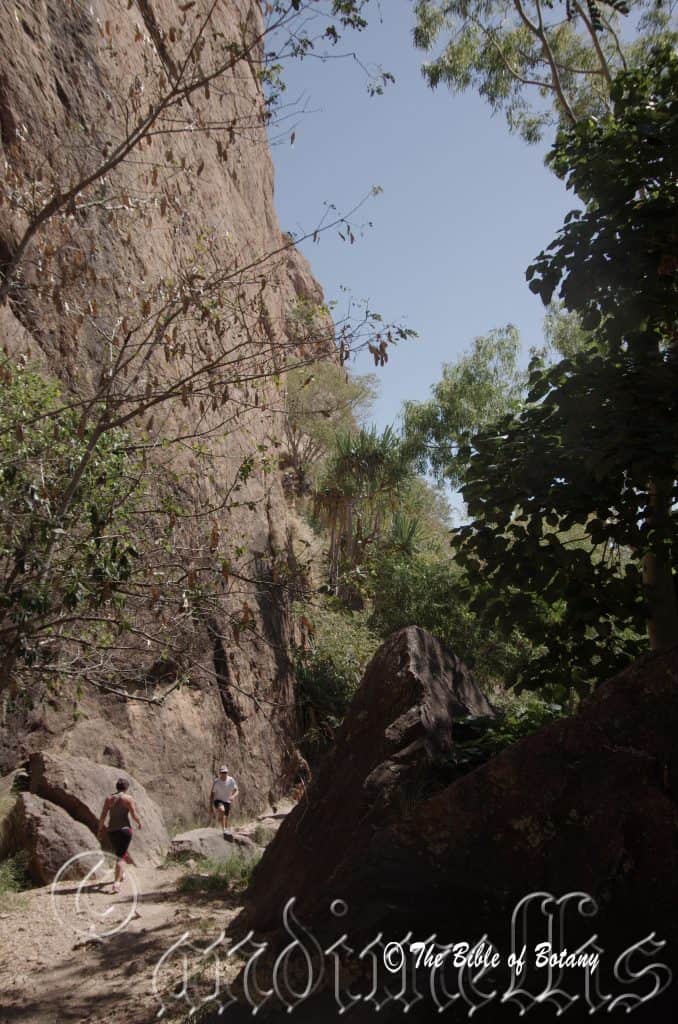
Castle Hill Townsville Qld.
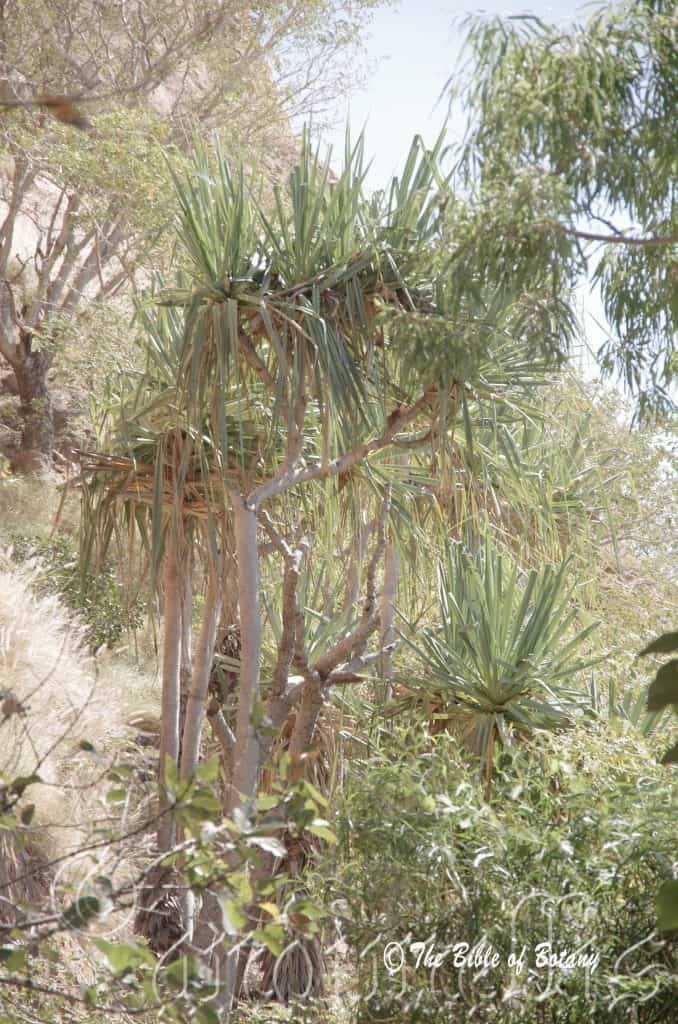
Castle Hill Townsville Qld.
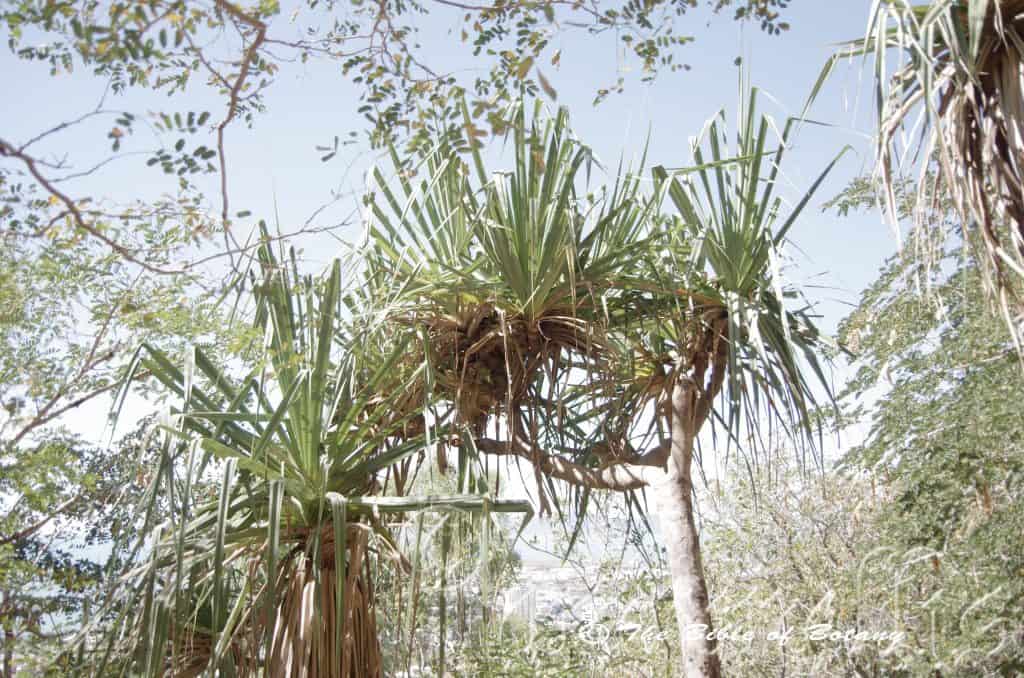
Castle Hill Townsville Qld.
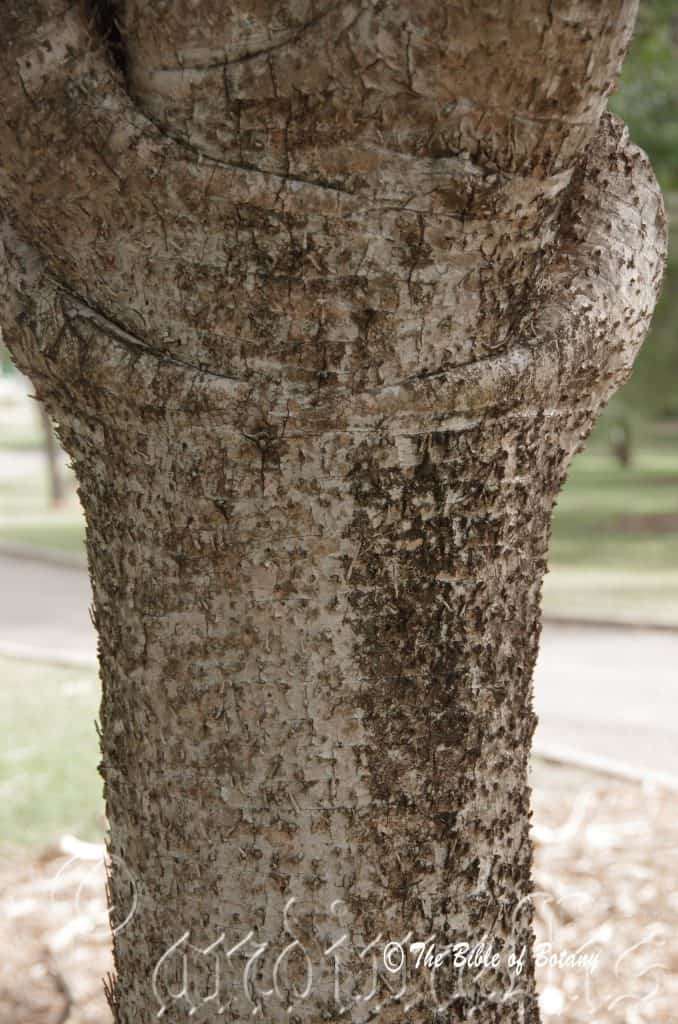
Anderson Botanic Gardens Qld.
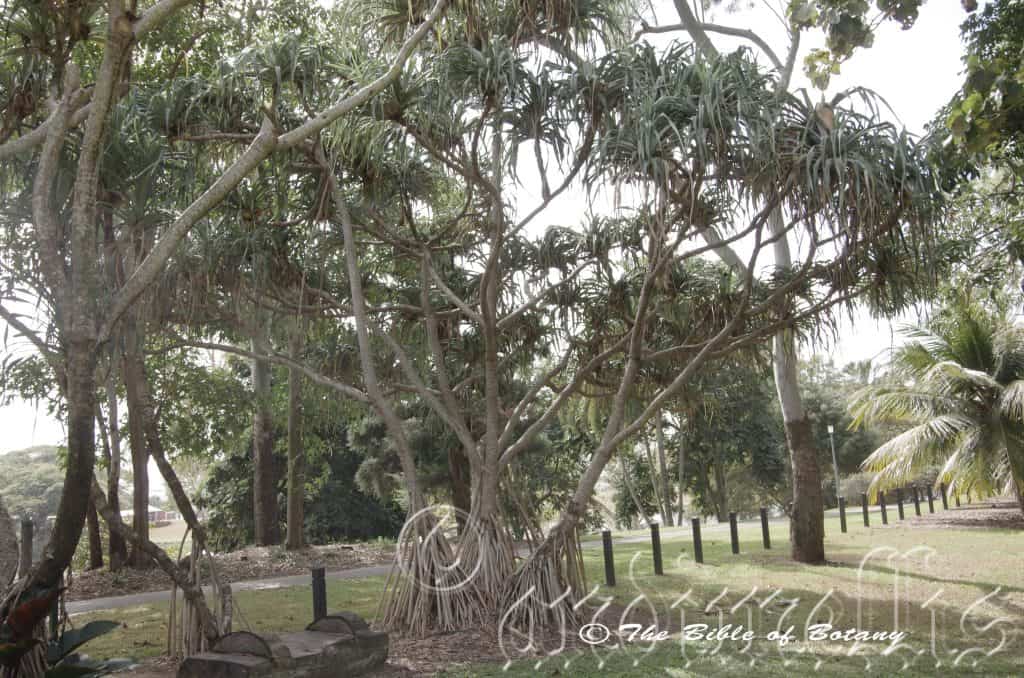
Anderson Botanic Gardens Qld.
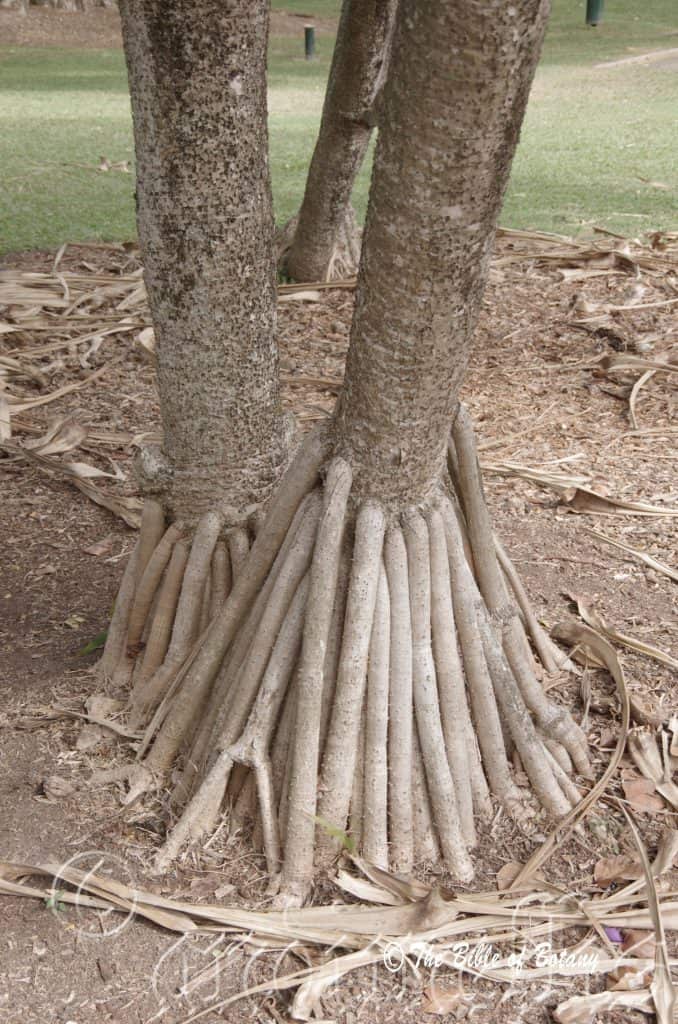
Anderson Botanic Gardens Qld.
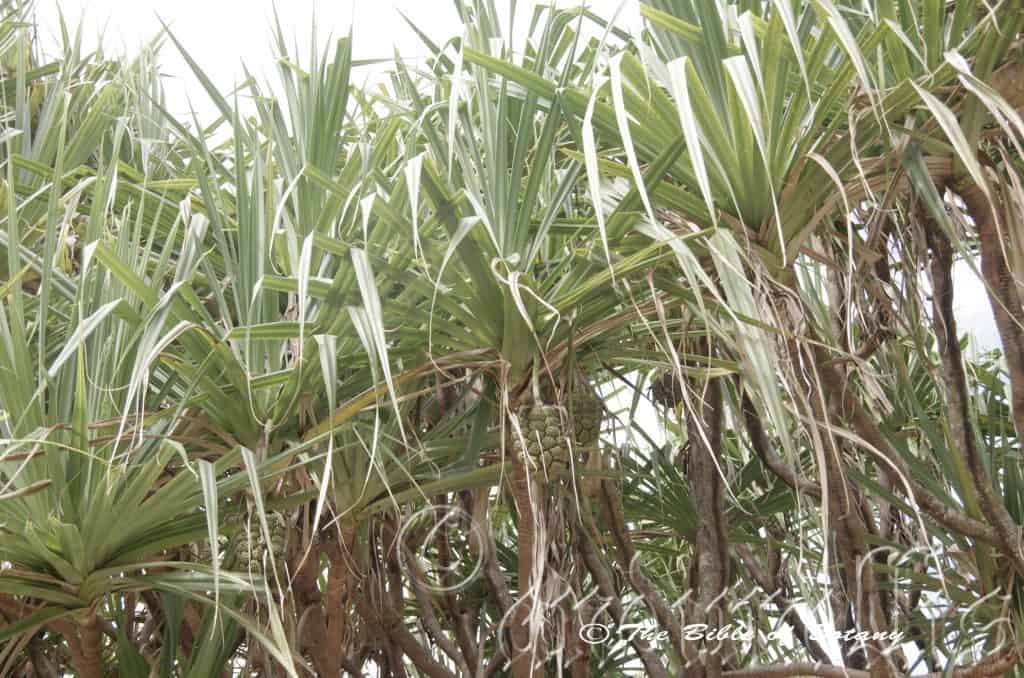
Castle Hill Townsville Qld.
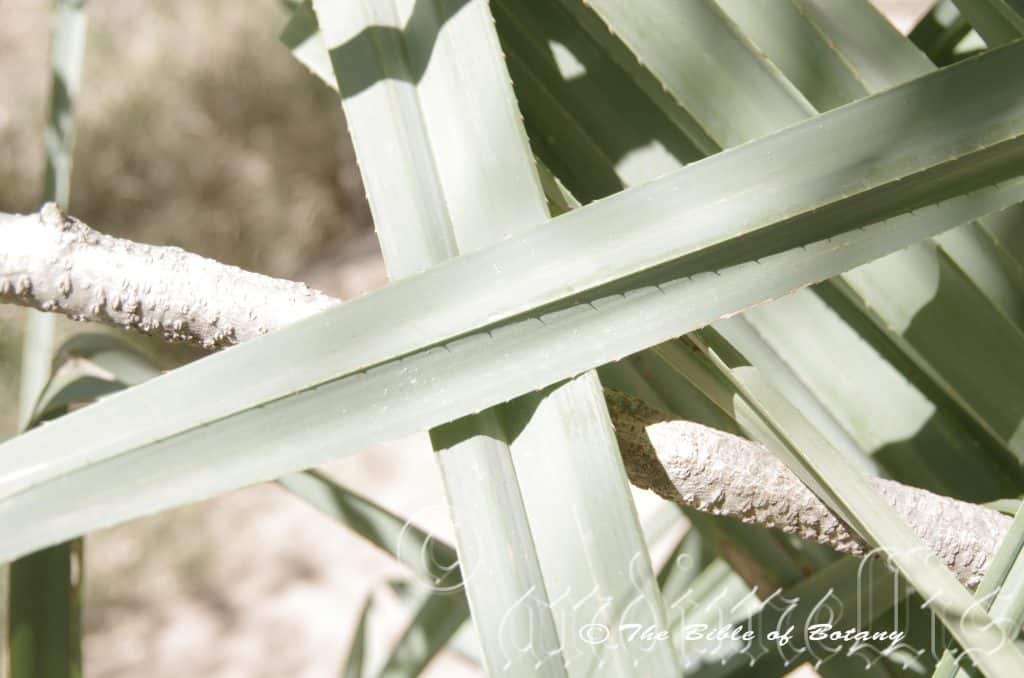
Castle Hill Townsville Qld.
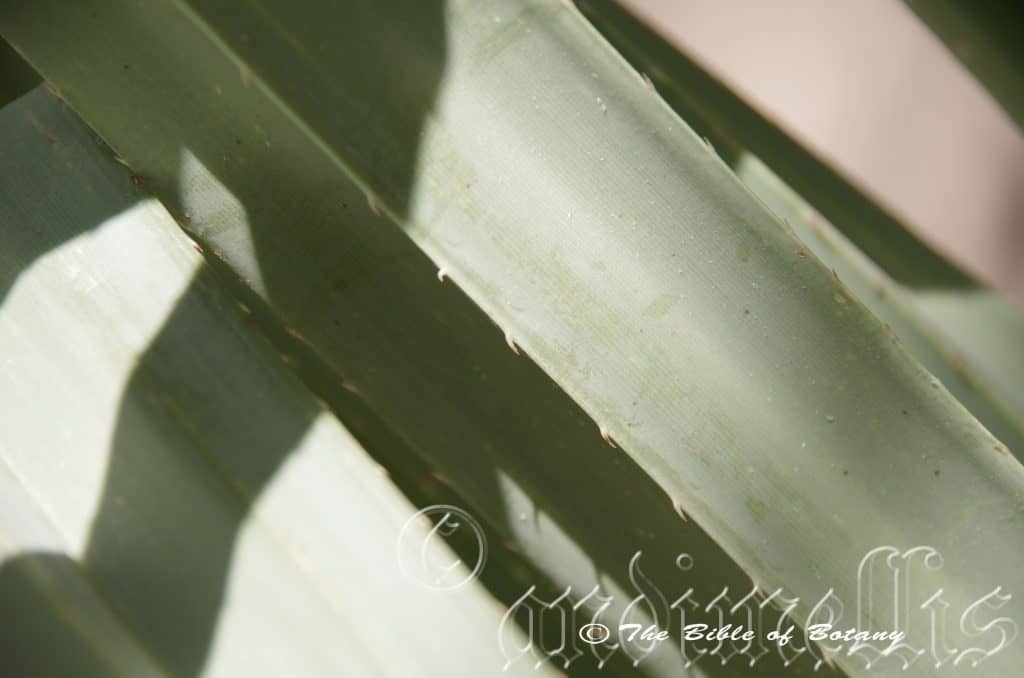
Castle Hill Townsville Qld.
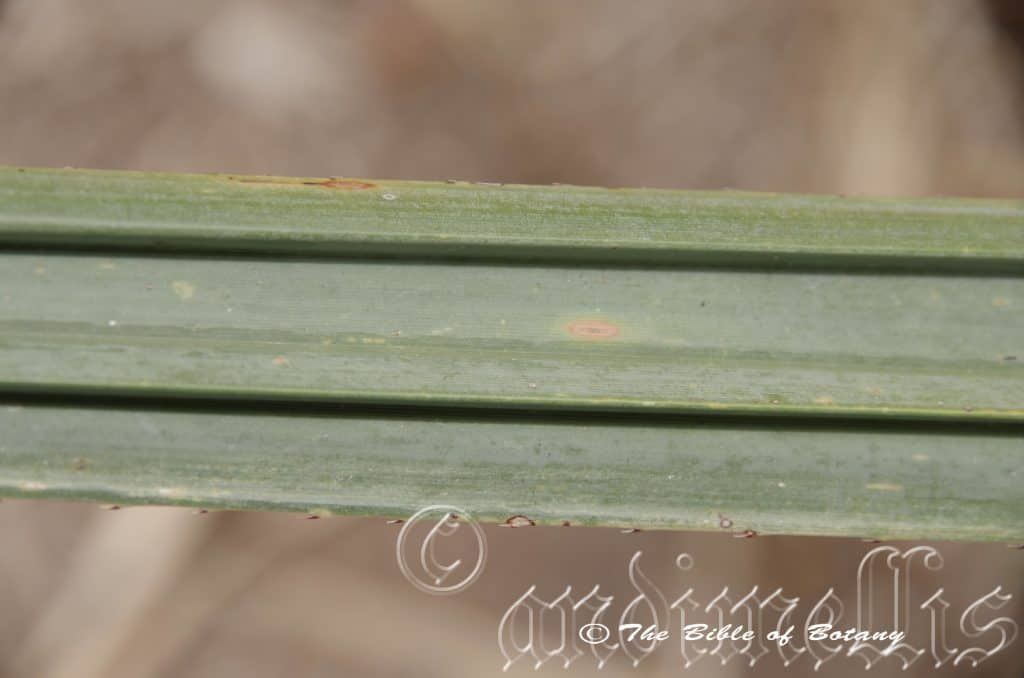
Castle Hill Townsville Qld.
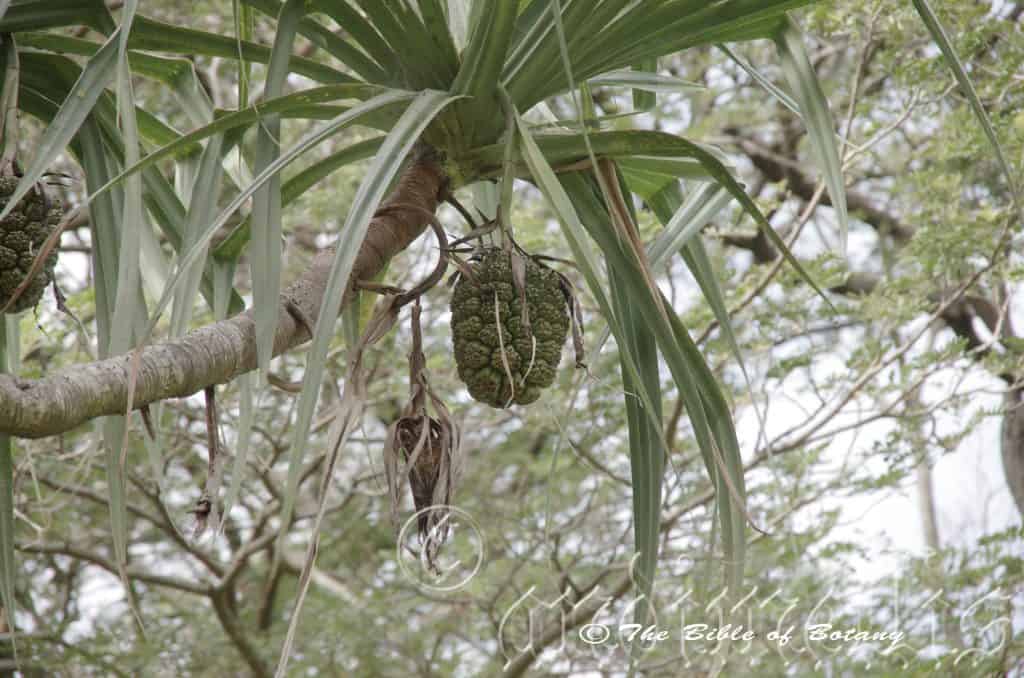
Anderson Botanic Gardens Qld.
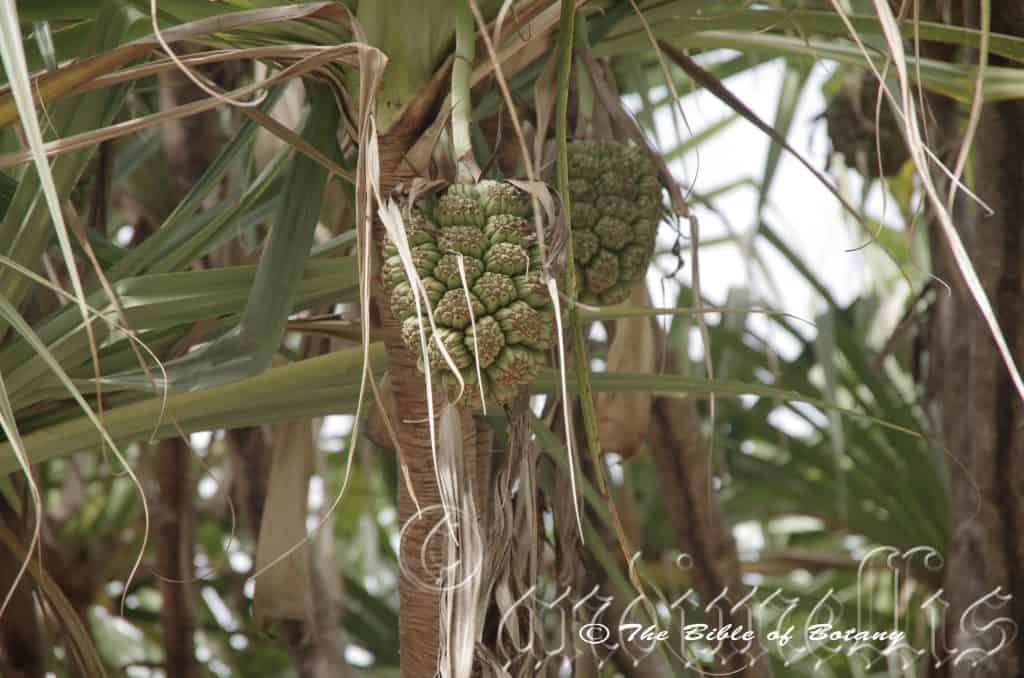
Anderson Botanic Gardens Qld.
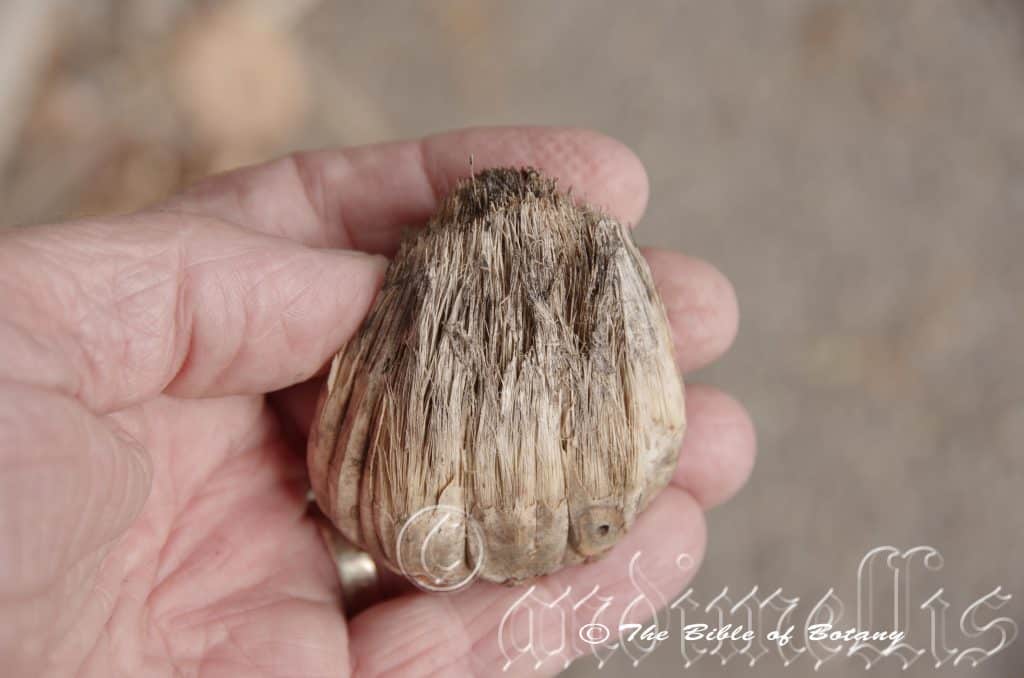
Anderson Botanic Gardens Qld.
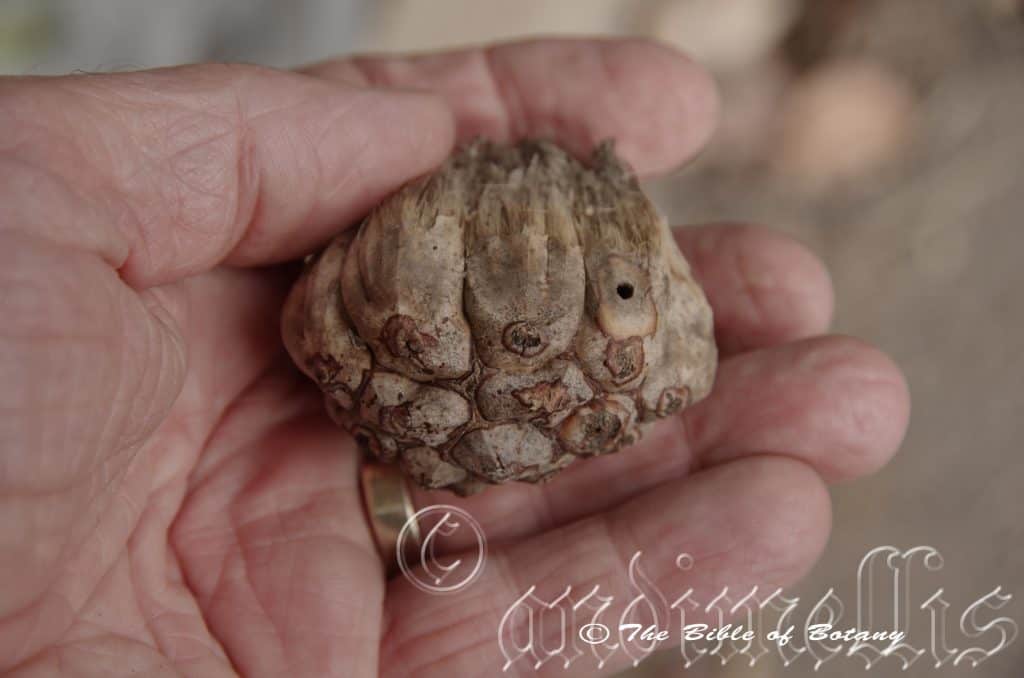
Anderson Botanic Gardens Qld.
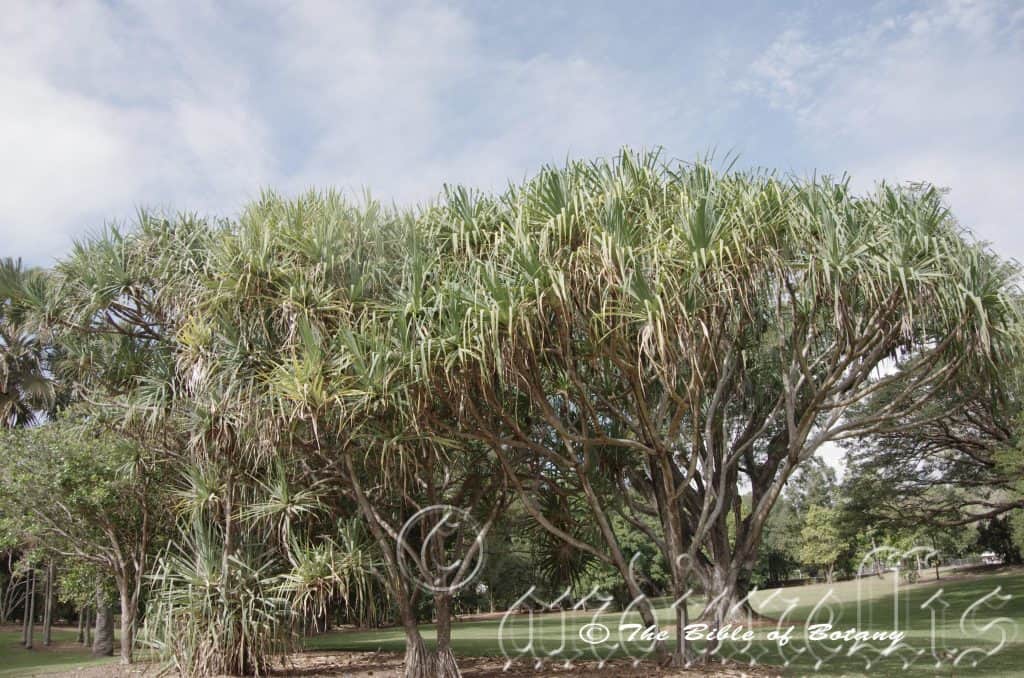
Anderson Botanic Gardens Qld.
Pandanus cookii
Classification:
Order: Pandanales
Family: Pandanalaceae
Genus: From Pandan, which is Latinized from the Malayan vernacular name for to have sword like spiralling leaves. It refers to leaves, which take the form of a sword and spiral from around the trunk.
Specie: Is named in honour of James Cook; 1728-1779, who was an English born lad to a Scottish Labouring father who worked his way up as a stoker to first mate and eventually captain. He is best known for his voyage and mapping part of the east coast of Australia.
Sub specie:
Common Name: Cooks Screw Pine.
Distribution:
Pandanus cookii is found south from the Torres Strait Islands, Cape York Peninsula to Mackay in far north east Queensland.
https://avh.ala.org.au/occurrences/search?taxa=Pandanus+cookii#tab_mapView
Habitat Aspect Climate:
Pandanus cookii prefers dappled shade to full sun. It grows in or adjacent to coastal tropical rainforests, littoral rainforests, vine thickets and as an understorey plant. The altitude ranges from 5 meters ASL to 500 meters ASL.
The temperatures range from 12 degrees in July to 38 degrees in January.
The rainfall ranges from lows of 1600mm to 3600mm average per annum.
Soil requirements:
Pandanus cookii prefers fine sands, sandy loams to light fatty clays. The soils are usually derived from decomposed granites. The soils pH ranges from 5pH to 6pH. It does not tolerate waterlogged soils. Non saline soils to moderately saline soils are tolerated.
Height & Spread:
Wild Plants: 8m to 10m by 5m to 7m.
Characteristics:
Pandanus cookii grows as a small spreading densely canopy tree with a pale fawnish-grey trunk. The lower trunk is covered in numerous spiny conical nodules and lepidote lumps while the upper trunk carries the fine scars of old discarded leaves. The branches are thick, round grey and glabrous near the apexes. The juvenile and young shoots are mid blue-green. The numerous, slender prop roots measure 100mm to 500mm in length.
The long, linear leaves of Pandanus cookii are arching, crowded spirals near the apex of the branches. They measure 1300mm to 1800mm in length by 60mm to 85mm in width. It is shallowly “V” in transverse. The bases are strongly clasping while the apexes are long tapering. The discolourous laminas are mid blue-green to glaucous-green and glabrous on the upper laminas while the lower laminas are paler. The mid vein is strongly prominent on the lower lamina and is visible on the upper lamina. The margins are entire, spineless or at times have a few spines. The official reports state that the midrib is spineless as per our photos of plants at the Townsville botanic gardens yet apparently only Pandanus cookie is found on Castle Hill outside Townsville When the plants photographed have a distinct row of spines along the mid vein.
The dioecious inflorescences of Pandanus cookii are born on terminal spikes.
The white male inflorescence’s floral bracts while the white filaments are thick and fleshy and the anthers are twist like a corkscrew after dehiscence. The flowers are sweetly scented. The flowers appear throughout the year.
Pandanus cookii’s fruits are spherical cones. The individual fruits are pyramidal to rectangular in cross section near the apex. The green fruits turn deep orange or red when ripe. The fruits measure 200mm to 300mm in length by 150mm to 260mm in diameter. Each phalange measures 60mm to 80mm in length by 50mm to 80mm in width. The phalanges are somewhat angulated to triangular. The individual seeds measure 20mm to 22mm in length.
Wildlife:
Pandanus cookii does not appear to have any predators though the flowers are occasionally visited by many small butterflies, native bees and beetles. The fleshy part of the fruits disintegrates quickly once they fall to the ground attracting numerous native flies and beetles.
Cultivation:
Pandanus cookii is a magnificent small Pandanus palm that deserves a place in every tropical and monsoonal native garden. It is ideal in almost every setting near ponds, at the edge of a rain forest in court yards, around swimming pools or larger rockeries When their size is balanced. In cultivation it grows from 8 meters to 10 meters in height by 8 meters to 9 meters in diameter when grown in the open.
It grows exceptionally well on lighter soils When deep leaf litter keeps the soil cool and moisture at an even level. If these requirements are met it can cope with temperatures as low as 6 degrees and maybe lower. It is drought resistant in their rainfall zones.
Be imaginative When planting in mass. Use the plants in different configurations and use curves. Even mix them up with other Pandanus species using heaight and bark textures as a feature. It makes a very good feature plant against stark walls and fences.
It is best used adjacent to small areas of bush but kept back 4 to 5 meters from paths so their spines do not catch clothing or hair. It is great in medium to large rockeries as the main feature and can be used to recreate desert scenes. It can be planted in small groups of 2 or 3 scatted as you would find them in nature to give a great tropical bush scene. It is best used in the mid ground surrounded by shorter plants with fine foliages with white or d flowers so they will dominate at the center of the bed especially When it is in flower.
Two or the planted in a central bed or round about mixed with rocks or boulders make a very strong statement. Here it can be under planted with Lomandra or ground covers or annuals to display completely different personalities.
Ensure that the whole plant or at least most of it is on display from most sections of the garden as the fruits are a real bonus.
Propagation:
Seeds The seeds of Pandanus cookii can be collected as soon as they fall to the ground. Each fruit contain lots of seeds. There is no way of telling which seeds are viable to those which are sterile. Soak the seeds in fresh water for 24 to 48 hours before sowing. Sow a seed into a 75mm native tube using a good organic mix and cover with 10mm to 20mm of the mix. Each seed may contain up to 3 individual plants. Place the tubes in a sunny position and keep moist during the summer and allow to dry out between watering during the cooler months as cold weather and moisture will cause the seeds to riot off. For this reason a hot house is best for germination. Seeds may take anything up to 12 months to germinate, so your patience is required.
Once the seedlings reach 150mm to 200mm in height they can be repotted into 250mm pots or planted into their permanent position.
Fertilize using seaweed, fish emulsion or organic chicken pellets soaked in water on an alternate basis. Fertilize every two months until the plants are established then twice annually in early September and March to maintain better health, vitality and flowering.
Further Comments from Readers:
Hi reader, it seems you use The Bible of Botany a lot. That’s great as we have great pleasure in bringing it to you! It’s a little awkward for us to ask, but our first aim is to purchase land approximately 1,600 hectares to link several parcels of N.P. into one at The Pinnacles NSW Australia, but we need your help. We’re not salespeople. We’re amateur botanists who have dedicated over 30 years to saving the environment in a practical way. We depend on donations to reach our goal. If you donate just $5, the price of your coffee this Sunday, We can help to keep the planet alive in a real way and continue to bring you regular updates and features on Australian plants all in one Botanical Bible. Any support is greatly appreciated. Thank you.
In the spirit of reconciliation we acknowledge the Bundjalung, Gumbaynggirr and Yaegl and all aboriginal nations throughout Australia and their connections to land, sea and community. We pay our respect to their Elders past, present and future for the pleasures we have gained.
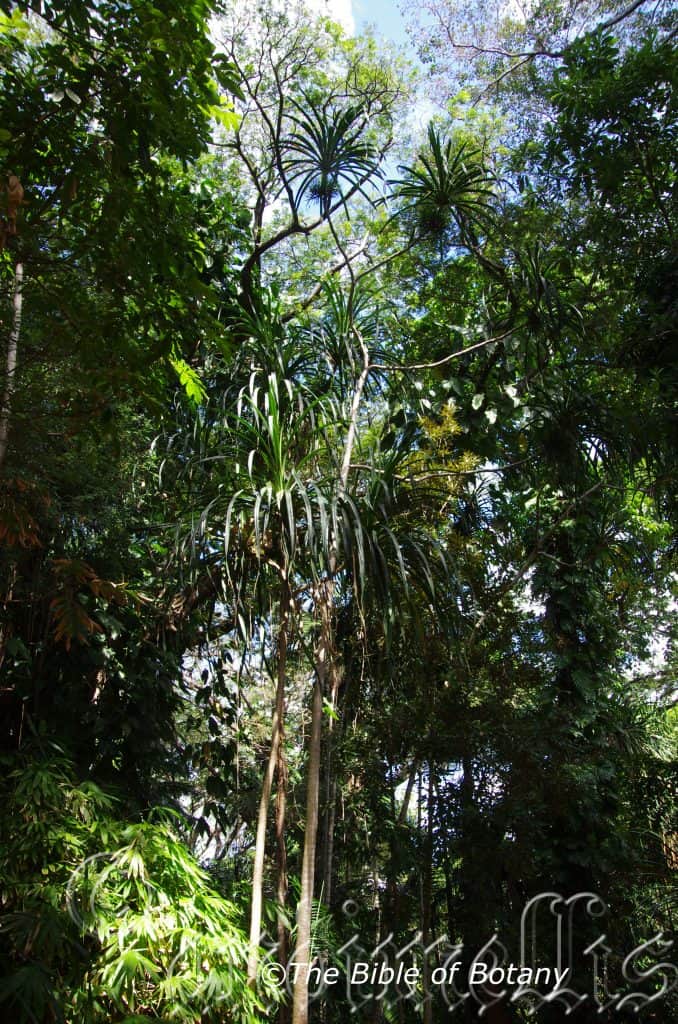
Jourama Falls Paluma Range National Park Qld.
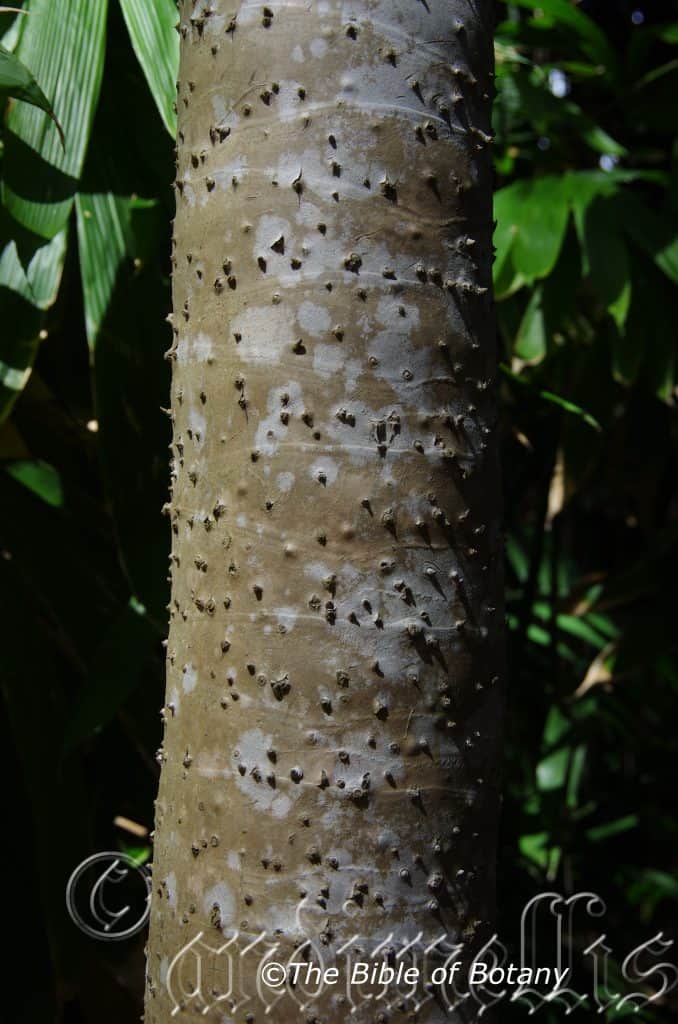
Jourama Falls Paluma Range National Park Qld.
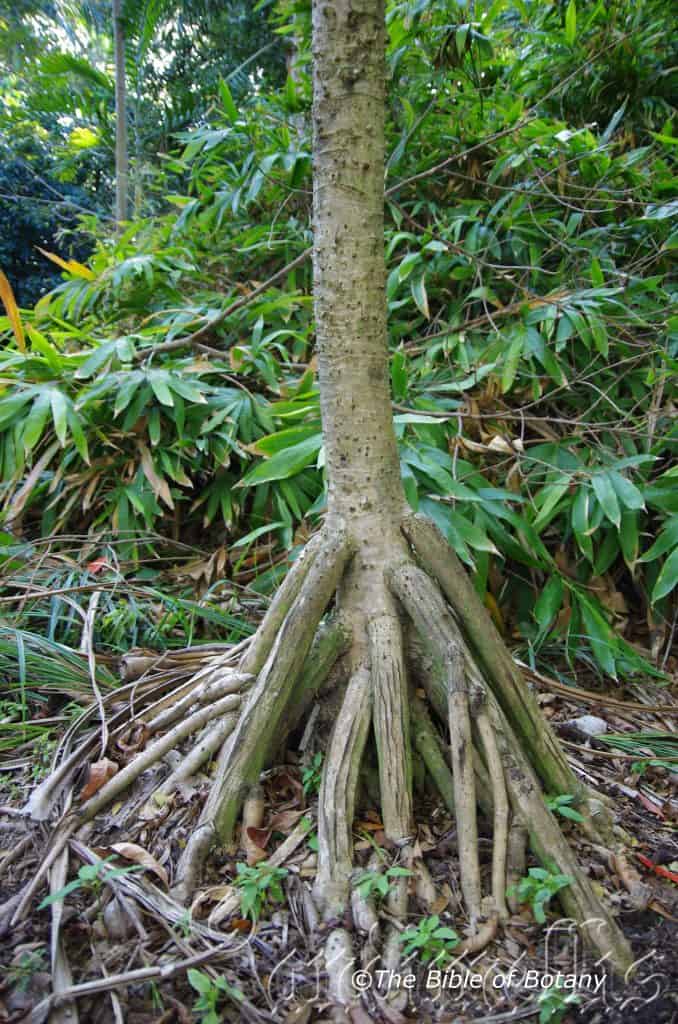
Jourama Falls Paluma Range National Park Qld.
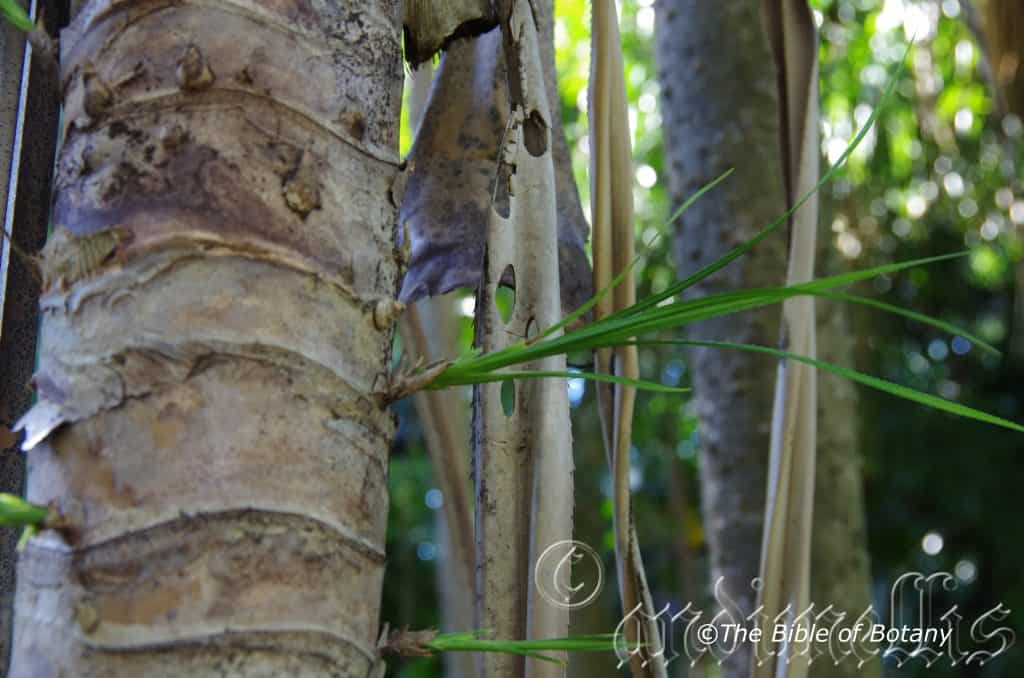
Jourama Falls Paluma Range National Park Qld.
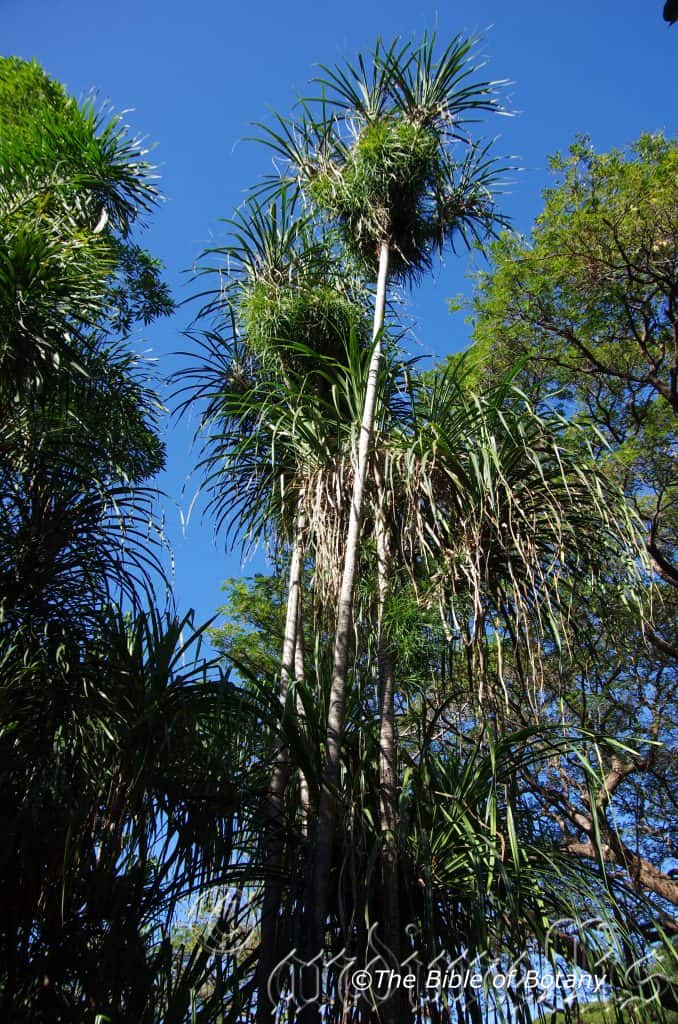
Jourama Falls Paluma Range National Park Qld.
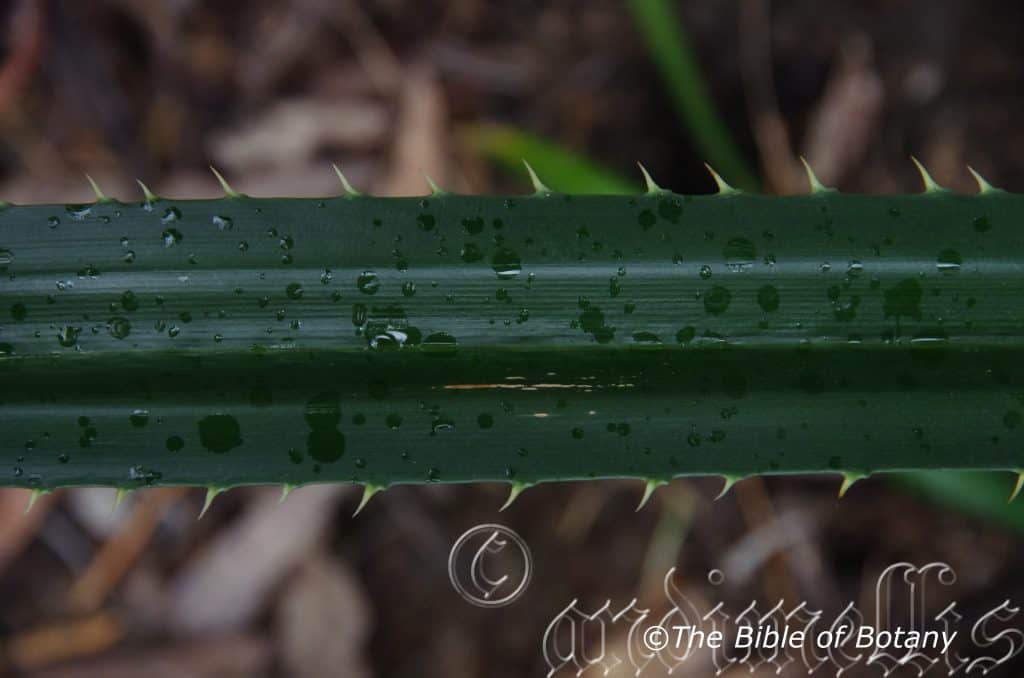
Author’s Garden The Pinnacles NSW
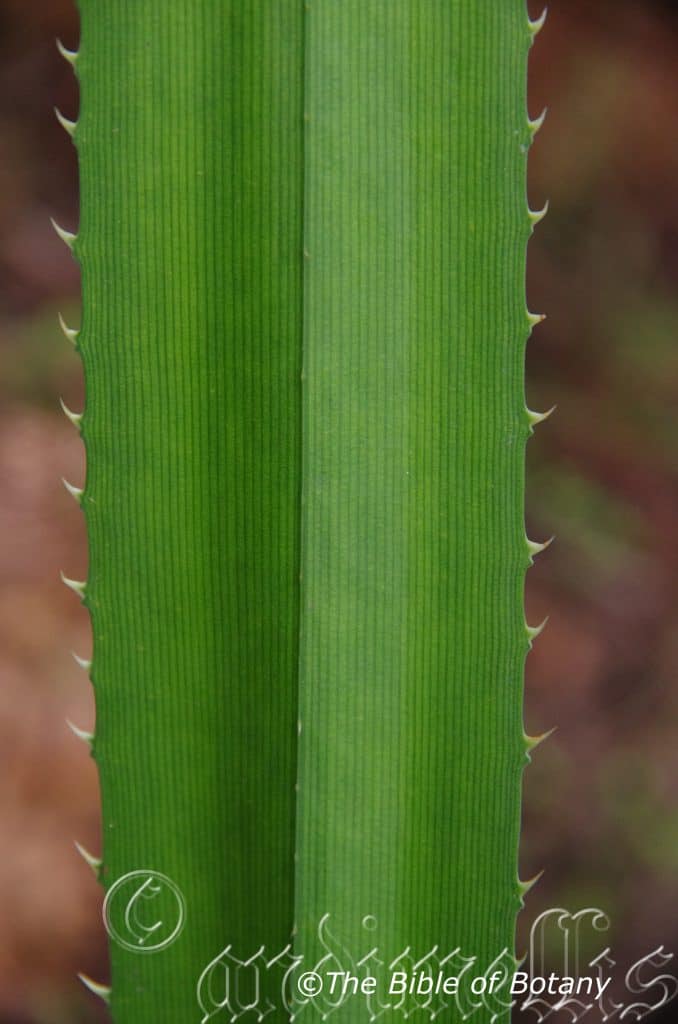
Author’s Garden The Pinnacles NSW
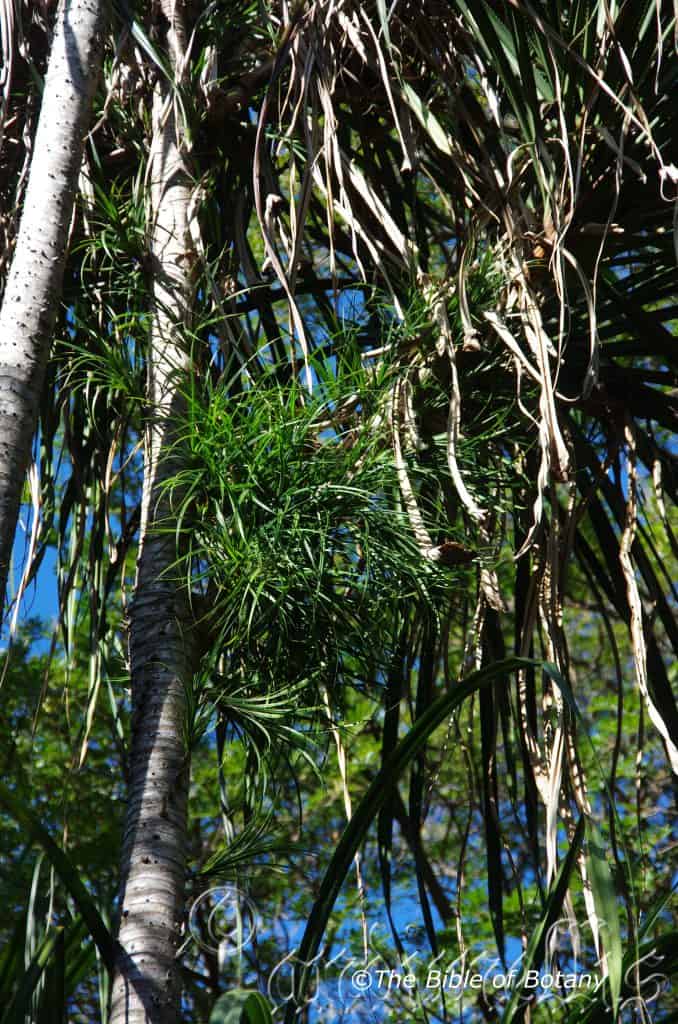
Jourama Falls Paluma Range National Park Qld.
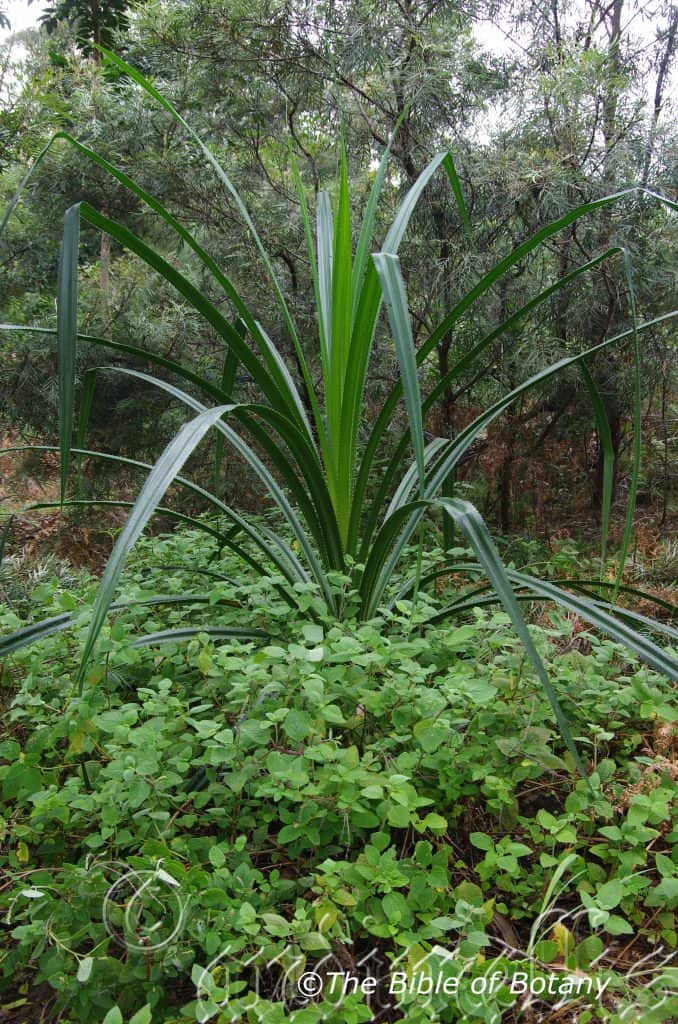
Author’s Garden The Pinnacles NSW
Pandanus gemmifera
Classification:
Order: Pandanales
Family: Pandanalaceae
Genus: From Pandan, which is Latinized from the Malayan vernacular name for to have sword like spiralling leaves. It refers to leaves, which take the form of a sword and spiral from around the trunk.
Specie: From Gemma, which is Latin for an eye or bud of a plant and Fera, which is Latin for to bear. It refers to plants, which bear many buds on the trunk, from which new juvenile plants grow.
Sub specie:
Common Name:
Distribution:
Pandanus gemmifer is found south from Leo Creek on the Mcilwraith Range to the Paluma Range National park in far north east Queensland.
https://avh.ala.org.au/occurrences/search?taxa=Pandanus+gemmifer#tab_mapView
Habitat Aspect Climate:
Pandanus gemmifer prefers dappled shade to full sun. It grows in or adjacent to coastal tropical rainforests, littoral rainforests and vine thickets as an understorey plant. The altitude ranges from 10 meters ASL to 750 meters ASL.
The temperatures range from 8 degrees in July to 38 degrees in January.
The rainfall ranges from lows of 1600mm to 3200mm average per annum.
Soil requirements:
Pandanus gemmifer prefers fine sands, sandy loams to light fatty clays. The soils are usually derived from decomposed granites. The soils pH ranges from 5pH to 6pH. It does not tolerate waterlogged soils. Non saline soils to moderately saline soils are tolerated.
Height & Spread:
Wild Plants: 8m to 10m by 5m to 6m.
Characteristics:
Pandanus gemmifer grows as a small densely canopy tree with erect branches. The branches are thick, round grey and glabrous near the apexes. Trunk pale grey-brown with scattered spines from the nodules. The well-developed prop roots are pale grey-brown and moderately covered in nodules and measure 300mm to 550mm by 30mm to 60mm in diameter. The upper section of the trunk and branches are ringed with old leaf scars. The juvenile and young shoots are mid blue-green. It often develops pups along the trunks which fall to the ground root and form impenetrable thickets.
The deep green, spirally arranged leaves droop on the apical third are sword-like, thick and leathery. The leaves measure 1500mm to 2500mmin length by 40mm to 55mm in width. It is ‘m shaped’ in cross section, deeply channelled above and slightly revolute at the margins. Spines ascending, present on leaf at mid-section margins, and on the apex margins and lower midrib.
The inflorescences of Pandanus gemmifer are terminal spikes. Male flowers are fragrant.
Female flowers in solitary ovoid heads with densely packed ovaries on long stalks. Individual flowers are sessile.
The fruit is an aggregate, which measure 180mm to 260mm in length by 90mm t0 180mm in diameter. There are 32 to 40 segments or phalanges in each segment. Each 4 to 6 sided phalange has a domed apex with 8-17 crowded slender pointed tips and measures 30mm to 60mm in length by 30mm to 40mm in width. The blueish-green aggregates turn deep red internally when ripe before dropping to the ground. The spindle shaped seeds measure 12mm to 15m by 3mm to 4mm in width.
Wildlife:
Pandanus gemmifer does not appear to have any predators. The flowers are occasionally visited by many small butterflies, native bees and beetles.
The fleshy part of the fruits disintegrates quickly once they fall to the ground attracting numerous native flies and beetles.
Cultivation:
Pandanus gemmifer is a magnificent small Pandanus palm that deserves a place in most tropical and monsoonal native garden. It is ideal in almost every setting near ponds, at the edge of a rain forest in court yards, around swimming pools or larger rockeries when their size is balanced. In the early years like all Pandanus, it needs to be somewhat isolated due to the very sharp spines on the leaves. In cultivation it grows from 8 meters to 12 meters in height by 8 meters to 9 meters in diameter when grown in the open. Plants I have here that are 4 years old from bud shoots have trunks have attained 0.5 meters in height, overall height of 2 meters and 4 meter leaves, which are 85mm in width near the base and taper evenly over their 4 meter length.
It grows exceptionally well on lighter soils When deep leaf litter keeps the soil cool and moisture at an even level. If these requirements are met it can cope with temperatures as low as 3 degrees here at the Pinnacles and maybe lower. It is drought resistant in their rainfall zones.
Be imaginative when planting in mass. Use the plants in different configurations and use curves. Even mix them up with other Pandanus species using height and bark textures as a feature.
It is best used adjacent to small areas of bush but kept back 4 to 5 meters from paths so their spines do not catch clothing or hair. It is great in medium to large rockeries as the main feature and can be used to recreate desert scenes. It can be planted in small groups of 2 or 3 scatted as you would find them in nature to give a great tropical bush scene. It is best used in the mid ground surrounded by shorter plants with fine foliage with white or flowers so they will dominate at the center of the bed.
Two or the planted in a central bed or round about mixed with rocks or boulders make a very strong statement. Here it can be under planted with Lomandra or ground covers or annuals to display completely different personalities.
Ensure that the whole plant or at least most of it is on display from most sections of the garden as the fruits are a real bonus.
Propagation:
Seeds The seeds of Pandanus gemmifer can be collected as soon as they fall to the ground. Each fruit contains lots of seeds. There is no way of telling which seeds are viable to those which are sterile. Soak the seeds in fresh water for 24 to 48 hours before sowing. Sow a seed into a 75mm native tube using a good organic mix and cover with 10mm to 20mm of the mix. Each seed may contain up to 3 individual plants. Place the tubes in a sunny position and keep moist during the summer and allow to dry out between watering during the cooler months as cold weather and moisture will cause the seeds to riot off. For this reason a hot house is best for germination. Seeds may take anything up to 12 months to germinate, so your patience is required.
Once the seedlings reach 150mm to 200mm in height they can be repotted into 250mm pots or planted into their permanent position.
Fertilize using seaweed, fish emulsion or organic chicken pellets soaked in water on an alternate basis. Fertilize every two months until the plants are established then twice annually in early September and March to maintain better health, vitality and flowering.
Pups: Another method of propagation is to collect the side shots after they have been discarded from the parent plant or remove them carefully from mature plants.
Place the pups in a good sandy potting mix and treat as hardy cuttings, keeping moist not wet. Once the roots have reached the bottom of the pots plant out in their final position.
Further Comments from Readers:
Hi reader, it seems you use The Bible of Botany a lot. That’s great as we have great pleasure in bringing it to you! It’s a little awkward for us to ask, but our first aim is to purchase land approximately 1,600 hectares to link several parcels of N.P. into one at The Pinnacles NSW Australia, but we need your help. We’re not salespeople. We’re amateur botanists who have dedicated over 30 years to saving the environment in a practical way. We depend on donations to reach our goal. If you donate just $5, the price of your coffee this Sunday, We can help to keep the planet alive in a real way and continue to bring you regular updates and features on Australian plants all in one Botanical Bible. Any support is greatly appreciated. Thank you.
Pandanus lauterbachii
Classification:
Order: Pandanales
Family: Pandanalaceae
Genus: From Pandan, which is Latinized from the Malayan vernacular name for to have sword like spiralling leaves. It refers to leaves, which take the form of a sword and spiral from around the trunk.
Specie: Is named in honour of Carl Adolf George Lauterbach; 1864-1937, who was a German botanist and explorer especially in New Guinee.
Sub specie:
Common Name: Northern Screw Palm.
Distribution:
Pandanus lauterbachii is found only from the coastal regions on the northern tip of Cape York Peninsula in Queensland.
https://avh.ala.org.au/occurrences/search?taxa=Pandanus+lauterbachii#tab_mapView
Habitat Aspect Climate:
Pandanus lauterbachii prefers dappled shade to full sun. It grows in or adjacent to lowland rainforests, adjacent to refresh water swamps, behind mangroves, along brackish estuaries or moist Eucalyptus forests. The altitude ranges from 1 meters ASL to 45 meters ASL.
The temperatures range from 12 degrees in July to 36 degrees in January.
The rainfall ranges from lows of 1800mm to 3300mm average per annum.
Soil requirements:
Pandanus lauterbachii prefers fine sands, sandy loams to light clays. The soils are usually derived from accumulated beach sands or accumulated coral sands. The soils pH ranges from 5.5pH to 7.5pH. It does not tolerate of waterlogged soils. Non saline soils to extreme saline soils are tolerated.
Height & Spread:
Wild Plants: 10m to 15m by 8m to 12m.
Characteristics:
Pandanus lauterbachii grows as an erect small open canopy tree with a Spread equal to its height. The grey trunk is covered in spiny conical nodules. The branches are thick, round grey and glabrous. Young shoots a deep blue-green. Prop roots only form on the lower 80mm to 150mm of the main trunk.
The linear leaves of Pandanus lauterbachii are arching crowded spirals near the apex of the branches. They measure 1000mm to 1300mm in length by 50mm to 80mm in width. The bases are strongly clasping while the apexes are acute. The concolourous laminas are mid to deep blue-green and glabrous. The leaf margins are entire and are covered in short, sharp, fine antrorse and retrorse prickles. It is slightly undulating and curve upwards in a “Vee” from the mid vein. The mid vein is strongly prominent on the lower lamina and is not visible on the upper lamina. It is covered in a row of short, sharp, fine prickles which curve both towards the apex and base of the leaf. The section closest to the base is void of spines both on the margins and lower midvein.
The inflorescences of Pandanus lauterbachii are dioeciously born singularly or on raceme or panicle from the terminals.
The creamy white flowers measures 1000mm to 1200mm in length. The stamens measure 18mm to 20mm of which the anthers measure 16mm to 19mm in length.
The female flowers have 7 to 15 phalanx segments. The individual flowers are sessile and are hexagonal in cross section. The style measures 6mm to 10mm in length. Pandanus lauterbachii fragrant flowers flower throughout the year.
Pandanus lauterbachii’s fruits are cylindrical cones with 7 to 15 individual fruits fused together. The individual fruits are pentagonal to hexagonal in cross section at the midway section with the elongated obtuse apex ending in the persistent spine like style. The ripe fruits turn a deep orange at the apex and orange yellow at the base.
The ovoid seeds measure 8mm to 15mm in length by 3mm to 5mm in diameter.
Wildlife:
Pandanus lauterbachii’s do not appear to have any predators though the flowers are occasionally visited by many small butterflies, native bees and beetles. The fleshy part of the fruits disintegrates quickly once they fall to the ground attracting numerous native flies and beetles.
Cultivation:
Pandanus lauterbachii is a magnificent small tree that deserves a place in every tropical and monsoonal native garden. It is ideal in almost every setting near ponds, at the edge of a rain forest in court yards, around swimming pools or larger rockeries When their size is balanced. In cultivation they will grow from 8 meters to 12 meters in height by 6 meters to 10 meters in diameter When grown in the open.
It grows exceptionally well on lighter soils When deep leaf litter keeps the soil cool and moisture at an even level. If these requirements are met they can cope with temperatures as low as 6 degrees and maybe lower. It is moderately drought resistant in their rainfall zones.
It often reaches its full potential in just 6 to 8 years and flowers from the fifth year from seed.
Be imaginative When planting in mass. Use the plants in different configurations and use curves. Try using various species of Pandanus in different figurations and clumps to show the variation and display the various trunks.
It is best used adjacent to small areas of bush but kept back 4 to 5 meters from paths so their spines do not catch clothing or hair. It is great in small to large rockeries as a fill in plant. It can be planted in small groups of 2 or 3 scatted as you would find them in nature to give a great tropical bush scene. It is best used in the mid ground surrounded by shorter plants with fine foliages with white or d flowers so they will dominate at the center of the bed especially When it is in flower.
Two or the planted in a central bed or round about mixed with rocks or boulders make a very strong statement. Here it can be under planted with Lomandra specie or ground covers or annuals to display completely different personalities.
Ensure that the whole plant or at least most of it is on display from most sections of the garden as the fruits are a real bonus.
Propagation:
Seeds: The seeds of Pandanus lauterbachiican be collected as soon as they fall to the ground. Each fruit contain lots of seeds. There is no way of telling which seeds are viable to those which are sterile. Soak the seeds in fresh water for 24 to 48 hours before sowing. Sow a seed into a 75mm native tube using a good organic mix and cover with 10mm to 20mm of the mix. Each seed may contain up to 3 individual plants. Place the tubes in a sunny position and keep moist during the summer and allow to dry out between watering during the cooler months as cold weather and moisture will cause the seeds to riot off. For this reason a hot house is best for germination. Seeds may take anything up to 12 months to germinate, so your patience is required.
Once the seedlings reach 150mm to 200mm in height they can be repotted into 250mm pots or planted into their permanent position.
Fertilize using seaweed, fish emulsion or organic chicken pellets soaked in water on an alternate basis. Fertilize every two months until the plants are established then twice annually in early September and March to maintain better health, vitality and flowering.
Further Comments from Readers:
Hi reader, it seems you use The Bible of Botany a lot. That’s great as we have great pleasure in bringing it to you! It’s a little awkward for us to ask, but our first aim is to purchase land approximately 1,600 hectares to link several parcels of N.P. into one at The Pinnacles NSW Australia, but we need your help. We’re not salespeople. We’re amateur botanists who have dedicated over 30 years to saving the environment in a practical way. We depend on donations to reach our goal. If you donate just $5, the price of your coffee this Sunday, We can help to keep the planet alive in a real way and continue to bring you regular updates and features on Australian plants all in one Botanical Bible. Any support is greatly appreciated. Thank you.
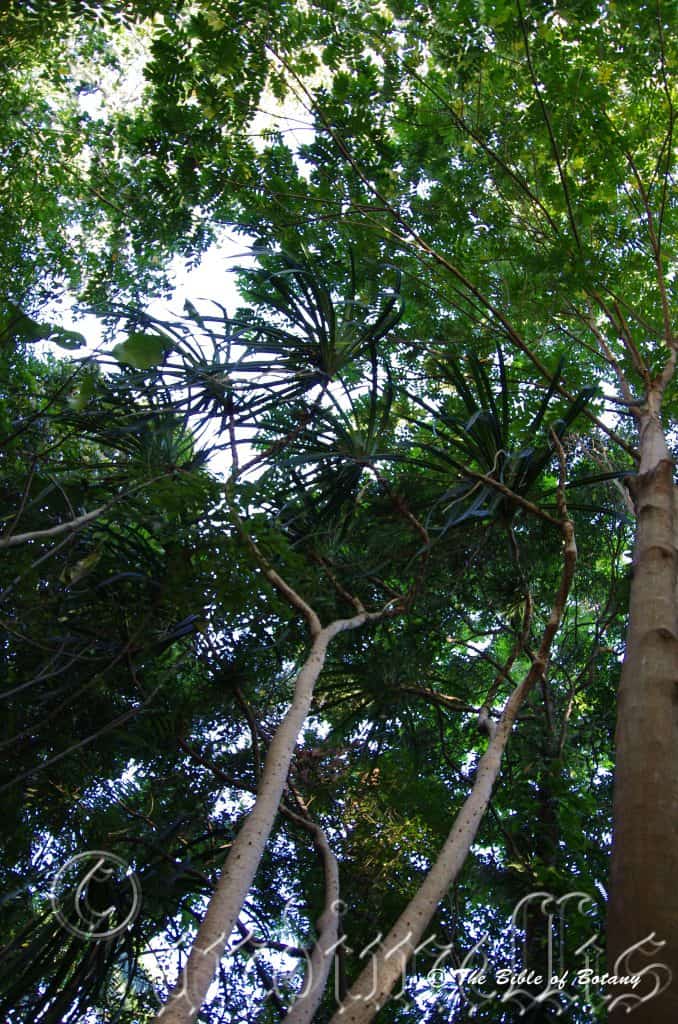
Mount Cootha Botanical Gardens Qld.
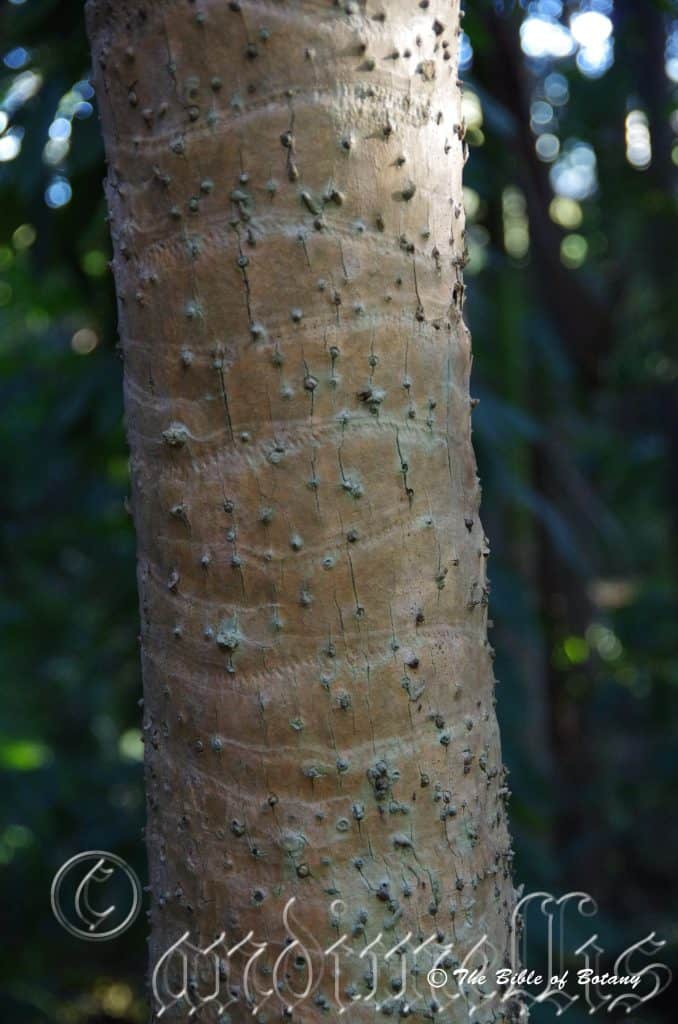
Mount Cootha Botanical Gardens Qld.
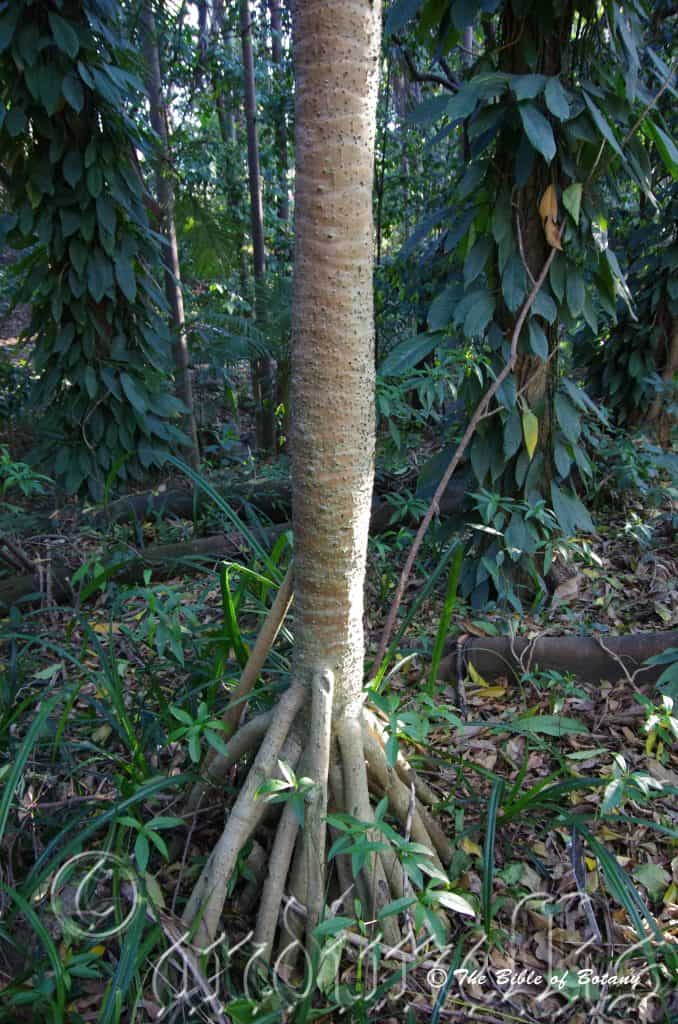
Mount Cootha Botanical Gardens Qld.
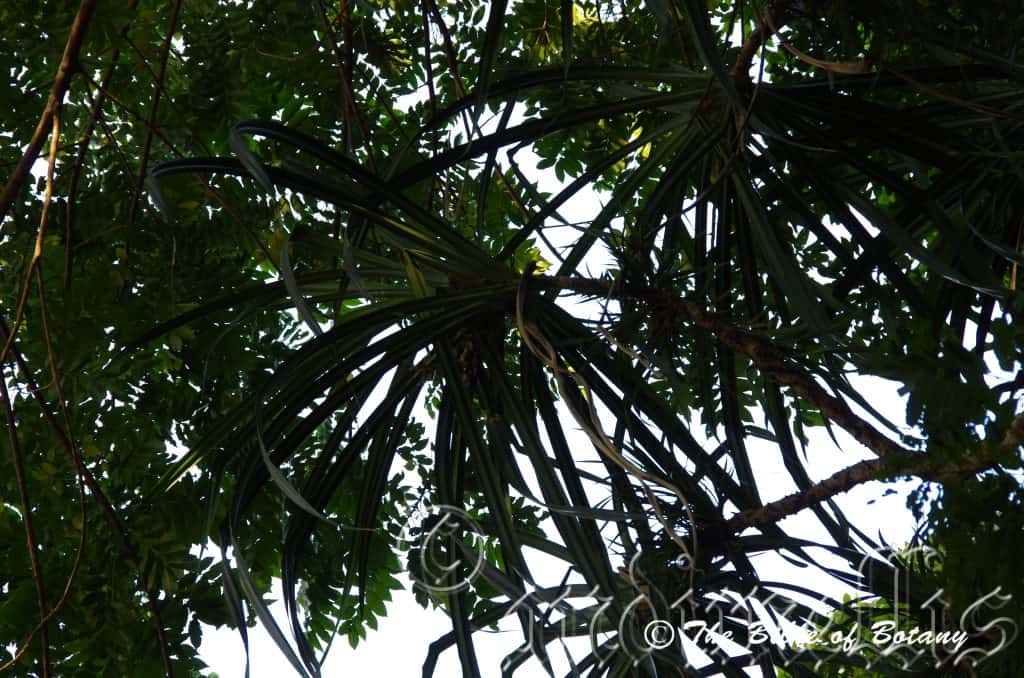
Mount Cootha Botanical Gardens Qld.
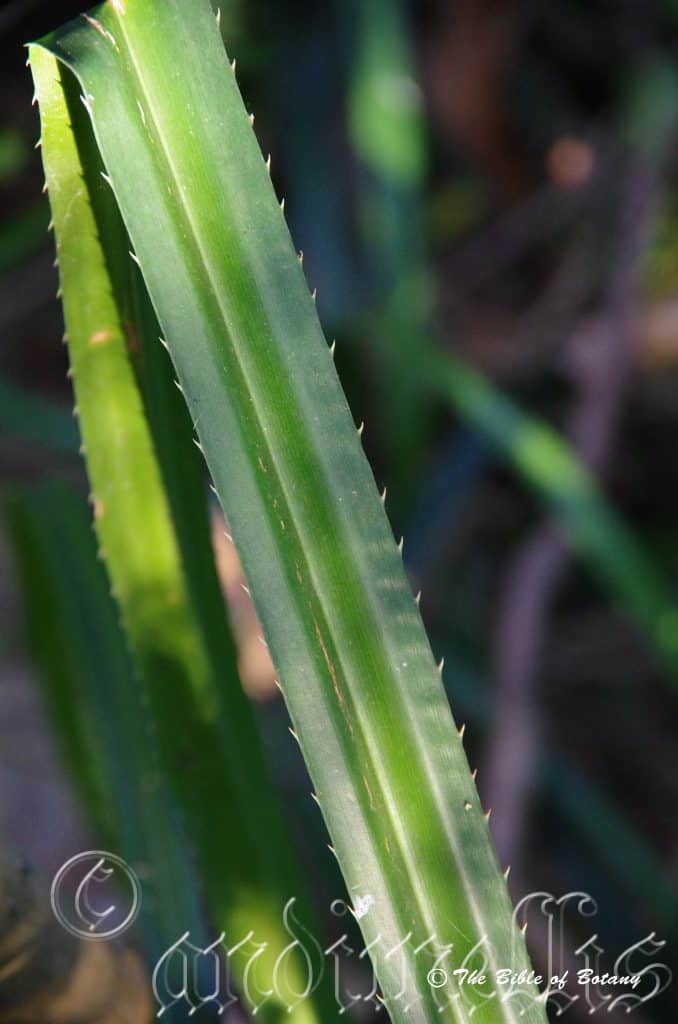
Mount Cootha Botanical Gardens Qld.
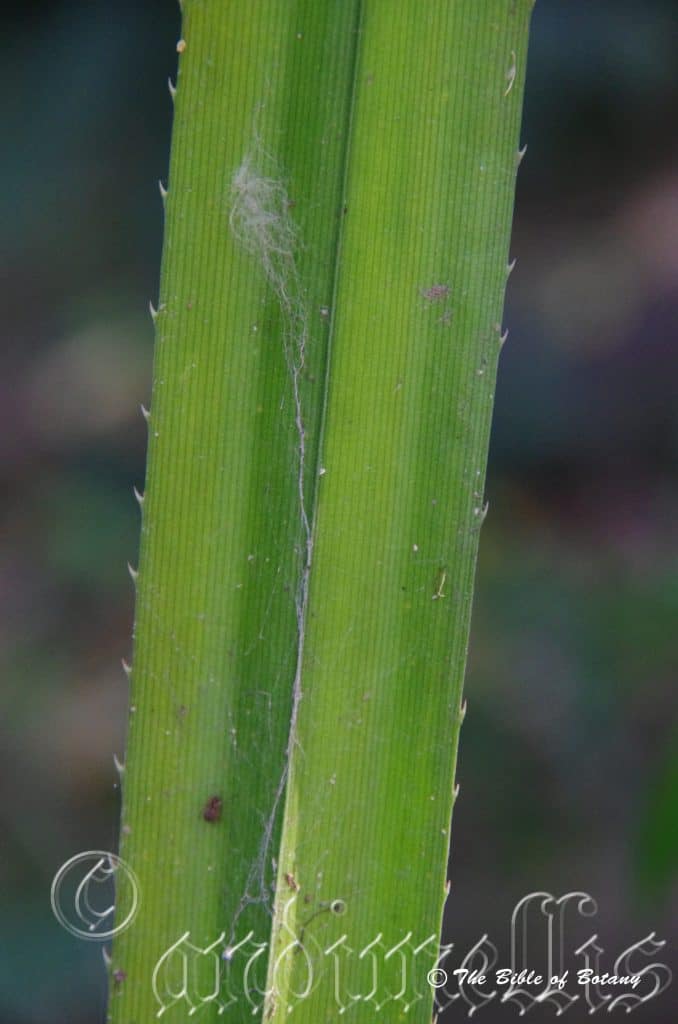
Mount Cootha Botanical Gardens Qld.
Pandanus monticola
Classification:
Order: Pandanales
Family: Pandanalaceae
Genus: From Pandan, which is Latinized from the Malayan vernacular name for to have sword like spiralling leaves. It refers to leaves, which take the form of a sword and spiral from around the trunk.
Specie: From Montana which is Latinized from the Spanish word for a mountain and Kola, which is Ancient Greek or Cola which is Latin for to dwell or reside at. It refers to plants, which prefer environments that are high in the mountains.
Sub specie:
Common Name: Urchin Fruited Pandan or Scrub Breadfruit or Screw Pine or Screw Palm.
Distribution:
Pandanus monticola is found in 2 isolated populations. The western population is found on Bathurst Island off the coast of Darwin. The east coast population is found on Cape York Peninsula in Queensland south from the Bloomfield River to Rockingham Bay and Hinchinbrook Island.
https://avh.ala.org.au/occurrences/search?taxa=Pandanus+monticola#tab_mapView
Habitat Aspect Climate:
Pandanus monticola prefers dappled shade to fairly dense shade. It grows in or adjacent to lowland rain forests, adjacent to fresh water swamps, behind mangroves, along brackish estuaries or moist Eucalyptus forests. The altitude ranges from 25 meters ASL to 840 meters ASL.
The temperatures range from 12 degrees in July to 36 degrees in January.
The rainfall ranges from lows of 1800mm to 3300mm average per annum.
Soil requirements:
Pandanus monticola prefers fine sands, sandy loams to light clays. The soils are usually derived from accumulated beach sands or accumulated coral sands. The soils pH ranges from 5.5pH to 7.5pH. It does not tolerate of waterlogged soils. Non saline soils to extremely saline soils are tolerated.
Height & Spread:
Wild Plants: 10m to 15m by 8m to 12m.
Characteristics:
Pandanus monticola grows as an erect small open canopy tree with a Spread equal to its height. The grey trunk is moderately covered in spiny conical nodules and/or lepidote lumps and/or muricate lumps. The thick, terete branches are mid-grey and glabrous. Young shoots a green. Prop roots only form on the lower 80mm to 250mm of the main trunk or absent. The branchlets and stems are faintly marked with horizontal circular scars from the discarded leaf bases.
The linear leaves of Pandanus monticola are arching crowded spirals near the apex of the branches. They measure 800mm to 1500mm in length by 20mm to 40mm in width. The bases are strongly clasping while the apexes are acute. The discolourous laminas are mid grass-green to deep grass-green and glabrous on the upper laminas while the lower laminas a slightly paler to moderately paler. The laminas a moderately to strongly curve upwards in a “Vee” from the mid vein for half the width of the leaf then flatten out. The midrib on the underside is void to very sparsely covered in retrorse prickles while the upper surface towards the apex is void to very sparsely covered in a couple of minute prickles on the major veins. The leaf margins are sparsely covered in sharp, off white, fawn or pale grey retrorse prickles. The mid vein is moderately prominent on the lower lamina and is clearly visible on the upper lamina. The section closest to the base is void of prickles. There are 46 to 48 fine longitudinal veins with the reticulate veins forming a ladder like network.
The inflorescences of Pandanus monticola are born on dioecious spikes from the terminals. The Inflorescences are enclosed in large cam or white bracts.
The male spikes measure 400mm to 650mm in length with long, broad lanceolate, white bracts. The bases are clasping while the apexes extend into a long stiff soft spine to around the eighths of its length. The 4 celled anthers measure 6mm to 8mm in length tapering to a fine point at the apex by 1mm in diameter near the base.
The female spikes measure 80mm to 120mm in length with long, broad lanceolate, white bracts. The bases are clasping while the apexes are extent into a long stiff soft spine to around the eighths of its length. Pandanus monticola flowers appear from July to October.
The fruits are multiple globular cones consisting of over 300 discrete segments each of which is produced from a separate female flower. The individual fruits are pentagonal to hexagonal in cross section at the midway section with the elongated obtuse apex ending in the persistent spine like style. Ripe fruits turn a deep orange at the apex and orange yellow at the base. The fruits measure 100mm to 125mm in length by 78mm to 82mm in diameter. Each segment measures 28mm to 32mm in length overall. The green fruits turn orange when ripe while the persistent style becomes spine like.
The small ovoid seeds are located at the base of the fruits. The fruits ripen from November to March.
Wildlife:
Pandanus monticola’s do not appear to have any predators though the Sulphur Crested Cockatoo (Cacatua galerita) relishes the fruits and I would suspect that the other palm Cockatoos would also eat the fruits. The Sulphur Crested Cockatoos are rather messy eaters strewing more of the fruit on the rainforest floor than is actually eaten by the birds. Here again I would suspect that native rats including the Giant White Tailed Rat (Uromys caudimaculatus) would eat a certain number of the fruits and distribute the seeds even further from the pant plants.
Cultivation:
Pandanus monticola is a magnificent small tree that deserves a place in every tropical, monsoonal or semi-arid native scene. It is ideal in almost every setting near ponds, at the edge of a rain forest in court yards, around swimming pools or larger rockeries where its size is balanced. In cultivation it grows from 8 meters to 12 meters in height by 8 meters to 12 meters in diameter, when grown in an open shady situation.
They grow exceptionally well on heavier soils When deep leaf litter keeps the soil cool and moisture and at an even level. If these requirements are met they can cope with temperatures as low as 6 degrees and maybe lower. It is moderately drought resistant in their rainfall zones.
It often reaches its full potential in just 6 to 8 years and flower from the fifth year from seed.
Be imaginative when planting in mass. Use the plants in different configurations and use curves for an informal look. I can imagine long formal rows of plants in front of low set or two story buildings having a great effect on the surrounding landscape.
It is best used adjacent to small areas of bush but kept back 4 to 5 meters from paths so their prickles do not catch clothing or hair. It can be planted in small groups of 2 or 3 scatted as you would find them in nature to give a great tropical bush scene. It is best used in the mid ground surrounded by shorter plants with fine foliages with white or d flowers so they will dominate at the center of the bed especially when it is in flower.
Two or the planted in a central bed or round about mixed with rocks or boulders make a very strong statement. He they can be under planted with Lomandra species or ground covers or annuals to display completely different personalities.
Ensure that the whole plant or at least most of it is on display from most sections of the garden as the fruits are a real bonus.
Propagation:
Seeds: The seeds of Pandanus monticolacan be collected as soon as they fall to the ground. Each fruit contain lots of seeds. There is no way of telling which seeds are viable to those which are sterile. Soak the seeds in fresh water for 24 to 48 hours before sowing. Sow a seed into a 75mm native tube using a good organic mix and cover with 10mm to 20mm of the mix. Each seed may contain up to 3 individual plants. Place the tubes in a sunny position and keep moist during the summer and allow to dry out between watering during the cooler months as cold weather and moisture will cause the seeds to riot off. For this reason a hot house is best for germination. Seeds may take anything up to 12 months to germinate, so your patience is required.
Once the seedlings reach 150mm to 200mm in height they can be repotted into 250mm pots or planted into their permanent position.
Fertilize using seaweed, fish emulsion or organic chicken pellets soaked in water on an alternate basis. Fertilize every two months until the plants are established then twice annually in early September and March to maintain better health, vitality and flowering.
.
Further Comments from Readers:
Hi reader, it seems you use The Bible of Botany a lot. That’s great as we have great pleasure in bringing it to you! It’s a little awkward for us to ask, but our first aim is to purchase land approximately 1,600 hectares to link several parcels of N.P. into one at The Pinnacles NSW Australia, but we need your help. We’re not salespeople. We’re amateur botanists who have dedicated over 30 years to saving the environment in a practical way. We depend on donations to reach our goal. If you donate just $5, the price of your coffee this Sunday, We can help to keep the planet alive in a real way and continue to bring you regular updates and features on Australian plants all in one Botanical Bible. Any support is greatly appreciated. Thank you.
In the spirit of reconciliation we acknowledge the Bundjalung, Gumbaynggirr and Yaegl and all aboriginal nations throughout Australia and their connections to land, sea and community. We pay our respect to their Elders past, present and future for the pleasures we have gained.
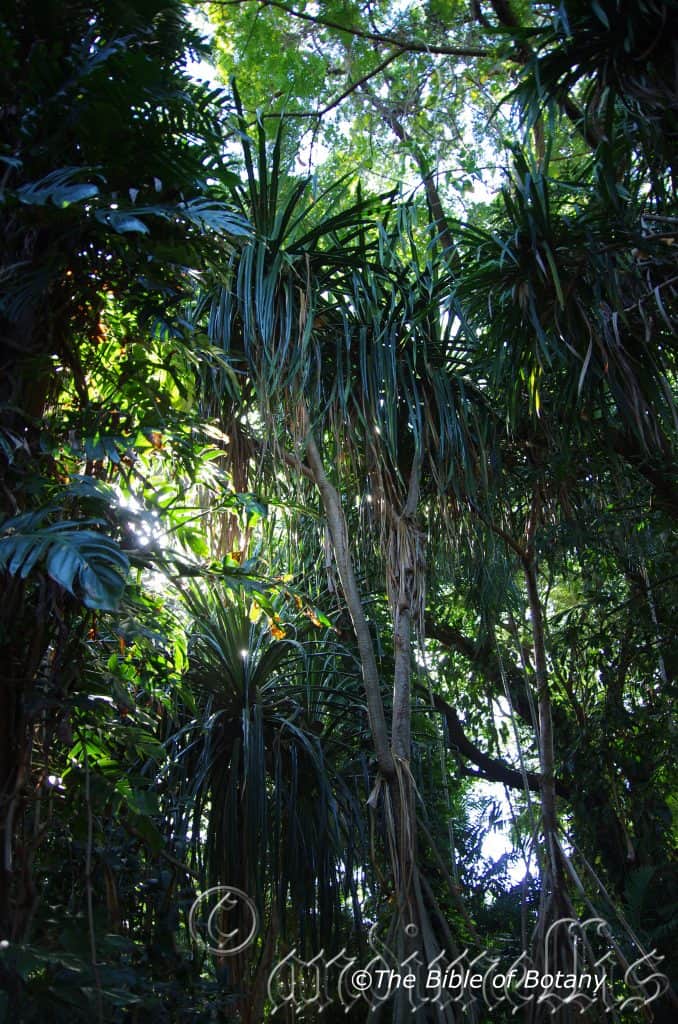
Anderson Gardens Townsville Qld.
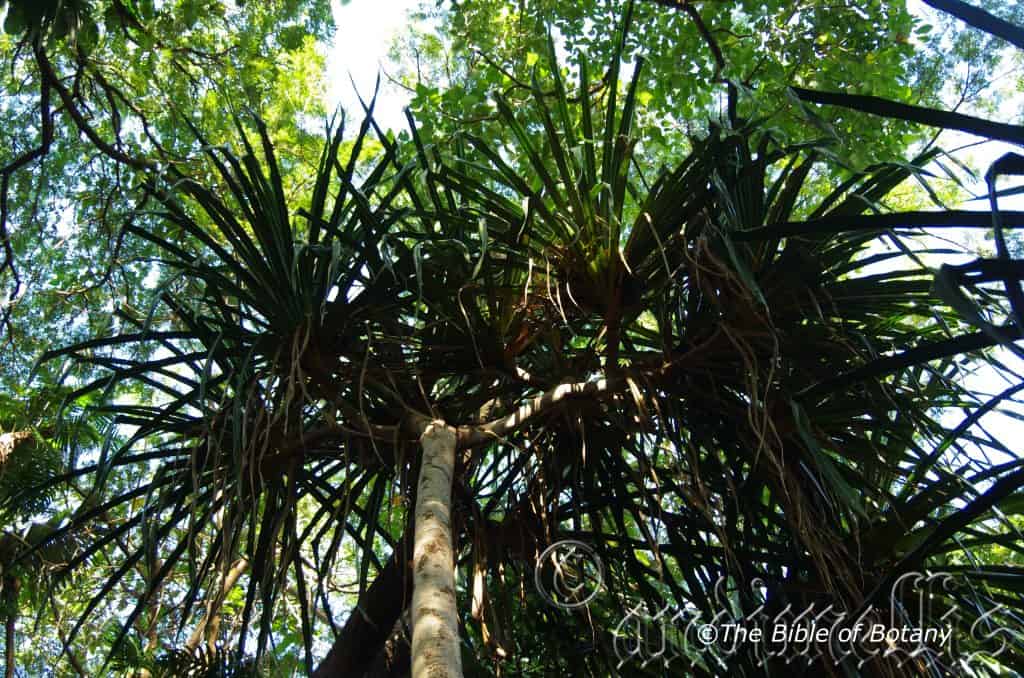
Anderson Gardens Townsville Qld.
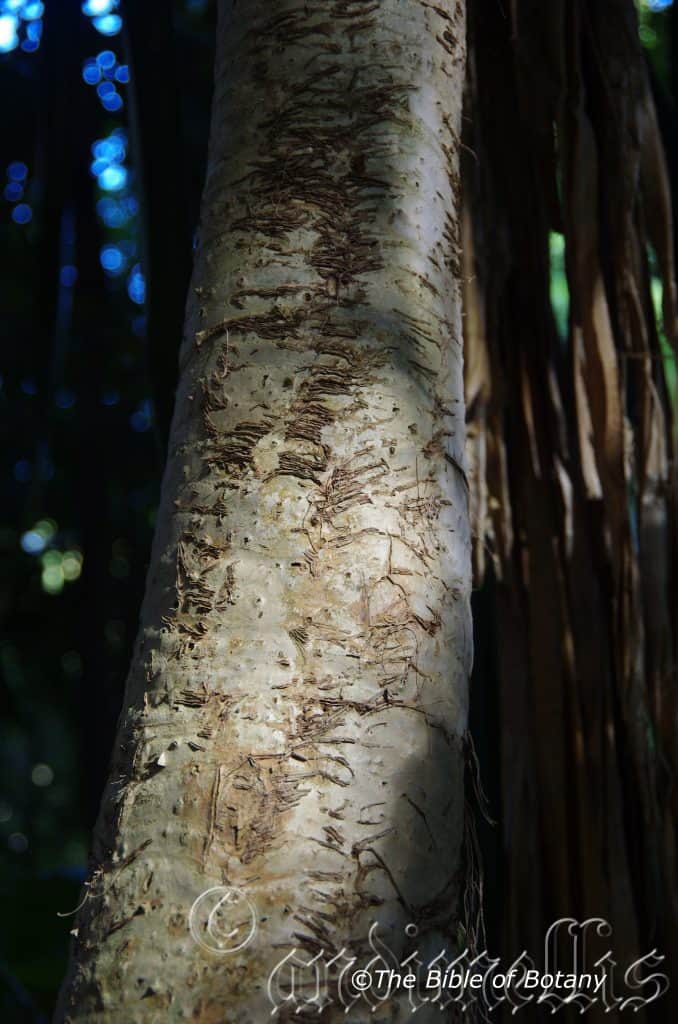
Anderson Gardens Townsville Qld.
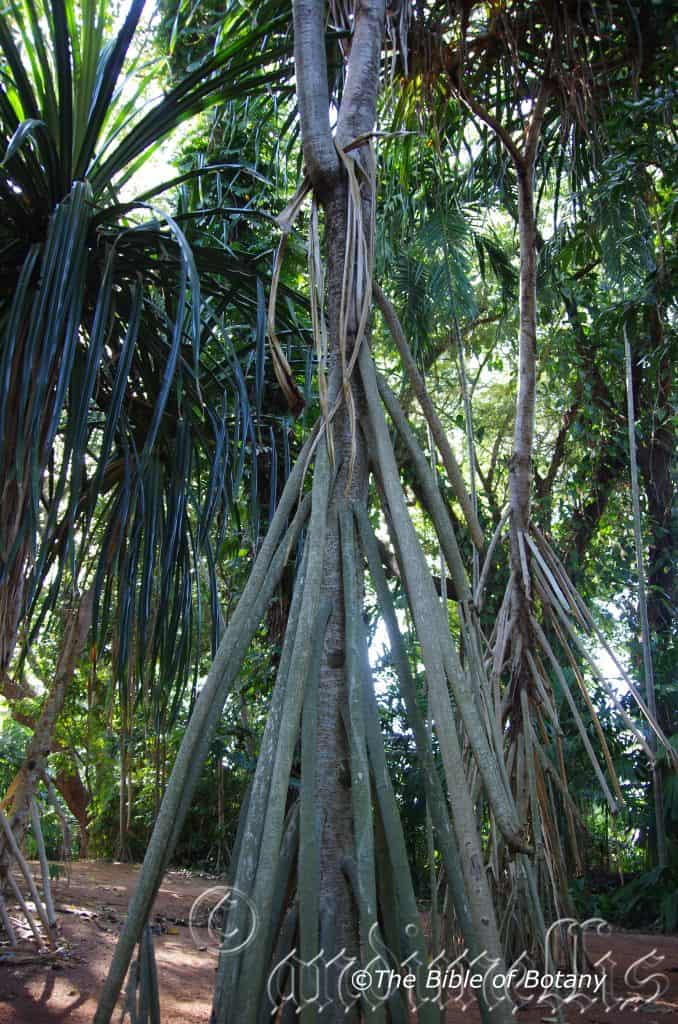
Anderson Gardens Townsville Qld.
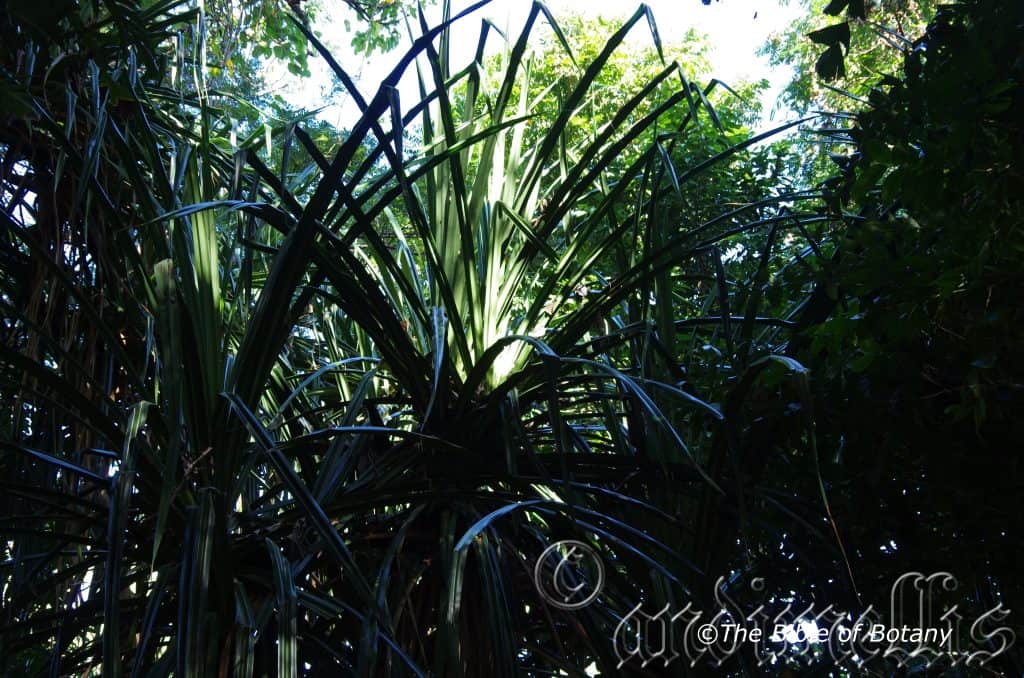
Anderson Gardens Townsville Qld.
Pandanus oblatus
Classification:
Order: Pandanales
Family: Pandanalaceae
Genus: From Pandan, which is Latinized from the Malayan vernacular name for to have sword like spiralling leaves. It refers to leaves, which take the form of a sword and spiral from around the trunk.
Specie: From Ob, which is Latin for in front of or before and Lātus, which is Latin for broad or wide. It usually refers to fruits, which have a broader circumference compared compared to length.
Sub specie:
Common Name: Urchin Fruited Pandan or Scrub Breadfruit or Screw Pine or Screw Palm.
Distribution:
Pandanus oblatus is found in 3 disjunct populations on Cape York peninsula. The northern population is found at the tip of Cape York Peninsula, while the middle population is found on the Iron Range and the southern population is in gullies on the Chester River near Cooktown in far north eastern Queensland.
https://avh.ala.org.au/occurrences/search?taxa=Pandanus+oblatus#tab_mapView
Habitat Aspect Climate:
Pandanus oblatus prefers dappled shade to fairly dense shade. It grows in or adjacent to lowland rainforests, adjacent to littoral rainforests along gullies, seepage lines and soaks. The altitude ranges from 5 meters ASL to 300 meters ASL.
The temperatures range from 8 degrees in July to 38 degrees in January.
The rainfall ranges from lows of 2200mm to 3200mm average per annum.
Soil requirements:
Pandanus oblatus prefers fine sands, sandy loams to light clays and skeletal rocky headlands. The soils are usually derived from decomposed granite accumulated beach sands. The soils pH ranges from 5.5pH to 8pH. It does not tolerate of waterlogged soils yet prefers to grow When moisture is assured. Non saline soils to very saline soils are tolerated as are salt laden winds.
Height & Spread:
Wild Plants: 10m to 14m by 10m to 14m.
Characteristics:
Pandanus oblatus grows as an erect small open canopy tree with a Spread equal to its height. The thick, grey trunk is sparse covered in spiny, conical nodules. The thick, terete branches are mid-grey and glabrous. Young shoots a green. Prop roots only form on the lower 1 meter to 3.2 meters of the main trunk. The branchlets and stems are faintly marked with horizontal circular scars from the discarded leaf bases.
The linear crowded leaves ofPandanus oblatus are arching near the apex of the branches and measure 1000mm to 1650mm in length by 60mm to 95mm in width. The bases are strongly clasping while the apexes sword-shaped and gradually narrow to a stout subulate apex. The concolourous laminas are mid grass-green to deep grass-green and glabrous. The laminas are ‘m shaped’ in cross-section. The midrib on the underside is sparsely covered in antrorse prickles. The leaf margins are sparsely covered in sharp, antrorse prickles. The mid vein is moderately prominent on the lower lamina and is clearly visible on the upper lamina.
The flowers are a terminal spike.
The fruits are globular aggregates consisting of over 92 segments each of which is produced from a separate female flower. The individual fruits are obovoid and measure 150mm to 190mm in length by 110mm to 130mm in diameter. Each segment measures 47mm to 51mm in length by 29mm to 35mm in width. The green fruits turn bright yellow when ripe while the persistent style becomes spine like.
The seeds are located at the base of the fruits and measure 12mm to 16mm in length by 3mm to 4mm in width.
Wildlife:
Pandanus oblatus do not appear to have any predators though the Sulphur Crested Cockatoo (Cacatua galerita) relishes the fruits and I would suspect that the other palm Cockatoos would also eat the fruits. The Sulphur Crested Cockatoos are rather messy eaters strewing more of the fruit on the rainforest floor than is actually eaten by the birds. Here again I would suspect that native rats including the Giant White Tailed Rat (Uromys caudimaculatus) would eat a certain number of the fruits and distribute the seeds even further from the pant plants.
Cultivation:
Pandanus oblatus is a magnificent small tree that deserves a place in every tropical, monsoonal or semi-arid native scene. It is ideal in almost every setting near ponds, at the edge of a rain forest in court yards, around swimming pools or larger rockeries When their size is balanced. In cultivation it grows from 8 meters to 12 meters in height by 8 meters to 12 meters in diameter When grown in an open shady situation.
They grow exceptionally well on heavier soils When deep leaf litter keeps the soil cool and moisture and at an even level. If these requirements are met they can cope with temperatures as low as 6 degrees and maybe lower. It is moderately drought resistant in their rainfall zones.
It often reaches its full potential in just 6 to 8 years and flower from the fifth year from seed.
Be imaginative When planting in mass. Use the plants in different configurations and use curves for an informal look. I can imagine long formal rows of plants in front of low set or two story buildings having a great effect on the surrounding landscape.
It is best used adjacent to small areas of bush but kept back 4 to 5 meters from paths so their prickles do not catch clothing or hair. It can be planted in small groups of 2 or 3 scatted as you would find them in nature to give a great tropical bush scene. It is best used in the mid ground surrounded by shorter plants with fine foliages with white or d flowers so they will dominate at the center of the bed especially When it is in flower.
Two or the planted in a central bed or round about mixed with rocks or boulders make a very strong statement. He they can be under planted with Lomandra species or ground covers or annuals to display completely different personalities.
Ensure that the whole plant or at least most of it is on display from most sections of the garden as the fruits are a real bonus.
Propagation:
Seeds: The seeds of Pandanus oblatus can be collected as soon as they fall to the ground. Each fruit contain lots of seeds. There is no way of telling which seeds are viable to those which are sterile. Soak the seeds in fresh water for 24 to 48 hours before sowing. Sow a seed into a 75mm native tube using a good organic mix and cover with 10mm to 20mm of the mix. Each seed may contain up to 3 individual plants. Place the tubes in a sunny position and keep moist during the summer and allow to dry out between watering during the cooler months as cold weather and moisture will cause the seeds to riot off. For this reason a hot house is best for germination. Seeds may take anything up to 12 months to germinate, so your patience is required.
Once the seedlings reach 150mm to 200mm in height they can be repotted into 250mm pots or planted into their permanent position.
Fertilize using seaweed, fish emulsion or organic chicken pellets soaked in water on an alternate basis. Fertilize every two months until the plants are established then twice annually in early September and March to maintain better health, vitality and flowering.
Further Comments from Readers:
Hi reader, it seems you use The Bible of Botany a lot. That’s great as we have great pleasure in bringing it to you! It’s a little awkward for us to ask, but our first aim is to purchase land approximately 1,600 hectares to link several parcels of N.P. into one at The Pinnacles NSW Australia, but we need your help. We’re not salespeople. We’re amateur botanists who have dedicated over 30 years to saving the environment in a practical way. We depend on donations to reach our goal. If you donate just $5, the price of your coffee this Sunday, We can help to keep the planet alive in a real way and continue to bring you regular updates and features on Australian plants all in one Botanical Bible. Any support is greatly appreciated. Thank you.
Pandanus solmslaubachii
Classification:
Order: Pandanales
Family: Pandanalaceae
Genus: From Pandan, which is Latinized from the Malayan vernacular name for to have sword like spiralling leaves. It refers to leaves, which take the form of a sword and spiral from around the trunk.
Specie: Is named in honour of Hermann Maximilian Carl Ludwig Friedrich Graf Zu Solmslaubach; 1842-1915, who was German botanist.
Sub specie:
Common Name: Wallum Screw Palm.
Distribution:
Pandanus solmslaubachii is found south from the Iron Range to Hinchinbrook Island on the north eastern Cape York Peninsula in Queensland.
https://avh.ala.org.au/occurrences/search?taxa=Pandanus+solmslaubachii#tab_mapView
Habitat Aspect Climate:
Pandanus solmslaubachii prefers full sun to light dappled shade. It grows in or adjacent to lowland rainforests or littoral rainforests adjacent to fresh water swamps, behind mangroves, along brackish estuaries or moist Eucalyptus forests. It is also found adjacent to coastal wallums and swamps. The altitude ranges from 1 meters ASL to 500 meters ASL.
The temperatures range from minus 10 degrees in July to 36 degrees in January.
The rainfall ranges from lows of 1500mm to 3200mm average per annum.
Soil requirements:
Pandanus solmslaubachii prefer soils that are sandy loams to light clays with a high proportion of leaf litter. The soils are usually derived from decomposed sandstones or granites. The soils pH ranges from 5.5pH to 7.5pH. It does not tolerate of waterlogged soils. Non saline soils to extremely saline soils are tolerated.
Height & Spread:
Wild Plants: 6m to 20m by 6m to 15m but usually to around 10 or 12 meters in height.
Characteristics:
Pandanus solmslaubachii grows as an erect small densely canopied tree with many branches and are Spread equal to its height. The grey trunk is covered in spiny conical nodules or farinaceous warts. The trunks are often covered in adventitious roots. The branches are thick, round grey and glabrous. Young shoots are deep blue-green. The prop roots vary from absent to many only form on the lower 80mm to 150mm of the main trunk.
The linear leaves of Pandanus solmslaubachii are arching crowded near the apex of the branches. They measure 1600mm to 2000mm in length by 60mm to 80mm in width. The leaves on juvenile trees are longer and broader. The bases are strongly clasping while the apexes are acuminate or subulate. The concolourous laminas are mid blue-green and glabrous. The leaf margins are entire and are mainly covered in short, sharp, fine antrorse prickles with the occasional retrorse prickle. The leaf laminas curve upwards in a broad “U” from the mid vein to the margins. The mid vein is strongly prominent on the lower lamina and is visible on the upper lamina. It is covered in a row of short, sharp, fine antrorse and retrorse prickles. The section closest to the base is void of prickles.
The inflorescences of Pandanus solmslaubachii are dioeciously born singularly on spike from the terminals.
The male spikes measure 800mm to 1000mm in length with long, broad lanceolate, white bracts. The bases are clasping while the apexes are extent into a long stiff soft spine to around half of its length. The 4 celled anthers measure 6mm to 8mm in length tapering to a fine point at the apex by 1mm in diameter near the base.
The female spikes measure 80mm to 120mm in length with long, broad lanceolate, white bracts. The bases are clasping while the apexes are extent into a long stiff soft spine to around half of its length. The female flowers have 110 to 127 phalanx segments. The individual flowers are sessile and are hexagonal in cross section. The style measures 6mm to 10mm in length. Pandanus solmslaubachii flowers flower throughout the year.
The fruits are cylindrical cones with 19 to 127 individual fruits fused together in a cone and measure 270mm to 330mm in length by 150mm to 250mm in diameter. The central stem swells When the fruits are ripe which pops the individual segments or phalanges off. The individual fruits have a pentagonal to hexagonal in cross section at the midway section with the elongated obtuse apex ending in the persistent spine like style. Each of the segments measure 55mm to 60mm by 15mm to 50mm in diameter. The ripe fruits turn an orange When ripe.
The conical seeds measure 10mm to 22mm in length by 15mm to 20mm in diameter.
Wildlife:
Pandanus solmslaubachii’s do not appear to have any predators though the freshly harvested fruits that are in the process of discarding the seed segments we collected and eaten by Australian aborigines. The fragrant flesh has a sweet peppery taste a little reminiscent of Monsterio deliciosus.
Cultivation:
Pandanus solmslaubachii is a magnificent small tree that deserves a place in every tropical and monsoonal native garden. It is ideal in almost every setting near ponds, at the edge of a rain forest in court yards, around swimming pools or larger rockeries when their size is balanced. In cultivation it grows from 6 meters to 8 meters in height by 6 meters to 8 meters in diameter when grown in the open.
It grows exceptionally well on lighter soils When deep leaf litter keeps the soil cool and moisture at an even level. If these requirements are met they can cope with temperatures as low as 6 degrees and maybe lower. It is moderately drought resistant in their rainfall zones.
It often reaches its full potential in just 7 to 8 years and flower from the fifth year from seed.
Be imaginative when planting in mass. Use the plants in different configurations and use curves.
It is best used adjacent to small areas of bush but kept back 4 to 5 meters from paths so their spines do not catch clothing or hair. It is great in small to large rockeries as a fill in plant. They can be planted in small groups of 2 or 3 scatted as you would find them in nature to give a great tropical bush scene. It is best used in the mid ground surrounded by shorter plants with fine foliages with white or red flowers so they will dominate at the center of the bed especially when it is in flower.
Two or the planted in a central bed or round about mixed with rocks or boulders make a very strong statement. It can be under planted with Lomandra specie or ground covers or annuals to display completely different personalities.
Ensure that the whole plant or at least most of it is on display from most sections of the garden as the fruits are a real bonus.
Propagation:
Seeds: The seeds of Pandanus solmslaubachii can be collected as soon as they fall to the ground. Each fruit contain lots of seeds. There is no way of telling which seeds are viable to those which are sterile. Soak the seeds in fresh water for 24 to 48 hours before sowing. Sow a seed into a 75mm native tube using a good organic mix and cover with 10mm to 20mm of the mix. Each seed may contain up to 3 individual plants. Place the tubes in a sunny position and keep moist during the summer and allow to dry out between watering during the cooler months as cold weather and moisture will cause the seeds to riot off. For this reason a hot house is best for germination. Seeds may take anything up to 12 months to germinate, so your patience is required.
Once the seedlings reach 150mm to 200mm in height they can be repotted into 250mm pots or planted into their permanent position.
Fertilize using seaweed, fish emulsion or organic chicken pellets soaked in water on an alternate basis. Fertilize every two months until the plants are established then twice annually in early September and March to maintain better health, vitality and flowering.
Further Comments from Readers:
Hi reader, it seems you use The Bible of Botany a lot. That’s great as we have great pleasure in bringing it to you! It’s a little awkward for us to ask, but our first aim is to purchase land approximately 1,600 hectares to link several parcels of N.P. into one at The Pinnacles NSW Australia, but we need your help. We’re not salespeople. We’re amateur botanists who have dedicated over 30 years to saving the environment in a practical way. We depend on donations to reach our goal. If you donate just $5, the price of your coffee this Sunday, We can help to keep the planet alive in a real way and continue to bring you regular updates and features on Australian plants all in one Botanical Bible. Any support is greatly appreciated. Thank you.
In the spirit of reconciliation we acknowledge the Bundjalung, Gumbaynggirr and Yaegl and all aboriginal nations throughout Australia and their connections to land, sea and community. We pay our respect to their Elders past, present and future for the pleasures we have gained.
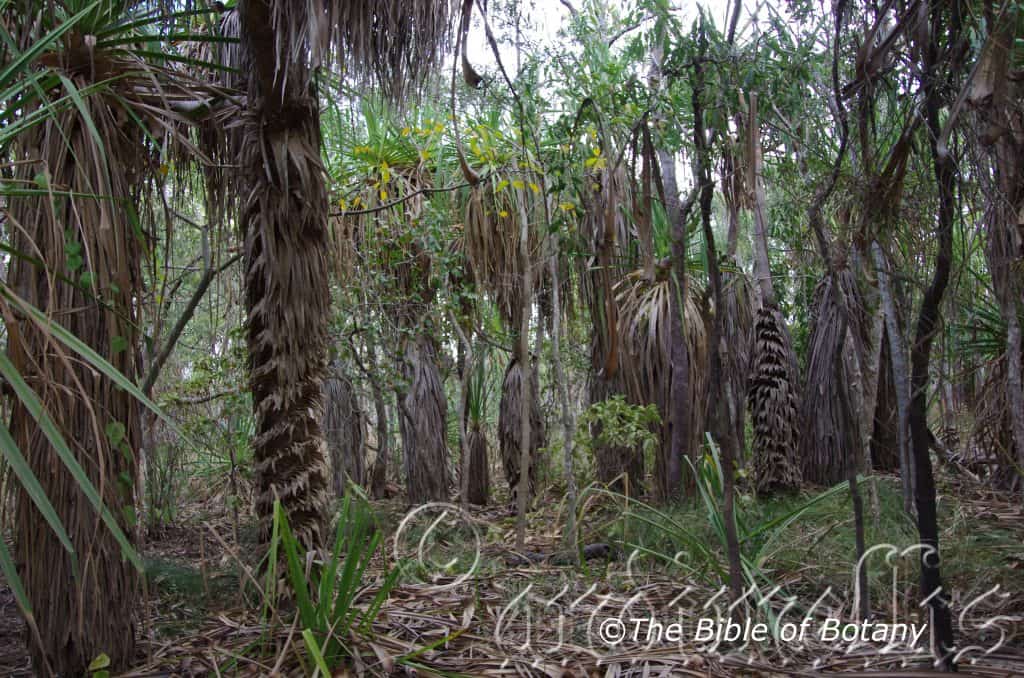
South of Rollingston Qld.
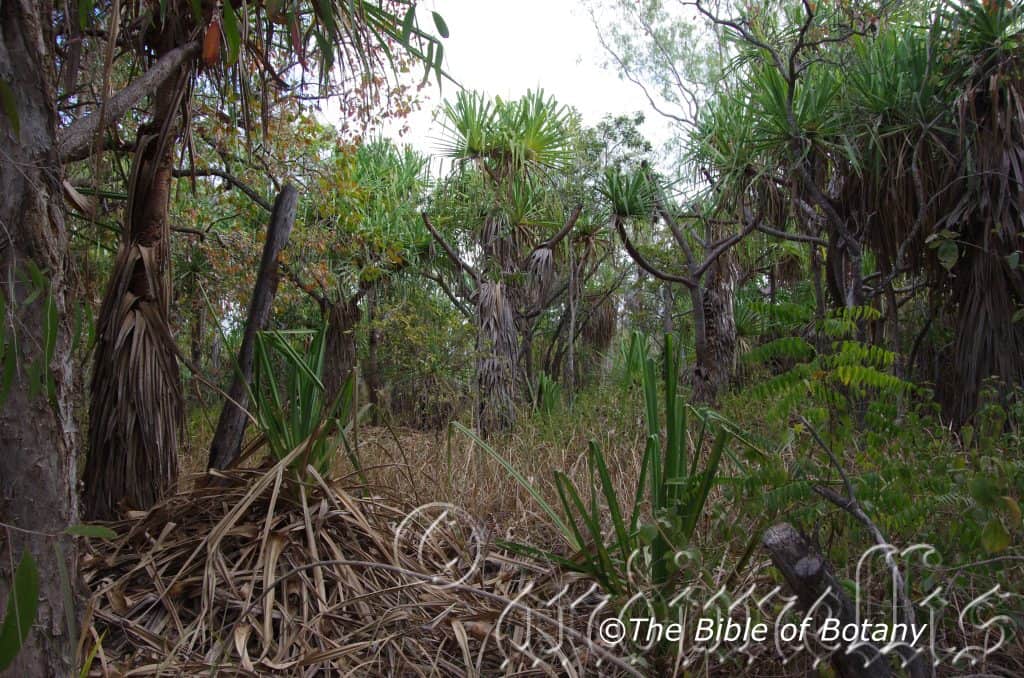
South of Rollingston Qld.
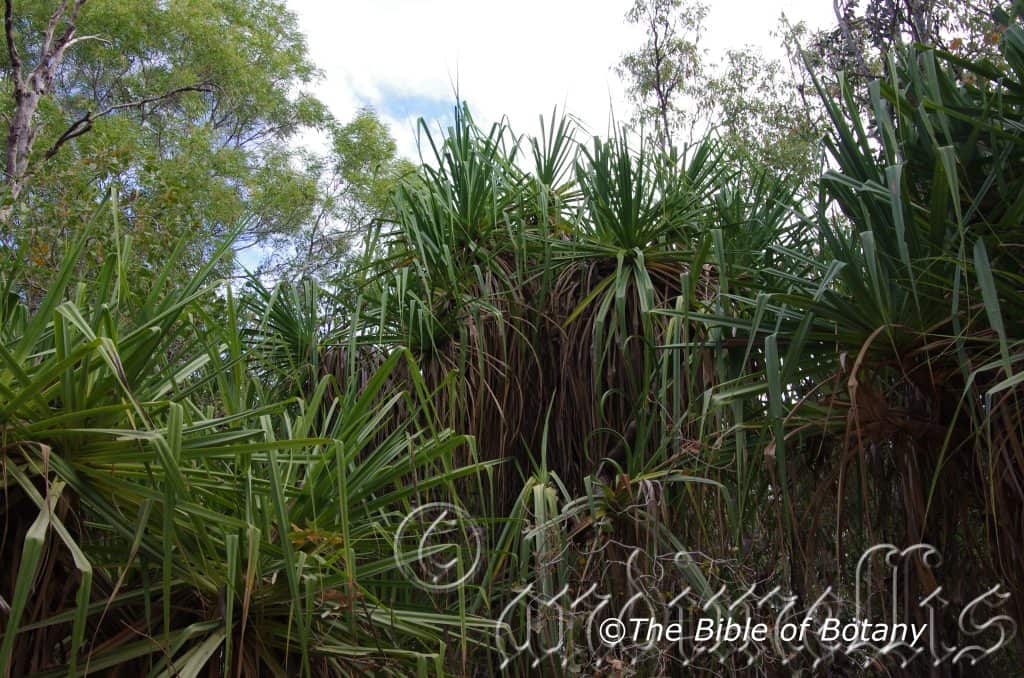
South of Rollingston Qld.
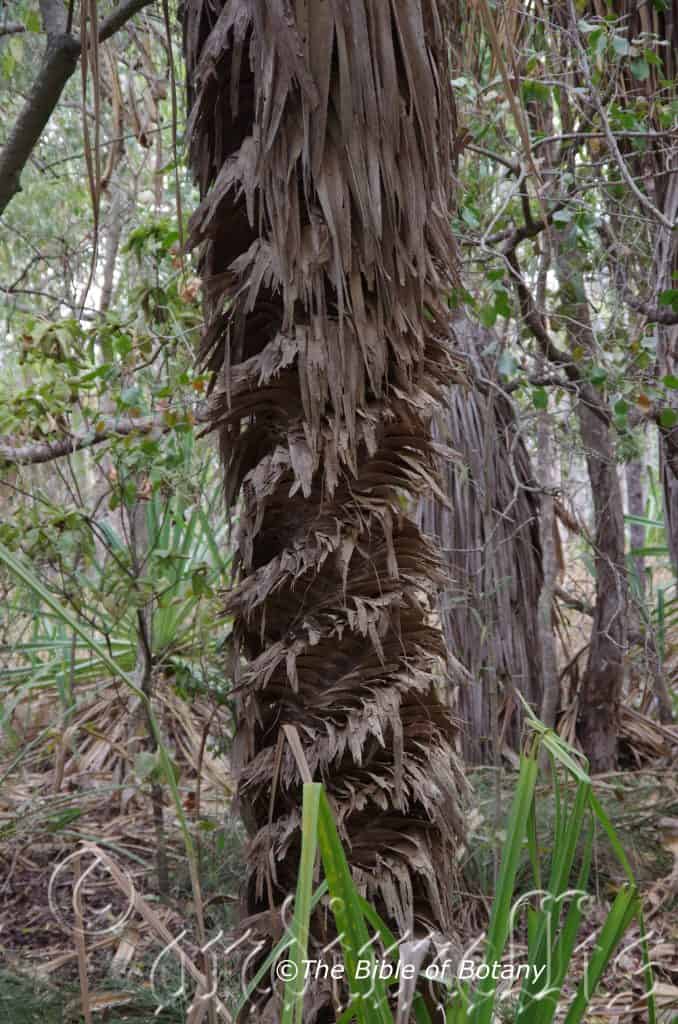
South of Rollingston Qld.
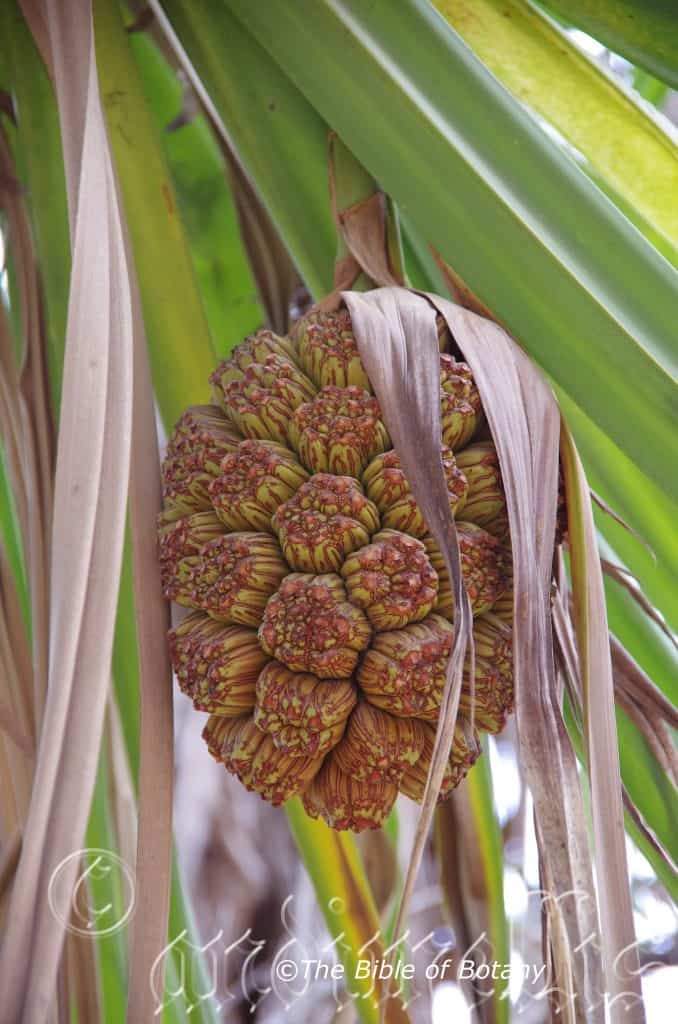
South of Rollingston Qld.
Pandanus spiralis
Classification:
Order: Pandanales
Family: Pandanalaceae
Genus: From Pandan, which is Latinized from the Malayan vernacular name for to have sword like spiralling leaves. It refers to leaves, which take the form of a sword and spiral from around the trunk.
Specie: From Spirale, which is Latin for a coil or to spiral. It refers to the leaves which spiral around the trunk and make a definite impression.
Sub specie:
Common Name: Screw Palm or Spiral Palm.
Distribution:
Pandanus spiralis is found north of a line from Broome in north west Western Australia to Bowen in far north east Queensland.
https://avh.ala.org.au/occurrences/search?taxa=Pandanus+spiralis#tab_mapView
Habitat Aspect Climate:
Pandanus spiralis prefers full sun to light dappled shade. It grows in open forest and open woodland Eucalypt communities in lowland areas as well as by freshwater streams and floodplains and swamps in lowland habitats. The altitude ranges from 1 meter ASL to 420 meters ASL.
The temperatures range from 3 degrees in July to 45 degrees in January.
The rainfall ranges from lows of 500mm to 3200mm average per annum.
Soil requirements:
Pandanus spiralis prefer soils that are sandy loams to light clays with a high proportion of leaf litter. The soils are usually derived from decomposed sandstones or granites or accumulated beach sands. The soils pH ranges from 5pH to 8pH. It does not tolerate of waterlogged soils. Non saline soils to extremely saline soils are tolerated as are salt laden winds.
Height & Spread:
Wild Plants: 4m to 15m by 4m to 12m.
Characteristics:
Pandanus spiralis grows as an erect medium densely canopied tree with many branches on the apical third and are spread equal to its height. The rough, grey trunk is characterised by a distinctive spiral pattern of leaf scars that winds up the trunk of the tree. It is more noticeable and distinctive on older trees.
The linear leaves of Pandanus spiralis are arching and spiral around the trunk and major branches near their apex. The very long long triangular somewhat falcate leaves measure 1500mm to 2000mm in length by 40mm to 75mm in width. The bases are strongly clasping while the apexes have taper to an acute point. The concolourous laminas are mid blue-green and glabrous. The leaf margins are moderately covered in short, sharp, fine antrorse prickles. The leaf laminas curve upwards in a broad “U” from the mid vein to the margins. The mid vein is strongly prominent on the lower lamina and is visible on the upper lamina. It is sparsely covered in a row of short, sharp, fine antrorse and retrorse prickles. The section closest to the base is void of prickles.
The inflorescences of Pandanus spiralis are dioeciously born singularly on spike from the terminals.
The cream to white flowers are small and inconspicuous. There are no petals or sepals and are hidden by their leaf-like bracts. Flowers appear from October to December.
The fruits are cylindrical cones with 10 to 25 individual fruits fused together on a cone called a cephalium and measure 150mm to 350mm in length by 150mm to 350mm in diameter. The greenish phalanges turn bright orange to red are ovate in cross section and taper to the cephalium before breaking free from each other to drop to the ground when ripe. The phalanges measure 50mm to 70mm by 50mm to 80mm and 35mm to 75mm in width. Each phalange consists of 6 to 24 carpels. Fruiting occurs from June to October.
Wildlife:
Pandanus spiralis’s do not appear to have any predators though the freshly harvested fruits that are in the process of discarding the seed segments we collected and eaten by Australian aborigines. The fragrant flesh has a sweet peppery taste a little reminiscent of Monsterio deliciosus.
The roasted seeds have a distinct peanut flavour. The plants leaf fibres were extensively used in the past in making dilly bags, fish nets etc.
Cultivation:
Pandanus spiralis is a magnificent small tree that deserves a place in every tropical and monsoonal native garden. It is ideal in almost every setting near ponds, at the edge of a rain forest in court yards, around swimming pools or larger rockeries When their size is balanced. In cultivation it grows from 6 meters to 8 meters in height by 6 meters to 8 meters in diameter When grown in the open.
It grows exceptionally well on lighter soils When deep leaf litter keeps the soil cool and moisture at an even level. If these requirements are met they can cope with temperatures as low as 6 degrees and maybe lower. It is moderately drought resistant in their rainfall zones.
It often reaches its full potential in just 7 to 8 years and flower from the fifth year from seed.
Be imaginative When planting in mass. Use the plants in different configurations and use curves but ensure the mature trunks are on display as it is the premium reason for featuring this tree.
It is best used adjacent to small areas of bush but kept back 4 to 5 meters from paths so their spines do not catch clothing or hair. It is great in small to large rockeries as a fill in plant. They can be planted in small groups of 2 or 3 scatted as you would find them in nature to give a great tropical bush scene. It is best used in the mid ground surrounded by shorter plants with fine foliages with white or red flowers so they will dominate at the center of the bed especially When it is in flower.
Two or the planted in a central bed or round about mixed with rocks or boulders make a very strong statement. It can be under planted with Lomandra specie or ground covers or annuals to display completely different personalities.
Ensure that the whole plant or at least most of it is on display from most sections of the garden as the fruits are a real bonus.
Propagation:
Seeds: The seeds of Pandanus spiralis can be collected as soon as they fall to the ground. Each fruit contain lots of seeds. There is no way of telling which seeds are viable to those which are sterile. Soak the seeds in fresh water for 24 to 48 hours before sowing. Sow a seed into a 75mm native tube using a good organic mix and cover with 10mm to 20mm of the mix. Each seed may contain up to 3 individual plants. Place the tubes in a sunny position and keep moist during the summer and allow to dry out between watering during the cooler months as cold weather and moisture will cause the seeds to riot off. For this reason a hot house is best for germination. Seeds may take anything up to 12 months to germinate, so your patience is required.
Once the seedlings reach 150mm to 200mm in height they can be repotted into 250mm pots or planted into their permanent position.
Fertilize using seaweed, fish emulsion or organic chicken pellets soaked in water on an alternate basis. Fertilize every two months until the plants are established then twice annually in early September and March to maintain better health, vitality and flowering.
Further Comments from Readers:
Hi reader, it seems you use The Bible of Botany a lot. That’s great as we have great pleasure in bringing it to you! It’s a little awkward for us to ask, but our first aim is to purchase land approximately 1,600 hectares to link several parcels of N.P. into one at The Pinnacles NSW Australia, but we need your help. We’re not salespeople. We’re amateur botanists who have dedicated over 30 years to saving the environment in a practical way. We depend on donations to reach our goal. If you donate just $5, the price of your coffee this Sunday, We can help to keep the planet alive in a real way and continue to bring you regular updates and features on Australian plants all in one Botanical Bible. Any support is greatly appreciated. Thank you.
In the spirit of reconciliation we acknowledge the Bundjalung, Gumbaynggirr and Yaegl and all aboriginal nations throughout Australia and their connections to land, sea and community. We pay our respect to their Elders past, present and future for the pleasures we have gained.
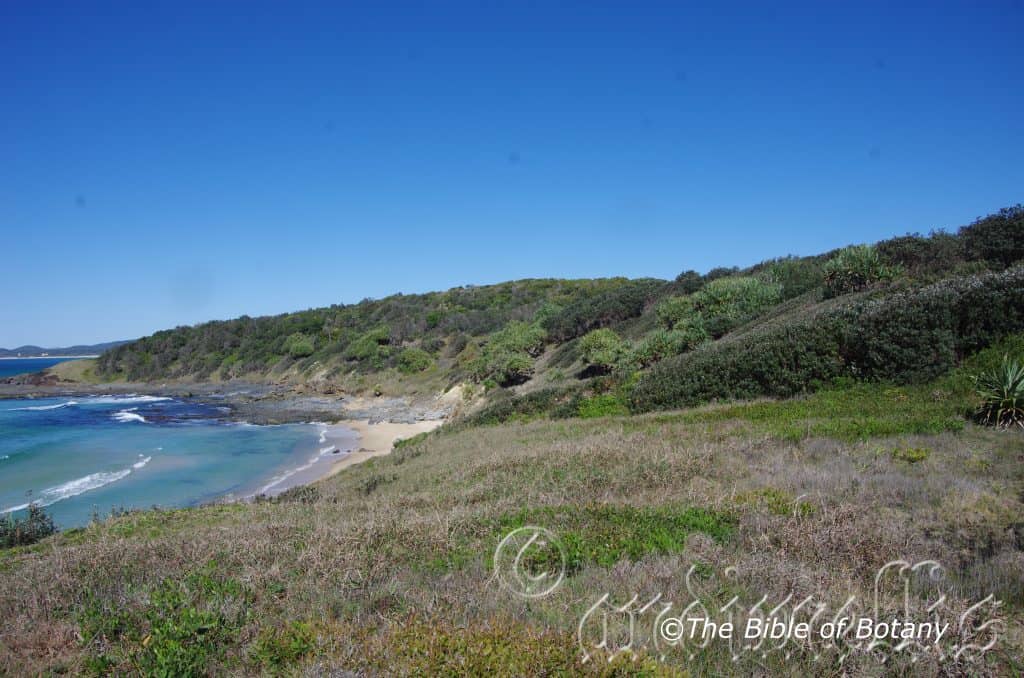
Yuraygir National Park NSW
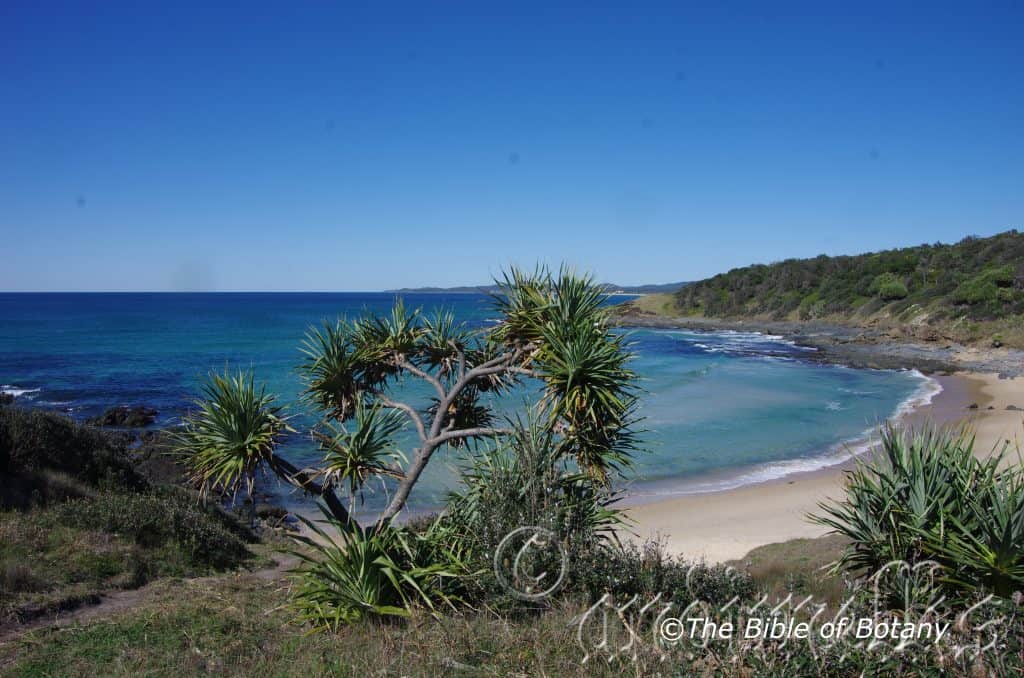
Yuraygir National Park NSW
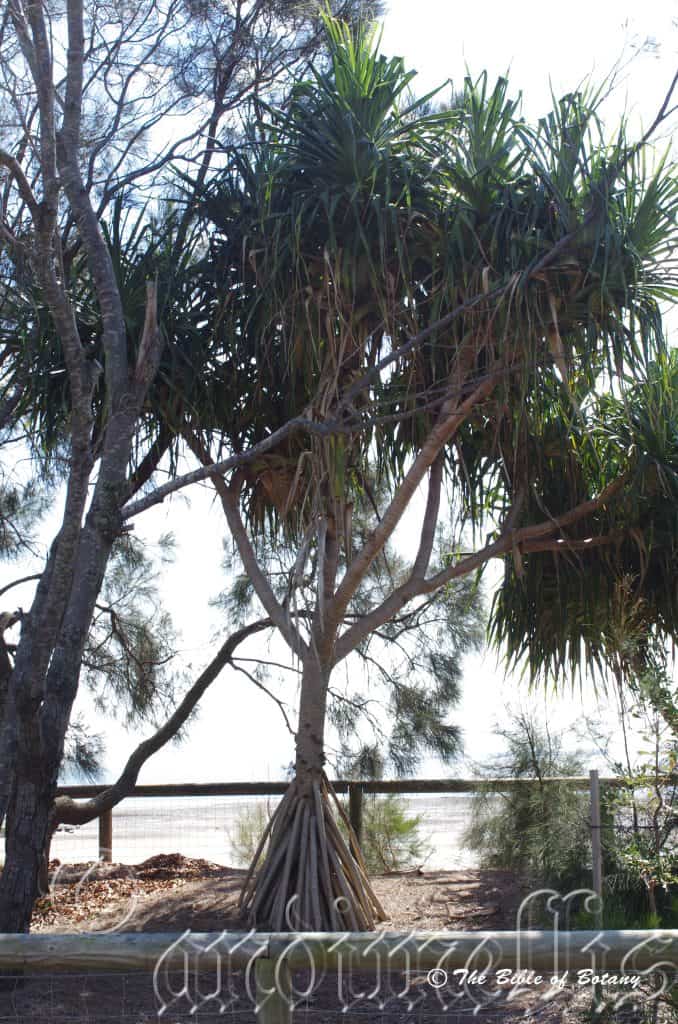
Wynumm Foreshore Qld.
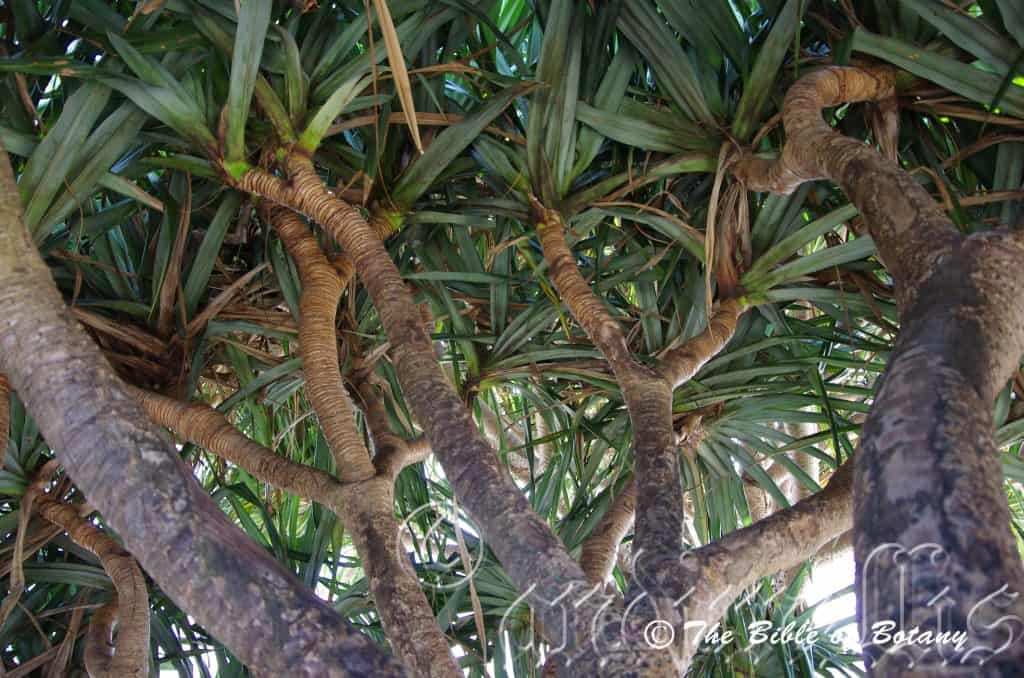
Wynumm Foreshore Qld.
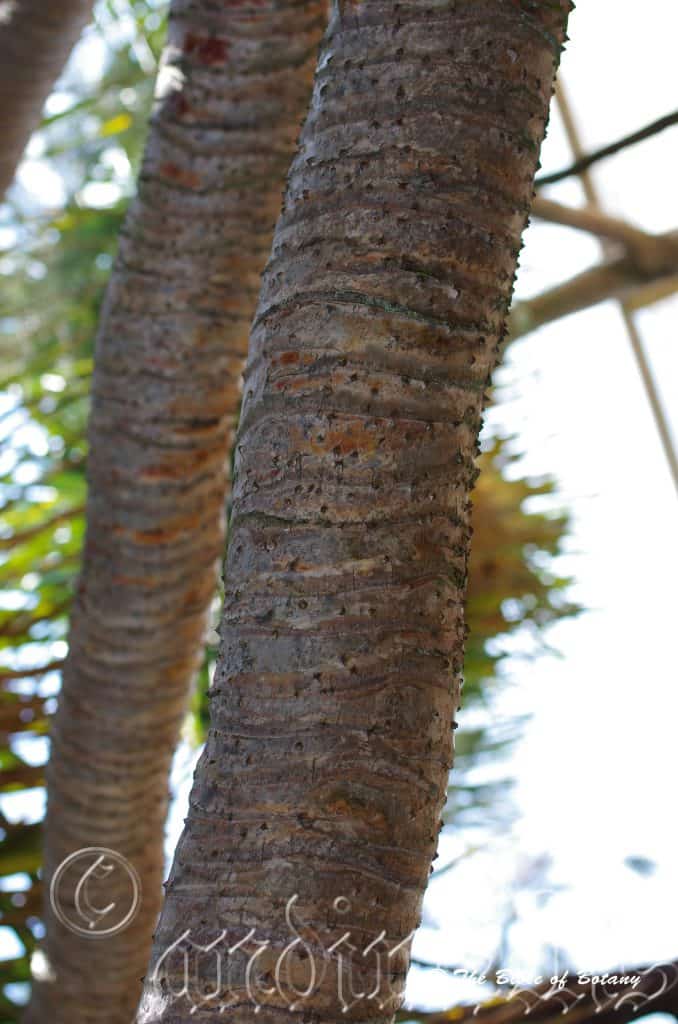
Wynumm Foreshore Qld.
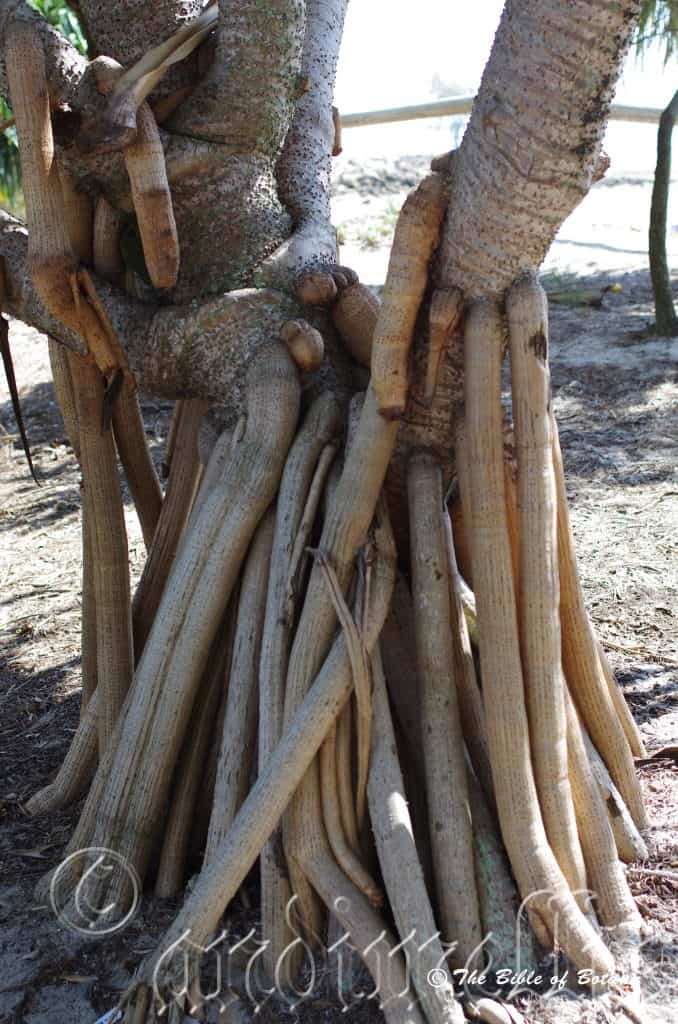
Wynumm Foreshore Qld.
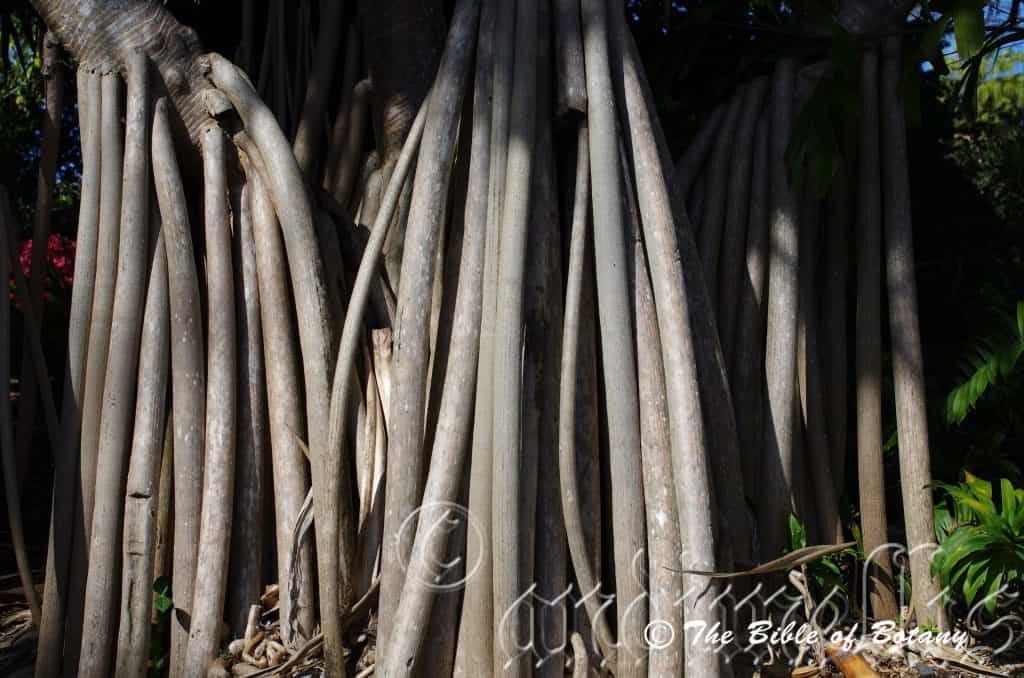
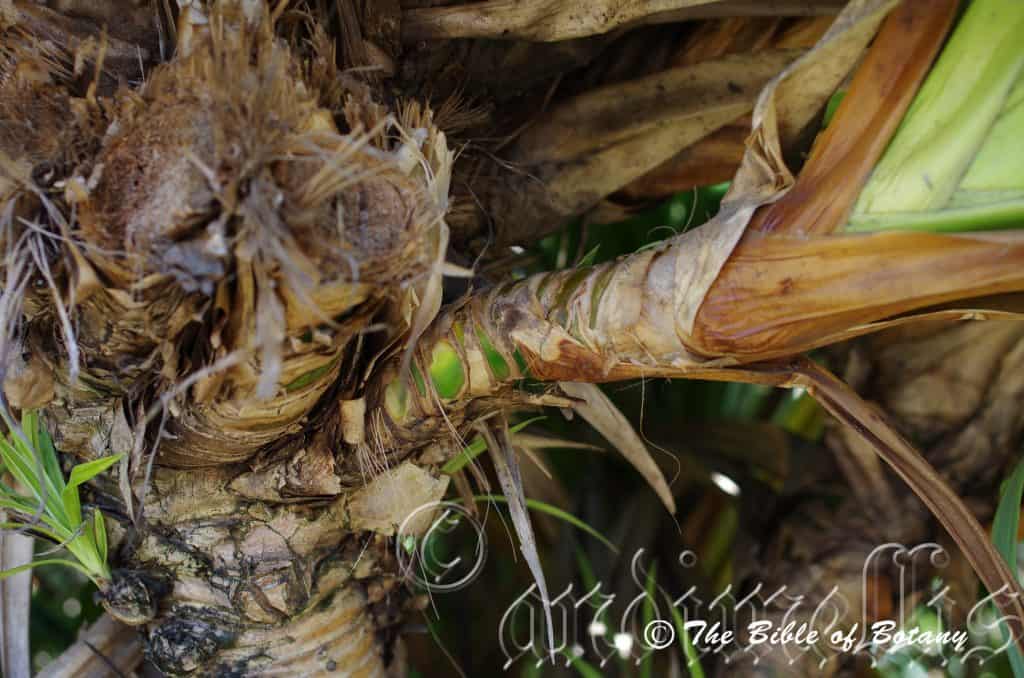
Wynumm Foreshore Qld.
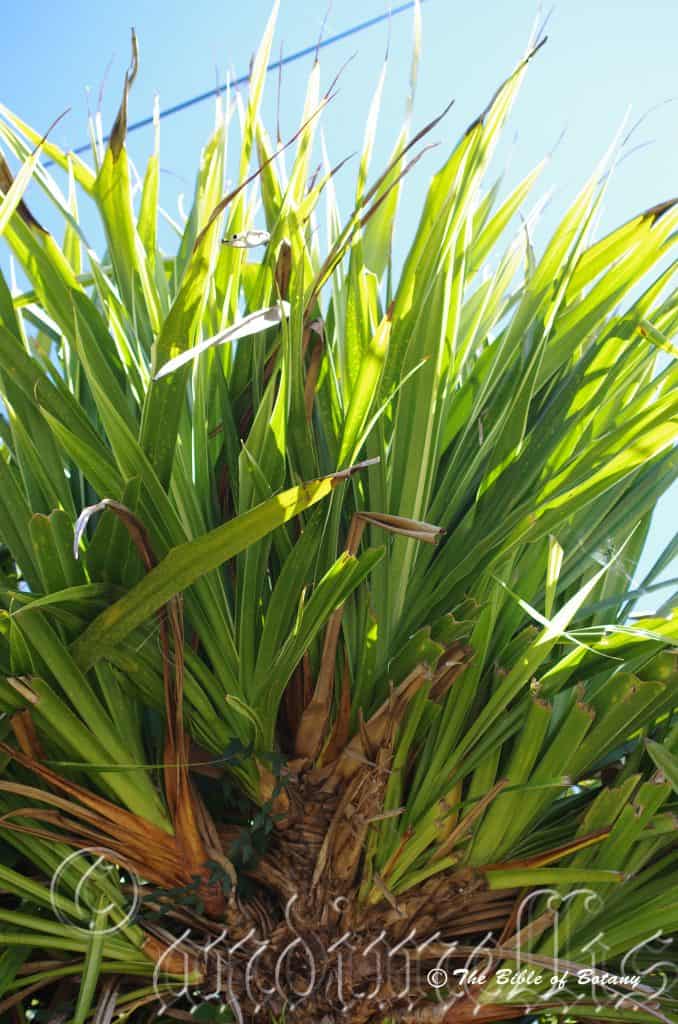
Wynumm Foreshore Qld.
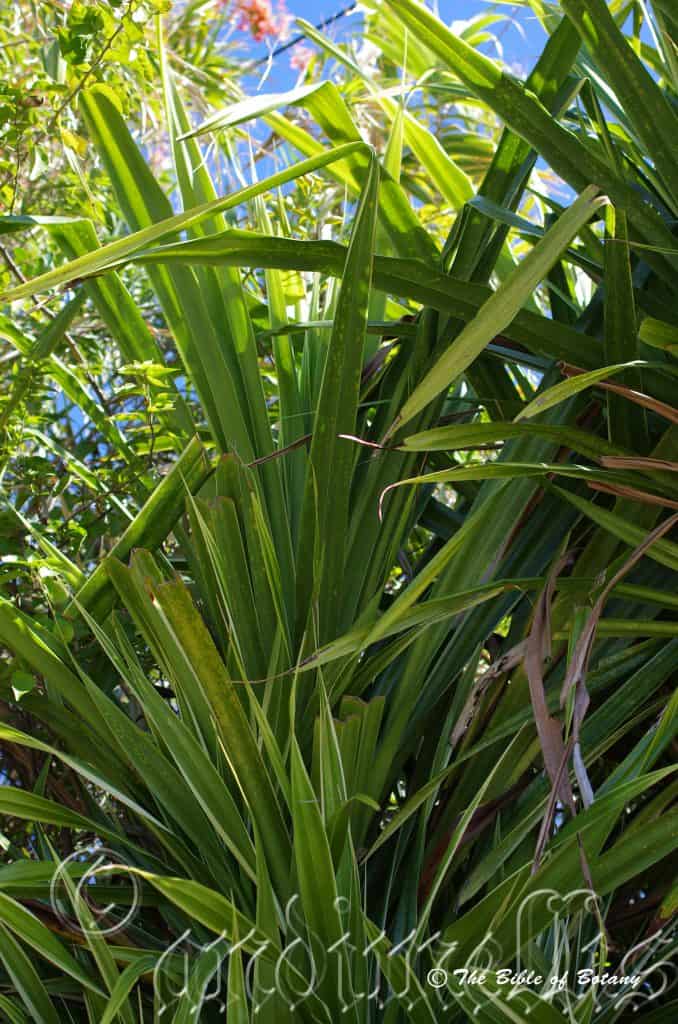
Wynumm Foreshore Qld.
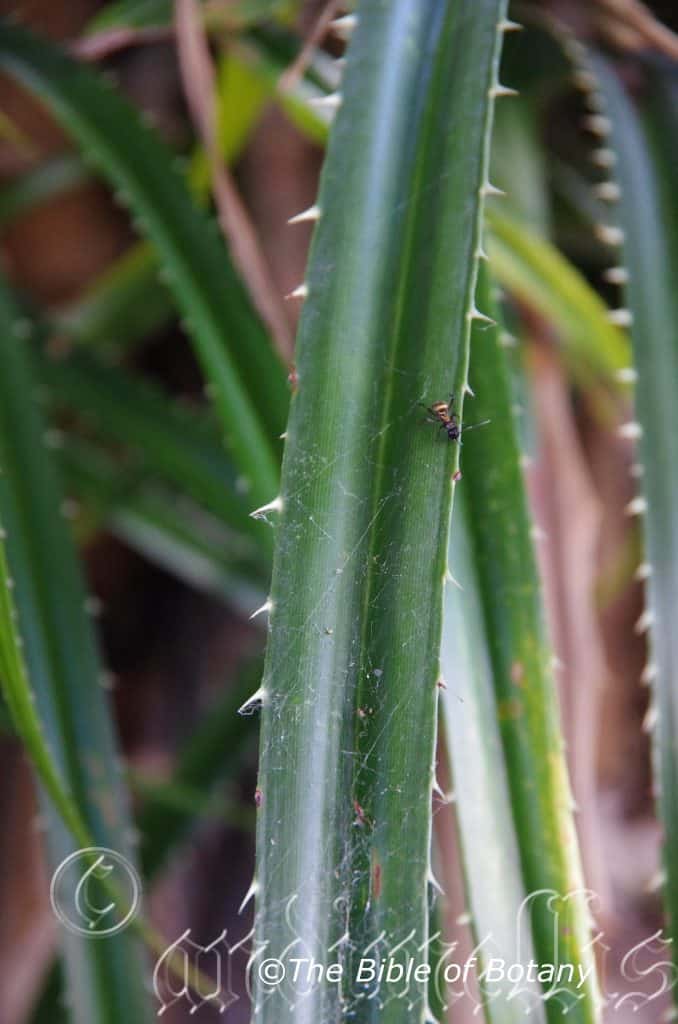
Mount Cootha Botanic Gardens Qld.
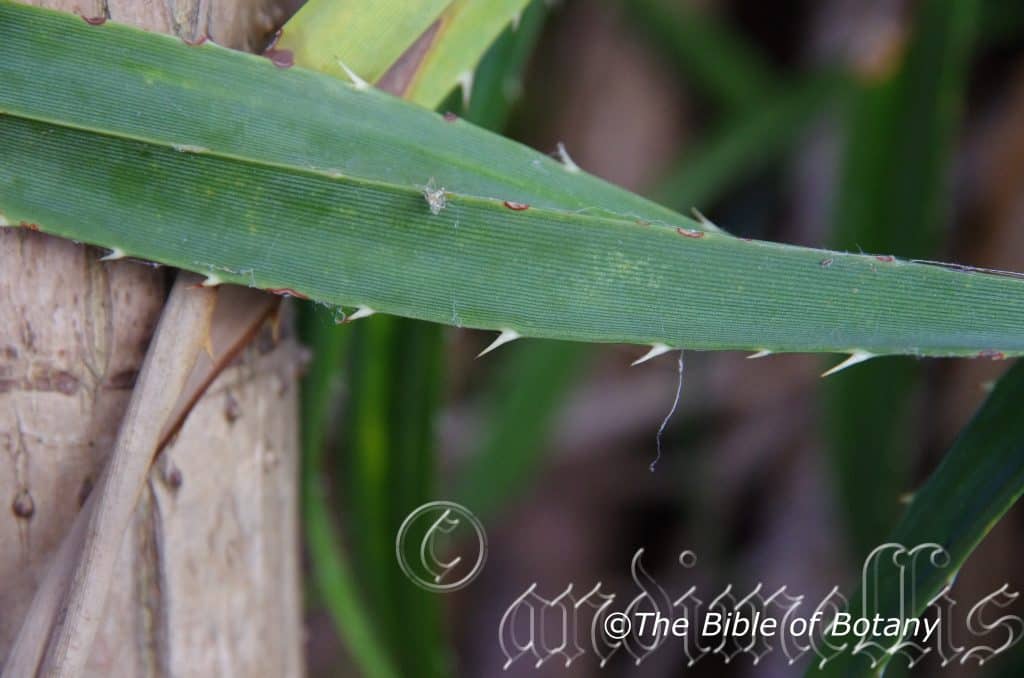
Mount Cootha Botanic Gardens Qld.
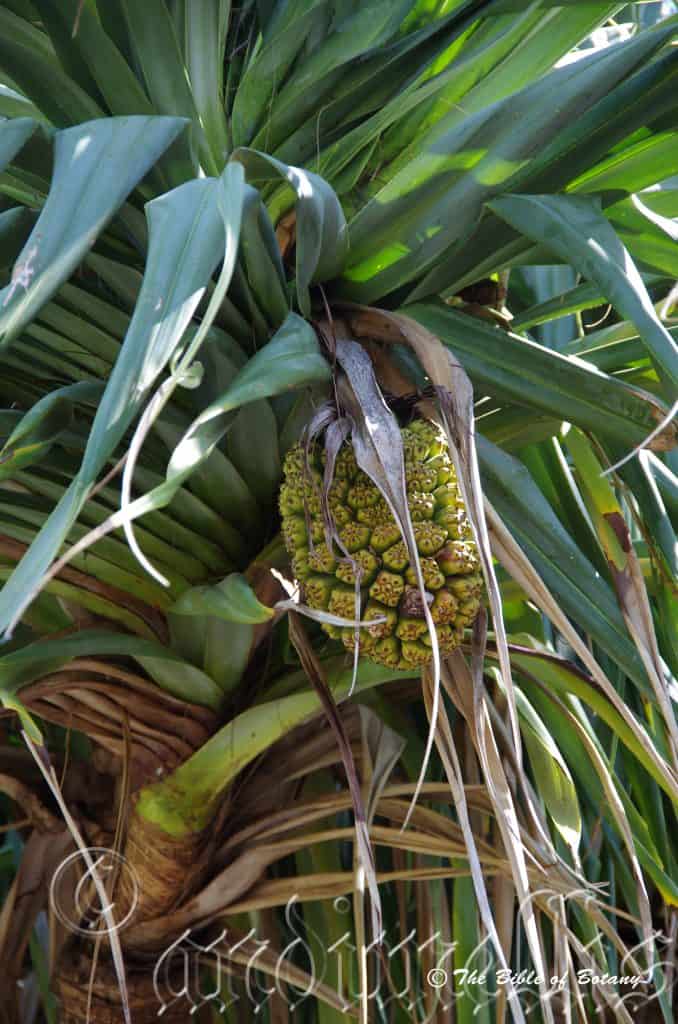
Wynumm Foreshore Qld.
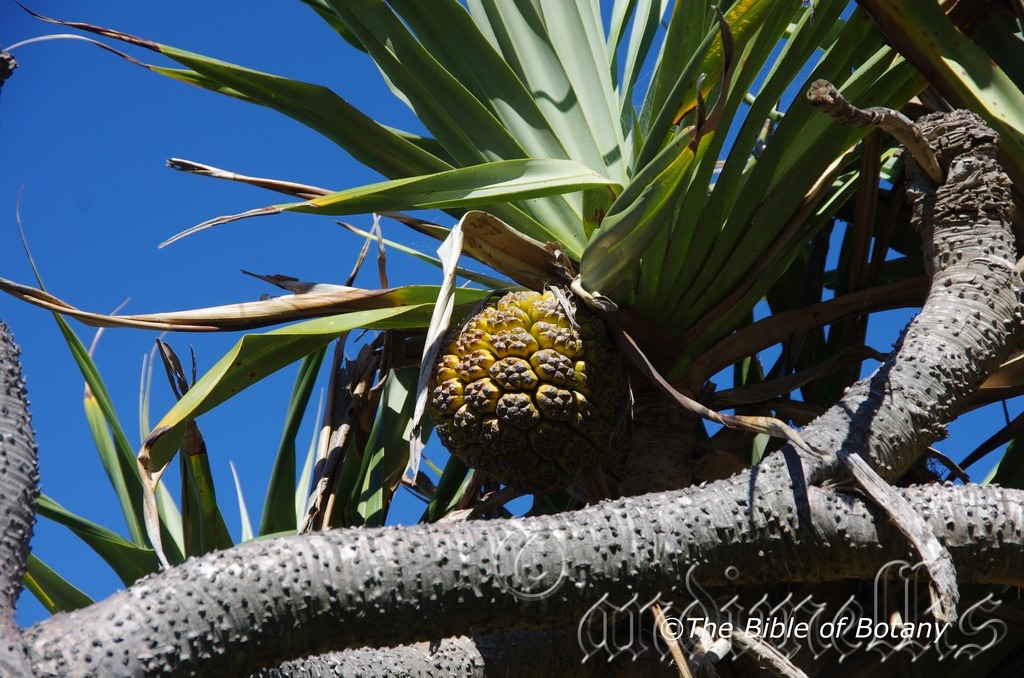
Yuraygir National Park NSW
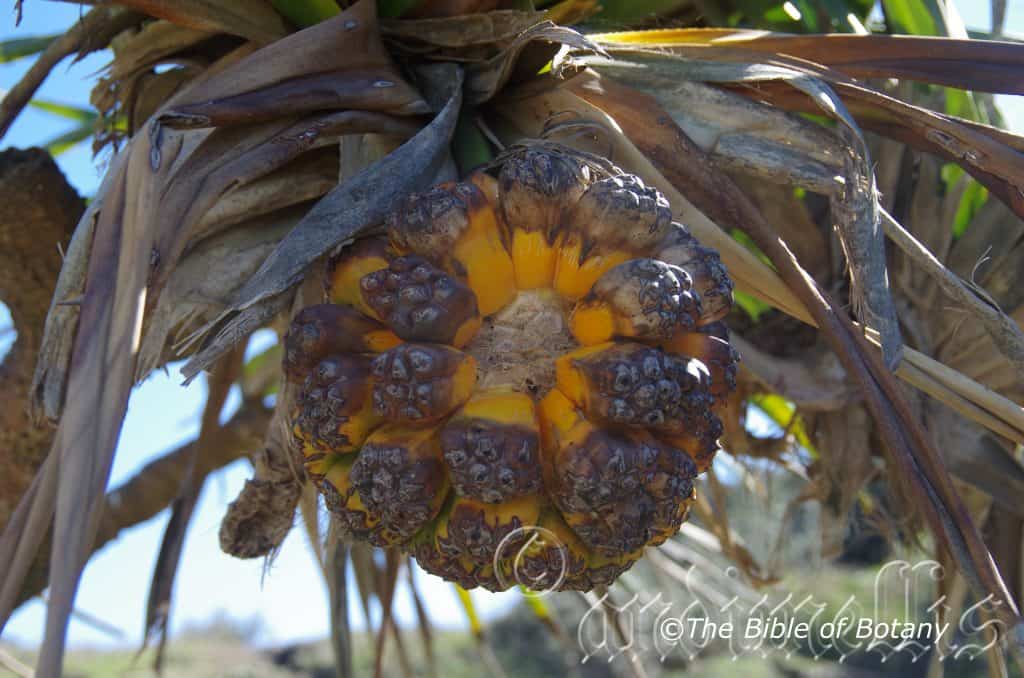
Yuraygir National Park NSW
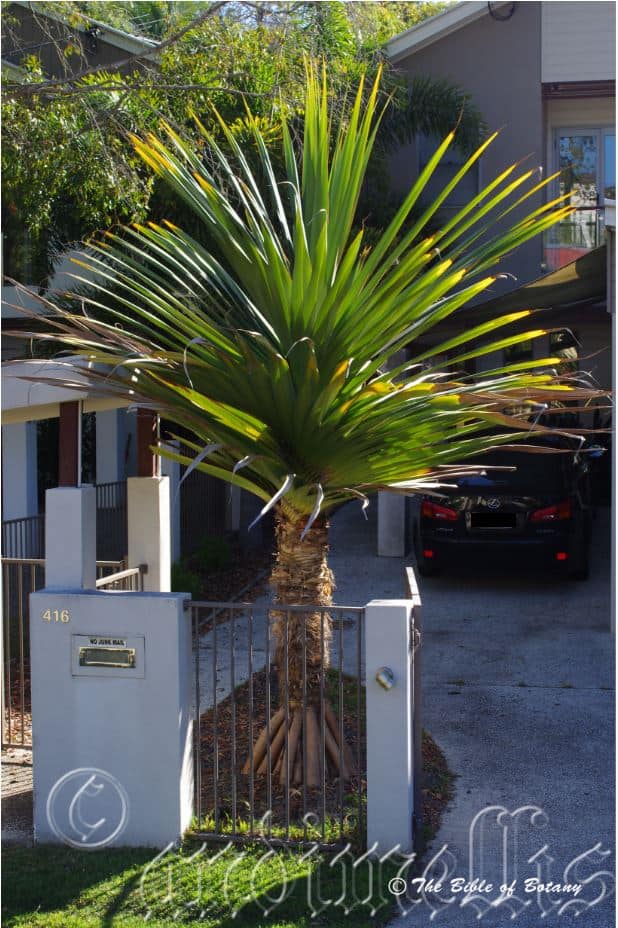
Norman Park Qld.
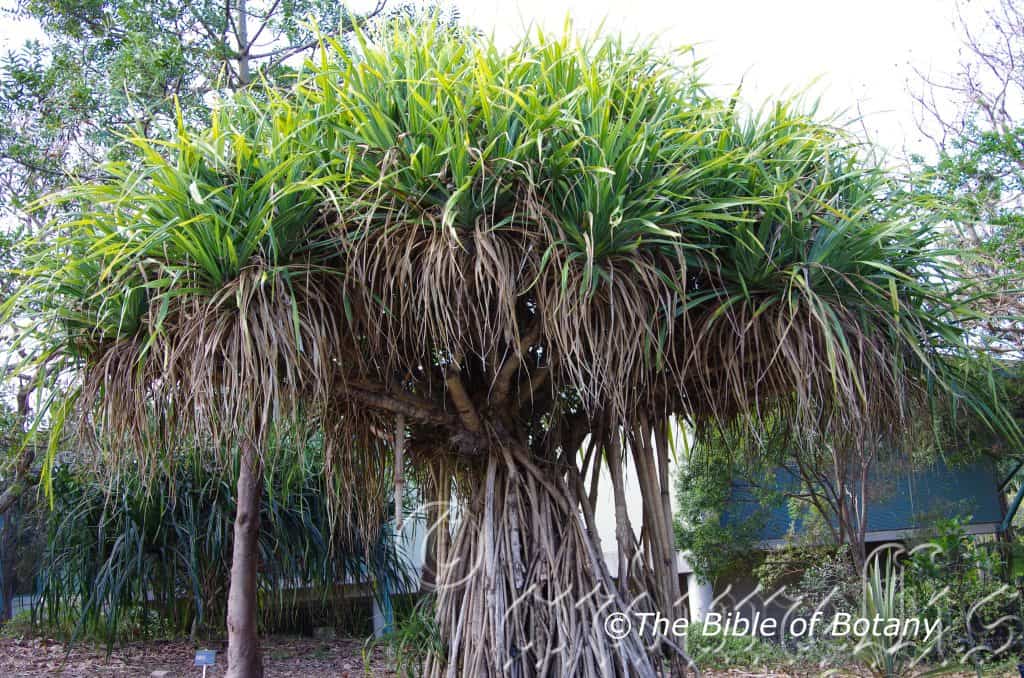
Mount Cootha Botanic Gardens Qld.
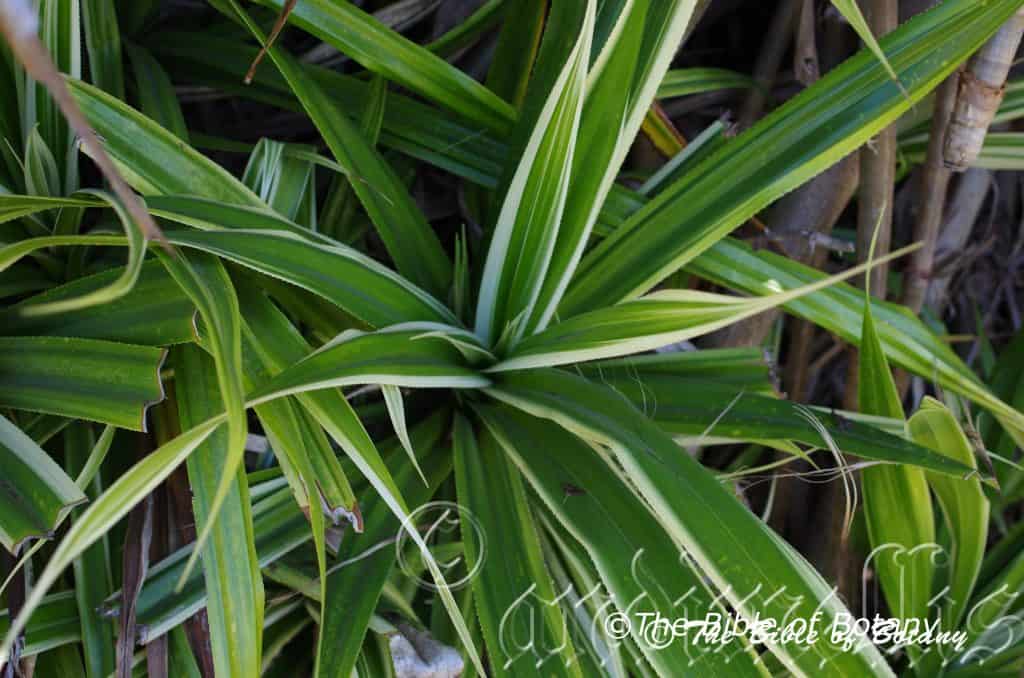
Wynumm Foreshore Qld.
Pandanus tectorius
Classification:
Order: Pandanales
Family: Pandanalaceae
Genus: FromPandan, which is Latinized from the Malayan vernacular name for to have sword like spiralling leaves. It refers to leaves, which take the form of a sword and spiral from around the trunk.
Specie: FromTēctum, which is Latin for a roof. It refers to leaves or barks, which were used to make rooves on coastal huts by the local indigenous people. from Tēctum, which is Latin for a roof. It refers to leaves or barks, which were used to make rooves on coastal huts by the local indigenous people.
Variety: Pandanus tectorius var. austrāliānus. From Australis, which is Latin for the south land. It refers to plants, which were first found in Australia.
Variety: Pandanus tectorius var. cocosensis. From Cocos, which is Latin for the Cocos Keeling Islands. It refers to plants, which were fisrt found on the Cocos keeling Islands.
Variety: Pandanus tectorius var. heronensis. From Heron, which is Latinized for Heron Island and Ensis, which is Latin for to originate from. It refers to plants, which were first collected from Heron Island.
Variety: Pandanus tectorius var. forsteri. Is probably named in honour of the German naturalists Johann Reinhold Forster; 1729-1798, and his son, Johann Georg Adam Forster; 1754-1794 who were Polish explorers and botanical artists.
Variety: Pandanus tectorius var. pedunculatus. From Pedunculātus, which is Latin for a pedicel. It refers to leaves, which have longer pedicels than other species in the genus.
Variety: Pandanus tectorius var. stradbrokensis. From Stradbroke, which is Latinized for Stradbroke Island and Ensis, which is Latin for to originate from. It refers to plants, which were first collected from Stradbroke Island. This spelling is an error for Pandanus tectorius var. stradbrookeensis.
Variety: Pandanus tectorius var. stradbrookeensis. From Stradbroke, which is Latinized for Stradbroke Island and Ensis, which is Latin for to originate from. It refers to plants, which were first collected from Stradbroke Island.
Variety: Pandanus tectorius var. yorkensis. From Cape York, which is Latinized for Cape York Peninsula and Ensis, which is Latin for to originate from. It refers to plants, which were first collected from Cape York Peninsula.
Common Name: Common Screw Palm.
NOTE: The exact number of varieties is still unclear and should be taken as a guide only and not as gospel at this stage.
Distribution:
Pandanus tectorius is found throughout South East Asia and the Pacific Islands surrounding Australia. Of the 8 sub species none have been mapped accurately at this stage.
Pandanus tectorius var. cocosensis is found on the Cocos Keeling Islands.
Pandanus tectorius var. forsteri is found on Lord Howe Island.
Pandanus tectorius var. heronensis is found on Heron island.
Pandanus tectorius var. stradbrokensis or Pandanus tectorius var. stradbrookeensis as there appears to be a spelling error for one of the sub species is believed to be found south of Stradbroke Island in far south eastern Queensland to the Hastings River near Port McQuarrie in north eastern New South wales.
Pandanus tectorius var. yorkensis is found on both sides of Cape York Peninsula and the Torres Strait Islands as far south as Cairns.
https://avh.ala.org.au/occurrences/search?taxa=Pandanus+tectorius#tab_mapView
Habitat Aspect Climate:
Pandanus tectorius prefers dappled shade to full sun. It grows in or adjacent to lowland rainforests, littoral rainforests, adjacent to fresh water swamps, behind mangroves, along brackish estuaries, moist Eucalyptus forests, microphylla vine forests or monsoonal vine forests. It is also found adjacent to coastal wallums and swamps. The altitude ranges from 20 meters ASL to 1550 meters ASL.
The temperatures range from minus 2 degrees in July to 36 degrees in January.
The rainfall ranges from lows of 650mm to 3200mm average per annum.
Soil requirements:
Pandanus tectorius prefers soils that are sandy loams to light coastal peaty sands at times with a high proportion of gravel. The soils are usually derived from decomposed sandstones, pumice stone or granites or accumulated beach sands. The soils pH ranges from 5pH to 6pH. It does not tolerate of waterlogged soils. Non saline soils to extreme saline soils are tolerated as are salt laden winds.
Height & Spread:
Wild Plants: 8m to 12m by 8m to 12m
Characteristics:
Pandanus tectorius grows as an erect small densely canopied tree with many branches and Spread equal to its height. The grey trunk is covered in spiny conical nodules. The branches are thick, round grey and glabrous. Young shoots are deep blue-green. The prop roots vary from a few to many, form the lower 800mm to 1150mm of the main trunk.
The linear leaves of Pandanus tectorius are arching, spiralling and crowded near the apex of the branches. They measure 1400mm to 1700mm in length by 50mm to 100mm in width. The leaves on juvenile trees are longer and broader. The bases are strongly clasping while the apex is acuminate or subulate. The concolourous laminas are mid blue-green to mid-green and glabrous. The leaf margins are entire and are covered in short, sharp, fine spines which curve both towards the apex and the base of the leaf. The laminas curve upwards in a “Vee” from the mid vein. The mid vein is strongly prominent on the lower lamina and is visible on the upper lamina. It is covered in a row of short, sharp, fine spines which curve both towards the apex and base of the leaf. The section closest to the base is void of spines both on the margins and lower midvein.
The Inflorescences of Pandanus tectorius are dioeciously born singularly on raceme from the terminals.
The male flowers have creamy white pendulous bracts. The stamen’s filaments are fused to form a column which measure 500mm to 1200mm in length. The stamens measure 18mm to 20mm of which the anthers measure 16mm to 19mm in length.
The female flowers have 7 to 11 phalanx segments. The individual flowers are sessile and a hexagonal in cross section. The style measures 6mm to 10mm in length. Pandanus tectorius fragrant flowers flower throughout the year.
Pandanus tectorius’s fruits are cylindrical cones with 7 to 11 individual drupes fused together in a cone and measure 140mm to 250mm in length by 130mm to 230mm in diameter. The individual fruits are quadrangle to hexagonal in cross section at the midway section with the elongated obtuse apex ending in the persistent spine like style. Each of the segments measure 38mm to 51mm by 20mm to 50mm in diameter near the apex. Ripe fruits turn yellow orange When ripe.
The conical seeds measure 30mm to 42mm in length by 15mm to 40mm in diameter.
Wildlife:
Pandanus tectorius’s do not appear to have any predators though the flowers a visited by many small butterflies, native bees and beetles. The fleshy part of the fruits disintegrates quickly once they fall to the ground attracting numerous native flies and beetles.
Freshly harvested fruits we collected and eaten by Australian aborigines. The small amount of fragrant flesh has a sweet rancid taste.
Cultivation:
Pandanus tectorius is a magnificent small tree that deserves a place in every tropical and monsoonal native garden. It is ideal in almost every setting near ponds, at the edge of a rain forest in court yards, around swimming pools or larger rockeries when their size is balanced. In cultivation they will grow from 8 meters to 10 meters in height by 8 meters to 10 meters in diameter when grown in the open.
They grow exceptionally well on lighter soils When deep leaf litter keeps the soil cool and moisture at an even level. If these requirements are met they can cope with temperatures as low as 6 degrees and maybe lower. It is moderately drought resistant in their rainfall zones.
They often reach their full potential in just 6 to 8 years and flower from the fifth year from seed.
Be imaginative when planting in mass. Use the plants in different configurations and use curves.
It is best used adjacent to small areas of bush but kept back 4 to 5 meters from paths so their spines do not catch clothing or hair. It is great in small to large rockeries as a fill in plant. It can be planted in small groups of 2 or 3 scatted as you would find them in nature to give a great tropical bush scene. It is best used in the mid ground surrounded by shorter plants with fine foliage with white or red flowers so they will dominate at the center of the bed especially when it is in flower.
Two or the planted in a central bed or round about mixed with rocks or boulders make a very strong statement. He they can be under planted with Lomandra species or ground covers or annuals to display completely different personalities.
Ensure that the whole plant or at least most of it is on display from most sections of the garden as the fruits are a real bonus.
Propagation:
Seeds: Seeds of Pandanus tectorius can be moved easily from the plants as they fall to the ground. Once the flesh has disintegrated, place the seeds in a large container of cool tap water for 5 to 7 days. Change the water daily to avoid stagnation and fermentation. Viable seeds will float so discard any seeds that sink in the water.
Sow freshly treated seeds directly into a deep seed tray and cover the seeds to twice the depth of the diameter of the seeds with a sterile seed raising mix. Keep the mix moist not wet and place the tray in a warm position or hot house When the temperatures main at around 18 to 28 degrees. Germination will commence after about 60 days. When the seedlings are 20 to 25 mm tall, prick them out and plant them into 75mm native tubes using a good organic mix.
As the seedlings roots ach the bottom of the tubes plant them out into their permanent position. Do not delay.
Fertilize using seaweed, fish emulsion or organic chicken pellets soaked in water on an alternate basis. Fertilize every two months until the plants are established then twice annually in early September and March to maintain better health, vitality and flowering.
Further Comments from Readers:
Hi reader, it seems you use The Bible of Botany a lot. That’s great as we have great pleasure in bringing it to you! It’s a little awkward for us to ask, but our first aim is to purchase land approximately 1,600 hectares to link several parcels of N.P. into one at The Pinnacles NSW Australia, but we need your help. We’re not salespeople. We’re amateur botanists who have dedicated over 30 years to saving the environment in a practical way. We depend on donations to reach our goal. If you donate just $5, the price of your coffee this Sunday, We can help to keep the planet alive in a real way and continue to bring you regular updates and features on Australian plants all in one Botanical Bible. Any support is greatly appreciated. Thank you.
In the spirit of reconciliation we acknowledge the Bundjalung, Gumbaynggirr and Yaegl and all aboriginal nations throughout Australia and their connections to land, sea and community. We pay our respect to their Elders past, present and future for the pleasures we have gained.
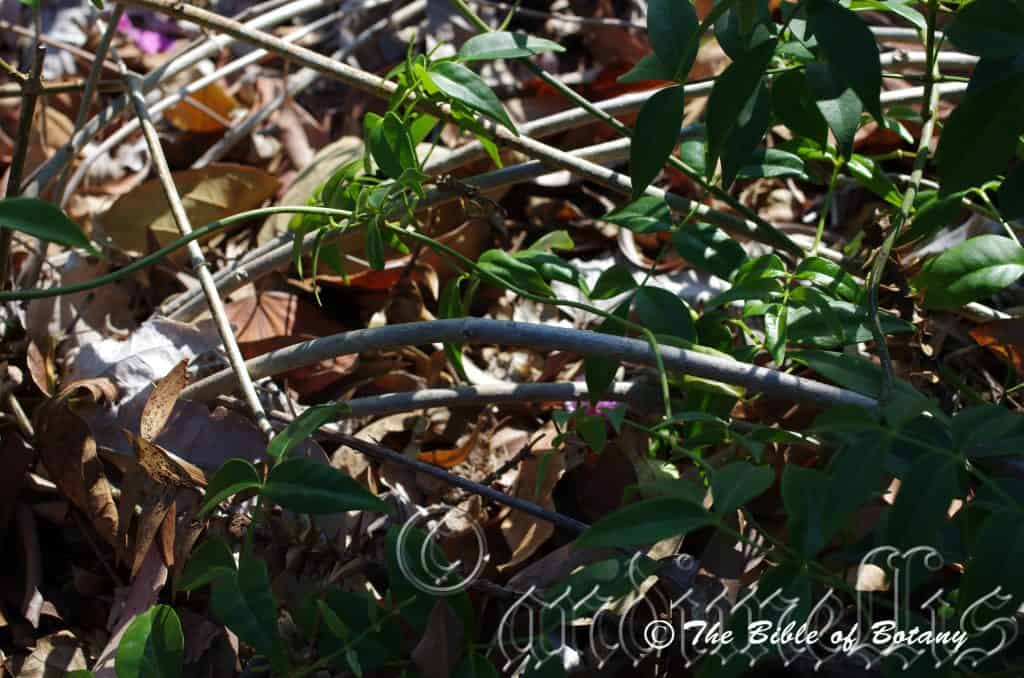
Mount Cootha Botanical Gardens Qld.
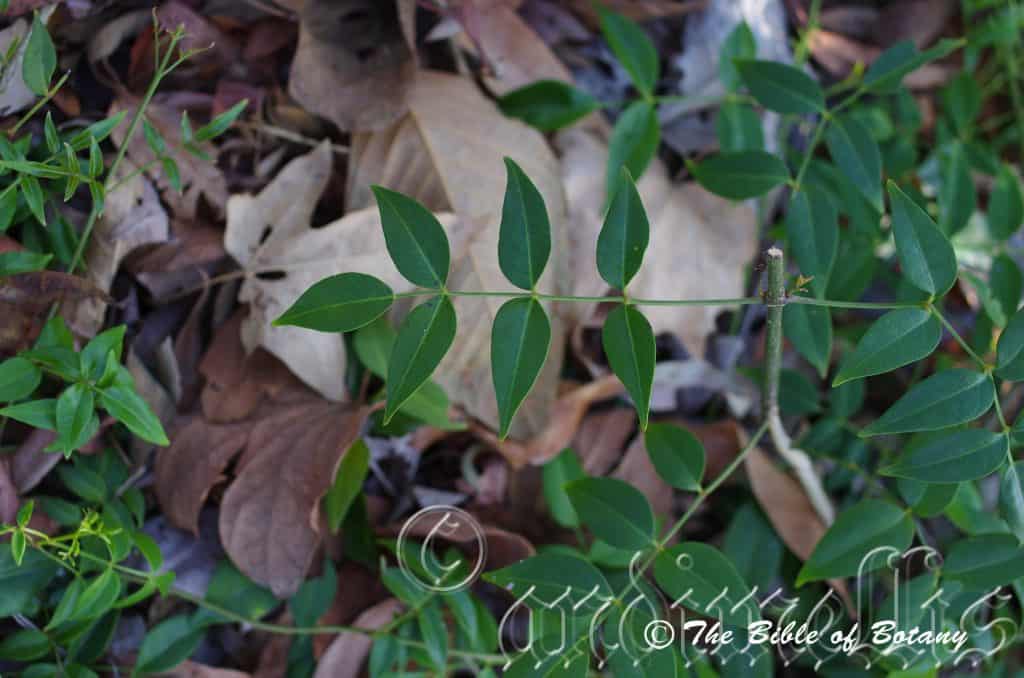
Mount Cootha Botanical Gardens Qld.
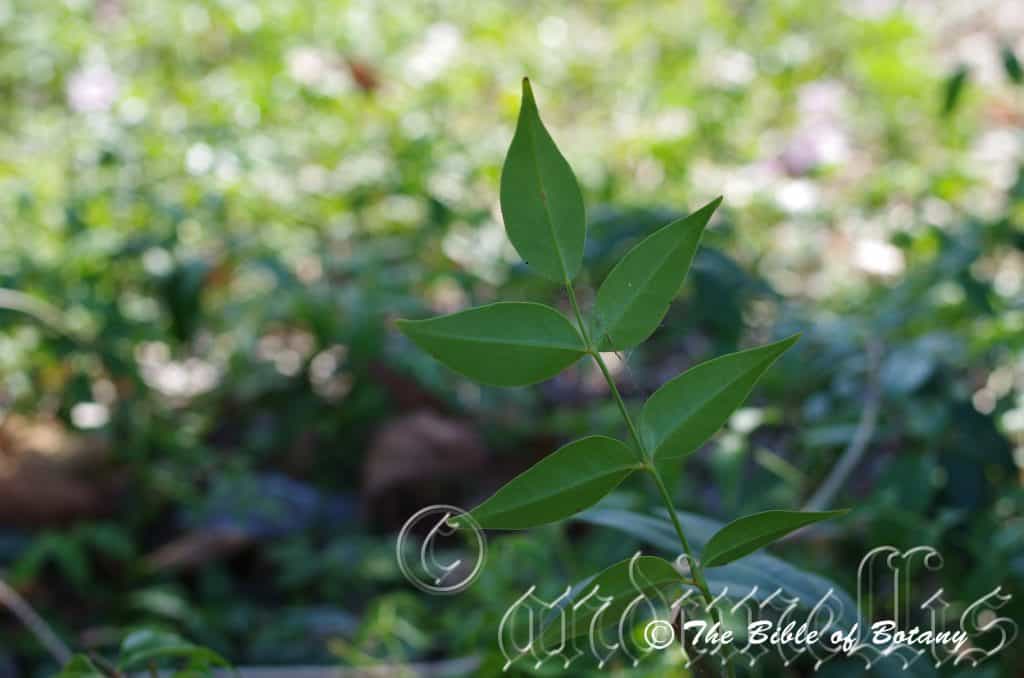
Mount Cootha Botanical Gardens Qld.

Norman Park Qld.
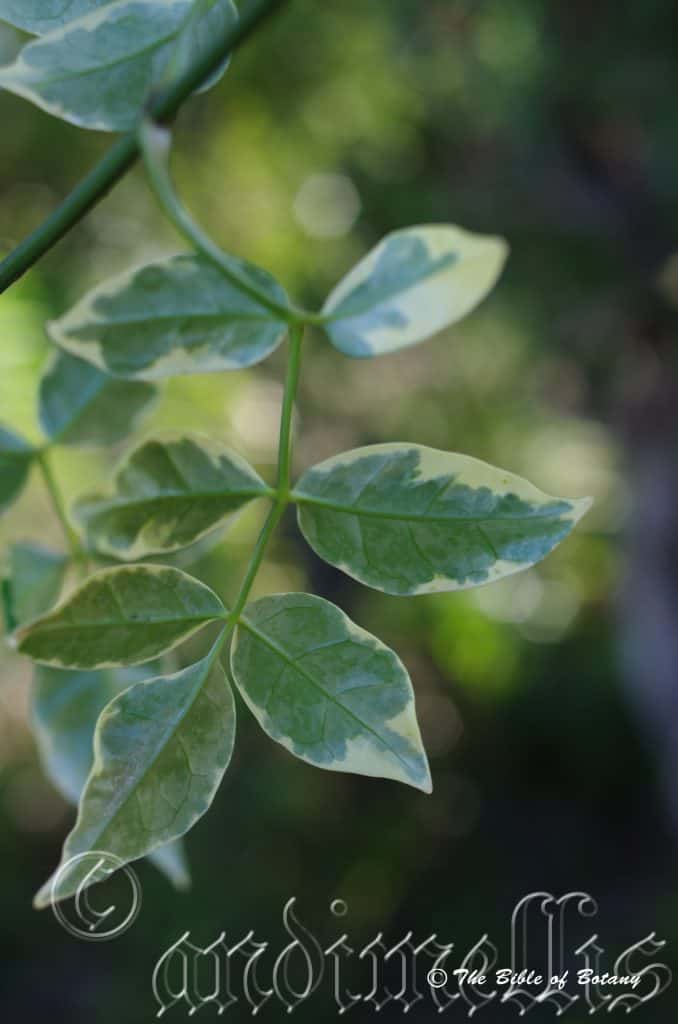
Norman Park Qld.
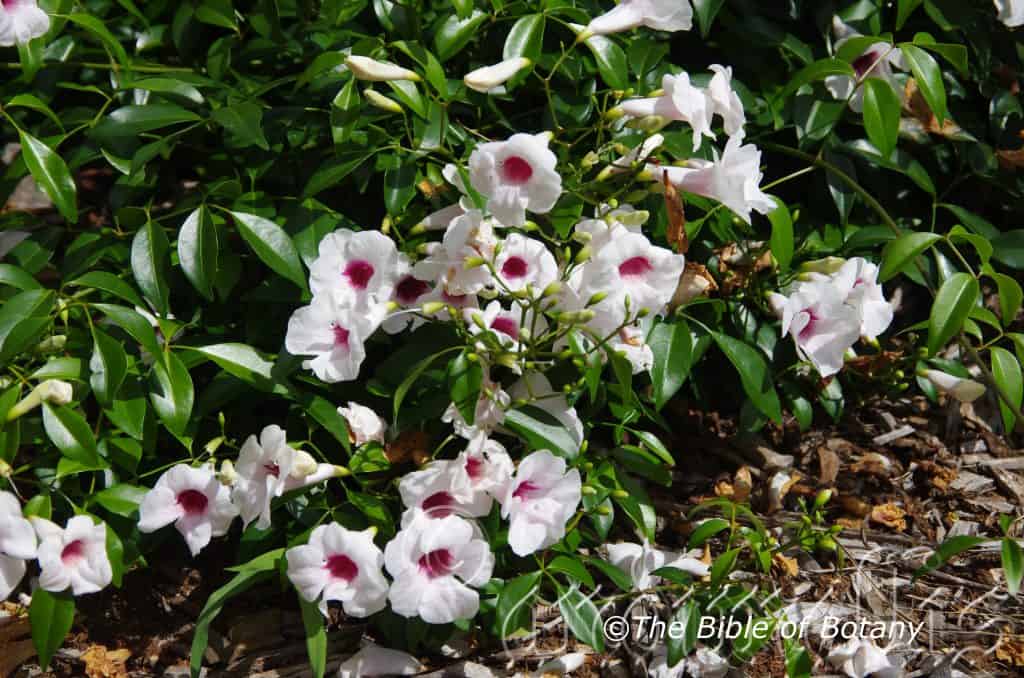
Author’s Garden The Pinnacles NSW
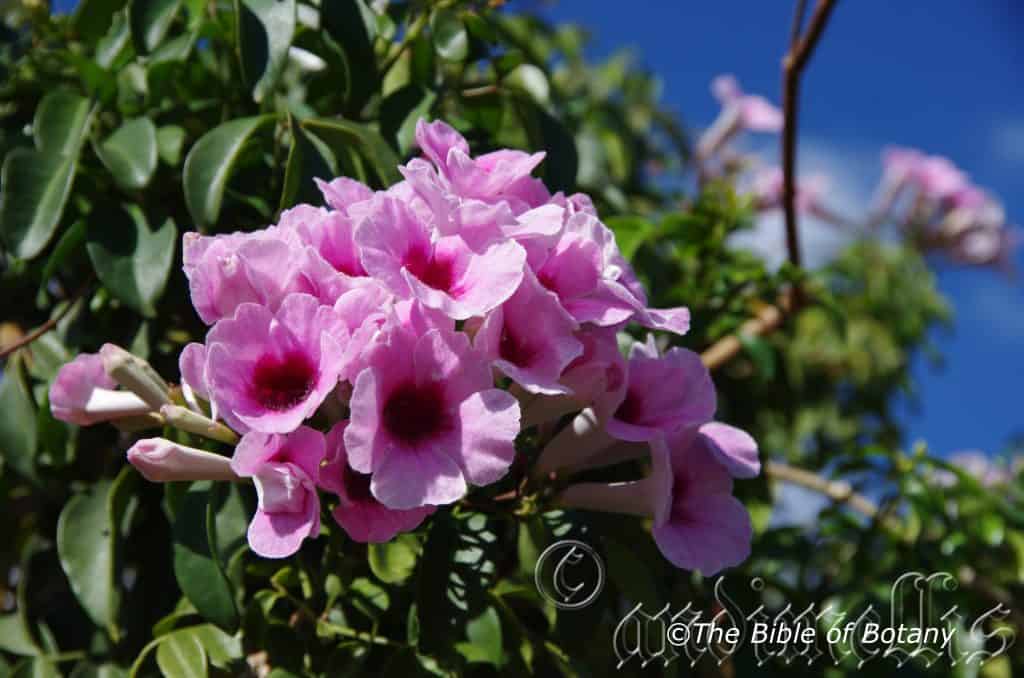
Townsville Qld.
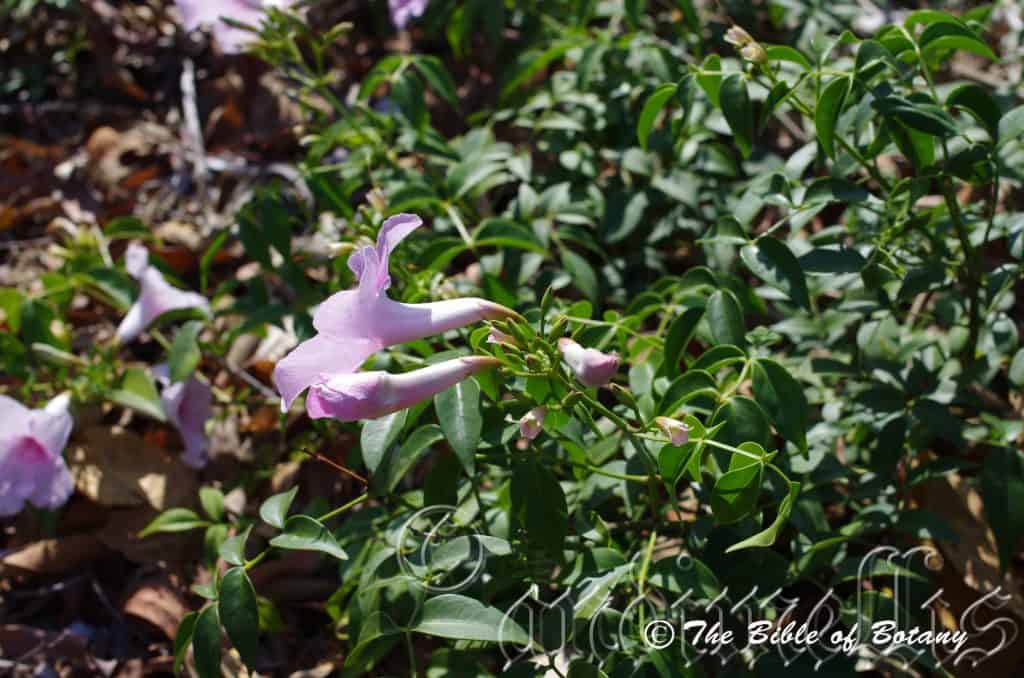
Mount Cootha Botanical Gardens Qld.
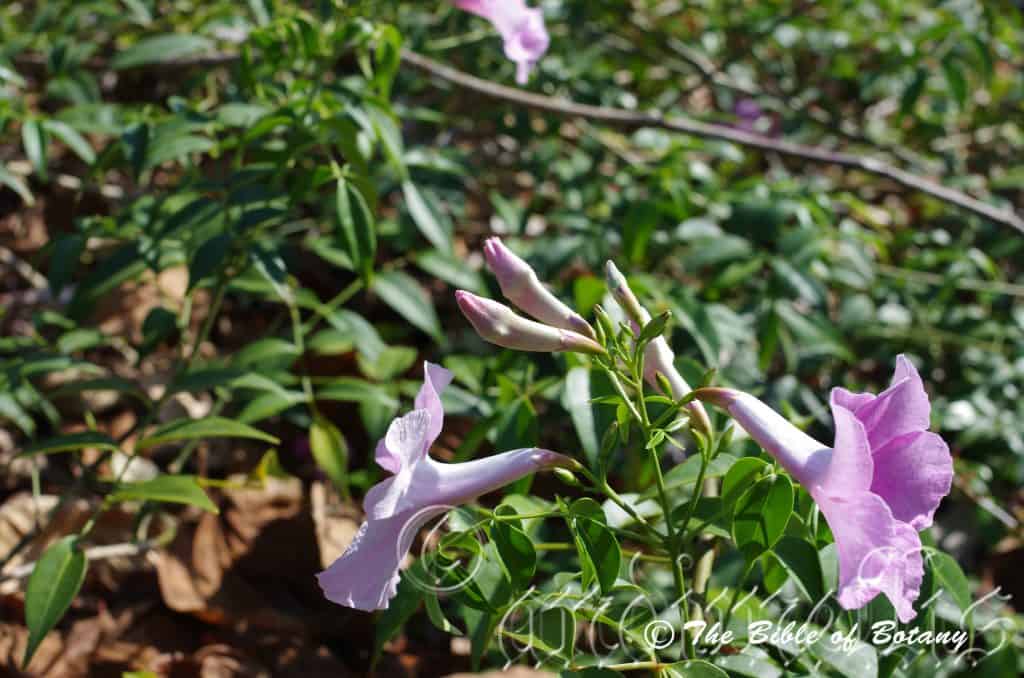
Mount Cootha Botanical Gardens Qld.
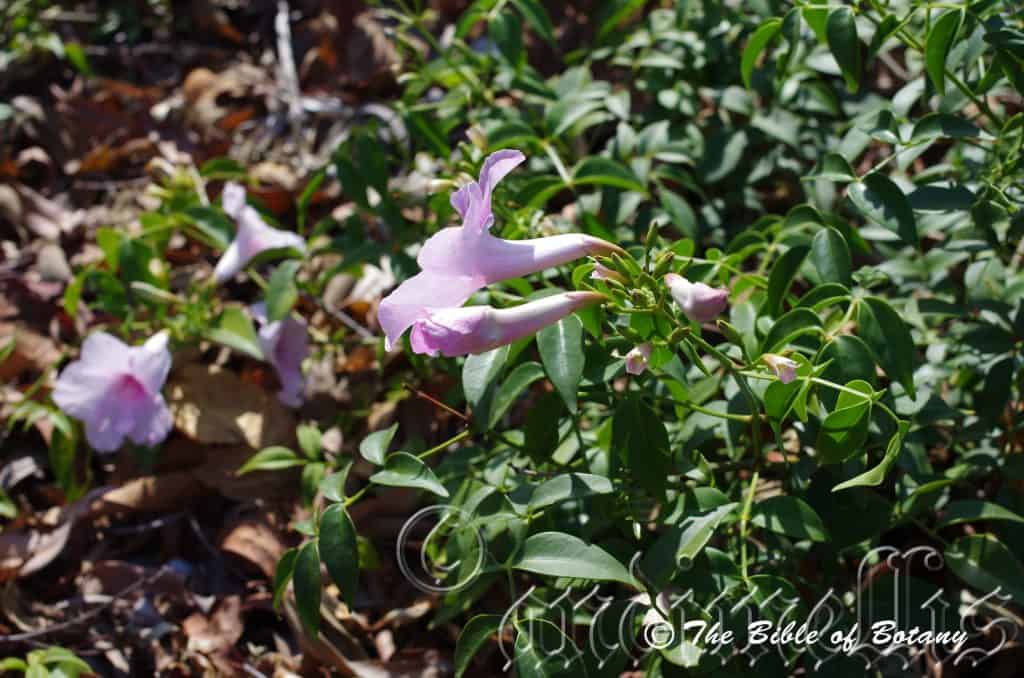
Mount Cootha Botanical Gardens Qld.

Mount Cootha Botanical Gardens Qld.
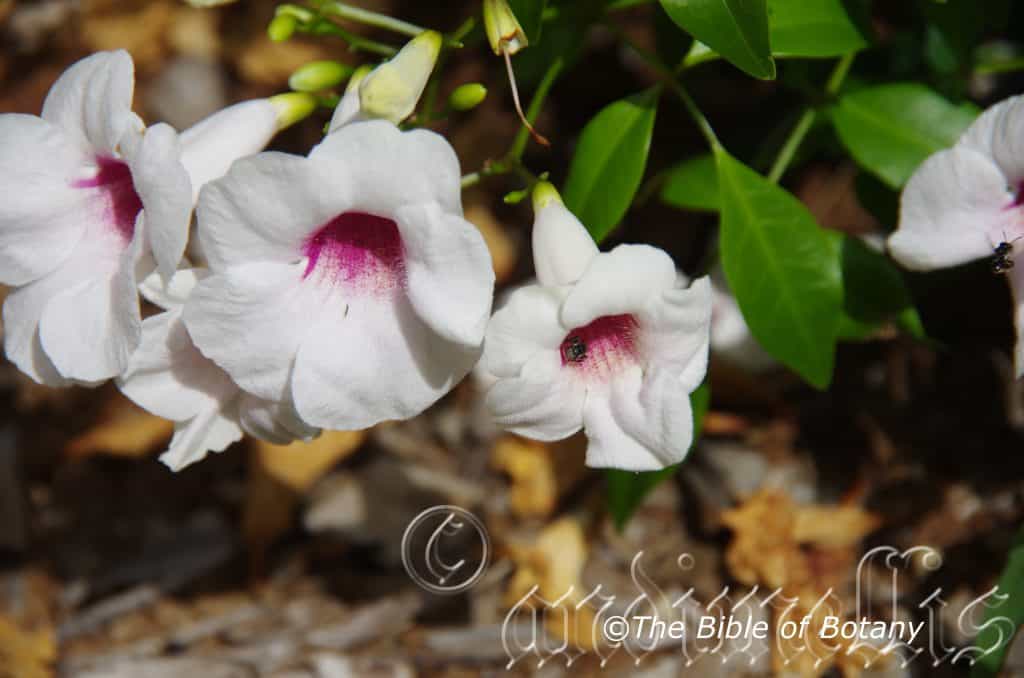
Tetragonula species Author’s Garden The Pinnacles NSW
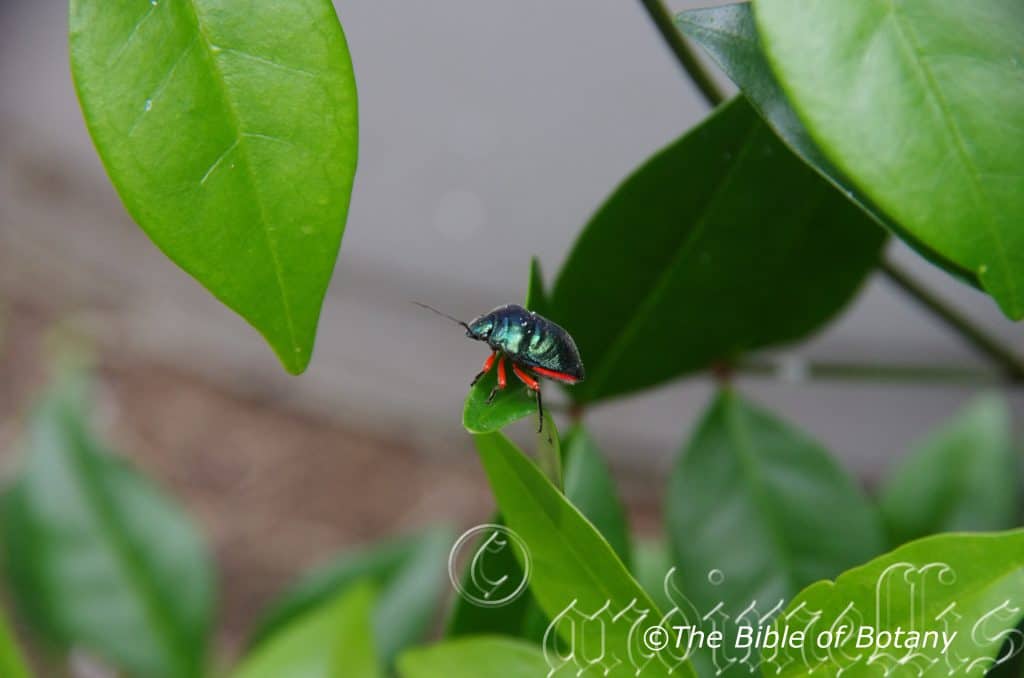
Lampromicra senator Author’s Garden The Pinnacles NSW
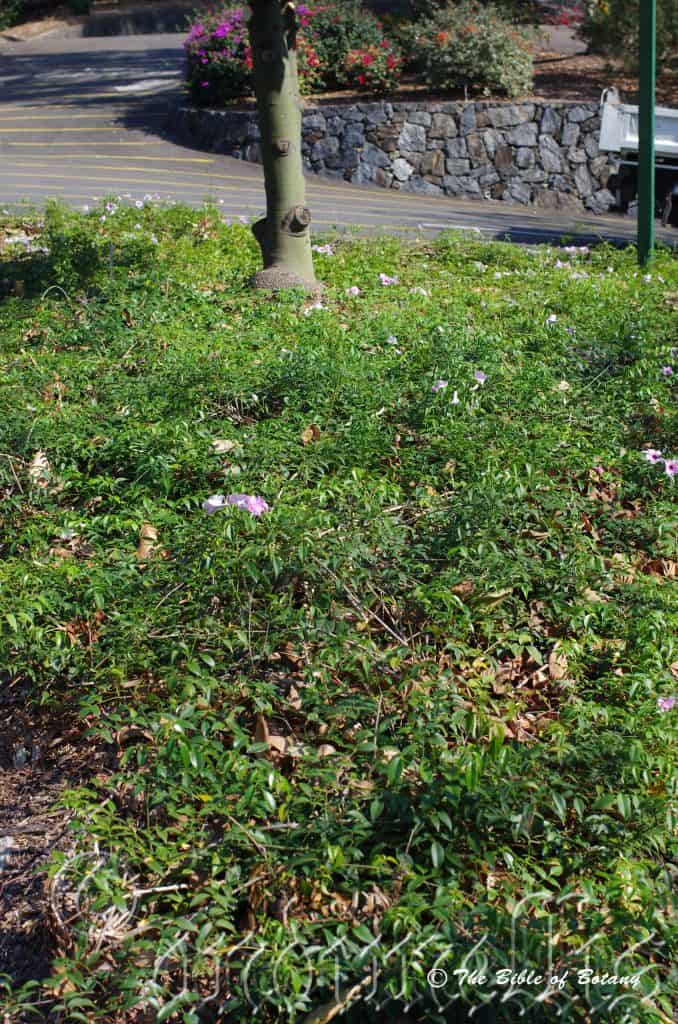
Mount Cootha Botanical Gardens Qld.
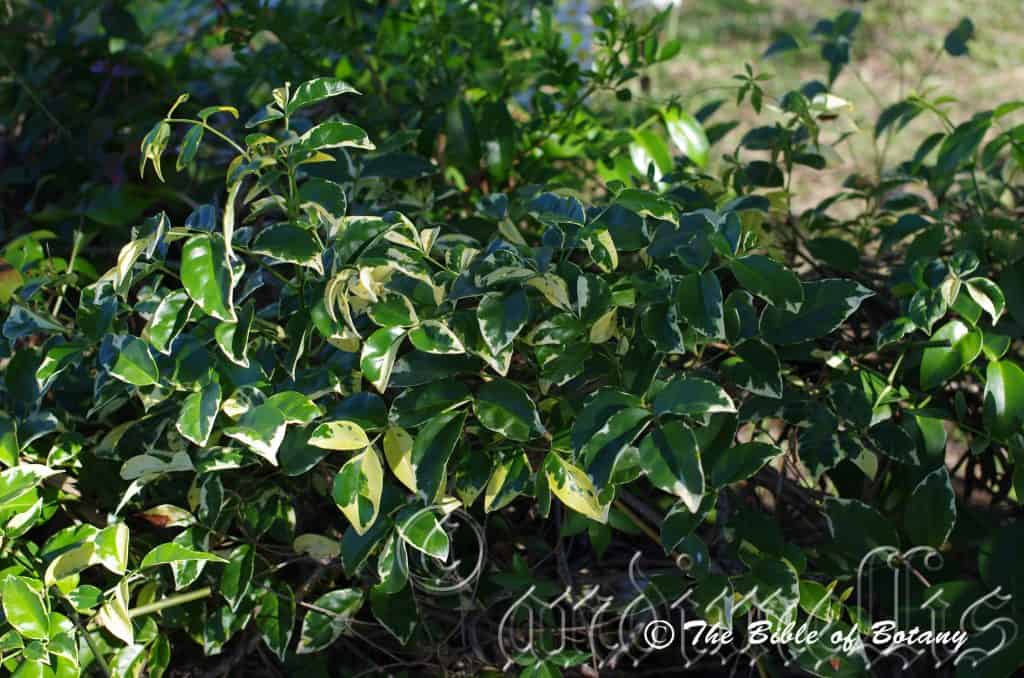
Norman Park Qld.
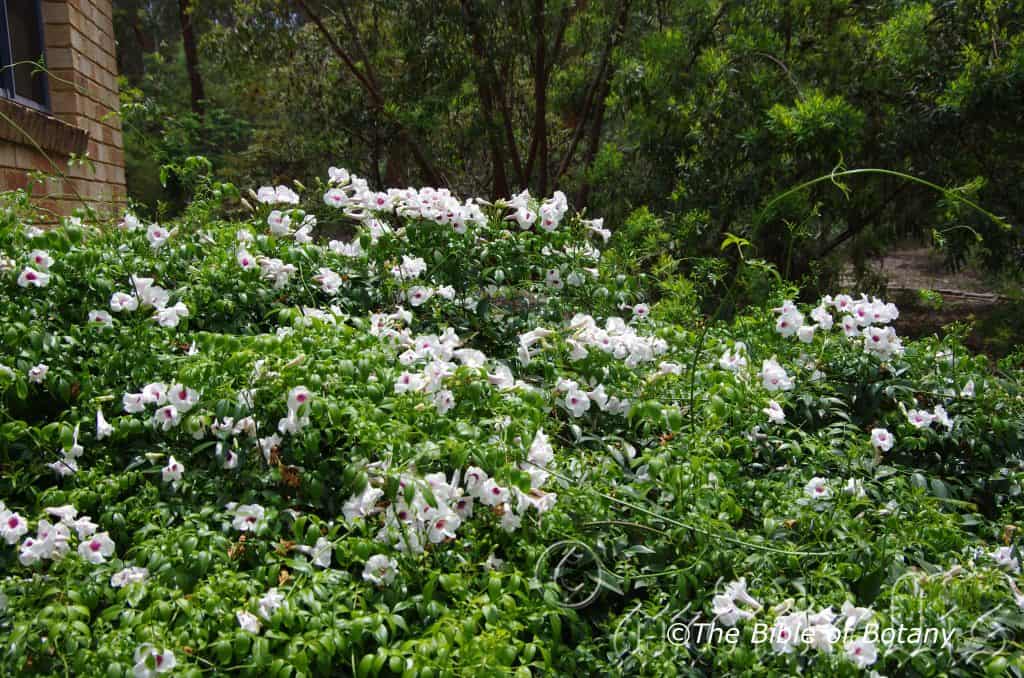
Author’s Garden The Pinnacles NSW
Pandorea jasminoides
Classification:
Unranked: Eudicots
Unranked: Rosids
Order: Sapindales
Family: Rutaceae
Genus: FromPandora, which is Ancient Greek for the first human woman created by the gods, specifically by Hephaestus and Athena on the instructions of Zeus. Each god created her and bestowed upon her unique gifts. All the gods joined in offering her “seductive gifts”. According to the myth, Pandora opened the pithos; a jar not Pandoras box as is mistranslated in modern accounts, releasing all the evils of humanity plagues and diseases, leaving only Hope inside once she had closed it again. It refers to vines, which have capsules that resemble the general outline of the pithos ewer or a box crossed with a jar.
Specie: From Jasminum, which is Latin for Jasminum and Oikes, which is Latin for alike or similar to. It refers to plants, which resemble the Jasminum Genus in growth habit or have a similar scent from the flowers.
Sub specie:
Common Name: Bower Vine or Bower of Beauty.
Distribution:
Pandorea jasminoides is found in several disjunct populations south from Bowen in central Queensland to the Hastings River in New South Wales. It is found on and east of the Great Dividing Range to the coast.
https://avh.ala.org.au/occurrences/search?taxa=Pandorea+jasminoides#tab_mapView
Habitat Aspect Climate:
Pandorea jasminoides prefers dappled shade to full sun. It grows in or adjacent to moist open woodlands, moist Eucalyptus forests, moist dry Rainforests or littoral rainforests. It is also found adjacent to coastal wallums and swamps. The altitude ranges from 20 meters ASL to 750 meters ASL.
The temperatures range from minus 4 degrees in July to 36 degrees in January.
The rainfall ranges from lows of 850mm to 1600mm average per annum.
Soil requirements:
Pandorea jasminoides prefers sandy loams to light clays with a high proportion of gravel. The soils are usually derived from decomposed sandstones, brown and black basalts, better quality shale or granites. The soils pH ranges from 5pH to 6pH. It does not tolerate of waterlogged soils. Non saline soils to moderately saline soils are tolerated.
Height & Spread:
Wild Plants: 2m to 15m by 4m to 10m
Characteristics:
Pandorea jasminoides grows as an erect tall woody climber. The main trunk is pale grey to grey scabrous and measures 60mm to 90mm in diameter. Stems are thin deep green and covered in farinaceous warts. Young shoots are deep sea-green and glabrous.
The opposite or nearly opposite odd pinnate leaves are sometimes in whirls of 3 and measure 120mm to 170mm in length. The 4 to 7 opposite ovate to lanceolate asymmetrical leaflets measure 45mm to 60mm in length by 15mm to 30mm in width. The bases are cuneate to rounded while the apexes are acuminate. The concolourous laminas are deep sea-green and glabrous. The leaf margins are entire and curve slightly upwards from the mid vein. The mid vein is slightly prominent on the lower lamina and is not visible on the upper lamina. The petioles measure 20mm to 40mm in length while the petiolules measure 20mm to 35mm in length.
The inflorescences of Pandorea jasminoides are born on large panicles from the terminals. The funnel form flowers are pastel pink to a mid-pink. The terete rachis measures 80mm to 130mm in length while the pedicels measure 5mm to 9mm in length. The deep sea-green, cupuliform calyxes measure 5 to 7mm in length. The variable corollas are pastel pink to deep pink externally and have pale pink to deep purple-carmine throats internally. The corolla tube and lobes are sparsely to moderately covered in minute, white pulverulent hairs externally while internally it is sparsely to moderately covered in minute, white pulverulent hairs outside the throat and white to deep carmine pilose hairs at the throat and internally. The corolla tubes measure 40mm to 60mm in length by 4mm to 6mm in diameter near the calyx and expand to 12mm to 20mm in diameter near the lobes. The 5 variable, obtuse lobes are entire, flat to undulating. The lobes measure 20mm to 30mm in length.
The filaments measure 2mm to 4mm in length. The glabrous ovary measures 4.5mm to 6mm in length. The style measures 12mm to 20mm in length and has a bilobed stigma. The faintly perfumed flowers appear from late September through to March. Flowering appears to be more prolific following cooler winter periods.
Pandorea jasminoides’s fruits are an oblong to ovoidal capsule. The deep green capsules turn deep semi glossy and brown when ripe externally and creamy white internally. They measure 40mm to 60mm long by 10mm to 20mm in diameter. The pastel fawn to pastel grey seeds are completely surrounded by a wing with a pronounced beak. They measure 12mm to 17mm in length by 10mm to 15mm in width including the 3mm wing.
Wildlife:
Pandorea jasminoides’s do not appear to have any predators though the flowers are visited by many small butterflies, native bees and beetles. The capsules and seeds are often eaten by an unknown weevil or beetle larvae.
Cultivation:
Pandorea jasminoides is a magnificent medium to large creeper that deserves a place in every warm temperate, sub-tropical or tropical native or exotic garden. It has been successfully grown in many western towns in central Australia’s semi-arid areas. It is ideal in almost every setting on pool fences, at the edge of a rain forest in court yards, pergolas or larger rockeries when their size is balanced. In cultivation it grows from 2 meters to 5 meters in height by 2 meters to 5 meters in width.
There are several colour varieties available from nurseries which have pure white blooms through to deep pink with deep carmine throats while others have variegated leaves. The variegated leaf varieties are less vigorous than the green leaf varieties.
It grows exceptionally well on lighter soils When deep leaf litter keeps the soil cool and moisture at an even level. If these requirements are met they can cope with temperatures as low as minus 2 degrees and up to 40 degrees. It is moderately drought resistant.
Add to the above, if it is given an adequate supply of native fertilizers on a regular basis the plants will respond with spectacular flowering over a long period.
It often reaches their full potential in just 5 years and flower from the third year from seed.
Be imaginative when planting on pergolas, fences or other structures. Use the plants in different configurations and with different creepers that flower at different times.
Use curves and light pruning after flowering or tip pruning will help to maintain the plant to a smaller size.
Ensure that the whole plant or at least most of it is on display from most sections of the garden as the flowers are a real bonus.
When it is in flower these plants will catch your attention and the viewer will be transfixed on the display rather than watching the path.
It would makes excellent topiary specimens being quick growing, capable of training into any shape though they would need regular attention.
Propagation:
Seeds: Seeds can be moved easily from the capsules once they have dried out. Sow freshly collected seeds directly into a seed raising mix, keeping them moist not wet. When the seedlings are 30mm to 40mm tall, prick them out and plant them into 50mm native tubes using a good organic mix.
As the seedlings roots ach the bottom of the tubes plant them out into their permanent position. Do not delay.
Cuttings: Fortunately Pandora jasminoides cuttings strike easy. My garden has the white flowering form native to this area as well as two northern forms so cross pollination would occur. Therefore cuttings must be used if a particular leaf form or flower colour is required. Use 100mm to 200mm long tip cuttings or lateral shoots from the present season’s growth. Take them in warmer months of the year. Remove half the leaves from the bottom section being careful not to tear the bark.
1 Prepare the cutting mix by adding two thirds sharp clean river sand, one third peat or one third perlite. These ingredients must be sterilized,
2 Select good material from non diseased plants,
3 Select semi green stems for cuttings. Look for a stem with two or three nodes,
4 Place the cutting on a flat, hard surface, and make a clean cut down one side of the cutting at the base for 10mm with a sharp sterile knife or razor blade. – This scarification of the node will increase the chances of roots emerging from this spot. Now remove all but one or two the leaves, leaving the apex leaves in tact. If the leaves are very large in proportion to the stem, cut off the apical halves.
5 Fill a saucer with water, and place a little medium strength rooting hormone into another container like a milk bottle top. Dip the node end of the cutting into the water and then into the rooting hormone. Tap off any excess hormone,
6 Use a small dipple stick or old pencil to poke a hole into the soilless potting mix. Ensure the hole is slightly larger than the stem diameter and be careful not to wipe the rooting hormone off the cuttings base. Place 2 to 4 cuttings in each of the 50mm native tubes,
7 I like to place the tubes in bucket with holes drilled in the bottom to allow excess water to drain out. A plastic bag that fits over the bucket is ideal to help maintain temperature and moisture. Place in a semi shaded, warm position like under 50mm shade cloth.
8 When the cuttings have struck, open the bag to allow air circulation for a few days to a week,
9 Once hardened off remove the cuttings from the bag and allow to further hardening for a few more days to a week,
10 Transplant into a good potting mix to grow on.
Fertilize using seaweed, fish emulsion or organic chicken pellets soaked in water on an alternate basis. Fertilize every two months until the plants are established then twice annually in early September or March to maintain health, vitality and better flowering.
Further Comments from Readers:
Hi reader, it seems you use The Bible of Botany a lot. That’s great as we have great pleasure in bringing it to you! It’s a little awkward for us to ask, but our first aim is to purchase land approximately 1,600 hectares to link several parcels of N.P. into one at The Pinnacles NSW Australia, but we need your help. We’re not salespeople. We’re amateur botanists who have dedicated over 30 years to saving the environment in a practical way. We depend on donations to reach our goal. If you donate just $5, the price of your coffee this Sunday, We can help to keep the planet alive in a real way and continue to bring you regular updates and features on Australian plants all in one Botanical Bible. Any support is greatly appreciated. Thank you.
In the spirit of reconciliation we acknowledge the Bundjalung, Gumbaynggirr and Yaegl and all aboriginal nations throughout Australia and their connections to land, sea and community. We pay our respect to their Elders past, present and future for the pleasures we have gained.
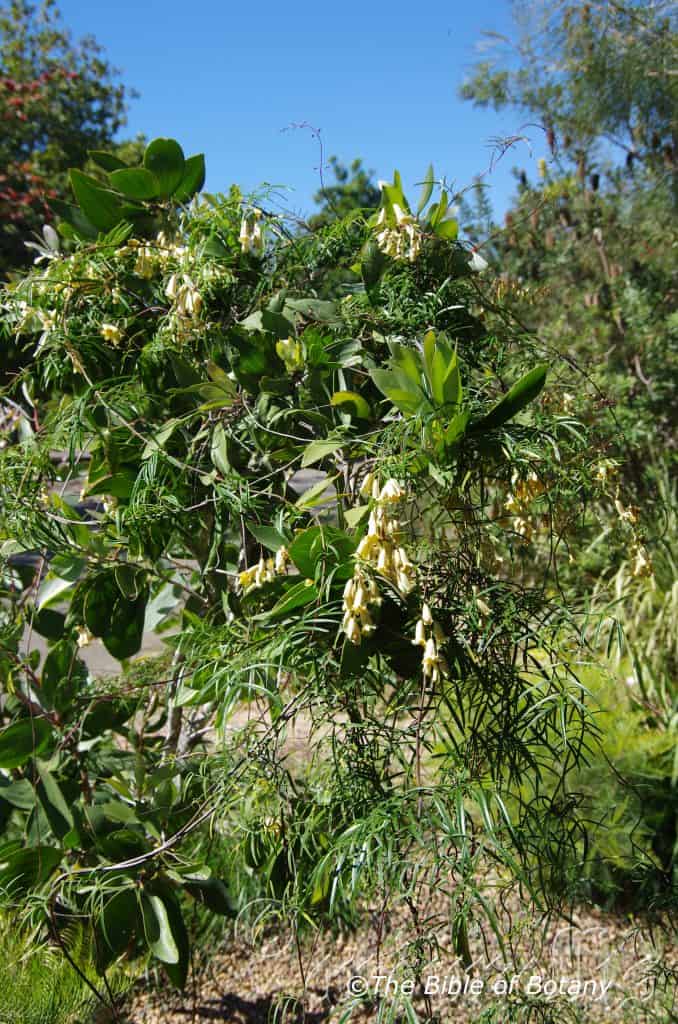
Paluma Range National Park Qld.
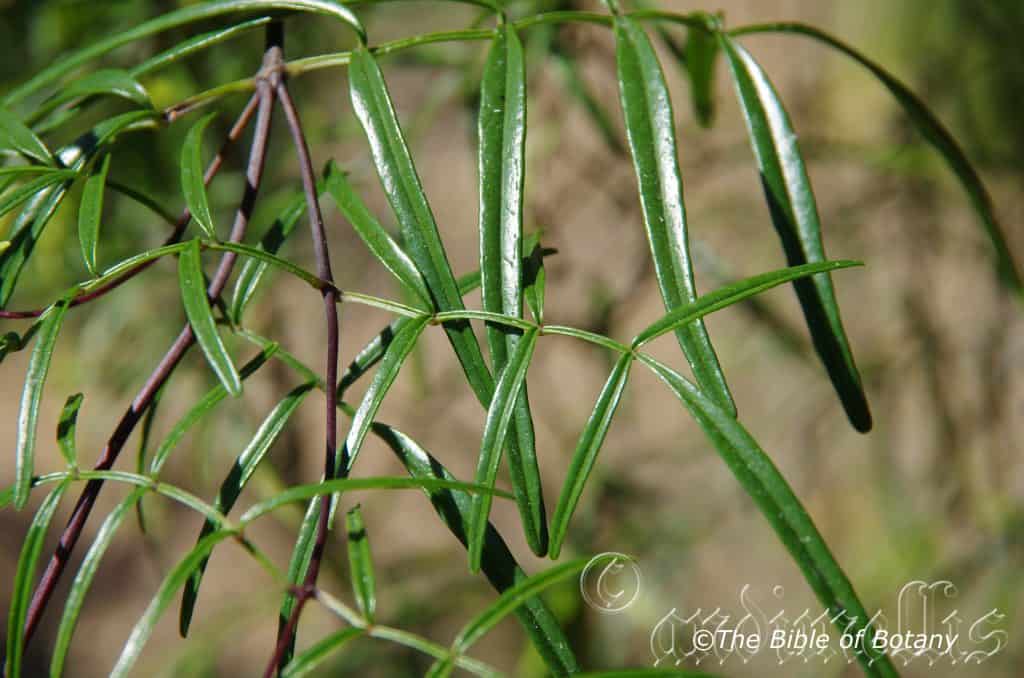
Paluma Range National Park Qld.
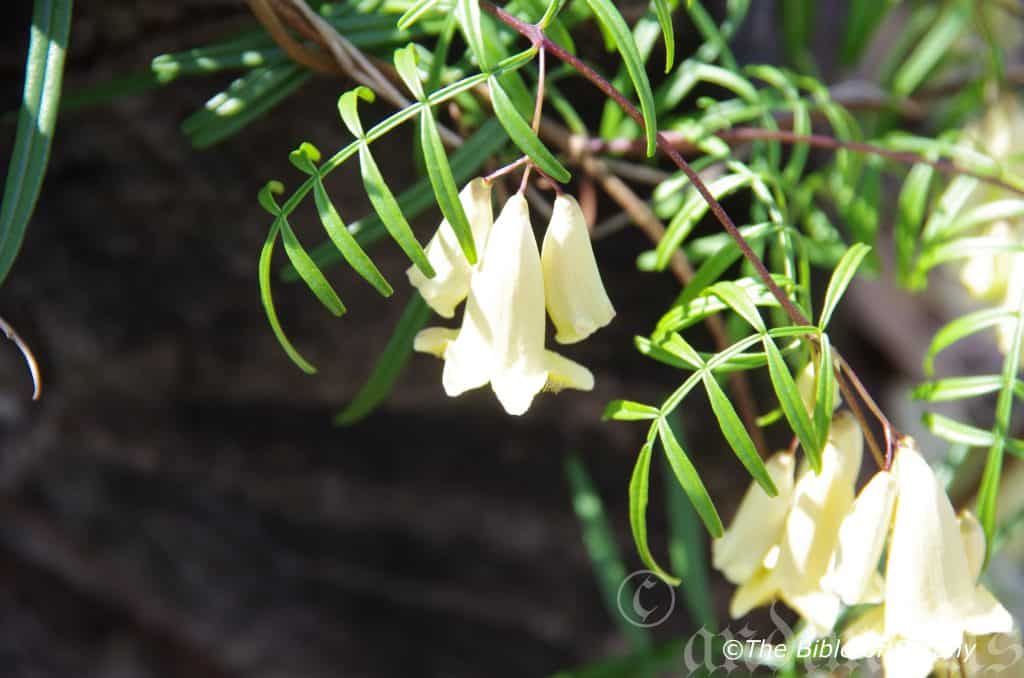
Castle Hill Townsville Qld.
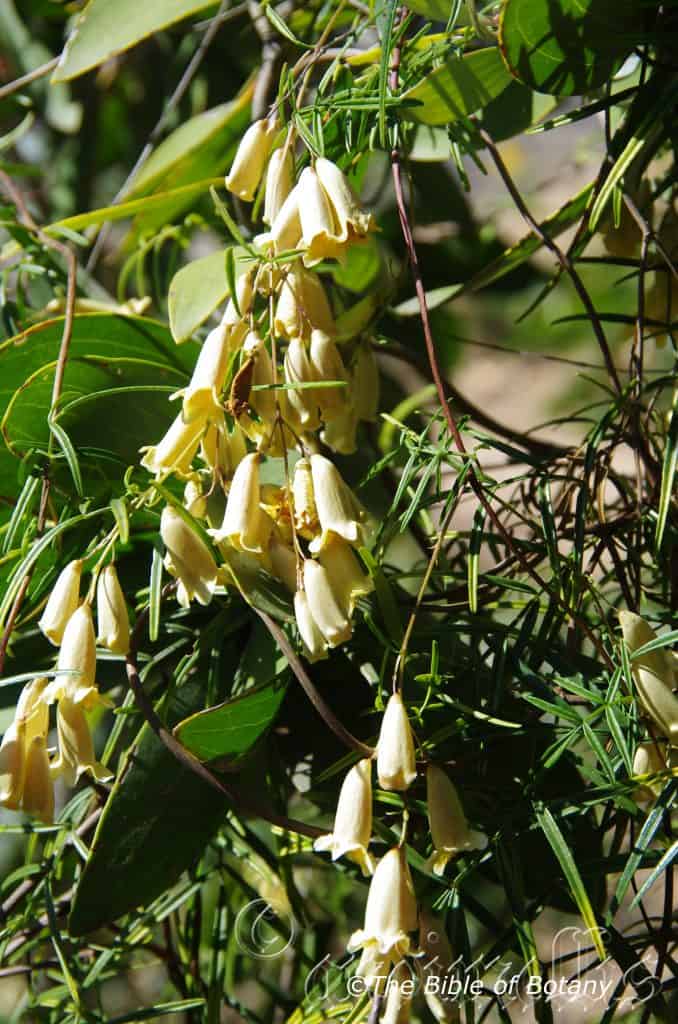
Paluma Range National Park Qld.
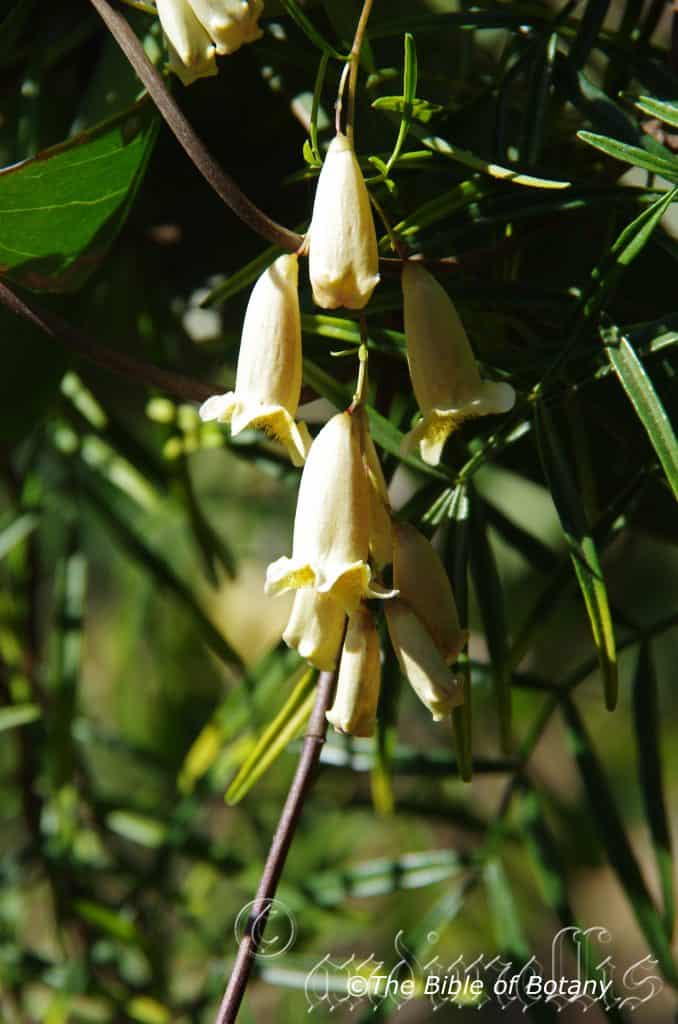
Paluma Range National Park Qld.
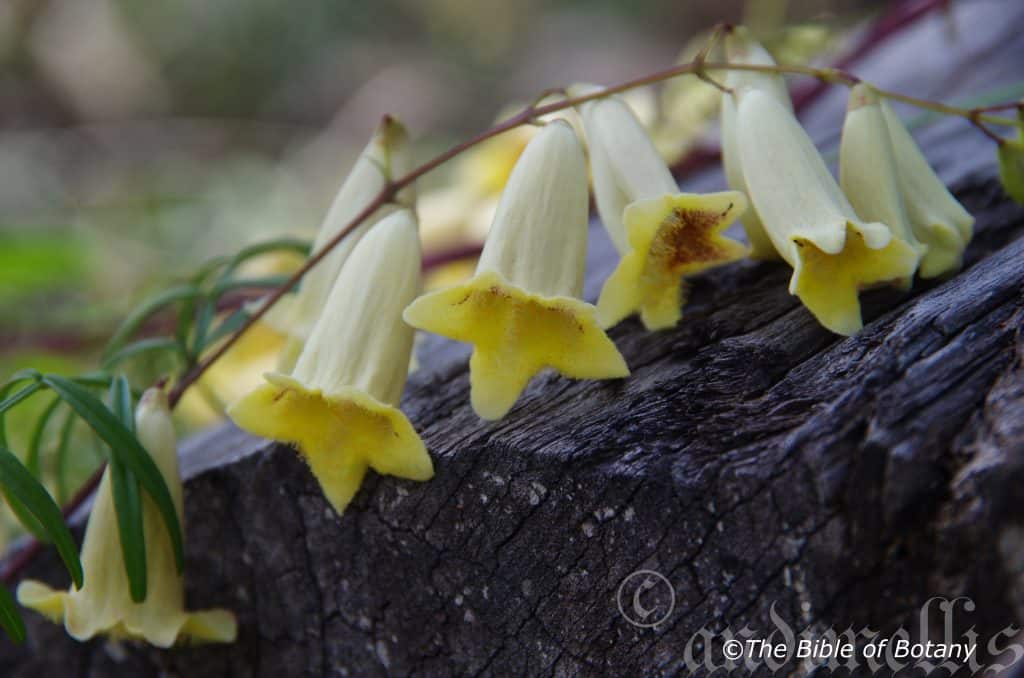
Castle Hill Townsville Qld.
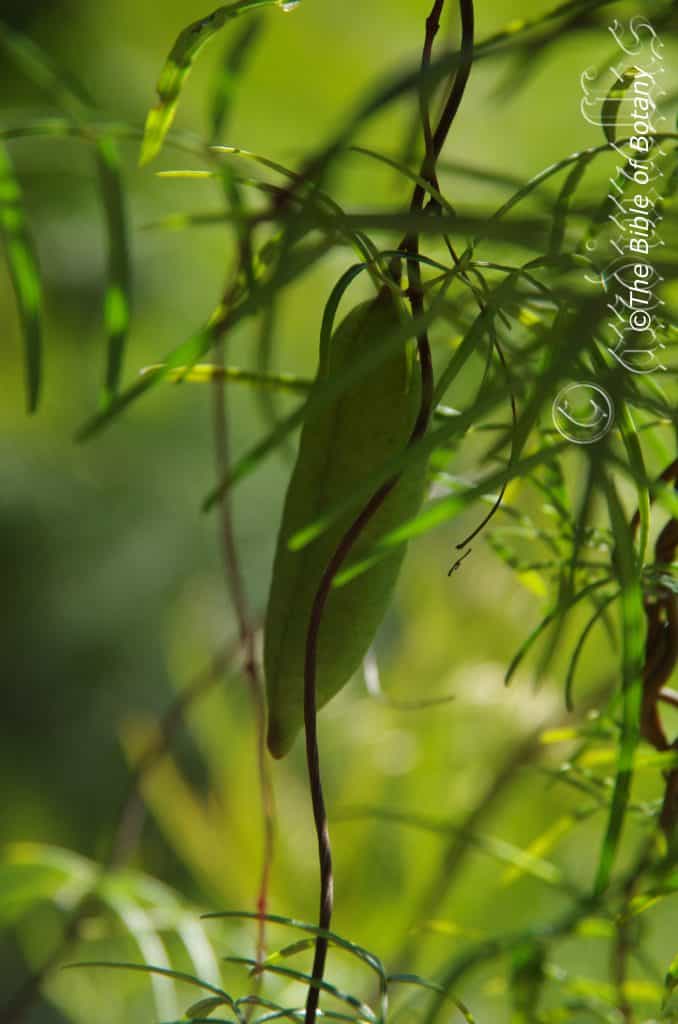
Paluma Range National Park Qld.
Pandorea linearis
Classification:
Unranked: Eudicots
Unranked: Rosids
Order: Sapindales
Family: Rutaceae
Genus: FromPandora, which is Ancient Greek for the first human woman created by the gods, specifically by Hephaestus and Athena on the instructions of Zeus. Each god created her and bestowed upon her unique gifts. All the gods joined in offering her “seductive gifts”. According to the myth, Pandora opened the pithos; a jar not Pandoras box as is mistranslated in modern accounts, releasing all the evils of humanity plagues and diseases, leaving only Hope inside once she had closed it again. It refers to vines, which have capsules that resemble the general outline of the pithos ewer or a box crossed with a jar.
Specie: FromLinearis, which is Latin for Linum or the flax plant. It refers to leaves of plants, which resemble the flax plant.
Sub specie: Pandora linearis var. linearis FromLinearis, which is Latin for Linum or the flax plant. It refers to leaves of plants, which resemble the flax plant. It is the only variety found in Australia.
Common Name: Spearwood Vine, Wonga Vine or Wonga Wonga Vine.
Distribution:
Pandora linearis is found in several scattered populations south from Tolga to Port Dennison in north eastern Queensland. It is found on the western slopes of the Great Dividing Range on and east of the range to the coast.
https://avh.ala.org.au/occurrences/search?taxa=Pandorea+linearis#tab_mapView
Habitat Aspect Climate:
Pandora linearis prefers dappled shade to full sun. It grows in or adjacent to moist open woodlands, moist Eucalyptus forests or dry Rainforests. It is also found adjacent to coastal wallums and swamps. The altitude ranges from 20 meters ASL to 950 meters ASL.
The temperatures range from 4 degrees in July to 38 degrees in January.
The rainfall ranges from lows of 800mm to 1600mm average per annum.
Soil requirements:
Pandora linearis prefers sandy loams to light clays with a high proportion of gravel. The soils are usually derived from decomposed granites. The soils pH ranges from 5pH to 6pH. It does not tolerate of waterlogged soils. Non saline soils to moderately saline soils are tolerated.
Height & Spread:
Wild Plants: 2m to 6m by 4m to 6m
Characteristics:
Measurements from two adjacent plants on The Paluma Range National Park.
Pandora linearis grows as a scrambly climber. The main trunk is pale grey and glabrous. Older stems are burgundy and glabrous while the young stems are green and glabrous.
The opposite odd pinnate leaves are measure 120mm to 170mm in length. The 3 to 7 opposite linear leaflets measure 25mm to 50mm in length by 4mm to 6mm in width. The apex leaf is the longest. The petioles measure 8mm to 12mm in length, the rachis measures 55mm to 65mm in length, while the leaflets are sessile. The petiole and rachis are deeply furrowed on the upper lamina. The bases taper to the rachis while the apexes are emarginate. The concolourous laminas are deep green, glossy and glabrous. The leaf margins are entire and curve upwards from the mid vein. The mid vein is slightly prominent on the lower lamina and is not visible on the upper lamina.
The inflorescences of Pandora linearis are born on panicles from the terminals. The flattened ovate form flowers are cream to pale yellowish. The terete rachis measures 60mm to 100mm in length while the pedicels measure 7mm to 8mm in length. The pale yellowish cupular calyx’s measure 5 to 7mm in length. The 5 calyx lobes measure 0.8mm to 1mm in length. The lobes are densely covered in creamy coloured long hairs internally. The cream, pale creamy-yellow flowers are sparsely to moderately dotted with fawn to pale brown dots internally. The corollas measure 10mm to 25mm in length by 5mm to 7mm in diameter near the calyx to 10mm to 12mm in width near the lobes. The dimorphic lobes vary from oblong, acute to obtuse are entire, flat to strongly undulating and divaricate. The lobes measure 3mm to 6mm in length.
The 4 stamens are dimorphic in two pairs. The faintly perfumed flowers appear from July to August.
Pandora linearis’s fruits are an oblong to ovoidal capsules, which are flattened on the upper surface, have a deep longitudinal furrow and an oblong beak. The olive-green capsules turn grey-brown when ripe externally and creamy white internally. They measure 50mm to 70mm long by 12mm to 20mm in diameter. The pastel fawn to pastel grey seeds are completely surrounded by a membranous wing.
Wildlife:
Pandora linearis’s do not appear to have any predators though the flowers are visited by the native bee, Tetragonula carbonaria.
Cultivation:
Pandora linearis is a magnificent medium to large creeper that deserves a place in every warm temperate, sub-tropical or tropical native or exotic garden. It has been successfully grown in many western towns in central Australia’s semi-arid areas. It is ideal in almost every setting on pool fences, at the edge of a rain forest in court yards, pergolas or larger rockeries when their size is balanced. In cultivation it grows from 2 meters to 5 meters in height by 2 meters to 5 meters in width.
There are several colour varieties available from nurseries which have pure white blooms through to deep pink with deep carmine throats while others have variegated leaves. The variegated leaf varieties are less vigorous than the green leaf varieties.
It grows exceptionally well on lighter soils when deep leaf litter keeps the soil cool and moisture at an even level. If these requirements are met they can cope with temperatures as low as minus 2 degrees and up to 40 degrees. It is moderately drought resistant.
Add to the above, if it is given an adequate supply of native fertilizers and mulch on an annual basis the plants will respond with spectacular flowering within just 5 years and flower from the third year from seed.
Be imaginative when planting on pergolas, fences or other structures. Use the plants in different configurations and with different creepers that flower at different times.
Use curves and light pruning after flowering or tip pruning will help to maintain the plant to a smaller size.
Ensure that the whole plant or at least most of it is on display from most sections of the garden as the flowers are a real bonus.
When it is in flower Pandora linearis will catch your attention and the viewer will be transfixed on the display rather than watching the path.
It would makes excellent topiary specimens being quick growing, capable of training into any shape though they would need regular attention.
Propagation:
Seeds: Seeds can be moved easily from the capsules once they have dried out. Sow freshly collected seeds directly into a seed raising mix, keeping them moist not wet. When the seedlings are 30mm to 40mm tall, prick them out and plant them into 50mm native tubes using a good organic mix.
As the seedlings roots ach the bottom of the tubes plant them out into their permanent position. Do not delay.
Cuttings: Fortunately Pandora linearis cuttings strike easy. My garden has the white flowering form native to this area as well as two northern forms so cross pollination would occur. Therefore cuttings must be used if a particular leaf form or flower colour is required. Use 100mm to 200mm long tip cuttings or lateral shoots from the present season’s growth. Take them in warmer months of the year. Remove half the leaves from the bottom section being careful not to tear the bark.
1 Prepare the cutting mix by adding two thirds sharp clean river sand, one third peat or one third perlite. These ingredients must be sterilized,
2 Select good material from non diseased plants,
3 Select semi green stems for cuttings. Look for a stem with two or three nodes,
4 Place the cutting on a flat, hard surface, and make a clean cut down one side of the cutting at the base for 10mm with a sharp sterile knife or razor blade. – This scarification of the node will increase the chances of roots emerging from this spot. Now remove all but one or two the leaves, leaving the apex leaves in tact. If the leaves are very large in proportion to the stem, cut off the apical halves.
5 Fill a saucer with water, and place a little medium strength rooting hormone into another container like a milk bottle top. Dip the node end of the cutting into the water and then into the rooting hormone. Tap off any excess hormone,
6 Use a small dipple stick or old pencil to poke a hole into the soilless potting mix. Ensure the hole is slightly larger than the stem diameter and be careful not to wipe the rooting hormone off the cuttings base. Place 2 to 4 cuttings in each of the 50mm native tubes,
7 I like to place the tubes in bucket with holes drilled in the bottom to allow excess water to drain out. A plastic bag that fits over the bucket is ideal to help maintain temperature and moisture. Place in a semi shaded, warm position like under 50mm shade cloth.
8 When the cuttings have struck, open the bag to allow air circulation for a few days to a week,
9 Once hardened off remove the cuttings from the bag and allow to further hardening for a few more days to a week,
10 Transplant into a good potting mix to grow on.
Fertilize using seaweed, fish emulsion or organic chicken pellets soaked in water on an alternate basis. Fertilize every two months until the plants are established then twice annually in early September or March to maintain health, vitality and better flowering.
Further Comments from Readers:
Hi reader, it seems you use The Bible of Botany a lot. That’s great as we have great pleasure in bringing it to you! It’s a little awkward for us to ask, but our first aim is to purchase land approximately 1,600 hectares to link several parcels of N.P. into one at The Pinnacles NSW Australia, but we need your help. We’re not salespeople. We’re amateur botanists who have dedicated over 30 years to saving the environment in a practical way. We depend on donations to reach our goal. If you donate just $5, the price of your coffee this Sunday, We can help to keep the planet alive in a real way and continue to bring you regular updates and features on Australian plants all in one Botanical Bible. Any support is greatly appreciated. Thank you.
In the spirit of reconciliation we acknowledge the Bundjalung, Gumbaynggirr and Yaegl and all aboriginal nations throughout Australia and their connections to land, sea and community. We pay our respect to their Elders past, present and future for the pleasures we have gained.
Pandorea nervosa
Classification:
Unranked: Eudicots
Unranked: Rosids
Order: Sapindales
Family: Rutaceae
Genus: FromPandora, which is Ancient Greek for the first human woman created by the gods, specifically by Hephaestus and Athena on the instructions of Zeus. Each god created her and bestowed upon her unique gifts. All the gods joined in offering her “seductive gifts”. According to the myth, Pandora opened the pithos; a jar not Pandoras box as is mistranslated in modern accounts, releasing all the evils of humanity plagues and diseases, leaving only Hope inside once she had closed it again. It refers to vines, which have capsules that resemble the general outline of the pithos ewer or a box crossed with a jar.
Specie: FromNeuron, which is Ancient Greek or Nervosus, which is Latin for a nerve. It refers to leaves or phyllodes which have prominent veins.
Sub specie:
Common Name:
Distribution:
Pandorea nervosa is restricted to an area between Tulley in the south, north to Port Douglas and the Daintree National Park in Queensland east of the Great Dividing Range.
https://avh.ala.org.au/occurrences/search?taxa=Pandorea+nervosa#tab_mapView
Habitat Aspect Climate:
Pandorea nervosa prefers dappled shade to full sun. It grows in or adjacent to moist open woodlands, moist Eucalyptus frosts, moist dry Rainforests or littoral rainforests. It is also found adjacent to coastal wallums and swamps. The altitude ranges from 450 meters ASL to 1150 meters ASL.
The temperatures range from minus 4 degrees in July to 36 degrees in January.
The rainfall ranges from lows of 850mm to 1600mm average per annum.
Soil requirements:
Pandorea nervosa prefers sandy loams to light clays with a high proportion of gravel or stone. The soils are usually derived from decomposed sandstones, brown basalts or black basalts. The soils pH ranges from 5pH to 6pH. It does not tolerate of waterlogged soils. Non saline soils to moderately saline soils are tolerated.
Height & Spread:
Wild Plants: 2m to 10m by 4m to 8m.
Characteristics:
Pandorea nervosa grows as an erect tall woody climber. The main trunk is pale fawn to fawn-grey, scabrous to flaky and measures 25mm to 35mm in diameter. The stems are thin deep burgundy and glabrous. Young shoots are deep burgundy and glabrous.
The opposite odd pinnate leaves measure 100mm to 200mm in length. The 4 to 7 opposite ovate to elliptical, slightly asymmetrical leaflets measure 45mm to 100mm in length by 10mm to 50mm in width. The bases are broadly cuneate to cuneate-rounded and slightly attenuate while the apexes are acuminate. The concolourous laminas are deep sea-green and glabrous. The leaf margins a sparsely finely toothed and curve slightly upwards from the mid vein. The mid vein and the main lateral veins prominent on the lower lamina and a visible on the upper lamina. The deep burgundy petioles measure 30mm to 65mm in length while the petiolules are sessile to 1mm in length.
The inflorescences ofPandorea nervosa are born on large dense panicles from the terminals. The funnel form flowers are white to very pale pink. The round rachis measures 80mm to 130mm in length while the pedicels measure 2mm to 5mm in length. The deep burgundy, urn shape calyxes measure 5 to 6.5mm in length including the 1.5mm triangular lobes. The variable corollas are white to very pale pink externally and have pale pink throats internally. It is covered in white pulverulent hairs internally and glabrous externally. They measure 30mm to 36mm in length by 4mm to 5mm in diameter near the calyx to 9mm to 11mm in diameter near the lobes. The variable, oblong lobes have an obtuse apex which is entire to crenate and undulating. The lobes measure 7mm to 10mm in length.
The 4 stamen’s anthers are spreading and a joined at one end.
The glabrous ovary measures 4mm in length. The style measures 32mm to 40mm in length and has a flat bilobed stigma. The faintly perfumed flowers probably appear all year. The only record I have is in September and October.
Pandorea nervosa’s fruits are an elongated capsule. The deep green capsules turn deep semi glossy and brown when ripe externally and creamy white internally. The calyx is persistent on the capsules which measure 80mm to 125mm long by 15mm to 23mm in diameter. There is a 5mm to 8mm wing surrounding the seeds on all sides except the base. The seeds measure 4.5 to 5.5mm in length.
Wildlife:
Pandorea nervosa’s wildlife is unknown to the author.
Cultivation:
Pandorea nervosa is a magnificent medium to large creeper that deserves a place in every warm temperate, sub-tropical or tropical native or exotic garden. It is ideal in almost every setting on pool fences, at the edge of a rain forest in court yards, pergolas or larger rockeries when their size is balanced. In cultivation they will grow from 2 meters to 5 meters in height by 2 meters to 5 meters in width.
It grows exceptionally well on lighter soils When deep leaf litter keeps the soil cool and moisture at an even level. If these requirements are met they can cope with temperatures as low as 2 degrees and up to 40 degrees. It is moderately drought resistant.
Add to the above, if it is given an adequate supply of native fertilizers on a regular basis the plants will respond with spectacular flowering over a long period.
They often reach their full potential in just 5 years and flower from the third year from seed.
Be imaginative when planting on pergolas, fences or other structures. Use the plants in different configurations and with different creepers that flower at different times.
Use curves and light pruning after flowering or tip pruning will help to maintain the plant to a smaller size.
Ensure that the whole plant or at least most of it is on display from most sections of the garden as the flowers are a real bonus.
When it is in flower these plants will catch your attention and the viewer will be transfixed on the display rather than watching the path.
Propagation:
Seeds: Seeds can be moved easily from the capsules once they have dried out. Sow freshly collected seeds directly into a seed raising mix, keeping them moist not wet. When the seedlings are 30mm to 40mm tall, prick them out and plant them into 50mm native tubes using a good organic mix.
As the seedlings roots ach the bottom of the tubes plant them out into their permanent position. Do not delay.
Cuttings: Pandorea nervosa strike very easy from cuttings. Use 50mm to 70mm long cuttings from the previous season’s growth after it has hardened off. Take them in early autumn or after the last frosts in early spring. Take a slice off the bark from one side 10mm from the base down to the base and apply a weak strength rooting hormone to the bottom 10mm. Place the cutting into a sterile moist mix. When the cuttings have obviously struck and have developed good roots prick them out and plant them into 50mm native tubes. Return the tubes when they have been growing to further harden off before moving them to a new location and or planting out.
Fertilize using seaweed, fish emulsion or organic chicken pellets soaked in water on an alternate basis. Fertilize every two months until the plants are established then twice annually in early September and March to maintain better health, vitality and flowering.
Further Comments from Readers:
Hi reader, it seems you use The Bible of Botany a lot. That’s great as we have great pleasure in bringing it to you! It’s a little awkward for us to ask, but our first aim is to purchase land approximately 1,600 hectares to link several parcels of N.P. into one at The Pinnacles NSW Australia, but we need your help. We’re not salespeople. We’re amateur botanists who have dedicated over 30 years to saving the environment in a practical way. We depend on donations to reach our goal. If you donate just $5, the price of your coffee this Sunday, We can help to keep the planet alive in a real way and continue to bring you regular updates and features on Australian plants all in one Botanical Bible. Any support is greatly appreciated. Thank you.
In the spirit of reconciliation we acknowledge the Bundjalung, Gumbaynggirr and Yaegl and all aboriginal nations throughout Australia and their connections to land, sea and community. We pay our respect to their Elders past, present and future for the pleasures we have gained.
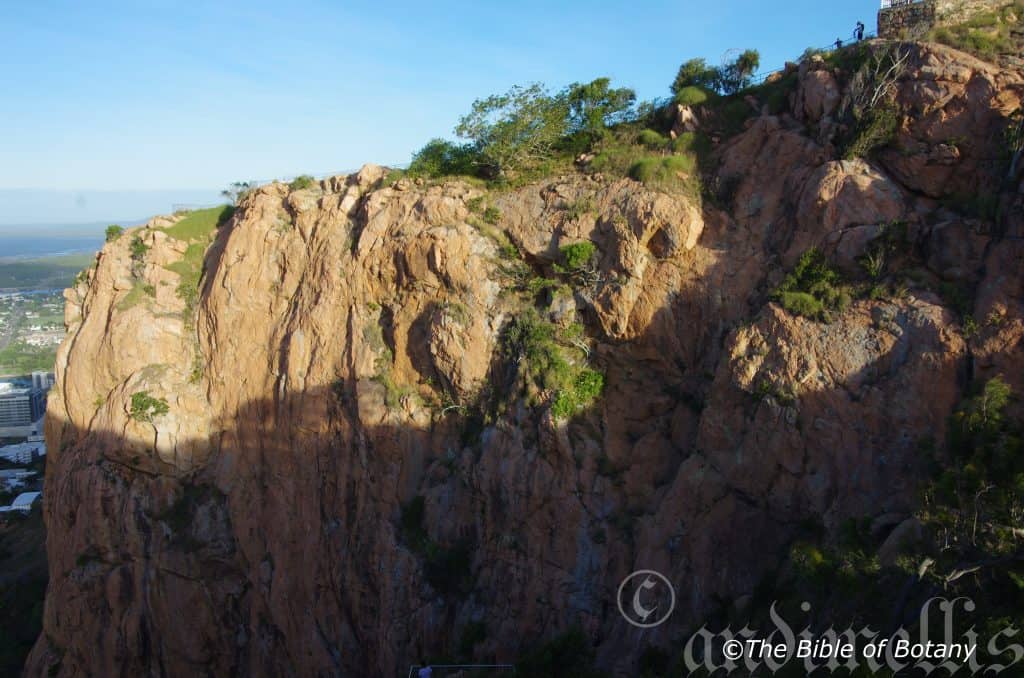
Castle Hill Townsville Qld.
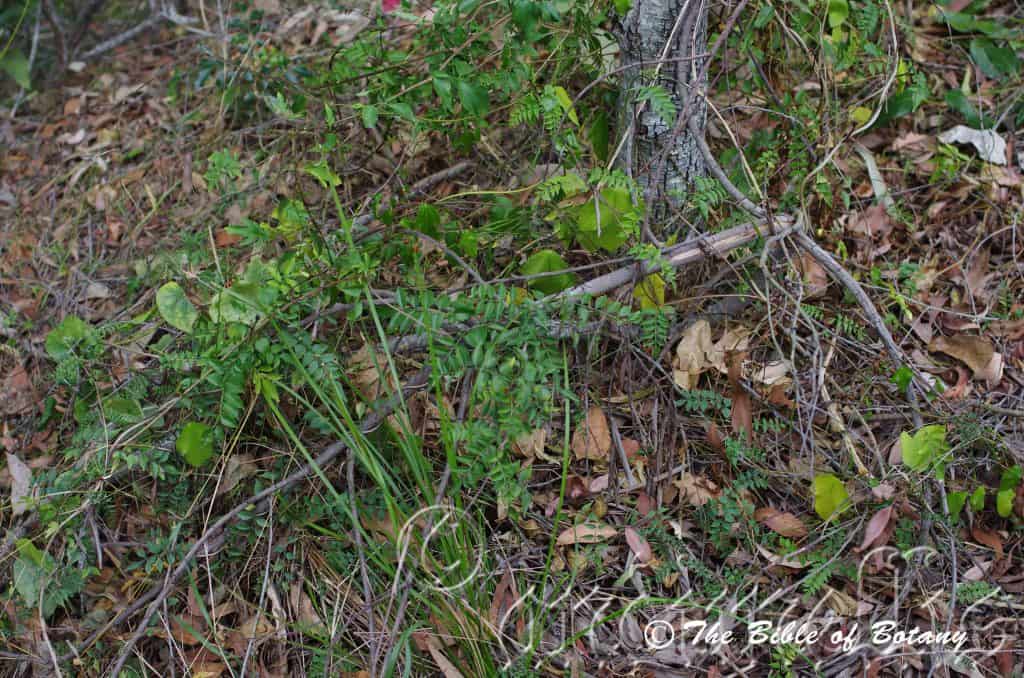
Toohey National Park Qld.
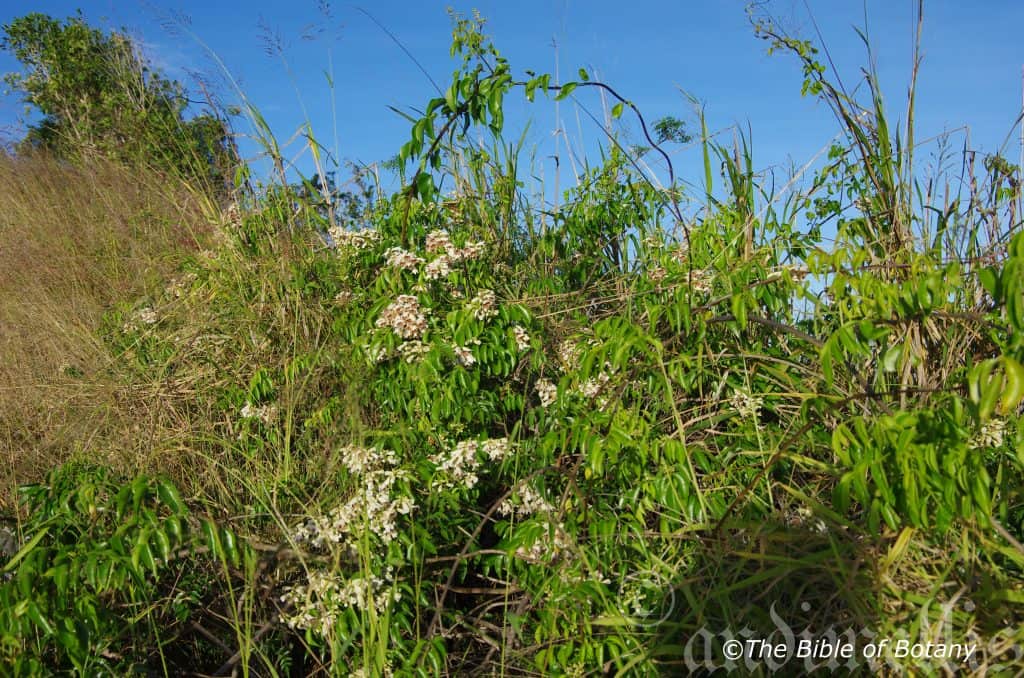
Castle Hill Townsville Qld.
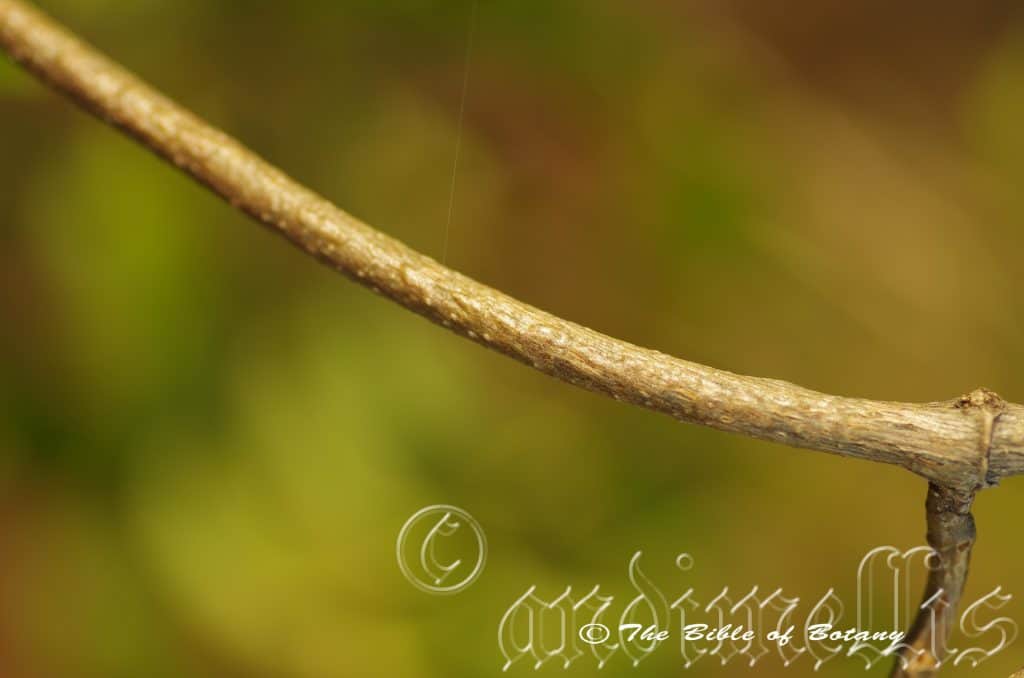
Castle Hill Townsville Qld.
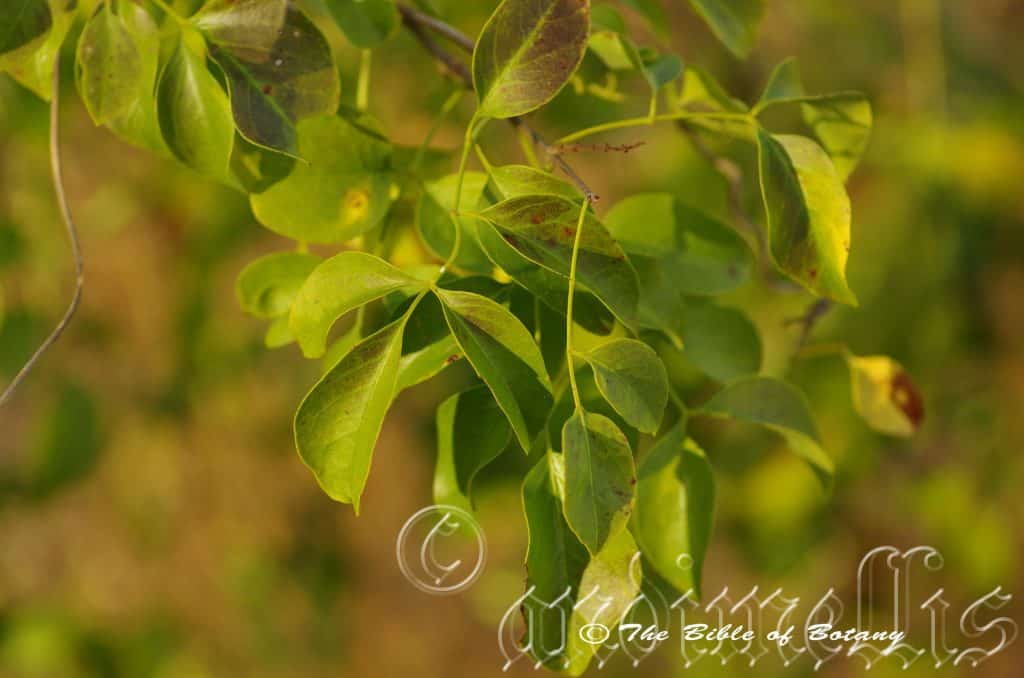
Castle Hill Townsville Qld.
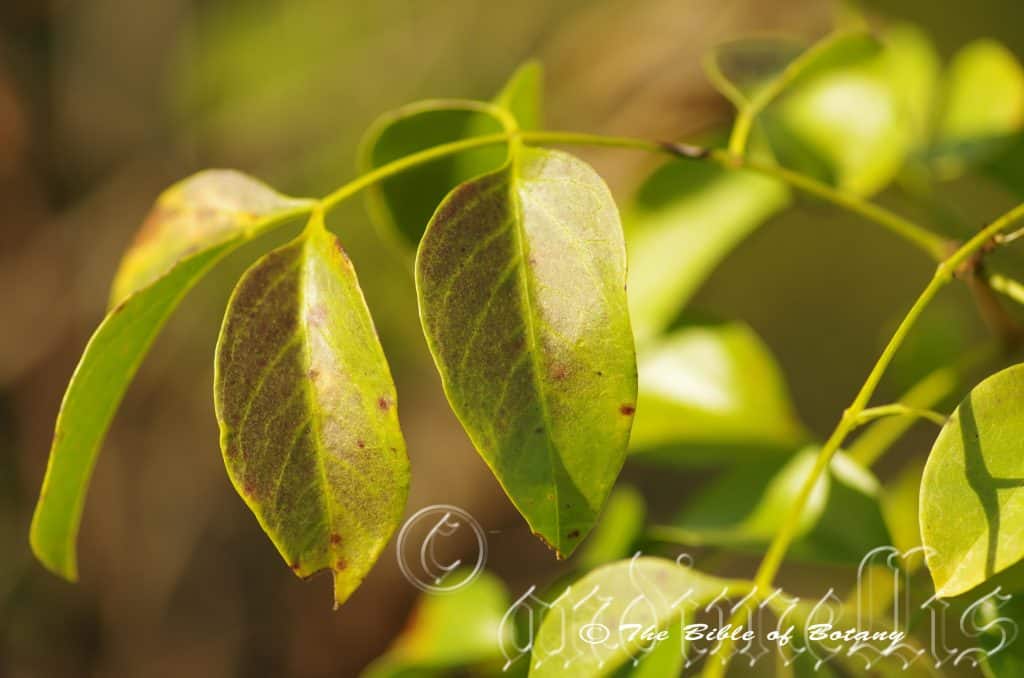
Castle Hill Townsville Qld.
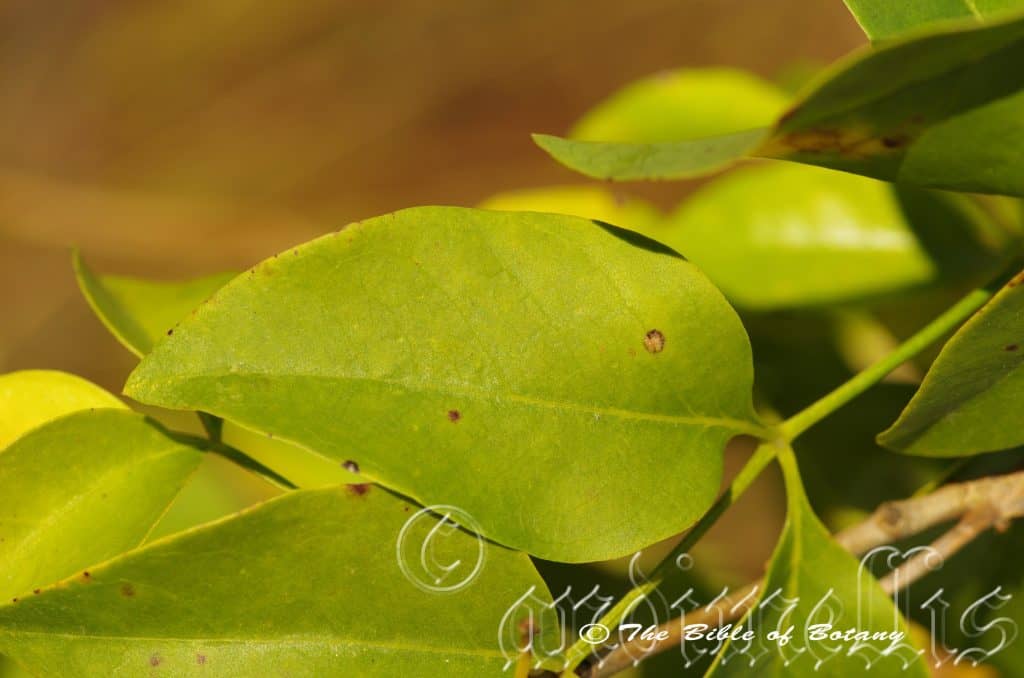
Castle Hill Townsville Qld.
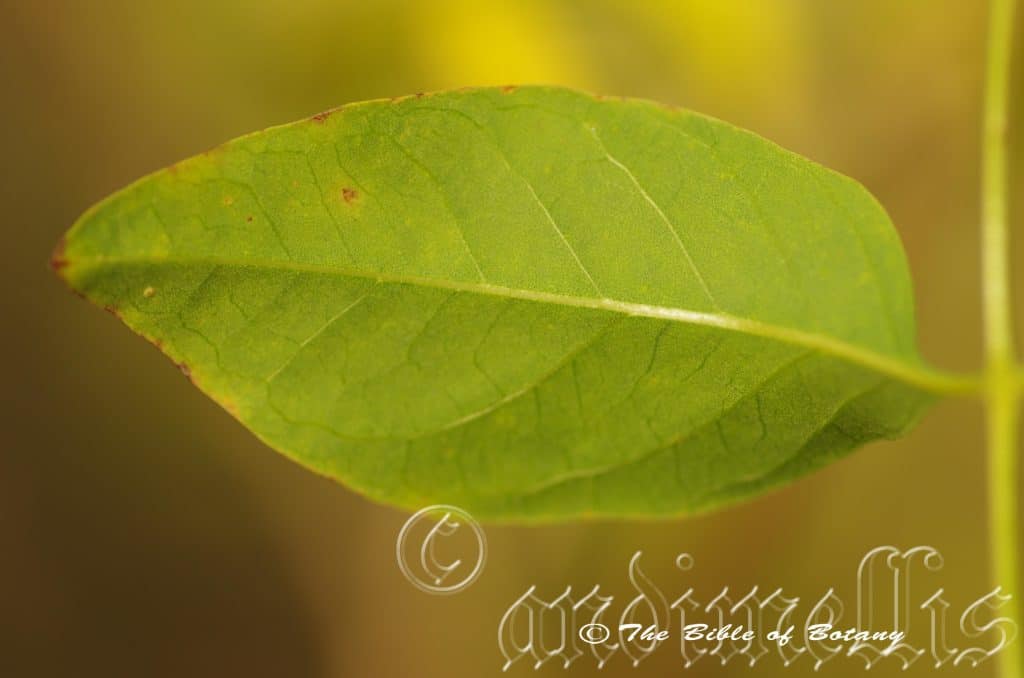
Castle Hill Townsville Qld.
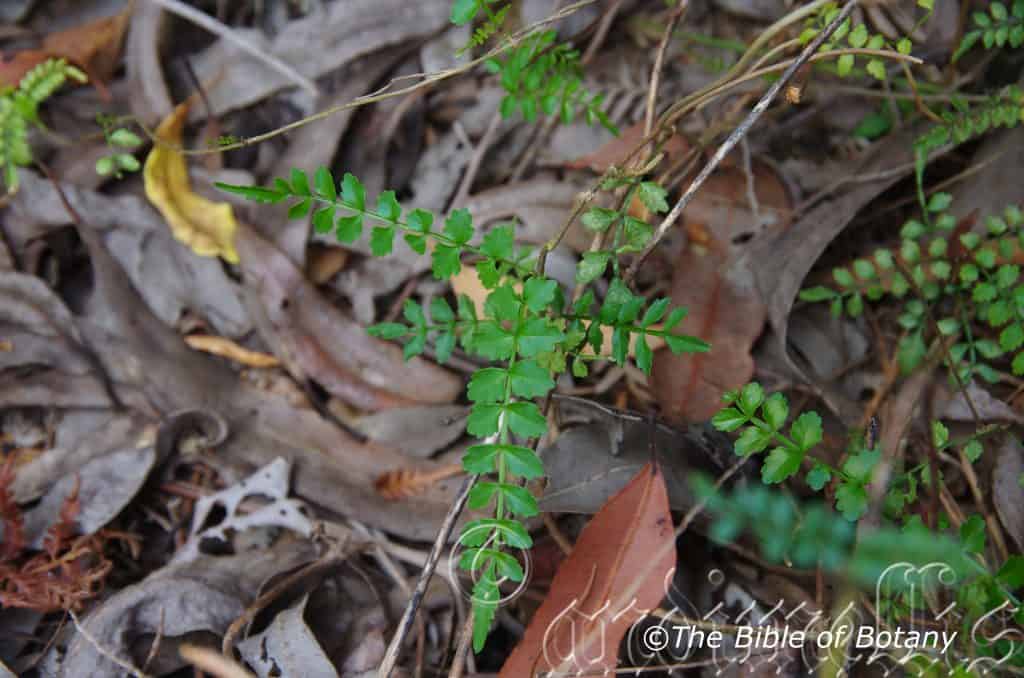
Author’s Garden The Pinnacles NSW
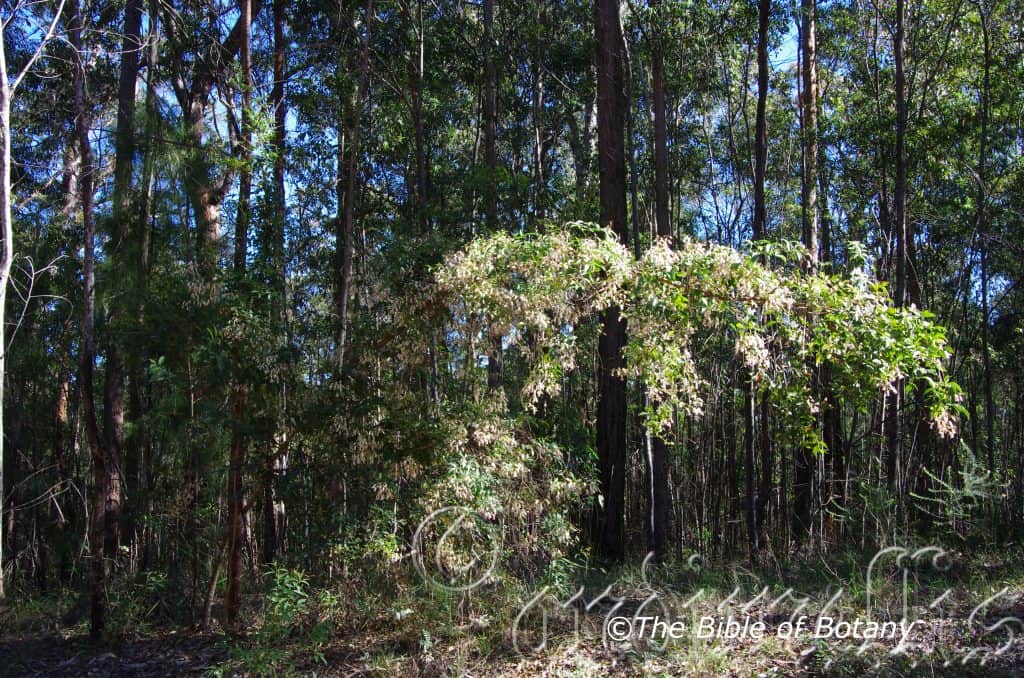

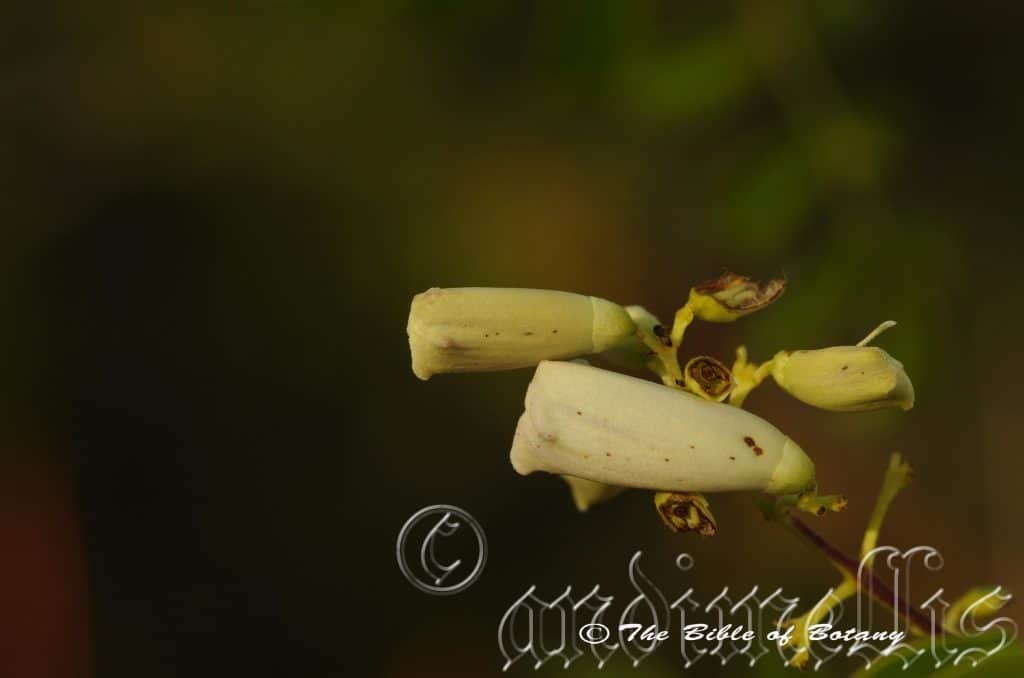
Castle Hill Townsville Qld.
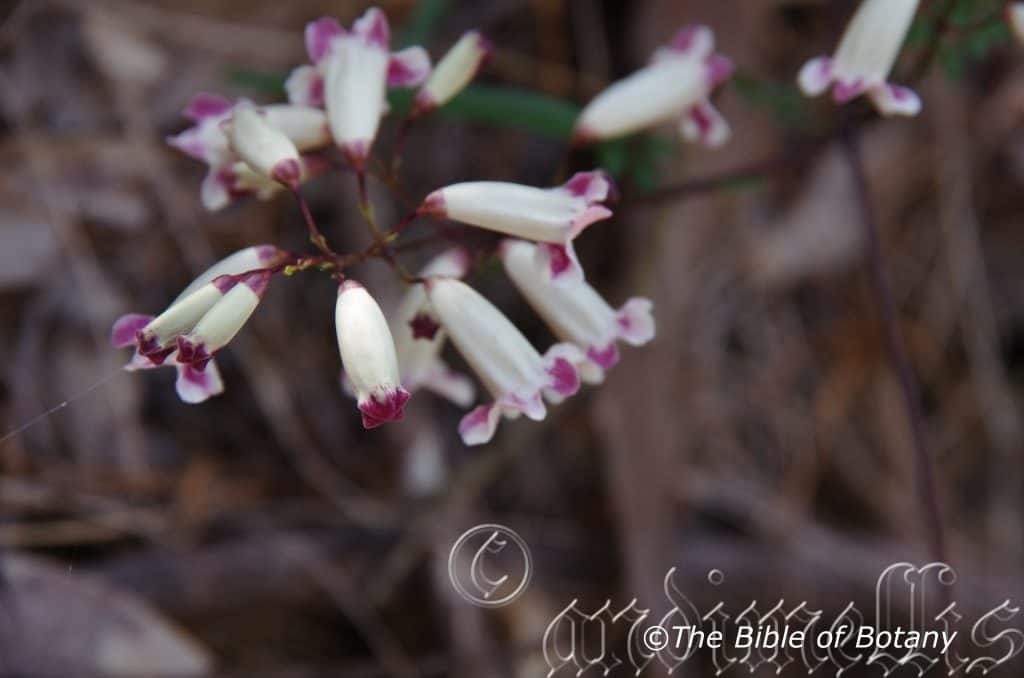
Wooli NSW
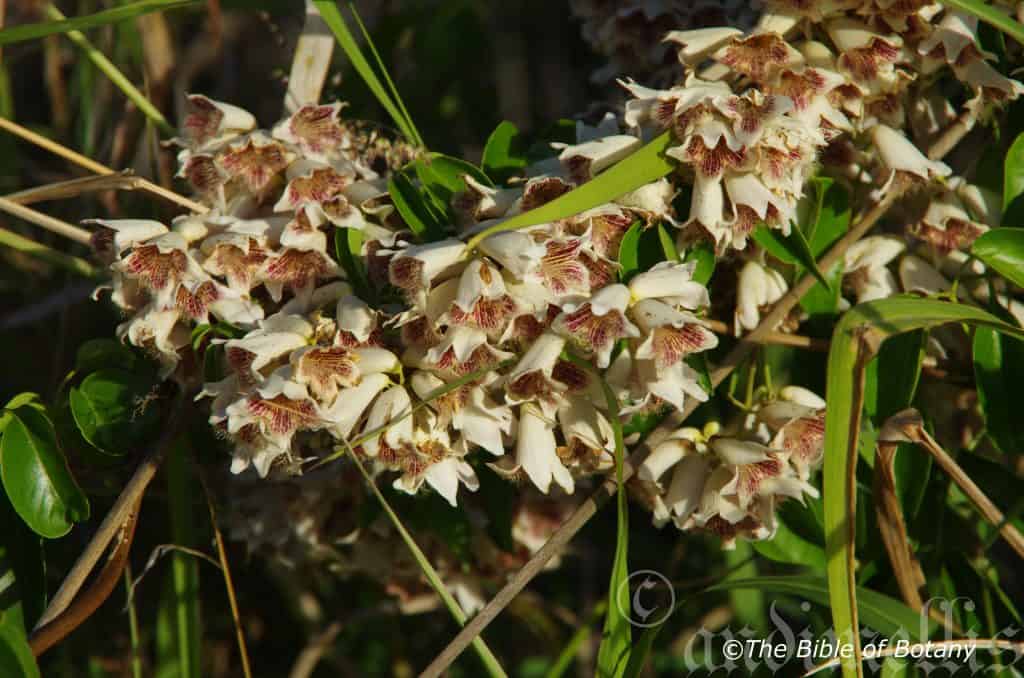
Castle Hill Townsville Qld.
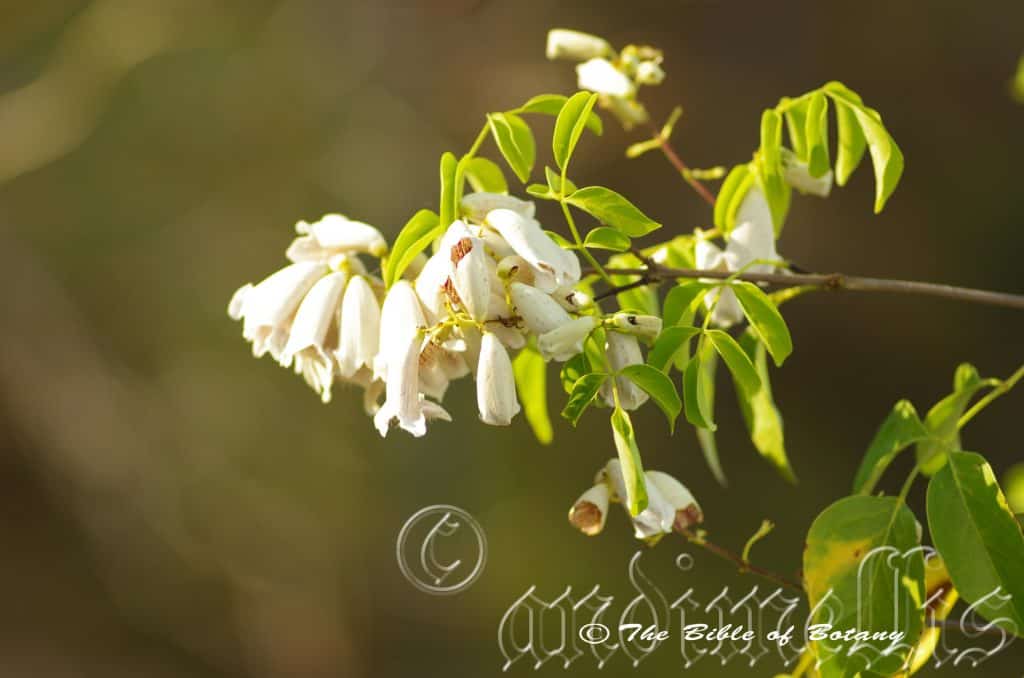
Castle Hill Townsville Qld.
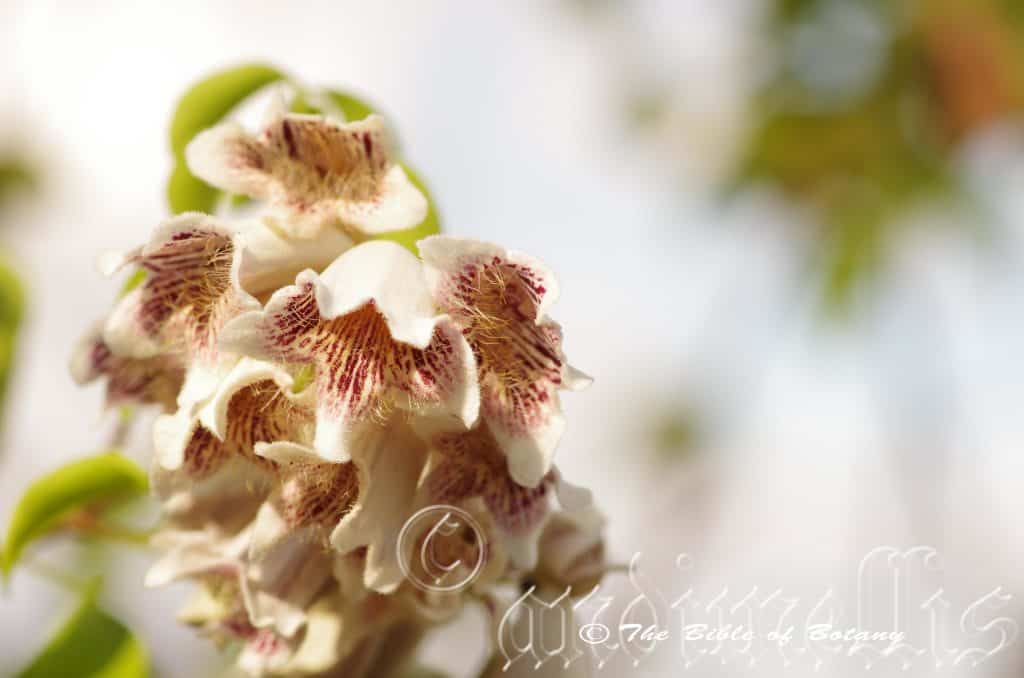
Castle Hill Townsville Qld.
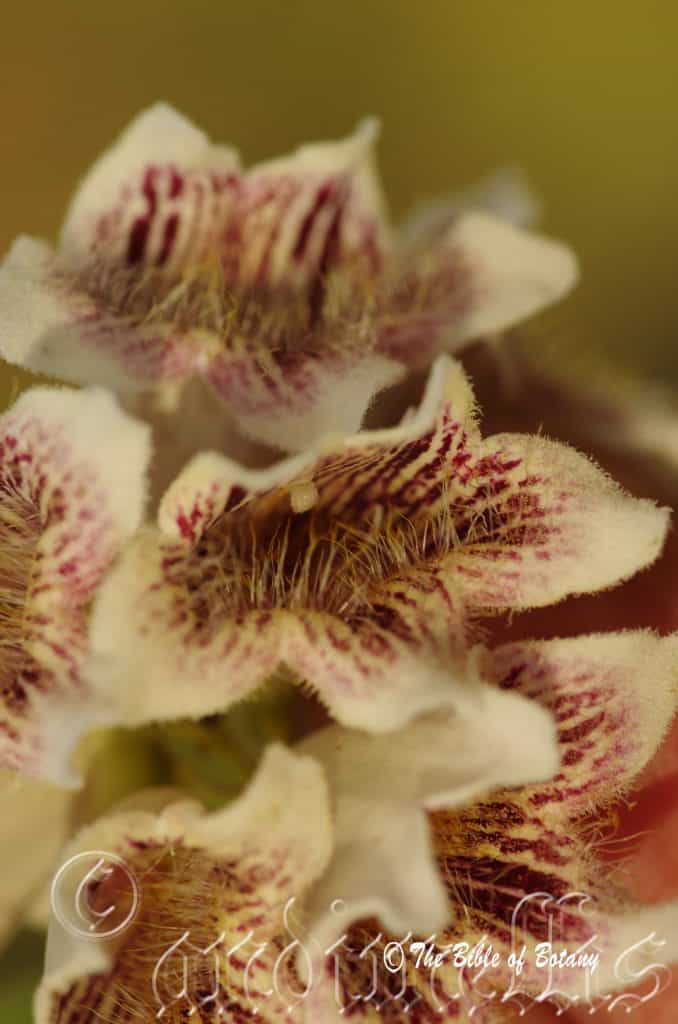
Castle Hill Townsville Qld.
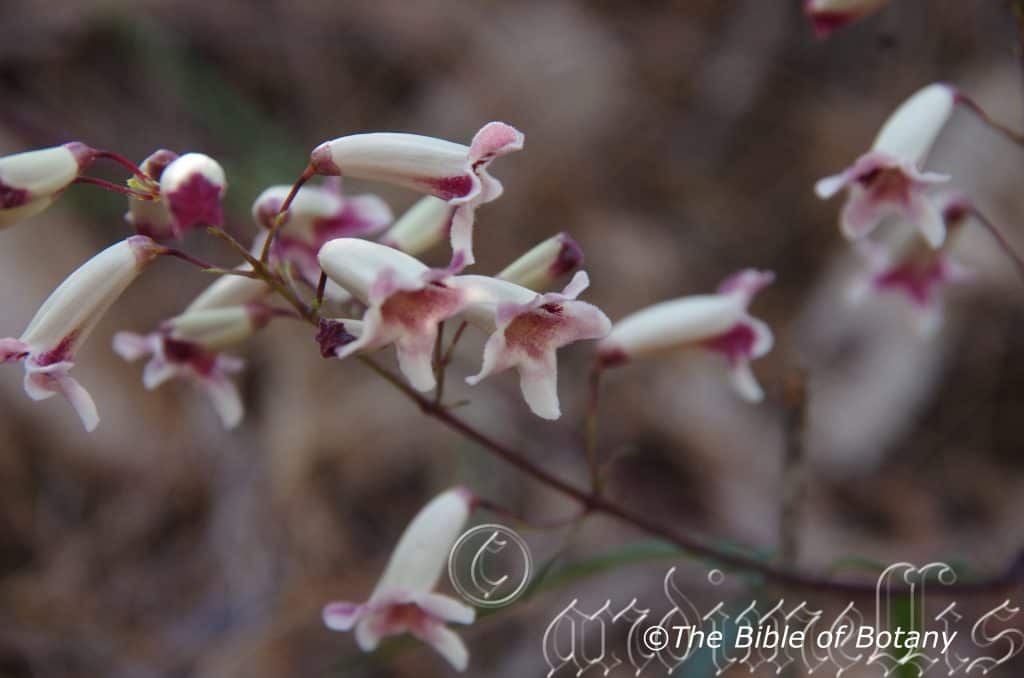
Wooli NSW
Pandorea pandorana
Classification:
Unranked: Eudicots
Unranked: Rosids
Order: Sapindales
Family: Rutaceae
Genus: FromPandora, which is Ancient Greek for the first human woman created by the gods, specifically by Hephaestus and Athena on the instructions of Zeus. Each god created her and bestowed upon her unique gifts. All the gods joined in offering her “seductive gifts”. According to the myth, Pandora opened the pithos; a jar not Pandoras box as is mistranslated in modern accounts, releasing all the evils of humanity plagues and diseases, leaving only Hope inside once she had closed it again. It refers to vines, which have capsules that resemble the greeneral outline of the pithos ewer or a box crossed with a jar.
Specie: FromPandora, which is Ancient Greek for the first human woman created by the gods, specifically by Hephaestus and Athena on the instructions of Zeus. Each god created her and bestowed upon her unique gifts. All the gods joined in offering her “seductive gifts”. According to the myth, Pandora opened the pithos; a jar not Pandoras box as is mistranslated in modern accounts, releasing all the evils of humanity plagues and diseases, leaving only Hope inside once she had closed it again. It refers to vines, which have capsules that resemble the general outline of the pithos ewer or a box crossed with a jar.
Sub specie:
Common Name:
Distribution:
Pandorea pandorana is found extensively throughout the Australian mainland. It is found on the Fortesque River and the Ord River in Western Australia and most of the rivers in central southern Australia south from the Plenty River in the Northern Territory to the Alberga River and Macumba River in northern South Australia
https://avh.ala.org.au/occurrences/search?taxa=Pandorea+pandorana#tab_mapView
Habitat Aspect Climate:
Pandorea pandorana prefers dappled shade to full sun. It grows in or adjacent to moist open woodlands, moist Eucalyptus forests moist, dry rain forests or littoral rain forests. It is also found adjacent to coastal wallums and swamps. The altitude ranges from 5 meters ASL to 1200 meters ASL.
The temperatures range from minus 4 degrees in July to 36 degrees in January.
The rainfall ranges from lows of 850mm to 1600mm average per annum.
Soil requirements:
Pandorea pandorana prefers sandy loams to light gritty clays with a high proportion of sand or gravel. The soils are usually derived from decomposed sandstones, brown basalts or black basalts, better quality shale and granites. The soils range from a PH of 5 to 7PH. It does not tolerate of waterlogged soils. Non saline soils to moderately saline soils are tolerated.
Height & Spread:
Wild Plants: 2m to 15m by 4m to 10m
Characteristics:
Pandorea pandorana grows as an erect tall woody climber. The main trunk is fawn, pale brown to pale grey-brown with longitudinal ridges extending to the larger branches. The trunk measures 60mm to 80mm in diameter. Stems are thin, deep green and covered in farinaceous warts. The young slender, wiry, deep sea-green to deep purple shoots are glabrous.
The opposite or nearly opposite odd pinnate leaves, of Pandorea pandorana are strongly dimorphic. The juvenile leaves have 8 to 17 leaflets that measure 20mm to 80mm in length. The 3 to 9 leaflets measure 80mm to 160mm in length. The linear to ovate asymmetrical leaflets measure by 25mm to 75mm in length by 3mm to 30mm in width. The base is cuneate to rounded while the apex is acuminate with a mucronate tip. The concolourous laminas are deep sea-green and maybe tinged with purple a glabrous. The leaf margins are entire and curve slightly upwards from the mid vein. The mid vein is slightly prominent on the lower lamina and is not visible on the upper lamina. The petioles measure 10mm to 45mm in length while the petiolules measure 10mm to 20mm in length.
The inflorescences of Pandorea pandorana are born on dense panicles from the terminals. The oval, funnel form flowers are white, cream, pale yellow or pale pink. The terete rachis measures 60mm to 130mm in length while the pedicels measure 8mm to 10mm in length. The pale yellow-green to deep sea-green, urn shaped calyx’s measure 5 to 7mm in length. The 5 calyx lobes measure 1mm in length. The variable corollas are white, cream, pale yellow or pale pink externally and have deeper coloured blotches and stripes on the throats internally. It is covered in white hirtellous hairs internally and are glabrous externally. The corollas measure 10mm to 26mm in length by 4mm to 6mm in diameter near the calyx to 10mm to 12mm in width by 5mm to 8mm in height near the lobes. The dimorphic lobes vary from oblong, acute to obtuse are entire, flat to strongly undulating and divaricate. The lobes measure 3mm to 6mm in length.
The 4 stamens are dimorphic in two pairs. The anthers in each pair are touching. The filaments measure 20mm to 30mm in length on one pair and 25mm to 35mm on the other pair.
The glabrous ovary measures 4.5mm to 6mm in length. The style measures 20mm to 22mm in length and has a bilobed stigma. The stigma lobes measure 2mm in length. The faintly perfumed flowers appear from late June to September.
Pandorea pandorana’s fruits are an oblong to ovoidal capsule. The deep green capsules turn deep semi glossy and brown when ripe externally and creamy white internally. The capsules measure 40mm to 60mm long by 10mm to 20mm in diameter. The seeds are winged with a pronounced emarginated apex. They measure 12mm to 17mm in width by 7mm to 10mm in length. The seeds measure 4mm to 5mm in diameter.
Wildlife:
Pandorea pandorana does not appear to have any predators though the flowers are visited by many small butterflies, native bees and beetles.
The capsules and seeds are often eaten by an unknown weevil or beetle larvae.
Cultivation:
Pandorea pandorana is a magnificent medium to large creeper that deserves a place in every warm temperate, sub-tropical, tropical, semi-arid or arid native or exotic garden. It is ideal in almost every setting on pool fences, at the edge of a rain forest in court yards, pergolas or larger rockeries when their size is balanced. In cultivation they will grow from 2 meters to 5 meters in height by 2 meters to 5 meters in width.
There are several colour varieties available from nurseries which have pure white, cam, pale yellow, yellow, pale pink, to deep pink, maroon, carmine and khaki to yellow ochre blooms with pale to deep base colour throats.
It grows exceptionally well on lighter soils When deep leaf litter keeps the soil cool and moisture at an even level. If these requirements are met they can cope with temperatures as low as minus 2 degrees and up to 40 degrees. It is moderately drought resistant.
Add to the above, if it is given an adequate supply of native fertilizers on a regular basis the plants will respond with spectacular flowering over a long period.
It often reaches its full potential in just 5 years and flower from the third year from seed.
Be imaginative when planting on pergolas, fences or other structures. Use the plants in different configurations and with different creepers that flower at different times.
Use curves and light pruning after flowering or tip pruning will help to maintain the plant to a smaller size.
Ensure that the whole plant or at least most of it is on display from most sections of the garden as the flowers are a real bonus.
When it is in flower these plants will catch your attention and the viewer will be transfixed on the display rather than watching the path.
It would make an excellent topiary specimens being quick growing, capable of training into any shape though they would need regular attention.
Propagation:
Seeds: Seeds can be moved easily from the capsules once they have dried out. Sow freshly collected seeds directly into a seed raising mix, keeping them moist not wet. When the seedlings are 30mm to 40mm tall, prick them out and plant them into 50mm native tubes using a good organic mix.
As the seedlings roots ach the bottom of the tubes plant them out into their permanent position. Do not delay.
Cuttings: Pandorea pandorana strike very easy from cuttings and this method must be used if a particular flower colour or leaf form is sought.
Use 50mm to 70mm long cuttings from the previous season’s growth after it has hardened off. Take them in early autumn or after the last frosts in early spring. Take a slice off the bark from one side 10mm from the base down to the base and apply a weak strength rooting hormone to the bottom 10mm. Place the cutting into a sterile moist mix. When the cuttings have obviously struck and have developed good roots prick them out and plant them into 50mm native tubes. Return the tubes when they have been growing to further harden off before moving them to a new location and or planting out.
Fertilize using seaweed, fish emulsion or organic chicken pellets soaked in water on an alternate basis. Fertilize every two months until the plants are established then twice annually in early September and March to maintain better health, vitality and flowering.
Further Comments from Readers:
Hi reader, it seems you use The Bible of Botany a lot. That’s great as we have great pleasure in bringing it to you! It’s a little awkward for us to ask, but our first aim is to purchase land approximately 1,600 hectares to link several parcels of N.P. into one at The Pinnacles NSW Australia, but we need your help. We’re not salespeople. We’re amateur botanists who have dedicated over 30 years to saving the environment in a practical way. We depend on donations to reach our goal. If you donate just $5, the price of your coffee this Sunday, We can help to keep the planet alive in a real way and continue to bring you regular updates and features on Australian plants all in one Botanical Bible. Any support is greatly appreciated. Thank you.
In the spirit of reconciliation we acknowledge the Bundjalung, Gumbaynggirr and Yaegl and all aboriginal nations throughout Australia and their connections to land, sea and community. We pay our respect to their Elders past, present and future for the pleasures we have gained.
Panicum bisulcatum
Classification:
Division: Monocots
Division: Commelinids
Order: Poales
Family: Poaceae
Subfamily: Panicoideae
Tribe: Panicodae
Genus: From Panicum, which is Latin for the wild grasses in the Panicum genus. It refers to plants, which are related to the wild Panicum genus.
Specie: From Bi/Bis, which is Greek/Latin for two and Sulcatum, which is Latin for a ploughed row. It refers to a structure or organ, which has two very deep grooves.
Common Name: Black seeded Panicum.
Distribution:
Panicum bisulcatum is found in the east it is found from Lizard Island and Cairns in far north Queensland then south from to Chinchilla and Maroochydore in south eastern Queensland to Bindi Hill and Rhyde in central New South Wales on the western side, on and east of the Great Dividing Range.
It is also found on the Brogo River in the Bega Valley near the coast and Jingellic in southern New South Wales to the Whitefield King River on the western highlands in north eastern Victoria.
https://avh.ala.org.au/occurrences/search?taxa=Panicum+bisulcatum#tab_mapView
Habitat Aspect Climate:
Panicum bisulcatum prefers dappled shade to full sun. It can form large dense populations on dry or moist terrains. It grows in seasonal swamps, depressions, marshes, low-lying sand plains as well as alluvial flats, coastal sand hills, on flats, cleared in woodlands and open Eucalyptus forest. It is particularly common along railway easements, disturbed ground or roadside verges. It is also found on soils are often on moist skeletal, stony or gravelly hill slopes, ridges and outcrops. The altitude ranges from 5 meter ASL to 930 meters ASL.
The temperatures range from minus 5 degrees in August to 34 degrees in February.
The rainfalls range from lows of 1000mm to an average 2600mm annually.
Soil requirements:
Panicum bisulcatum prefers to grow on better quality medium silts to heavy silts. The soils are usually derived from fine alluvial silts. The soils pH. ranges from 4.2pH to 6pH. It does tolerate seasonal waterlogged soils. Non saline soils to moderately saline soils are tolerated.
Height & Spread:
Wild Plants: 0.2m to 0.8m by 0.4m to 1.2m.
Characteristics:
Panicum bisulcatum grows as a weak to strongly clumped perennial with blue-green stems. The rhizomes are absent on this species however stolons are present. The culms are decumbent to erect lying mo on surrounding vegetation for support. The culms measure 200mm to 800mm in length. The culms are compressible or firm with 3 to 10 nodes. The mid culm’s internodes and nodes are glabrous. The lateral branches are branched with the branches often branching further. The leaf sheaths are glabrous while the leaf sheath auricles are absent. The ligule is an eciliate membrane or a fringed ciliolate membrane of white hairs that measure 0.5mm to 0.75mm in length.
Panicum bisulcatum’s alternate simple leaves are narrow elliptical and measure 20mm to 250mm in length by 4mm to 13mm in width. The asymmetrical bases are rounded or truncate while the apexes are tapering. The concolourous laminas are soft grass-green to mid grass-green and glabrous or scaberulous. The laminas are flat while the margins are entire. The mid vein is prominent on the lower lamina while there 6 slightly prominent longitudinal veins with further 3 to 4 fainter veins between each of the veins.
The Inflorescences are compound panicles. The panicles measure 100mm to 200mm in length while the spikelets are clustered near the apexes. The peduncle and rachises are usually glabrous. The broad lanceolate spikelets are pedicelled with a single upper fertile floret and single sterile lower floret. The florets are without a rachilla extension. The lanceolate or elliptic, dorsally compressed florets measure 2.2mm to 3mm in length. The rachilla internodes are very short up to lowest fertile floret.
The glumes are similar. The lower ovate, membranous glumes are keeless with 1 to 5 nerves which terminate in a muticous apex. The upper elliptical membranous glumes are keeless usually with 5 or at times 7 nerves. The glumes measure 2.1mm to 2.6mm in length.
The lower lemmas are equal in the length to the spikelets, are membranous, keeless with 3 to 5 nerves and have a muticous apex. The palea is absent. The fertile lemmas measure 2mm to 2.5mm in length. There are 3 white anthers. The flowers appear from late November to February.
The fruits are oblong grains. The green grains turn dull purplish-black When ripe.
Wildlife:
Panicum bisulcatum is the host plant for theWonder Brown butterfly (Heteronympha mirifica), Brown Ringlet Moth Hypocysta metirius and Orange Ringlet Hypocysta adiante.
The seeds are eaten by many native finches including the red-browed finch (Neochmia temporalis). The Eastern Rosella (Platycercus eximius) and Pale Headed Rosella (Platycercus adscitus) have been seen attending the seed heads.
Cultivation:
Panicum bisulcatum is a straggly soft foliaged grass for large forested areas around dams or in gullies. It would look rather weedy in small gardens. It can be slashed and will recover very quickly but is not suitable for long term grazing.
It is suitable for semi shaded to full sun areas near the entrance to rainforests and does exceptionally well in riparian flats and beneath open forest canopies.
It is a preferred grass for both domestic and native mammals and is of excellant quality on flood plain grass
Propagation:
Seeds: Panicum bisulcatum’s seeds directly into a seed raising mix. Cover them with 2mm of fine sand and keep moist not wet. Place the tray in a warm sunny position. When the seedlings are 25mm to 50mm tall, prick them out in small groups and plant them into 20mm tubes using a good organic mix.
Once the seedlings ach 75mm to 80mm in height planting them out into their permanent position and water them thoroughly with our commended fertilizer. Plant them at 250mm centers.
Alternatively the seed can be broadcast out in small areas or used in a seeder on broad acreage.
Fertilize using seaweed, fish emulsion or organic chicken pellets at the time of sowing.
Further Comments from Readers:
Hi reader, it seems you use The Bible of Botany a lot. That’s great as we have great pleasure in bringing it to you! It’s a little awkward for us to ask, but our first aim is to purchase land approximately 1,600 hectares to link several parcels of N.P. into one at The Pinnacles NSW Australia, but we need your help. We’re not salespeople. We’re amateur botanists who have dedicated over 30 years to saving the environment in a practical way. We depend on donations to reach our goal. If you donate just $5, the price of your coffee this Sunday, We can help to keep the planet alive in a real way and continue to bring you regular updates and features on Australian plants all in one Botanical Bible. Any support is greatly appreciated. Thank you.
In the spirit of reconciliation we acknowledge the Bundjalung, Gumbaynggirr and Yaegl and all aboriginal nations throughout Australia and their connections to land, sea and community. We pay our respect to their Elders past, present and future for the pleasures we have gained.
Panicum decompositum
Classification:
Division: Monocots
Division: Commelinids
Order: Poales
Family: Poaceae
Subfamily: Panicoideae
Tribe: Panicodae
Genus: FromPanicum, which is Latin for the wild grasses in the Panicum genus. It refers to plants, which are related to the wild Panicum genus.
Specie: From De, which is Latin for down and (com which is Latin for to come together) compositum, which is Latin for to divide more than once. It refers to inflorescences, which are extensively branched.
Sub Species:
Common Name: Native Millet.
Distribution:
Panicum decompositum is found throughout Australia except for the true deserts, the south east corner of Western Australia and Tasmania.
https://avh.ala.org.au/occurrences/search?taxa=Panicum+decompositum#tab_mapView
Habitat Aspect Climate:
Panicum decompositum prefers dappled shade to full sun. It is found in dry sclerophyll forests, brigalow forests, tropical rainforests, subtropical woodlands, temperate woodlands, steppe scrublands, acacia scrublands, arid tussock grasslands or arid hummock grasslands. The altitude ranges from 5 meter ASL to 1130 meters ASL.
The temperatures range from minus 2 degrees in August to 40 degrees in February.
The rainfalls range from lows of 150mm to an average 3000mm annually.
Soil requirements:
Panicum decompositum prefers to grow on better quality sandy loams to heavy clays or fine to heavy silts. The soils are usually derived from decomposed brown basalts, black basalts, shales, fatty sandstones and metamorphic rocks often being laid down as alluvial silts. The soils pH ranges from 4.5pH to 6pH. It tolerates waterlogged soils especially those that are seasonally flooded. Non saline soils to moderately saline soils are tolerated.
Height & Spread:
Wild Plants: 0.3m to 0.8m by 0.8m to 1m.
Characteristics:
Panicum decompositum is a weak to strongly clumped perennial with blue-green stems. The rhizomes are absent on this species however stolons are present. The culms are erect and measure 300mm to 800mm in length. The culms are compressible or firm with 2 to 6 nodes. The mid culm’s internodes are glabrous while the nodes are glabrous to moderately covered in white pulverulent hairs. The lateral branches are sparsely branched once. The leaf sheaths are glabrous or sparsely covered in white puberulent hairs while the leaf sheath auricles are absent. The ligule is a fringed membrane or ciliolate membrane of white hairs that measure 1.5mm to 2mm in length.
Panicum decompositum’s alternate simple leaves are linear and measure 70mm to 500mm in length by 2.5mm to 12mm in width. The asymmetrical bases a rounded or truncate while the apexes are tapering. The concolourous laminas are pale grass-green to mid grass-green and glabrous to moderately covered in white pubescent hairs. The laminas are flat, conduplicate or involute while the margins are entire. The mid vein is prominent on the lower lamina while there are 6 slightly prominent longitudinal veins with further 3 to 4 fainter veins between each of the veins.
The inflorescences of Panicum decompositum are compound panicles. The ovate panicles measure 150mm to 350mm in length while the spikelets are clustered evenly along the panicle or near the apexes. The peduncle and rachises are usually glabrous.
The spikelets are pedicelled with a single upper fertile floret and single sterile lower floret. The florets are without a rachilla extension. The lanceolate, elliptic or ovate dorsally compressed florets measure 2.3mm to 3.5mm in length. The rachilla internodes are elongated between the glumes.
The upper and lower glumes are similar. The lower ovate to obovate, membranous glumes are keeless with no or a single nerve and terminate in a muticous apex. The upper elliptical membranous glumes are keeless usually with 7 to 9 nerves. The glumes measure 2.1mm to 2.9mm in length.
The lower lemmas are equal in the length to the spikelets, are membranous, keeless with 7 nerves and have a muticous apex. The palea is absent. The fertile lemmas measure 1.8mm to 2.2mm in length. There are 3 white anthers. The flowers appear from late December to late April.
Panicum decompositum’s fruits are oblong grains. The green grains turn dull creamy fawn When ripe. The grains measure 1.5mm in length.
Confusing Species:
Panicum decompositum’s leaves are bright grass-green and glabrous.
Panicum effusum’s leaves are dull grass-green with long, white, glandular ciliate hairs.
Wildlife:
Panicum decompositum is the host plant for the Wonder Brown butterfly, Heteronympha mirifica, Brown Ringlet Moth Hypocysta metirius and Orange Ringlet Hypocysta adiante.
The seeds are eaten by many native finches including the red-browed finch (Neochmia temporalis). The Eastern Rosella (Platycercus eximius) and Pale Headed Rosella (Platycercus adscitus) have been seen attending the seed heads.
Cultivation:
Panicum decompositum’s is a straggly soft foliaged grass for large forested areas around dams or in gullies. It would look rather weedy in small gardens. It can be slashed and will recover very quickly but is not suitable for long term grazing.
It is suitable for semi shaded to full sun areas near the entrance to rainforests and does exceptionally well in riparian flats and beneath open forest canopies.
It is a preferred grass for both domestic and native mammals and is of excellent quality on flood plain grass
Propagation:
Seeds: Panicum decompositum’s seeds directly into a seed raising mix. Cover them with 2mm of fine sand and keep moist not wet. Place the tray in a warm sunny position. When the seedlings are 25mm to 50mm tall, prick them out in small groups and plant them into 20mm tubes using a good organic mix.
Once the seedlings reach 75mm to 80mm in height, plant them out into their permanent position and water thoroughly with our commended fertilizer. For mass plantings plant them at 250mm centers.
Alternatively the seed can be broadcast out in small areas or used in a seeder on broad acreage.
Fertilize using seaweed, fish emulsion or organic chicken pellets at the time of sowing.
Further Comments from Readers:
Hi reader, it seems you use The Bible of Botany a lot. That’s great as we have great pleasure in bringing it to you! It’s a little awkward for us to ask, but our first aim is to purchase land approximately 1,600 hectares to link several parcels of N.P. into one at The Pinnacles NSW Australia, but we need your help. We’re not salespeople. We’re amateur botanists who have dedicated over 30 years to saving the environment in a practical way. We depend on donations to reach our goal. If you donate just $5, the price of your coffee this Sunday, We can help to keep the planet alive in a real way and continue to bring you regular updates and features on Australian plants all in one Botanical Bible. Any support is greatly appreciated. Thank you.
In the spirit of reconciliation we acknowledge the Bundjalung, Gumbaynggirr and Yaegl and all aboriginal nations throughout Australia and their connections to land, sea and community. We pay our respect to their Elders past, present and future for the pleasures we have gained.
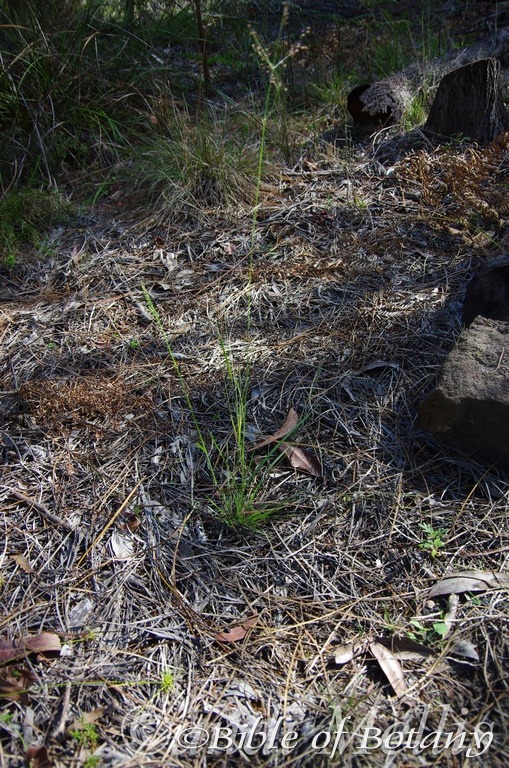
Author’s Garden The Pinnacles NSW
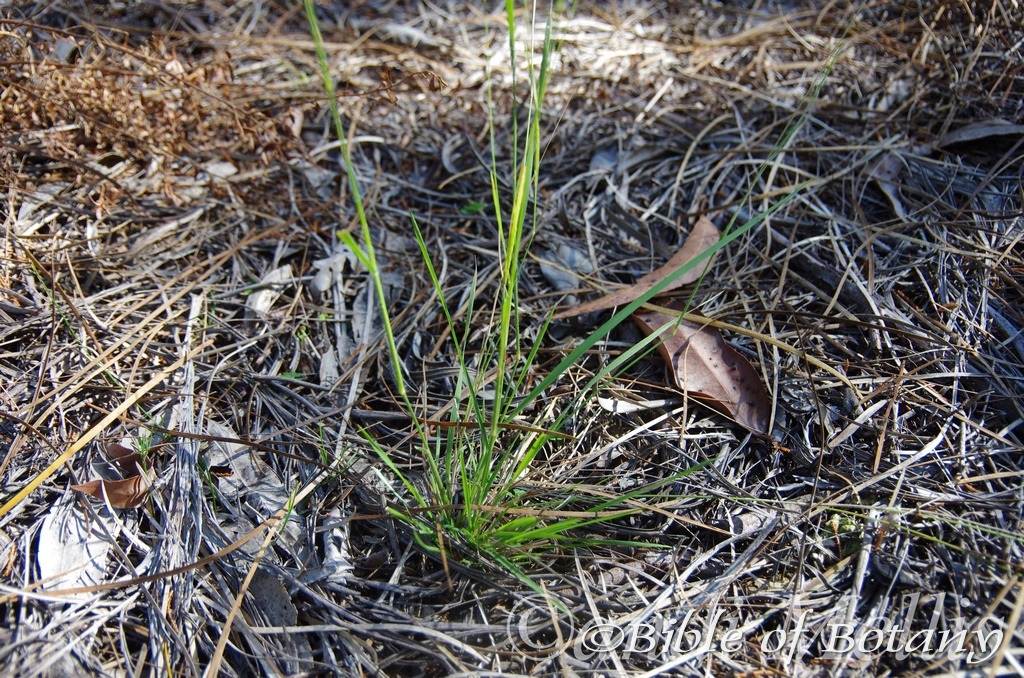
Author’s Garden The Pinnacles NSW
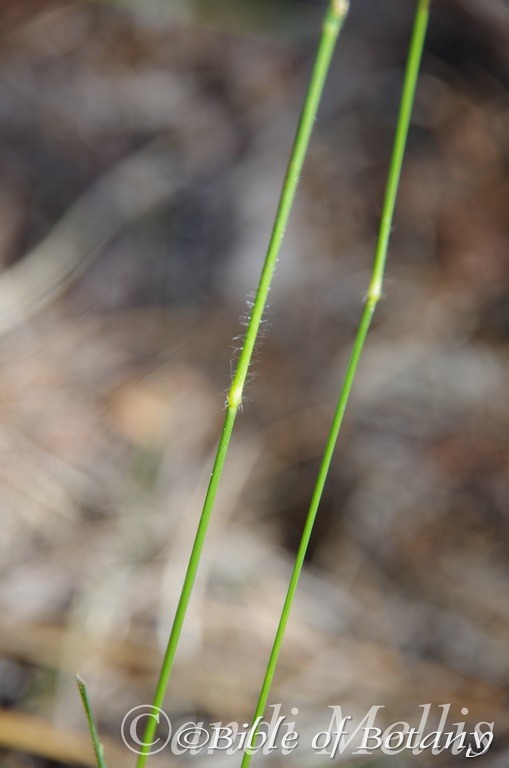
Author’s Garden The Pinnacles NSW
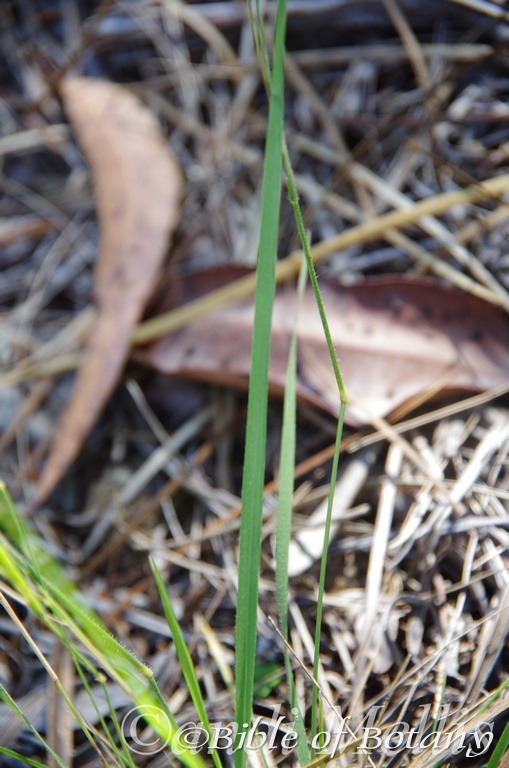
Author’s Garden The Pinnacles NSW

Author’s Garden The Pinnacles NSW

Author’s Garden The Pinnacles NSW
Panicum effusum
Classification:
Division: Monocots
Division: Commelinids
Order: Poales
Family: Poaceae
Subfamily: Panicoideae
Tribe: Panicodae
Genus: From Panicum, which is Latin for the wild grasses in the Panicum genus. It refers to plants, which are related to the wild Panicum genus.
Specie: From Effuse, which is Latin for spreading out in a loose manner. It refers to the growth habit of the culms and leaves spreading out without a pattern.
Sub Species:
Common Name: Hairy Panicum
Distribution:
Panicum effusum is found throughout Australia except for the true deserts, the south east corner of Western Australia and Tasmania.
https://avh.ala.org.au/occurrences/search?taxa=Panicum+effusum#tab_mapView
Habitat Aspect Climate:
Panicum effusum prefers dappled shade to full sun. It grows in moist tropical, moist subtropical sclerophyll forests, brigalow forests, tropical woodlands, subtropical woodlands, temperate woodlands, semi-arid shrubby woodlands in semi-arid and arid woodlands, arid tussock grassland plains or arid hummock grassland plains. The altitude ranges from 5 meter ASL to 1530 meters ASL.
The temperatures range from minus 4 degrees in August to 40 degrees in February.
The rainfalls range from lows of 150mm to an average 3000mm annually.
Soil requirements:
Panicum effusum prefers to grow on poor to better quality sandy loams to medium clays or fine to medium silts. The soils are usually derived from decomposed brown basalts, black basalts, shales, fatty sandstones, granites or metamorphic rocks or alluvial deposits. The soils pH ranges from 4.5pH to 6.5pH. It does not tolerate waterlogged soils. Non saline soils to moderately saline soils are tolerated.
Height & Spread:
Wild Plants: 0.2m to 1m by 0.6m to 1m.
Characteristics:
Panicum effusum grows as a weak to strongly tussock perennial with blue-green stems. The rhizomes are absent on this species however stolons are present. The culms are erect or ascending and measure 200mm to 1000mm in length. The culms are compressible or firm with 2 to 7 nodes. The mid culm’s internodes are glabrous while the nodes are glabrous to moderately covered in white pubescent hairs. The lateral branches are simple or sparsely branched once. The leaf sheaths are sparsely to moderately covered in white pubescent hairs while the leaf sheath auricles are absent. The ligule is a fringed membrane or ciliolate membrane of white hairs that measure 0.5mm to 1mm in length.
Panicum effusum’s alternate simple leaves a linear and measure 50mm to 250mm in length by 2mm to 6mm in width. The asymmetrical bases a rounded or truncate while the apexes a tapering. The concolourous laminas are pale grass-green to mid grass-green and glabrous or slightly scabrous to moderately covered in white pubescent hairs. The laminas are flat or involute while the margins are entire. The mid vein is prominent on the lower lamina while there are 26 to 32 very faint prominent longitudinal veins.
The Inflorescences of Panicum effusum are compound panicles. The oblong panicles measure 80mm to 500mm in length while the spikelets are clustered evenly along the panicle or near the apexes. The peduncle and rachises are usually glabrous.
The spikelets are pedicelled with a single upper fertile floret and single sterile lower floret. The florets are without a rachilla extension. The broad lanceolate or ovate dorsally compressed florets measure 2mm to 3mm in length. The rachilla internodes are elongated between the glumes.
The lower ovate, membranous glumes are keeless with 3 to 5 nerves and terminate in a muticous apex. The upper lanceolate to ovate membranous glumes are keeless usually with 5 nerves. The glumes measure 2.2mm to 2.8mm in length.
The lower lemmas are equal in the length to the spikelets, are membranous, keeless with 7 nerves and have a muticous apex. The palea is insignificant. The fertile lemmas measure 1.5mm to 2.2mm in length. There are 3 white anthers. The flowers appear from late December to late April.
Panicum effusum’s fruits are oblong grains. The green grains turn dull creamy fawn when ripe. The grains measure 1.5mm in length.
Confusing Species Varieties:
Panicum effusum’s leaves are dull grass-green with long, white, glandular ciliate hairs.
Panicum decompositum’s leaves are bright grass-green and glabrous.
Wildlife:
Panicum effusum is the host plant for the Wonder Brown butterfly (Heteronympha mirifica), Brown Ringlet Moth Hypocysta metirius and Orange Ringlet Hypocysta adiante.
The seeds are eaten by many native finches including the red-browed finch (Neochmia temporalis). The Eastern Rosella (Platycercus eximius) and Pale Headed Rosella (Platycercus adscitus) have been seen attending the seed heads.
Cultivation:
Panicum effusum is a straggly soft foliage grass for large forested areas around dams or in gullies. It would look rather weedy in small gardens. It can be slashed and will recover very quickly but is not suitable for long term grazing.
It is suitable for semi shaded to full sun areas near the entrance to rain forests and does exceptionally well in riparian flats and beneath open forest canopies.
It is a preferred grass for both domestic and native mammals and is of excellent quality on flood plain grass.
Propagation:
Seeds: Panicum effusum’s seeds directly into a seed raising mix. Cover them with 2mm of fine sand and keep moist not wet. Place the tray in a warm sunny position. When the seedlings are 25mm to 50mm tall, prick them out in small groups and plant them into 20mm tubes using a good organic mix.
Once the seedlings reach 75mm to 80mm in height, plant them out into their permanent position and water thoroughly with our commended fertilizer. Plant them at 250mm centers.
Alternatively the seed can be broadcast out in small areas or used in a seeder on broad acreage.
Fertilize using seaweed, fish emulsion or organic chicken pellets at the time of sowing.
Further Comments from Readers:
Hi reader, it seems you use The Bible of Botany a lot. That’s great as we have great pleasure in bringing it to you! It’s a little awkward for us to ask, but our first aim is to purchase land approximately 1,600 hectares to link several parcels of N.P. into one at The Pinnacles NSW Australia, but we need your help. We’re not salespeople. We’re amateur botanists who have dedicated over 30 years to saving the environment in a practical way. We depend on donations to reach our goal. If you donate just $5, the price of your coffee this Sunday, We can help to keep the planet alive in a real way and continue to bring you regular updates and features on Australian plants all in one Botanical Bible. Any support is greatly appreciated. Thank you.
In the spirit of reconciliation we acknowledge the Bundjalung, Gumbaynggirr and Yaegl and all aboriginal nations throughout Australia and their connections to land, sea and community. We pay our respect to their Elders past, present and future for the pleasures we have gained.
Panicum lachnophyllum
Classification:
Division: Monocots
Division: Commelinids
Order: Poales
Family: Poaceae
Subfamily: Panicoideae
Tribe: Panicodae
Genus: From Panicum, which is Latin for the wild grasses in the Panicum genus. It refers to plants, which are related to the wild Panicum genus.
Specie: From Lakhne, which is Ancient Greek for woolly type hair and Phullon/Phýllon, which is Ancient Greek for a leaf. It refers to the leaves being covered in long woolly like hairs.
Sub Species: Panicum lachnophyllum subsp. lachnophyllum. From Lakhne, which is Ancient Greek for woolly type hair and Phullon/Phýllon, which is Ancient Greek for a leaf. It refers to leaves, which are covered in long woolly like hairs.
Sub Species: Panicum lachnophyllum subsp. tropicum. From Tropikós/Trópos, which is Ancient Greek or Tropicus, which is Latin for the tropics. It refers to plants, which grow closer to the tropics than other species in the genus or sub species in the species.
Note: Sources now indicate that this sub species is most likely an introduced sub specie to Australia.
Common Name: Don’t Panic
Distribution:
Panicum lachnophyllum subsp. lachnophyllum is found in 3 distinct disjunct populations on and east of the Great Dividing Range. The northern population is found south from Shannessy’s Creek in the Daintree National Park to Cardwell on Cape York Peninsula in far north Queensland, while the central population is found on Middle Percy Island between Mackay and Rockhampton in central Queensland. The southern population is found south from Fraser Island in south eastern Queensland to the Richmond River in central coastal New South Wales then in scatted populations further south to the upper Williams River in the Sydney Basin.
https://avh.ala.org.au/occurrences/search?taxa=Panicum+lachnophyllum#tab_mapView
Habitat Aspect Climate:
Panicum lachnophyllum prefers dappled shade, filtered light or at times full sun. It grows in moist tropical heaths, tropical rainforests, subtropical rainforests, wet sclerophyll forests or moist woodlands. The altitude ranges from 5 meter ASL to 1080 meters ASL.
The temperatures range from 1 degrees in August to 40 degrees in February.
The rainfalls range from lows of 150mm to an average 3000mm annually.
Soil requirements:
Panicum lachnophyllum prefers to grow on poor to better quality sandy loams to medium clays. The soils are usually derived from decomposed brown basalts, black basalts, shales, fatty sandstones, granites and metamorphic rocks. The soils pH ranges from 4.5pH to 6.5pH. It does not tolerate waterlogged soils. Non saline soils to very saline soils are tolerated as are salt laden winds.
Height & Spread:
Wild Plants: 0.1m to 0.3m by 0.3m to 0.5m.
Characteristics:
Panicum lachnophyllum grows as a weak to strongly clumped perennial with blue-green stems. The rhizomes are absent on this species however stolons are present. The culms are erect or decumbent and measure 100mm to 300mm in length. The culms are compressible or firm with 7 to 12 nodes. The mid culm’s internodes and nodes are glabrous. The lateral branches are simple or sparsely branched once. The leaf sheaths are sparsely to moderately covered in white pubescent hairs while the leaf sheath auricles are absent. The ligule is a fringed membrane or a ciliolate membrane of short white hairs.
Panicum lachnophyllum’s alternate, simple, divaricate leaves are linear to narrow lanceolate and measure 15mm to 100mm in length by 3mm to 9mm in width. The asymmetrical bases are rounded or truncate while the apexes are tapering. The concolourous laminas are pale grass-green to mid grass-green and scabrous and sparsely to moderately covered in white pubescent hairs. The laminas are flat while the margins are entire. The mid vein is prominent on the lower lamina.
The Inflorescences of Panicum lachnophyllum are compound panicles. The lanceolate panicles measure 20mm to 70mm in length while the spikelets are clustered towards the apexes. The peduncle and rachises are usually glabrous.
The spikelets are pedicelled with a single upper fertile floret and single sterile lower floret. The florets are without a rachilla extension. The elliptic or oblong or ovate, dorsally compressed florets measure 2.5mm to 3mm in length. The rachilla internodes are very short to the first floret.
The lower ovate or obovate, membranous glumes are without keels with 0 to 3 nerves and terminate in a muticus apex. The upper elliptic to ovate membranous glumes are without keels usually with 5 nerves. The glumes measure 2mm to 2.4mm in length.
The lower lemmas are equal in the length to the spikelets, are membranous and without keels with 5 nerves and have a mucronate apex. The palea is insignificant. The fertile lemmas measure 1.5mm to 2.2mm in length. There are 3 white anthers. The flowers appear from August to February.
Panicum lachnophyllum’s fruits are oblong grains. The green grains turn dull creamy fawn When ripe with a rounded base and muticus apex. The grains measure 1.5mm to 2mm in length.
Wildlife:
Panicum lachnophyllum is the host plant for the Wonder Brown butterfly (Heteronympha mirifica), Brown Ringlet Moth Hypocysta metirius and Orange Ringlet Hypocysta adiante.
The seeds are eaten by many native finches including the red-browed finch (Neochmia temporalis). The Eastern Rosella (Platycercus eximius) and Pale Headed Rosella (Platycercus adscitus) have been seen attending the seed heads.
Cultivation:
Panicum lachnophyllum is a straggly soft foliaged grass for large forested areas around dams or in gullies. It would look rather weedy in small gardens. It can be slashed and will recover very quickly but is not suitable for long term grazing.
It is suitable for semi shaded to full sun areas near the entrance to rainforests and does exceptionally well in riparian flats and beneath open forest canopies.
It is a preferred grass for both domestic and native mammals and is of excellent quality on shaded light forested areas.
Propagation:
Seeds: Panicum lachnophyllum’s seeds directly into a seed raising mix. Cover them with 2mm of fine sand and keep moist not wet. Place the tray in a warm sunny position. When the seedlings are 25mm to 50mm tall, prick them out in small groups and plant them into 20mm tubes using a good organic mix.
Once the seedlings reach 75mm to 80mm in height, plant them out into their permanent position and water thoroughly with our commended fertilizer. Plant them at 250mm centers.
Alternatively the seed can be broadcast out in small areas or used in a seeder on broad acreage.
Fertilize using seaweed, fish emulsion or organic chicken pellets at the time of sowing.
Further Comments from Readers:
Hi reader, it seems you use The Bible of Botany a lot. That’s great as we have great pleasure in bringing it to you! It’s a little awkward for us to ask, but our first aim is to purchase land approximately 1,600 hectares to link several parcels of N.P. into one at The Pinnacles NSW Australia, but we need your help. We’re not salespeople. We’re amateur botanists who have dedicated over 30 years to saving the environment in a practical way. We depend on donations to reach our goal. If you donate just $5, the price of your coffee this Sunday, We can help to keep the planet alive in a real way and continue to bring you regular updates and features on Australian plants all in one Botanical Bible. Any support is greatly appreciated. Thank you.
In the spirit of reconciliation we acknowledge the Bundjalung, Gumbaynggirr and Yaegl and all aboriginal nations throughout Australia and their connections to land, sea and community. We pay our respect to their Elders past, present and future for the pleasures we have gained.
Panicum obseptum
Classification:
Division: Monocots
Division: Commelinids
Order: Poales
Family: Poaceae
Subfamily: Panicoideae
Tribe: Panicodae
Genus: From Panicum, which is Latin for the wild grasses in the Panicum genus. It refers to plants, which are related to the wild Panicum genus.
Specie: From Ob, which is Latin for orbital and Saepīre, which is Latin for a fence. It refers to divisions usually between cells or in various fruits.
Sub Species:
Common Name: White Water Panic
Distribution:
Panicum obseptum is found south from Binjour Plateau in far north Queensland to Buckenbowra near Batemans Bay in southern coastal New South Wales.
There is an isolated population on Magela Creek crossing in eastern Kakadu in the Northern Territory. There are several introduced wild populations now in the eastern half of Victoria.
https://avh.ala.org.au/occurrences/search?taxa=Panicum+obseptum#tab_mapView
Habitat Aspect Climate:
Panicum obseptum prefers dappled shade to full sun. It grows in tropical rainforests, subtropical rain forests, wet sclerophyll forests, dry sclerophyll forests or moist tropical woodlands. The altitude ranges from 5 meter ASL to 950 meters ASL.
The temperatures range from minus 4 degrees in August to 37degrees in February.
The rainfalls range from lows of 800mm to an average 2000mm annually.
Soil requirements:
Panicum obseptum prefers to grow on better quality sandy loams to medium clays or fine to medium silts. The soils are usually derived from decomposed black basalts, shales, fatty sandstones, granites, podsolics or metamorphic rocks often being laid down as alluvial silts. The soils ph ranges from 4.5pH to 6pH. It tolerates seasonal waterlogged soils. Non saline soils to moderately saline soils are tolerated.
Height & Spread:
Wild Plants: 0.1m to 0.5m by 0.6m to 1m.
Characteristics:
Panicum obseptum grows as a delicate tussock perennial with green stems. The rhizomes are absent on this species. The culms are decumbent and measure 100mm to 300mm in length. The culms are compressible or firm with 5 to 10 nodes. The mid culm’s internodes are glabrous while the nodes are sparsely covered in white pubescent hairs. The lateral branches are sparsely branched once. The leaf sheaths are glabrous to moderately covered in white pubescent hairs while the leaf sheath auricles are absent. The ligule is a fringed membrane or a fringe of white hairs or a ciliate membrane with short white hairs that measure 0.5mm to 0.75mm in length.
Panicum obseptum’s alternate, simple, divaricate leaves are linear to narrow lanceolate and measure 10mm to 100mm in length by 1.3mm to 10mm in width. The asymmetrical bases are rounded or truncate while the apexes are tapering. The concolourous laminas are pale grass-green to mid grass-green and glabrous and sparsely to moderately cover in white pubescent hairs. The laminas are flat while the margins are entire. The mid vein is prominent on the lower lamina.
The inflorescences of Panicum obseptum are compound panicles. The lanceolate panicles measure 15mm to 60mm in length while the spikelets are clustered evenly along the panicle. The peduncle and rachises are usually glabrous.
The spikelets are pedicelled with a single upper fertile floret and single sterile lower floret. The florets are without a rachilla extension. The lanceolate or elliptic, dorsally compressed florets measure 2.7mm to 3.3mm in length. The rachilla internodes are very short to the first floret.
The lower oblong or ovate or obovate, membranous glumes are without keels with no or a single nerve and terminate in a muticus apex. The upper ovate membranous glumes are without keels usually with 7 to 9 nerves. The glumes measure 2.7mm to 3.2mm in length.
The lower lemmas are equal in the length to the spikelets, are membranous and without keels with 5 to 9 nerves and have a mucronate apex. The palea is insignificant. The fertile lemmas measure 2.3mm to 2.6mm in length. There are 3 white anthers. The flowers appear from October to May with the peak month being October.
Panicum obseptum’s fruits are lanceolate grains. The green grains turn dull creamy fawn when ripe with a rounded base with accuminate apex. The grains measure 1.5mm to 2mm in length.
Wildlife:
Panicum obseptum is the host plant for the Wonder Brown butterfly Heteronympha mirifica, Brown Ringlet Moth Hypocysta metirius and Orange Ringlet Hypocysta adiante.
The seeds are eaten by many native finches including the red-browed finch (Neochmia temporalis). The Eastern Rosella (Platycercus eximius) and Pale Headed Rosella (Platycercus adscitus) have been seen attending the seed heads.
Cultivation:
Panicum obseptum is a straggly soft foliaged grass for large forested areas around dams or in gullies. It would look rather weedy in small gardens. It can be slashed and will recover very quickly but is not suitable for long term grazing.
It is suitable for semi shaded to full sun areas near the entrance to rainforests and does exceptionally well in riparian flats and beneath open forest canopies.
It is a preferred grass for both domestic and native mammals and is of excellent quality on shaded light forested areas.
Propagation:
Seeds: Panicum obseptum’s seeds directly into a seed raising mix. Cover them with 2mm of fine sand and keep moist not wet. Place the tray in a warm sunny position. When the seedlings are 25mm to 50mm tall, prick them out in small groups and plant them into 20mm tubes using a good organic mix.
Once the seedlings reach 75mm to 80mm in height, plant them out into their permanent position and water thoroughly with our commended fertilizer. Plant them at 250mm centers.
Alternatively the seed can be broadcast out in small areas or used in a seeder on broad acreage.
Fertilize using seaweed, fish emulsion or organic chicken pellets at the time of sowing.
Further Comments from Readers:
Hi reader, it seems you use The Bible of Botany a lot. That’s great as we have great pleasure in bringing it to you! It’s a little awkward for us to ask, but our first aim is to purchase land approximately 1,600 hectares to link several parcels of N.P. into one at The Pinnacles NSW Australia, but we need your help. We’re not salespeople. We’re amateur botanists who have dedicated over 30 years to saving the environment in a practical way. We depend on donations to reach our goal. If you donate just $5, the price of your coffee this Sunday, We can help to keep the planet alive in a real way and continue to bring you regular updates and features on Australian plants all in one Botanical Bible. Any support is greatly appreciated. Thank you.
In the spirit of reconciliation we acknowledge the Bundjalung, Gumbaynggirr and Yaegl and all aboriginal nations throughout Australia and their connections to land, sea and community. We pay our respect to their Elders past, present and future for the pleasures we have gained.
Panicum paludosum
Classification:
Division: Monocots
Division: Commelinids
Order: Poales
Family: Poaceae
Subfamily: Panicoideae
Tribe: Panicodae
Genus: From Panicum, which is Latin for the wild grasses in the Panicum genus. It refers to plants, which are related to the wild Panicum genus.
Specie: From Paludosa which is Greek or Palūs/ Palūdōsum, which is Latin for wallums, swamps or marshes. It refers to the habitats, which are very wet as in wallums, marshes or swamp lands.
Sub Species:
Common Name: Swamp Panicum
Distribution:
Panicum paludosum is found north from the Ord River Plain in Western Australia to Kidman Springs to Near Macassan Beach in the north east of the Northern Territory.
In the east it is found on and east of the Great Dividing Range south from the Barn River in far north eastern Queensland to Split Solitary and Mutton Bird Islands near Coffs Harbour in New South Wales as well as the off shore coastal Islands.
It is also found west of the range near Weipa, the Norman River in the Gulf country, Carinya and Warrie in Nindigully in Queensland.
https://avh.ala.org.au/occurrences/search?taxa=Panicum+paludosum#tab_mapView
Habitat:
Panicum paludosum prefers dappled shade to full sun. It grows in tropical heaths, tropical rainforests, subtropical rainforests, moist sclerophyll forests, tropical woodlands, subtropical woodlands, or coastal grasslands. The altitude ranges from 5 meter ASL to 480 meters ASL.
The temperatures range from minus 1 degree in August to 40degrees in February.
The rainfalls range from lows of 400mm to an average 2600mm annually.
Soil requirements:
Panicum paludosum prefers to grow on better quality sandy loams to medium clays or fine to medium silts. The soils are usually derived from decomposed black basalts, shales, sandstones, metamorphic rocks or peaty accumulated sands. The soils ph ranges from 5pH to 6.5pH. It does not tolerate waterlogged soils. Non saline soils to moderately saline soils are tolerated as are salt laden winds.
Height & Spread:
Wild Plants: 0.6m to 1.3m by 0.6m to 1m.
Characteristics:
Panicum paludosum’s is a delicate clumped perennial with green stems. The rhizomes are absent on this species however the stolons are present. The culms are erect or greeniculately ascending or decumbent and measure 250mm to 1300mm in length. The culms are compressible or firm with 3 to 8 nodes. The mid culm’s internodes and nodes are glabrous. The lateral branches are sparsely branched once. The leaf sheath is glabrous as is the auricle. The ligule is a fringed membrane or a fringe of white hairs.
Panicum paludosum’s alternate, simple, divaricate leaves are linear to narrow lanceolate and measure 70mm to 300mm in length by 5mm to 15mm in width. The symmetrical base is rounded or truncate while the apex is tapering. The concolourous lamina is pale grass-green to mid grass-green and glabrous or scabrous. The lamina is flat while the margins are entire. The mid vein is prominent on the lower lamina.
The inflorescences of Panicum paludosum are compound panicles. The oblong or ovate panicles measure 100mm to 300mm in length while the spikelets are clustered evenly along the panicle. The peduncle and rachises are usually glabrous.
The spikelets are pedicelled with a single upper fertile floret and single sterile lower floret. The florets are without a rachilla extension. The lanceolate, dorsally compressed florets measure 3.2mm to 4.1mm in length. The rachilla internodes are very short to the first floret.
The lower oblong or ovate or obovate, membranous glumes are without keels with no or a single nerve and terminate in a muticus apex. The upper lanceolate or ovate membranous glumes are without keels usually with 7 to 9 nerves. The glumes measure 3.1mm to 4mm in length.
The lower lemmas are equal in the length to the spikelets, are membranous and are without keels with 9 nerves and have a mucronate apex. The palea is insignificant. The fertile lemmas measure 2.3mm to 2.7mm in length. There are 3 white anthers. The flowers appear from October to May.
Panicum paludosum’s fruits are lanceolate grains. The green grains turn dull creamy fawn when ripe with a rounded base with acuminate apex. The grains measure 1.5mm to 2mm in length.
Wildlife:
Panicum paludosum is the host plant for the Wonder Brown butterfly Heteronympha mirifica, Brown Ringlet Moth Hypocysta metirius and Orange Ringlet Hypocysta adiante.
The seeds are eaten by many native finches including the red-browed finch (Neochmia temporalis). The Eastern Rosella (Platycercus eximius) and Pale Headed Rosella (Platycercus adscitus) have been seen attending the seed heads.
Cultivation:
Panicum paludosum is a straggly soft foliaged grass for large forested areas around dams or in gullies. It would look rather weedy in small gardens. It can be slashed and will recover very quickly but is not suitable for long term grazing.
It is suitable for semi shaded to full sun areas near the entrance to rainforests and does exceptionally well in riparian flats and beneath open forest canopies.
It is a preferred grass for both domestic and native mammals and is of excellent quality on shaded light forested areas.
Propagation:
Seeds: Panicum paludosum’s seeds directly into a seed raising mix. Cover them with 2mm of fine sand and keep moist not wet. Place the tray in a warm sunny position. When the seedlings are 25mm to 50mm tall, prick them out in small groups and plant them into 20mm tubes using a good organic mix.
Once the seedlings reach 75mm to 80mm in height, plant them out into their permanent position and water thoroughly with our commended fertilizer. Plant them at 250mm centers.
Alternatively the seed can be broadcast out in small areas or used in a seeder on broad acreage.
Fertilize using seaweed, fish emulsion or organic chicken pellets at the time of sowing.
Further Comments from Readers:
Hi reader, it seems you use The Bible of Botany a lot. That’s great as we have great pleasure in bringing it to you! It’s a little awkward for us to ask, but our first aim is to purchase land approximately 1,600 hectares to link several parcels of N.P. into one at The Pinnacles NSW Australia, but we need your help. We’re not salespeople. We’re amateur botanists who have dedicated over 30 years to saving the environment in a practical way. We depend on donations to reach our goal. If you donate just $5, the price of your coffee this Sunday, We can help to keep the planet alive in a real way and continue to bring you regular updates and features on Australian plants all in one Botanical Bible. Any support is greatly appreciated. Thank you.
In the spirit of reconciliation we acknowledge the Bundjalung, Gumbaynggirr and Yaegl and all aboriginal nations throughout Australia and their connections to land, sea and community. We pay our respect to their Elders past, present and future for the pleasures we have gained.
Panicum pygmaeum
Classification:
Division: Monocots
Division: Commelinids
Order: Poales
Family: Poaceae
Subfamily: Panicoideae
Tribe: Paniceae
Genus: From Panicum, which is Latin for the wild grasses in the Panicum genus. It refers to plants, which are related to the wild Panicum genus.
Specie: From Pygamaea, which is Ancient Greek for very tiny or dwarfed. It refers to plants, which are very small.
Sub Species:
Common Name: Pygmy Panicum or Dwarf Panicum
Distribution:
Panicum pygmaeum is found in 2 distinct disjunct populations west, on and east of the Great Dividing Range. The northern population is found between Chillagoe, Wongabel State Forest on the Atherton Tableland, Cleveland Bay Townsville and White Mountain National Park in far north Queensland while the southern population is found south from Mount Burnette Range in south eastern Queensland to Kiama in southern coastal New South Wales.
https://avh.ala.org.au/occurrences/search?taxa=Panicum+pygmaeum#tab_mapView
Habitat Aspect Climate:
Panicum pygmaeum prefers dappled shade to full sun. It can form large mats beneath trees in or adjacent to riverine forests, rainforests, moist littoral rainforests vine forests or swampy woodlands. The altitude ranges from 5 meter ASL to 870 meters ASL.
The temperatures range from minus 3 degrees in August to 40 degrees in February.
The rainfalls range from lows of 500mm to an average 2200mm annually.
Soil requirements:
Panicum pygmaeum prefers to grow on better quality sandy loams to medium clays. The soils are usually derived from decomposed brown basalts, black basalts, shales, fatty sandstones, granites or metamorphic rocks. The soils ph ranges from 4.5pH to 6.5pH. It does not tolerate waterlogged soils. Non saline soils to moderately saline soils are tolerated.
Height & Spread:
Wild Plants: 0.2m to 0.3m by 0.4m to 0.6m.
Characteristics:
Panicum pygmaeum grows as a small delicate tussock perennial with green stems. The rhizomes are absent on this species however the stolons are present. The slender culms are decumbent and measure 80mm to 290mm in length. The culms are compressible or firm with 2 to 5 nodes. The mid culm’s internodes are glabrous while the nodes are glabrous to sparsely covered in white puberulent hairs. The lateral branches are sparsely branched once. The leaf sheath is sparsely to moderately covered in white pubescent hairs while the auricle is absent. The ligule is a fringe of white hirsute hairs that measures 0.3mm to 0.6mm in length.
Panicum pygmaeum’s alternate, simple, spreading leaves are linear to narrow lanceolate and measure 10mm to 45mm in length by 1mm to 6mm in width. The symmetrical base is rounded or truncate while the apex is tapering. The concolourous laminas are pale grass-green, pale blue-green to mid grass-green and glabrous, slightly scabrous and covered in white puberulent hairs. The laminas are flat while the margins are entire. The mid vein is prominent on the lower lamina.
The inflorescences of Panicum pygmaeum are compound panicles. The ovate panicles measure 20mm to 80mm in length while the spikelets are clustered evenly along the panicle. The peduncle and rachises are glabrous, slightly scabrous and covered in white pubescent hairs.
The spikelets are pedicelled with a single upper fertile floret and single sterile lower floret. The florets rachilla internodes are short extension to the lowest floret. The lanceolate, elliptic or ovate, dorsally compressed florets measure 1.7mm to 2.3mm in length.
The lower ovate, membranous glumes are without keels with no nerves and terminate in a muticus apex. The upper elliptic or ovate membranous glumes are without keels usually with 5 nerves or at times 6 or 7 maybe present. The upper glumes are smooth or asperulous and measure 2.5mm to 2.8mm in length.
The lower lemmas are 75mm of the length to the spikelets are membranous and without keels with 5 nerves and has a mucronate apex. The palea is insignificant. The fertile lemmas measure 1.5mm to 2mm in length. There are 3 white anthers. The flowers appear from October to May.
Panicum paludosum’s fruits are lanceolate grains. The green grains turn dull creamy fawn When ripe with a rounded base with acuminate apex. The grains measure 1.5mm to 2mm in length.
Wildlife:
Panicum pygmaeum is the host plant for the Wonder Brown butterfly Heteronympha mirifica, Brown Ringlet Moth Hypocysta metirius and Orange Ringlet Hypocysta adiante.
The seeds are eaten by many native finches including the red-browed finch (Neochmia temporalis). The Eastern Rosella (Platycercus eximius) and Pale Headed Rosella (Platycercus adscitus) have been seen attending the seed heads.
Cultivation:
Panicum pygmaeum is a straggly soft foliage grass for large forested areas around dams or in gullies. It would look rather weedy in small gardens. It can be slashed and will recover very quickly but is not suitable for long term grazing.
It is suitable for semi shaded to full sun areas near the entrance to rain forests and does exceptionally well in riparian flats and beneath open forest canopies.
It is a preferred grass for both domestic and native mammals and is of excellent quality on shaded light forested areas.
Propagation:
Seeds: Panicum pygmaeum’s seeds directly into a seed raising mix. Cover them with 2mm of fine sand and keep moist not wet. Place the tray in a warm sunny position. When the seedlings are 25mm to 50mm tall, prick them out in small groups and plant them into 20mm tubes using a good organic mix.
Once the seedlings reach 75mm to 80mm in height, plant them out into their permanent position and water thoroughly with our commended fertilizer. Plant them at 250mm centers.
Alternatively the seed can be broadcast out in small areas or used in a seeder on broad acreage.
Fertilize using seaweed, fish emulsion or organic chicken pellets at the time of sowing.
Further Comments from Readers:
Hi reader, it seems you use The Bible of Botany a lot. That’s great as we have great pleasure in bringing it to you! It’s a little awkward for us to ask, but our first aim is to purchase land approximately 1,600 hectares to link several parcels of N.P. into one at The Pinnacles NSW Australia, but we need your help. We’re not salespeople. We’re amateur botanists who have dedicated over 30 years to saving the environment in a practical way. We depend on donations to reach our goal. If you donate just $5, the price of your coffee this Sunday, We can help to keep the planet alive in a real way and continue to bring you regular updates and features on Australian plants all in one Botanical Bible. Any support is greatly appreciated. Thank you.
In the spirit of reconciliation we acknowledge the Bundjalung, Gumbaynggirr and Yaegl and all aboriginal nations throughout Australia and their connections to land, sea and community. We pay our respect to their Elders past, present and future for the pleasures we have gained.
Panicum queenslandicum
Classification:
Division: Monocots
Division: Commelinids
Order: Poales
Family: Poaceae
Subfamily: Panicoideae
Tribe: Paniceae
Genus: From Panicum, which is Latin for the wild grasses in the Panicum genus. It refers to plants, which are related to the wild Panicum genus.
Specie: From Queensland, which is Latinized for the state of Queensland. It refers to species which were first discovered in Queensland.
Sub Species: Panicum queenslandicum subsp. acuminatum. From Queensland, which is Latinized for the state of Queensland. It refers to species which were first discovered in Queensland.
Sub Species: Panicum queenslandicum subsp. queenslandicum. From Queensland, which is Latinized for the state of Queensland. It refers to species which were first discovered in Queensland.
Common Name: Yadira Grass or Coolabah Grass.
Distribution:
Panicum queenslandicum subsp. queenslandicum is found south from Mareeba on Cape York Peninsula in far north Queensland south to Faulkiner Memorial Field Station in southern New South Wales and Katamatite Bush Land Reserve in northern Victoria. It is mainly found on and western Slopes, on and east of the Great Dividing Range but usually not to the coast.
Panicum queenslandicum subsp. acuminatum is restricted to west of the Great Dividing Range in widely disjunct populations south from Julia Creek in north western Queensland to Singleton in central New South Wales.
https://avh.ala.org.au/occurrences/search?taxa=Panicum+queenslandicum#tab_mapView
Habitat:
Panicum queenslandicum prefers dappled shade to full sun. It usually grows in flood plains and along flooding meanders of creeks, streams or rivers on the Western plains. The altitude ranges from 5 meter ASL to 880 meters ASL.
The temperatures range from minus 4 degrees in August to 40 degrees in February.
The rainfalls range from lows of 250mm to an average 2000mm annually. The rainfall is not as important as the locations to When the plants are growing.
Soil requirements:
Panicum queenslandicum prefers to grow on sandy loams to medium clays or fine silts to heavy silts. The soils are usually derived from decomposed sandstones, granites or various types of alluvial silts. The soils pH. ranges from 4.5pH to 6pH. It tolerates seasonal waterlogged soils. Non saline soils to moderately saline soils are tolerated.
Height & Spread:
Wild Plants: 0.3m to 0.8m by 0.6m to 1.5m.
Characteristics:
Panicum queenslandicum is a delicate clumped perennial with green stems. The rhizomes and stolons are absent on this species. The culms a erect and measure 300mm to 800mm in length. The culms are compressible or firm with 3 to 6 nodes. The mid culm’s internodes and nodes are glabrous. The lateral branches a simple or branched once. The leaf sheaths a glabrous while the auricles are absent. The ligules are a fringe of white hirsute hairs that measure 0.8mm to 1mm in length.
Panicum queenslandicum’s alternate, simple, spreading leaves are linear and measure 100mm to 350mm in length by 1mm to 4mm in width. The symmetrical bases are rounded or truncate while the apexes are tapering. The concolourous laminas are pale grass-green, to mid grass-green and glabrous, slightly scabrous and covered in white pulverulent hairs. The laminas are flat while the margins are entire. The mid vein is prominent on the lower lamina.
The inflorescences of Panicum queenslandicum are loose, open, compound panicles with divaricate branches. The ovate panicles measure 100mm to 350mm in length by 120mm to 250mm in diameter while the disjunct spikelets are clustered evenly along the apical two thirds of the branches. The peduncle and rachises are glabrous, slightly scabrous.
The spikelets are pedicelled with a single upper fertile floret and single sterile lower floret. The lanceolate spikelets and their awns are divergreently spreading and measure 3mm to 4mm in length. The upper fertile spikelets comprise of 1 basal sterile floret and 1 fertile floret without rachilla extensions. The lanceolate or ovate, dorsally compressed spikelets measure 3mm to 7mm in length. The rachilla internodes are elongated between the glumes.
The glumes are similar. The lower lanceolate or ovate, membranous glumes are without keels and have 3 to 5 nerves and terminate in a muticus or mucronate apex. The upper lanceolate or ovate membranous glumes are without keels and have 7 nerves. The glumes are smooth and measure 3.3mm to 4.8mm in length.
The lower lemmas are equal in length to the spikelets, are a membranous, are without keels and have with 7 nerves and have a muticus apex. The palea is insignificant. The fertile lemmas measure 2.3mm to 3.5mm in length. There are 3 white anthers. The flowers appear from October to May.
Panicum queenslandicum’s fruits are lanceolate grains. The green grains turn dull creamy fawn When ripe with a rounded base with acuminate apex. The grains measure 1.5mm to 2mm in length.
Confusing Subspecie:
Panicum queenslandicum subsp. acuminatum’s narrower spikelets measure 5mm to 7mm in length. The fertile florets measure 3mm to 3.5mm in length. The glumes are rather more drawn out into an acuminate tip.
Panicum queenslandicum subsp. queenslandicum’s spikelets are usually 3mm to 4.5mm in length. The fertile florets measure 2mm to 2.8mm in length.
Wildlife:
Panicum queenslandicum is the host plant for theWonder Brown butterfly Heteronympha mirifica, Brown Ringlet Moth Hypocysta metirius and Orange Ringlet Hypocysta adiante.
The seeds are eaten by many native finches including the red-browed finch (Neochmia temporalis). The Eastern Rosella (Platycercus eximius) and Pale Headed Rosella (Platycercus adscitus) have been seen attending the seed heads.
Cultivation:
Panicum queenslandicum is a straggly soft foliaged grass for large forested areas around dams or in gullies. It would look rather weedy in small gardens. It can be slashed and will recover very quickly but is not suitable for long term grazing.
It is suitable for semi shaded to full sun areas near the entrance to rainforests and does exceptionally well in riparian flats and beneath open forest canopies.
It is a preferred grass for both domestic and native mammals and is of excellent quality on shaded light forested areas.
Propagation:
Seeds: Panicum queenslandicum’s seeds directly into a seed raising mix. Cover them with 2mm of fine sand and keep moist not wet. Place the tray in a warm sunny position.
When the seedlings are 25mm to 50mm tall, prick them out in small groups and plant them into 20mm tubes using a good organic mix.
Once the seedlings ach 75mm to 80mm in height planting them out into their permanent position and water thoroughly with our commended fertilizer. Plant them at 250mm centers.
Alternatively the seed can be broadcast out in small areas or used in a seeder on broad acreage.
Fertilize using seaweed, fish emulsion or organic chicken pellets at the time of sowing.
Further Comments from Readers:
Hi reader, it seems you use The Bible of Botany a lot. That’s great as we have great pleasure in bringing it to you! It’s a little awkward for us to ask, but our first aim is to purchase land approximately 1,600 hectares to link several parcels of N.P. into one at The Pinnacles NSW Australia, but we need your help. We’re not salespeople. We’re amateur botanists who have dedicated over 30 years to saving the environment in a practical way. We depend on donations to reach our goal. If you donate just $5, the price of your coffee this Sunday, We can help to keep the planet alive in a real way and continue to bring you regular updates and features on Australian plants all in one Botanical Bible. Any support is greatly appreciated. Thank you.
In the spirit of reconciliation we acknowledge the Bundjalung, Gumbaynggirr and Yaegl and all aboriginal nations throughout Australia and their connections to land, sea and community. We pay our respect to their Elders past, present and future for the pleasures we have gained.
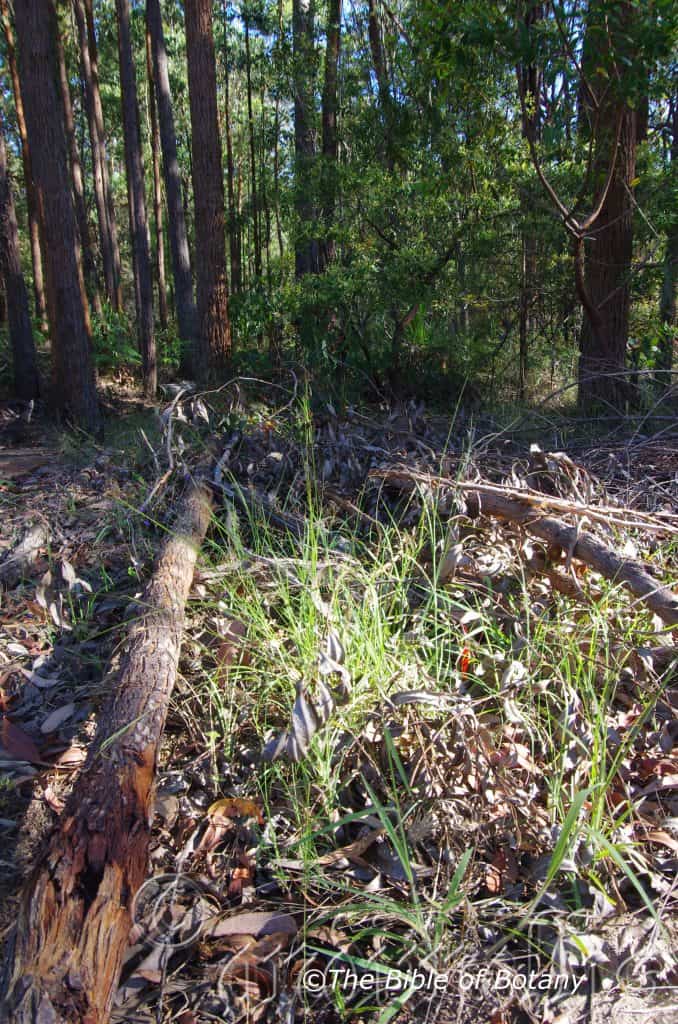
Author’s Garden The Pinnacles NSW
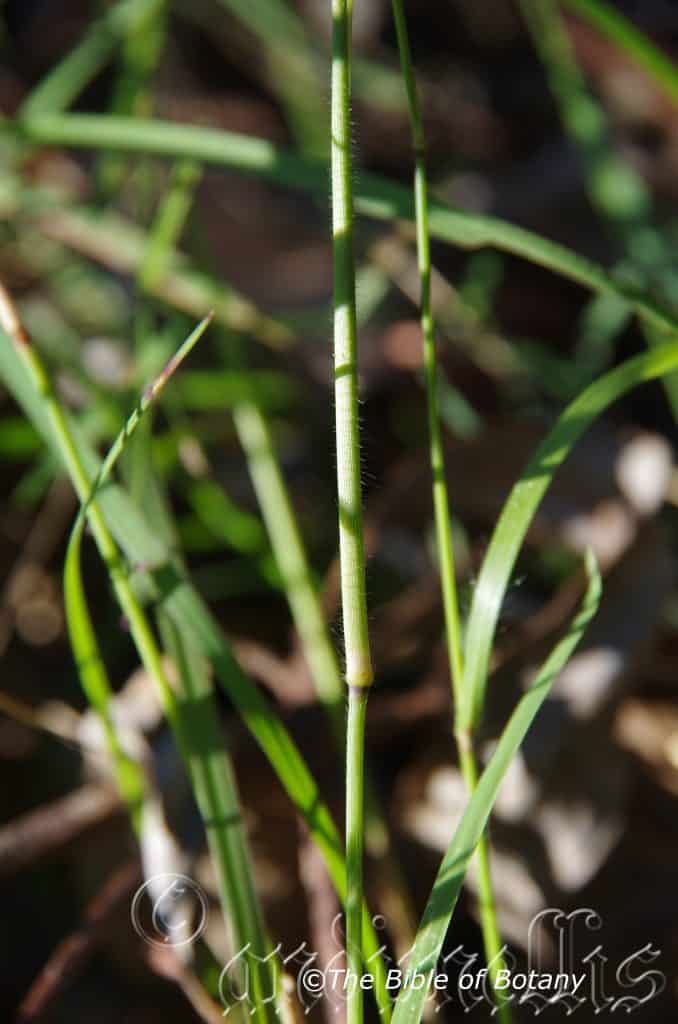
Author’s Garden The Pinnacles NSW
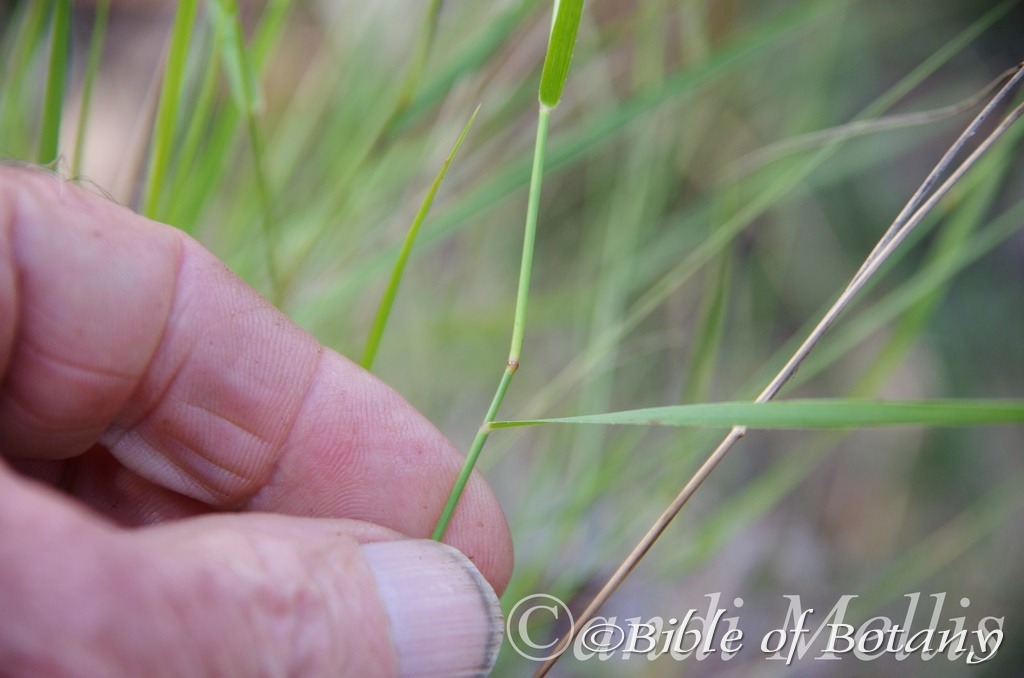
Author’s Garden The Pinnacles NSW
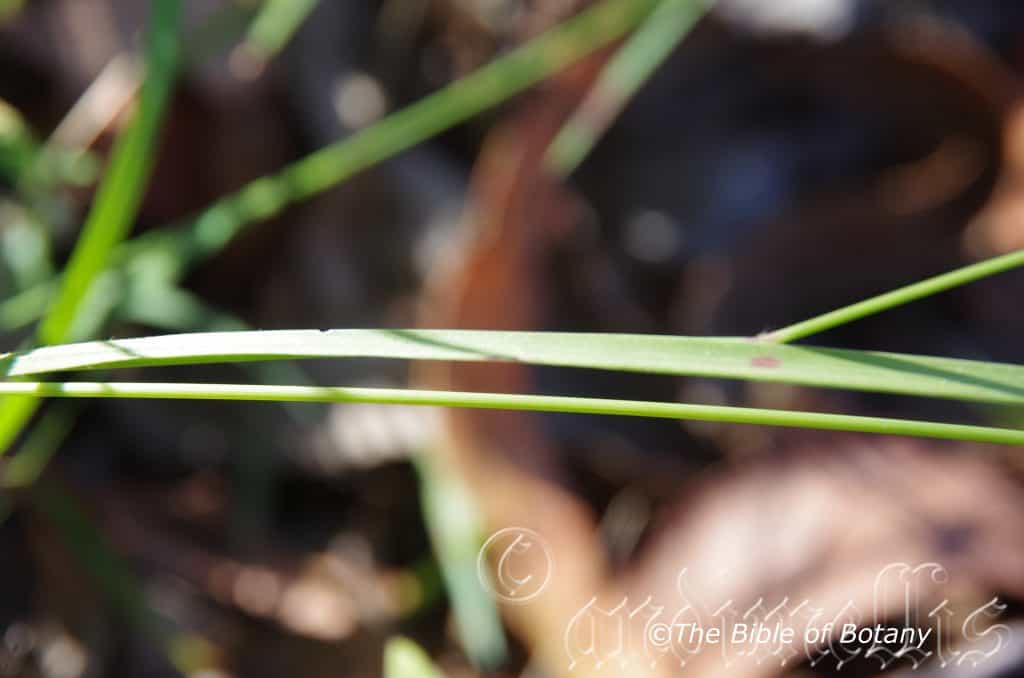
Author’s Garden The Pinnacles NSW

Author’s Garden The Pinnacles NSW
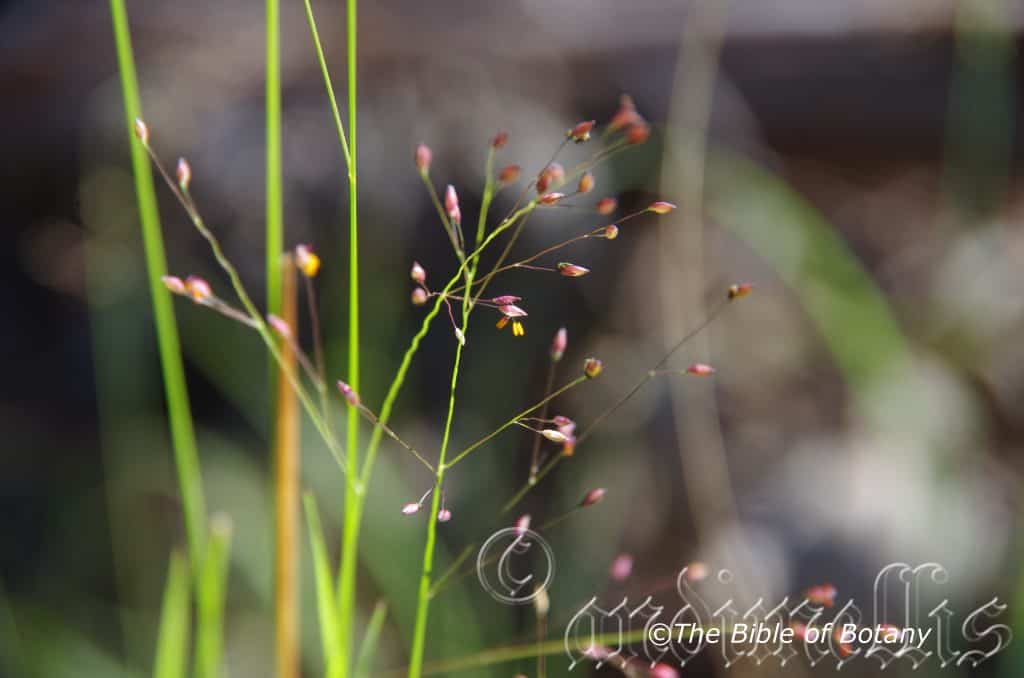
Author’s Garden The Pinnacles NSW

Author’s Garden The Pinnacles NSW
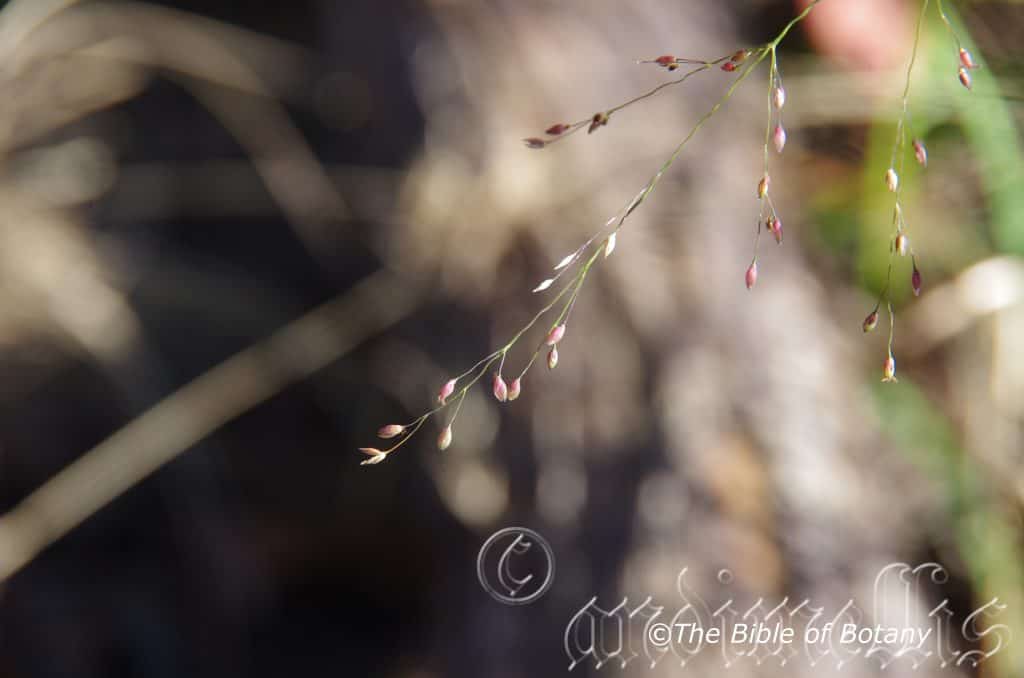
Author’s Garden The Pinnacles NSW
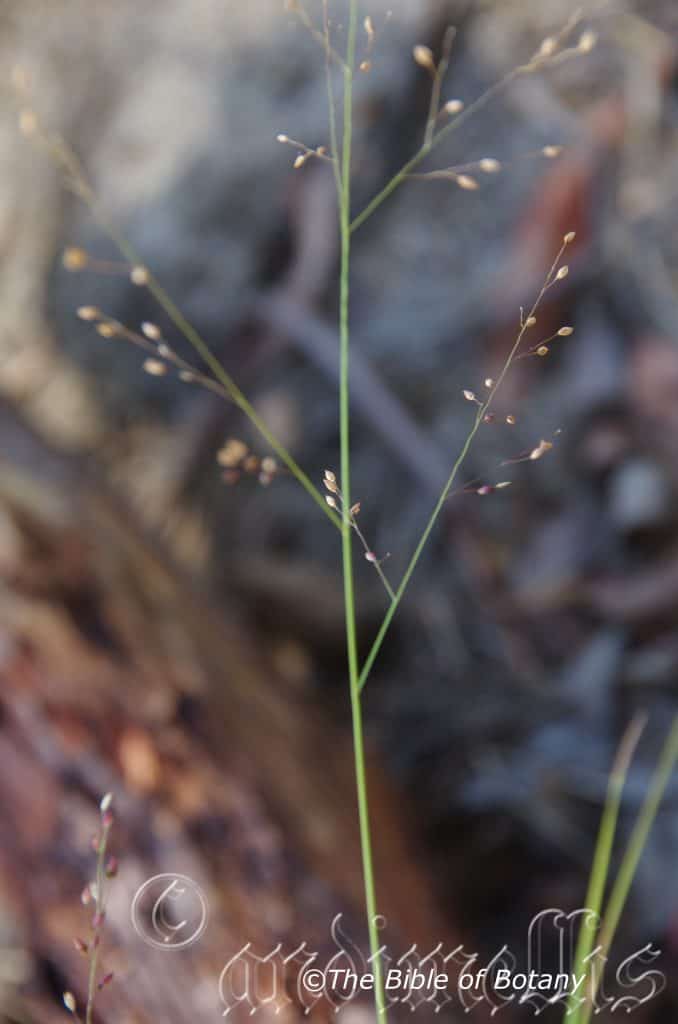
Author’s Garden The Pinnacles NSW
Panicum simile
Classification:
Division: Monocots
Division: Commelinids
Order: Poales
Family: Poaceae
Subfamily: Panicoideae
Tribe: Paniceae
Genus: From Panicum, which is the old classical Greek name for Millet or Panis). It refers to plants being in the same family as millet or the seeds from which bad is made.)
Species: From Simili, which is Ancient Greek for alike or similar to. It refers to the appearance being similar to another or typical of other species in the genus.
Sub Species:
Common Name: Two coloured Panic.
Distribution:
Panicum simile is found throughout Kakadu National Park Groote Eylandt and Gurrumuru area on the far north eastern coast of the Northern Territory. There is also a port of an isolated population on the Todd River near Alice Springs.
In the east it is found south from Batavia Downs on Cape York Peninsula to a line east of Mareeba on southern Cape York Peninsula in far north Queensland on the eastern third to half of the state to Buchan in north eastern Victoria. It is also found from Tinpot Hill to Delinequin in southern New South Wales and off shore Islands.
https://avh.ala.org.au/occurrences/search?taxa=Panicum+simile#tab_mapView
Habitat Aspect Climate:
Panicum simile prefers dappled shade to full sun. It usually grows on poor soils in tropical rain forests, subtropical rain forests, moist sclerophyll forests, moist temperate sclerophyll forests, open woodlands, acacia woodlands or Eucalypt woodlands. The altitude ranges from 10 meter ASL to 920 meters ASL.
The temperatures range from minus 4 degrees in August to 40 degrees in February.
The rainfalls range from lows of 500mm to an average 2000mm annually.
Soil requirements:
Panicum simile prefers to grow on sandy loams to medium clays or fine silts to heavy silts. The soils are usually derived from decomposed sandstones, granites, shale, brown basalt, black basalt, metamorphic rocks, meta shales or various types of alluvial silts. The soils pH. ranges from 4.5pH to 6pH. It tolerates seasonal waterlogged soils. Non saline soils to moderately saline soils are tolerated.
Height & Spread:
Wild Plants: 0.2m to 0.7m by 0.2m to 0.4m.
Characteristics:
Panicum simile’s is a delicate clumped perennial with pale grass-green stems. The rhizomes and stolons are absent on this species. The culms are erect and measure 200mm to 700mm in length. The wiry culms have 2 to 4 nodes. The mid culm’s internodes are glabrous or sparsely covered in white pilose hairs while the nodes are glabrous. The lateral branches are simple or branched once. The leaf sheaths are sparsely to moderately covered in white pubescent hairs or at times are a mixture with short white pilose hairs while the auricles are absent. The ligules are fringed membrane or are ciliate membrane that measures 0.2mm to 0.3mm in length.
Panicum simile’s alternate, simple, spreading leaves are linear and measure 30mm to 150mm in length by 1mm to 3.5mm in width. The symmetrical bases are rounded or truncate while the apexes are tapering. The concolourous laminas are pale grass-green, to mid grass-green and glabrous to covered in white pubescent hairs. The laminas are flat while the margins are entire. The mid vein is prominent on the lower lamina.
The Inflorescences of Panicum simile are loose, open, compound panicles with semi erect branches. The ovate panicles measure 50mm to 200mm in length by 20mm to 100mm in diameter while the disjunct spikelets are clustered evenly along the apical two thirds of the branches. The peduncle and rachises are glabrous to slightly covered in white puberulent hairs.
The spikelets are pedicelled with a single upper fertile floret and single sterile lower floret. The lanceolate or elliptic spikelets are divergently spreading and measure 3mm to 4mm in length. The upper fertile spikelets comprise of 1 basal sterile floret and 1 fertile floret without rachilla extensions. The lanceolate or ovate, dorsally compressed spikelets measure 2.2mm to 3.5mm in length. The rachilla internodes are elongated between the glumes.
The glumes are dissimilar. The lower ovate, membranous glumes are without keels and have 3 to 5 nerves and terminate in a muticus or mucronate apex. The upper elliptical, membranous glumes are without keels and usually have 5 to 7 nerves. The glumes are smooth and measure 2.2mm to 2.8mm in length.
The lower lemmas are slightly shorter than the spikelets. It is membranous, without keels and have 7 nerves and have a mucronate apex. The palea is insignificant. The fertile lemmas measure 1.7mm to 2.5mm in length. There are 3 white anthers. The flowers appear from October to May.
Panicum simile’s fruits are lanceolate grains. The green grains turn dull creamy fawn when ripe with a rounded base with acuminate apex. The grains measure 1.5mm to 2mm in length.
Wildlife:
Panicum simile is the host plant for theWonder Brown butterfly Heteronympha mirifica, Brown Ringlet Moth Hypocysta metirius and Orange Ringlet Hypocysta adiante.
The seeds are eaten by many native finches including the red-browed finch Neochmia temporalis. The Eastern Rosella Platycercus eximius and Pale Headed Rosella Platycercus adscitus have been seen attending the seed heads.
Cultivation:
Panicum simile is a straggly soft foliaged grass for large forested areas around dams or in gullies. It would look rather weedy in small gardens. It can be slashed and will recover very quickly but is not suitable for long term grazing.
It is suitable for semi shaded to full sun areas near the entrance to rainforests and does exceptionally well in riparian flats and beneath open forest canopies.
It is a preferred grass for both domestic and native mammals and is of excellent quality on shaded light forested areas.
Propagation:
Seeds: Panicum simile’s seeds directly into a seed raising mix. Cover them with 2mm of fine sand and keep moist not wet. Place the tray in a warm sunny position.
When the seedlings are 25mm to 50mm tall, prick them out in small groups and plant them into 20mm tubes using a good organic mix.
Once the seedlings reach 75mm to 80mm in height, plant them out into their permanent position and water thoroughly with our commended fertilizer. Plant them at 250mm centers.
Alternatively the seed can be broadcast out in small areas or used in a seeder on broad acreage.
Fertilize using seaweed, fish emulsion or organic chicken pellets at the time of sowing.
Further Comments from Readers:
Hi reader, it seems you use The Bible of Botany a lot. That’s great as we have great pleasure in bringing it to you! It’s a little awkward for us to ask, but our first aim is to purchase land approximately 1,600 hectares to link several parcels of N.P. into one at The Pinnacles NSW Australia, but we need your help. We’re not salespeople. We’re amateur botanists who have dedicated over 30 years to saving the environment in a practical way. We depend on donations to reach our goal. If you donate just $5, the price of your coffee this Sunday, We can help to keep the planet alive in a real way and continue to bring you regular updates and features on Australian plants all in one Botanical Bible. Any support is greatly appreciated. Thank you.
In the spirit of reconciliation we acknowledge the Bundjalung, Gumbaynggirr and Yaegl and all aboriginal nations throughout Australia and their connections to land, sea and community. We pay our respect to their Elders past, present and future for the pleasures we have gained.
Papillilabium beckleri
Classification:
Unranked: Monocots
Class:
Order: Asparagales
Family: Orcidaceae
Sub Family: Epidendroideae
Tribe: Vandeae
Sub Tribe: Aeridinae
Genus: From Papilio, which is Latin for a butterfly. It refers to a genus of orchids having flowers, which look similar to a butterfly in flight.
Species: Is named in honour of Herman Beckler; 1828-1914, who was a German medical practioner and amateur botanist of high quality specimens. He collected extensively around the Moreton Bay area in southern Queensland and the Clarence Valley in northern New South Wales.
Sub specie:
Common Name:
Distribution:
Papillilabium beckleri is found south from the Maroochy River in south eastern coastal Queensland to the Royal National Park south of Sydney in central coastal New South Wales.
https://avh.ala.org.au/occurrences/search?taxa=Papillilabium+beckleri#tab_mapView
Habitat Aspect Climate:
Papillilabium beckleri prefer medium shade to dappled shade. It usually grows in well-developed rainforest on the coastal ranges especially on the outer branchlets and twigs or at times in well-developed littoral rainforests. Its altitude ranges from 10 meters ASL to 600 meters ASL.
The temperatures range from 1 degree in August to 36 degrees in January.
The rainfall ranges from lows of 1000mm to 2000mm average per annum.
Soil requirements:
Papillilabium beckleri grows as an epiphyte on the outer branchlets trees. The soils pH ranges from 5.5pH to 6.5pH. The host trees do not tolerate waterlogged soils.
Height & Spread:
Wild Plants: 0.06m to 0.08m by 0.1m to 0.3m.
Characteristics:
Papillilabium beckleri grows as a slender epiphytic orchid with 1 shoot often suspended by 1 to numerous, tangled, aerial roots. The stems measure 2mm to 40mm in length. It is often found on the outer twigs, branches and at times trunks of the host trees.
Papillilabium beckleri has 3 to 8 erect oblanceolate to linear leaves. The leaves measure 12mm to 60mm in length by 2mm to 5mm in width. The bases are clasping while the apexes are acute. The concolourous, coriaceous leaves are deep green often with purple spotting.
The Inflorescences are short pendulant spikes. The spikes usually have 1 to 8 individual flowers. The spikes measure 5mm to 45mm in length. The ovary which is distinct from the pedicel measure 3mm to 6mm in overall length while the pedicel measures 2mm to 3mm in length. The cupuliform flowers strongly fragrant. The usually plain green or at times green with purple or crimson marked sepals are narrow oblong to ovate. The sepals measure 3mm to 4mm in length.
The usually plain green or at times green with purple or crimson marked petals are linear. The petals measure 3mm to 4mm in length.
The labellum is usually white to lime-green or at times sometimes with purple markings. The midlobe measures 3mm to 5mm in length and is deeply bifid. The broad, triangular falcate lateral lobes measure 1mm to 1.5mm in length. The slightly curved spur measures 2mm to 2.5mm in length. The column measures 1.5mm in length while the foot measures 2mm to 2.5mm in length. The flowers appear from September to November.
The fruits are ellipsoidal capsules. The green capsules turn deep grey When ripe.
Confusing Species:
Papillilabium beckleri’s labellum is mostly covered in thick papillae lumps.
Schistotylus purpuratus’s labellum is glabrous.
Wildlife:
Papillilabium beckleri are visited by native bees and several species of hover flies and pollen wasps.
Cultivation:
Papillilabium beckleri is an unusual epiphytic orchid to grow in the garden but it needs a cool, moist, light to heavy shades position to survive and thrive. The best place is in a green house or bush house, where the environment can be controlled better. It does well on slabs of cork or on slabs of old tree fern.
Propagation:
Seeds: The seeds are very difficult to acquire and qui treatment before sowing. Really Orchid seeds are meant for professionals with time, equipment and space. However if you wish to persevere then here are the basics and you are learning from an amateur. Once the orchids are large enough to handle treat it similarly to other ground orchids.
All ferns that are declared rare, vulnerable or endangered are protected by Federal and State Laws and must not be removed from the wild unless you are a land developer, mining company or main Roads department etc. This includes bulbs, roots, leaves and flowers. No part of any plant can be removed from Federal, State or Local Government land without the prior permission of the authority and this includes the spore.
1. Obtain relevant materials
The first step in growing orchid from seed will be sourcing and having at the ready all materials that will be required in the propagation process.
This includes all of the following:
Unripe orchid seed capsule. If there are 2 capsules secure the second capsule immediately after the first capsule splits or if only one capsule as soon as it changes colour.
Orchid gelling medium with agar which can be purchased from an orchid society or a specialist nursery.
Distilled water
Cooking pot
Spoon
Oven-safe glass or polypropylene containers with lids
Sealable bags
Clean, sterilized cutting board
Rubber gloves
Paper towels
Tweezers or forceps
70 percent ethanol
Bleach
Scalpel or sharp knife
Planting pot
Orchid compost
Length of wire metal
Plastic spray bottle.
deep petri dishes or sterile jars.
2. Prepare agar medium
The agar medium is a special orchid gelling mixture that distilled water will be added to distilled water.
To prepare the medium, mix equal parts of orchid gelling medium with distilled water in a cooking pot.
Place the pot on a stove and bring the mixture to boil for while stirring continuously for two minutes.
Pour the mixture into the petri dishes glass or propylene containers while ensuring not to fill the containers above 20 percent of their volume.
Loosely replace the lids to the containers. Sterilize the containers by heating them up in a microwave oven for between 2 to 3 minutes.
Spray 70 percent ethanol into a sealable bag to create a sterile environment. Transfer the heated containers into the sealable bag.
Allow the containers to cool a bit before tightening their lids and then sealing the bag. Leave the containers to stand for a few days until the mixture solidifies.
3. Prepare seed capsule and work surface
Place an open pot of water on a stove and bring to boil. Place the cutting board in the oven and sterilize.
Put on rubber gloves and sterilize the forceps, and scalpel with 70 percent ethanol.
Insert the seed capsule into a bowel filled with bleach for about fifteen minutes.
Sterilize seed capsule again with 70 percent ethanol and place on grill.
Using the sterilized scalpel, cut open the seed capsule to reveal the seeds. Using a scalpel or sharp knife, scrape out the seeds from the capsule unto an ethanol soaked paper towel.
4. Flasking of the seed
Take out the petri dishes or glass jars containers holding the agar medium. Over the steam, open up the containers and transfer seeds from the ethanol soaked paper towel into the individual containers using the sterilized forceps.
The amount of seeds will determine the number of containers required. Replace the lid of the containers and place them on a window sill that receives indirect sunlight.
5. Wait and exercise patience
All that can be done at this point is to wait until the seeds germinate. The amount of time that this might take varies and is dependent on the particular species.
Generally, the time can range from a few months to a few years. During this period of waiting, ensure the containers are free from contamination to ensure that germination is not disrupted.
6. Emergence of protocorms
Protocorms are tuber-shaped bodies with rhizoids that are produced by the young seedlings of various orchids. Protocorms represent the embryonic form of the orchid plant.
Their emergence after the period of waiting at an affirmation that everything in the propagation process is on track.
7. Transflask orchid seedlings is done after they have developed roots
Upon the emergence of the protocorms, consistently observe the growth of the seedlings. At the point when the seedlings appear to overcrowd the flask, transflasking should be carried out, typically within 30 and 60 days.
* This is done by removing individual seedlings using sterilized tweezers from the original containers and placing them in new containers also filled, in a proportion similar to the original, with agar medium. 6 to 8 in a standard petri dish or 1or 2 to a test tube
8. Transplant seedlings into planting pots
On the presumption that there are no disruptions to the plant growth, the seedlings will eventually outgrow the containers.
At this point, they are to be transplanted into planting pots. A good rule of thumb to determine when they are ready to be transplanted is when the seedlings have developed roots that have grown up to the length of one-quarter of an inch.
To transplant, prepare a planting pot or other container for receiving the seedling by majorly filling it up with coarse fir bark and possibly some slightly moist orchid compost mixture containing perlite, fine charcoal, redwood bark shavings, etc.
To extract the seedlings, submerge the containers in warm water to help loosen the agar gel.
Once the agar medium is softened, twist a piece of metal to form a loop and in turn, use it to carefully pull out the seedlings from the container. It is best done if the agar and seedling can be removed together.
The seedlings can be further rinsed in lukewarm water to remove any excess agar mixture still stuck to them.
Following this, the seedlings can now be planted into the prepared pot with at least 50mm of space between each individual seedling.
9. Positioning the orchid
The seedling once fully transplanted should be placed in a location that is warm with good indirect sun light.
Slowly position the pots into an area that closely assimilates the conditions it will be growing under.
The choice as to whether the plant should be exposed to full sun or in direct sunlight will be dependent on the particular orchid specie.
10. Subsequent care of the plant
After the first week, the seedling can be misted several times a day and watered just once a week.
A guide in watering the plant will be using the dryness of the fir back that is, water the plant until the fir back is completely moistened and wait till it has completely dried out before watering again.
Do not fertilize until the seedlings have fully established themselves.
Division:
Plants can be divided using older plants that have several shoots. Each shoot should have roots and be healthy. Move the shoots by cutting them with a sharp clean, sterilised knife. Tie the new shoots firmly back onto a small slab of cork or small slab of old tree fern. Plants are slow to re-establish and should be kept moist with misting daily and in a cool, humid environment until fully established.
Fertilize using seaweed, fish emulsion or organic chicken pellets soaked in water on an alternate basis. Fertilize every two months until the plants are established then twice annually in early September or March to maintain better health, vitality and flowering.
Further Comments from Readers:
Hi reader, it seems you use The Bible of Botany a lot. That’s great as we have great pleasure in bringing it to you! It’s a little awkward for us to ask, but our first aim is to purchase land approximately 1,600 hectares to link several parcels of N.P. into one at The Pinnacles NSW Australia, but we need your help. We’re not salespeople. We’re amateur botanists who have dedicated over 30 years to saving the environment in a practical way. We depend on donations to reach our goal. If you donate just $5, the price of your coffee this Sunday, We can help to keep the planet alive in a real way and continue to bring you regular updates and features on Australian plants all in one Botanical Bible. Any support is greatly appreciated. Thank you.
In the spirit of reconciliation we acknowledge the Bundjalung, Gumbaynggirr and Yaegl and all aboriginal nations throughout Australia and their connections to land, sea and community. We pay our respect to their Elders past, present and future for the pleasures we have gained.
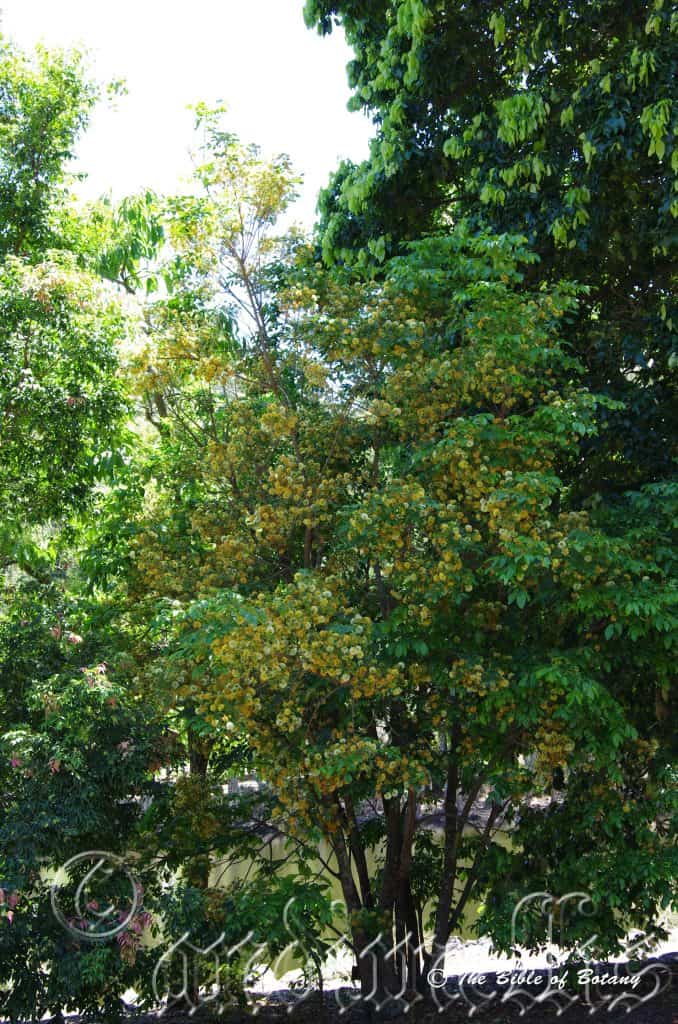
Mount Cootha Botanical Gardens Qld.
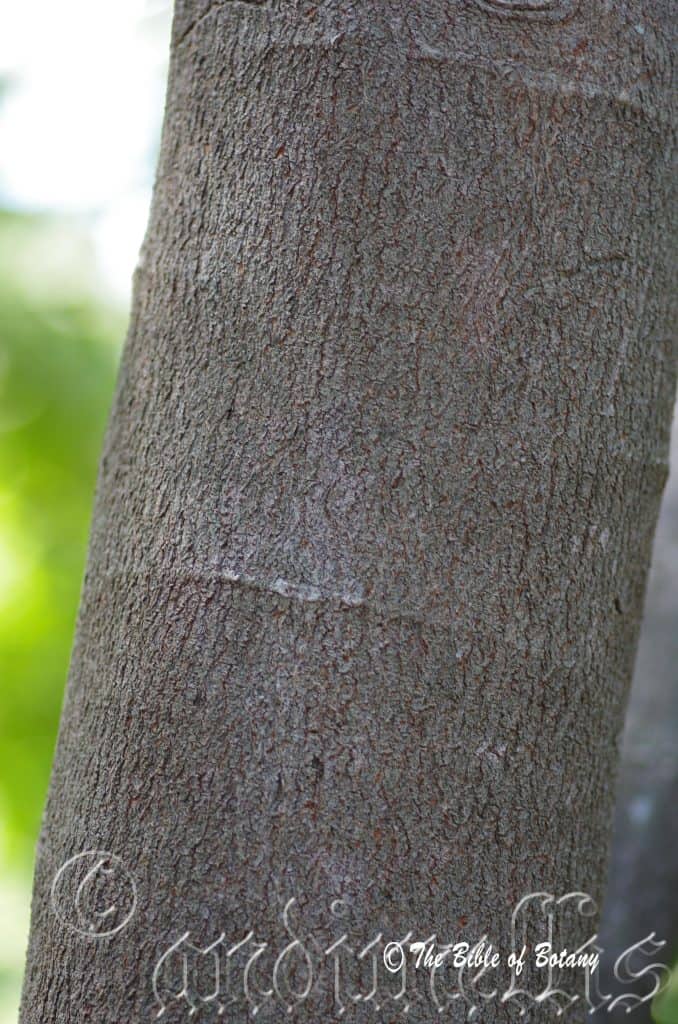
Palmatum Gardens Townsville Qld.
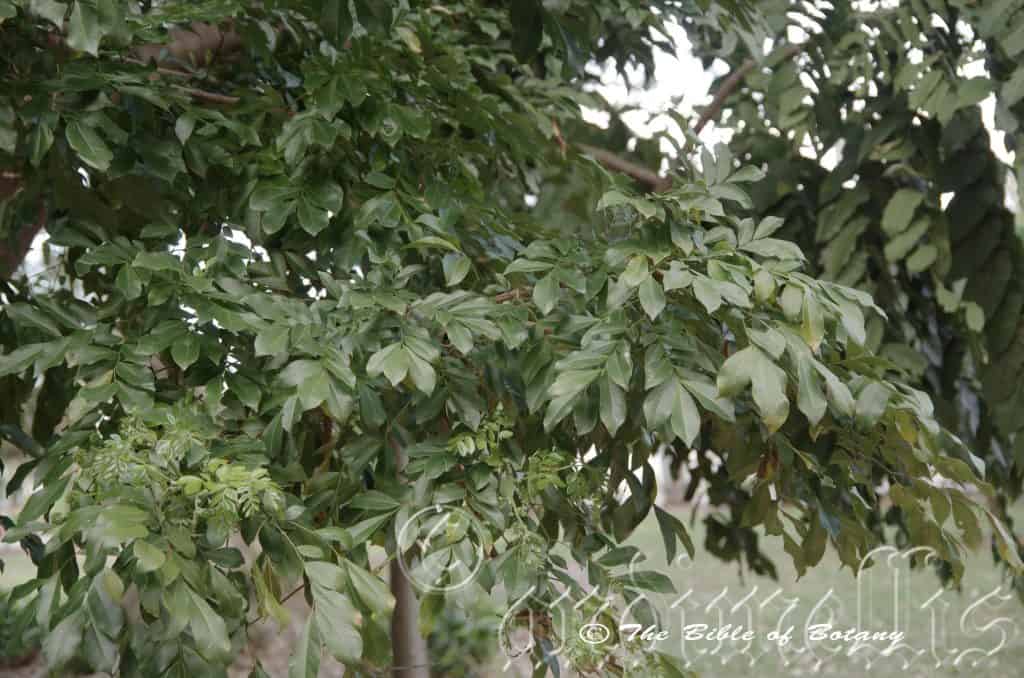
Anderson Gardens Townsville Qld.
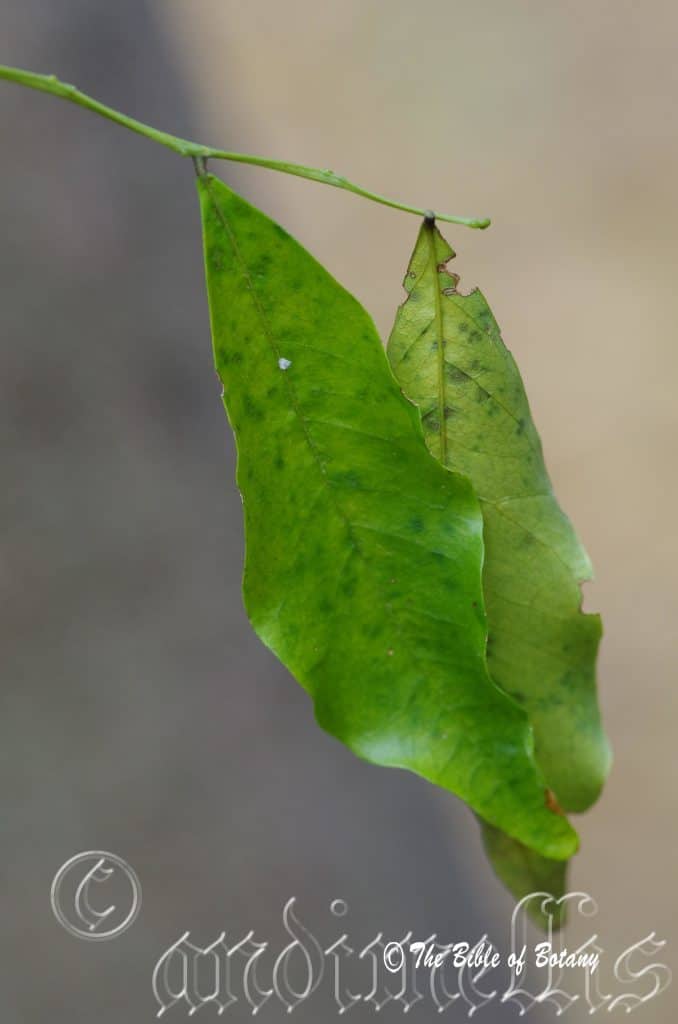
Palmatum Gardens Townsville Qld.
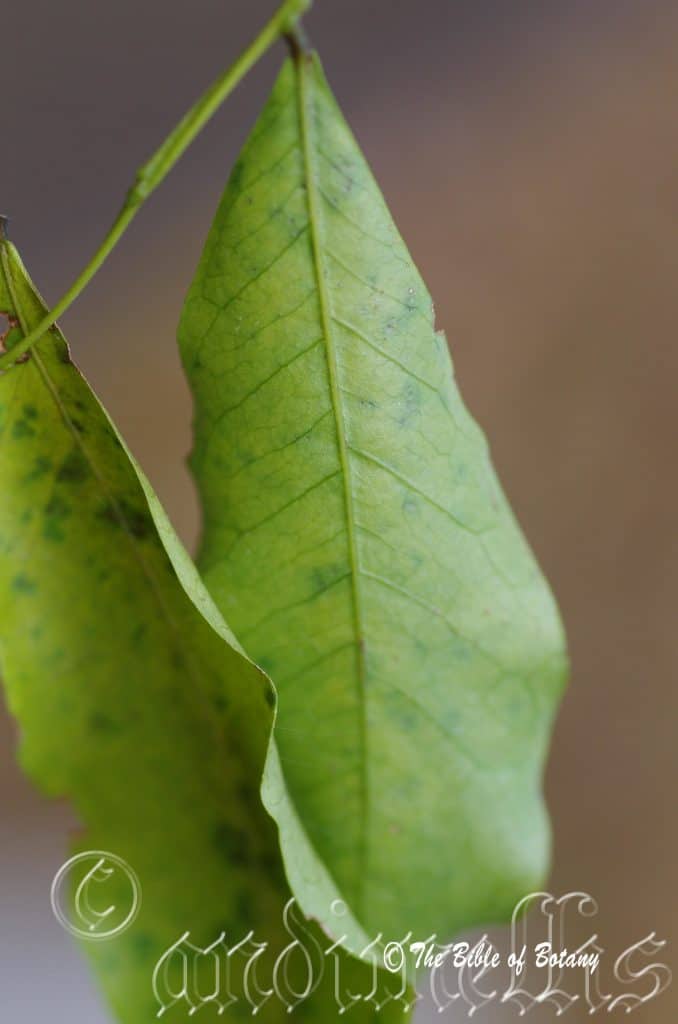
Palmatum Gardens Townsville Qld.
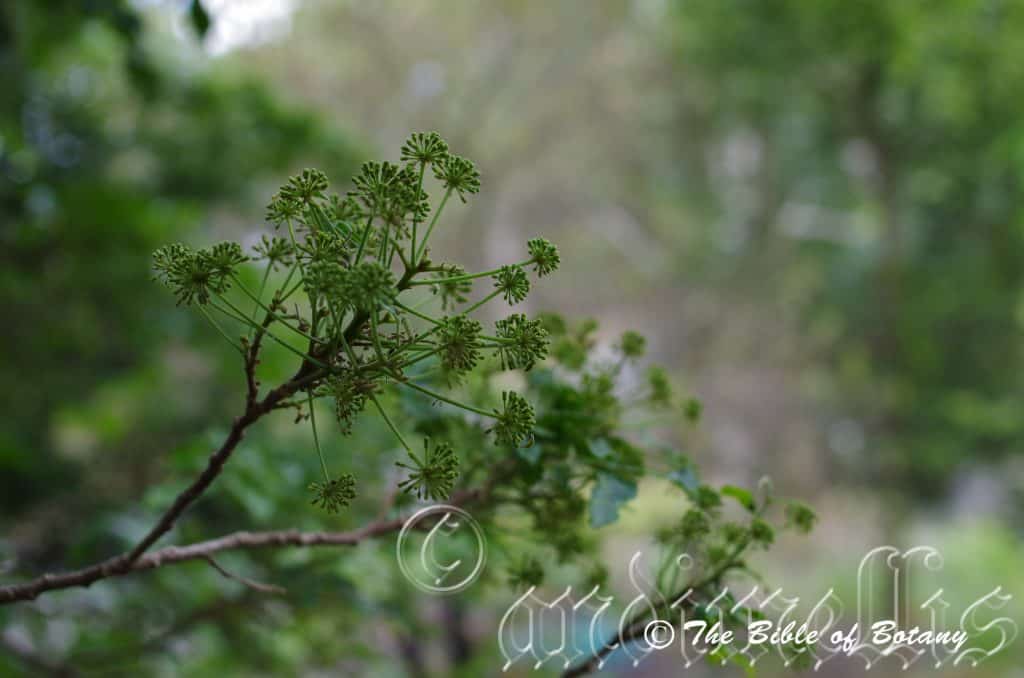
Mount Cootha Botanical Gardens Qld.
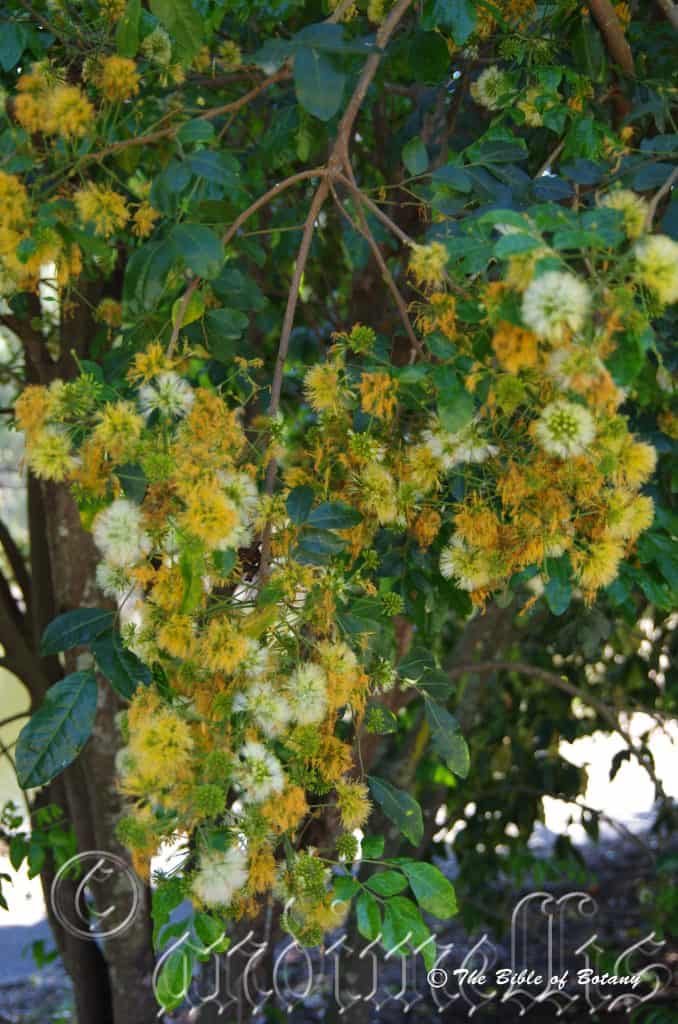
Mount Cootha Botanical Gardens Qld.
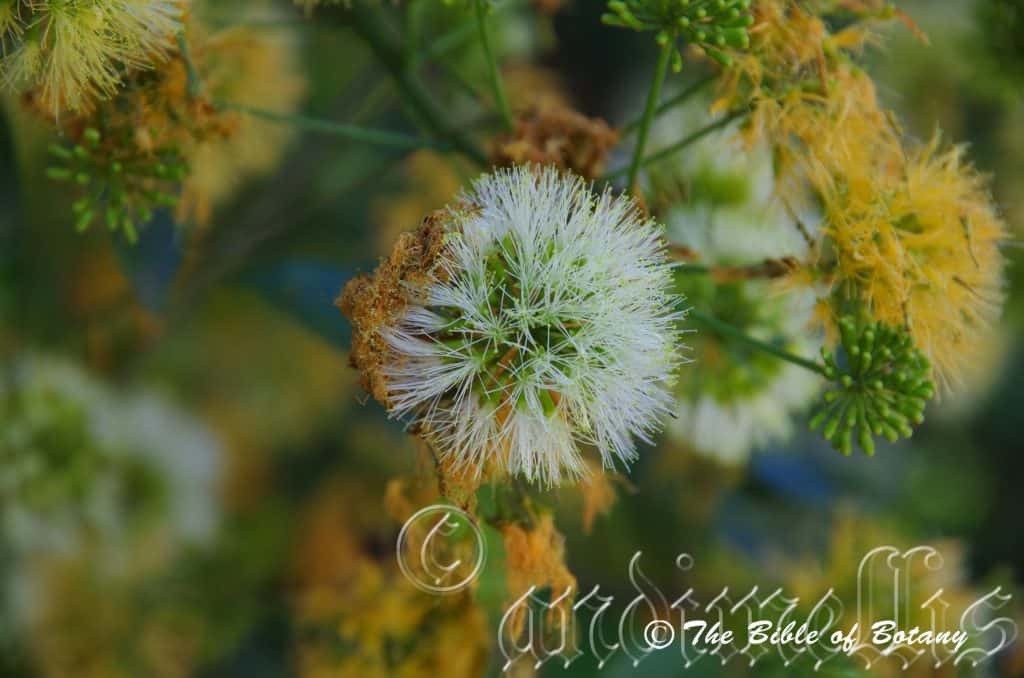
Mount Cootha Botanical Gardens Qld.
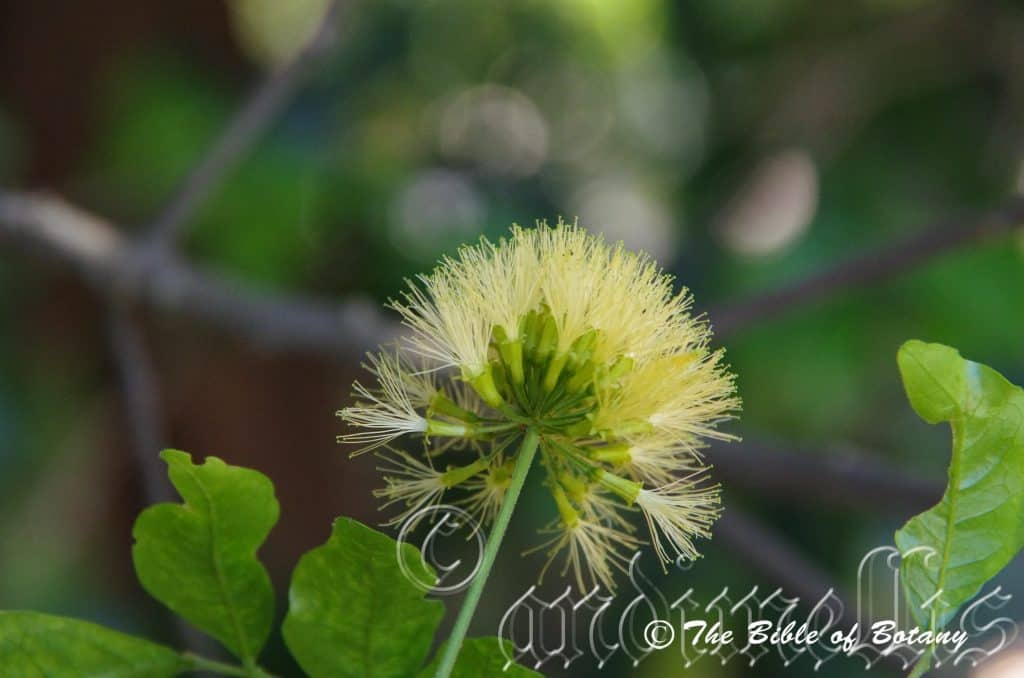
Mount Cootha Botanical Gardens Qld.
Pararchidendron pruinosum
Classification:
Unranked: Eudicots
Unranked: Rosids
Order: Fabales
Family: Fabaceae
Genus: FromPará, which is a Greek prefix which is usually attached to a descriptive verb and stands for to be close to, near, side by side or beside, Arche, which is Ancient Greek for to have power and sovereignty and Déndron, which is Ancient Greek for a tree. It refers to the overall aspect or trees, which stand up to the best with exuding power and sovereignty.
Species: From Pruinosus, which is Latin for frosty or to be covered in frost and Karpós, which is Ancient Greek for a fruit. It refers to fruits or pods, which are covered in a powdery or waxy substance resembling frost.
Sub specie: Pararchidendron pruinosum subsp. pruinosum. FromPruinosus, which is Latin for frosty or to be covered in frost and Karpós, which is Ancient Greek for a fruit. It refers to fruits or pods, which are covered in a powdery or waxy substance resembling frost.
Common Name: Monkeys Ear Rings.
Distribution:
Pararchidendron pruinosum is found in several disjunct populations south from Cooktown in northern Queensland to Nowra in southern coastal New South Wales. It is found on and east of the Great Dividing Range.
It is also found in Indonesia, Papua, New Guinee and east Timor.
https://avh.ala.org.au/occurrences/search?taxa=Pararchidendron+pruinosum#tab_mapView
Habitat Aspect Climate:
Pararchidendron pruinosum prefers dappled shade to full sun. It grows in and adjacent to well-developed rainforests moist Eucalyptus forests or moist littoral rainforests. The altitude ranges from 10 meters ASL to 1000 meters ASL.
The temperatures range from minus 2 degrees in July to 36 degrees in January.
The rainfall ranges from lows of 800mm to 3200mm average per annum.
Soil requirements:
Pararchidendron pruinosum prefers sandy loams to medium clays. The soils are usually derived from decomposed sandstones or granites. The soils pH ranges from 5pH to 6pH. It does not tolerate of waterlogged soils. Non saline soils to moderately saline soils are tolerated.
Height & Spread:
Wild Plants:12m to 16m by 6m to 8m.
Characteristics:
Pararchidendron pruinosum’s trunk is deep grey-brown, straight for about 60mm of its height. The slender stems are deep grey-brown and scabrous. Young shoots are deep olive-green and glabrous. The stems are terete to somewhat angular.
The opposite bi-pinnate leave’s rachis measure 20mm to 150mm in length and have 1 to 4 pairs of pinnae. The rachis has a large oblong pulvinus. There is a large gland between the upper pair of pinnae and the main rachis. The peduncles measure 50mm to 80mm in length and have 5 to 11 alternate pinnules. The pedicels measure 1mm to 4mm in length. The broadly lanceolate to rhomboidal or broadly oblanceolate pinnules measure 20mm to 80mm in length by 15mm to 25mm in width. The bases are strongly oblique, cuneate to rounded while the apexes are broadly acute to broadly acuminate with an obtuse tip. The concolourous laminas are strongly asymmetrical, grass-green to deep grass-green, glabrous and glossy. The pinnules margins are entire curve slightly upwards from the mid vein and a glabrous or more often covered in soft white pulverulent hairs. The mid vein is slightly prominent on the lower lamina and is visible on the upper lamina.
The inflorescences of Pararchidendron pruinosum are born singularly or in pairs from the leaf axils. There are 80 to 120 individual flowers in a head. The lime-green peduncles measure 30mm to 90mm in length while the pedicels measure 4mm to 5mm in length. The lime-green calyxes measure 3mm to 4mm in length while the calyx lobes measure 1mm to 1.5mm in length. The lime-green corollas measure 3mm to 4mm in length while the corolla lobes measure 1mm to 1.5mm in length. The calyx and corolla is sparsely covered in white puberulent hairs externally and is glabrous internally.
The 40 to 60 stamens unite to form a column on the basal half and are free on the apical half. They measure 9mm to 13mm in length. The yellow-green stamens deepen to a bright golden yellow with age. The styles measure 10mm to 15mm in length. Pararchidendron pruinosum flowers from late October through to late January. Flowering appears to be more prolific following cooler winter periods.
Pararchidendron pruinosum’s fruits are flat, spiralling coriaceous pods. The pods measure 8mm to 12mm in length by 10mm to 16mm in width. The green pods turn pale creamy yellow-orange externally and pale creamy khaki-orange internally. The 2 to 6 turgid, glossy, black, discus seeds measure 5mm to 6mm in diameter by 3.5mm to 4mm in depth. (The seeds have variable centers in the disc.)
Wildlife:
Pararchidendron pruinosum’s do not appear to have any predators though the flowers are occasionally visited by many small butterflies, native bees and beetles.
Cultivation:
Pararchidendron pruinosa is a magnificent small shrub shade tree that deserves a place in every warm temperate, sub-tropical and tropical garden native or exotic garden. I would recommend this tree for planting on the western slopes of the Great Dividing Range and in central and southern Western Australia. It is ideal in almost every setting near ponds, at the edge of a rain forest in court yards, larger rockeries and especially as park trees When their size is balanced. In cultivation they will grow from 8 meters to 9 meters in height by 8 meters to 9 meters in diameter When grown in the open.
They grow exceptionally well on lighter soils When deep leaf litter keeps the soil cool and moisture at an even level. If these requirements are met it can cope with temperatures as low as minus 3 degrees and up to 40 degrees. It is drought resistant in their normal rainfall zones.
Add to the above, if it is given an adequate supply of native fertilizers on a regular basis the plants will respond with spectacular flowerings over a long period.
It often flowers from the fifth year from seed.
Be imaginative When planting in mass. Use the plants in different configurations and use curves. Light pruning after flowering or tip pruning will enhance the shrubs bushiness and provide longer stronger flower stems in the following season.
It is best used adjacent to small areas of bush close to paths or the house so their yellow flowers can be viewed regularly. It is great in small to large rockeries as the feature plant.
As parkland scenes they can be planted in small groups of 3 or 5 scatted as you would find them in nature to give a great bush scene. It is best used in the mid ground surrounded by shorter plants with fine or broad foliages with white or d flowers so they will dominate at the center of the bed especially When it is in flower.
Ensure that the whole plant or at least most of it is on display from most sections of the garden as the flowers are a real bonus.
Whether it is in flower or not this is a tree that will dominate the scene, will catch your attention and the viewer will be transfixed on the display rather than watching the path. It is excellent the growing of epiphytic orchids and ferns.
Propagation:
Seeds: Seeds can be moved easily from the plants as they dry. Once Pararchidendron pruinosum has finished flowering and the fruits have begun to dehisce place an old sheet below the trees and keep a close eye on it. Peg it down so it doesn’t blow around. When the seeds start to disperse, they will fall onto the sheet, especially if the weather turns hot, with the seeds being scatted on the ground.
Sow fresh seeds directly into a seed raising mix, keeping them moist not wet. When the seedlings are 20 to 25 mm tall, prick them out and plant them into 50mm native tubes using a good organic mix.
As the seedlings roots ach the bottom of the tubes plant them out into their permanent position. Do not delay.
Cuttings: Apparently Pararchidendron pruinosum cuttings strike relatively easy. Use 150mm to 250mm long hardened cuttings from the previous season’s growth. Take them in warmer months of the year. Remove half the leaves from the bottom section being careful not to tear the bark.
1 Prepare the cutting mix by adding two thirds sharp clean river sand, one third peat or one third perlite. These ingredients must be sterilized,
2 Select good material from non diseased plants,
3 Select semi green stems for cuttings. Look for a stem with two or three nodes,
4 Place the cutting on a flat, hard surface, and make a clean cut down one side of the cutting at the base for 10mm with a sharp sterile knife or razor blade. – This scarification of the node will increase the chances of roots emerging from this spot. Now remove all but one or two the leaves, leaving the apex leaves in tact. If the leaves are very large in proportion to the stem, cut off the apical halves.
5 Fill a saucer with water, and place a little medium strength rooting hormone into another container like a milk bottle top. Dip the node end of the cutting into the water and then into the rooting hormone. Tap off any excess hormone,
6 Use a small dipple stick or old pencil to poke a hole into the soilless potting mix. Ensure the hole is slightly larger than the stem diameter and be careful not to wipe the rooting hormone off the cuttings base. Place 2 to 4 cuttings in each of the 50mm native tubes,
7 I like to place the tubes in bucket with holes drilled in the bottom to allow excess water to drain out. A plastic bag that fits over the bucket is ideal to help maintain temperature and moisture. Place in a semi shaded, warm position like under 50mm shade cloth.
8 When the cuttings have struck, open the bag to allow air circulation for a few days to a week,
9 Once hardened off remove the cuttings from the bag and allow to further hardening for a few more days to a week,
10 Transplant into a good potting mix to grow on.
Fertilize using seaweed, fish emulsion or organic chicken pellets soaked in water on an alternate basis. Fertilize every two months until the plants are established then twice annually in early September or March to maintain health, vitality and better flowering.
Further Comments from Readers:
Hi reader, it seems you use The Bible of Botany a lot. That’s great as we have great pleasure in bringing it to you! It’s a little awkward for us to ask, but our first aim is to purchase land approximately 1,600 hectares to link several parcels of N.P. into one at The Pinnacles NSW Australia, but we need your help. We’re not salespeople. We’re amateur botanists who have dedicated over 30 years to saving the environment in a practical way. We depend on donations to reach our goal. If you donate just $5, the price of your coffee this Sunday, We can help to keep the planet alive in a real way and continue to bring you regular updates and features on Australian plants all in one Botanical Bible. Any support is greatly appreciated. Thank you.
In the spirit of reconciliation we acknowledge the Bundjalung, Gumbaynggirr and Yaegl and all aboriginal nations throughout Australia and their connections to land, sea and community. We pay our respect to their Elders past, present and future for the pleasures we have gained.
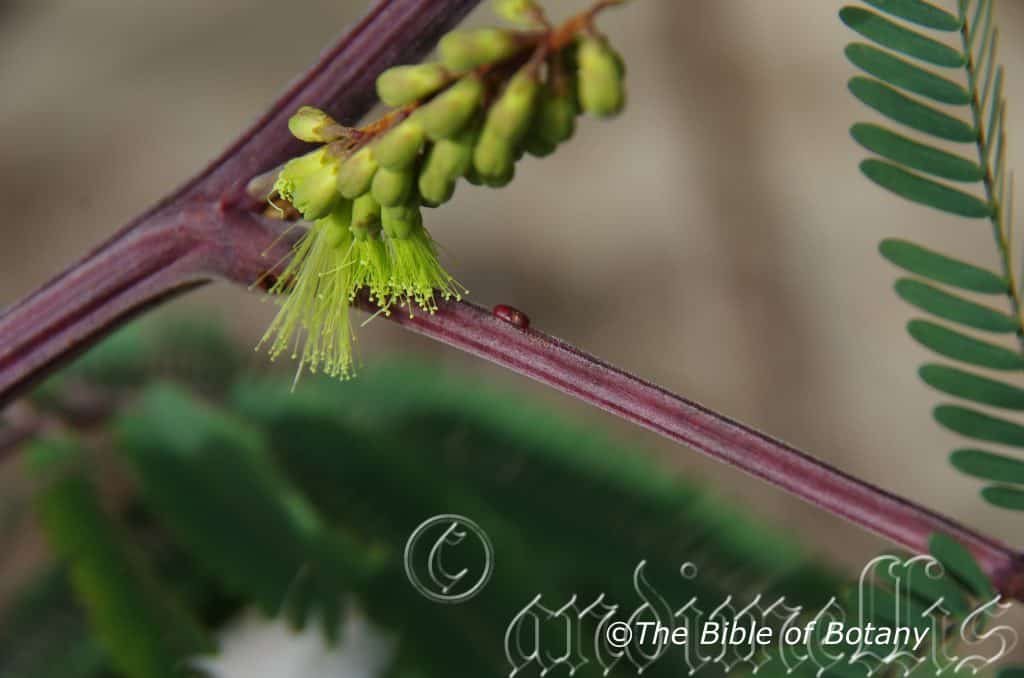
Author’s Garden The Pinnacles NSW
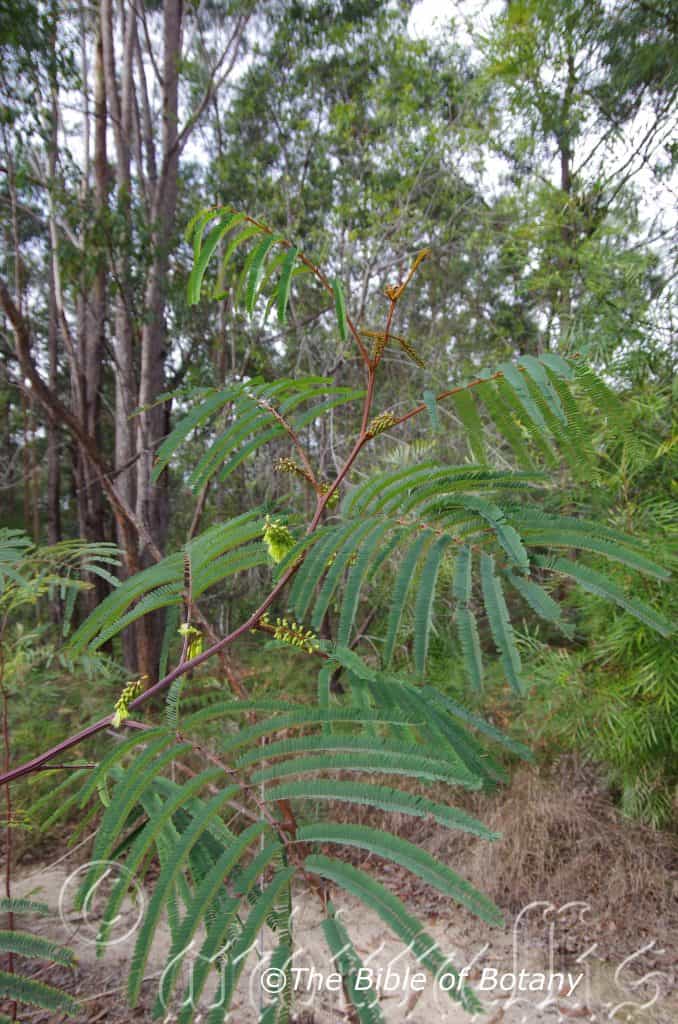
Author’s Garden The Pinnacles NSW
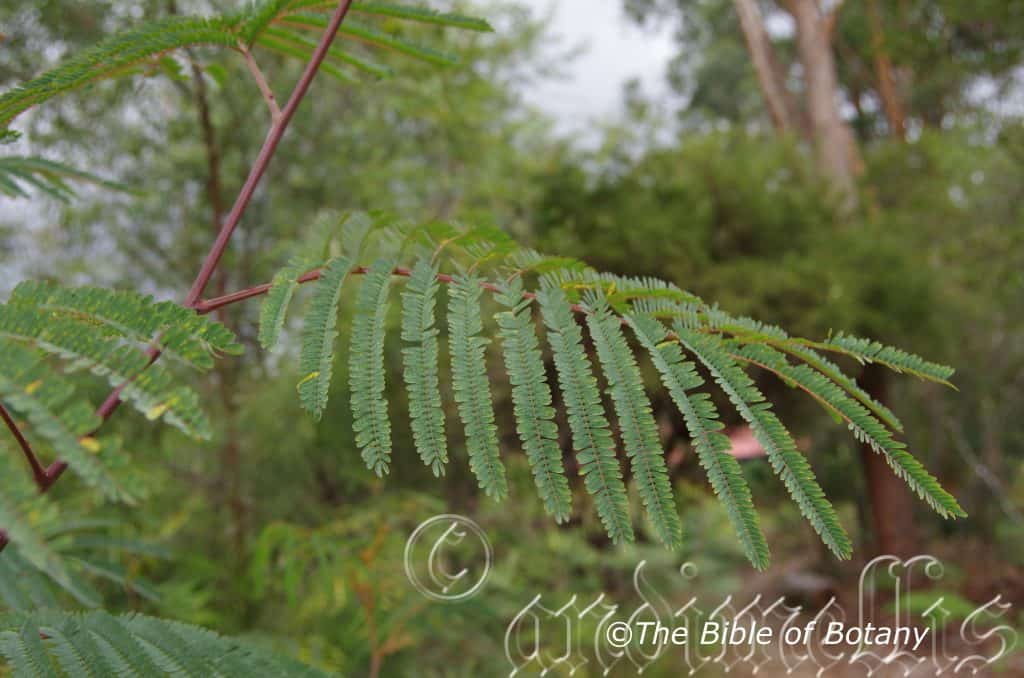
Author’s Garden The Pinnacles NSW
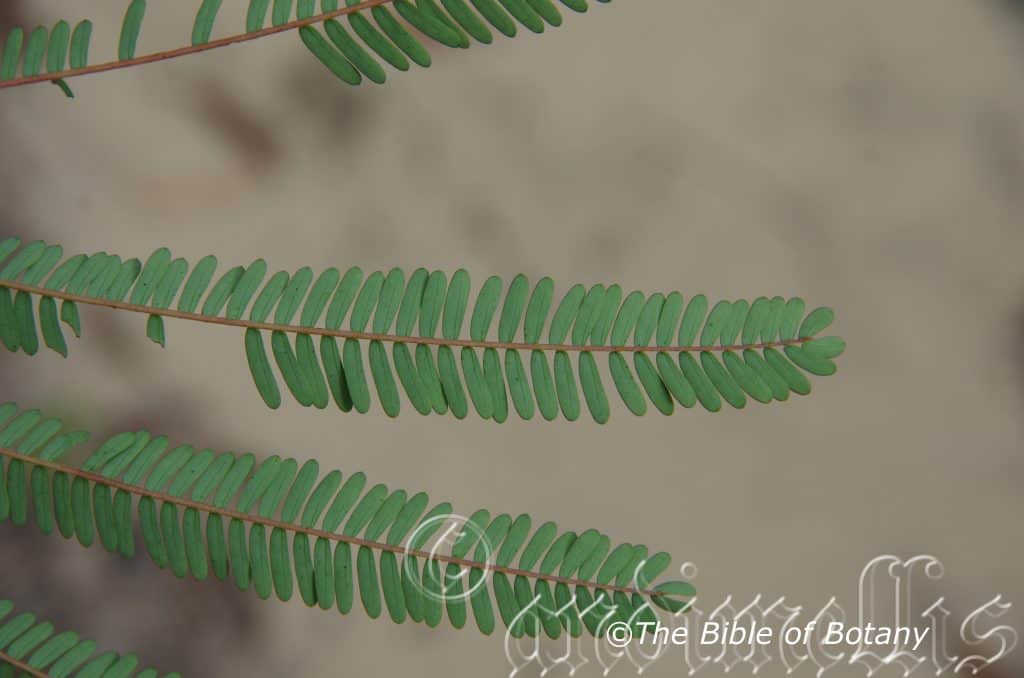
Author’s Garden The Pinnacles NSW
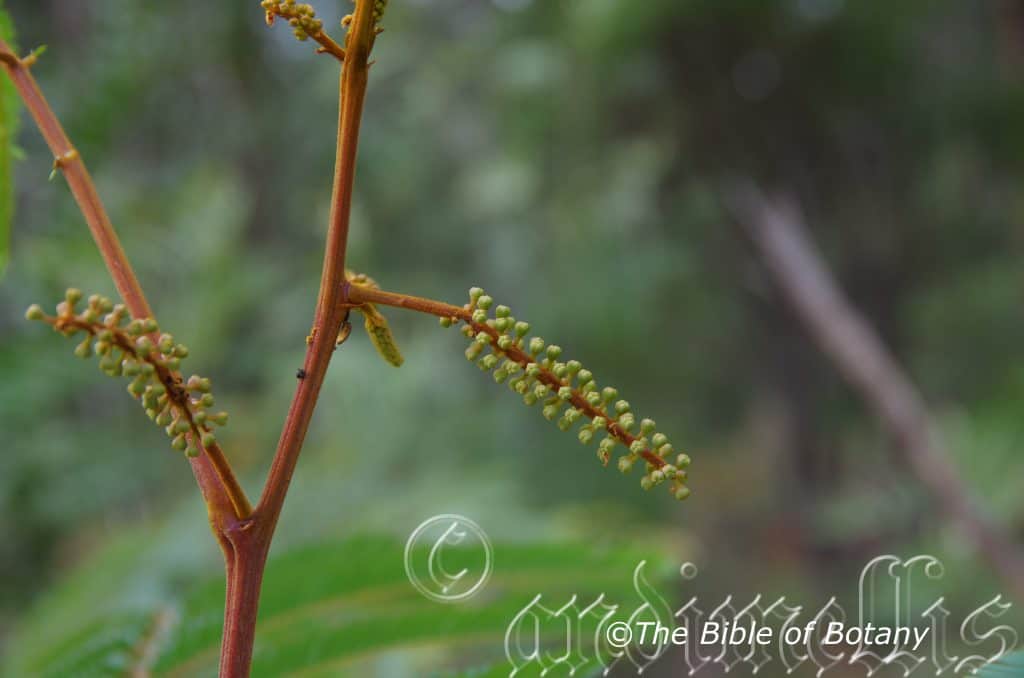
Author’s Garden The Pinnacles NSW
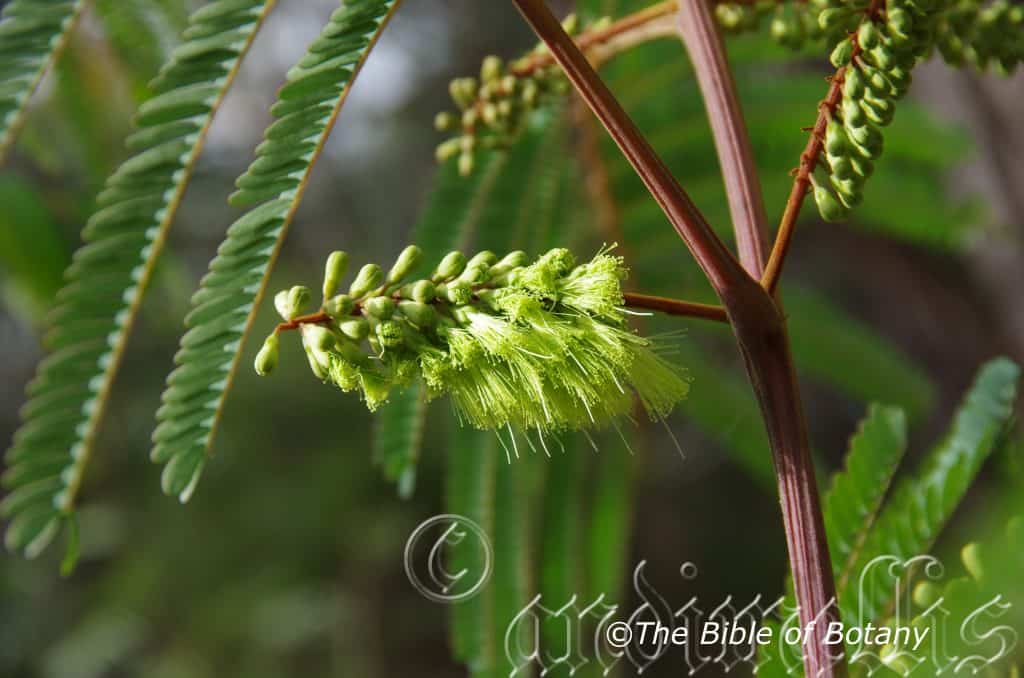
Author’s Garden The Pinnacles NSW
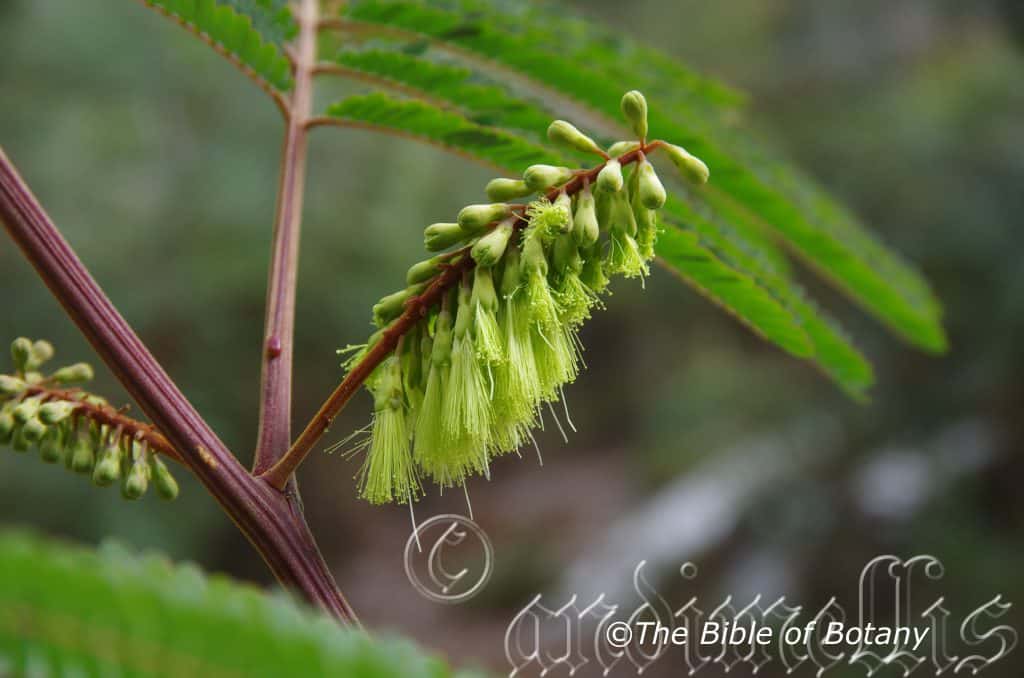
Author’s Garden The Pinnacles NSW
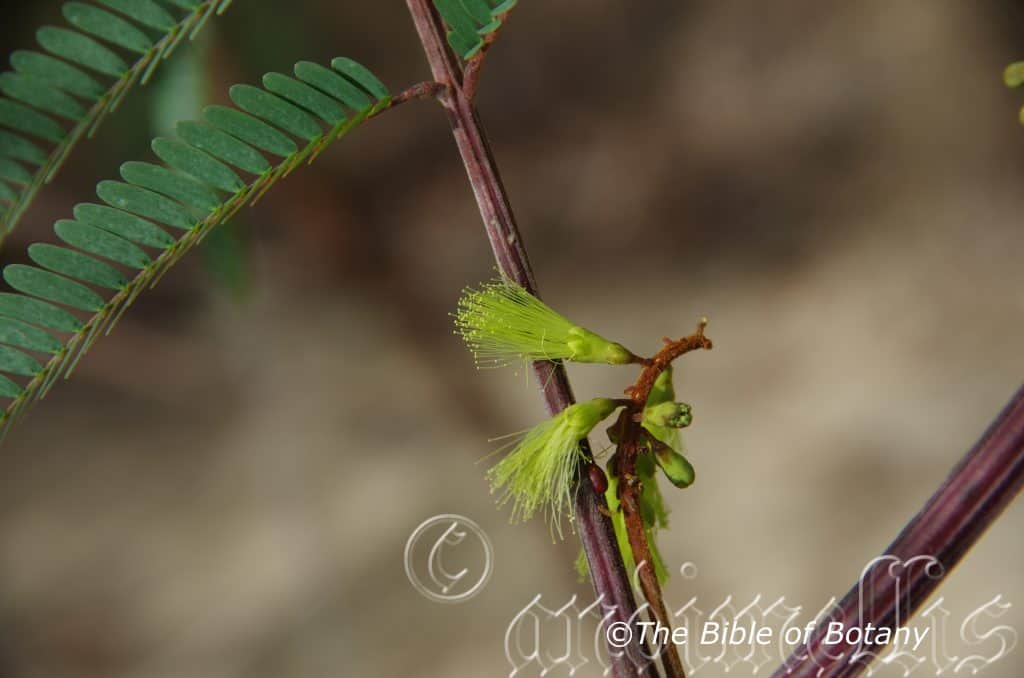
Author’s Garden The Pinnacles NSW
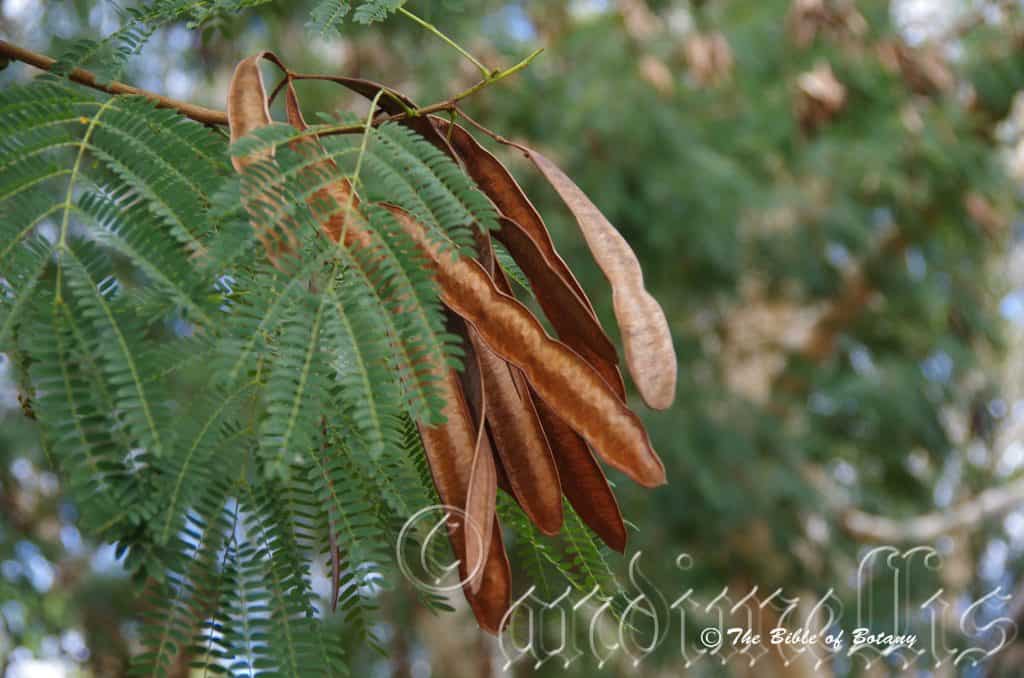
Author’s Garden The Pinnacles NSW
Paraserianthes lophantha
Classification:
Unranked: Eudicots
Unranked: Rosids
Order: Fabales
Family: Fabaceae
Genus: FromPará, which is a Greek prefix which is usually attached to a descriptive verb and stands for to be close to, near, side by side or beside, Seri, which is Ancient Greek for silk and ántha/ánthos, which are Ancient Greek for the male reproductive organs in a flower or the flower. It refers to the flowers, which are similar to those of the Serianthes genus.
Species: FromLophos, which is Ancient Greek for a crest. It refers to flowers, which appear like the crest of a cockatoo.
Sub specie: Paraserianthes lophantha subsp. lophantha. From Lophos, which is Ancient Greek for a crest. It refers to flowers, which appear like the crest of a cockatoo. It is the only sub species found in Australia.
Common Name: Siris or Powder Puff Tree.
Distribution:
Paraserianthes lophantha may be more widely distributed than shown on any available maps. It is found from central Western Australia in isolated populations along the coast from near Karratha to Port Headland. It is also found in The Kimberley’s to the Drysdale River National Park and Tunnel Creek National Park in Western Australia.
In the Northern Territory it can be found from near Alice Springs north to around Darwin, Kakadu National Park and Djukbinj National Park.
In the east it is found south from the Torres Strait Island in far north Queensland to the Brisbane River Valley. The plant has been widely cultivated and it is becoming more difficult to know which are natural and which have escaped from gardens.
It is also found in New Zealand.
https://avh.ala.org.au/occurrences/search?taxa=Paraserianthes+lophantha#tab_mapView
Habitat:
Paraserianthes lophantha prefer full sun though it may start its life in dense shade on the rainforest floor. The trees are associated with low land and littoral rain forests or wet Eucalyptus forests. The altitude ranges from 5 meters ASL to 520 meters ASL.
The temperatures range from 4 degrees in July to 44 degrees in January.
The rainfalls range from lows of 350mm to an average of 3200mm annually.
Soil Requirements:
Paraserianthes lophantha prefers deep, sandy loams, light fatty clays, medium clays or light silts to heavy silts. The soils are usually derived from decomposed sandstones granites, brown basalts, black basalts, or alluvial deposits. The soil’s pH ranges from 4.5pH to 7pH. It tolerates seasonal waterlogged soils. None saline soils to very saline soils are tolerated.
Height & Spread:
Wild Plants: 10m to 30m by 8m to 12m.
Characteristics:
Paraserianthes lophantha’s bark is a grey to deep grey with tessellated scars and irregular lenticels. The bases of large trees are slightly flanged. Branchlets are pale grey to grey-brown and irregularly covered in irregularly shaped lenticels. Juvenile branchlets and young shoots are terete, punctuate, grass-green to pale grey-green and sparsely to moderately covered in white, caduceus puberulent to pulverulent hairs. The trees strongly coppice after cool fires or damage.
Paraserianthes lophantha’s bipinnate leaves have 2 to 5 pairs of pinnae with each pinnae having 3 to 11 pairs of pinnules. The leaves measure 80mm to 180mm in length by 80mm to 160mm in width overall. The pinnae measure 60mm t0 90mm in length by 18mm to 28mm in width overall. The petioles, rachises, and petiolules are pale grey green. The petioles measure 6mm to 9mm in length while the rachises measure 40mm to 70mm in length and the petiolules measure 0.6mm to 1mm in length.
The pinnules are oblong to elliptical-oblong. The pinnae measure 20mm to 60mm in length by 8mm to 25mm in width. The bases are asymmetrical, oblique rounded on one side of the main vein and truncate on the other side while the apexes are obtuse. The discolourous leaves are grey-green and glabrous on the upper lamina while the lower lamina is much paler. The leaf margins are entire while the laminas are flat. The main vein is prominent on the lower lamina while the lateral veins are slightly prominent on the lower lamina. The main vein is clearly visible from the upper lamina while the lateral veins are faintly visible. There is a raised gland on the upper side of the upper petiole near the base and on the petiolules between most pairs of pinnules.
Juvenile leaves are nyctinastic with movements associated with diurnal light and temperature changes and controlled by the circadian clock and phytochromic receptors.
The inflorescences of Paraserianthes lophantha are 2 or 3 simple cymes which are terminally born or born from the upper leaf axils. There are 15 to 40 individual flowers on each cyme. The peduncles and pedicels are pale grey-green and sparsely to moderately covered in short white to pale grey pubescent hairs. The peduncles measure 50mm to 100mm in length while the pedicels usually measure 1.5mm to 4.5mm in length but can measure up to 7 mm in length. The cymes are pale lemon-green and measure 50mm to 90mm in diameter.
The grass–green cupular calyxes have minute lobes and are covered in white to pale grey pulverulent hairs. The calyxes measure 3.5 to 4.5mm in diameter. The corolla tubes are grass-green and sparsely to moderately covered in white to pale grey pubescent hairs. They measure 5mm to 11mm in length and have 5 small triangular lobes.
The numerous filiform filaments are white to creamy yellow tinged green on the upper half deepening in colour as they age. They measure 15mm to 30mm in length.
Flowers appear at the end of the dry season immediately after the first leaves appear and last until the start of the next dry season.
Paraserianthes lophantha fruits are long flat pods. The pods are glabrous and coriaceous. The pods measure 150mm to 300mm in length by 30mm to 55mm in width. The green pods turn pale yellow-tan on ripening and are indehiscent when they fall to the ground. The pods ripen during the dry season in late spring and early summer.
There are 3 to 12 deep brown seeds in a pod. The seeds are ellipsoidal and measure 8mm to 10mm in length by 6mm to 7mm in diameter.
Wildlife:
Paraserianthes lophantha fruits that drop to the ground are often eaten by native rats and kangaroos.
The leaves are eaten by wallabies and the larvae of the common yellow grass butterfly Eurema hecabe.
Cultivation:
Paraserianthes lophantha is a beautiful small tree for medium gardens. It makes excellent park tree and in cultivation normally maturing with a height of 15 meters to 20 meters with a spread of 15 meters and 20 meters. It is an excellent summer shade tree.
The tree is moderately fast in growth particularly when water is available and fertilizer and mulches are included. Young trees should be protected from grazing animals if a tall wide spreading tree is required. It is drought resistant and frost tolerant to at least minus 2 degrees once established but will need protection in the early years.
The trees should be good host for epiphytes as the bark is persistent however the deciduous state could allow too much light through unless they were planted in a dry rainforest scene.
Paraserianthes lophantha are best grown in the tropics When they respond to the heat and consistent soil moisture. They were grown as far south as Nana Glen during the war for their supply of good quality varnishes which was used in lacquering electrical motors for the war effort.
Paraserianthes lophantha make excellent additions for the backyard rainforest garden as it is quick to establish themselves. Their leguminous root system also makes them ideal for planting along creek banks for restoration work and on plains where it has assisted in increasing pasture fertility and development for stock. They should be more widely grown with in warm temperate areas of Australia close to the coast and tried at least as far north as Woolongong When better quality loam structured soils prevail. The plants have lost popularity with gardeners in recent times for some unknown reason.
Propagation:
Seeds:
Paraserianthes lophantha seeds can be sown directly into the seed raising mix. Place two seeds after nicking directly into 50mm or 75mm native tube using a seed raising mix or plant them directly into their permanent positions carefully marking the position so you do not lose it. Alternatively they can be sown into a seed tray. This method is very good as you do not disturb the roots on transplanting and growth is very quick. The problem is that any native rats and maybe the vermin rat (Rattus rattus) would steal the seeds even those that have recently struck. Place the trays or tubes into a sunny warm position and keep moist. When the seedlings are 60mm to 75mm in height transplant them into 50mm native tubes and place them in a sunny position.
Once the seedlings reach 200mm to 250mm in height plant them out into their permanent position. For mass plantings plant them at 8m to 9m centers for a rainforest of bank establishment projects or 15 meters apart for parkland situations.
Fertilize using Seaweed, fish emulsion or organic chicken pellets soaked in water on an alternate basis. Fertilize every two months until the plants are established then twice annually in early September to March to maintain health, vitality and better flowering and better quality fruit.
Further Comments from Readers:
Hi reader, it seems you use The Bible of Botany a lot. That’s great as we have great pleasure in bringing it to you! It’s a little awkward for us to ask, but our first aim is to purchase land approximately 1,600 hectares to link several parcels of N.P. into one at The Pinnacles NSW Australia, but we need your help. We’re not salespeople. We’re amateur botanists who have dedicated over 30 years to saving the environment in a practical way. We depend on donations to reach our goal. If you donate just $5, the price of your coffee this Sunday, We can help to keep the planet alive in a real way and continue to bring you regular updates and features on Australian plants all in one Botanical Bible. Any support is greatly appreciated. Thank you.
Parsonsia brownii
Classification:
Unranked: Eudicots
Unranked: Asterids
Order: Gentianales
Family: Apocynaceae
Genus: Is named in honour of James Parsons Parmentier; 1705-1770, who was a British physician and author.
Species: Is named in honour of Brown; 1773-1858, who was a Scottish born botanist and naturalist.
Sub specie:
Common Name: MountainSilk Pod.
Distribution:
Parsonsia brownii is found south from the Clarence River in north eastern New South Wales to Blank Bay and Wilson Promontory in southern Victoria. It is also found on the Bass Strait Islands and Circumnavigating Tasmania.
https://avh.ala.org.au/occurrences/search?taxa=Parsonsia+brownii#tab_mapView
Habitat Aspect Climate:
Parsonsia brownii prefer dappled shade to full sun. It grows adjacent to well-developed rainforests, in moist Eucalyptus forests or littoral rainforests. The altitude ranges from 20 meters ASL to 1200 meters ASL.
The temperatures range from minus 4 degrees in July to 38 degrees in January.
The rainfall ranges from lows of 750mm to 1200mm average per annum.
Soil requirements:
Parsonsia brownii prefers sandy loams to medium clays with a high proportion of leaf litter. The soils are usually derived from decomposed brown basalt, black basalts or better quality accumulated sands. The soils pH ranges from 4.5pH to 7pH. It does not tolerate waterlogged soils. Non saline soils to moderately saline soils are tolerated.
Height & Spread:
Wild Plants: 2m to 5m by 4m to 8m
Characteristics:
Parsonsia brownii grows as a tall, slender twinning climber with green-brown stems. The thin stems are mid grass-green to deep green and covered in minute fawn pubescent hairs. All parts of the vine exude sticky, watery latex.
The opposite leaves are lanceolate to narrow lanceolate and measure 40mm to 130mm in length by 10mm to 40mm in width. The slender petioles are purplish and measure 8mm to 20mm in length. The bases are cuneate, while the apexes are acute. Narrow acute to slightly acuminate. The discolourous laminas are deep green to sea-green, glabrous and somewhat glossy on the upper laminas, while the lower laminas are paler, yellowish-green or brownish-green. The laminas are flat, straight and decurve slightly downwards near the apex or curve slightly upwards near the apex while the margins are entire. The mid vein is slightly prominent on the lower lamina and is visible on the upper lamina.
The juvenile leaves are narrow with 2 large, rounded basal lobes and measure 30mm to 90mm in length by 12mm to 30mm in width.
The inflorescences are born on loose pannicles from the leaf axils. The cymes contain 6 to 12 individual pedicillate flowers. The 5 green tipped purple or purplish-green, triangular sepals measure 1mm to 1.2mm in length. The corollas are glabrous except for a sparse covering of white hirsute hairs near the throat of the tube while the lobes recurve strongly. The ovoidal corolla tube measures 2.5mm to 3mm in length while the lobes measure 3mm to 4mm in length.
The 5 slightly bent filaments are not twisted in this specie while the yellow anthers are exserted and are united to form a cone around the white pistil. The stamens measure 2.8mm to 3.2mm in length. The faintly perfumed flowers appear from December to February.
Thefruits are slender, long linear capsules. The glabrous capsules measure 60mm to 100mm in length. The green capsules turn pale grey-brown and coriaceous when ripe. The sepals are persistent at the base of the ripe capsules.
The ellipsoidal seeds are attached to a tuft of white silk plumes.
Wildlife:
Parsonsia brownii do not appear to have any predators though the flowers are visited by native bees, beetles and many butterflies including the Wandering Monarch Butterfly, Danaus plexippus.
Cultivation:
Parsonsia brownii is an unusual creeper for warm temperate, sub-tropical, tropical, semi-arid or arid native or exotic garden. It is ideal in most setting except near pools and ponds due to the large number of seeds and silk that are produced. In cultivation it grows from 2 meter to 3 meters in height by 2 meters to 3 meters in width, when grown in the open on a fence or similar structure.
It grows exceptionally well on lighter soils When deep leaf litter keeps the soil cool and moisture at an even level. If these requirements are met they can cope with temperatures as low as minus 2 degrees and up to 40 degrees. It is moderately drought resistant once established.
Add to the above, if it is given an adequate supply of native fertilizers on a regular basis the plants will respond with better flowering over a long period.
It often flowers from the third year from seed.
Propagation:
Seeds: Parsonsia brownii seeds can be moved easily from the capsules once they have dried out and begin to split. Sow freshly collected seeds directly into a seed raising mix, keeping them moist not wet. When the seedlings are 30mm to 40mm tall, prick them out and plant them into 50mm native tubes using a good organic mix.
As the seedlings roots ach the bottom of the tubes nip the tips out and plant them out into their permanent position.
Cuttings: Parsonsia brownii would probably strike easily from cuttings so treat it the same as other Parsonsia species.
Use 100mm to 200mm long tip cuttings or lateral shoots from the present season’s growth. Take them in warmer months of the year. Remove half the leaves from the bottom section being careful not to tear the bark.
1 Prepare the cutting mix by adding two thirds sharp clean river sand, one third peat or one third perlite. These ingredients must be sterilized,
2 Select good material from non diseased plants,
3 Select semi green stems for cuttings. Look for a stem with two or three nodes,
4 Place the cutting on a flat, hard surface, and make a clean cut down one side of the cutting at the base for 10mm with a sharp sterile knife or razor blade. – This scarification of the node will increase the chances of roots emerging from this spot. Now remove all but one or two the leaves, leaving the apex leaves in tact. If the leaves are very large in proportion to the stem, cut off the apical halves.
5 Fill a saucer with water, and place a little medium strength rooting hormone into another container like a milk bottle top. Dip the node end of the cutting into the water and then into the rooting hormone. Tap off any excess hormone,
6 Use a small dipple stick or old pencil to poke a hole into the soilless potting mix. Ensure the hole is slightly larger than the stem diameter and be careful not to wipe the rooting hormone off the cuttings base. Place 2 to 4 cuttings in each of the 50mm native tubes,
7 I like to place the tubes in bucket with holes drilled in the bottom to allow excess water to drain out. A plastic bag that fits over the bucket is ideal to help maintain temperature and moisture. Place in a semi shaded, warm position like under 50% shade cloth.
8 When the cuttings have struck, open the bag to allow air circulation for a few days to a week,
9 Once hardened off remove the cuttings from the bag and allow to further hardening for a few more days to a week,
10 Transplant into a good potting mix to grow on.
Fertilize using seaweed, fish emulsion or organic chicken pellets soaked in water on an alternate basis. Fertilize every two months until the plants are established then twice annually in early September or March to maintain health, vitality and better flowering.
Further Comments from Readers:
Hi reader, it seems you use The Bible of Botany a lot. That’s great as we have great pleasure in bringing it to you! It’s a little awkward for us to ask, but our first aim is to purchase land approximately 1,600 hectares to link several parcels of N.P. into one at The Pinnacles NSW Australia, but we need your help. We’re not salespeople. We’re amateur botanists who have dedicated over 30 years to saving the environment in a practical way. We depend on donations to reach our goal. If you donate just $5, the price of your coffee this Sunday, We can help to keep the planet alive in a real way and continue to bring you regular updates and features on Australian plants all in one Botanical Bible. Any support is greatly appreciated. Thank you.
Parsonsia dorrigoensis
Classification:
Unranked: Eudicots
Unranked: Asterids
Order: Gentianales
Family: Apocynaceae
Genus: Is named in honour of James Parsons Parmentier; 1705-1770, who was a British physician and author.
Species: FromDorrigo, which is Latinized for the district of Dorrigo west of Coffs Harbour and Anum/Ensis, which is Latin for to originate from. It refers to plants which originate or are restricted to the Dorrigo district.
Sub specie:
Common Name: MilkySilk Pod.
Distribution:
Parsonsia dorrigoensis is found between Platypus Creek, the Macleay River, Urunga and Dorrigo Coramba road on the Great Dividing Range in north eastern New South Wales.
https://avh.ala.org.au/occurrences/search?taxa=Parsonsia+dorrigoensis#tab_mapView
Habitat Aspect Climate:
Parsonsia dorrigoensis prefer dappled shade to full sun. It grows adjacent to well-developed rainforests or in moist Eucalyptus forests. The altitude ranges from 50 meters ASL to 800 meters ASL.
The temperatures range from minus 4 degrees in July to 38 degrees in January.
The rainfall ranges from lows of 1050mm to 2035mm average per annum.
Soil requirements:
Parsonsia dorrigoensis prefers sandy loams to medium clays with a high proportion of leaf litter. The soils are usually derived from decomposed brown basalt, black basalts or better quality shale. The soils pH ranges from 4.5pH to 6pH. It does not tolerate waterlogged soils. Non saline soils to moderately saline soils are tolerated.
Height & Spread:
Wild Plants: 2m to 5m by 4m to 8m
Characteristics:
Parsonsia dorrigoensis grows as a small, slender twinning climber with green-brown stems. The thin stems are mid grass-green to deep green and covered in minute brown hirtellous hairs. All parts of the vine exude sticky, milky latex.
The opposite leaves of Parsonsia dorrigoensis are narrow triangular to narrow ovate or broad ovate and measure 40mm to 120mm in length by 15mm to 50mm in width. The slender petioles are purplish and measure 10mm to 20mm in length. The bases are rounded, truncate or cordate while the apexes are long acuminate or taper to a fine point. The discolourous laminas are deep grass-green to sea-green and glabrous on the upper laminas while the lower laminas are mid grass-green to sea-green with a purplish sheen to mid purplish-green. The laminas are flat, straight and decurve slightly downwards near the apex or curve slightly upwards near the apex while the margins are entire. The mid vein is slightly prominent on the lower lamina and is visible on the upper lamina.
The juvenile leaves are narrow with 2 large, rounded basal lobes and measure 30mm to 90mm in length by 12mm to 30mm in width.
The inflorescences of Parsonsia dorrigoensis are born on umbel like cymes from the leaf axils. The cymes contain 6 to 12 individual flowers. The 5 green tipped purple or purplish-green, triangular sepals measure 1mm to 1.2mm in length. The corollas are glabrous except for a sparse covering of white hirsute hairs near the throat of the tube while the lobes recurve strongly. The ovoidal corolla tube measures 2.5mm to 3mm in length while the lobes measure 3mm to 4mm in length.
The 5 filaments are twisted while the yellow anthers are exserted and are united to form a cone around the white pistil. The stamens measure 2.8mm to 3.2mm in length. The faintly perfumed flowers appear from December to February.
Parsonsia dorrigoensis’s fruits are long linear capsules. The glabrous capsules measure 50mm to 70mm in length. The green capsules turn pale grey-brown and coriaceous When ripe. The sepals are persistent at the base of the ripe capsules.
The ellipsoidal seeds are attached to a tuft of white silk plumes.
Wildlife:
Parsonsia dorrigoensis’s do not appear to have any predators though the flowers are visited by native bees, beetles and many butterflies including the Wandering Monarch Butterfly, Danaus plexippus.
Cultivation:
Parsonsia dorrigoensis is an unusual creeper for warm temperate, sub-tropical, tropical, semi-arid or arid native or exotic garden. It is ideal in most setting except near pools and ponds due to the large number of seeds and silk that are produced. In cultivation it grows from 2 meter to 3 meters in height by 2 meters to 3 meters in width, when grown in the open on a fence or similar structure.
It grows exceptionally well on lighter soils When deep leaf litter keeps the soil cool and moisture at an even level. If these requirements are met they can cope with temperatures as low as minus 2 degrees and up to 40 degrees. It is moderately drought resistant once established.
Add to the above, if it is given an adequate supply of native fertilizers on a regular basis the plants will respond with better flowering over a long period.
It often flowers from the third year from seed.
Propagation:
Seeds: Parsonsia dorrigoensis seeds can be moved easily from the capsules once they have dried out and begin to split. Sow freshly collected seeds directly into a seed raising mix, keeping them moist not wet. When the seedlings are 30mm to 40mm tall, prick them out and plant them into 50mm native tubes using a good organic mix.
As the seedlings roots ach the bottom of the tubes nip the tips out and plant them out into their permanent position.
Cuttings: Parsonsia dorrigoensis would probably strike easily from cuttings so treat it the same as other Parsonsia species.
Use 100mm to 200mm long tip cuttings or lateral shoots from the present season’s growth. Take them in warmer months of the year. Remove half the leaves from the bottom section being careful not to tear the bark.
1 Prepare the cutting mix by adding two thirds sharp clean river sand, one third peat or one third perlite. These ingredients must be sterilized,
2 Select good material from non diseased plants,
3 Select semi green stems for cuttings. Look for a stem with two or three nodes,
4 Place the cutting on a flat, hard surface, and make a clean cut down one side of the cutting at the base for 10mm with a sharp sterile knife or razor blade. – This scarification of the node will increase the chances of roots emerging from this spot. Now remove all but one or two the leaves, leaving the apex leaves in tact. If the leaves are very large in proportion to the stem, cut off the apical halves.
5 Fill a saucer with water, and place a little medium strength rooting hormone into another container like a milk bottle top. Dip the node end of the cutting into the water and then into the rooting hormone. Tap off any excess hormone,
6 Use a small dipple stick or old pencil to poke a hole into the soilless potting mix. Ensure the hole is slightly larger than the stem diameter and be careful not to wipe the rooting hormone off the cuttings base. Place 2 to 4 cuttings in each of the 50mm native tubes,
7 I like to place the tubes in bucket with holes drilled in the bottom to allow excess water to drain out. A plastic bag that fits over the bucket is ideal to help maintain temperature and moisture. Place in a semi shaded, warm position like under 50mm shade cloth.
8 When the cuttings have struck, open the bag to allow air circulation for a few days to a week,
9 Once hardened off remove the cuttings from the bag and allow to further hardening for a few more days to a week,
10 Transplant into a good potting mix to grow on.
Fertilize using seaweed, fish emulsion or organic chicken pellets soaked in water on an alternate basis. Fertilize every two months until the plants are established then twice annually in early September or March to maintain health, vitality and better flowering.
Further Comments from Readers:
Hi reader, it seems you use The Bible of Botany a lot. That’s great as we have great pleasure in bringing it to you! It’s a little awkward for us to ask, but our first aim is to purchase land approximately 1,600 hectares to link several parcels of N.P. into one at The Pinnacles NSW Australia, but we need your help. We’re not salespeople. We’re amateur botanists who have dedicated over 30 years to saving the environment in a practical way. We depend on donations to reach our goal. If you donate just $5, the price of your coffee this Sunday, We can help to keep the planet alive in a real way and continue to bring you regular updates and features on Australian plants all in one Botanical Bible. Any support is greatly appreciated. Thank you.
In the spirit of reconciliation we acknowledge the Bundjalung, Gumbaynggirr and Yaegl and all aboriginal nations throughout Australia and their connections to land, sea and community. We pay our respect to their Elders past, present and future for the pleasures we have gained.
Parsonsia fulva
Classification:
Unranked: Eudicots
Unranked: Asterids
Order: Greentianales
Family: Apocynaceae
Genus: Is named in honour of James Parsons Parmentier; 1705-1770, who was a British physician and author.
Species: FromFulvidus which is Latin for reddish-yellow or reddish-brown. It refers to the colour of a structure or organ on a plant that is reddish-yellow or reddish-brown.
Sub specie:
Common Name: Furry Silkpod.
Distribution:
Parsonsia fulva is restricted to a small area south and between from Nambour to Warwick in south eastern Queensland to Glen Innis and across to Ballina in north eastern New South Wales. It is found on the coastal ranges.
https://avh.ala.org.au/occurrences/search?taxa=Parsonsia+fulva#tab_mapView
Habitat Aspect Climate:
Parsonsia fulva prefers dappled shade to full sun. It grows cool subtropical well developed rainforests, in moist Eucalyptus forests or in dry rainforests. The altitude ranges from 60 meters ASL to 850 meters ASL.
The temperatures range from minus 4 degrees in July to 38 degrees in January.
The rainfall ranges from lows of 650mm to 1600mm average per annum.
Soil requirements:
Parsonsia fulva prefers sandy loams to medium clays with a high proportion of leaf litter. The soils are usually derived from decomposed sandstones, brown and black basalts, better quality shale and granites. The soils pH ranges from 5pH to 7pH. It does not tolerate of waterlogged soils. Non saline soils to moderately saline soils are tolerated.
Height & Spread:
Wild Plants: 20m to 30m by 10m to 15m
Characteristics:
Parsonsia fulva grows as a large woody twinning climber. The main stems a green-brown. The main stem measures 20mm to 25mm in diameter on old well developed vines. Stems are thin deep green and densely covered in brown pubescent hairs. All parts of the vine exude small quantities of a semi clear watery sap.
The opposite leaves of Parsonsia fulva are broad ovate to broad elliptical and measure 80mm to 200mm in length by 5mm to 130mm in width. The terete petioles are measure 15mm to 30mm in length. The bases are broad cuneate to rounded or slightly cordate while the apexes are short acuminate or acute. The discolourous laminas a deep grass-green to sea-green, glabrous to sparsely covered with fine, rusty pubescent hairs on the upper laminas while the lower laminas are moderately covered in rusty brown hairs and small domatia. The leaf margins are entire and curve slightly upwards from the mid vein. The mid vein is slightly prominent on the lower lamina and is not visible on the upper lamina. The upper laminas are areolate between the main lateral veins.
The juvenile leaves are narrow oblong and bilobed at the base.
The inflorescences of Parsonsia fulva are born in loose cymose panicles from the leaf axils. The cymes contain 16 to 40 individual flowers. The pedicels measure 3mm to 5mm in length. The 5 green triangular sepals measure 0.8mm to 1mm in length. The corollas are moderately covered in fawn to rusty pubescent hairs externally and are glabrous internally except for a few white hirsute hairs near the base of the tube. The ovoidal corolla tube measures 1.5mm to 2mm in length while the strongly flexed lobes measure 3mm to 4mm in length.
The 5 erect filaments are pale yellow while the yellow anthers are exserted and are united to form a cone around the white pistil. The stamens measure 6mm to 8mm in length. The faintly perfumed flowers appear from December to early January.
Parsonsia fulva’s fruits are long linear capsules. The glabrous capsules measure 150mm to 200mm in length by 8mm to 11mm in diameter. The green capsules turn fawn and coriaceous and a moderately to densely covered in fawn pulverulent hairs When ripe. The sepals are persistent at the base of the ripe capsules.
The ellipsoidal seeds are attached to a tuft of white silk plumes.
Wildlife:
Parsonsia fulva’s do not appear to have any predators though the flowers a visited by native bees, beetles and many butterflies including the Wandering Monarch Butterfly, Danaus plexippus.
Cultivation:
Parsonsia fulva is an unusual creeper for warm temperate, sub-tropical, tropical, semi-arid or arid native or exotic garden. It is ideal in most setting except near pools and ponds due to the large number of seeds and silk that are produced. In cultivation it grows from 15 meter to 20 meters in height in trees or 12 meters to 15 meters in width When grown in the open on a fence or similar structure.
It grows exceptionally well on lighter soils When deep leaf litter keeps the soil cool and moisture at an even level. If these requirements are met they can cope with temperatures as low as minus 2 degrees and up to 40 degrees. It is moderately drought resistant once established.
Add to the above, if it is given an adequate supply of native fertilizers on a regular basis the plants will respond with better flowering over a long period.
It often flowers from the third or fourth year from seed.
Propagation:
Seeds: Parsonsia fulva seeds can be moved easily from the capsules once they have dried out and begin to split. Sow freshly collected seeds directly into a seed raising mix, keeping them moist not wet. When the seedlings are 30mm to 40mm tall, prick them out and plant them into 50mm native tubes using a good organic mix.
As the seedlings roots ach the bottom of the tubes nip the tips out and plant them out into their permanent position.
Fertilize using Seaweed, fish emulsion or organic chicken pellets soaked in water and apply the liquid on an alternate basis. Fertilize every 2 months until the plants are established then once a year the after in spring or autumn to maintain health, vigour and better flowering.
Cuttings: Fortunately Parsonsia fulva cuttings strike easy. Use 100mm to 200mm long tip cuttings or lateral shoots from the present season’s growth. Take them in warmer months of the year. Remove half the leaves from the bottom section being careful not to tear the bark.
1 Prepare the cutting mix by adding two thirds sharp clean river sand, one third peat or one third perlite. These ingredients must be sterilized,
2 Select good material from non diseased plants,
3 Select semi green stems for cuttings. Look for a stem with two or three nodes,
4 Place the cutting on a flat, hard surface, and make a clean cut down one side of the cutting at the base for 10mm with a sharp sterile knife or razor blade. – This scarification of the node will increase the chances of roots emerging from this spot. Now remove all but one or two the leaves, leaving the apex leaves in tact. If the leaves are very large in proportion to the stem, cut off the apical halves.
5 Fill a saucer with water, and place a little medium strength rooting hormone into another container like a milk bottle top. Dip the node end of the cutting into the water and then into the rooting hormone. Tap off any excess hormone,
6 Use a small dipple stick or old pencil to poke a hole into the soilless potting mix. Ensure the hole is slightly larger than the stem diameter and be careful not to wipe the rooting hormone off the cuttings base. Place 2 to 4 cuttings in each of the 50mm native tubes,
7 I like to place the tubes in bucket with holes drilled in the bottom to allow excess water to drain out. A plastic bag that fits over the bucket is ideal to help maintain temperature and moisture. Place in a semi shaded, warm position like under 50mm shade cloth.
8 When the cuttings have struck, open the bag to allow air circulation for a few days to a week,
9 Once hardened off remove the cuttings from the bag and allow to further hardening for a few more days to a week,
10 Transplant into a good potting mix to grow on.
Fertilize using seaweed, fish emulsion or organic chicken pellets soaked in water on an alternate basis. Fertilize every two months until the plants are established then twice annually in early September or March to maintain health, vitality and better flowering.
Further Comments from Readers:
Hi reader, it seems you use The Bible of Botany a lot. That’s great as we have great pleasure in bringing it to you! It’s a little awkward for us to ask, but our first aim is to purchase land approximately 1,600 hectares to link several parcels of N.P. into one at The Pinnacles NSW Australia, but we need your help. We’re not salespeople. We’re amateur botanists who have dedicated over 30 years to saving the environment in a practical way. We depend on donations to reach our goal. If you donate just $5, the price of your coffee this Sunday, We can help to keep the planet alive in a real way and continue to bring you regular updates and features on Australian plants all in one Botanical Bible. Any support is greatly appreciated. Thank you.
In the spirit of reconciliation we acknowledge the Bundjalung, Gumbaynggirr and Yaegl and all aboriginal nations throughout Australia and their connections to land, sea and community. We pay our respect to their Elders past, present and future for the pleasures we have gained.
Parsonsia induplicata
Classification:
Unranked: Eudicots
Unranked: Asterids
Order: Greentianales
Family: Apocynaceae
Genus: Is named in honour of James Parsons Parmentier; 1705-1770, who was a British physician and author.
Species: FromInduplicata, which is Latin for to be folded or to roll inwards. It refers to structures or organs usually the leaves, which have the edges are rolled inward and then arranged about the axis without overlapping.
Sub specie:
Common Name: Thin leaved Silkpod.
Distribution:
Parsonsia induplicata is restricted to a small area between Mount Ballow in the Macpherson Ranges and Coomera in far south eastern Queensland to the Gibraltar Range National Park, Wards River and Bulladelah in central New South Wales. It is found on the coastal ranges.
https://avh.ala.org.au/occurrences/search?taxa=Parsonsia+induplicata#tab_mapView
Habitat Aspect Climate:
Parsonsia induplicata prefer dappled shade to full sun. It grows adjacent to well-developed subtropical rainforests or in moist Eucalyptus forests. The altitude ranges from 80 meters ASL to 1200 meters ASL.
The temperatures range from minus 4 degrees in July to 36 degrees in January.
The rainfall ranges from lows of 1050mm to 2000mm average per annum. The areas associated with high orographic precipitation.
Soil requirements:
Parsonsia induplicata prefer medium clays with a high proportion of leaf litter. The soils are usually derived from decomposed fatty sandstones, black basalts, better quality shale or fatty granites. The soils pH ranges from 5pH to 6pH. It does not tolerate waterlogged soils. Non saline soils to moderately saline soils are tolerated.
Height & Spread:
Wild Plants:3m to 6m by 2m to 4m
Characteristics:
Parsonsia induplicata grows as a small twinning climber. The main stems a green-brown. The thin stems are deep green and covered in minute brown hirtellous hairs. All parts of the vine exude a watery sap.
The opposite leaves of Parsonsia induplicata are ovate to narrow lanceolate and measure 30mm to 150mm in length by 10mm to 40mm in width. The petioles measure 3mm to 15mm in length. The bases are broad cuneate while the apexes are acuminate to long acuminate. The concolourous or discolourous laminas are deep grass-green and glabrous on the upper laminas while the lower laminas are grass-green or grass-green with a purplish tinge. The laminas are usually flat or at times have a recessed mid vein while the margins are entire. The mid vein is prominent on the lower lamina and is not visible on the upper lamina while the lateral veins are mostly invisible; the secondary veins are interconnected and form an intramarginal vein. The upper laminas are convex between the main lateral veins.
The juvenile leaves are usually broad linear and purplish on lower laminas and measure 20mm to 90mm in length by 10mm to 20mm in width.
The inflorescences of Parsonsia induplicata are born in small open panicles from the leaf axils. The cymes contain 9 to 21 pedicillate individual flowers. The pedicels measure 2mm to 3mm in length. The 5 grass-green narrow, triangular sepals a divaricate, become flexed after anthesis and measure 1.5mm to 2.5mm in length. The corolla tubes are glabrous externally and internally except for white hirsute hairs near the base of the tube internally. The ovoidal corolla tube measures 2mm to 3mm in length while the strongly deflexed lobes form a hood over the corolla tube and measure 1mm to 1.5mm in length.
The 5 filaments are straight while the united yellow anthers are exserted to form a cone around the style. The stamens measure 2.5mm to 4mm in length. The faintly perfumed flowers appear from late September to late October.
Parsonsia induplicata’s fruits are long linear capsules. The capsules measure 60mm to 100mm long by 5mm to 7mm in diameter. The green capsules turn fawn and coriaceous and are moderately to densely covered in fawn pubescent hairs when ripe. The sepals are persistent at the base of the ripe capsules.
The ellipsoidal seeds are attached to a tuft of white silk plumes.
Wildlife:
Parsonsia induplicata’s do not appear to have any predators though the flowers are visited by native bees, Tetragonula carbonaria and many butterflies including the Wandering Monarch Butterfly, Danaus plexippus.
Cultivation:
Parsonsia induplicata is an unusual creeper for warm temperate, sub-tropical, tropical, semi-arid or arid native or exotic garden. It is ideal in most setting except near pools and ponds due to the large number of seeds and silk that a produced. In cultivation they will grow from 2 meter to 4 meters in height by 4meters to 6 meters in width When grown in the open on a fence or similar structure.
It grows exceptionally well on lighter soils When deep leaf litter keeps the soil cool and moisture at an even level. If these requirements are met they can cope with temperatures as low as minus 2 degrees and up to 40 degrees. It is moderately drought resistant once established.
Add to the above, if it is given a little native fertilizer when planting the plants will respond with better flowering over a long period.
It flowers from the third or fourth year from seed.
Propagation:
Seeds:
Parsonsia induplicata seeds can be moved easily from the capsules once they have dried out. Sow freshly collected seeds directly into a seed raising mix, keeping them moist not wet.
When the seedlings are 30mm to 40mm tall, prick them out and plant them into 50mm native tubes using a good organic mix.
As the seedlings roots ach the bottom of the tubes plant them out into their permanent position.
Cuttings:
Parsonsia induplicata would probably strike easily from cuttings so treat it the same as other Parsonsia species.
Use 100mm to 200mm long tip cuttings or lateral shoots from the present season’s growth. Take them in warmer months of the year. Remove half the leaves from the bottom section being careful not to tear the bark.
1 Prepare the cutting mix by adding two thirds sharp clean river sand, one third peat or one third perlite. These ingredients must be sterilized,
2 Select good material from non diseased plants,
3 Select semi green stems for cuttings. Look for a stem with two or three nodes,
4 Place the cutting on a flat, hard surface, and make a clean cut down one side of the cutting at the base for 10mm with a sharp sterile knife or razor blade. – This scarification of the node will increase the chances of roots emerging from this spot. Now remove all but one or two the leaves, leaving the apex leaves in tact. If the leaves are very large in proportion to the stem, cut off the apical halves.
5 Hormone is not required,
6 Use a small dipple stick or old pencil to poke a hole into the soilless potting mix. Ensure the hole is slightly larger than the stem diameter. Place 2 cuttings in each of the 50mm native tubes,
7 I like to place the tubes in bucket with holes drilled in the bottom to allow excess water to drain out. A plastic bag that fits over the bucket is ideal to help maintain temperature and moisture. Place in a semi shaded, warm position like under 50mm shade cloth.
8 When the cuttings have struck, open the bag to allow air circulation for a few days to a week,
9 Once hardened off remove the cuttings from the bag and allow to further hardening for a few more days to a week,
10 Transplant into a good potting mix to grow on.
Fertilize using seaweed, fish emulsion or organic chicken pellets soaked in water on an alternate basis. Fertilize every two months until the plants are established then twice annually in early September or March to maintain health, vitality and better flowering.
Further Comments from Readers:
Hi reader, it seems you use The Bible of Botany a lot. That’s great as we have great pleasure in bringing it to you! It’s a little awkward for us to ask, but our first aim is to purchase land approximately 1,600 hectares to link several parcels of N.P. into one at The Pinnacles NSW Australia, but we need your help. We’re not salespeople. We’re amateur botanists who have dedicated over 30 years to saving the environment in a practical way. We depend on donations to reach our goal. If you donate just $5, the price of your coffee this Sunday, We can help to keep the planet alive in a real way and continue to bring you regular updates and features on Australian plants all in one Botanical Bible. Any support is greatly appreciated. Thank you.
In the spirit of reconciliation we acknowledge the Bundjalung, Gumbaynggirr and Yaegl and all aboriginal nations throughout Australia and their connections to land, sea and community. We pay our respect to their Elders past, present and future for the pleasures we have gained.
Parsonsia lanceolata
Classification:
Unranked: Eudicots
Unranked: Asterids
Order: Greentianales
Family: Apocynaceae
Genus: Is named in honour of James Parsons Parmentier; 1705-1770, who was a British physician and author.
Species: From Lancea, which is Latin for a small lance. It refers to organs usually the leaves, which are several times longer than it is wide with one side broader than the other and tapering after the broadest point in the middle.
Sub specie:
Common Name: Rough Silk Pod.
Distribution:
Parsonsia lanceolata is found south from Tinaroo in north eastern Queensland to the Hunter Valley in central eastern New South Wales. It is mainly found on the rivers of the Western Plains, on the Western slopes, on and east of the Great Dividing Range.
https://avh.ala.org.au/occurrences/search?taxa=Parsonsia+lanceolata#tab_mapView
Habitat Aspect Climate:
Parsonsia lanceolata prefers dappled shade to full sun. It grows adjacent to well-developed rainforests, in moist Eucalyptus forests or moist savannah woodlands. The altitude ranges from 20 meters ASL to 900 meters ASL.
The temperatures range from minus 4 degrees in July to 36 degrees in January.
The rainfall ranges from lows of 850mm to 1600mm average per annum.
Soil requirements:
Parsonsia lanceolata prefers sandy loams to medium clays with a high proportion of leaf litter. The soils are usually derived from decomposed sandstones, brown and black basalts, better quality shale or granites. The soils pH ranges from 5pH to 7pH. It does not tolerate waterlogged soils. Non saline soils to moderately saline soils are tolerated.
Height & Spread:
Wild Plants: 2m to 5m by 2m to 4m
Characteristics:
Parsonsia lanceolata grows as a small twinning climber. The main stems are green-brown. The main stem measures 20mm to 25mm in diameter on old well developed vines. Stems a thin deep green and covered in minute brown hirtellous hairs. All parts of the vine exude small quantities of a semi clear honey coloured sap.
The opposite leaves of Parsonsia lanceolata are lanceolate to narrowly elliptical or rarely broadly elliptical and measure 30mm to 100mm in length by 6mm to 50mm in width. The base is cuneate while the apex is obtuse, emarginated or mucronate. The concolourous laminas are deep sea-green, glabrous to covered with minute, white puberulent hairs. It is dull leathery and stiff. The leaf margins are entire and curve slightly upwards from the mid vein. The mid vein is slightly prominent on the lower lamina and is not visible on the upper lamina. The upper laminas are convex between the main lateral veins. The petioles have a shallow channell on the upper surface and measure 2mm to 12mm in length.
The inflorescences of Parsonsia lanceolata are born on dense cymes from the leaf axils. The cymes contain 15 to 50 individual flowers. The oval, funnel form flowers are white, cream, pale yellow or pale pink. The round pedicels are glabrous or covered in white puberulent hairs and measure 1mm to 4mm in length.
The pale yellow-green to pale green, calyxes are covered in fine white puberulent hairs externally and are glabrous internally. They measure 1mm to 1.5mm in length while the 5 lanceolate lobes measure 1.5mm to 2.5mm in length. The white to creamy white corollas are covered in fine white puberulent hairs externally and are glabrous internally. The corollas measure 1mm to 1.5mm in length while the lobes measure 3mm to 4mm in length.
The 5 filaments are strongly spiralling and twisted while the yellow-ochre anthers are exerted and are united to form a cone around the style. The filaments measure 0.8mm to 1.4mm in length.
The style measures 1mm to 1.5mm in length. The stigma lobes measure 2mm in length. The faintly perfumed flowers appear from late November to late May.
Parsonsia lanceolata’s fruits are long linear capsules. The capsules measure 70mm to 120mm long by 6mm to 8mm in diameter. The green capsules turn pale grey-brown and coriaceous When ripe. The sepals are persistent at the base of the ripe capsules.
The long ellipsoidal seeds measure 8mm to 10mm in length by 2mm to 3mm in diameter and attached to white silk plumes that measure 18mm to 33mm in length.
Wildlife:
Parsonsia lanceolata’s wildlife is unknown to the author.
Cultivation:
Parsonsia lanceolata is an unusual creeper for warm temperate, sub-tropical, tropical, semi-arid or arid native or exotic garden. It is ideal in most setting except near pools and ponds due to the large number of seeds and silk that are produced. In cultivation it grows from 1 meter to 1.5 meters in height by 2 meters to 3 meters in width When grown in the open on a fence or similar structure.
They grow exceptionally well on lighter soils When deep leaf litter keeps the soil cool and moisture at an even level. If these requirements are met they can cope with temperatures as low as minus 2 degrees and up to 40 degrees. It is moderately drought resistant.
Add to the above, if it is given an adequate supply of native fertilizers on a regular basis the plants will respond with spectacular flowering over a long period.
It has been known to flower in the second year from seed.
Propagation:
Seeds: The seeds can be moved easily from the capsules once they have dried out. Sow freshly collected seeds directly into a seed raising mix, keeping them moist not wet. When the seedlings are 30mm to 40mm tall, prick them out and plant them into 50mm native tubes using a good organic mix.
As the seedlings roots reach the bottom of the tubes plant them out into their permanent position. Do not delay.
Cuttings: Parsonsia lanceolata would probably strike easily from cuttings so treat it the same as other Parsonsia species.
Use 100mm to 200mm long tip cuttings or lateral shoots from the present season’s growth. Take them in warmer months of the year. Remove half the leaves from the bottom section being careful not to tear the bark.
1 Prepare the cutting mix by adding two thirds sharp clean river sand, one third peat or one third perlite. These ingredients must be sterilized,
2 Select good material from non diseased plants,
3 Select semi green stems for cuttings. Look for a stem with two or three nodes,
4 Place the cutting on a flat, hard surface, and make a clean cut down one side of the cutting at the base for 10mm with a sharp sterile knife or razor blade. – This scarification of the node will increase the chances of roots emerging from this spot. Now remove all but one or two the leaves, leaving the apex leaves in tact. If the leaves are very large in proportion to the stem, cut off the apical halves.
5 Hormone is not required,
6 Use a small dipple stick or old pencil to poke a hole into the soilless potting mix. Ensure the hole is slightly larger than the stem diameter. Place 2 cuttings in each of the 50mm native tubes,
7 I like to place the tubes in bucket with holes drilled in the bottom to allow excess water to drain out. A plastic bag that fits over the bucket is ideal to help maintain temperature and moisture. Place in a semi shaded, warm position like under 50mm shade cloth.
8 When the cuttings have struck, open the bag to allow air circulation for a few days to a week,
9 Once hardened off remove the cuttings from the bag and allow to further hardening for a few more days to a week,
10 Transplant into a good potting mix to grow on.
Fertilize using seaweed, fish emulsion or organic chicken pellets soaked in water on an alternate basis. Fertilize every two months until the plants are established then twice annually in early September or March to maintain health, vitality and better flowering.
Further Comments from Readers:
Hi reader, it seems you use The Bible of Botany a lot. That’s great as we have great pleasure in bringing it to you! It’s a little awkward for us to ask, but our first aim is to purchase land approximately 1,600 hectares to link several parcels of N.P. into one at The Pinnacles NSW Australia, but we need your help. We’re not salespeople. We’re amateur botanists who have dedicated over 30 years to saving the environment in a practical way. We depend on donations to reach our goal. If you donate just $5, the price of your coffee this Sunday, We can help to keep the planet alive in a real way and continue to bring you regular updates and features on Australian plants all in one Botanical Bible. Any support is greatly appreciated. Thank you.
In the spirit of reconciliation we acknowledge the Bundjalung, Gumbaynggirr and Yaegl and all aboriginal nations throughout Australia and their connections to land, sea and community. We pay our respect to their Elders past, present and future for the pleasures we have gained.
Parsonsia longipetiolata
Classification:
Unranked: Eudicots
Unranked: Asterids
Order: Gentianales
Family: Apocynaceae
Genus: Is named in honour of James Parsons Parmentier; 1705-1770, who was a British physician and author.
Species: From Longitia/Longus, which is Latin for long in length and Petánnumi, which is Ancient Greek for to spread out or later Pétalon/Pétalos, which is Ancient Greek for thin metal leaf. It refers to specialized usually coloured leaves, which surround the ovaries and aid in the attraction of pollinators, the petals, which are longer in this species than other species in the genus.
Sub specie:
Common Name: Green LeavedSilk Pod.
Distribution:
Parsonsia longipetiolata is mainly found on and east of the Great Dividing Range from Mareeba in northern Queensland to the Clarence Valley in north eastern New South Wales.
https://avh.ala.org.au/occurrences/search?taxa=Parsonsia+longipetiolata#tab_mapView
Habitat Aspect Climate:
Parsonsia longipetiolata prefers dappled shade to full sun. It grows adjacent to well-developed warm subtropical rainforests, cool tropical rainforests or in moist Eucalyptus forests. The altitude ranges from 10 meters ASL to 900 meters ASL.
The temperatures range from minus 4 degrees in July to 36 degrees in January.
The rainfall ranges from lows of 850mm to 3000mm average per annum.
Soil requirements:
Parsonsia longipetiolata prefers sandy loams to medium clays with a high proportion of leaf litter. The soils are usually derived from decomposed brown basalts and black basalts, better quality shale or metamorphic rocks. The soils pH ranges from 5pH to 6pH. It does not tolerate waterlogged soils. Non saline soils to moderately saline soils are tolerated.
Height & Spread:
Wild Plants: 15m to 25m by 5m to 15m
Characteristics:
Parsonsia longipetiolata grows as a large twinning climber. The main stems are brownish. The main stem measures 20mm to 55mm in diameter on mature well developed vines. The smaller stems are thin deep green and glabrous. All parts of the vine exude sticky, milky latex When damaged.
The opposite leaves ofParsonsia longipetiolata are ovate, broad oblong-ovate to narrow triangular or broad triangular and measure 35mm to 80mm in length by 25mm to 50mm in width. The petioles measure 15mm to 50mm in length. The base is cordate to rounded or truncate while the apex is shortly acuminate. The concolourous laminas are deep grass-green, glabrous and semi glossy soft and rather thin in texture. The laminas are straight to undulating especially near the margins, flat to curve slightly upwards from the mid vein to the margins and decurve downwards near the apex. The margins are entire. The mid vein and 8 to 12 lateral veins, which are prominent on the lower lamina and are clearly visible on the upper lamina.
The juvenile plant leaves are usually bilobed or at times are restricted near the middle of the blade.
The inflorescences of Parsonsia longipetiolata are born in small open panicles from the terminals. The panicles contain 9 to 21 pedicillate individual flowers. The pedicels measure 2mm to 3mm in length. The 5 grass-green triangular sepals measure 1.5mm to 2mm in length. The corolla tubes are moderately covered in short soft pubescent hairs externally and internally. The corolla tubes measure 1.5mm to 2mm in length while the divaricate to flexed lobes measure 4mm to 6mm in length.
The 5 filaments are slightly twisted while the yellow anthers are exerted and are united to form a cone around the white pistil. The stamens measure 4mm to 4.5mm in length. The faintly perfumed flowers appear from late November to late May.
Parsonsia longipetiolata’s fruits are long linear capsules. The capsules measure 110mm to 150mm in length by 11mm to 15mm in diameter. The green, coriaceous capsule turns pale grey-brown and is densely covered in fawn pubescent hairs When ripe. The sepals are persistent at the base of the ripe capsules.
The long ellipsoidal seeds measure 10mm to 15mm in length by 2mm to 3mm in diameter and attached to white silky plumes that measure 25mm to 35mm in length.
Wildlife:
Parsonsia longipetiolata’s wildlife is unknown to the author.
Cultivation:
Parsonsia longipetiolata is a larger unusual creeper for warm temperate, sub-tropical, tropical, semi-arid or arid native or exotic garden. It is ideal in most setting except near pools and ponds due to the large number of seeds and silk that are produced. In cultivation it grows from 10 meter to 15 meters in height by 2 meters to 3 meters in width or 3 meters to 5 meters in height by 8 meters to 10 meters in width When grown in the open on a fence or similar structure.
It grows exceptionally well on lighter soils When deep leaf litter keeps the soil cool and moisture at an even level. If these requirements are met they can cope with temperatures as low as minus 2 degrees and up to 40 degrees. It is moderately drought resistant.
Add to the above, if it is given an adequate supply of native fertilizers on a regular basis the plants will respond with spectacular flowering over a long period.
Propagation:
Seeds:
Seeds can be moved easily from the capsules once they have dried out. Sow freshly collected seeds directly into a seed raising mix, keeping them moist not wet. When the seedlings are 30mm to 40mm tall, prick them out and plant them into 50mm native tubes using a good organic mix.
As the seedlings roots reach the bottom of the tubes plant them out into their permanent position. Do not delay.
Cuttings:
Parsonsia longipetiolata would probably strike easily from cuttings so treat it the same as other Parsonsia species.
Use 100mm to 200mm long tip cuttings or lateral shoots from the present season’s growth. Take them in warmer months of the year. Remove half the leaves from the bottom section being careful not to tear the bark.
1 Prepare the cutting mix by adding two thirds sharp clean river sand, one third peat or one third perlite. These ingredients must be sterilized,
2 Select good material from non diseased plants,
3 Select semi green stems for cuttings. Look for a stem with two or three nodes,
4 Place the cutting on a flat, hard surface, and make a clean cut down one side of the cutting at the base for 10mm with a sharp sterile knife or razor blade. – This scarification of the node will increase the chances of roots emerging from this spot. Now remove all but one or two the leaves, leaving the apex leaves in tact. If the leaves are very large in proportion to the stem, cut off the apical halves.
5 Hormone is not required,
6 Use a small dipple stick or old pencil to poke a hole into the soilless potting mix. Ensure the hole is slightly larger than the stem diameter. Place 2 cuttings in each of the 50mm native tubes,
7 I like to place the tubes in bucket with holes drilled in the bottom to allow excess water to drain out. A plastic bag that fits over the bucket is ideal to help maintain temperature and moisture. Place in a semi shaded, warm position like under 50mm shade cloth.
8 When the cuttings have struck, open the bag to allow air circulation for a few days to a week,
9 Once hardened off remove the cuttings from the bag and allow to further hardening for a few more days to a week,
10 Transplant into a good potting mix to grow on.
Fertilize using seaweed, fish emulsion or organic chicken pellets soaked in water on an alternate basis. Fertilize every two months until the plants are established then twice annually in early September or March to maintain health, vitality and better flowering.
Further Comments from Readers:
Hi reader, it seems you use The Bible of Botany a lot. That’s great as we have great pleasure in bringing it to you! It’s a little awkward for us to ask, but our first aim is to purchase land approximately 1,600 hectares to link several parcels of N.P. into one at The Pinnacles NSW Australia, but we need your help. We’re not salespeople. We’re amateur botanists who have dedicated over 30 years to saving the environment in a practical way. We depend on donations to reach our goal. If you donate just $5, the price of your coffee this Sunday, We can help to keep the planet alive in a real way and continue to bring you regular updates and features on Australian plants all in one Botanical Bible. Any support is greatly appreciated. Thank you.
In the spirit of reconciliation we acknowledge the Bundjalung, Gumbaynggirr and Yaegl and all aboriginal nations throughout Australia and their connections to land, sea and community. We pay our respect to their Elders past, present and future for the pleasures we have gained.
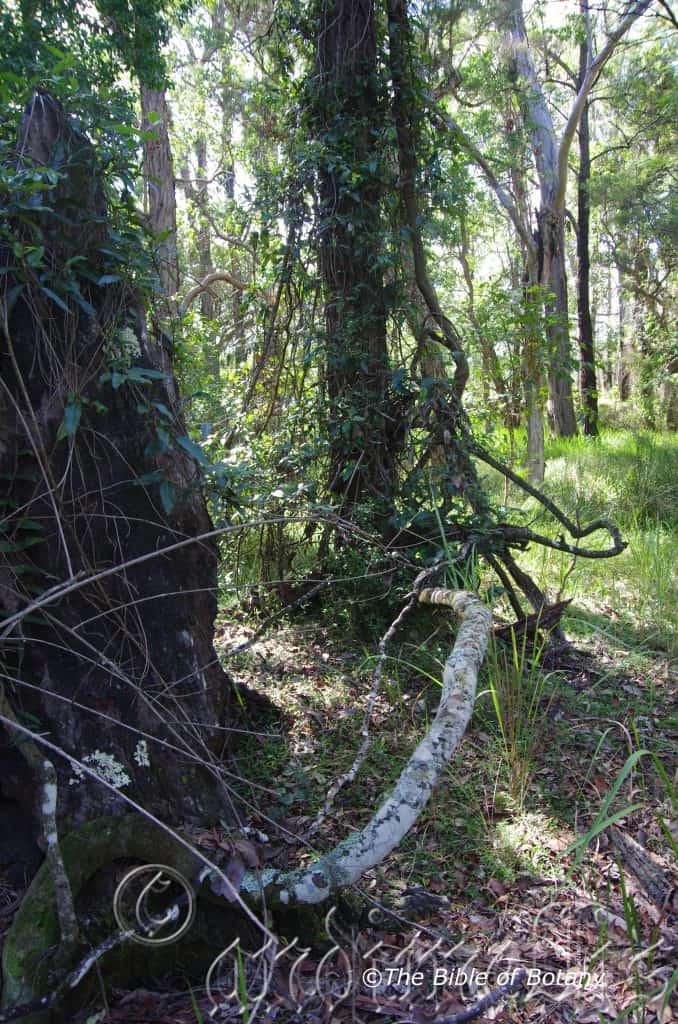
Tucabia NSW
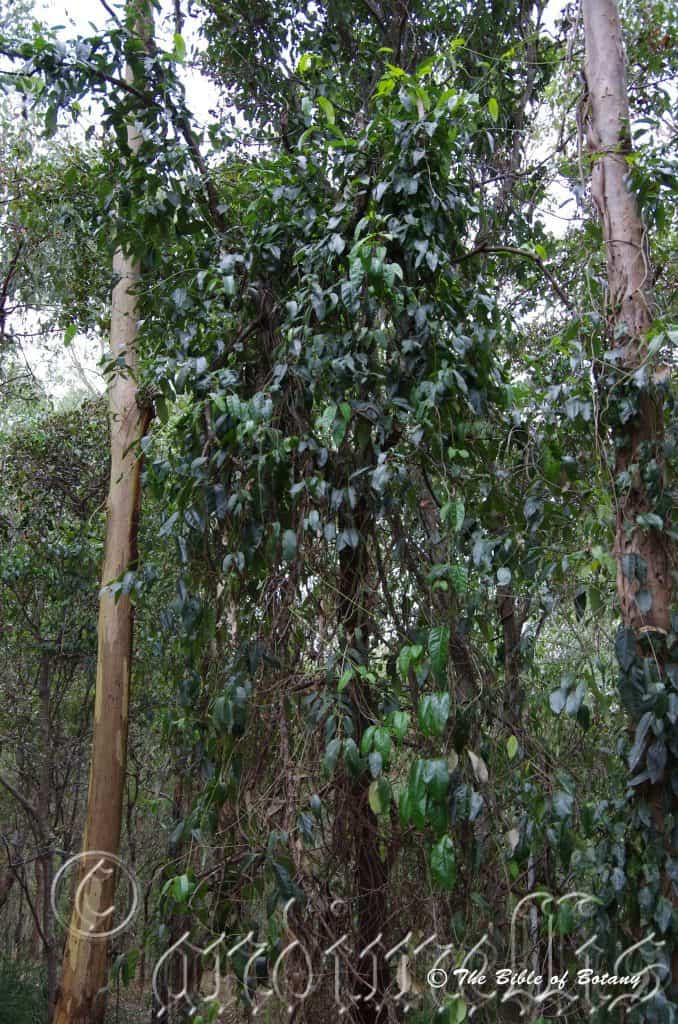
Kedron Qld.
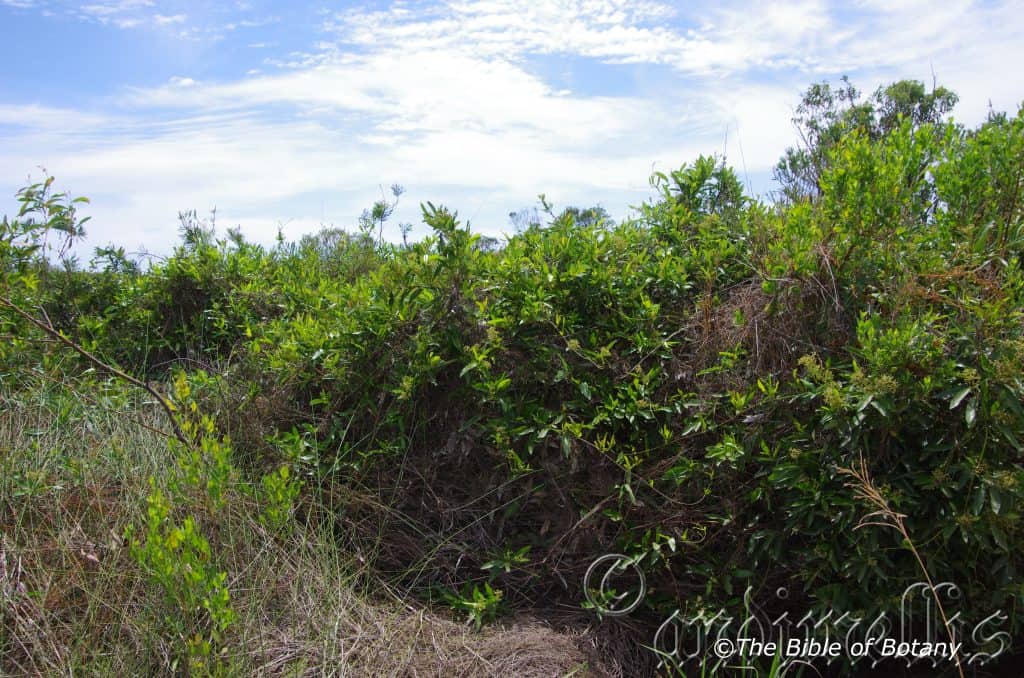
Lake Haiwatha NSW
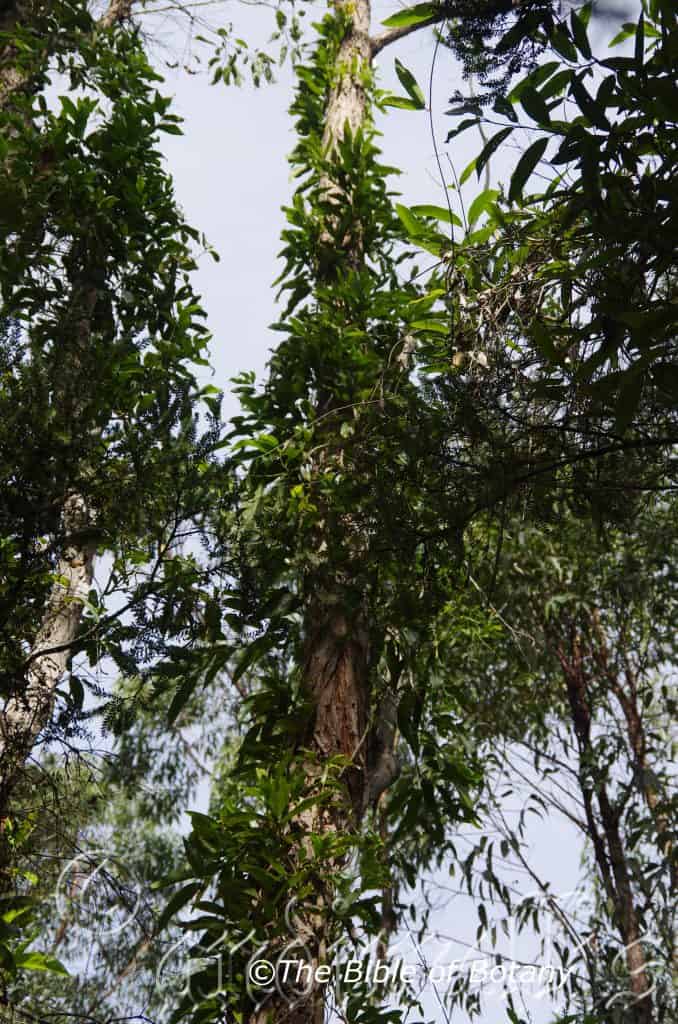
The Pinnacles NSW
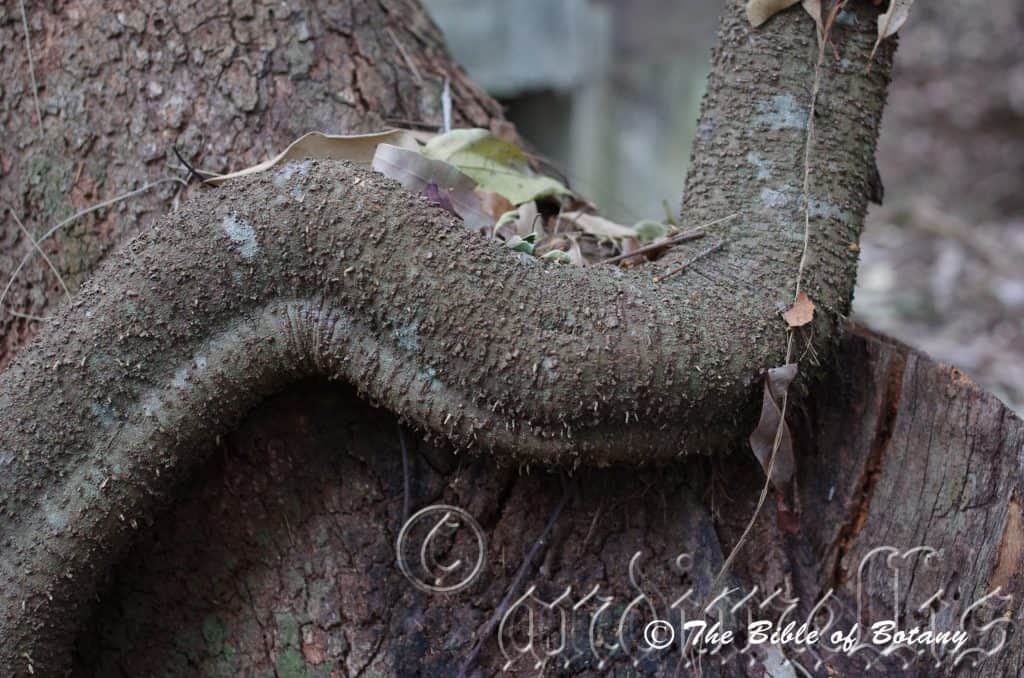
Kedron Qld.
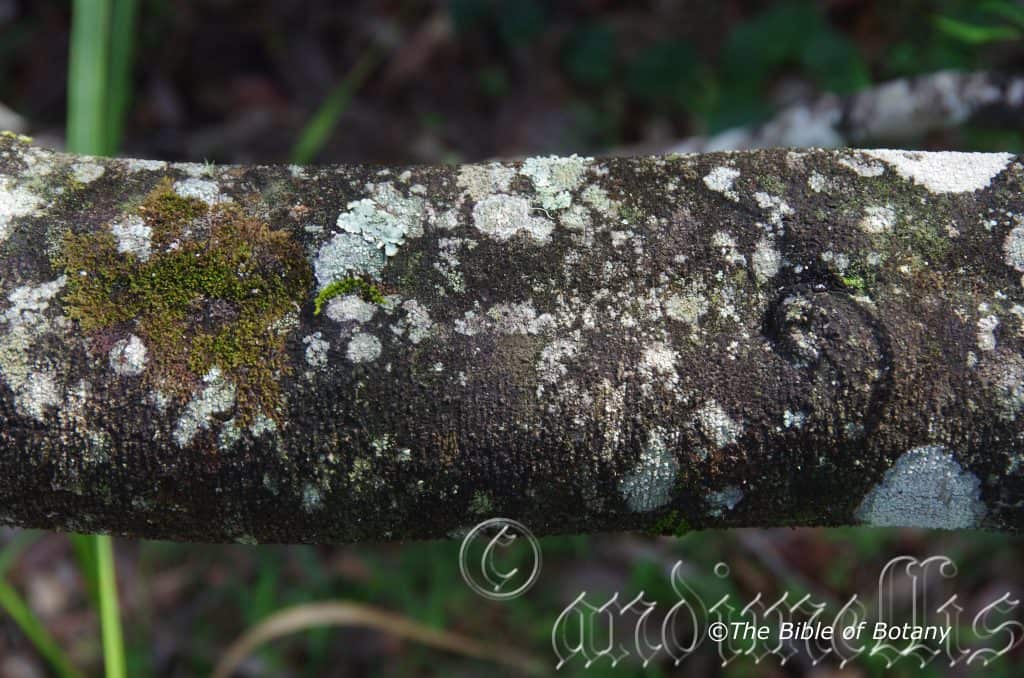
Tucabia NSW
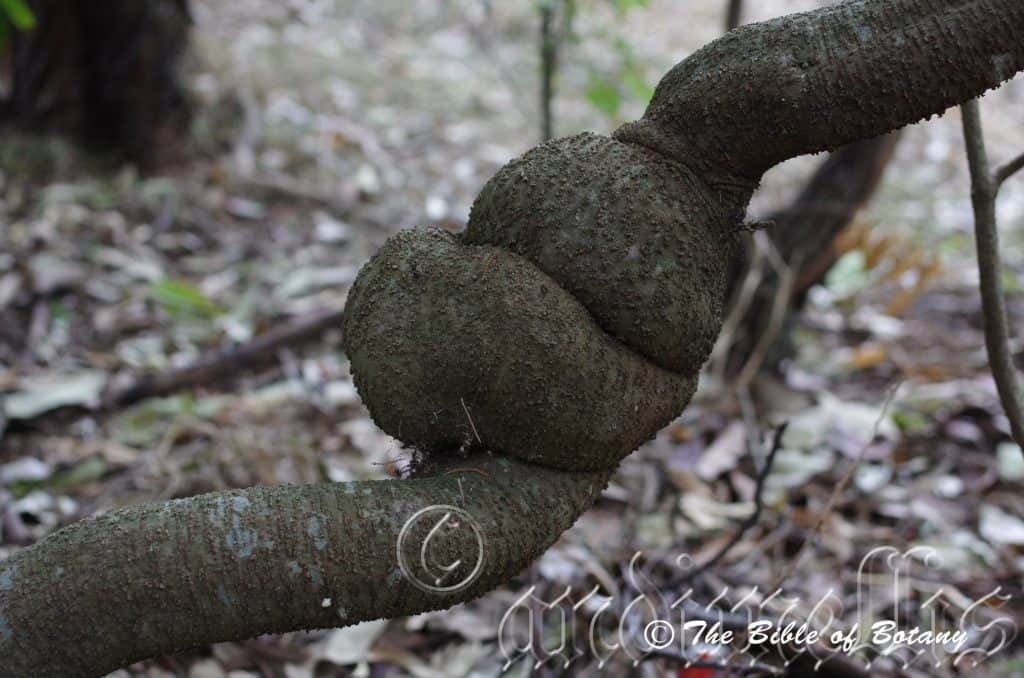
Kedron Qld.
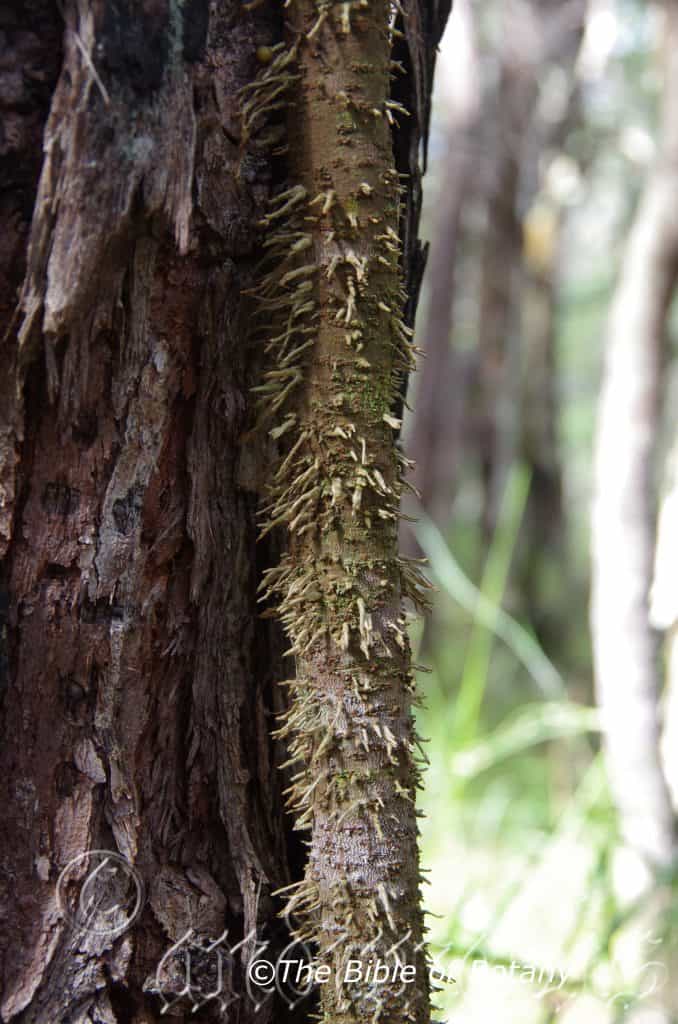
The Pinnacles NSW
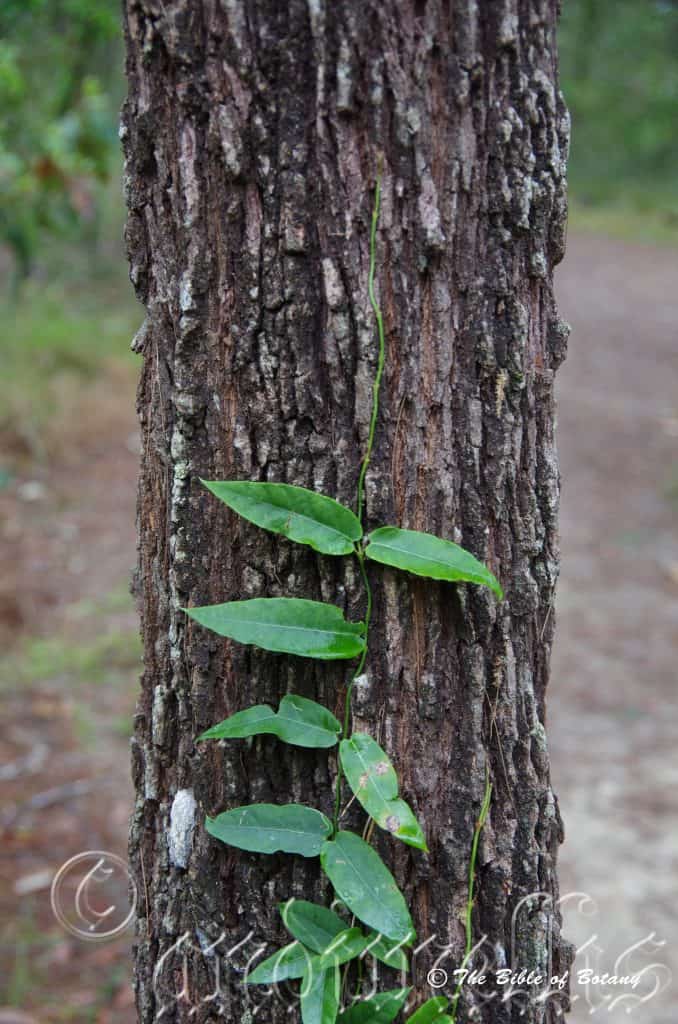
Indigiscapes Gardens Capalaba Qld.
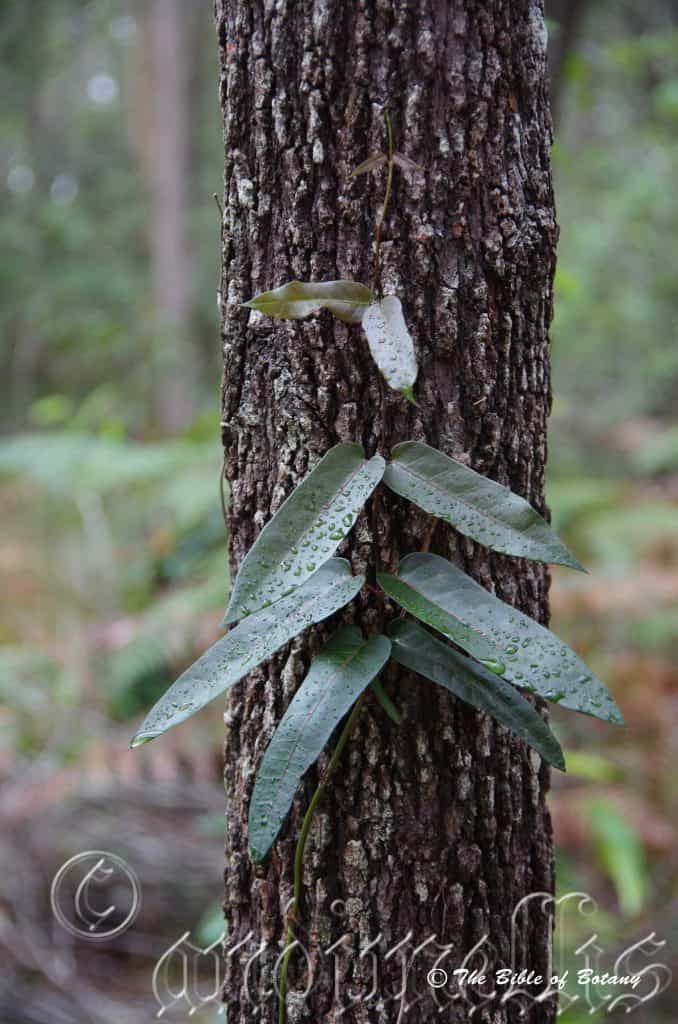
Indigiscapes Gardens Capalaba Qld.
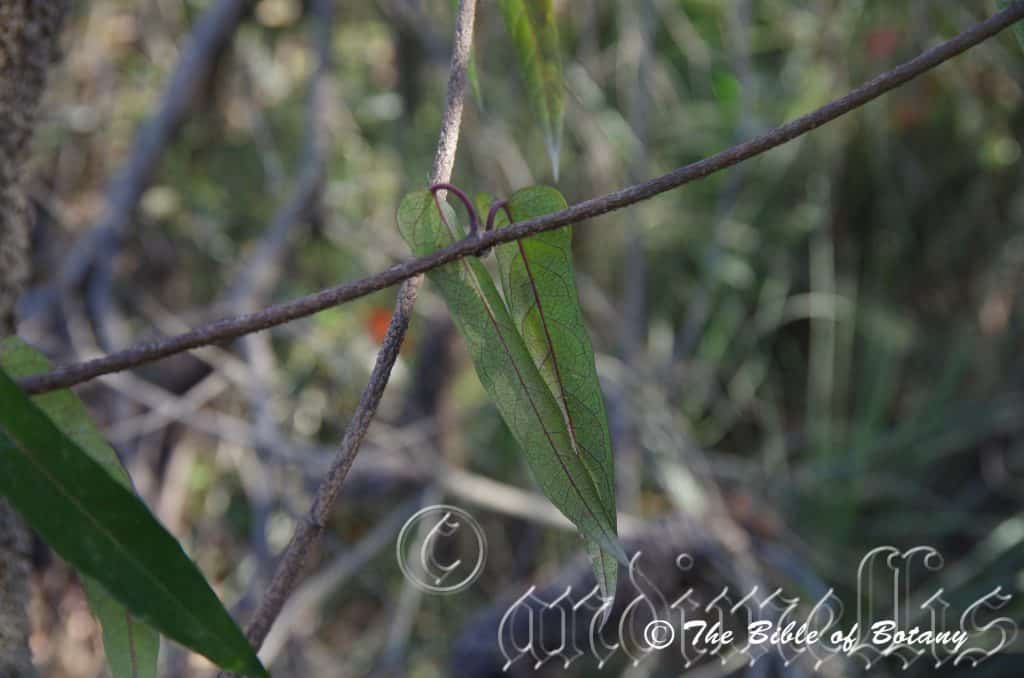
Diamond Beach NSW
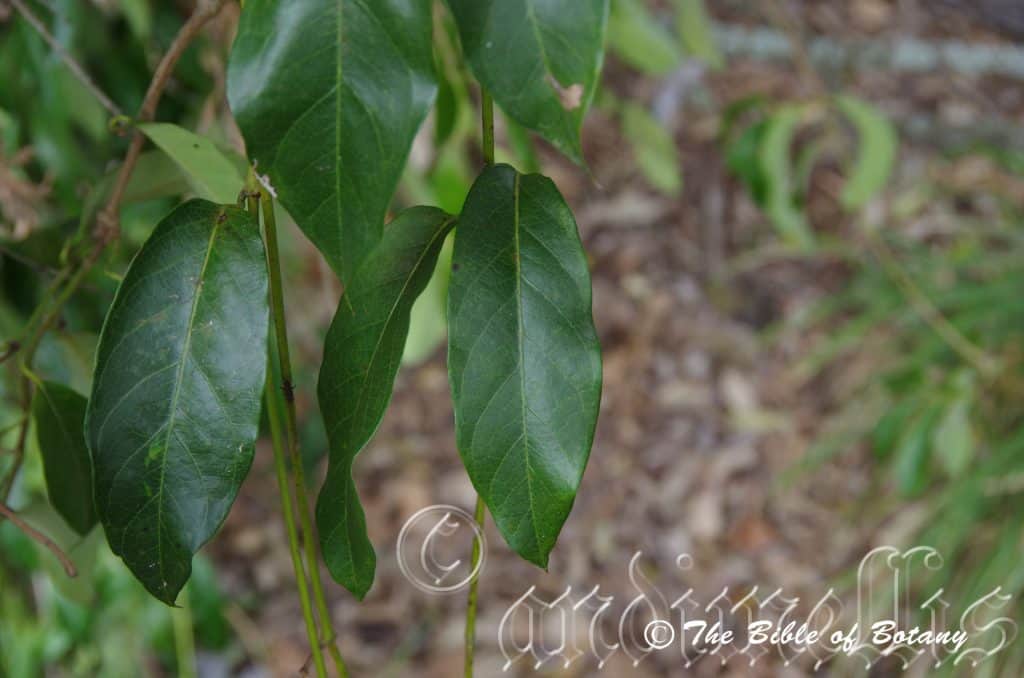
Salsibury Qld.
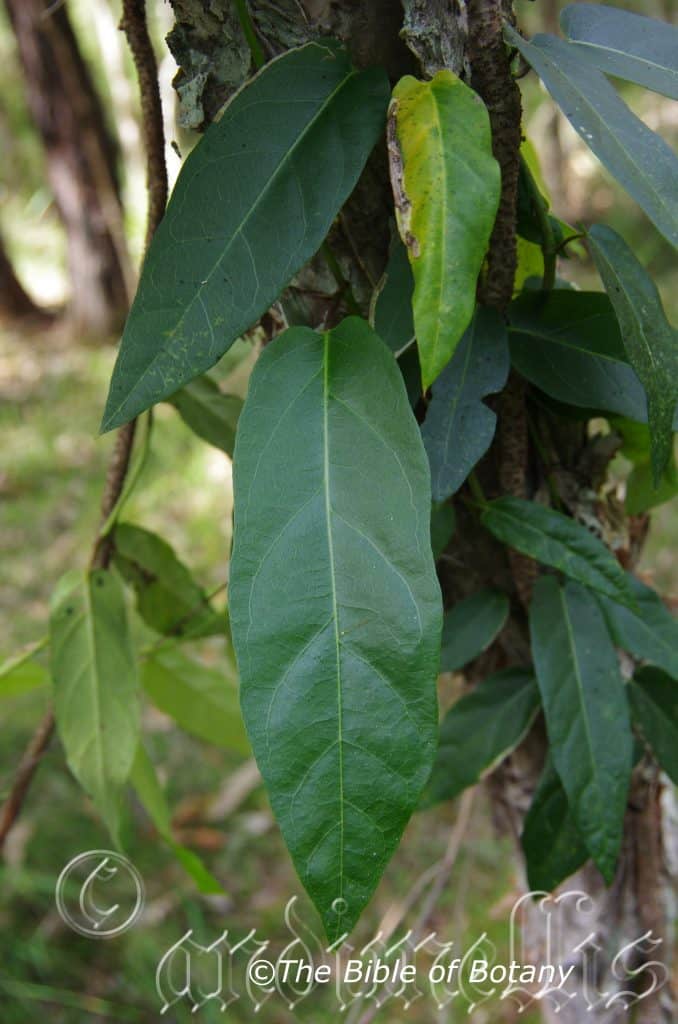
The Pinnacles NSW
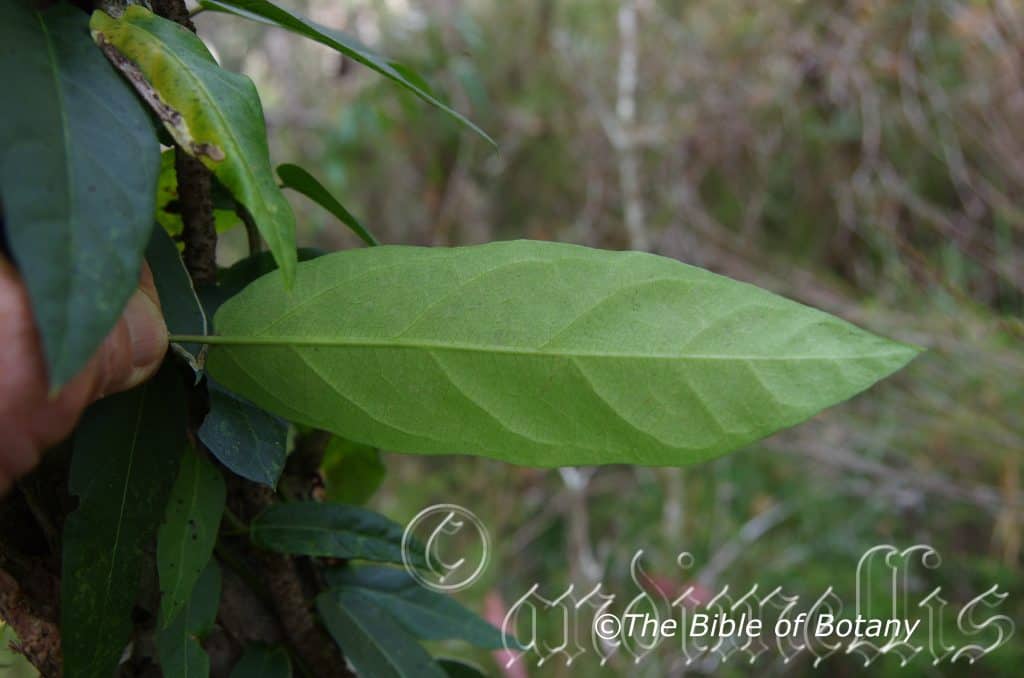
Lake Haiwatha NSW

Lake Haiwatha NSW
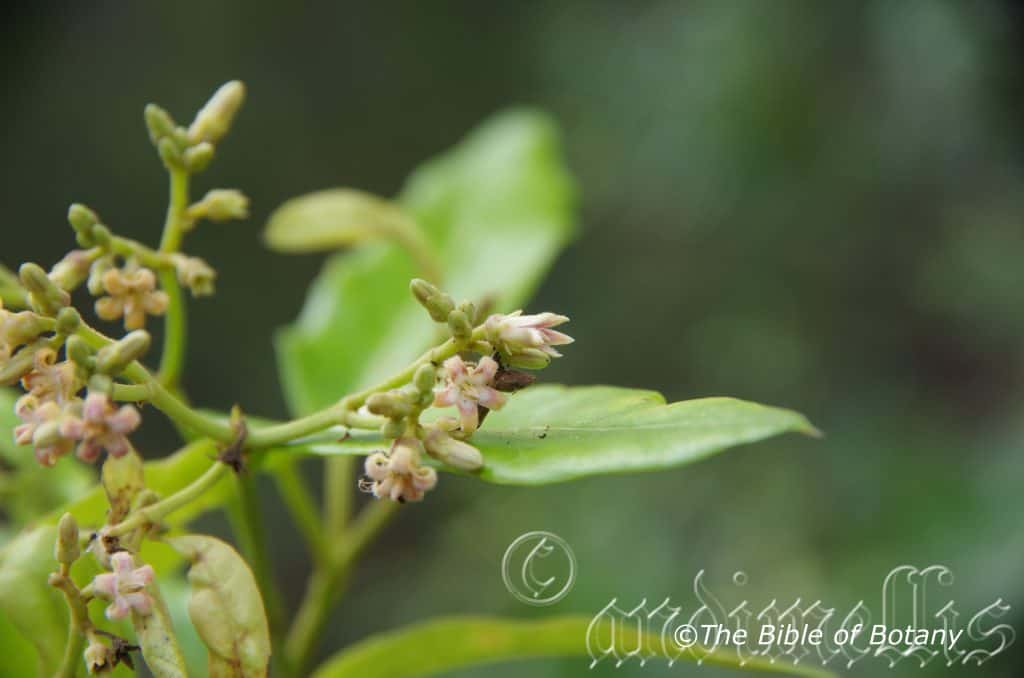
The Pinnacles NSW

Lake Haiwatha NSW
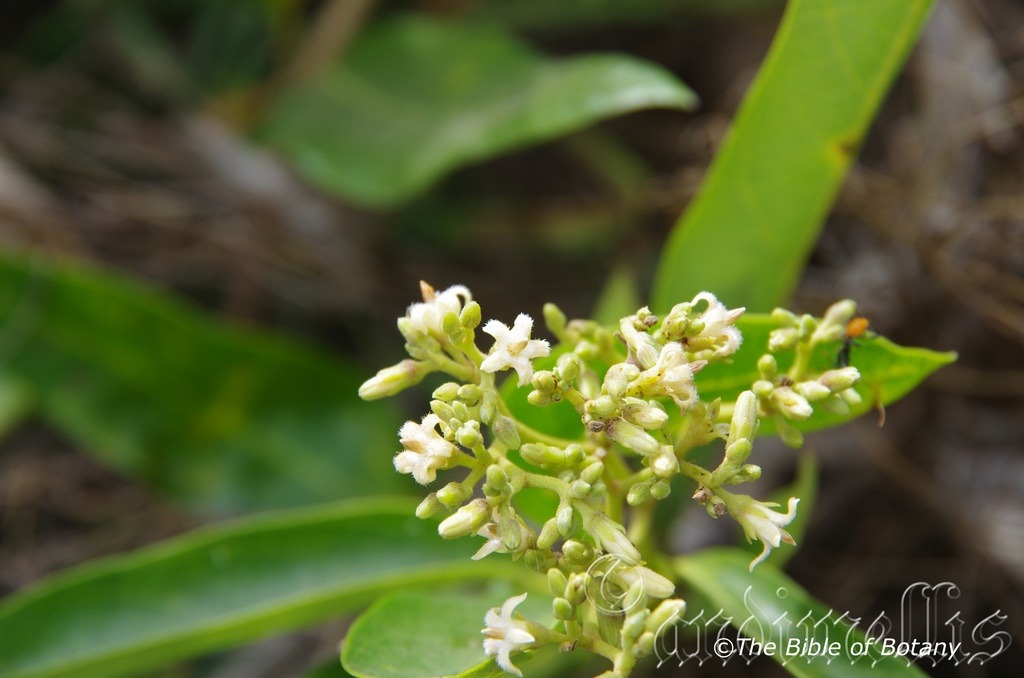
Lake Haiwatha NSW
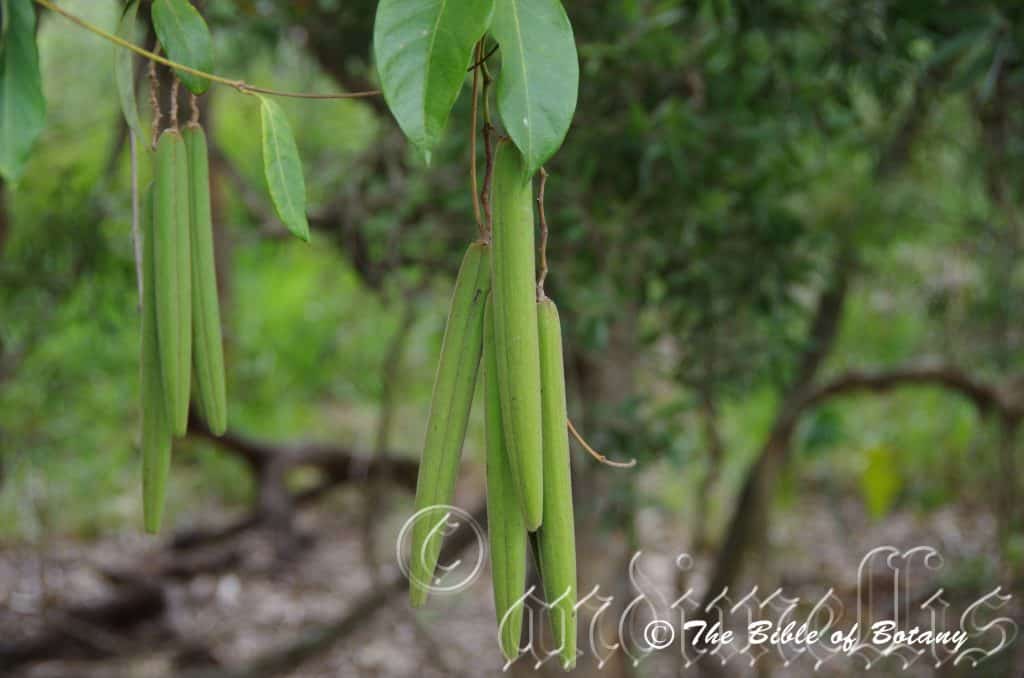
Salsibury Qld.
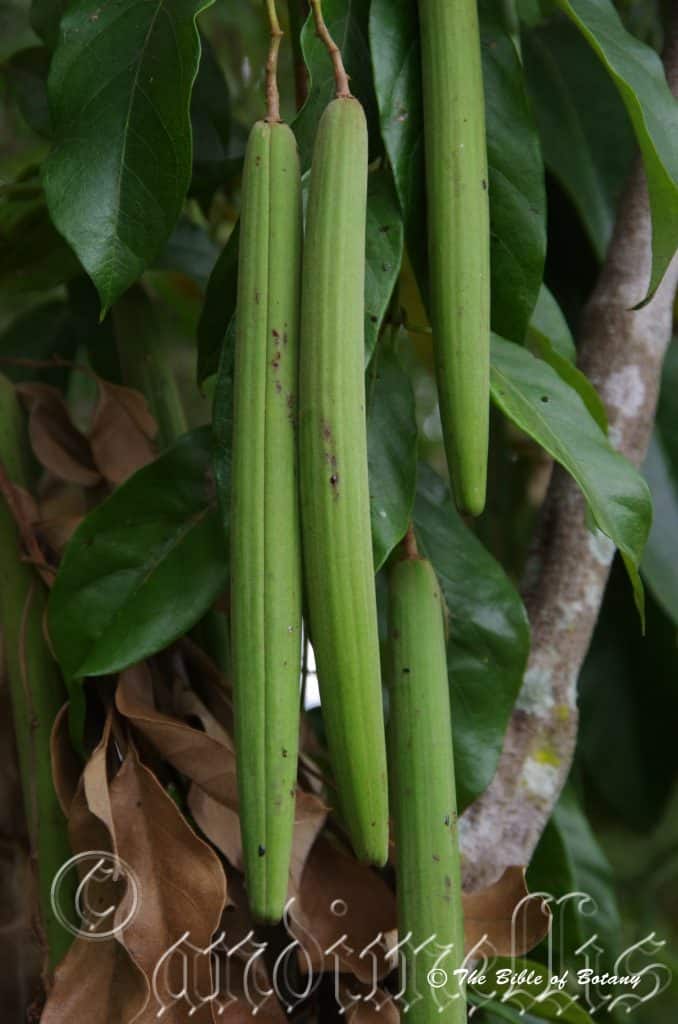
Salsibury Qld.
Parsonsia straminea
Classification:
Unranked: Eudicots
Unranked: Asterids
Order: Greentianales
Family: Apocynaceae
Genus: Is named in honour of James Parsons Parmentier; 1705-1770, who was a British physician and author.
Species: From Stêma, which is Ancient Greek or Stāmen, which is Latin for the male reproductive organs of a flower. It refers to the collective name of the filaments and anthers as a single unit especially in male flowers.
Sub specie:
Common Name: Common Silk Pod or Monkey Rope.
Distribution:
Parsonsia straminea is found south from Cairns to Eden on the south east coast of New South Wales.
It is also found near Melbourne and near the Cann River in north-eastern Victoria.
There are 3 disjunct populations in Tasmania south of Hobart and 2 on the west coast near Zeehan and Queenstown.
https://avh.ala.org.au/occurrences/search?taxa=Parsonsia+straminea#tab_mapView
Habitat Aspect Climate:
Parsonsia straminea prefers dappled shade to full sun. It grows in and adjacent to well-developed rainforests, moist Eucalyptus forests, dry sclerophyll forests, moist littoral rainforests or beach woodlands. The altitude ranges from 5 meters ASL to 1200 meters ASL.
The temperatures range from minus 4 degrees in July to 36 degrees in January.
The rainfall ranges from lows of 850mm to 3000mm average per annum.
Soil requirements:
Parsonsia straminea prefers sandy loams to medium clays, podsolic soils. The soils are usually derived from decomposed sandstones, brown and black basalts, better quality shale and granites. The soils pH ranges from 5pH to 7.5pH. It does not tolerate waterlogged soils. Non saline soils to very saline soils are tolerated.
Height & Spread:
Wild Plants: 22m to 35m by 10m to 20m.
Characteristics:
Parsonsia straminea’s juvenile stages appear to be completely different species. The plants stems are deep sea-green with adventitious roots which help it cling to the host plant. The fine stems grow vertically upwards.
Parsonsia straminea grows as an erect tall woody climber. The main trunk is pale grey to mid grey and can measure up to 95mm at a meter above the ground. This is difficult to measure as the main stem is usually flattened, ovate or irregularly circular in shape. The trunk is rough and scabrous. The larger stems are pale brown and covered in farinaceous and sinuous lumps. The trunk and larger stems adventitious roots grow When contact with the host tree is made. The smaller stems are thin deep green and covered in fine farinaceous lumps. Young shoots are thin, deep sea-green and twinning. Both the stems and leaves exude a clear-milky watery sap.
The oblong leaves on juvenile plants measure 12mm to 50mm in length by 12mm to 16mm in width. The bases are cordate to cordate-hastate while the apexes are acute. The opposite discolourous leaves are deep sea-green on the upper surface while the lower surface is deep purple. The petiole measures 5mm to 45mm in length.
The opposite leaves of Parsonsia straminea are elliptical to oblong-ovate and measure 40mm to 240mm in length by 15mm to 80mm in width. There is a distinct difference with the size of those leaves on stems growing in the shade and those growing in the sun. Shade growing leaves are much larger. The base is rounded to rounded-cordate while the apex is broadly acuminate. The coriaceous, discolourous laminas are deep lime-green to sea-green and glabrous on the upper lamina while the lower lamina is yellow green to yellow glaucous green. The leaf margins are entire, undulating and curve slightly upwards from the mid vein. The mid vein is slightly prominent on both laminas. The petioles measure 15mm to 26mm in length.
The inflorescences of Parsonsia straminea are born on dense panicles from the leaf axils and terminally. The panicles contain 40 to 130 plus individual flowers. The oval, funnel form flowers are variable, white, cam, pale yellow or pale pink. The round pedicels are glabrous or covered in white puberulent hairs and measure 1mm to 4mm in length.
The pale yellow-green to pale green, calyxes are covered in fine pale brown puberulent hairs externally and white puberulent hairs internally. They measure 3.5mm to 4mm in length while the 5 narrow triangular lobes measure 0.8mm to 1mm in length. The corollas are covered in fine pale brown puberulent hairs externally and are white puberulent internally. The corolla tubes measure 3mm to 3.5mm in length while the spreading or curved lobes measure 4mm to 5mm in length.
The stamens are strongly not spiralling or twisted and form as staminal column surrounding the style. The filaments measure 2.5mm to 3.5mm in length.
The style measures 4.5mm to 5mm in length. The faintly perfumed flowers appear throughout the year especially in the warmer parts of its habitat.
The fruits of Parsonsia straminea are long linear or cigar shape capsules. The capsules measure 100mm to 200mm long by 7mm to 16mm in diameter. The green capsules turn pale grey-brown and coriaceous When ripe. The sepals are persistent at the base of the ripe capsules.
The long ellipsoidal seeds measure 10mm to 15mm in length by 2mm to 2.2mm in diameter and are attached to pale brown silk plumes from one end that gyrate outwards. They measure 25mm to 50mm in length.
Wildlife:
Parsonsia straminea’s do not appear to have any predators though the flowers are visited by native bees, beetles and many butterflies including the Wandering Monarch Butterfly (Danaus plexippus). I have found the chrysalis on Parsonsia straminea when minor leaf damage has occurred but have no evidence that the larvae actually feed on the leaves however it is known to feed on various species of plants in the Apocynaceae family.
Cultivation:
Parsonsia straminea is a very large creeper for warm temperate, sub-tropical, tropical, semi-arid, arid native or exotic garden. It is ideal in most setting except near pools and ponds due to the large number of seeds and silk that are produced. In cultivation it requires a strong pergola or sturdy fence to grow on due to its size and dense canopy where it will grow from 8 meters to 15 meters in height by 5 meters to 10 meters in width when grown in the open on a fence or similar structure. I have one growing over old stumps and logs that has attained 40 square meters in 4 years and has been pruned in that time.
It grows exceptionally well on lighter soils when deep leaf litter keeps the soil cool and moisture at an even level. If these requirements are met it can cope with temperatures as low as minus 5 degrees and up to 44 degrees without stress. It is moderately drought resistant.
Add to the above, if it is given an adequate supply of water and a little native fertilizer on a regular basis the plants will respond with spectacular flowering over a long period and set copious quantities of fruit.
It often flowers from the third year from seed.
Propagation:
Seeds: Seeds of Parsonsia straminea can be moved easily from the capsules once they have dried out. Sow freshly collected seeds directly into a seed raising mix, keeping them moist not wet.
When the seedlings are 30mm to 40mm tall, prick them out and plant them into 50mm native tubes using a good organic mix.
As the seedlings roots reach the bottom of the tubes plant them out into their permanent position. Do not delay as the seedlings will send out roots encompassing and adhering to the tubes and surrounding tubes and plants.
Cuttings: Parsonsia straminea would strike easily from cuttings.
Use 100mm to 200mm long tip cuttings or lateral shoots from the present season’s growth. Take them in warmer months of the year. Remove half the leaves from the bottom section being careful not to tear the bark.
1 Prepare the cutting mix by adding two thirds sharp clean river sand, one third peat or one third perlite. These ingredients must be sterilized,
2 Select good material from non diseased plants,
3 Select semi green stems for cuttings. Look for a stem with two or three nodes,
4 Place the cutting on a flat, hard surface, and make a clean cut down one side of the cutting at the base for 10mm with a sharp sterile knife or razor blade. – This scarification of the node will increase the chances of roots emerging from this spot. Now remove all but one or two the leaves, leaving the apex leaves in tact. If the leaves are very large in proportion to the stem, cut off the apical halves.
5 Hormone is not required,
6 Use a small dipple stick or old pencil to poke a hole into the soilless potting mix. Ensure the hole is slightly larger than the stem diameter. Place 2 cuttings in each of the 50mm native tubes,
7 I like to place the tubes in bucket with holes drilled in the bottom to allow excess water to drain out. A plastic bag that fits over the bucket is ideal to help maintain temperature and moisture. Place in a semi shaded, warm position like under 50mm shade cloth.
8 When the cuttings have struck, open the bag to allow air circulation for a few days to a week,
9 Once hardened off remove the cuttings from the bag and allow to further hardening for a few more days to a week,
10 Transplant into a good potting mix to grow on.
Fertilize using seaweed, fish emulsion or organic chicken pellets soaked in water on an alternate basis. Fertilize every two months until the plants are established then twice annually in early September or March to maintain health, vitality and better flowering.
Further Comments from Readers:
Hi reader, it seems you use The Bible of Botany a lot. That’s great as we have great pleasure in bringing it to you! It’s a little awkward for us to ask, but our first aim is to purchase land approximately 1,600 hectares to link several parcels of N.P. into one at The Pinnacles NSW Australia, but we need your help. We’re not salespeople. We’re amateur botanists who have dedicated over 30 years to saving the environment in a practical way. We depend on donations to reach our goal. If you donate just $5, the price of your coffee this Sunday, We can help to keep the planet alive in a real way and continue to bring you regular updates and features on Australian plants all in one Botanical Bible. Any support is greatly appreciated. Thank you.
In the spirit of reconciliation we acknowledge the Bundjalung, Gumbaynggirr and Yaegl and all aboriginal nations throughout Australia and their connections to land, sea and community. We pay our respect to their Elders past, present and future for the pleasures we have gained.
Parsonsia velutina
Classification:
Unranked: Eudicots
Unranked: Asterids
Order: Gentianales
Family: Apocynaceae
Genus: Is named in honour of James Parsons Parmentier; 1705-1770, who was a British physician and author.
Species: From Velutinus, which is Latin for to be densely covered in short soft hairs. It refers to structures or organs, which form dense soft velvet like mats.
Sub specie:
Common Name:
Distribution:
Parsonsia velutina is found north of a line from Dampier Peninsula to the Dromedaries and Mount Elizabeth Station in north western, Western Australia to the Victoria River and Wongalara Wildlife Sanctuary on the Strangman Range in north eastern Northern Territory.
In the east it is found south from the tip of Cape York Peninsula to Wheneney Creek in central coastal New South Wales.
https://avh.ala.org.au/occurrences/search?taxa=Parsonsia+velutina#tab_mapView
Habitat Aspect Climate:
Parsonsia velutina prefers dappled shade to full sun. It grows in warmer rainforest in the south to well cool developed rainforests or monsoonal rainforests in the north as well as littoral rainforests. The altitude ranges from 10 meters ASL to 1000 meters ASL.
The temperatures range from minus 4 degrees in July to 36 degrees in January.
The rainfall ranges from lows of 850mm to 3000mm average per annum.
Soil requirements:
Parsonsia velutina prefer sandy loams to medium clays and podzolic soils that are stony, gravelly or rocky. The soils are usually derived from decomposed sandstones, brown and black basalts, better quality shales, metamorphic rocks, granites, conglomerate rocks, podzolic soils and limestones. The soils pH ranges from 5pH to 8pH. It does not tolerate waterlogged soils. Non saline soils to very saline soils are tolerated.
Height & Spread:
Wild Plants: 5m to 10m by 4m to 10m
Characteristics:
Parsonsia velutina grows as a medium twinning climber. The main stems are brownish. The main stem measures 20mm to 55mm in diameter on old well developed vines. The smaller stems a thin deep green and are moderately covered in pale brown velutinous hairs. All parts of the vine exude a clear watery sap.
The opposite leaves of Parsonsia velutina are ovate and measure 70mm to 200mm in length by 35mm to 95mm in width. The petioles measure 10mm to 40mm in length. The bases are weakly to strongly cordate while the apexes are acuminate to tapering. The concolourous lamina is deep grass-green and glabrous to sparsely covered in white puberulent to velutinous hairs on the upper lamina while the lower lamina is moderately covered in white pulverulent hairs. The laminas curve slightly or decurve moderately from the mid vein to the margins, decurve near the apexes and are slightly undulating. The margins are entire. The mid vein and 10 to 14 lateral veins are prominent on the lower lamina and are clearly visible on the upper lamina.
The juvenile plant’s leaves are deeply bilobed, are reddish-brown and glossy.
The inflorescences of Parsonsia velutina are born in small dense panicles from the leaf axils. The peduncle and rachis are moderately to densely covered in white pubescent hairs. The peduncles and rachis measure 70mm to 80mm in length while the pedicels 2mm to 3 mm in length. The panicles contain 9 to 27 pedicellate individual flowers.
The 5 creamy-yellow flexed, oblong sepals are moderately to densely covered in white appressed velutinous hairs and measure 2mm to 3mm in length. There are 5 small, oblong, 0.5mm long glands on the disc near the base and opposite each sepal. The corolla tubes are moderately covered in soft white velutinous hairs externally and internally. The corolla tubes measure 1.6mm to 2mm in length while the erect corolla lobes measure 2mm to 2.5mm in length.
The 5 filaments are straight and densely covered in white velutinous hairs on the apical half while the yellow anthers are inserted and are united to form a cone around the style. The stamens measure 3mm to 3.5mm in length. The base of the anthers is sagittate. The anther bases are sagittate. The style measures 1.5mm to 2.5mm in length.
The faintly perfumed flowers appear from late November to late May.
Parsonsia velutina fruits are long linear sub erect capsules. The capsules measure 70mm to 110mm in length by 7mm to 10mm in diameter. The green, coriaceous capsules turn pale grey-brown and are densely covered in short, fawn pubescent hairs When ripe. The sepals are persistent at the base of the ripe capsules.
The long ellipsoidal seeds measure 6mm to 8mm in length by 1.5mm to 2.5mm in diameter and attached to brown silky plumes that measure 10mm to 25mm in length.
Wildlife:
Parsonsia velutina’s wildlife is unknown to the author.
Cultivation:
Parsonsia velutina is an unusual creeper for warm temperate, sub-tropical, tropical, semi-arid, arid native or exotic garden. It is ideal in most setting except near pools and ponds due to the large number of seeds and silk that are produced. In cultivation it grows from 3 meters to 5 meters in height by 5 meters to 8 meters in width when grown in the open on a fence or similar structure.
It grows exceptionally well on lighter soils when deep leaf litter keeps the soil cool and moisture at an even level. If these requirements are met they can cope with temperatures as low as 2 degrees and up to 42 degrees. It is moderately drought resistant.
Add to the above, if it is given an adequate supply of water and a little native fertilizer on a regular basis the plants will respond with good flowering over a long period and set copious quantities of fruit.
Propagation:
Seeds: The seeds of Parsonsia velutina can be moved easily from the capsules once they have dried out. Sow freshly collected seeds directly into a seed raising mix, keeping them moist not wet. When the seedlings are 30mm to 40mm tall, prick them out and plant them into 50mm native tubes using a good organic mix.
As the seedlings roots reach the bottom of the tubes plant them out into their permanent position. Do not delay.
Cuttings: Parsonsia velutina should strike easily from cuttings.
Use 100mm to 200mm long tip cuttings or lateral shoots from the present season’s growth. Take them in warmer months of the year. Remove half the leaves from the bottom section being careful not to tear the bark.
1 Prepare the cutting mix by adding two thirds sharp clean river sand, one third peat or one third perlite. These ingredients must be sterilized,
2 Select good material from non diseased plants,
3 Select semi green stems for cuttings. Look for a stem with two or three nodes,
4 Place the cutting on a flat, hard surface, and make a clean cut down one side of the cutting at the base for 10mm with a sharp sterile knife or razor blade. – This scarification of the node will increase the chances of roots emerging from this spot. Now remove all but one or two the leaves, leaving the apex leaves in tact. If the leaves are very large in proportion to the stem, cut off the apical halves.
5 Hormone is not required,
6 Use a small dipple stick or old pencil to poke a hole into the soilless potting mix. Ensure the hole is slightly larger than the stem diameter. Place 2 cuttings in each of the 50mm native tubes,
7 I like to place the tubes in bucket with holes drilled in the bottom to allow excess water to drain out. A plastic bag that fits over the bucket is ideal to help maintain temperature and moisture. Place in a semi shaded, warm position like under 50mm shade cloth.
8 When the cuttings have struck, open the bag to allow air circulation for a few days to a week,
9 Once hardened off remove the cuttings from the bag and allow to further hardening for a few more days to a week,
10 Transplant into a good potting mix to grow on.
Fertilize using seaweed, fish emulsion or organic chicken pellets soaked in water on an alternate basis. Fertilize every two months until the plants are established then twice annually in early September or March to maintain health, vitality and better flowering.
Further Comments from Readers:
Hi reader, it seems you use The Bible of Botany a lot. That’s great as we have great pleasure in bringing it to you! It’s a little awkward for us to ask, but our first aim is to purchase land approximately 1,600 hectares to link several parcels of N.P. into one at The Pinnacles NSW Australia, but we need your help. We’re not salespeople. We’re amateur botanists who have dedicated over 30 years to saving the environment in a practical way. We depend on donations to reach our goal. If you donate just $5, the price of your coffee this Sunday, We can help to keep the planet alive in a real way and continue to bring you regular updates and features on Australian plants all in one Botanical Bible. Any support is greatly appreciated. Thank you.
In the spirit of reconciliation we acknowledge the Bundjalung, Gumbaynggirr and Yaegl and all aboriginal nations throughout Australia and their connections to land, sea and community. We pay our respect to their Elders past, present and future for the pleasures we have gained.
Paspalidium aversum
Classification:
Division: Monocots
Subdivision: Commelinids
Order: Poales
Family: Poaceae
Subfamily: Panicoideae
Genus: From Paspalos, which is Greek for a type of millet and Idion, which is a Greek/Latin suffix reflecting a close association with another specie or organ. It refers to the grasses, which are very similar to the European millets.
Species: From A, which is Greek/Latin for without or not having and Versum, which is Latin for certainty. It refers to plants, which display uncertainties within their genus, thus they stand alone in the genus.
Sub Species:
Common Name:
Distribution:
Paspalidium aversum is found south from Atherton in far north Queensland to Diniliquin in far southern New South Wales and Bete Bolong in north eastern Victoria.
There are 2 isolated populations one in Western Australia Dooley Downs Station near the upper Gascoyne and the mouth of Captain Billy Creek.
https://avh.ala.org.au/occurrences/search?taxa=Paspalidium+aversum#tab_mapView
Habitat Aspect Climate:
Paspalidium aversum prefers dappled shade to full sun. It grows along creeks, streams and drainage lines on better quality soils adjacent to tropical rain forests, subtropical rain forests in moist sclerophyll forests, moist temperate sclerophyll forests, temperate woodlands or semi-arid plains. The altitude ranges from 5 meter ASL to 760 meters ASL.
The temperatures range from minus 3 degrees in August to 40 degrees in February.
The rainfalls range from lows of 300mm to an average 2800mm annually. The habitat of growing along drainage lines soaks and creek and stream banks is more important than rainfall.
Soil requirements:
Paspalidium aversum prefers better quality sandy loams to medium clays. The soils are usually derived from decomposed shales, fatty sandstones, fatty granites and metamorphic rocks close to the parent rocks or as sediments. The soils pH. ranges from 4.5pH to 6.5pH. It tolerates seasonal waterlogged soils. Non saline soils to moderately saline soils are tolerated.
Height & Spread:
Wild Plants: 0.4m to 0.9m by 0.4m to 1.5m.
Characteristics:
Paspalidium aversum grows as a slender, tufted perennial with grass-green stems. The rhizomes are absent on this species but it shoots by means of extravaginal innovations near the base on the culms. The culms are green, ascending to decumbent and measure 400mm to 800mm in length. The culms are compressible with 4 to 6 nodes. The mid culm’s internodes are hollow and glabrous while the mid culm nodes are glabrous. The lateral branches are sparsely branched to branched once. The leaf sheaths are glabrous while the leaf sheath auricles are absent. The ligule is a fringed membrane or is a ciliate membrane of white hairs that measure 0.8mm to 1mm in length.
The alternate simple leaves are narrow elliptical and measure 80mm to 250mm in length by 3mm to 9mm in width. The base tapers to the sheath while the apexes taper to a point. The concolourous laminas are soft grass-green to mid grass-green and are scabrous. The laminas are flat while the margins are entire. The mid vein is prominent on the lower lamina.
The inflorescences are panicles of racemes. The panicles measure 90mm to 300mm in length while the appressed racemes measure 50mm to 70mm in length by 3mm to 5mm in width. The peduncle and rachises are glabrous. There are 9 to 20 spikelets on a raceme.
The spikelets a pedicelled with are single upper fertile floret and single sterile lower floret. The florets are without a rachilla extension. The acute, elliptic or ovate spikelets are dorsally compressed and measure 2.5mm to 2.8mm in length.
The glumes are dissimilar. The lower glume is obovate or acute, membranous and are without keels and have 3 to 5 nerves which terminate in a mucronate or muticus apex. The lower glumes measure 1mm to 2.3mm in length. The upper oblong, membranous glume is without keels and have 5 to 7 nerves. The glumes measure 2.2mm to 2.6mm in length.
The lower lemmas are equal in length to the spikelets, are membranous, are without keels and have 5 nerves and have a muticus apex. The palea is absent. The fertile lemmas measure 2.1mm to 2.8mm in length. There are 3 white anthers. The flowers appear from late November to February. The acute lemma is apiculate and is as long as the spikelet. The lemmas are striolate throughout and moderately to coarsely rugulose about the middle and lower portions.
The fruits are oblong grains. The green grains turn dull purplish-black When ripe. The grains measure 2mm to 2.6mm in length by 0.8mm to 2.2mm in diameter.
Wildlife:
Paspalidium aversum is the host plant for the Wonder Brown butterfly (Heteronympha mirifica), Brown Ringlet Moth (Hypocysta metirius) and Orange Ringlet (Hypocysta adiante).
The seeds are eaten by many native finches including the red-browed finch (Neochmia temporalis). The Eastern Rosella (Platycercus eximius) and Pale Headed Rosellas (Platycercus adscitus) have been seen attending the seed heads.
Cultivation:
Paspalidium aversum is a soft, wispy foliaged grass for large forested areas around dams or in gullies. It would look rather weedy in small gardens. It can be slashed and will recover very quickly but is not suitable for long term heavy grazing.
It is suitable for semi shaded to full sun areas near the entrance to rainforests and does exceptionally well in riparian flats and beneath open forest canopies.
It is a preferred grass for both domestic and native mammals and is of excellent quality on moist soils on the coastal plains.
Propagation:
Seeds: Paspalidium aversum’s seeds directly into a seed raising mix. Cover them with 2mm of fine sand and keep moist not wet. Place the tray in a warm sunny position. When the seedlings are 25mm to 50mm tall, prick them out in small groups and plant them into 20mm tubes using a good organic mix.
Once the seedlings reach 75mm to 80mm in height, plant them out into their permanent position and water thoroughly with our commended fertilizer. Plant them at 250mm centers.
Alternatively the seed can be broadcast out in small areas or used in a seeder on broad acreage.
Fertilize using seaweed, fish emulsion or organic chicken pellets at the time of sowing.
Further Comments from Readers:
Hi reader, it seems you use The Bible of Botany a lot. That’s great as we have great pleasure in bringing it to you! It’s a little awkward for us to ask, but our first aim is to purchase land approximately 1,600 hectares to link several parcels of N.P. into one at The Pinnacles NSW Australia, but we need your help. We’re not salespeople. We’re amateur botanists who have dedicated over 30 years to saving the environment in a practical way. We depend on donations to reach our goal. If you donate just $5, the price of your coffee this Sunday, We can help to keep the planet alive in a real way and continue to bring you regular updates and features on Australian plants all in one Botanical Bible. Any support is greatly appreciated. Thank you.
In the spirit of reconciliation we acknowledge the Bundjalung, Gumbaynggirr and Yaegl and all aboriginal nations throughout Australia and their connections to land, sea and community. We pay our respect to their Elders past, present and future for the pleasures we have gained.
Paspalidium criniforme
Classification:
Division: Monocots
Division: Commelinids
Order: Poales
Family: Poaceae
Subfamily: Panicoideae
Genus: FromPaspalos, which is Greek for a type of millet and Idion, which is a Greek/Latin suffix reflecting a close association with another specie or organ. It refers to the grasses, which are very similar to the European millets.
Species: FromCrīnītum, which is Latin for a hair and Forme, which is Latin for to take the shape or form of. It refers to plants, which have long silky hairs similar to other plants.
Sub Species:
Common Name:
Distribution:
Paspalidium criniforme is found south from Fraser Island on the coast and Pelican Lake and Hughenden in northern Queensland south to Benidee National Park near Goondiwindi in southern Queensland then to Mount Dromedary in southern coastal New South Wales. It is found on the western slopes, on and east of the Great Dividing Range to the coast except for an isolated population further north on Cape York Peninsula around Bamaga.
https://avh.ala.org.au/occurrences/search?taxa=Paspalidium+criniforme#tab_mapView
Habitat Aspect Climate:
Paspalidium criniforme prefers dappled shade to full sun. It grows along creeks, streams and drainage lines on better quality soils adjacent to tropical rainforests, subtropical rainforests in moist sclerophyll forests, moist temperate sclerophyll forests, temperate woodlands or semi-arid plains. The altitude ranges from 5 meter ASL to 1100 meters ASL.
The temperatures range from minus 3 degrees in August to 40 degrees in February.
The rainfalls range from lows of 300mm to an average 2200mm annually.
Soil requirements:
Paspalidium criniforme prefers better quality sandy loams to medium clays. The soils are usually derived from decomposed brown basalts, black basalts, shales, fatty sandstones, granites and metamorphic rocks. The soils pH. ranges from 4.5pH to 6.5pH. It does not tolerate waterlogged soils. Non saline soils to moderately saline soils are tolerated.
Height & Spread:
Wild Plants: 0.1m to 0.6m by 0.4m to 1m.
Characteristics:
Paspalidium criniforme’s is a slender, delicate looking tufted perennial with grass-green stems. The rhizomes are absent on this species. The culms are green articulately ascending to decumbent and measure 100mm to 600mm in length. The culms have 4 to 7 nodes. The mid culm’s internodes are solid, spongy and glabrous while the mid culm nodes are glabrous. The lateral branches are sparsely branched once. The leaf sheaths are smooth and glabrous or sparsely covered in puberulent hairs. The ligule is a fringed membrane or a fringe of white ciliate hairs that measures 0.3mm to 0.5mm in length.
Paspalidium criniforme’s alternate simple leaves are linear and measure 30mm to 120mm in length by 1mm to 3mm in width. The bases taper slightly to the sheath while the apexes taper to a point. The concolourous laminas are soft grass-green to mid grass-green and are scaberulous to scabrous or glabrous to sparsely covered in white puberulent hairs. The laminas are flat to involute while the margins are entire. The mid vein is prominent on the lower lamina.
The inflorescencesare panicles of 4 to 6 appressed racemes. The peduncle and rachises are glabrous. The panicles measure 25mm to 120mm in length while the appressed racemes measure 5mm to 20mm in length by 1mm to 3mm in width. The peduncle and rachises are glabrous. There are 3 to 10 fertile spikelets on each raceme.
The spikelets are pedicelled with a single upper fertile floret and single sterile lower floret. The florets are without a rachilla extension. The lanceolate or elliptic spikelets are dorsally compressed and measure 2mm to 2.3mm in length. The rachilla internodes are elongated below the basal sterile floret and between glumes and also between the basal sterile florets.
The glumes are dissimilar. The lower glume is ovate, membranous and are without keels and have 3 to 5 nerves which terminate in a mucronate or muticus apex. The lower glumes measure 1mm to 2.3mm in length. The upper elliptical, membranous glume are without keels and have 5 to 7 nerves. The glumes measure 1.8mm to 2.2mm in length.
The lower lemmas are equal in the length to the spikelets, are membranous, without keels and have with 5 nerves and have a mucronate apex. The palea is absent. The fertile lemmas measure 1.9mm to 2.3mm in length. There are 3 white anthers. The acute lemma is apiculate and is as long as the spikelet. The lemmas are striolate throughout and moderately coarsely rugulose about the middle and lower portions. The flowers appear from late November to February.
Paspalidium criniforme’s fruits are oblong grains. The green grains turn dull fawn When ripe. The grains measure 2mm to 2.3mm in length.
Wildlife:
Paspalidium criniforme is the host plant for the Wonder Brown butterfly (Heteronympha mirifica), Brown Ringlet Moth (Hypocysta metirius) and Orange Ringlet (Hypocysta adiante).
The seeds are eaten by many native finches including the red-browed finch (Neophema temporalis). The Eastern Rosella (Platycercus eximius) and Pale Headed Rosellas (Platycercus adscitus) have been seen attending the seed heads.
Cultivation:
Paspalidium criniforme is a soft, wispy foliaged grass for large forested areas around dams or in gullies. It would look rather weedy in small gardens. It can be slashed and will recover very quickly but is not suitable for long term heavy grazing.
It is suitable for semi shaded to full sun areas near the entrance to rainforests and does exceptionally well in riparian flats and beneath open forest canopies.
It is a preferred grass for both domestic and native mammals and is of excellent quality on moist soils on the coastal plains.
Propagation:
Seeds: The seeds directly into a seed raising mix. Cover them with 2mm of fine sand and keep moist not wet. Place the tray in a warm sunny position. When the seedlings are 25mm to 50mm tall, prick them out in small groups and plant them into 20mm tubes using a good organic mix.
Once the seedlings reach 75mm to 80mm in height, plant them out into their permanent position and water thoroughly with our commended fertilizer. Plant them at 500mm centers When mass plantings are required.
Alternatively the seed can be broadcast out in small areas or used in a seeder on broad acreage.
Fertilize using seaweed, fish emulsion or organic chicken pellets at the time of sowing.
Further Comments from Readers:
Hi reader, it seems you use The Bible of Botany a lot. That’s great as we have great pleasure in bringing it to you! It’s a little awkward for us to ask, but our first aim is to purchase land approximately 1,600 hectares to link several parcels of N.P. into one at The Pinnacles NSW Australia, but we need your help. We’re not salespeople. We’re amateur botanists who have dedicated over 30 years to saving the environment in a practical way. We depend on donations to reach our goal. If you donate just $5, the price of your coffee this Sunday, We can help to keep the planet alive in a real way and continue to bring you regular updates and features on Australian plants all in one Botanical Bible. Any support is greatly appreciated. Thank you.
In the spirit of reconciliation we acknowledge the Bundjalung, Gumbaynggirr and Yaegl and all aboriginal nations throughout Australia and their connections to land, sea and community. We pay our respect to their Elders past, present and future for the pleasures we have gained.
Paspalidium distans
Classification:
Division: Monocots
Division: Commelinids
Order: Poales
Family: Poaceae
Subfamily: Panicoideae
Genus: From Paspalos, which is Greek for a type of millet and Idion, which is a Greek/Latin suffix reflecting a close association with another specie or organ. It refers to the grasses, which are very similar to the European millets.
Species: From Distans, which is Latin for separating from. It refers to any organ, which is situated a distance from the next.
Sub Species:
Common Name:
Distribution:
Paspalidium distans is found north and east of a line from near Derby in the western Kimberley Range in Western Australia to Barcaldine in Queensland then south to Tichborne and Bermagui in New South Wales.
It is also found near Wiluna, Beddome Range in the west and Wagga Wagga, Jerilderie, Shepparton and Epping in the east.
https://avh.ala.org.au/occurrences/search?taxa=Paspalidium+distans#tab_mapView
Habitat Aspect Climate:
Paspalidium distans prefers dappled shade to full sun. It can form large mats beneath trees in or adjacent to riverine forests, rainforests, moist littoral rainforests vine forests or swamp forests. The altitude ranges from 5 meter ASL to 870 meters ASL.
The temperatures range from minus 3 degrees in August to 40 degrees in February.
The rainfalls range from lows of 500mm to an average 2200mm annually.
Soil requirements:
Paspalidium distans prefers sand, sandy loams to medium clays and light silts to heavy silts. The soils are usually derived from decomposed brown basalts, black basalts, shales, fatty sandstones, granites, conglomerates, metamorphic rocks and accumulated beach sands. The soils pH. ranges from 4.5pH to 6.5pH. It does not tolerate waterlogged soils. Non saline soils to moderately saline soils are tolerated.
Height & Spread:
Wild Plants: 0.3m to 1m by 0.6m to 1.5m.
Characteristics:
Paspalidium distans grows as a slender, tufted perennial with grass-green stems. The rhizomes are absent on this species. The culms are greeniculately ascending to erect and measure 300mm to 1000mm in length. The culms have 2 to 5 nodes. The mid culm’s internodes are hollow and glabrous while the mid culm nodes are glabrous. The lateral branches are sparsely branched once. The leaf sheaths are basal cauline, smooth and glabrous. The ligule is a fringed membrane or a fringe of white ciliate hairs that measures 0.3mm to 0.5mm in length.
The alternate simple leaves are linear and measure 50mm to 180mm in length by 1mm to 7mm in width. The bases taper slightly to the sheath while the apexes taper to a point. The concolourous laminas a grass-green and are scaberulous to scabrous or glabrous to sparsely covered in white puberulent hairs. The laminas are flat to involute while the margins are entire. The mid vein is prominent on the lower lamina.
The inflorescences are panicles of 4 to 10 appressed racemes. The peduncle and rachises are glabrous. The panicles measure 60mm to 160mm in length while the racemes measure 5mm to 30mm in length by 1mm to 3mm in width. The peduncle and rachises are glabrous. There are 4 to 20 usually 12 fertile spikelets on each raceme.
The spikelets are sessile or pedicelled with a single upper fertile floret and single sterile lower floret or rarely male floret. The florets are without a rachilla extension. The ovate spikelets are dorsally compressed and measure 1.7mm to 2.2mm in length.
The glumes are dissimilar. The lower glume is ovate to oblate, membranous and without keels and have 3 to 5 nerves which terminate in a mucronate or muticus apex. The lower glabrous glumes measure 0.7mm to 1mm in length. The upper ovate, membranous glume without keels and have 5 to 9 nerves. The glumes measure 1.5mm to 2mm in length.
The lower lemmas are equal in the length to the spikelets, are membranous, without keels and have 5 nerves and have a mucronate apex. The palea is absent or insignificant. The fertile lemmas measure 1.8mm to 2.2mm in length.
There are 3 white anthers. The flowers appear from late November to February.
The fruits are oblong grains. The green grains turn dull creamy yellow When ripe. The grains measure 1.7mm to 2mm in length.
Wildlife:
Paspalidium distans is the host plant for the Wonder Brown butterfly (Heteronympha mirifica), Brown Ringlet Moth (Hypocysta metirius) and Orange Ringlet (Hypocysta adiante).
The seeds are eaten by many native finches including the red-browed finch (Neophema temporalis). The Eastern Rosella (Platycercus eximius) and Pale Headed Rosellas (Platycercus adscitus) have been seen attending the seed heads.
Cultivation:
Paspalidium distans is a soft, wispy foliaged grass for large forested areas around dams or in gullies in semi shaded positions in the garden When there are drainage problems. It would look rather weedy in small gardens. It can be slashed and will recover very quickly but is not suitable for long term heavy grazing.
It is suitable for semi shaded to full sun areas near the entrance to rainforests and does exceptionally well on riparian flats and beneath open forest canopies.
It is a preferred grass for both domestic and native mammals and is of excellent quality on drainage problem medium to heavy clays and silts.
Propagation:
Seeds: Paspalidium distans’s seeds directly into a seed raising mix. Cover them with 2mm of fine sand and keep moist not wet. Place the tray in a warm sunny position. When the seedlings are 25mm to 50mm tall, prick them out in small groups and plant them into 20mm tubes using a good organic mix.
Once the seedlings reach 75mm to 80mm in height, plant them out into their permanent position and water thoroughly with our commended fertilizer. Plant them at 500mm centres.
Alternatively the seed can be broadcast out in small areas or used in a seeder on broad acreage.
Fertilize using seaweed, fish emulsion or organic chicken pellets at the time of sowing.
Further Comments from Readers:
Hi reader, it seems you use The Bible of Botany a lot. That’s great as we have great pleasure in bringing it to you! It’s a little awkward for us to ask, but our first aim is to purchase land approximately 1,600 hectares to link several parcels of N.P. into one at The Pinnacles NSW Australia, but we need your help. We’re not salespeople. We’re amateur botanists who have dedicated over 30 years to saving the environment in a practical way. We depend on donations to reach our goal. If you donate just $5, the price of your coffee this Sunday, We can help to keep the planet alive in a real way and continue to bring you regular updates and features on Australian plants all in one Botanical Bible. Any support is greatly appreciated. Thank you.
In the spirit of reconciliation we acknowledge the Bundjalung, Gumbaynggirr and Yaegl and all aboriginal nations throughout Australia and their connections to land, sea and community. We pay our respect to their Elders past, present and future for the pleasures we have gained.
Paspalidium gausum
Classification:
Division: Monocots
Division: Commelinids
Class:
Order: Poales
Family: Poaceae
Subfamily: Panicoideae
Genus: From Paspalos, which is Greek for a type of millet and Idion, which is a Greek/Latin suffix reflecting a close association with another specie or organ. It refers to the grasses, which are very similar to the European millets.
Species: From Gausosm which is Ancient Greek for to bend or bent. It refers to spike/s which are crooked or bent.
Sub Species:
Common Name:
Distribution:
Paspalidium gausum is found south of Mica Creek near Collinsville in north Queensland to Copmanhurst in north eastern coastal New South Wales. It is found on and east of the Great Dividing Range except for populations found at Captain Billy’s Landing, Hopevale and between Mimosa Creek on the Blaxland Tablelands and the Carnarvon Gorge National Park.
Paspalidium gausum prefers dappled shade to full sun. It grows in tropical rainforests, subtropical rainforests, tropical rainforests, subtropical rainforests, moist sclerophyll forests or moist open woodlands. The altitude ranges from 5 meter ASL to 440 meters ASL.
The temperatures range from minus 3 degrees in August to 40 degrees in February.
The rainfalls range from lows of 450mm to an average 3200mm annually.
https://avh.ala.org.au/occurrences/search?taxa=Paspalidium+gausum#tab_mapView
Soil requirements:
Paspalidium gausum prefers better quality sandy loams to medium clays. The soils are usually derived from decomposed brown basalts, black basalts, shales, fatty sandstones, granites metamorphic rocks and accumulated beach sands. The soils pH. ranges from 4.5pH to 6.5pH. It does not tolerate waterlogged soils. Non saline soils to moderately saline soils are tolerated.
Height & Spread:
Wild Plants: 0.3m to 0.7m by 0.5m to 1.2m.
Characteristics:
Paspalidium gausum grows as a slender, tufted perennial with grass-green stems. The rhizomes are absent on this species. The culms are greeniculately ascending to erect and measure 350mm to 800mm in length. The culms have 2 to 4 nodes. The mid culm’s internodes are hollow and glabrous while the mid culm nodes are glabrous. The lateral branches are simple or sparsely branched. The leaf sheaths are smooth and glabrous. The ligule is a fringed membrane or a fringe of white ciliate hairs that measures 0.3mm to 0.5mm in length.
Paspalidium gausum’s alternate simple leaves are linear and measure 70mm to 240mm in length by 2mm to 9mm in width. The bases taper slightly to the sheath while the apexes taper to a point. The concolourous laminas are grass-green and are scaberulous to scabrous. The laminas are flat while the margins are entire. The mid vein is prominent on the lower lamina.
The inflorescences are compound panicles of 4 to 5 appressed racemes. The peduncle and rachises are glabrous. The panicles measure 100mm to 240mm in length while the racemes measure 5mm to 35mm in length by 1mm to 3mm in width. The peduncle and rachises are glabrous. There are 9 to 20 usually 14 fertile spikelets on each raceme.
The spikelets are pedicelled with a single upper fertile floret and usually with a single sterile lower floret or rarely a male floret. The florets are without a rachilla extension. The oblong to ovate spikelets are terete or dorsally compressed and measure 2.5mm to 3mm in length.
The glumes are dissimilar. The lower glume is orbicular, membranous and without keels and have 3 to 5 nerves which terminate in a mucronate apex. The lower glabrous glumes measure 1mm to 1.4mm in length. The upper elliptical, membranous glume without keels and have 7 to 9 nerves. The glumes measure 2.2mm to 2.6mm in length.
The lower lemmas are equal in the length to the spikelets, are membranous, are without keels and have 5 nerves and have a mucronate apex. The palea is present, insignificant or absent. The fertile lemmas measure 2.3mm to 2.9mm in length.
There are 3 reddish-purple anthers. The flowers appear from late November to February.
Paspalidium gausum’s fruits are oblong grains. The green grains turn dull creamy yellow when ripe. The grains measure 2.3mm to 2.9mm in length by 1.2mm to 2.2mm in diameter.
Wildlife:
Paspalidium gausum is the host plant for the Wonder Brown butterfly (Heteronympha mirifica), Brown Ringlet Moth (Hypocysta metirius) and Orange Ringlet (Hypocysta adiante).
The seeds are eaten by many native finches including the red-browed finch (Neophema temporalis). The Eastern Rosella (Platycercus eximius) and Pale Headed Rosellas (Platycercus adscitus) have been seen attending the seed heads.
Cultivation:
Paspalidium gausum is a soft, wispy foliaged grass for large forested areas around dams or in gullies in semi shaded positions in the garden when there are drainage problems. It would look rather weedy in small gardens. It can be slashed and will recover very quickly but is not suitable for long term heavy grazing.
It is suitable for semi shaded to full sun areas near the entrance to rainforests and does exceptionally well on riparian flats and beneath open forest canopies.
It is a preferred grass for both domestic and native mammals and is of excellent quality on drainage problem medium to heavy clays and silts.
Propagation:
Seeds: Paspalidium gausum’s seeds directly into a seed raising mix. Cover them with 2mm of fine sand and keep moist not wet. Place the tray in a warm sunny position. When the seedlings are 25mm to 50mm tall, prick them out in small groups and plant them into 20mm tubes using a good organic mix.
Once the seedlings reach 75mm to 80mm in height, plant them out into their permanent position and water thoroughly with our commended fertilizer. Plant them at 500mm centres.
Alternatively the seed can be broadcast out in small areas or used in a seeder on broad acreage.
Fertilize using seaweed, fish emulsion or organic chicken pellets at the time of sowing.
Further Comments from Readers:
Hi reader, it seems you use The Bible of Botany a lot. That’s great as we have great pleasure in bringing it to you! It’s a little awkward for us to ask, but our first aim is to purchase land approximately 1,600 hectares to link several parcels of N.P. into one at The Pinnacles NSW Australia, but we need your help. We’re not salespeople. We’re amateur botanists who have dedicated over 30 years to saving the environment in a practical way. We depend on donations to reach our goal. If you donate just $5, the price of your coffee this Sunday, We can help to keep the planet alive in a real way and continue to bring you regular updates and features on Australian plants all in one Botanical Bible. Any support is greatly appreciated. Thank you.
In the spirit of reconciliation we acknowledge the Bundjalung, Gumbaynggirr and Yaegl and all aboriginal nations throughout Australia and their connections to land, sea and community. We pay our respect to their Elders past, present and future for the pleasures we have gained.
Paspalidium grandispiculatum
Classification:
Division: Monocots
Division: Commelinids
Order: Poales
Family: Poaceae
Subfamily: Panicoideae
Genus: FromPaspalos, which is Greek for a type of millet and Idion, which is a Greek/Latin suffix reflecting a close association with another specie or organ. It refers to the grasses, which are very similar to the European millets.
Species: FromGrandis, which is Latin for large and spectacular and Spicata, which is Latin for a point. It refers to spikelets, which are much larger than other species in the genus have.
Sub Species:
Common Name:
Distribution:
Paspalidium grandispiculatum is restricted to a small area south from Kingaroy to Gatton and Helidon with a disjunct population west of Helensvale in south eastern Queensland and an isolated population at Double Duke State Forest east of Whiporie in north eastern New South Wales on the Great Dividing Range.
https://avh.ala.org.au/occurrences/search?taxa=Paspalidium+grandispiculatum#tab_mapView
Habitat Aspect Climate:
Paspalidium grandispiculatum prefers dappled shade to full sun. It grows in tropical rainforests, subtropical rainforests or moist woodlands. The altitude ranges from 95 meters ASL to 560 meters ASL.
The temperatures range from minus 3 degrees in August to 40 degrees in February.
The rainfalls range from lows of 780mm to an average 1200mm annually.
Soil requirements:
Paspalidium grandispiculatum prefers better quality sandy loams to medium clays. The soils are usually derived from decomposed black basalts. The soils pH. ranges from 5pH to 6pH. It does not tolerate waterlogged soils. Non saline soils to moderately saline soils are tolerated.
Height & Spread:
Wild Plants: 1m to 1.6m by 1.5m to 2m.
Characteristics:
Paspalidium grandispiculatum grows as a slender, tufted perennial with grass-green stems. The rhizomes are elongated on this species. The culms are erect and measure 400mm to 150mm in length. The culms have 4 to 9 nodes. The mid culm’s internodes are thick, woody, hollow and pruinose or glabrous. The mid culm node is glabrous. The lateral branches are simple or sparsely branched once. The leaf sheaths is smooth and glabrous. The ligule is a fringed membrane or a fringe of white ciliate hairs that measures 0.6mm to 1mm in length.
Paspalidium grandispiculatum’s alternate simple leaves are linear and measure 35mm to 90mm in length by 2mm to 5mm in width. The bases taper slightly to the sheath while the apexes taper to a point. The concolourous laminas are grass-green and are scaberulous to scabrous. The laminas are flat to conduplicate while the margins are entire. The mid vein is prominent on the lower lamina.
The inflorescences are compound panicles of 5 to 8 appressed racemes. The peduncle and rachises are glabrous. The panicles measure 80mm to 220mm in length while the racemes measure 5mm to 45mm in length by 3mm to 4mm in width. The peduncle and rachises are glabrous. There are 3 to 8 fertile spikelets on each raceme.
The spikelets are pedicelled with a single upper fertile floret and usually with a single sterile lower floret or rarely a male floret. The involucre is composed of white hirtellous hairs. The florets are without a rachilla extension. The ovate spikelets are dorsally compressed and measure 3.5mm to 4.8mm in length.
The glumes are dissimilar. The lower glume is ovate, membranous and are without keels and have 5 to 7 nerves which terminate in a muticus apex. The lower glabrous glumes measure 1mm to 1.4mm in length. The upper elliptical, membranous glumes are without keels and have 7 to 9 nerves. The glumes measure 3.3mm to 3.9mm in length.
The lower lemmas are equal in the length to the spikelets, are membranous, are without keels and have 5 to 7 nerves and have a mucronate apex. The fertile lemmas measure 3mm to 4.6mm in length. The palea are without keels and have 2 nerves.
The 3 reddish-purple anthers are oblong. The flowers appear throughout the year under favourable conditions.
The fruits are oblong grains. The green grains turn dull creamy yellow when ripe. The grains measure 2.3mm to 2.9mm in length by 1.2mm to 2.2mm in diameter.
Wildlife:
Paspalidium grandispiculatum is the host plant for the Wonder Brown butterfly (Heteronympha mirifica), Brown Ringlet Moth (Hypocysta metirius) and Orange Ringlet (Hypocysta adiante).
The seeds are eaten by many native finches including the red-browed finch (Neophema temporalis). The Eastern Rosella (Platycercus eximius) and Pale Headed Rosellas (Platycercus adscitus) have been seen attending the seed heads.
Cultivation:
Paspalidium grandispiculatum is a soft, wispy foliaged grass for large forested areas around dams or in gullies in semi shaded positions in the garden when there are drainage problems. It would look rather weedy in small gardens. It can be slashed and will cover very quickly but is not suitable for long term heavy grazing.
It is suitable for semi shaded to full sun areas near the entrance to rainforests and does exceptionally well on riparian flats and beneath open forest canopies.
It is a preferred grass for both domestic and native mammals and is of excellent quality on drainage problem medium to heavy clays and silts.
Propagation:
Seeds: Paspalidium grandispiculatum’s seeds directly into a seed raising mix. Cover them with 2mm of fine sand and keep moist not wet. Place the tray in a warm sunny position. When the seedlings are 25mm to 50mm tall, prick them out in small groups and plant them into 20mm tubes using a good organic mix.
Once the seedlings reach 75mm to 80mm in height, plant them out into their permanent position and water thoroughly with our commended fertilizer. Plant them at 500mm centres.
Alternatively the seed can be broadcast out in small areas or used in a seeder on broad acreage.
Further Comments from Readers:
Hi reader, it seems you use The Bible of Botany a lot. That’s great as we have great pleasure in bringing it to you! It’s a little awkward for us to ask, but our first aim is to purchase land approximately 1,600 hectares to link several parcels of N.P. into one at The Pinnacles NSW Australia, but we need your help. We’re not salespeople. We’re amateur botanists who have dedicated over 30 years to saving the environment in a practical way. We depend on donations to reach our goal. If you donate just $5, the price of your coffee this Sunday, We can help to keep the planet alive in a real way and continue to bring you regular updates and features on Australian plants all in one Botanical Bible. Any support is greatly appreciated. Thank you.
In the spirit of reconciliation we acknowledge the Bundjalung, Gumbaynggirr and Yaegl and all aboriginal nations throughout Australia and their connections to land, sea and community. We pay our respect to their Elders past, present and future for the pleasures we have gained.
Paspalum distichum
Classification:
Division: Monocots
Division: Commelinids
Order: Poales
Family: Poaceae
Subfamily: Panicoideae
Genus: From Paspalos, which is Ancient Greek for a type of millet. It refers to the grasses, which are very similar to the European millets.
Species: From Diploos, which is Ancient Greek for to have two parts or two forms and Stichos, which is Ancient Greek or Stichus, which is Latin for a row. It refers to leaves, leaflets, flowers or fruits, which are on opposite sides of the stem and on the same plane that is having a two ranked system.
Sub Species:
Common Name: Water Couch
Distribution:
Paspalum distichum is found from the Dampier Peninsula to the Ord River and around Kalbari in Western Australia.
In the east it is found on the eastern half of Queensland and New South Wales and all of Victoria following the Murray River to its junction with Lake Alexandria with the exception of a single population around Lake Moondarra near Mount Isa. In South Australia it is found Tumby Bay, Whyalla and around Bundaleer Reservoir. It is also found on Lord Howell Island.
In Tasmania it is found on Flinders Island, near Smithton, Launceston and the lower aches of the Derwent River.
https://avh.ala.org.au/occurrences/search?taxa=Paspalum+distichum#tab_mapView
Habitat Aspect Climate:
Paspalum distichum prefer dappled shade to full sun. It grows in tropical heaths, tropical rainforests, subtropical rainforests, littoral rainforests, moist sclerophyll forests, dry sclerophyll forests, woodlands, temperate sub-humid woodlands, semi-arid shrub woodlands and Acacia shrub lands. The altitude ranges from 5 meter ASL to 870 meters ASL.
The temperatures range from minus 3 degrees in August to 40 degrees in February.
The rainfalls range from lows of 500mm to an average 2200mm annually.
Soil requirements:
Paspalum distichum prefer to grow on better quality sandy loams to medium clays or medium silts to heavy silts. The soils are usually derived from decomposed brown basalts, black basalts, shales, fatty sandstones, granites and metamorphic rocks laid down as sediments. The soils pH. ranges from 4.5pH to 7.5pH. It does not tolerate waterlogged soils. Non saline soils to extremely saline soils are tolerated.
Height & Spread:
Wild Plants: 0.2m to 0.5m by several meters.
Characteristics:
Paspalum distichum’s is a slender to stout, matt forming perennial with off white to yellowish-green rhizomes. It roots readily from the nodes. The culms are greeniculately ascending to erect and grass-green. They measure 100mm to 500mm in length. The numerous culm’s internodes are glabrous while the mid culm node is darker and glabrous. The lateral branches are multi branched. The leaf sheaths are smooth and glabrous except for the apical section When it is covered in white pilose ciliate hairs. The truncate or erose ligule is a fringe of white ciliate hairs that measures 0.5mm to 1.5mm in length.
Paspalum distichum’s alternate simple leaves are linear and measure 50mm to 180mm in length by 2mm to 9mm in width. The bases are as wide as the sheath while the apexes taper to a point. The concolourous laminas are grass-green and are glabrous. The laminas are flat when fresh but are keeled When dehydrated or under stress while the margins are entire. The mid vein is prominent on the lower lamina.
The Inflorescences are digitate cymes usually with 2 or at times 3 or 4 divaricate to semi erect racemes born at the apex of the peduncle. The peduncles and racemes are glabrous. The peduncles measure 90mm to 120mm in length while the racemes measure 50mm to 70mm in length. There are 14 to 26 spikelets on each raceme. The basal 3 to 5 florets are sterile.
The alternate, usually solitary imbricate spikelets are often opposite near the middle of the raceme. The glabrous pedicels measure 0.5mm in length. The broad elliptical spikelets are abruptly acute, pale grass-green and measure 2.5mm to 3.5mm in length.
The glumes are similar. The glumes are broad elliptical, thinly membranous with are prominent keel. The appressed glumes are very sparsely covered in white puberulent hairs. The glumes measure 2.4mm to 3.4mm in length.
The lower lemmas are equal in the length to the spikelets, are thinly membranous, are without keels and have 5 nerves and have a mucronate apex. The elliptical fertile lemmas measure 2.5mm to 3mm in length.
The single white filiform filaments have very deep maroon almost black versatile anthers. The deep maroon style is strongly plumose. The flowers appear from late November to February.
Paspalum distichum’s fruits are oblong grains. The green grains turn dull pale grey When ripe. The grains measure 2mm to 2.5mm in length.
Confusing Species:
Paspalidium distichum’s spikelet’s are oblong asymmetrical and sparsely covered in white puberulent hairs. The glumes are roughly textured. It prefers moist ditches and drainage lines or coastal areas associated with fresh water above the spring tide zone.
Paspalum vaginatum’s spikelet’s are oblong symmetrical and glabrous. The glumes are glabrous. It prefers tidal drains in the spring tide zones or coastal areas associated with tidal zones and saline estuaries.
Wildlife:
Paspalum distichum’s seeds are eaten by many native finches including the red-browed finch (Neophema temporalis) and the Double bard Finch (Taeniopygia bichenovii.)
Cultivation:
Paspalum distichum is a mat forming grass suitable for wet drainage problem areas in the garden when full sun is available. It can be mown on a regular basis and will cover very quickly. It is suitable for a course hardy lawn.
It is a preferred grass for both domestic and native mammals and is of excellent quality on drainage problem medium to heavy clays and silts including wet skeletal soils.
Propagation:
Seeds: Sow the seeds directly into a seed raising mix. Cover them with 2mm of fine sand and keep moist not wet. Place the tray in a warm sunny position. When the seedlings are 25mm to 50mm tall, prick them out in small groups and plant them into 20mm tubes using a good organic mix.
Once the seedlings reach 75mm to 80mm in height, plant them out into their permanent position and water thoroughly with our commended fertilizer. Plant them at 200mm centres.
Alternatively the seed can be broadcast out in small areas or used in a seeder on broad acreage.
Fertilize using seaweed, fish emulsion or organic chicken pellets at the time of sowing.
Further Comments from Readers:
Hi reader, it seems you use The Bible of Botany a lot. That’s great as we have great pleasure in bringing it to you! It’s a little awkward for us to ask, but our first aim is to purchase land approximately 1,600 hectares to link several parcels of N.P. into one at The Pinnacles NSW Australia, but we need your help. We’re not salespeople. We’re amateur botanists who have dedicated over 30 years to saving the environment in a practical way. We depend on donations to reach our goal. If you donate just $5, the price of your coffee this Sunday, We can help to keep the planet alive in a real way and continue to bring you regular updates and features on Australian plants all in one Botanical Bible. Any support is greatly appreciated. Thank you.
In the spirit of reconciliation we acknowledge the Bundjalung, Gumbaynggirr and Yaegl and all aboriginal nations throughout Australia and their connections to land, sea and community. We pay our respect to their Elders past, present and future for the pleasures we have gained.
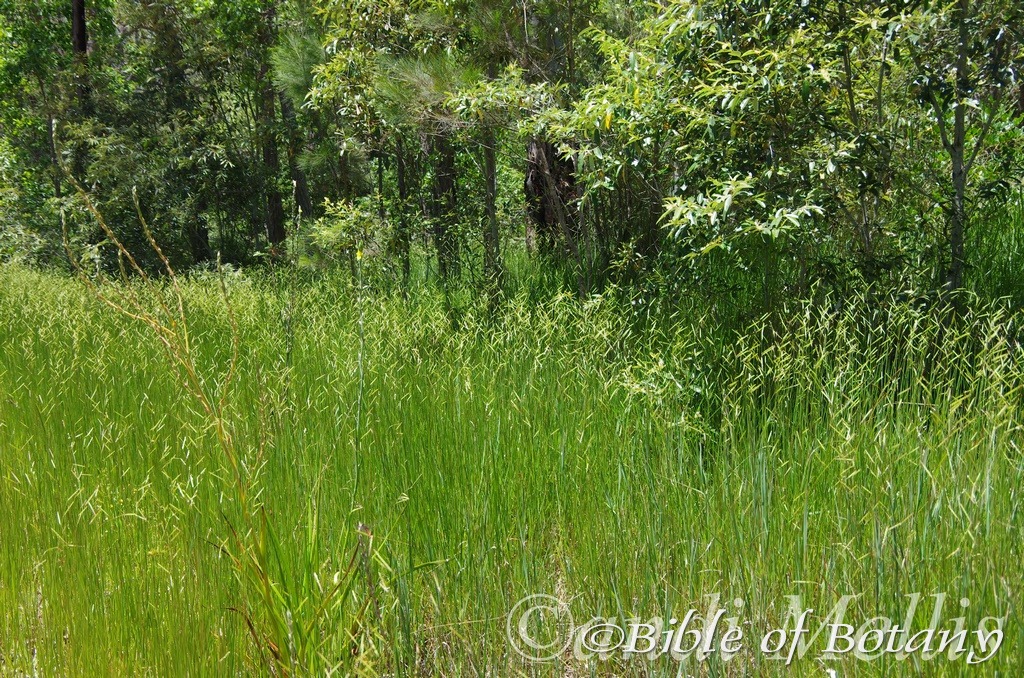
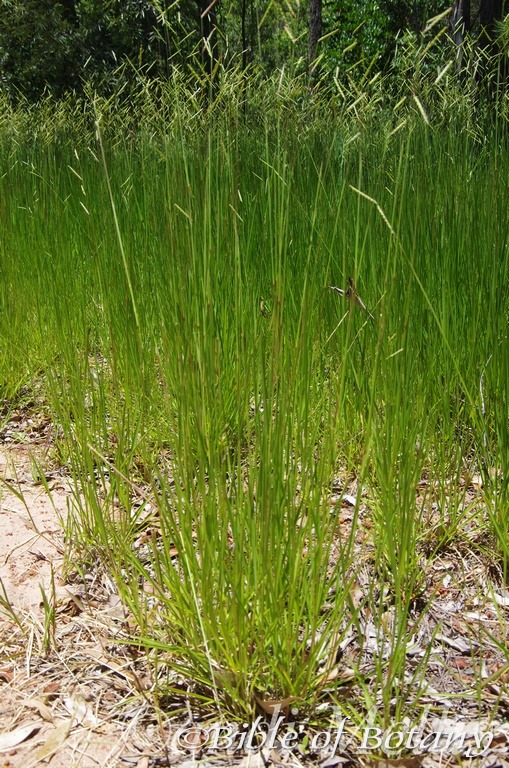
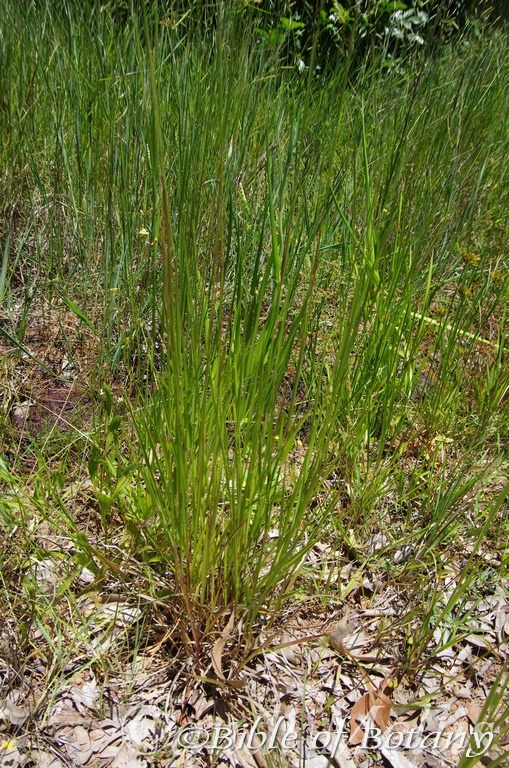
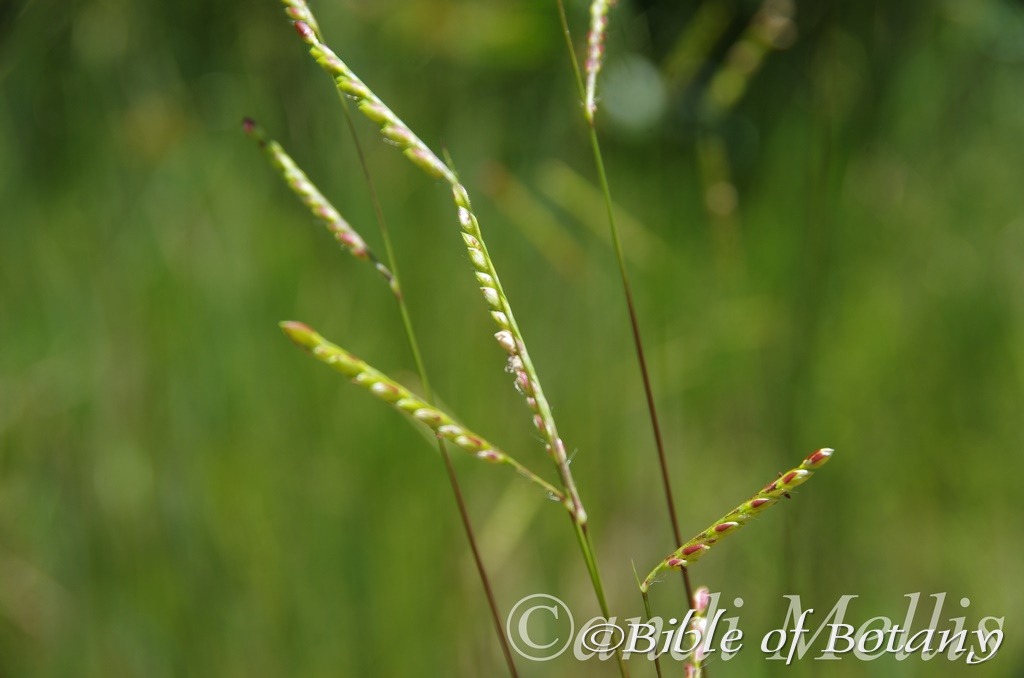
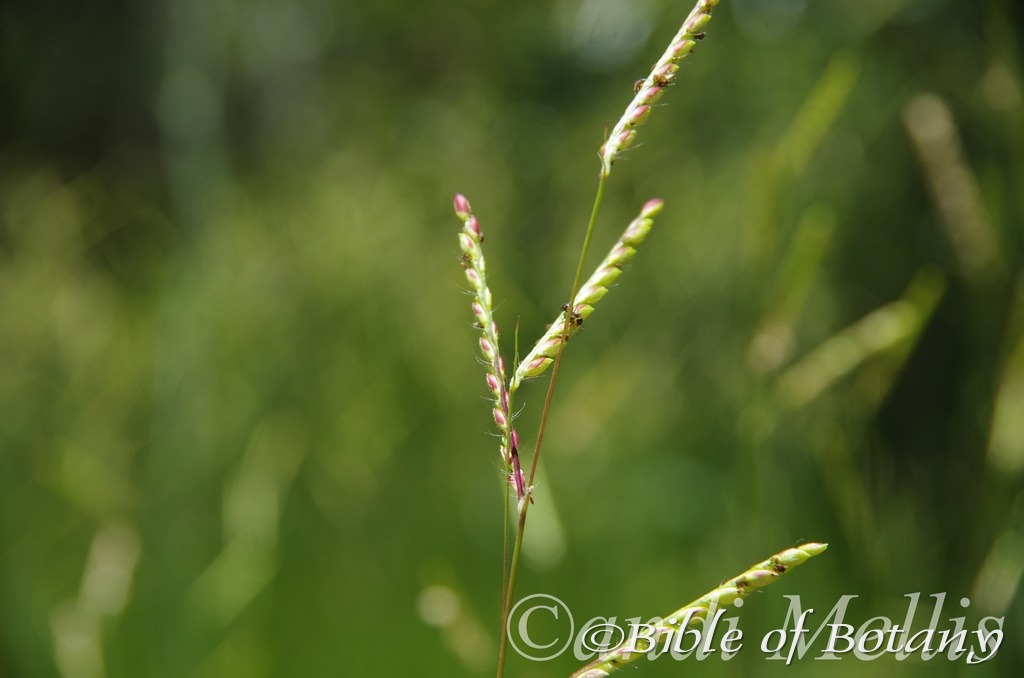
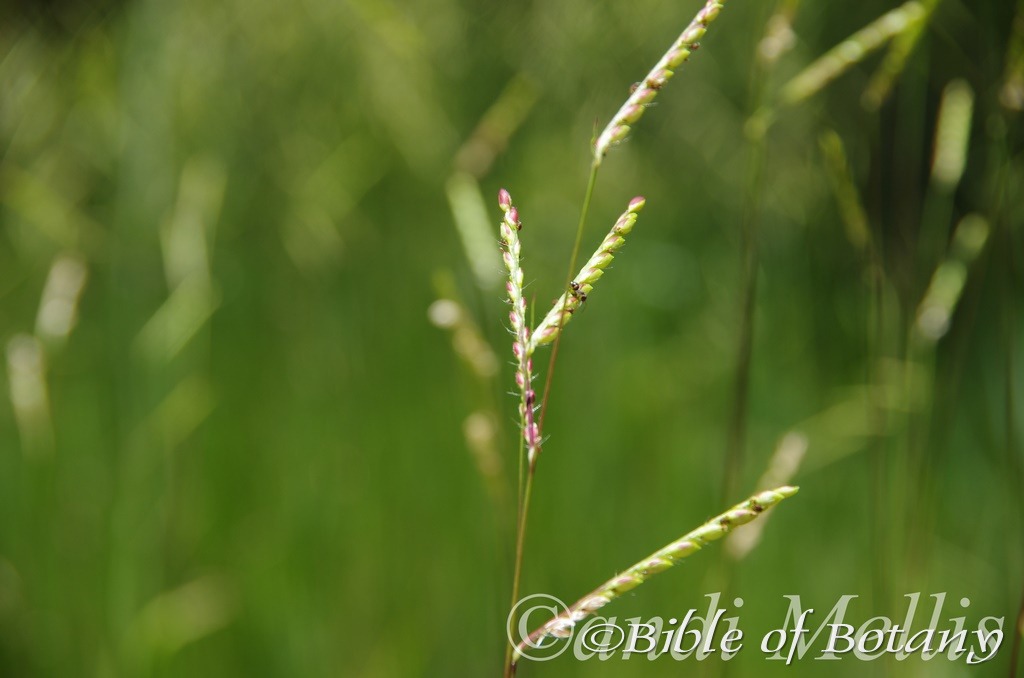
Paspalum orbiculare
Classification:
Division: Monocots
Division: Commelinids
Order: Poales
Family: Poaceae
Subfamily: Panicoideae
Genus: From Paspalos, which is Ancient Greek for a type of millet. It refers to grasses, which are very similar to some of the European millets.
Species: From Orbiculātum, which is Latin for an orb or disc. It refers to structures or organs, which resemble a disc in shape or the individual florets on grasses.
Sub Species:
Common Name: Ditch Millet.
Distribution:
Paspalum orbiculare is found north of a line from Minyirr Buru Conservation Park, in Western Australia to Queensland then from Townsville south to Jervis Bay, where it is found on and east of the Great Dividing Range to the coast and off shore Islands.
It is also found in Papua New Guinee. New Britain and New Zealand
https://avh.ala.org.au/occurrences/search?taxa=Paspalum+orbiculare#tab_mapView
Habitat Aspect Climate:
Paspalum orbiculare prefer dappled shade to full sun. It grows in tropical heaths, adjacent to lowland tropical rainforests, subtropical rainforests, littoral rainforests, moist sclerophyll forests, dry sclerophyll forests, woodlands, temperate sub-humid woodlands, semi-arid shrub woodlands and Acacia shrub lands. The altitude ranges from 5 meter ASL to 570 meters ASL.
The temperatures range from 3 degrees in August to 40 degrees in February.
The rainfalls range from lows of 500mm to an average 3200mm annually.
Soil requirements:
Paspalum orbiculare prefer to grow on better quality sandy loams to medium clays or medium silts to heavy silts. The soils are usually derived from decomposed brown basalts, black basalts, shales, fatty sandstones, granites, sandstones and metamorphic rocks laid down as sediments. The soils pH. ranges from 4.5pH to 7.5pH. It does not tolerate waterlogged soils. Non saline soils to extremely saline soils are tolerated.
Height & Spread:
Wild Plants: 0.6m to 1m by. 0.2m to 4m
Characteristics:
Paspalum orbiculare’s is a slender to stout, matt forming perennial with off white to yellowish-green rhizomes. The culms are ascending to erect and grass-green. The usually glabrous or very rarely have a few fine short, white hairs on the lower culm sheaths, which form from a knotty root-stock. The Keeled sheaths have truncate ligule, which measures, 0.75mm to 2mm in length by 2mm to 7.5mm in width. The leaf blade measures 2mm to 7.5mm in width. The leaves are glabrous except for a few, fine long, white hairs near the orifice.
The Inflorescences are digitate cymes usually with 2 or at times 3 or 4 divaricate to semi erect racemes born at the apex of the peduncle. The peduncles and racemes are glabrous. The peduncles measure 90mm to 120mm in length while the racemes measure 50mm to 70mm in length. There are 14 to 26 spikelets on each raceme. The basal 3 to 5 florets are sterile.
The long-exserted Inflorescence are on slender peduncles, which measure 40mm to 120mm in length. There are 2 to 5 usually 3 spreading racemes scattered along a long, slender, angular axis. The individual racemes measure 15 to 80mm in length. They are densely covered in white, pubescent hairs with a few longer hairs at the axils.
The mostly solitary spikelets, rarely paired towards the middle of the raceme are imbricate, glabrous, widely elliptic, obtuse to subacute or rarely rounded at the apex. They are widest near the centre and measure 1.75mm to 2.5mm in length by 1.25mm to 1.6mm in width.
The lower glume is absent, while the narrow upper glume and lower lemma are equal in length. The oblong, obtuse, fawn, fertile lemma is roughly equal to the spikelet and is finely punctulate to striolate.
The flowers appear from late November to February.
Paspalum orbiculare’s fruits green grains turn dull pale grey almost white when ripe.
Wildlife:
Paspalum orbiculare’s seeds are eaten by many native finches including the red-browed finch (Neophema temporalis) and the Double bard Finch (Taeniopygia bichenovii.)
Cultivation:
Paspalum orbiculare is an erect grass suitable for wet drainage problem areas in the garden when full sun is available. It is a preferred grass for both domestic and native mammals and is of excellent quality.
Propagation:
Seeds: Sow the seeds directly into a seed raising mix. Cover them with 2mm of fine sand and keep moist not wet. Place the tray in a warm sunny position. When the seedlings are 25mm to 50mm tall, prick them out in small groups and plant them into 20mm tubes using a good organic mix.
Once the seedlings reach 75mm to 80mm in height, plant them out into their permanent position and water thoroughly with our commended fertilizer. Plant them at 200mm centers.
Alternatively, the seed can be broadcast out in small areas or used in a seeder on broad acreage.
Fertilize using seaweed, fish emulsion or organic chicken pellets at the time of sowing.
Further Comments from Readers:
Hi reader, it seems you use The Bible of Botany a lot. That’s great as we have great pleasure in bringing it to you! It’s a little awkward for us to ask, but our first aim is to purchase land approximately 1,600 hectares to link several parcels of N.P. into one at The Pinnacles NSW Australia, but we need your help. We’re not salespeople. We’re amateur botanists who have dedicated over 30 years to saving the environment in a practical way. We depend on donations to reach our goal. If you donate just $5, the price of your coffee this Sunday, We can help to keep the planet alive in a real way and continue to bring you regular updates and features on Australian plants all in one Botanical Bible. Any support is greatly appreciated. Thank you.
In the spirit of reconciliation we acknowledge the Bundjalung, Gumbaynggirr and Yaegl and all aboriginal nations throughout Australia and their connections to land, sea and community. We pay our respect to their Elders past, present and future for the pleasures we have gained.
Paspalum scrobiculatum
Classification:
Division: Monocots
Division: Commelinids
Order: Poales
Family: Poaceae
Subfamily: Panicoideae
Genus: From Paspalos, which is Ancient Greek for a type of millet. It refers to the grasses, which are very similar to the European millets.
Species: From Scrobiculum, which is Latin for a planting hole or ditch. It refers to structures or organs, which are covered in many furrows or being strongly pitted or plants which prefer to grow in ditches or along drainage lines.
Variety: Paspalum scrobiculatum var. commersonii. Is named in honour of Philibert Comerson; 1727-1773, who was a French naturalist and explorer.
Variety: Paspalum scrobiculatum var. gracillimum. From Gracilis, which is Latin for slender and graceful and Um, which is Greek/Latin for the degree. It refers to plants, which are the more graceful and having more slender stems than other species in the genus.
Variety: Paspalum scrobiculatum var. longifolium. From Longitia/Longus, which is Latin for long in length and Folium, which is Latin for foliage. It refers to leaves, which are much longer than many other species in the genus.
Variety: Paspalum scrobiculatum var. orbiculare From Orbiculātum, which is Latin for an orb or disc. It refers to structures or organs, which resemble a disc in shape or the individual florets on grasses.
Variety: Paspalum scrobiculatum var. polystachyum. From Polús, which is Ancient Greek for many and Stákhus, which is Ancient Greek for a spike. It refers to the plants, which have a lot more flowering spikes than other species in the genus.
Variety: Paspalum scrobiculatum var. pubescens. From Pūbēscēns, which is Latin for short, very soft hairs. It refers to structures or organs, which are covered in soft, white or pale grey hairs.
Common Name: Ditch Millet
Distribution:
Paspalum scrobiculatum is found north of a line from Gibbings Island off the Kimberley Coast to the Bungle Bungle National Park in northern Western Australia to the Little Roper River in the Northern Territory and Lawn Hill Gorge to in Rockingham Creek in central Queensland. From here it is mainly found on and east of the Great Dividing Range to Jervis Bay except for a few populations from the Carnarvon Gorge south to Wieambilla Creek between Chinchilla and Condamine. It is also found at Tennant Creek and Mutitjulu Waterhole, Uluru in the northern Territory.
Paspalum scrobiculatum var. longifolium is found in two distinct disjunct populations. The western population is found in the northern quarter of the Northern Territory.
The eastern population is found south of the Leichardt River on Cape York Peninsula in far north eastern Queensland to Shelley Beach in central coastal New South Wales. It is mainly found east of the Great Dividing Range.
https://avh.ala.org.au/occurrences/search?taxa=Paspalum+scrobiculatum#tab_mapView
Note: The subspecies mapping is presently under review.
Habitat Aspect Climate:
Paspalum scrobiculatum prefers dappled shade to full sun. It grows in dry tropical rainforests, dry subtropical rainforests, dry sclerophyll forests, moist open woodlands or coastal grasslands. It is usually associated with damp situations especially shallow depressions. The altitude ranges from 5 meter ASL to 970 meters ASL.
The temperatures range from minus 1 degree in August to 42 degrees in February.
The rainfalls range from lows of 150mm to an average 3200mm annually.
Soil requirements:
Paspalum scrobiculatum prefer to grow on better quality sandy loams to medium clays. The soils are usually derived from decomposed brown basalts, black basalts, shales, fatty sandstones, granites or metamorphic rocks. The soils pH. ranges from 4.5pH to 6.5pH. It does not tolerate waterlogged soils. Non saline soils to moderately saline soils are tolerated.
Height & Spread:
Wild Plants: 0.2m to 0.3m by 0.4m to several meters
Characteristics:
Paspalum scrobiculatum’s is a slender to stout, matt forming perennial with off white to yellowish rhizomes. It roots readily from the nodes. The culms are green, ascending, erect or decumbent and grass-green to blue-green. They measure 100mm to 150mm in length by 1mm to 6mm in diameter. There are 2 to 17 nodes. The culm’s internodes are glabrous while the mid culm node is darker and glabrous. The lateral branches are branched several times. The leaf sheaths are smooth and glabrous. The ligule is a fringe of white ciliate hairs that measures 0.4mm to 3mm in length.
Paspalum scrobiculatum’s alternate simple leaves are linear and measure 50mm to 400mm in length by 2mm to 15mm in width. The bases are truncate at the sheath while the apexes taper to a point. The concolourous laminas are grass-green to blue-green, smooth and glabrous. The laminas are flat When fresh but keeled When dehydrated or under stress while the margins are entire. The mid vein is prominent on the lower lamina.
The Inflorescences are digitate cymes usually with 3 or at times 2 or 5 divaricate racemes. The peduncles and racemes are glabrous with the racemes being scatted along the upper section of the peduncle. The upper racemes are shorter than the lower racemes. The peduncles measure 40mm to 120mm in length while the racemes measure 15mm to 80mm in length by 1.7mm to 2.5mm in diameter. There are 30 to 110 spikelets on each peduncle. The basal 3 to 5 florets are sterile.
The alternate, usually solitary imbricate spikelets are rarely opposite near the middle of the raceme. The glabrous pedicels measure 0.4mm to 0.6mm in length. The broad elliptical to oblong spikelets are obtuse to sub-acute, pale grass-green to blue-green and measure 2.5mm to 3.5mm in length.
The glumes are similar. The glumes are elliptical, hyaline, and membranous or chartaceous, are without keels and have 5 to 7 nerves. The appressed glumes are glabrous. The glumes measure 2.1mm to 3mm in length.
The lower lemmas are equal in the length to the spikelets, are thinly membranous, are without keels and have 3 to 5 nerves and have a mucronate apex. The elliptical fertile lemmas measure 2.1mm to 2.9mm in length.
The single white filiform filaments have very deep purple versatile anthers. The deep maroon style is strongly plumose. The flowers appear from late November to May.
Paspalum scrobiculatum’s fruits are oblong grains. The green grains turn dull pale grey when ripe. The grains measure 2.1mm to 2.8mm in length.
Wildlife:
Paspalum scrobiculatum seeds are eaten by many native finches including the red-browed finch (Neophema temporalis) and the Double bard Finch (Taeniopygia bichenovii.)
Cultivation:
Paspalum scrobiculatum is a mat forming grass suitable for wet drainage problem areas in the garden when full sun is available. It can be mown on a regular basis and will cover very quickly. It is suitable for a course hardy lawn.
It is a preferred grass for both domestic and native mammals and is of excellent quality on drainage problem medium to heavy clays and silts including wet skeletal soils.
Propagation:
Seeds: Paspalum scrobiculatum’s seeds directly into a seed raising mix. Cover them with 2mm of fine sand and keep moist not wet. Place the tray in a warm sunny position. When the seedlings are 25mm to 50mm tall, prick them out in small groups and plant them into 20mm tubes using a good organic mix.
Once the seedlings reach 75mm to 80mm in height, plant them out into their permanent position and water thoroughly with our commended fertilizer. Plant them at 200mm centres.
Alternatively the seed can be broadcast out in small as or used in a seeder on broad acreage.
Fertilize using seaweed, fish emulsion or organic chicken pellets at the time of sowing.
Further Comments from Readers:
Hi reader, it seems you use The Bible of Botany a lot. That’s great as we have great pleasure in bringing it to you! It’s a little awkward for us to ask, but our first aim is to purchase land approximately 1,600 hectares to link several parcels of N.P. into one at The Pinnacles NSW Australia, but we need your help. We’re not salespeople. We’re amateur botanists who have dedicated over 30 years to saving the environment in a practical way. We depend on donations to reach our goal. If you donate just $5, the price of your coffee this Sunday, We can help to keep the planet alive in a real way and continue to bring you regular updates and features on Australian plants all in one Botanical Bible. Any support is greatly appreciated. Thank you.
In the spirit of reconciliation we acknowledge the Bundjalung, Gumbaynggirr and Yaegl and all aboriginal nations throughout Australia and their connections to land, sea and community. We pay our respect to their Elders past, present and future for the pleasures we have gained.
Paspalum vaginatum
Classification:
Division: Monocots
Division: Commelinids
Order: Poales
Family: Poaceae
Subfamily: Panicoideae
Genus: From Paspalos, which is Ancient Greek for a type of millet. It refers to the grasses, which are very similar to the European millets.
Species: From Vaginatum, which is Latin for having a sheath. It refers to a structure like a culm which has split or a fold similar in appearance to vagina opening where a flower or plantlet develops.
Sub Species:
Common Name: Salt Water Couch
Distribution:
Paspalum vaginatum is found south from the mouth of the Chapman River to lake Saide near Albany as well as Lambs Vacation Village, Fern Spring near Mandora Marsh and Dragon Creek soak to the central western coast and north of a line from the Ord River in the far north east of Western Australia to Maria Island in the Northern Territory. To the south it is found at Alice Springs and in South Australia it is found from Orroroo to Port Augusta then south to the tip of Eyre Peninsula and Streaky Bay. To the east it is found along the Murray River to Lake Alexandrina, Hundd of Minlacowie, Kangaroo Island, Meningie and Butchers Gap Conservation Park.
In the east it is found east of the Great Dividing Range to the coast south from the tip of Cape York Peninsula to Howlett’s Swamp near Bairnsdale in south eastern coastal Victoria except for a few disjunct western populations at Normanton, Cudleigh Park Station, Clairmont and off shore islands.
It is also found on Lord Howe Island.
https://avh.ala.org.au/occurrences/search?taxa=Paspalum+vaginatum#tab_mapView
Habitat Aspect Climate:
Paspalum vaginatum prefer dappled shade to full sun. It grows in
tropical heaths, tropical littoral rainforests, subtropical littoral rainforests, wet sclerophyll forests, dry sclerophyll forest drainage lines, moist drainage lines in coastal woodlands, semi-arid drainage lines and creeks and drainage lines in arid woodlands. The altitude ranges from 5 meter ASL to 870 meters ASL.
The temperatures range from minus 3 degrees in August to 40 degrees in February.
The rainfalls range from lows of 150mm to an average 3000mm annually. The locations along soaks and drainage lines a more important than the actual rainfall in a given area.
Soil requirements:
Panicum vaginatum prefer to grow on better quality sandy loams to medium clays. The soils are usually derived from decomposed brown basalts, black basalts, shales, fatty sandstones, granites, metamorphic rocks and alluvial silts and mud. The soils pH. ranges from 4.5pH to 7.5pH. It does not tolerate waterlogged soils. Non saline soils to extremely saline soils are tolerated as are salt laden winds.
Height & Spread:
Wild Plants: 0.2m to 0.4m by 0.4m to several meters.
Characteristics:
Panicum vaginatum’s is a slender to stout, mat forming perennial with off white to yellowish rhizomes and stolons. It roots readily from the nodes. The culms are erect or decumbent and grass-green to blue-green. They measure 80mm to 600mm in length by 1mm to 5mm in diameter. There are 5 to 13 nodes. The culm’s internodes and mid culm nodes are glabrous. The lateral branches are branched several times. The leaf sheaths are smooth and glabrous. The ligule is an eciliate membrane that measures 0.5mm to 1.2mm in length.
Paspalum vaginatum’s alternate simple leaves are linear and measure 25mm to 220mm in length by 2.5mm to 22mm in width. The bases are truncate at the sheath while the apexes taper to a point. The concolourous laminas are grass-green to blue-green and are smooth and glabrous. The laminas are flat When fresh but keeled When dehydrated or under stress while the margins are entire. The mid vein is prominent on the lower lamina.
The inflorescences of Paspalum vaginatum are digitate cymes usually with 2 or at times 3 to 5 divaricate to semi erect racemes born at the apex of the peduncle. The peduncles and racemes are glabrous. The peduncles measure 15mm to 75mm in length while the racemes measure 15mm to 35mm in length by 1.3mm to 3.5mm in diameter. There are 16 to 32 spikelets on each raceme.
The alternate, solitary imbricate spikelets are glabrous and sessile. The broad elliptical to oblong spikelets are elliptic or ovate, dorsally compressed, pale grass-green to blue-green and measure 2.5mm to 4.5mm in length.
The glumes are dissimilar. The appressed glumes are glabrous. The lower glume is ovate, hyaline without a keel and nerves. The glumes measure 2.1mm to 3mm in length. The upper glumes are glabrous elliptical glume measures 2.5mm to 3.7mm in length. It is membranous, are without keels and have 2 to 6 nerves.
The lower lemmas are equal in the length to the spikelets, are thinly membranous, are without keels and have 2 to 5 nerves and have a mucronate apex. The basal sterile floret is barn and without significant palea. The elliptical fertile lemmas measure 2.3mm to 2.5mm in length.
The single white filiform filaments have very deep maroon almost black versatile anthers. The deep maroon style is strongly plumose. The flowers appear from late November to February.
Paspalum vaginatum’s fruits are oblong grains. The green grains turn dull pale grey when ripe. The grains measure 2.1mm to 2.4mm in length.
Wildlife:
Paspalum vaginatum seeds are eaten by many native finches including the red-browed finch (Neophema temporalis) and the Double bard Finch (Taeniopygia bichenovii.)
Cultivation:
Paspalum vaginatum is a mat forming grass suitable for wet drainage problem areas in the garden when full sun is available. It can be mown on a regular basis and will recover very quickly. It is suitable for a hardy lawn.
It is a preferred grass for both domestic and native mammals and is of excellent quality on drainage problem medium to heavy clays and silts including wet skeletal soils.
Propagation:
Seeds: The seeds directly into a seed raising mix. Cover them with 2mm of fine sand and keep moist not wet. Place the tray in a warm sunny position. When the seedlings are 25mm to 50mm tall, prick them out in small groups and plant them into 20mm tubes using a good organic mix.
Once the seedlings reach 75mm to 80mm in height, plant them out into their permanent position and water thoroughly with our commended fertilizer. Plant them at 200mm centres.
Alternatively the seed can be broadcast out in small areas or used in a seeder on broad acreage.
Fertilize using seaweed, fish emulsion or organic chicken pellets at the time of sowing.
Further Comments from Readers:
Hi reader, it seems you use The Bible of Botany a lot. That’s great as we have great pleasure in bringing it to you! It’s a little awkward for us to ask, but our first aim is to purchase land approximately 1,600 hectares to link several parcels of N.P. into one at The Pinnacles NSW Australia, but we need your help. We’re not salespeople. We’re amateur botanists who have dedicated over 30 years to saving the environment in a practical way. We depend on donations to reach our goal. If you donate just $5, the price of your coffee this Sunday, We can help to keep the planet alive in a real way and continue to bring you regular updates and features on Australian plants all in one Botanical Bible. Any support is greatly appreciated. Thank you.
In the spirit of reconciliation we acknowledge the Bundjalung, Gumbaynggirr and Yaegl and all aboriginal nations throughout Australia and their connections to land, sea and community. We pay our respect to their Elders past, present and future for the pleasures we have gained.
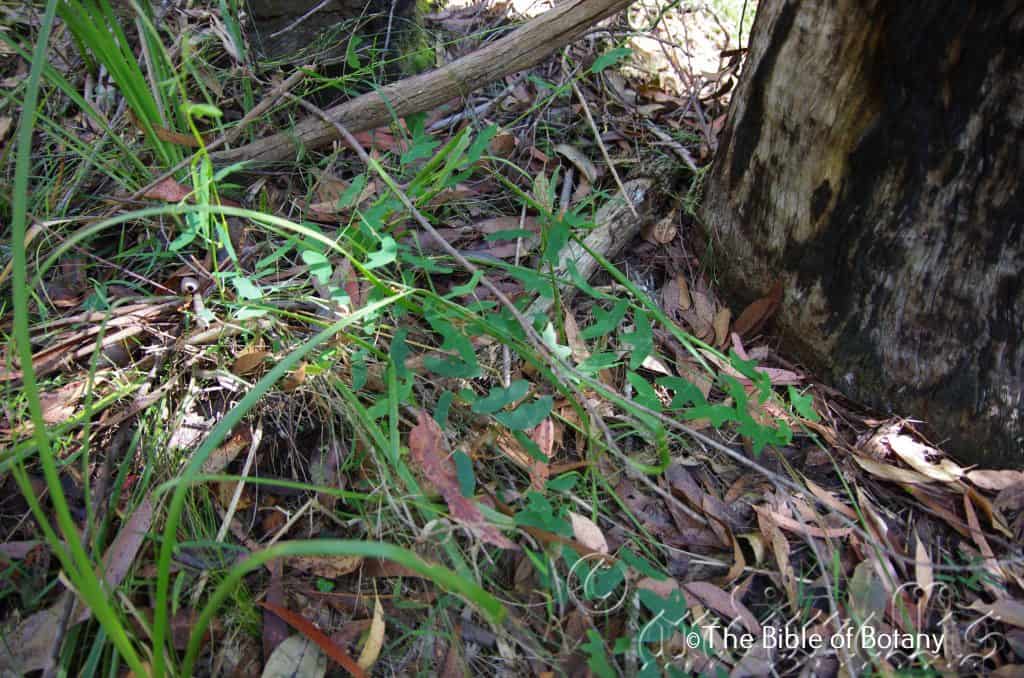
Pillar Valley NSW
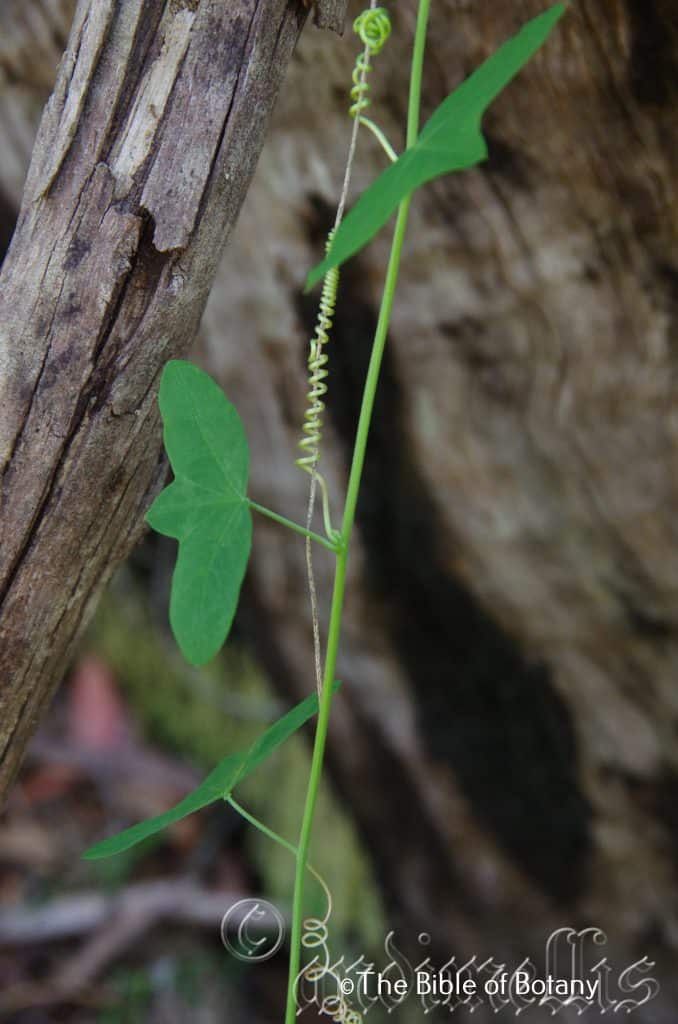
Pillar Valley NSW
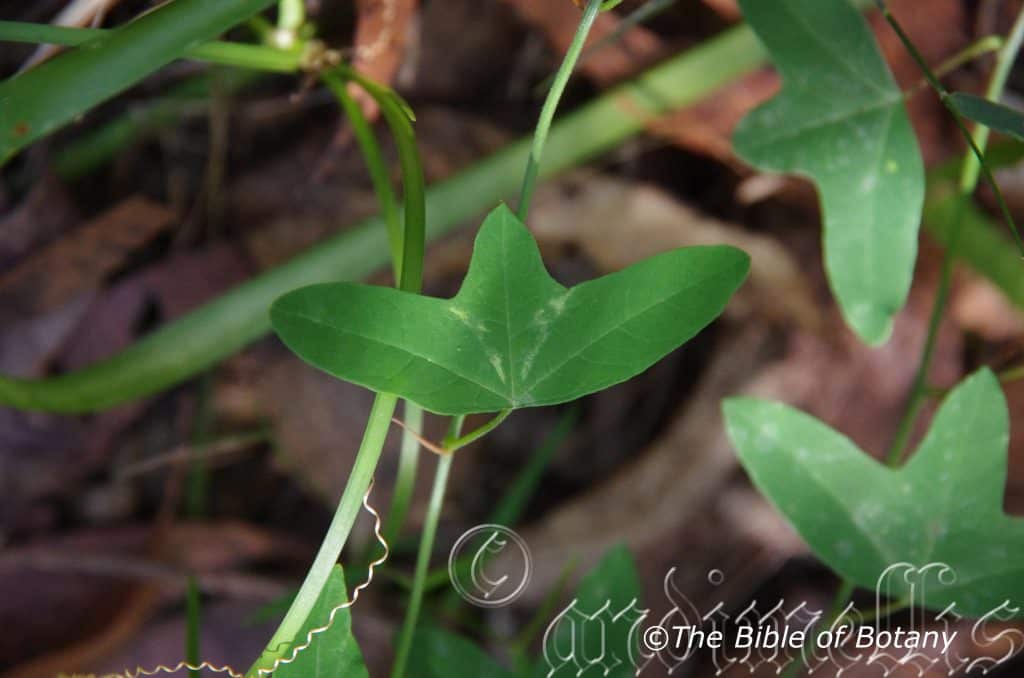
Pillar Valley NSW
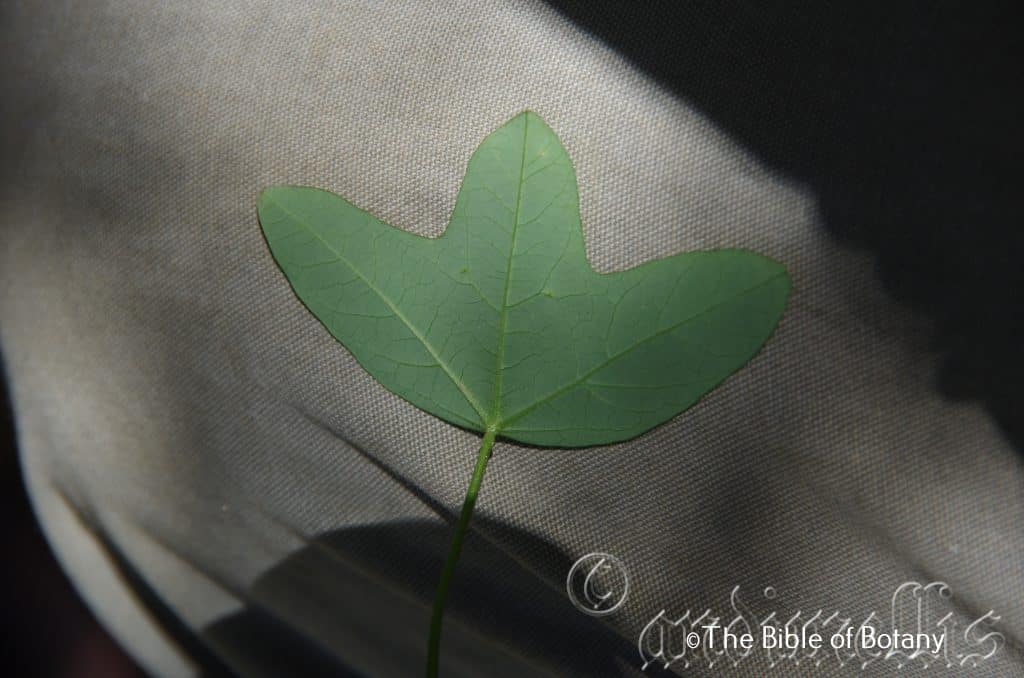
Pillar Valley NSW
Passiflora aurantia
Classification:
Unranked: Eudicots
Unranked: Rosids
Order: Malpighiales
Family: Passifloraceae
Genus: From Páthos, which is Greek or Passiō, which is Latin for to have a strong love or passion for and Flōris, which is Latin for a flower or Flōs, which is from the Roman goddess of spring and flowers. It refers to the flowers, which are exquisite beauty and holds your attention for long periods like the suffering of love ones caught up in a strong passion of love.
Species: From Aurantius/Aurantiacum, which is Latin for golden-orange to brilliant orange. It refers to structures or organs usually the flowers, which have a brilliant yellow to orange colour.
Sub Species:
Sub specie:
Common Name: Blunt Leaf Passion Flower or d Passion Flower.
Distribution:
Passiflora aurantia is found south from The Torres Strait Islands in far north Queensland, south to Ballina Nature serve and north Bundjalung National Park in far north eastern New South Wales. It is found on the eastern side of the Western plains, Western Slopes, on and east of the Great Dividing Range to the coast and off shore Islands.
https://avh.ala.org.au/occurrences/search?taxa=Passiflora+aurantia#tab_mapView
Habitat Aspect Climate:
Passiflora aurantia prefers medium shade to full sun. It grows in and adjacent to well developed rainforests moist Eucalyptus forests, moist littoral rainforests or vine thickets. The altitude ranges from 10 meters ASL to 300 meters ASL.
The temperatures range from minus 2 degrees in July to 36 degrees in January.
The rainfall ranges from lows of 900mm to 3200mm average per annum.
Soil requirements:
Passiflora aurantia prefers better quality sandy loams to medium clays with a high proportion of forest litter. The soils are usually derived from decomposed sandstones, brown basalts, black basalts, shales or granites. The soils pH ranges from 5pH to 6pH. It does not tolerate of waterlogged soils but prefers even soil moisture throughout the year. Non saline soils to moderately saline soils are tolerated.
Height & Spread:
Wild Plants:1.5m to 2m by 1.5m to 2m
Characteristics:
Passiflora aurantia grows as a small glabrous climber. The main trunk is fawn, pale brown to pale grey-brown extending to the stems. The trunk measures 15mm to 20mm in diameter on old vines. The slender pale blue-green stems are glabrous. The tendrils are pale blue-green turning pale fawn with age.
The adjacent disjunct, trilobed leaves, of Passiflora aurantia are strongly dimorphic. The laminas measure 25mm to 75mm in length by 25mm to 75mm in width. The petioles measure 10mm to 30mm in length. The lobes vary from shallow to deep, narrowly oblong to ovate. The bases are broadly rounded while the apexes are obtuse. The concolourous laminas are pale blue-green and glabrous. The leaf margins are entire, flat or curve slightly upwards from the mid vein. The 3 lobe mid veins are slightly prominent on the lower lamina and are visible on the upper lamina. There are 2 glands on the petiole near the base of the leaf. The 2 stipules, When present measure 1mm in length.
The inflorescences of Passiflora aurantia are born singularly from the leaf axils. The large star flowers measure 50mm to 90mm in diameter. The flower’s calyxes and petals are white to pale cam turning orange-d as they age and after anthesis. The round pedicels measures 6mm to 9mm in length. The inner corona is a 20mm tube which surrounds the base of the gynophores. It is sparsely covered in fimbriate hairs. The outer corona is densely covered in 12mm to 17mm long deep pink to deep d velutinous hairs.
The 5 fleshy calyx lobes are variable, oblong to narrow elliptical. They measure 40mm to 45mm in length by 8mm to 12mm in width. The margins are entire and undulating while the apexes are obtuse. The 5 fleshy petals are oblong while the margins are entire while the apex is obtuse. They measure 18mm to 24mm in length by 4mm to 6mm in width.
The 5 stamens are attached to the gynophores below the ovary. The gynophores measure 28mm to 32mm in length. The filaments a pale green turning olive green as they age. The filaments measure 9mm to 12mm in length while the oblong anthers measure 4mm to 6mm in length.
The glabrous ovary measures 2mm to 3mm in length before anthesis. The 3 styles measure 9mm to 12mm in length and have a conical stigmas which measure 1.5mm in diameter. The flowers appear from late June to September.
Passiflora aurantia’s fruits are globular to ovoidal berries. The berries measure 30mm to 50mm in length by 20mm to 45mm in diameter. The styles shrivel and a persistent on the fruits. The pale grey to deep grey seeds a surrounded by a pale creamy green pulp. The seeds measure 3mm in length by 2mm in diameter.
Wildlife:
Passiflora aurantia’s is the host plant for the Glass wing butterflies. (Acraea andromacho)
The large fruits were are staple part of Australian aborigine diets. It has a sweet aromatic flavour for discerning taste buds. In other words they have a lot to be desired.
Cultivation:
Passiflora aurantia is a magnificent small to medium creeper that deserves a place in every warm temperate, sub-tropical, tropical or semi-arid native or exotic garden. It is ideal in almost every setting on pool fences, at the edge of a rain forest in court yards, pergolas or larger rockeries When their size is balanced. In cultivation it grows from 1.5 meters to 2 meters in height by 1.5 meters to 2 meters in width.
There is a rare orange form on the market to help add interest and colour to the garden.
It grows exceptionally well on lighter soils When deep leaf litter keeps the soil cool and moisture at an even level. If these requirements are met it can cope with temperatures as low as minus 2 degrees and up to 40 degrees. It is moderately drought resistant.
Add to the above, if it is given an adequate supply of native fertilizers on a regular basis the plants will respond with spectacular flowering over a long period. It needs to be mass planted as it is not naturally bushy.
Be imaginative When planting on pergolas, fences or other structures. Use the plants in different configurations and with different creepers that flower at different times.
Use curves and light pruning after flowering or tip pruning will help to maintain the plant to a smaller size.
Ensure that the whole plant or at least most of it is on display from most sections of the garden as the flowers are a real bonus.
When It is in flower these plants will catch your attention and the viewer will be transfixed on the display rather than watching the path.
Propagation:
Seeds: Seeds can be moved easily from the berries. Allow them to dry out and put aside for a few weeks to a month. Once they have dried out and aged sow the seeds directly into a seed raising mix, keeping them moist not wet. When the seedlings are 30mm to 40mm tall, prick them out and plant them into 50mm native tubes using a good organic mix.
As the seedlings roots reach the bottom of the tubes plant them out into their permanent position.
Cuttings: Fortunately Passiflora aurantia cuttings strike easy. Use 100mm to 200mm long tip cuttings or lateral shoots from the present season’s growth. Take them in warmer months of the year. Remove half the leaves from the bottom section being careful not to tear the bark.
1 Prepare the cutting mix by adding two thirds sharp clean river sand, one third peat or one third perlite. These ingredients must be sterilized,
2 Select good material from non diseased plants,
3 Select semi green stems for cuttings. Look for a stem with two or three nodes,
4 Place the cutting on a flat, hard surface, and make a clean cut down one side of the cutting at the base for 10mm with a sharp sterile knife or razor blade. – This scarification of the node will increase the chances of roots emerging from this spot. Now remove all but one or two the leaves, leaving the apex leaves in tact. If the leaves are very large in proportion to the stem, cut off the apical halves.
5 Fill a saucer with water, and place a little medium strength rooting hormone into another container like a milk bottle top. Dip the node end of the cutting into the water and then into the rooting hormone. Tap off any excess hormone,
6 Use a small dipple stick or old pencil to poke a hole into the soilless potting mix. Ensure the hole is slightly larger than the stem diameter and be careful not to wipe the rooting hormone off the cuttings base. Place 2 to 4 cuttings in each of the 50mm native tubes,
7 I like to place the tubes in bucket with holes drilled in the bottom to allow excess water to drain out. A plastic bag that fits over the bucket is ideal to help maintain temperature and moisture. Place in a semi shaded, warm position like under 50mm shade cloth.
8 When the cuttings have struck, open the bag to allow air circulation for a few days to a week,
9 Once hardened off remove the cuttings from the bag and allow to further hardening for a few more days to a week,
10 Transplant into a good potting mix to grow on.
Fertilize using seaweed, fish emulsion or organic chicken pellets soaked in water on an alternate basis. Fertilize every two months until the plants are established then twice annually in early September or March to maintain health, vitality and better flowering.
Further Comments from Readers:
Hi reader, it seems you use The Bible of Botany a lot. That’s great as we have great pleasure in bringing it to you! It’s a little awkward for us to ask, but our first aim is to purchase land approximately 1,600 hectares to link several parcels of N.P. into one at The Pinnacles NSW Australia, but we need your help. We’re not salespeople. We’re amateur botanists who have dedicated over 30 years to saving the environment in a practical way. We depend on donations to reach our goal. If you donate just $5, the price of your coffee this Sunday, We can help to keep the planet alive in a real way and continue to bring you regular updates and features on Australian plants all in one Botanical Bible. Any support is greatly appreciated. Thank you.
In the spirit of reconciliation we acknowledge the Bundjalung, Gumbaynggirr and Yaegl and all aboriginal nations throughout Australia and their connections to land, sea and community. We pay our respect to their Elders past, present and future for the pleasures we have gained.
Passiflora cinnabarina
Classification:
Unranked: Eudicots
Unranked: Rosids
Order: Malpighiales
Family: Passifloraceae
Genus: From Páthos, which is Greek or Passiō, which is Latin for to have a strong love or passion for and Flōris, which is Latin for a flower or Flōs, which is from the Roman goddess of spring and flowers. It refers to the flowers, which are exquisite beauty and holds your attention for long periods like the suffering of love ones caught up in a strong passion of love.
Species: From Kinnabari, which is Ancient Greek or Cinnabaris which is Latin for mercuric sulfide. It refers to a structure or organ, which is vermillion-red in colour. Here it refers to the colour of the flowers.
Sub specie:
Common Name: Red Passion Flower or Red Passion Fruit.
In the Aboriginal language it is known as Bungghum.
Distribution:
Passiflora cinnabarina is found south from the Hawkesbury River to the Dandenong Mountains east of Melbourne and Wilson’s Promontory.
There are 3 disjunct populations in Tasmania which are not clear whether these are earlier escapees or naturally occurring in the state. Fossil cords indicate the plants we found in Tasmania as late as the last ice age.
https://avh.ala.org.au/occurrences/search?taxa=Passiflora+cinnabarina#tab_mapView
Habitat Aspect Climate:
Passiflora cinnabarina prefers dappled shade to full sun. It grows in and adjacent to well-developed cool sub-tropical rainforests, moist Eucalyptus forests or moist littoral rainforests or cool temperate rainforests. The altitude ranges from 5 meters ASL to 650 meters ASL.
The temperatures range from minus 4 degrees in July to 32 degrees in January.
The rainfall ranges from lows of 800mm to 1400mm average per annum.
Soil requirements:
Passiflora cinnabarina prefers better quality sandy loams to medium clays with a green generous covering of forest litter. The soils are usually derived from decomposed brown basalts, black basalts, shales or granites. The soils pH ranges from 5pH to 6pH. It does not tolerate of waterlogged soils. Non saline soils to moderately saline soils are tolerated.
Height & Spread:
Wild Plants: 2m to 3m by 2m to 3m
Characteristics:
Passiflora cinnabarina grows as a small glabrous climber. The main trunk is fawn, pale brown to pale grey-brown extending to the stems. The trunk measures 15mm to 20mm in diameter on old vines. The stems are thin pale blue-green and glabrous. The tendrils are pale blue-green turning pale fawn with age.
The adjacent disjunct, trilobed leaves, of Passiflora aurantia are strongly dimorphic. The laminas measure 60mm to 100mm in length by 55mm to 90mm in width. The lobes vary from shallow to deep, narrowly elliptical to broadly elliptical. The base is broadly rounded while the apex is obtuse-acute. The discolourous lamina is blue-green to deep olive-green and glabrous. The leaf margins are entire, flat or curve slightly upwards from the mid vein and decurve at the lobe apexes. The 3 lobe mid veins are slightly prominent on the lower lamina and are visible on the upper lamina. The petioles measure 25mm to 60mm in length.
The inflorescences of Passiflora cinnabarina are born singularly from the leaf axils. The large star flowers measure 70mm to 110mm in diameter. The flower’s calyxes and petals are deep orange-red to deep scarlet-red while the externally it is greenish-red. The round pedicels measures 35mm to 40mm in length. The inner corona is a 25mm tube which surrounds the base of the gynophores. It is sparsely covered in fimbriate hairs. The outer corona is densely covered in an inner layer of 10mm to 12mm long yellow-green velutinous hairs. The outer layer of yellow-green velutinous hairs measure 15mm to 20mm in length.
The 5 fleshy calyx lobes are variable, oblong to broadly linear. They measure 40mm to 50mm in length by 15mm to 20mm in width. The margins are entire and slightly undulating while they taper from the base to the apex. The 5 fleshy petals are oblong while the margins are entire while they taper from the base to the apex. They measure 20mm to 24mm in length by 4mm to 6mm in width.
The 5 stamens are attached to the gynophores below the ovary. The gynophores measure 20mm to 25mm in length. The filaments are pale green turning olive green as they age. The filaments measure 18mm to 20mm in length while the oblong anthers measure 8mm to 10mm in length.
The glabrous ovary measures 2mm to 3mm in length before anthesis. The 3 styles measure 15mm to 18mm in length and have a conical stigmas which measure 1.5mm in diameter. The flowers appear from late September to March.
Passiflora cinnabarina fruits are globular to ovoidal berries. The berries measure 20mm to 25mm in length by 20mm to 30mm in diameter. The styles shrivel and a persistent on the fruits. The pale grey to deep grey seeds are surrounded by a pale creamy green pulp. The seeds measure 3mm in length by 2mm in diameter.
Wildlife:
Passiflora cinnabarina’s is the host plant for the Glass wing butterflies. (Acraea andromacho)
The large fruits were a staple part of Australian aborigine diets. It has a sweet aromatic flavour for discerning taste buds. In other words it has a lot to be desired but are more pleasant than the fruits from Passiflora aurantia.
Cultivation:
Passiflora cinnabarina is a magnificent small to medium creeper that deserves a place in every warm temperate, sub-tropical, tropical or semi-arid native or exotic garden. It is ideal in almost every setting on pool fences, at the edge of a rain forest in court yards, pergolas or larger rockeries when their size is balanced. In cultivation they will grow from 1.5 meters to 2.5 meters in height by 1.5 meters to 2.5 meters in width.
There is a rare orange form on the market to help add interest and colour variation to the garden.
They grow exceptionally well on lighter soils When deep leaf litter keeps the soil cool and moisture at an even level. If these requirements are met they can cope with temperatures as low as minus 2 degrees and up to 40 degrees. It is moderately drought resistant.
Add to the above, if it is given an adequate supply of native fertilizers on a regular basis the plants will respond with spectacular flowering over a long period. They need to be mass planted as it is not naturally bushy.
Be imaginative when planting on pergolas, fences or other structures. Use the plants in different configurations and with different creepers that flower at different times.
Use curves and light pruning after flowering or tip pruning will help to maintain the plant to a smaller size.
Ensure that the whole plant or at least most of it is on display from most sections of the garden as the flowers are a real bonus.
When it is in flower these plants will catch your attention and the viewer will be transfixed on the display rather than watching the path.
Propagation:
Seeds: The seeds of Passiflora cinnabarina can be moved easily from the berries. Allow them to dry out. Once they have dried out sow the seeds directly into a seed raising mix, keeping them moist not wet. When the seedlings are 30mm to 40mm tall, prick them out and plant them into 50mm native tubes using a good organic mix.
As the seedlings roots ach the bottom of the tubes plant them out into their permanent position. Do not delay.
Cuttings: Fortunately Passiflora cinnabarina cuttings strike easy. Use 100mm to 200mm long tip cuttings or lateral shoots from the present season’s growth. Take them in warmer months of the year. Remove half the leaves from the bottom section being careful not to tear the bark.
1 Prepare the cutting mix by adding two thirds sharp clean river sand, one third peat or one third perlite. These ingredients must be sterilized,
2 Select good material from non diseased plants,
3 Select semi green stems for cuttings. Look for a stem with two or three nodes,
4 Place the cutting on a flat, hard surface, and make a clean cut down one side of the cutting at the base for 10mm with a sharp sterile knife or razor blade. – This scarification of the node will increase the chances of roots emerging from this spot. Now remove all but one or two the leaves, leaving the apex leaves in tact. If the leaves are very large in proportion to the stem, cut off the apical halves.
5 Fill a saucer with water, and place a little medium strength rooting hormone into another container like a milk bottle top. Dip the node end of the cutting into the water and then into the rooting hormone. Tap off any excess hormone,
6 Use a small dipple stick or old pencil to poke a hole into the soilless potting mix. Ensure the hole is slightly larger than the stem diameter and be careful not to wipe the rooting hormone off the cuttings base. Place 2 to 4 cuttings in each of the 50mm native tubes,
7 I like to place the tubes in bucket with holes drilled in the bottom to allow excess water to drain out. A plastic bag that fits over the bucket is ideal to help maintain temperature and moisture. Place in a semi shaded, warm position like under 50mm shade cloth.
8 When the cuttings have struck, open the bag to allow air circulation for a few days to a week,
9 Once hardened off remove the cuttings from the bag and allow to further hardening for a few more days to a week,
10 Transplant into a good potting mix to grow on.
Fertilize using seaweed, fish emulsion or organic chicken pellets soaked in water on an alternate basis. Fertilize every two months until the plants are established then twice annually in early September or March to maintain health, vitality and better flowering.
Further Comments from Readers:
Hi reader, it seems you use The Bible of Botany a lot. That’s great as we have great pleasure in bringing it to you! It’s a little awkward for us to ask, but our first aim is to purchase land approximately 1,600 hectares to link several parcels of N.P. into one at The Pinnacles NSW Australia, but we need your help. We’re not salespeople. We’re amateur botanists who have dedicated over 30 years to saving the environment in a practical way. We depend on donations to reach our goal. If you donate just $5, the price of your coffee this Sunday, We can help to keep the planet alive in a real way and continue to bring you regular updates and features on Australian plants all in one Botanical Bible. Any support is greatly appreciated. Thank you.
In the spirit of reconciliation we acknowledge the Bundjalung, Gumbaynggirr and Yaegl and all aboriginal nations throughout Australia and their connections to land, sea and community. We pay our respect to their Elders past, present and future for the pleasures we have gained.
Passiflora herbertiana
Classification:
Unranked: Eudicots
Unranked: Rosids
Order: Malpighiales
Family: Passifloraceae
Genus: From Páthos, which is Greek or Passiō, which is Latin for to have a strong love or passion for and Flōris, which is Latin for a flower or Flōs, which is from the Roman goddess of spring and flowers. It refers to the flowers, which are exquisite beauty and holds your attention for long periods like the suffering of love ones caught up in a strong passion of love.
Species: From Herbertiana, which is Latin for the Herbert River in far north eastern Queensland and Ensis/Iana, which are Ancient Greek/ Latin for to originate from. (Named in honour of Robert George Wyndham Herbert, the first Premier of Queensland.) It refers to the location where the type specimens originated from. (Not the Herbert River, but the previously known Herbert River, which is now known as the Georgina River)
Sub specie:
Common Name: Native Passion Flower or Native Passion Fruit.
Distribution:
Passiflora herbertiana is found in 2 disjunct populations south from Mossman to the Herbert River.
The second population is found south from Maryborough to east of Canberra. It is found on and east of the Great Dividing Range to the coast.
https://avh.ala.org.au/occurrences/search?taxa=Passiflora+herbertiana#tab_mapView
Habitat Aspect Climate:
Passiflora herbertiana prefer dappled shade to full sun. It grows in and adjacent to well-developed rainforests moist Eucalyptus forests or moist littoral rain forests. The altitude ranges from 750 meters ASL to 1200 meters ASL for the northern population while the southern populations altitude ranges from 30 meters ASL to 850 meters ASL.
The temperatures range from minus 2 degrees in July to 36 degrees in January.
The rainfall ranges from lows of 800mm to 3000mm average per annum.
Soil requirements:
Passiflora herbertiana prefers better quality sandy loams to medium clays with a high proportion of leaf litter. The soils are usually derived from decomposed sandstones, brown basalts, black basalts, shales or granites. The soils pH ranges from 5pH to 6pH. It does not tolerate of waterlogged soils. Non saline soils to moderately saline soils are tolerated.
Height & Spread:
Wild Plants: 2m to 3m by 2m to 3m
Characteristics:
Passiflora herbertiana grows as a small glabrous climber. The main trunk is fawn, pale brown to pale grey-brown extending to the stems. The trunk measures 15mm to 20mm in diameter on old vines. The stems are slender, pale blue-green and glabrous. The leaf opposed tendrils are pale blue-green turning pale fawn with age.
The adjacent disjunct, trilobed leaves, of Passiflora herbertiana are strongly dimorphic from having deep lobes to almost being simple ovate leaves. The laminas measure 70mm to 110mm in length by 70mm to 95mm in width. The base is broadly rounded to slightly cordate while the apex is acute to obtuse. The concolourous laminas are blue-green, green to deep green and glabrous and moderately covered in soft white pubescent hairs. The leaf margins are entire, flat or curve slightly upwards from the mid vein. The 3 lobe mid veins are slightly prominent on the lower lamina and are visible on the upper lamina. There are 8 to 12 lateral veins either side of the mid vein. The petioles measure 15mm to 30mm in length. There are several large obtuse glands on the petiole near the base of the leaf. The stipules are narrowly linear and measure 3.5mm to 7mm in length.
The inflorescences of Passiflora herbertiana are born singularly from the leaf axils. The large star flowers measure 60mm to 100mm in diameter. The flower’s calyxes and petals are white to pale creamy yellow. The round pedicels measures 15mm to 25mm in length. The inner corona is a 20mm tube which surrounds the base of the granophyre. It is sparsely covered in fimbriate hairs. The outer corona is densely covered in 6mm to 13mm long pale yellow-green or yellow velutinous hairs.
The 5 fleshy calyx lobes are variable, oblong to narrow elliptical. They measure 30mm to 45mm in length by 10mm to 14mm in width. The margins are entire and curve upwards from the middle while the acute apex is strongly decurve. The 5 fleshy petals are oblong to linear while the margins are entire and the broadly acute apex is strongly decurve. They measure 25mm to 40mm in length by 4mm to 6mm in width. The 5 calyx lobes measure 1mm in length.
The 5 stamens are attached to the gynophores below the ovary. The gynophores measure 25mm to 30mm in length. The filaments are pale lime-green or creamy yellow. The filaments measure 11mm to 16mm in length while the oblong anthers measure 8mm to 10mm in length.
The glabrous ovary measures 2mm to 3mm in length before anthesis. The 3 styles measure 10mm to 14mm in length and have hooked globular stigma which measure 1.5mm in diameter. The flowers appear from late June to September.
Passiflora herbertiana’s fruits are obovoidal berries. The berries measure 30mm to 50mm in length by 15mm to 45mm in diameter. The styles shrivel and a persistent on the fruits. The pale brown to grey-brown seeds a surrounded by a pale creamy fawn pulp. The seeds measure 3mm to 3.5mm in length by 2mm to 2.5mm in diameter.
Wildlife:
Passiflora herbertiana’s wildlife is unknown to the author.
The large fruits were a part of Australian aborigine diets.
Cultivation:
Passiflora herbertiana is a magnificent small to medium creeper that deserves a place in every warm temperate, sub-tropical, tropical or semi-arid native or exotic garden. It is ideal in almost every setting on pool fences, at the edge of a rain forest in court yards, pergolas or larger rockeries when their size is balanced. In cultivation it grows from 1.5 meters to 2.5 meters in height by 1.5 meters to 2.5 meters in width.
The creamy-yellow form is particularly attractive and helps to add interest and colour variation to the fence of trellis in the garden.
It grows exceptionally well on lighter soils When deep leaf litter keeps the soil cool and moisture at an even level. If these requirements are met they can cope with temperatures as low as minus 2 degrees and up to 40 degrees. It is moderately drought resistant.
Add to the above, if it is given an adequate supply of native fertilizers on a regular basis the plants will respond with spectacular flowering over a long period. It needs to be mass planted as It is not naturally bushy.
Be imaginative when planting on pergolas, fences or other structures. Use the plants in different configurations and with different creepers that flower at different times.
Use curves and light pruning after flowering or tip pruning will help to maintain the plant to a smaller size.
Ensure that the whole plant or at least most of it is on display from most sections of the garden as the flowers are a real bonus.
When it is in flower these plants will catch your attention and the viewer will be transfixed on the display rather than watching the path.
Propagation:
Seeds: Seeds can be moved easily from the berries. Allow them to dry out. Once they have dried out sow the seeds directly into a seed raising mix, keeping them moist not wet. When the seedlings are 30mm to 40mm tall, prick them out and plant them into 50mm native tubes using a good organic mix.
As the seedlings roots ach the bottom of the tubes plant them out into their permanent position. Do not delay.
Cuttings: Fortunately Passiflora herbertiana cuttings strike easy. Use 100mm to 200mm long tip cuttings or lateral shoots from the present season’s growth. Take them in warmer months of the year. Remove half the leaves from the bottom section being careful not to tear the bark.
1 Prepare the cutting mix by adding two thirds sharp clean river sand, one third peat or one third perlite. These ingredients must be sterilized,
2 Select good material from non diseased plants,
3 Select semi green stems for cuttings. Look for a stem with two or three nodes,
4 Place the cutting on a flat, hard surface, and make a clean cut down one side of the cutting at the base for 10mm with a sharp sterile knife or razor blade. – This scarification of the node will increase the chances of roots emerging from this spot. Now remove all but one or two the leaves, leaving the apex leaves in tact. If the leaves are very large in proportion to the stem, cut off the apical halves.
5 Fill a saucer with water, and place a little medium strength rooting hormone into another container like a milk bottle top. Dip the node end of the cutting into the water and then into the rooting hormone. Tap off any excess hormone,
6 Use a small dipple stick or old pencil to poke a hole into the soilless potting mix. Ensure the hole is slightly larger than the stem diameter and be careful not to wipe the rooting hormone off the cuttings base. Place 2 to 4 cuttings in each of the 50mm native tubes,
7 I like to place the tubes in bucket with holes drilled in the bottom to allow excess water to drain out. A plastic bag that fits over the bucket is ideal to help maintain temperature and moisture. Place in a semi shaded, warm position like under 50mm shade cloth.
8 When the cuttings have struck, open the bag to allow air circulation for a few days to a week,
9 Once hardened off remove the cuttings from the bag and allow to further hardening for a few more days to a week,
10 Transplant into a good potting mix to grow on.
Fertilize using seaweed, fish emulsion or organic chicken pellets soaked in water on an alternate basis. Fertilize every two months until the plants are established then twice annually in early September or March to maintain health, vitality and better flowering.
Further Comments from Readers:
Hi reader, it seems you use The Bible of Botany a lot. That’s great as we have great pleasure in bringing it to you! It’s a little awkward for us to ask, but our first aim is to purchase land approximately 1,600 hectares to link several parcels of N.P. into one at The Pinnacles NSW Australia, but we need your help. We’re not salespeople. We’re amateur botanists who have dedicated over 30 years to saving the environment in a practical way. We depend on donations to reach our goal. If you donate just $5, the price of your coffee this Sunday, We can help to keep the planet alive in a real way and continue to bring you regular updates and features on Australian plants all in one Botanical Bible. Any support is greatly appreciated. Thank you.
In the spirit of reconciliation we acknowledge the Bundjalung, Gumbaynggirr and Yaegl and all aboriginal nations throughout Australia and their connections to land, sea and community. We pay our respect to their Elders past, present and future for the pleasures we have gained.
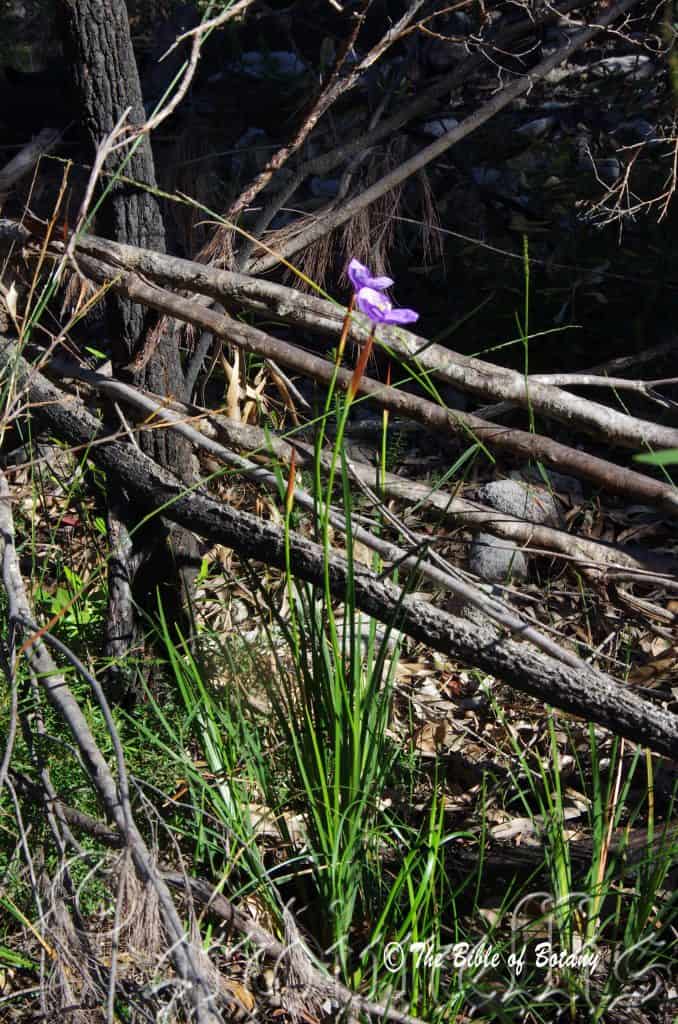
Pyriformis Floral Reserve Woolgoolga – Nana Glen NSW
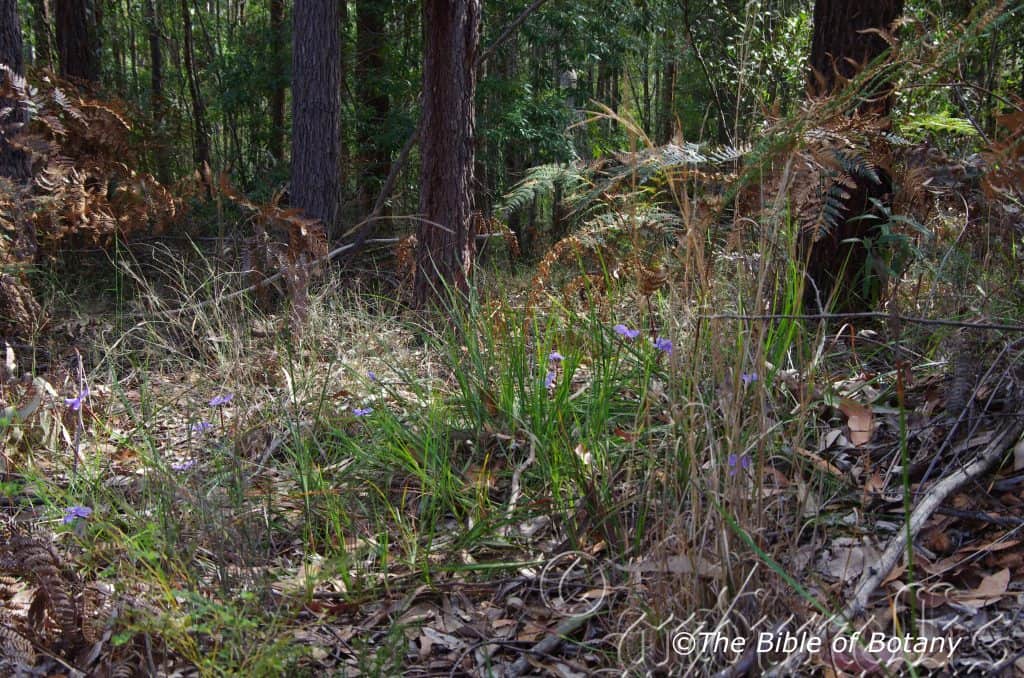
Author’s Garden The Pinnacles NSW
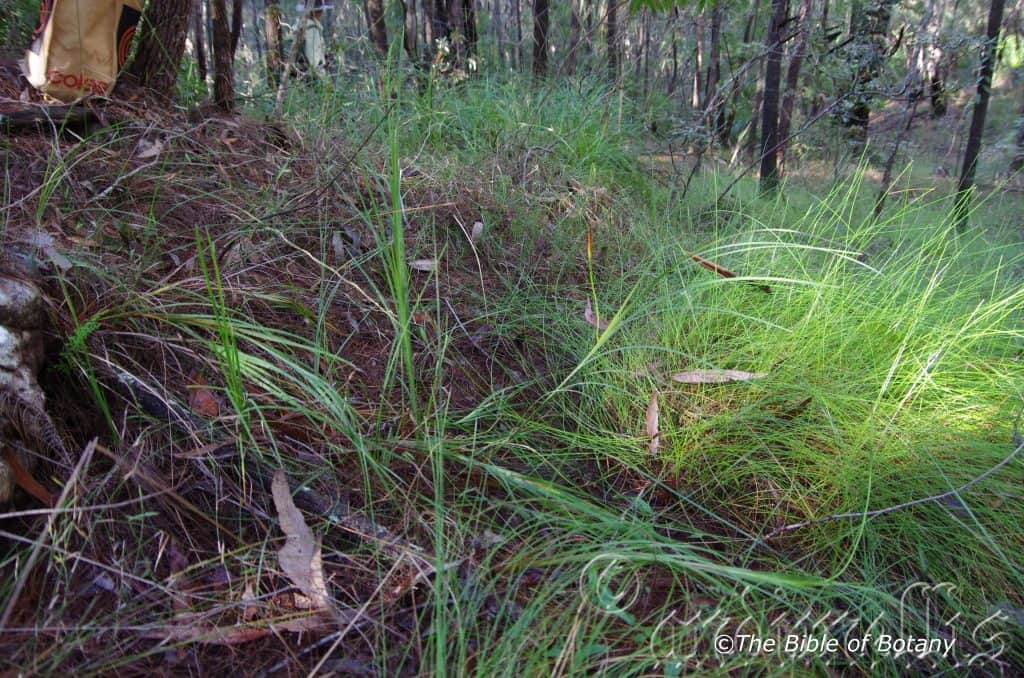
Author’s Garden The Pinnacles NSW
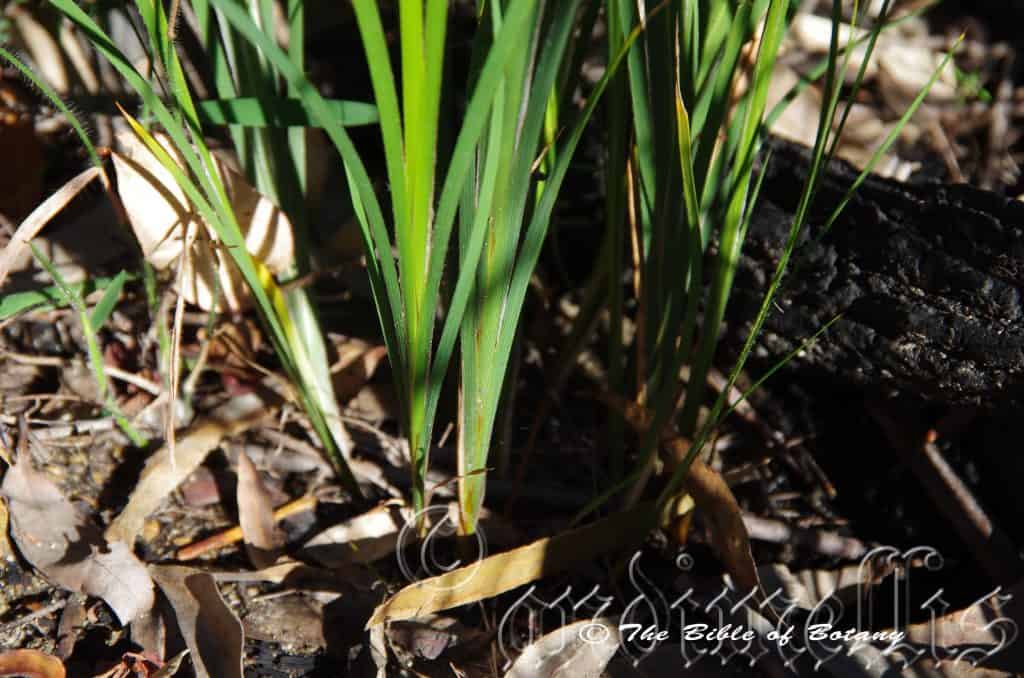
Pyriformis Floral Reserve Woolgoolga – Nana Glen NSW
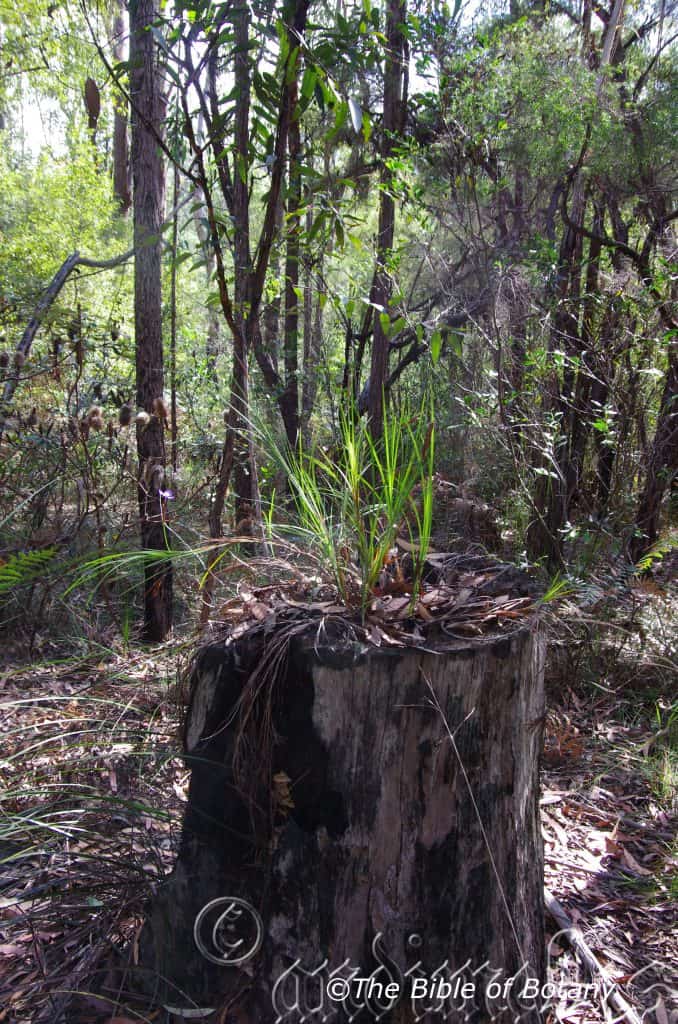
Author’s Garden The Pinnacles NSW
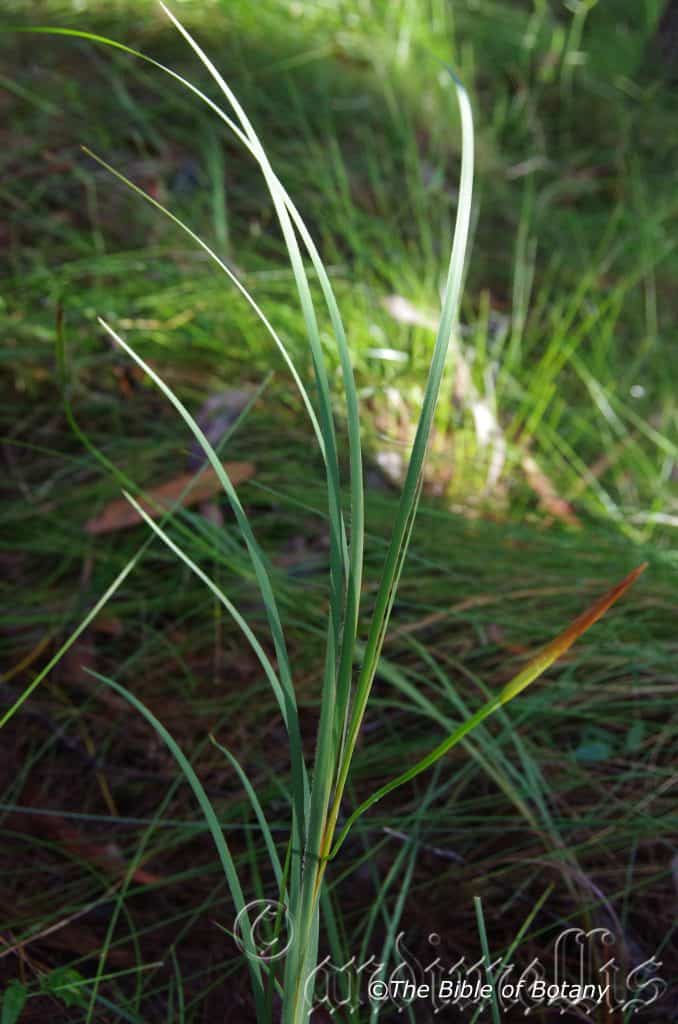
The Pinnacles NSW
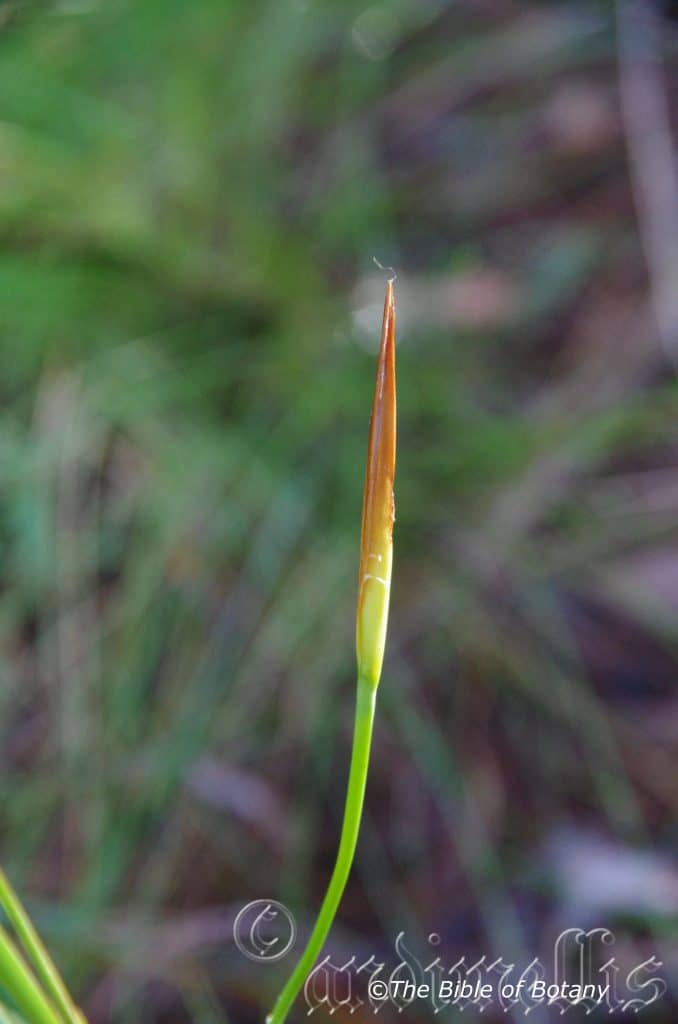
The Pinnacles NSW
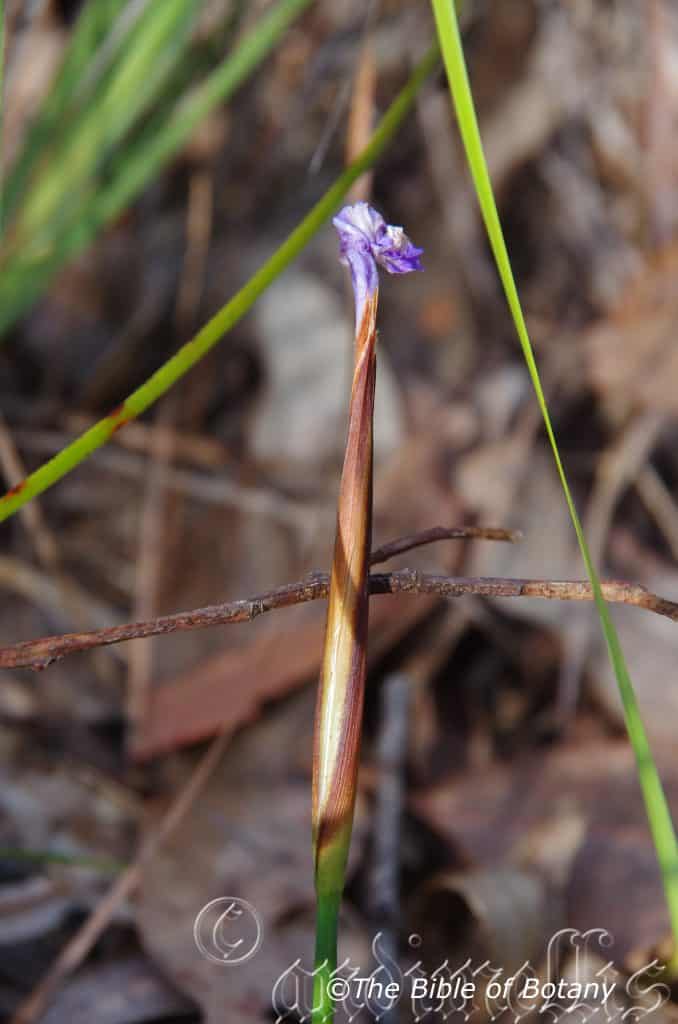
Author’s Garden The Pinnacles NSW
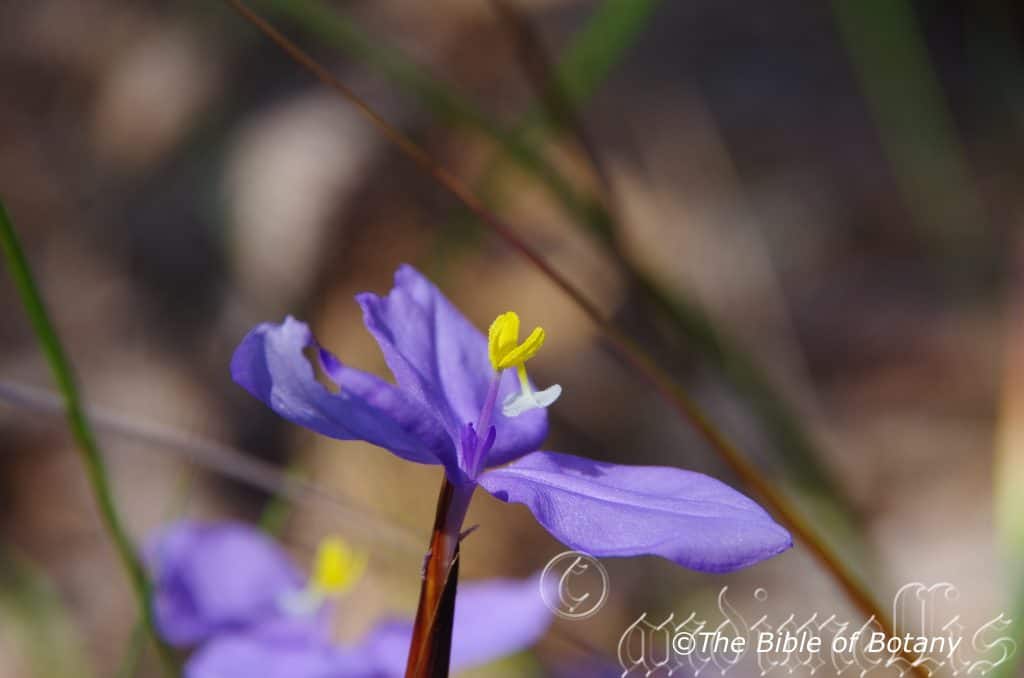
Author’s Garden The Pinnacles NSW
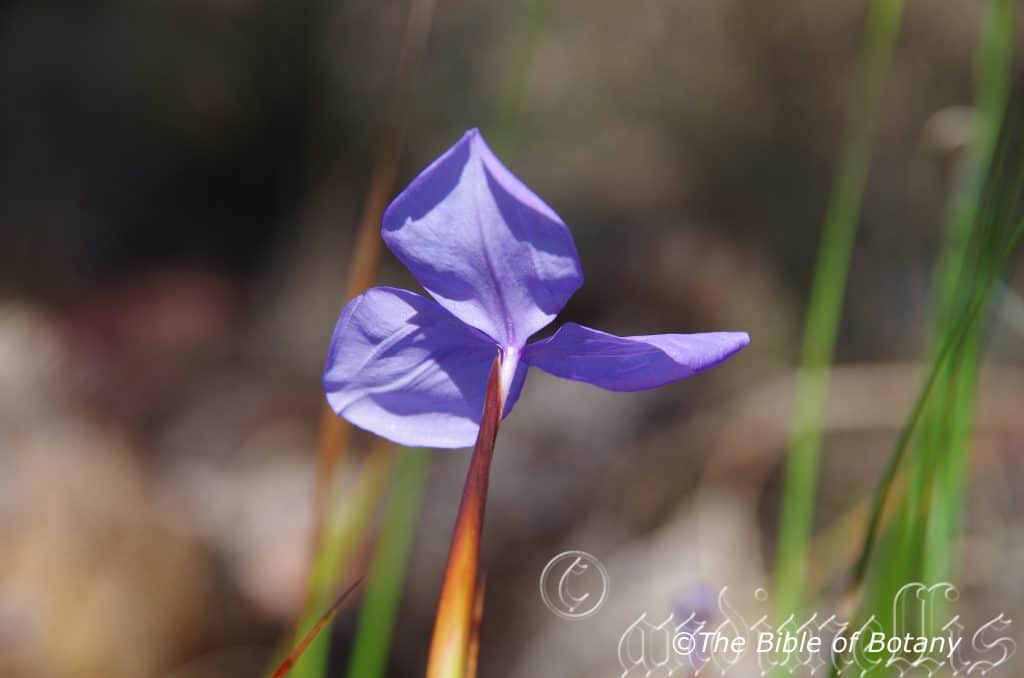
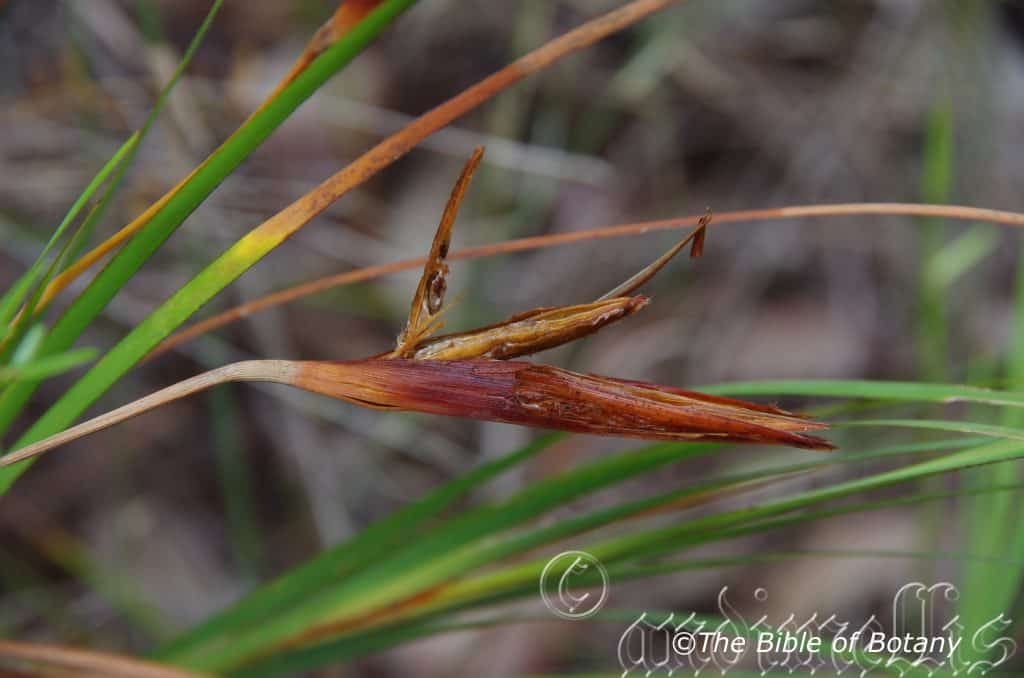
Author’s Garden The Pinnacles NSW
Patersonia glabrata
Classification:
Unranked: Monocots
Order: Asparagales
Family: Iridaceae
Subfamily: Patersoniodeae
Genus: Is named in honour of William Paterson; 1755-1810, who was a British governor and founder of Launceston and botanical collector.
Species: From Glabrum, which is Latin for glabrous or smooth. It refers to structures or organs which have no hairs or scales.
Sub species:
Common Name: Purple Flag or Bugalbi.
Distribution:
Patersonia glabrata is found in several disjunct populations, south from Carringun National Park in far north Queensland to Wilson’s Promontory in southern Victoria. It is found on and east of the Great Dividing Range to the coast.
https://avh.ala.org.au/occurrences/search?taxa=Patersonia+glabrata#tab_mapView
Habitat Aspect Climate:
Patersonia glabrata prefers dappled shade to full sun. It grows in and along creeks alluvial plains in most types of open moist heaths behind the frontal dunes or mountain heaths. The altitude ranges from 5 meters ASL to 850 meters ASL.
The temperatures range from minus 5 degrees in August to 38 degrees in January.
The rainfalls range from lows of 900mm to an average of 2800mm.
Soil requirements:
Patersonia glabrata prefers sandy loams to light fatty clays with a high proportion of leaf litter. The soils are usually derived from decomposed basalts, sandstones, shales or granites which form alluvial flats. The soils pH ranges from 5pH to 6pH. It does not tolerate of waterlogged soils. Non saline soils to moderately saline soils are tolerated.
Height & Spread:
Wild Plants: 30mm to 80mm by 40mm to 100mm.
Characteristics:
Patersonia glabrata’s stems are mid-green. The plants are easily distinguished by the leaves being produced in whorls along the stems from the base.
The long cauline leaves of Patersonia glabrata are linear and measure 100mm to 600mm in length by 2mm to 5mm in width. The sheath is intact while the apex is tapering. The margins are entire and flat. It is covered in minute white to pale grey tomentose hairs near the base. The concolourous laminas are mid grass-green to mid blue-green, semi glossy to dull and glabrous. There are several very fine longitudinal veins.
At first glance Patersonia glabrata species is easily confused with Patersonia sericea however the leaf margins are devoid of the white silky pulverulent to tomentose hairs. The leaves a cauline compared to basal in Patersonia sericea.
The inflorescences of Patersonia glabrata are terminal bracts. The scapes measure 100mm to 300mm in length. The scape bracts are lanceolate to narrowly elliptical and measure 40mm to 65mm in length. The bracts are finely striated, glabrescent and covered in brown silky puberulent hairs. The margins have a 2mm to 3mm translucent rim.
The perianth tube is white at the base turning purple to deep purple blue as it approaches the apex. The perianths measure 42mm to 48mm in length. The 3 purple to deep purple blue outer tepals are ovate to orbicular and measure 20mm to 30mm in length by 16mm to 28mm in width. The 3 yellow inner tepals are lanceolate to oblong and measure 2mm to 2.5mm in length by 1.5mm to 2mm in width.
The white stamens are exserted, fused and measure 5mm to 7mm in length. The plants commence flowering When it is quite small with the flowers appearing from mid-August through to late October.
Patersonia glabrata’s fruit is a cylindrical capsule. The capsule is surrounded by the bracts and measures 20mm to 40mm in length by 9mm to 18mm in diameter. The capsules a taped at each end and turn deep d brown on ripening. The capsules dehisce into the 3 separate chambers to veal the seeds. The glossy brown seeds are attached to a white aril. They measure 3.5mm to 4mm in length. The capsules dehisce over several weeks.
Confusing Species:
Patersonia glabrata’s leaves are spirally arranged on the basal half of the stem.
Patersonia fragilis’s leaves are imbricate bracts on the basal half of the stem.
Patersonia longifolia’s the leaves are glabrous or have a single row of ciliate hairs. The scape and fruiting capsules are glabrous.
Patersonia sericea’s leaf margins are covered in long ciliate hairs. The scape and fruiting capsules are moderately to densely covered in long white or fawn sericeous hairs.
Wildlife:
Patersonia glabrata appears not to have any predators.
Cultivation:
Patersonia glabrata makes excellent rockery plants where adequate water can be maintained. It always looks green and fresh whether it is grown in part shade or full sun. It is very suitable on waterlogged acid soils. It is most suitable for small, medium and large gardens close to the coast in warm temperate, sub-tropical or cool tropical gardens. As a garden subject it will grow from 100m to 150mm in height by 70mm to 120mm in width when grown in the open. It is cold tolerant to temperatures at least as low as minus 5 degrees once established.
It is most suitable for use around swimming pools, courtyards, besides pathways, shady rockeries, along sandy clay banks or along drive ways or adjacent to natural bush gardens. Mass plantings of 5 or more plants even in small areas; really do the plants justification especially when it is in flower. Larger fish or frog ponds will benefit from Patersonia glabrata. The flowers are very powerful, when mass planted especially when the background is made up of hard lines.
If it is placed around a pool, courtyards or other confined spaces then plant them in small groups or scatter plant them for an informal natural look against large rocks and boulders their strap leaves are a great contrast. Using rocks and small boulders can make the pool or any water feature appear like an oasis. The leaves and flowers can make a great start for the larger wallum, mangrove or swamp setting or small heath gardens.
If companion plants are sought then the choice of plants to use either side is limited only by size of the area to be landscaped and the size of the other plants as they should be around 100mm to 400mm in height to emphasize the Patersonia glabrata or plant them below trees for a natural bush setting. It can be mass planted between taller shrubs to give nooks and crannies a splash of colour and vertical leaves
It is great to break up horizontal lines along driveways. It can be used to great affect when a dry creek bed is the theme by using them to mark out the banks. They can be used to stabilize banks along creeks and streams or to help soak up water in wet areas.
Propagation:
Seeds: Patersonia glabrata seeds can be sown directly into a seed raising mix. Cover the seeds with 5mm to 10mm of fine weed free mulch and keep moist. Place the tray in a warm sunny position. When the seedlings are 30mm to 50mm tall, prick them out and plant them into 50mm native tubes using a good organic mix.
Once the seedlings ach 100mm to 150mm in height they can be planted out into their permanent position.
Division: Division is usually a good method to grow small numbers of plants which mature very quickly however Patersonia are slow to re-establish themselves once disturbed. When growing from divisions move the plant from the soil and cut it into 3 or 4 equal parts, first down the middle then halve those sections again if the plant is large enough to handle a further division. Remove unwanted dead leaves and any old small clumps that look weak or dead. Plants can be divided further but ensure each division has several strong shoot and healthy rhizomes attached to the tuff. Replant them ensuring the soil is at the same level as before. Cut the leaves back to about 100mm in length then give a good soaking with our commended native organic fertilizers. New shoots will appear within two weeks.
Fertilize using seaweed, fish emulsion or organic chicken pellets soaked in water on an alternate basis. Fertilize every two months until the plants are established then twice annually in early September and March to maintain better health, vitality and flowering.
Further Comments from Readers:
Hi reader, it seems you use The Bible of Botany a lot. That’s great as we have great pleasure in bringing it to you! It’s a little awkward for us to ask, but our first aim is to purchase land approximately 1,600 hectares to link several parcels of N.P. into one at The Pinnacles NSW Australia, but we need your help. We’re not salespeople. We’re amateur botanists who have dedicated over 30 years to saving the environment in a practical way. We depend on donations to reach our goal. If you donate just $5, the price of your coffee this Sunday, We can help to keep the planet alive in a real way and continue to bring you regular updates and features on Australian plants all in one Botanical Bible. Any support is greatly appreciated. Thank you.
In the spirit of reconciliation we acknowledge the Bundjalung, Gumbaynggirr and Yaegl and all aboriginal nations throughout Australia and their connections to land, sea and community. We pay our respect to their Elders past, present and future for the pleasures we have gained.
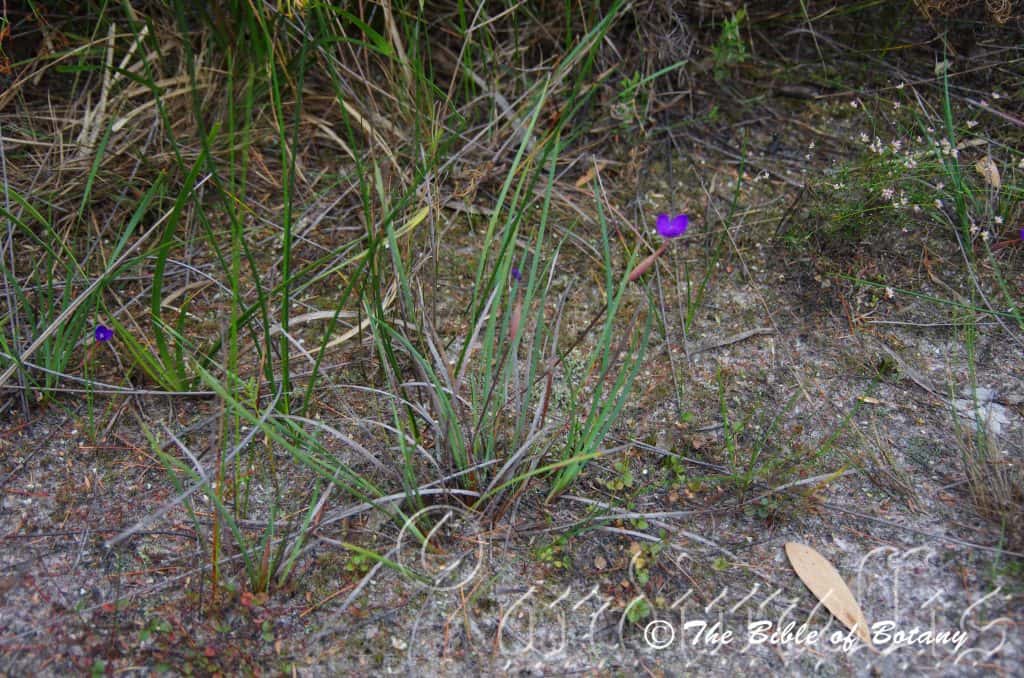
Innes Lake National Park NSW
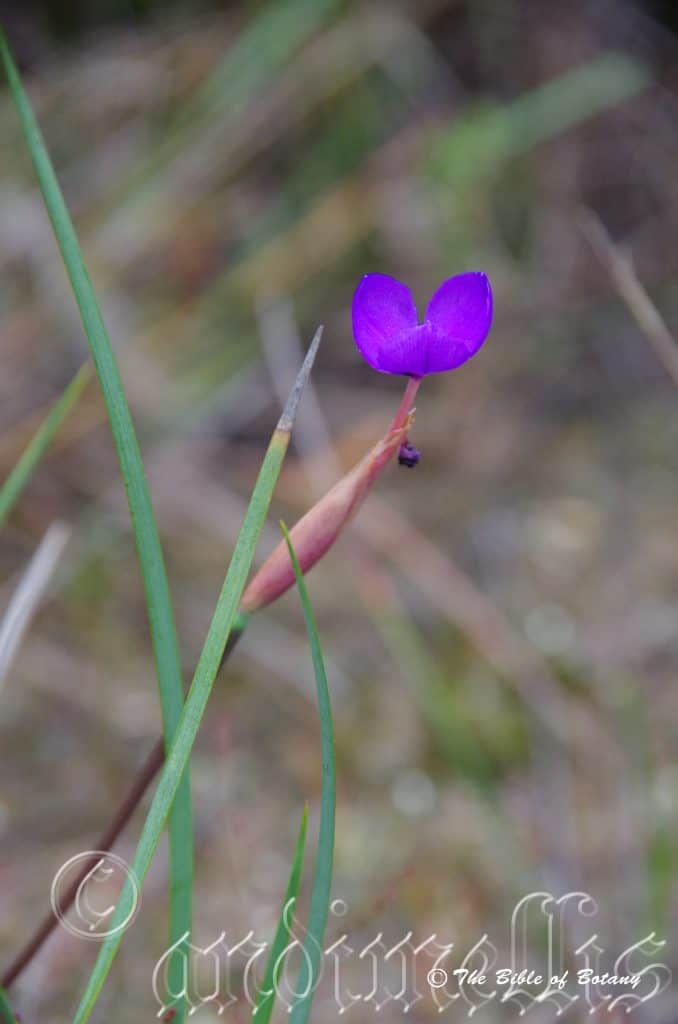
Innes Lake National Park NSW
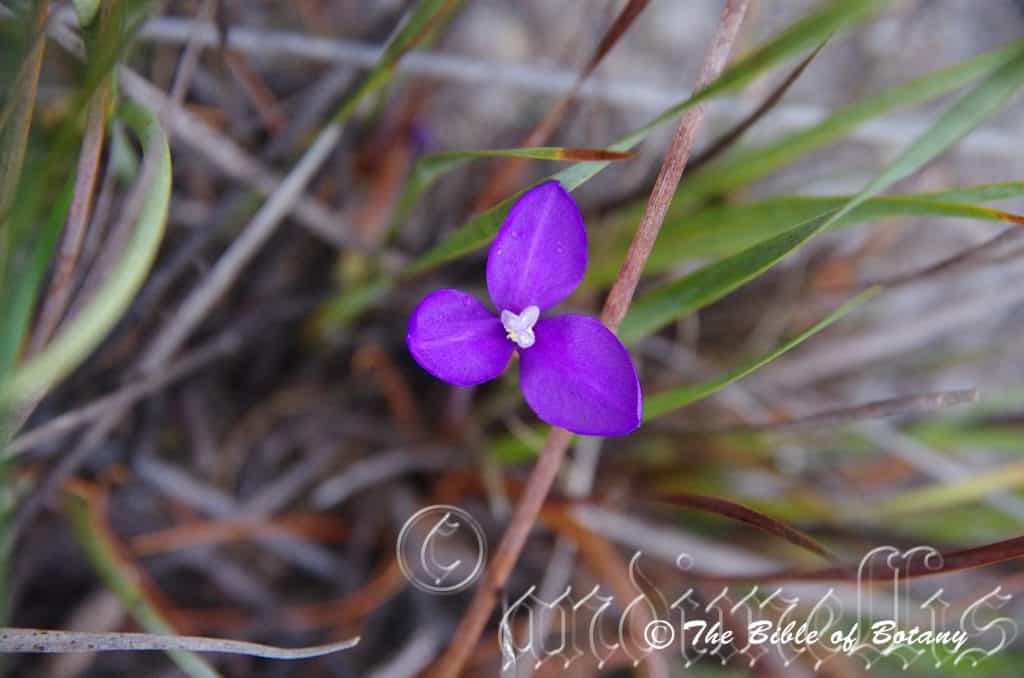
Innes Lake National Park NSW
Patersonia longifolia
Classification:
Unranked: Monocots
Order: Asparagales
Family: Iridaceae
Subfamily: Patersoniodeae
Genus: Is named in honour of William Paterson; 1755-1810, who was a British governor and founder of Launceston and botanical collector.
Species: From Longitia/Longus, which is Latin for long in length and Folium, which is Latin for foliage. It refers to leaves, which are long and strap like.
Sub species:
Common Name: Purple Flag.
Distribution:
Patersonia longifolia is found south from Musswellbrook in central Coastal New South Wales to the Upper Greenoa River in north eastern Victoria. It is found on and east of the Great Dividing Range except for an isolated population near Barryenie.
I have also found the plant growing between North Haven and Port Macquarie and Nambucca Heads in close association with Patersonia sericea.
https://avh.ala.org.au/occurrences/search?taxa=Patersonia+glabrata#tab_mapView
Habitat Aspect Climate:
Patersonia longifolia prefers dappled shade to full sun. It grows in dry open woodlands and dry forests close to the coast and adjacent ranges in moist heaths behind the frontal dunes or mountain heaths. The altitude ranges from 5 meters ASL to 1060 meters ASL.
The temperatures range from minus 5 degrees in August to 38 degrees in January.
The rainfalls range from lows of 1000mm to an average of 1600mm.
Soil requirements:
Patersonia longifolia prefers sandy loams to light fatty clays with a high proportion of leaf litter. The soils are usually derived from decomposed sandstones, granites or accumulated beach sands. The soils pH ranges from 5pH to 6pH. It does not tolerate of waterlogged soils. Non saline soils to moderately saline soils are tolerated.
Height & Spread:
Wild Plants: 100mm to 600mm by 100mm to 500mm.
Characteristics:
Patersonia longifolia grows as a small tuft lily. The leaves being clustered along the short stems near the base.
The long, strap like leaves of Patersonia longifolia are linear sword shaped and measure 200mm to 500mm in length by 1mm to 2mm in width. The base is cauline, intact while the apex tapers to a point. The concolourous laminas are mid blue-green to mid bluish, dull and glabrous. The laminas are biconvex while the margins an entire with a single row of 1mm to 2mm white ciliate hairs or are glabrous.
The inflorescences of Patersonia longifolia are terminal bracts on 120mm to 160mm scapes. The scapes measure 100mm to 300mm in length. The lanceolate to ovate spathe bracts are veined, white-silky to glabrescent, dark brown to blackish with 1mm to 2mm wide, scarious, brown margins. The bracts measure 20mm to 35mm in length. The bracts are finely striated, glabrescent and sparsely to moderately covered in brown silky pubescent hairs. The margins have a 2mm to 3mm translucent rim.
The perianth tube is pinkish-purple at the base turning purple to deep purple-blue as it approaches the apex. The perianths measure 26mm to 30mm in length. The 3 purple to deep purple-blue outer tepals are broad ovate to orbicular with an obtuse apex. The outer tepals measure 20mm to 30mm in length by 20mm to 25mm in width. The 3 inner tepals are ovate and measure 1mm to 2mm in length by 0.8mm to 1.8mm in width.
The yellow stamens are exerted, fused for two thirds of their length and measure 4mm to 6mm in length. The ovary is covered in white puberulent hairs. The white style is emerges from the center of the filament tube and measures 9mm to 12mm in length. The trilobed stigma margins a covered in white ciliate hairs. The flowers appear from mid-August to late December or at times early January.
Patersonia longifolia’s fruits are cylindrical capsules. The capsule is surrounded by the bracts and measures 18mm to 26mm in length by 6mm to 7.5mm in diameter. The capsules are taped at each end and turn deep reddish-brown then deep grey When ripe. The capsules dehisce into the 3 separate chambers to veal the seeds.
The cylindrical waxy brown seeds are ridged and are covered in large shallow cavities. The aril is absent on the seeds that measure 2.4mm to 3mm in length. The capsules dehisce over several weeks.
Confusing Species:
Patersonia longifolia’s the leaves are glabrous or have a single row of ciliate hairs. The scape and fruiting capsules are glabrous.
Patersonia fragilis’s leaves are imbricate bracts on the basal half of the stem.
Patersonia glabrata’s leaves are spirally arranged on the basal half of the stem.
Patersonia sericea’s the leaf margins are covered in long ciliate hairs. The scape and fruiting capsules are moderately to densely covered in long white or fawn sericeous hairs.
Wildlife:
Patersonia longifolia wildlife is unknown to the author.
Cultivation:
Patersonia longifolia makes excellent rockery plants When adequate water can be maintained. They always look green and fresh whether it is grown in part shade or full sun. It is very suitable for waterlogged acid soils. It is most suitable for small, medium and large gardens close to the coast in warm temperate, subtropical or cool tropical gardens. As a garden subject it grows from 500m to 600mm by 200mm to 350mm wide when grown in the open. It is cold tolerant to temperatures at least as low as minus 5 degrees once established.
It is most suitable for use around swimming pools, courtyards, besides pathways, shady rockeries, along sandy clay banks or along drive ways or adjacent to natural bush gardens. Mass plantings of 5 or more plants even in small areas; ally do the plants justification especially when it is in flower. Larger fish or frog ponds will benefit from Patersonia glabrata. Mass plantings of the flowers are very powerful especially When the background is made up of hard lines.
If it is a placed around a pool, courtyards or other confined spaces then plant it in small groups or scatter plant them for a more informal natural look against large rocks and boulders their strap leaves are a great contrast. Using rocks and small boulders can make the pool or any water feature appear like an oasis. The leaves and flowers can make a great start for the larger wallum, mangrove or swamp setting or small heath gardens.
If companion plants are sought then the choice of plants to use either side is limited only by size of the area to be landscaped and the size of the other plants as they should be no more than 400mm in height to emphasize the Patersonia glabrata or plant them below trees for a natural bush setting. They can be mass planted between taller shrubs to give nooks and crannies a splash of colour and vertical leaves
It is great to break up horizontal lines along driveways. They can be used to great affect when a dry creek bed is the theme by using them to mark out the banks. They can be used to stabilize banks along creeks and streams or to help soak up water in wet areas.
Propagation:
Seeds: Patersonia longifolia seeds can be sown directly into a seed raising mix. Cover the seeds with 5mm to 10mm of fine weed free mulch and keep moist. Place the tray in a warm sunny position. When the seedlings are 30mm to 50mm tall, prick them out and plant them into 50mm native tubes using a good organic mix.
Once the seedlings ach 100mm to 150mm in height they can be planted out into their permanent position.
Division:
Division is usually a good method to grow small numbers of plants which mature very quickly however Patersonia are slow to re-establish themselves once disturbed. When growing from divisions move the plant from the soil and cut it into 3 or 4 equal parts, first down the middle then halve those sections again if the plant is large enough to handle a further division. Remove unwanted dead leaves and any old small clumps that look weak or dead. Plants can be divided further but ensure each division has several strong shoot and healthy rhizomes attached to the tuff. Replant them ensuring the soil is at the same level as before. Cut the leaves back to about 100mm in length then give a good soaking with our commended native organic fertilizers. New shoots will appear within two weeks.
Fertilize using seaweed, fish emulsion or organic chicken pellets soaked in water on an alternate basis. Fertilize every two months until the plants are established then twice annually in early September and March to maintain better health, vitality and flowering.
Further Comments from Readers:
Hi reader, it seems you use The Bible of Botany a lot. That’s great as we have great pleasure in bringing it to you! It’s a little awkward for us to ask, but our first aim is to purchase land approximately 1,600 hectares to link several parcels of N.P. into one at The Pinnacles NSW Australia, but we need your help. We’re not salespeople. We’re amateur botanists who have dedicated over 30 years to saving the environment in a practical way. We depend on donations to reach our goal. If you donate just $5, the price of your coffee this Sunday, We can help to keep the planet alive in a real way and continue to bring you regular updates and features on Australian plants all in one Botanical Bible. Any support is greatly appreciated. Thank you.
In the spirit of reconciliation we acknowledge the Bundjalung, Gumbaynggirr and Yaegl and all aboriginal nations throughout Australia and their connections to land, sea and community. We pay our respect to their Elders past, present and future for the pleasures we have gained.
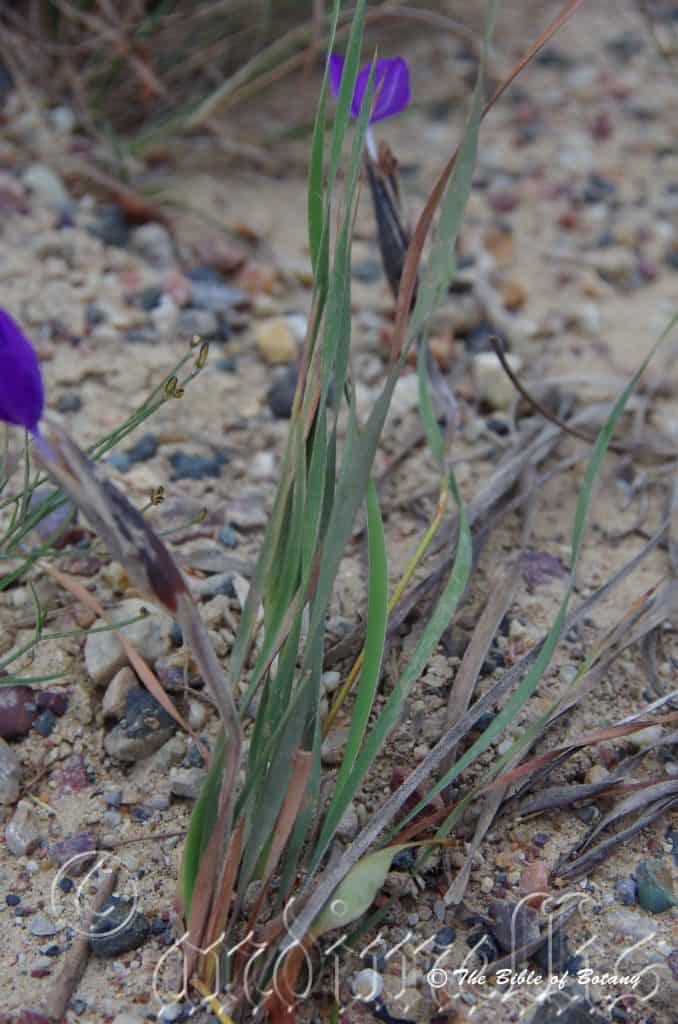
Innes Lake National Park NSW
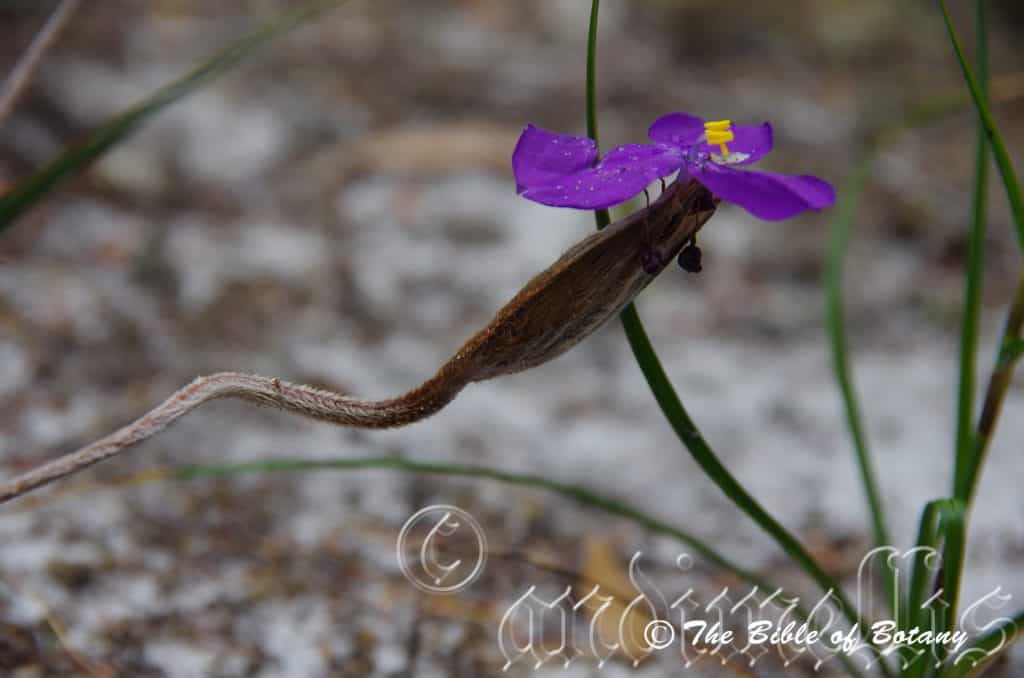
Innes Lake National Park NSW
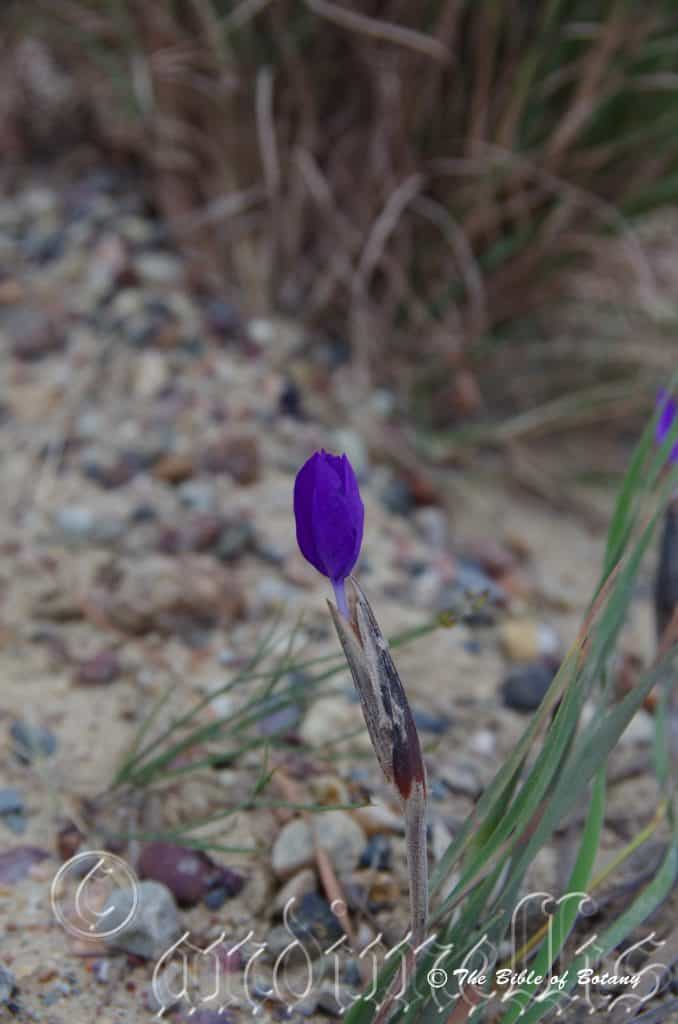
Innes Lake National Park NSW
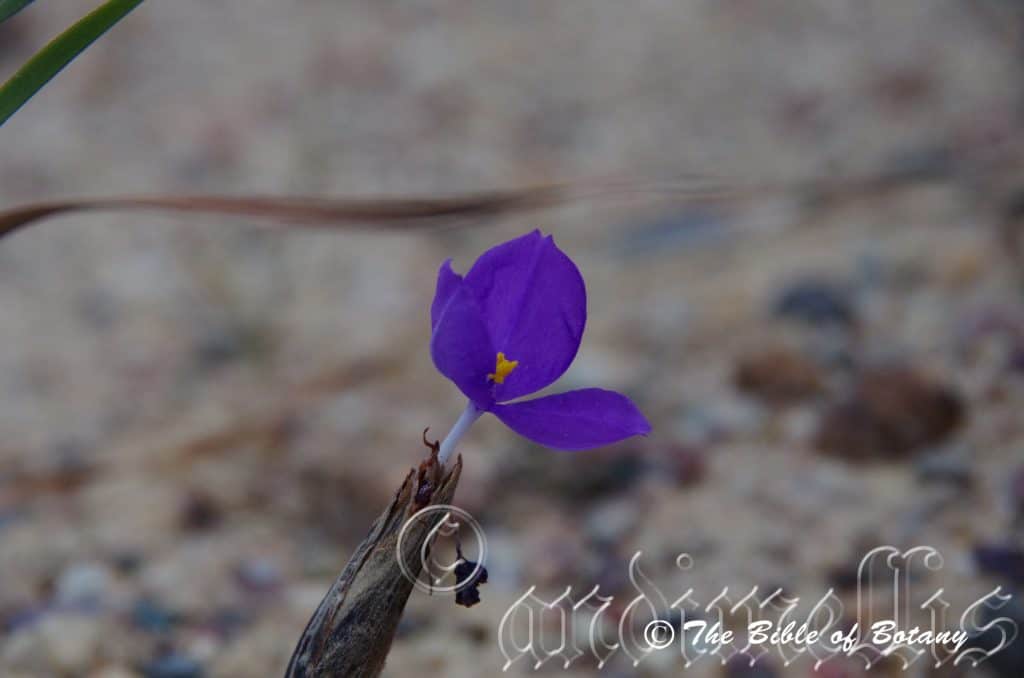
Innes Lake National Park NSW
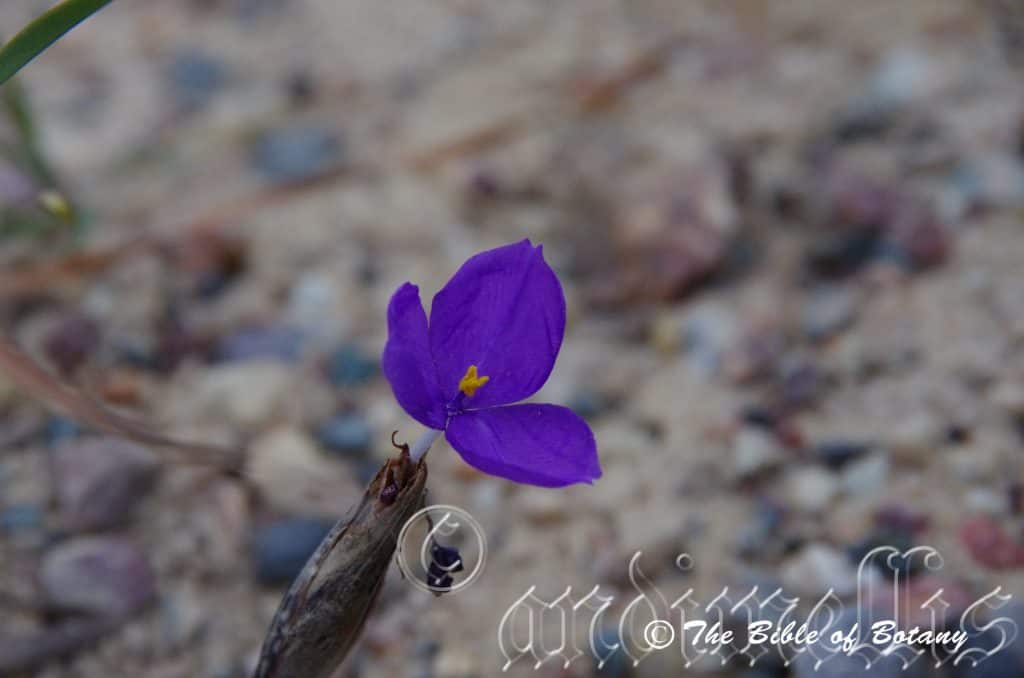
Innes Lake National Park NSW
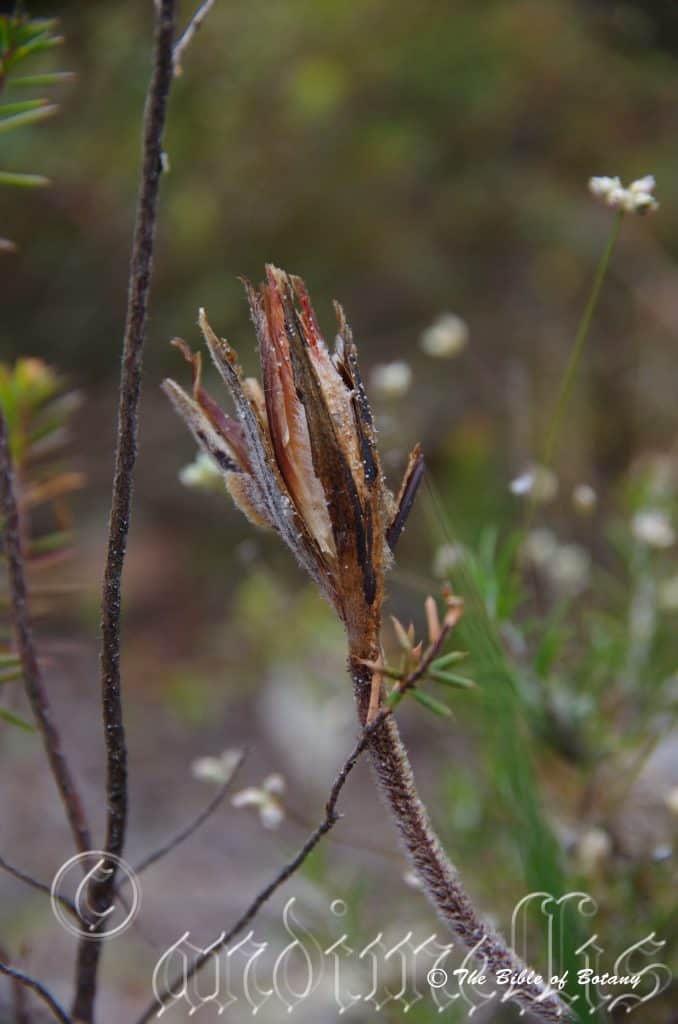
Innes Lake National Park NSW
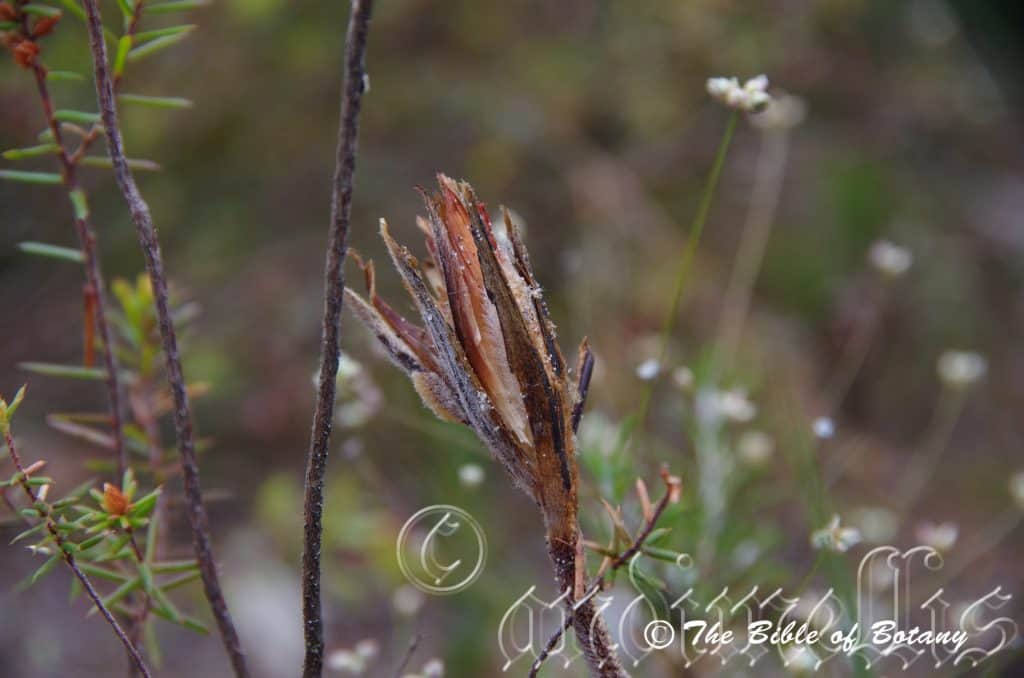
Innes Lake National Park NSW
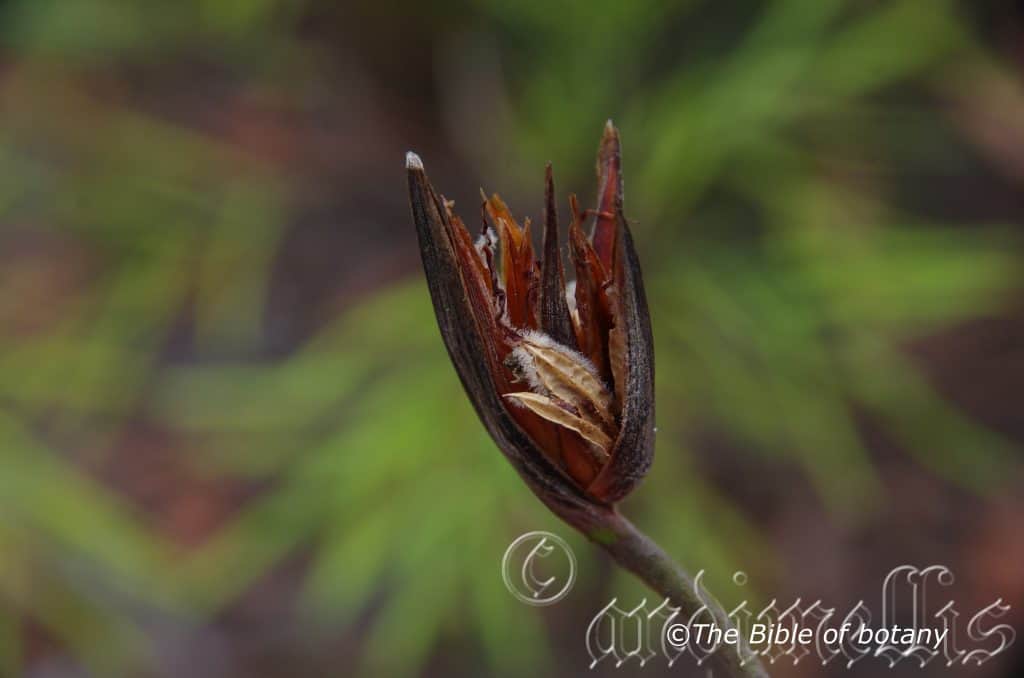
Author’s Garden The Pinnacles NSW
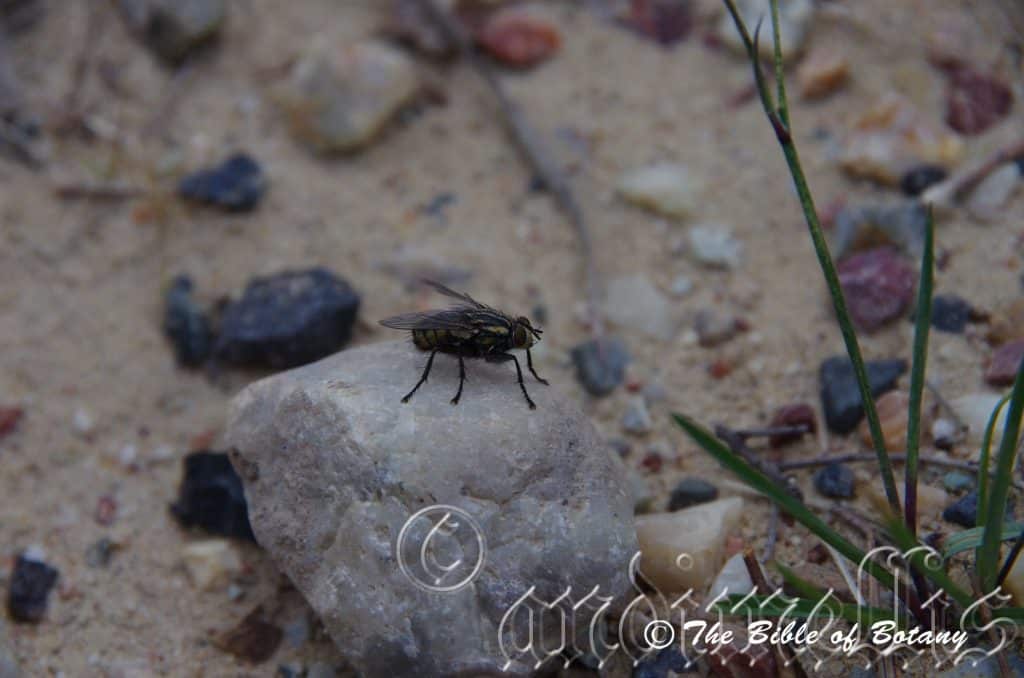
Seen Eating Nectar Innes Lake National Park NSW
Patersonia sericea
Classification:
Unranked: Monocots
Order: Asparagales
Family: Iridaceae
Subfamily: Patersoniodeae
Genus: Is named in honour of William Paterson; 1755-1810, who was a British governor and founder of Launceston and botanical collector.
Species: FromSêres, which is Ancient Greek or Sēricum, which is Old Latin for silky and derived from the Ancient Chinese word Si/Ser 絲 or the modern script for Si/Ser 丝 for silk. Sêres also has the meaning from the Ancient Greek for the land of the Chinese referring to China as the land of silk. It refers to structures or organs, which are covered in soft, fine, silky hairs.
Sub species:
Common Name: Purple Iris or Silky Purple Flag.
Distribution:
Patersonia sericea is found from south of Bowen in central coastal Queensland to Croajingolong National Park in north western Victorian. It is mainly found on or east of the Great Dividing Range.
https://avh.ala.org.au/occurrences/search?taxa=Patersonia+sericea#tab_mapView
Habitat Aspect Climate:
Patersonia sericea prefer dappled shade to full sun. It grows in open woodlands, coastal heaths and mountain heaths. The altitude ranges from 5 meters ASL to 900 meters ASL.
The temperatures range from minus 5 degrees in August to 38 degrees in January.
The rainfalls range from lows of 800mm to an average of 2000mm.
Soil requirements:
Patersonia sericea prefers sandy loams to light gritty clays with a generous covering of heath litter. The soils are usually derived from decomposed basalts, sandstones, shale and granites which form alluvial flats. The soils pH ranges from 5pH to 6pH. It does not tolerate of waterlogged soils. Non saline soils to moderately saline soils are tolerated.
Height & Spread:
Wild Plants: 30mm to 60mm by 40mm to 80mm.
Characteristics:
Patersonia sericea grows as a small tuft lily with mid green basal stems. The plants are easily distinguished by the leaves being produced in whorls along the stems from the base.
The long basal leaves of Patersonia sericea are linear and measure 200mm to 600mm in length by 2mm to 6mm in width. The sheath is intact while the apex is tapering. The margins are entire and flat. It is densely covered in white to pale grey pubescent hairs which become tomentose near the base. The concolourous laminas are mid grass-green to mid blue-green, semi glossy to dull and glabrous. There are several very fine longitudinal veins.
The inflorescences of Patersonia sericea are from terminal bracts. The scapes measure 300mm to 550mm in length. The scape bracts are ovate to lanceolate and measure 20mm to 60mm in length. The bracts are prominently striated, glabrescent and densely covered in brown silky pubescent hairs. The margins have a 1mm to 2mm deep red-brown almost black rim.
The perianth tube is white at the base turning purple to deep purple blue as it approaches the apex. The perianths measure 15mm to 30mm in length. The 3 purple to deep purple blue outer tepals are ovate to orbicular and measure 20mm to 30mm in length by 16mm to 25mm in width. The 3 yellow inner tepals are ovate and measure 2mm to 2.5mm in length by 2mm to 2.5mm in width.
The white stamens are exserted, fused for about two thirds of their length and measure 4mm to 6mm in length. The ovary is covered in white pulverulent hairs. The plants commence flowering When it is quite small with the flowers appearing from mid-August through to late October.
Patersonia sericea’s fruit is an ovoid-cylindrical capsule. The capsule is surrounded by the bracts and measure 15mm to 30mm in length by 6mm to 11mm in diameter. The capsule is tapered at each end and turn deep red brown on ripening. The capsules dehisce into the 3 separate chambers to veal the seeds. The aril is absent around the glossy brown, pitted seeds which measure 2.5mm to 3mm in length. The capsules dehisce over several weeks.
Confusing Species:
Patersonia sericea’s the leaf margins are covered in long ciliate hairs. The scape and fruiting capsules are moderately to densely covered in long white or fawn sericeous hairs.
Patersonia fragilis’s leaves are imbricate bracts on the basal half of the stem.
Patersonia glabrata’s leaves are spirally arranged on the basal half of the stem.
Patersonia longifolia’s the leaves are glabrous or have a single row of ciliate hairs. The scape and fruiting capsules are glabrous.
Wildlife:
Patersonia sericea’s flowers support the local bee colonies of Tetragonula carbonaria and the lone Blue banded bee Amegilla cingulate.
Cultivation:
Patersonia sericea makes excellent rockery plants when adequate water can be maintained. They always look green and fresh whether it is grown in part shade or full sun. It is most suitable for small, medium and large gardens close to the coast in warm temperate, sub-tropical or cool tropical gardens. As garden subjects it grows from 50m to 80mm by 70mm to 120mm wide when grown in the open. It is cold tolerant to temperatures at least as low as minus 5 degrees once established.
It is most suitable for use around swimming pools, courtyards, besides pathways, shady rockeries, along sandy clay banks or along drive ways or adjacent to natural bush gardens. Mass plantings of 5 or more plants even in small areas; really do the plants justification especially when it is in flower. Larger fish or frog ponds will benefit from Patersonia sericea.
If it is placed around pools, courtyards or other confined spaces then plant them in small groups or scatter plant them for an informal natural look against large rocks and boulders their strap leaves are a great contrast. Using rocks and small boulders can make the pool or any water feature appear like an oasis. The leaves and flowers can make a great start for the larger wallum, mangrove or swamp setting or small heath gardens.
If companion plants are sought then the choice of plants to use either side is limited only by size of the area to be landscaped and the size of the other plants as they should be from 100mm to 400mm in height to emphasize Patersonia sericea or plant them below trees for a natural bush setting. They can be mass planted between taller shrubs to give nooks and crannies a splash of colour and vertical leaves
It is great to break up horizontal lines along driveways. It can be used to great affect where a dry creek bed is the theme by using them to mark out the banks. It can be used to stabilize banks along rills, drainage lines or streams or to help soak up water in wet areas.
Propagation:
Seeds: Patersonia sericea seeds can be sown directly into a seed raising mix. Cover the seeds with 5mm to 10mm of fine weed free mulch and keep moist. Place the tray in a warm sunny position. When the seedlings are 30mm to 50mm tall, prick them out and plant them into 50mm native tubes using a good organic mix.
Once the seedlings reach 100mm to 150mm in height they can be planted out into their permanent position.
Division: Division is a good method to grow small numbers of plants which mature very quickly. When growing from divisions move the plant from the soil and just cut it into 3 or 4 equal parts, first down the middle then halve those sections again. Remove unwanted dead leaves and any old small clumps that look weak or dead. Plants can be divided further but ensure each division has a several strong shoots and healthy rhizomes attached to the tuft. Replant and ensure the soil is at the same level as before. Cut the leaves back to about 100mm in length then give a good soaking with our commended native organic fertilizers. New shoots will appear within two weeks.
Fertilize using seaweed, fish emulsion or organic chicken pellets soaked in water on an alternate basis. Fertilize every two months until the plants are established then twice annually in early September and March to maintain better health, vitality and flowering.
Further Comments from Readers:
Hi reader, it seems you use The Bible of Botany a lot. That’s great as we have great pleasure in bringing it to you! It’s a little awkward for us to ask, but our first aim is to purchase land approximately 1,600 hectares to link several parcels of N.P. into one at The Pinnacles NSW Australia, but we need your help. We’re not salespeople. We’re amateur botanists who have dedicated over 30 years to saving the environment in a practical way. We depend on donations to reach our goal. If you donate just $5, the price of your coffee this Sunday, We can help to keep the planet alive in a real way and continue to bring you regular updates and features on Australian plants all in one Botanical Bible. Any support is greatly appreciated. Thank you.
In the spirit of reconciliation we acknowledge the Bundjalung, Gumbaynggirr and Yaegl and all aboriginal nations throughout Australia and their connections to land, sea and community. We pay our respect to their Elders past, present and future for the pleasures we have gained.
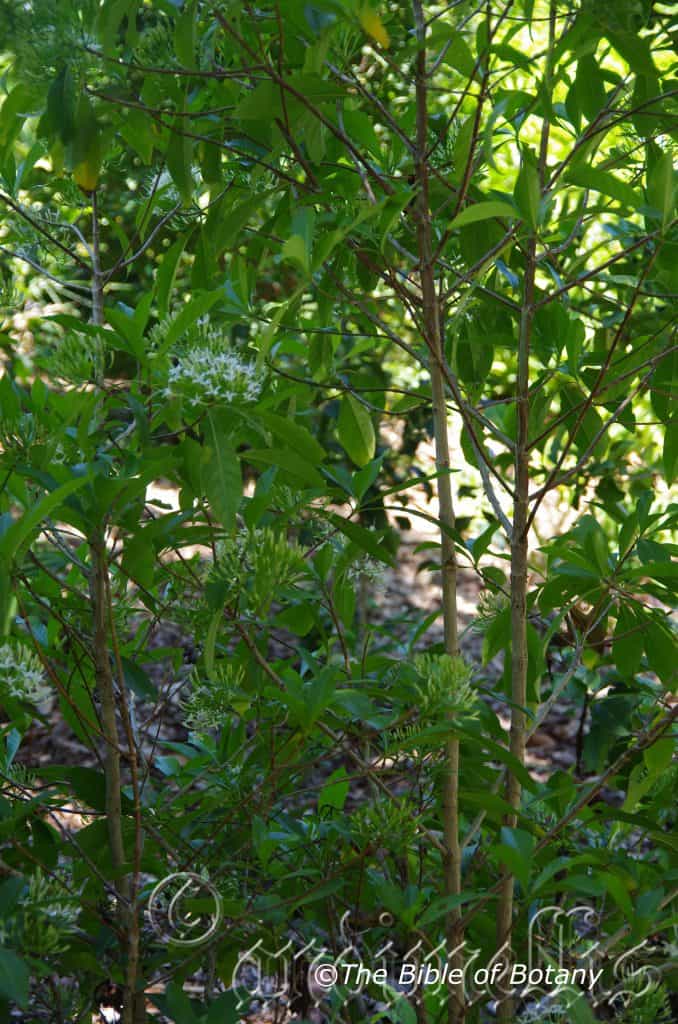
Brisbane River South Bank Qld.
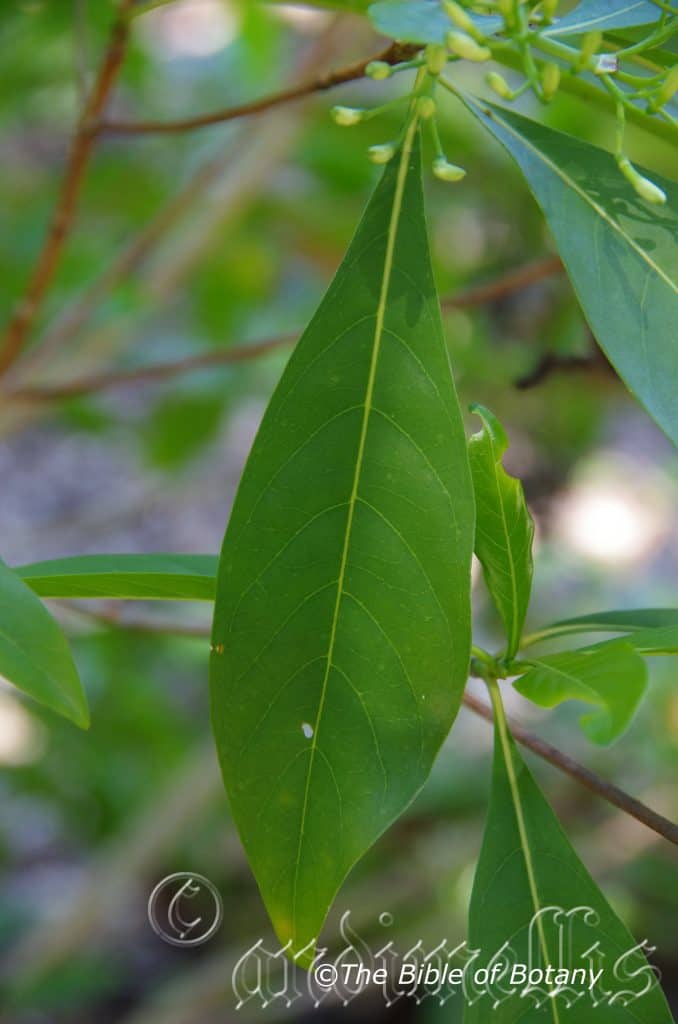
Brisbane River South Bank Qld.
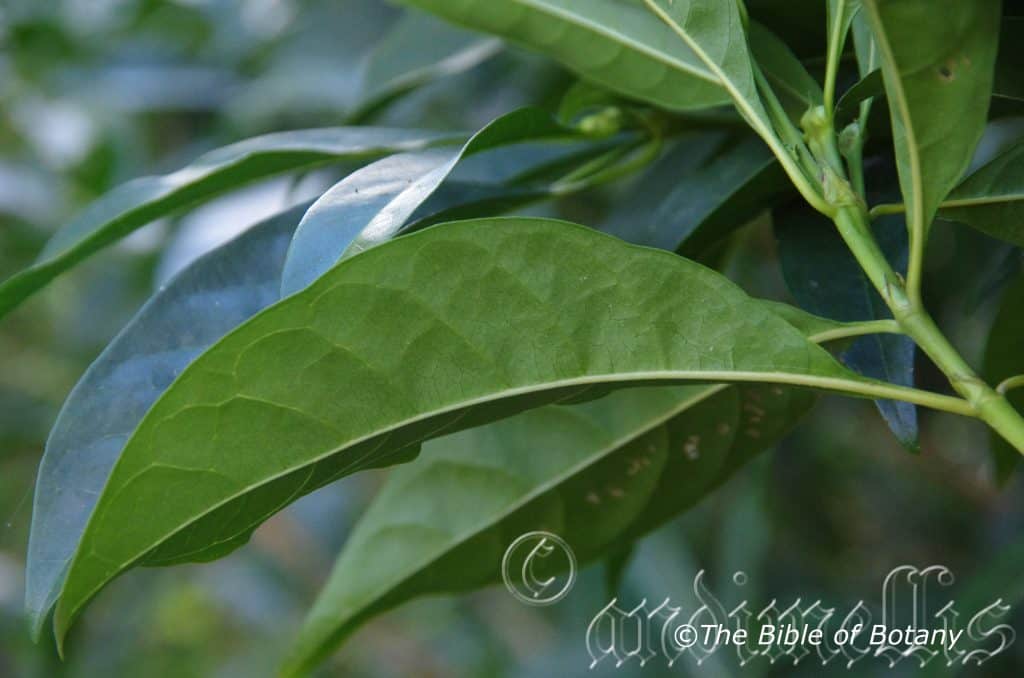
Brisbane River South Bank Qld.
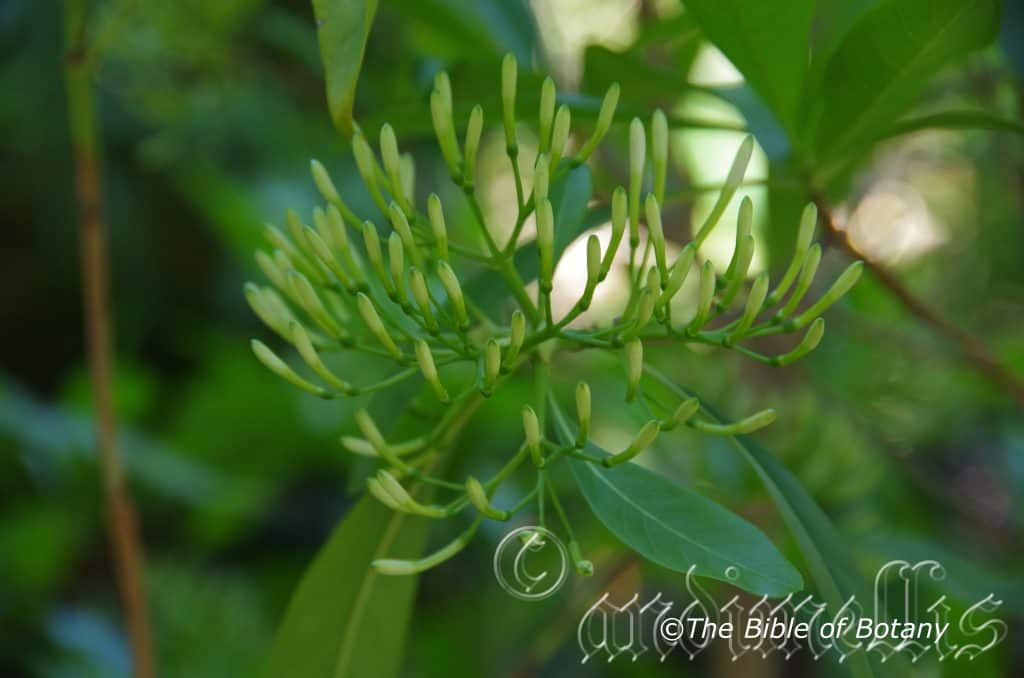
Brisbane River South Bank Qld.
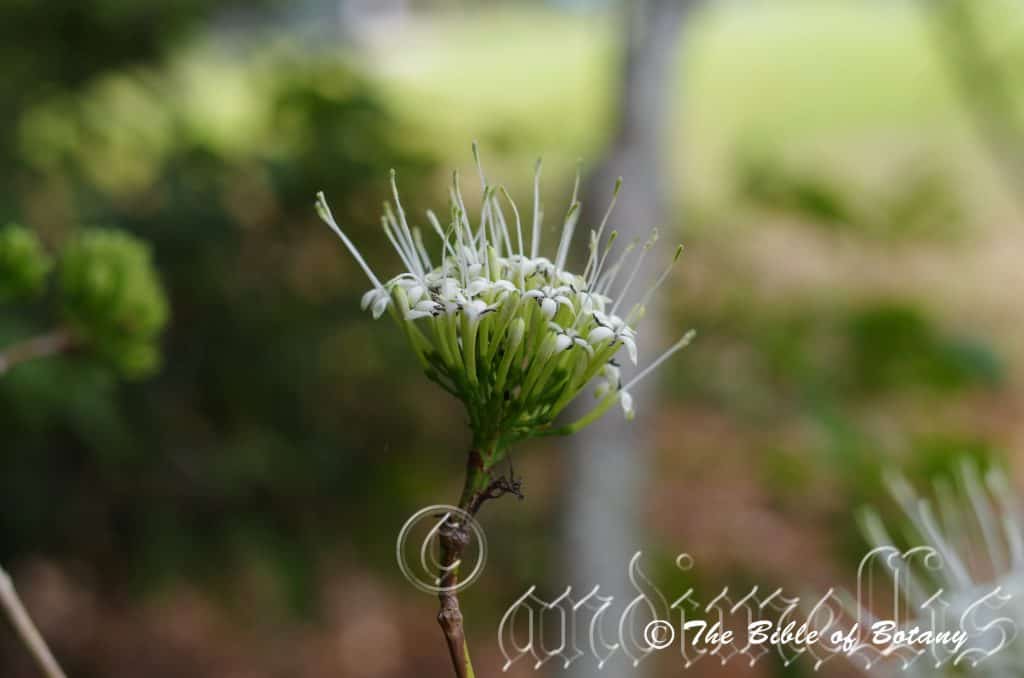
Mitchelton Qld.
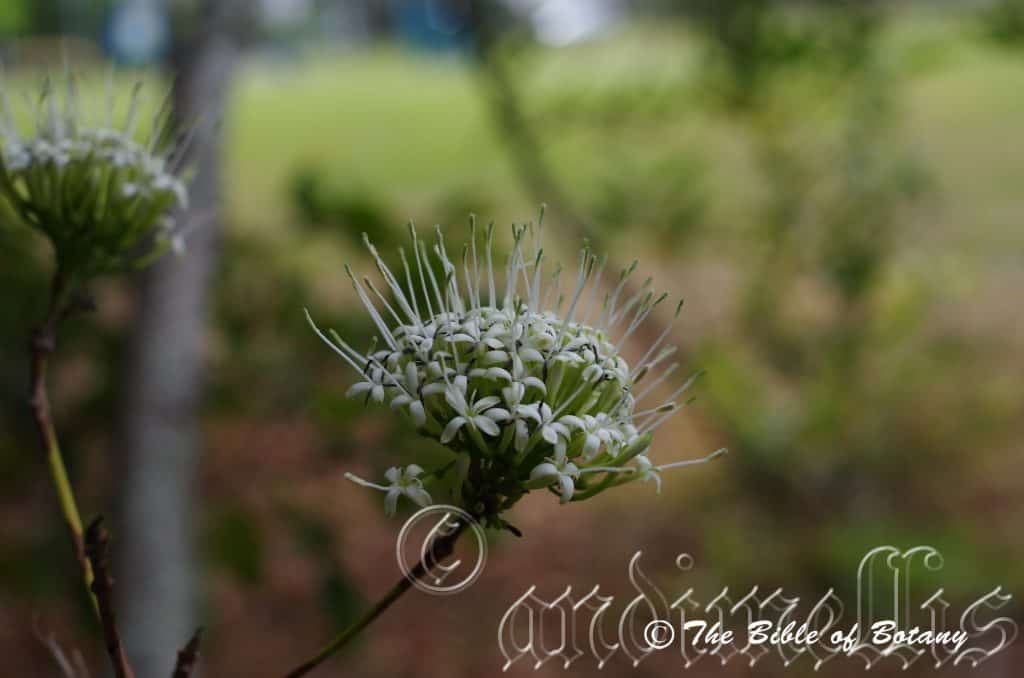
Mitchelton Qld.
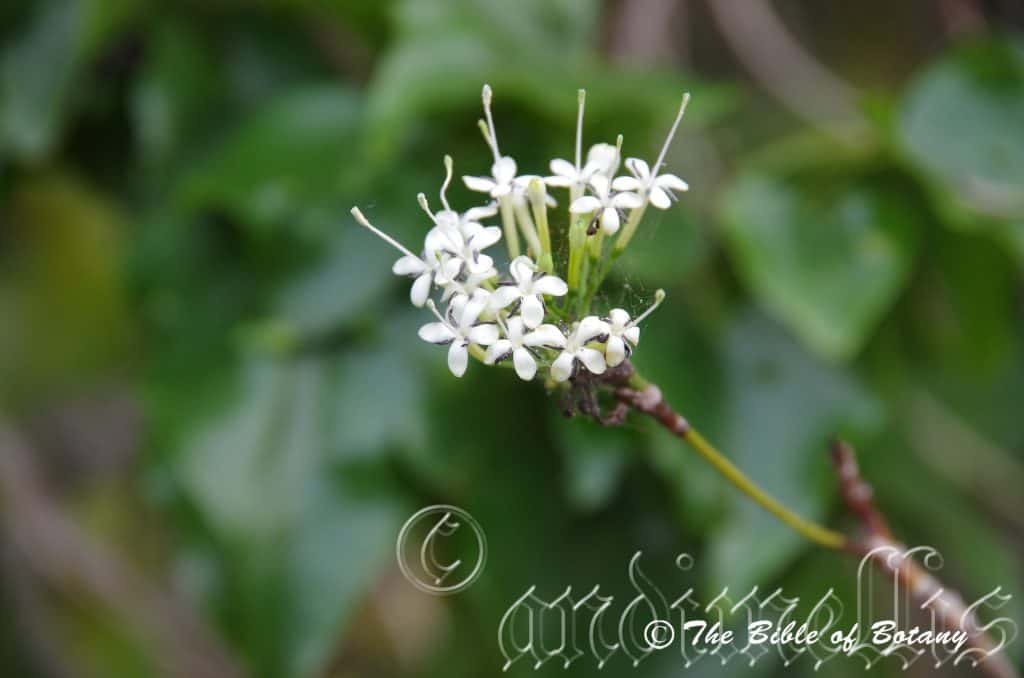
Cooparoo Qld.
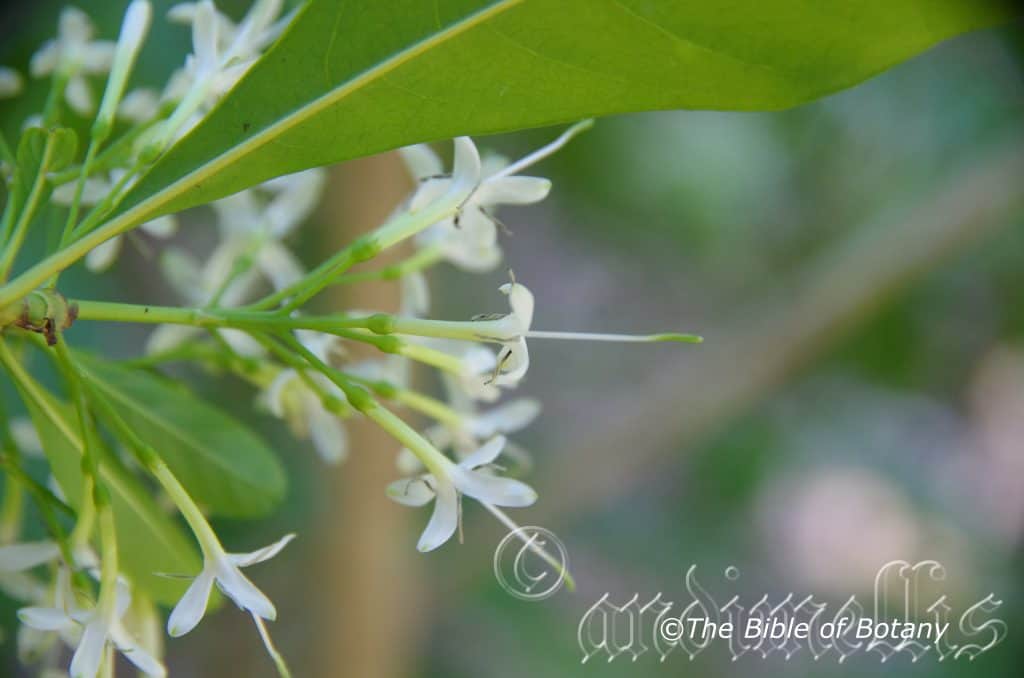
Brisbane River South Bank Qld.
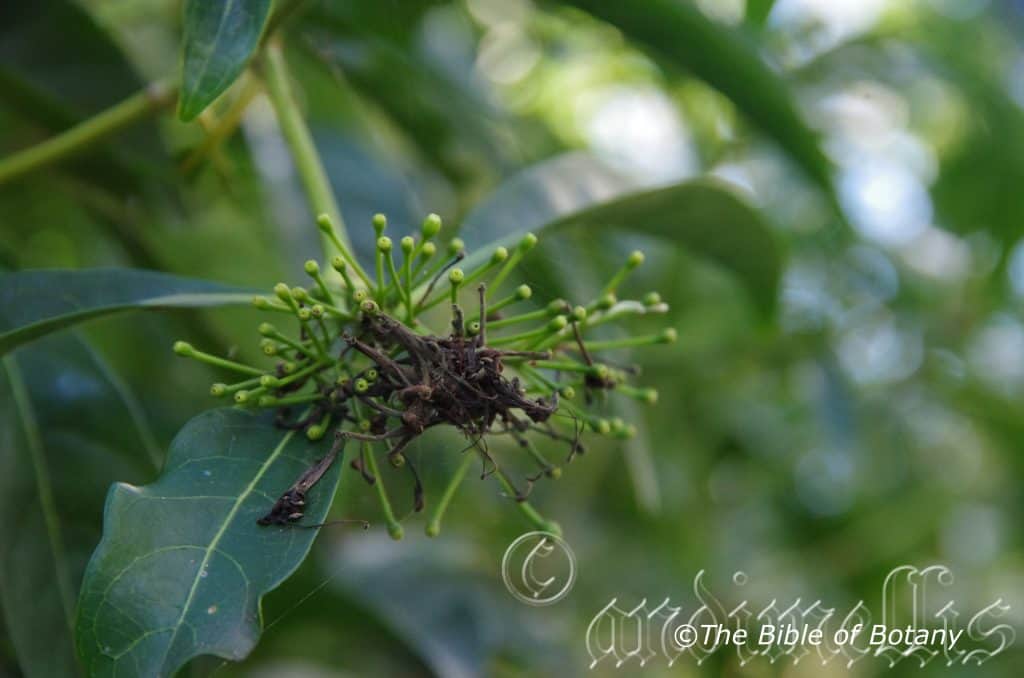
Mount Cootha Botanic Gardens Qld.
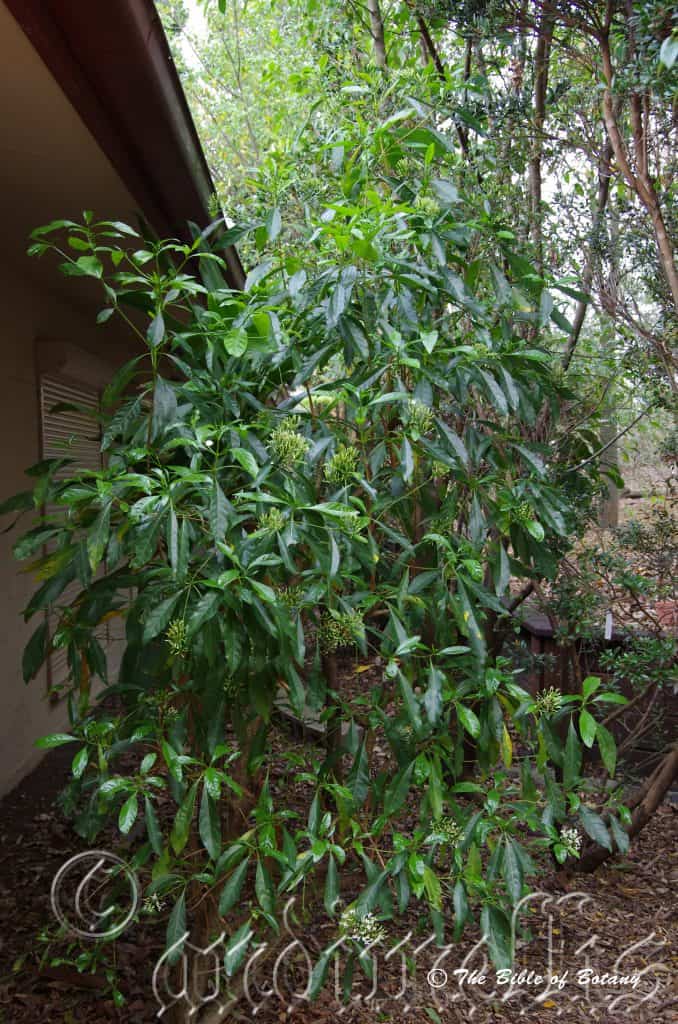
Greening Australia Norman Park Qld.
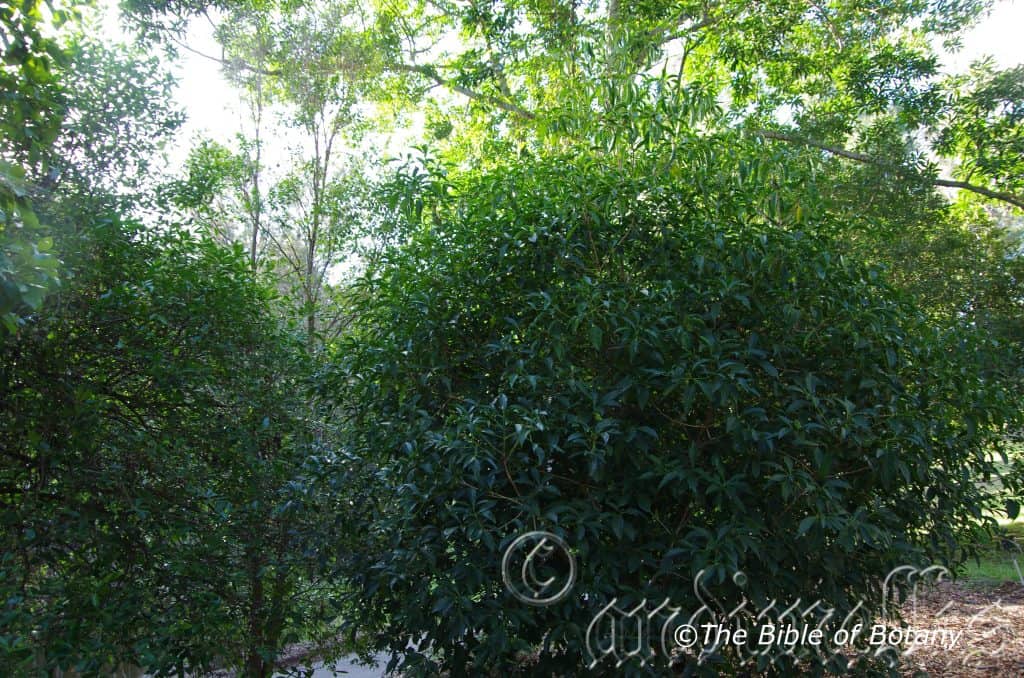
Mount Cootha Botanic Gardens Qld.
Pavetta australiensis
Classification:
Unranked: Eudicots
Unranked: Asterids
Order: Gentianales
Family: Rubiaceae
Subfamily: Ixoroideae
Tribe: Pavetteae
Genus: From Pavetta, which is Latinized from the vernacular of the Malabar word for the type species of the tree found there.
Species: From Terra Australis, which is Latin for land of the south and Anum/Ensis, which is Latin for to originate from. It refers to plants, which were first discovered from the land down under.
Sub specie:
Common Name:
Distribution:
Pavetta australiensis is found south from the Torres Strait Islands and the tip of Cape York Peninsula to the Mount Warning National Park in north eastern New South Wales. It is found on or east of the Great Dividing Range to the coast except for 3 outlying populations near Cloncurry, Normanton and Hughenden west of the Range.
Pavetta australiensis prefers dappled shade to full sun. It grows in and adjacent to drier rainforests, mosoonal forests, vine thickets, beach woodland heaths as an understorey shrub or at times on disturbed ground in well-developed rainforest. The altitude ranges from 5 meters ASL to 1000 meters ASL.
The temperatures range from 2 degrees in July to 36 degrees in January.
The rainfall ranges from lows of 420mm to 3000mm average per annum.
https://avh.ala.org.au/occurrences/search?taxa=Pavetta+australiensis#tab_mapView
Soil requirements:
Pavetta australiensis prefer sandy loams to medium clays with a high proportion of leaf litter. The soils are usually derived from decomposed sandstones brown basalts or black basalts. The soils pH ranges from 5.5pH to 7pH. It does not tolerate of waterlogged soils. Non saline soils to moderately saline soils are tolerated.
Height & Spread:
Wild Plants: 2m to 7m by 2m to 4m
Characteristics:
Pavetta australiensis grows as a dense medium shrub to small tree. The trunk or main stems are grey-brown with paler patches and glabrous. The stems progressively turn to more brown to tan to olive brown and green when the leaves are attached to the plant.
The opposite or nearly opposite elliptical, narrow elliptical to oblanceolate leaves measure 40mm to 150mm in length by 10mm to 60mm in width. The base is narrow cuneate and attenuate tapering while the apex is acuminate to narrowly obtuse. The concolourous laminas are deep grass-green to deep sea-green and glabrous. The leaf blade is rather thin and semi glossy to glossy. The leaf margins are entire, flat and curve strongly upwards from the mid vein when they first emerge. The mid vein is slightly prominent on the lower lamina as are the lateral veins while the main vein is distinctly visible on the upper lamina being yellow green. The triangular stipules are caduceus. The petioles measure 5mm to 20mm in length.
The inflorescences of Pavetta australiensis are born on dense corymbs from the terminals. The deep grass-green, terete peduncules measures 8mm to 12mm in length while the pedicels measure 9mm to 14mm in length. The cup shaped, green calyxes measure 1.5 to 2mm in length. The white to pastel green corolla tubes measure 10mm to 16mm in length while the white lobes measure 5mm to 8mm in length. The linear lobes have a broadly acute to obtuse apex. It is slightly curved at the tips and inflexed margins at the base.
The 4 white filaments are exerted and measure 11mm to 18mm in length while the basifixed, narrow oblong anthers measure 5mm to 7mm in length.
The white style measure 22mm to 38mm in length including the 7mm to 12mm stigma. Pavetta australiensis sweetly Gardenia scented flowers appear from late September to late November. Flowering appears to be more prolific following a wet winter period.
The fruits are a globose berry. The berries measure 5mm to 8mm in length by 5mm to 7mm in diameter. The hemispherical seeds contain an air sac on the flattened side.
Wildlife:
Pavetta australiensis’s is the host plant for the bulky Cephaonodes kingii moth.
Cultivation:
Pavetta australiensis is a magnificent medium shrub that deserves a place in every subtropical to tropical native or exotic garden. It is ideal in almost every setting near ponds, at the edge of a rain forest in court yards, around swimming pools or larger rockeries when their size is balanced. In cultivation they will grow as a dense foliaged shrub from 2 meters to 3 meters in height by 1.5 meters to 2.5 meters in diameter when grown in the open but will grow taller if shade is introduced to the plants. If it is developed as a small tree then they will attain 5 meters in height by 2.5 meters in diameter
They grow exceptionally well on lighter soils When deep leaf litter keeps the soil cool and moisture at an even level. If these requirements are met they can cope with temperatures as low as minus 4 degrees provided frosts are not involved and up to 36 degrees. It is moderately drought resistant but will discard leaves quickly when stressed.
Add to the above, if it is given an adequate supply of native fertilizers on a regular basis the plants will respond with spectacular flowering over a long period.
It often flowers from the third year from seed.
Be imaginative when planting in mass. Use the plants in different configurations; try using mixtures of trees and shrubs together. Light pruning after flowering or tip pruning will enhance the shrubs bushiness and provide longer stronger flower stems in the following season.
It is best used adjacent to small areas of bush close to paths or the house so their sweetly scented flowers can be fully appreciated.
Propagation:
Seeds: Seeds of Pavetta australiensis can be moved easily from the fruits as they dry.
Seeds need to be treated by rubbing between fine sandpaper. Sow freshly treated seeds directly into a seed raising mix, keeping them moist not wet. When the seedlings are 20 to 25 mm tall, prick them out and plant them into 50mm native tubes using a good organic mix.
As the seedlings roots reach the bottom of the tubes plant them out into their permanent position. Do not delay as the plants will suffer some set back before the new roots finally take control.
Cuttings: Pavetta australiensis strike relatively easy from cuttings. Use 100mm to 150mm long tip cuttings or lateral shoots from the present season’s growth if a large number of plants are required or 200mm to 300mm hard wood cuttings if a few are required. Take them in warmer months of the year. Remove half the leaves from the bottom section being careful not to tear the bark.
1 Prepare the cutting mix by adding two thirds sharp clean river sand, one third peat or one third perlite. These ingredients must be sterilized,
2 Select good material from non diseased plants,
3 Select semi green stems for cuttings. Look for a stem with two or three nodes,
4 Place the cutting on a flat, hard surface, and make a clean cut down one side of the cutting at the base for 10mm with a sharp sterile knife or razor blade. – This scarification of the node will increase the chances of roots emerging from this spot. Now remove all but one or two the leaves, leaving the apex leaves in tact. If the leaves are very large in proportion to the stem, cut off the apical halves.
5 Hormone is not required
6 Use a small dipple stick or old pencil to poke a hole into the soilless potting mix. Ensure the hole is slightly larger than the stem diameter and be careful not to damage the base of the cutting. Place 2 to 4 cuttings in each of the 50mm native tubes,
7 I like to place the tubes in bucket with holes drilled in the bottom to allow excess water to drain out. A plastic bag that fits over the bucket is ideal to help maintain temperature and moisture. Place in a semi shaded, warm position like under 50mm shade cloth.
8 When the cuttings have struck, open the bag to allow air circulation for a few days to a week,
9 Once hardened off remove the cuttings from the bag and allow to further hardening for a few more days to a week,
10 Transplant into a good potting mix to grow on.
Fertilize using seaweed, fish emulsion or organic chicken pellets soaked in water on an alternate basis. Fertilize every two months until the plants are established then twice annually in early September or March to maintain health, vitality and better flowering.
Further Comments from Readers:
Hi reader, it seems you use The Bible of Botany a lot. That’s great as we have great pleasure in bringing it to you! It’s a little awkward for us to ask, but our first aim is to purchase land approximately 1,600 hectares to link several parcels of N.P. into one at The Pinnacles NSW Australia, but we need your help. We’re not salespeople. We’re amateur botanists who have dedicated over 30 years to saving the environment in a practical way. We depend on donations to reach our goal. If you donate just $5, the price of your coffee this Sunday, We can help to keep the planet alive in a real way and continue to bring you regular updates and features on Australian plants all in one Botanical Bible. Any support is greatly appreciated. Thank you.
In the spirit of reconciliation we acknowledge the Bundjalung, Gumbaynggirr and Yaegl and all aboriginal nations throughout Australia and their connections to land, sea and community. We pay our respect to their Elders past, present and future for the pleasures we have gained.
Pelargonium australe
Classification:
Unranked: Eudicots
Unranked: Rosids
Order: Geraniales
Family: Geraniaceae
Genus: From Pelargo, which is Ancient Greek for a stork, Gera, which is Ancient Greek for a geranium and Nion, which is a Latin suffix for denoting an action or a condition. It refers to plants, which are similar to the Geranium genus but differ in having only 7 perfect stamens, whereas the Geranium genus has 10 stamens.
Species: From Terra Australis, which is Latin for land of the south. It refers to plants, which were first discovered from the land down under.
Sub species:
Common Name: Native Storkbill or Wild Geranium
Distribution:
Pelargonium australe is found in the southern third of Australia from Greenough on the Geraldton Sand Plains on the west coast to north Eyre and Eucla in Western Australia.
In South Australia it is found south from Fowlers Bay in the west to Narla Rockhole near Yellabinna and to the Border near Berri.
Further east it is found south and east from Toowoomba in south eastern Queensland to Boree near Coonamble Wodonga then west to Yellangip in western Victoria then north to Balranald and Milton before heading west to Nanya Station in New South Wales near the border with the South Australian Border. In the northern parts of its range it is restricted to the highlands along the Gibralta Range. It also grows on Lord Howe Island.
In Tasmania it is found on most the Bass Strait Islands including King Island and the Flinders Island Group and most the main Island of Tasmania except for the highlands in the western half of the state.
https://avh.ala.org.au/occurrences/search?taxa=Pelargonium+australe#tab_mapView
Habitat Aspect Climate:
Pelargonium australe prefers dappled shade to full sun. It grows on the coast on sand dunes and back dunes or coastal cliffs. Inland populations usually grow on rocky outcrops. It is found in open woodlands and mountain heaths. The altitude ranges from 5 meters ASL to 900 meters ASL.
The temperatures range from minus 5 degrees in August to 38 degrees in January.
The rainfalls range from lows of 800mm to an average of 2000mm.
Soil requirements:
Pelargonium australe prefers sandy loams to light gritty clays with a high proportion of leaf litter. The soils are usually derived from decomposed basalts, sandstones, shale or granites which form alluvial flats. The soils pH ranges from 5pH to 6pH. It does not tolerate of waterlogged soils. Non saline soils to moderately saline soils are tolerated.
Height & Spread:
Wild Plants: 300mm to 500mm by 400mm to 800mm.
Characteristics: Pelargonium australe is a perennial herb with soft, herbaceous stems. The stems are densely covered short, soft hirsute hairs. The taproot is rather fleshy.
The long, opposite, basal leaves of Pelargonium australe are ovate to reniform and measure 20mm to 90mm in length by 20mm to 80mm in width. The petioles measure 70mm to 130mm in length. The bases are broad, shallow cordate while the apexes are obtuse. The concolourous laminas are mid grass-green, mid blue, green or mid greenish-grey, dull and sparsely almost glabrous to densely covered in white pubescent hairs. The laminas curve upwards from the petiole to the margins while the margins are undulating, shallowly lobed and finely to broadly but bluntly toothed. The palmate veins are prominent on the lower laminas and a clearly visible from the upper laminas.
The inflorescences of Pelargonium australe are umbels with 4 to 12 individual flowers. The peduncles and pedicels are covered in soft white hirsute hairs. The peduncle measures 50mm to 90mm in length while the pedicels measure 10mm to 20mm in length.
The calyx’s 4 or 5 lobes measure 4mm to 7mm in length. The sepal’s spur usually measures 1mm to 6mm in length or rarely to 8mm in length. The 3 oblong, pastel pink to deep pink anterior petals measure 8mm to 12mm in length by 5mm to 8mm in width. The 2 posterior petals are spathulate, pastel pink to deep pink and have broader and deeper pink to purple markings than the 3 anterior petals. The posterior petals measure 8mm to 14mm in length by 6mm to 10mm in width.
The 7 to 8 white filaments measure 6mm to 9mm in length. The ovary is covered in white hirsute hairs. The pink to pinkish-orange, dorsifixed anthers are oblong. The white style measures 7mm to 10mm in length and has a 5 lobed stigma. The lobes are linear to narrow oblong. The flowers appear from October to March.
Pelargonium australe’s fruits are ovoid-cylindrical capsules. The capsules are surrounded by the bracts and measure 8mm to 15mm in length by 1mm to 2mm in diameter. The capsules are taped at each end and turn deep reddish-brown When ripe. The calyx is persistent on the ripe capsules. The capsules dehisce into the 3 separate chambers to veal the seeds. The glossy deep brownish-black seeds a minute.
Wildlife:
Pelargonium australe’s leaves are the food source of several Australian moths including the Geranium Plume Moth, Sphenarches anisodactylus and Green Looper, Chrysodeixis eriosoma which is particularly destructive in the garden. This moth’s larvae nip out the veins on the leaves near where it is feeding so that the leaf collapses like an umbrella around the larvae offering it protection.
Cultivation:
Pelargonium australe makes excellent rockery plants when adequate water can be maintained. Though smaller than the well known exotic Geranium it too always look green and fresh whether it is grown in dappled light or full sun. It is very suitable on most acid soils. It is most suitable for small, medium and large gardens close to the coast in cool temperate, warm temperate, sub-tropical or cool tropical gardens. As a garden subject it will grow from 200m to 500mm in height by 700mm to 900mm in diameter where grown in the open. It is cold tolerant to temperatures at least as low as minus 4 degrees once established.
It is most suitable for use around swimming pools, courtyards, besides pathways, shady rockeries, along sandy clay banks or along drive ways or adjacent to natural bush gardens. Mass plantings of 5 or more plants even in small areas; really do the plants justification especially when it is in flower. Larger fish or frog ponds will benefit from Patersonia sericea. Mass plantings of the herbs are very powerful especially When the background is made up of hard lines.
If it is placed around a pool, courtyards or other confined spaces then plant them in small groups or scatter plant them for a more informal natural look against large rocks and boulders their strap leaves are a great contrast. Using rocks and small boulders can make the pool or any water feature appear like an oasis. The leaves and flowers can make a great start for the dry heath gardens.
If companion plants are sought then the choice of plants to use either side is limited only by size of the area to be landscaped and the size of the other plants as they should be no more than 400mm in height to emphasize Pelargonium australe or plant them below trees for a natural bush setting. They can be mass planted between taller shrubs to give nooks and crannies a splash of colour and a horizontal look.
It is great to break up horizontal lines along driveways. It can be used to great affect when a dry creek bed is the theme by using them to mark out the banks. They can be used to stabilize banks along creeks and streams or to help soak up water in wet areas.
Plants should be treated as perennials and be placed every 1 or 2 years.
Propagation:
Seeds: Pelargonium australe seeds can be sown directly into a seed raising mix. Cover the seeds with 5mm to 10mm of fine weed free mulch and keep moist. Place the tray in a warm sunny position. When the seedlings are 30mm to 50mm tall, prick them out and plant them into 50mm native tubes using a good organic mix.
Once the seedlings reach 100mm to 150mm in height they can be planted out into their permanent position.
Cuttings: Cuttings should be used if a particular form or coloured flower is quid. Use 150mm to 250mm long herbaceous cuttings from the present season’s growth or previous season’s growth where some roots already exist or nodule swellings have taken place make for rapid growth. A rooting hormone is not required as the cuttings strike easily and within a couple of weeks. Place the cuttings in a warm semi sheltered position preferably under 30mm shade cloth and keep moist not wet.
Fertilize using seaweed, fish emulsion or organic chicken pellets soaked in water on an alternate basis as soon as some new growth appears.
Fertilize every two months until the plants are established then twice annually in early September and March to maintain better health, vitality and flowering.
Further Comments from Readers:
Hi reader, it seems you use The Bible of Botany a lot. That’s great as we have great pleasure in bringing it to you! It’s a little awkward for us to ask, but our first aim is to purchase land approximately 1,600 hectares to link several parcels of N.P. into one at The Pinnacles NSW Australia, but we need your help. We’re not salespeople. We’re amateur botanists who have dedicated over 30 years to saving the environment in a practical way. We depend on donations to reach our goal. If you donate just $5, the price of your coffee this Sunday, We can help to keep the planet alive in a real way and continue to bring you regular updates and features on Australian plants all in one Botanical Bible. Any support is greatly appreciated. Thank you.
In the spirit of reconciliation we acknowledge the Bundjalung, Gumbaynggirr and Yaegl and all aboriginal nations throughout Australia and their connections to land, sea and community. We pay our respect to their Elders past, present and future for the pleasures we have gained.
Pelargonium helmsii
Classification:
Unranked: Eudicots
Unranked: Rosids
Order: Geraniales
Family: Geraniaceae
Genus: From Pelargo, which is Ancient Greek for a stork, Gera, which is Ancient Greek for a geranium and Nion, which is a Latin suffix for denoting an action or a condition. It refers to plants, which are similar to the Geranium genus but differ in having only 7 perfect stamens, where as the Geranium genus has 10 stamens.
Species: Is probably named in honour of Richard Helms; 1842-1914, who was an Australian naturalist.
Sub species:
Common Name: Alpine Stork’s Bill
Distribution:
Pelargonium helmsii is restricted to an area south from the Kosciuszko National Park in southern New South Wales to Mount Buffalo, the slopes of Mount Stirling and Cobberas in north eastern Victoria.
https://avh.ala.org.au/occurrences/search?taxa=Pelargonium+helmsii#tab_mapView
Habitat Aspect Climate:
Pelargonium helmsii prefers dappled shade to full sun. It grows in open woodlands on highland mountain heaths in alpine regions. The altitude ranges from 1260 meters ASL to 2110 meters ASL.
The temperatures range from minus 7 degrees in August to 33 degrees in January.
The rainfalls range from lows of 1200mm to an average of 3000mm.
Soil requirements:
Pelargonium helmsii prefers skeletal, coarse sandy loams to light gritty clays. The soils are usually derived from decomposed granites which form alluvial flats or creek meanders. The soils pH ranges from 5pH to 6pH. It does not tolerate of waterlogged soils. Non saline soils to moderately saline soils are tolerated.
Height & Spread:
Wild Plants: 150mm to 250mm by 300mm to 400mm.
Characteristics:
Pelargonium helmsii is a perennial herb with soft, herbaceous stems. The stems are densely covered short, soft white hirsute and glandular hairs. The taproot is rather fleshy.
The long, opposite, basal leaves of Pelargonium helmsii are ovate to reniform and measure 10mm to 40mm in length by 10mm to 45mm in width. The petioles measure 70mm to 130mm in length. The bases are broad, shallow cordate while the apexes are obtuse. The concolourous laminas are mid grass-green, mid blue-green or mid greenish-grey, dull and sparsely almost glabrous to moderately cover in white pulverulent hairs. The laminas curve upwards from the petiole to the margins while the margins are shallowly lobed and finely to broadly but bluntly toothed or crenate. The palmate veins are prominent on the lower laminas and are clearly visible from the upper laminas.
The inflorescences of Pelargonium helmsii are compact umbels with 5 to 12 individual flowers. The peduncles and pedicels are covered in soft white hirsute hairs. The peduncle measures 30mm to 70mm in length while the pedicels measure 12mm to 22mm in length.
The calyx’s 4 or 5 lobes measure 3mm to 5mm in length. The sepal’s spur usually measures 0.7mm to 1mm in length. The 3 oblong, mid pink to deep pink anterior petals measure 6mm to 8mm in length by 3mm to 4.5mm in width. The 2 posterior petals are spathulate, mid pink to deep pink and are similarly marked to the anterior petals or have broader and deeper pink to purple markings. The posterior petals measure 7mm to 10mm in length by 4mm to 7mm in width.
The 4 to 5 white filaments measure 5mm to 6mm in length. The ovary is covered in white hirsute hairs. The pink to pinkish-orange, dorsifixed anthers are oblong. The white style measures 5mm to 6mm in length and has a 5 lobed stigma. The lobes are linear to narrow oblong. The flowers appear from December to March.
Pelargonium helmsii’s fruits are ovoid-cylindrical capsules. The capsules are surrounded by the bracts and measure 12mm to 16mm in length by 1mm to 2mm in diameter. The capsules are taped at the apex and turn deep reddish-brown then grey-brown When ripe. The calyx is persistent on the ripe capsules. The mericarps are covered in white hirsute hairs. The awn is covered in long golden hirsute hairs on inner surface. The capsules dehisce into the 3 separate chambers to veal the seeds. The glossy deep brownish-black seeds are minute.
Wildlife:
Pelargonium helmsii’s leaves are the food source of several Australian moths including the Geranium Plume Moth (Sphenarches anisodactylus) and Green Looper (Chrysodeixis eriosoma) which is particularly destructive in the garden. This moths larvae nip out the veins on the leaves near When it is feeding so that the leaf collapses like an umbrella around the larvae offering it protection.
Cultivation:
Pelargonium helmsii makes excellent rockery plants when adequate water can be maintained. It always look green and fresh whether it is grown in part shade or full sun. It is most suitable for small, medium and large gardens in cool temperate zones, montane or sub alpine or alpine gardens. As garden subjects it grows from 200m to 250mm by 350mm to 400mm wide when grown in the open. It is cold tolerant to temperatures at least as low as minus 7 degrees once established.
It is most suitable for use around swimming pools, courtyards, besides pathways, shady rockeries, along sandy clay banks or along drive ways or adjacent to natural bush gardens. Mass plantings of 5 or more plants even in small areas; really do the plants justification especially when it is in flower. Larger fish or frog ponds will benefit from Pelargonium helmsii. Mass plantings of the flowers are very powerful especially when the background is made up of hard lines.
If it is placed around a pool, courtyards or other confined spaces then plant them in small groups or scatter plant them for a more informal natural look against large rocks and boulders their strap leaves are a great contrast. Using rocks and small boulders can make the pool or any water feature appear like an oasis. The leaves and flowers can make a great start for the larger wallum, mangrove or swamp setting or small heath gardens.
If companion plants are sought then the choice of plants to use either side is limited only by size of the area to be landscaped and the size of the other plants should be from 100mm to 400mm in height to emphasize the Pelargonium helmsii or plant them below trees for a natural bush setting. It can be mass planted between taller shrubs to give nooks and crannies a splash of colour and vertical leaves
It is great to break up horizontal lines along driveways. It can be used to great affect when a dry creek bed is the theme by using them to mark out the banks. It can be used to stabilize banks along creeks and streams or to help soak up water in wet areas.
Plants should be treated as perennials and be placed every 1 or 2 years.
Propagation:
Seeds: Pelargonium helmsii seeds can be sown directly into a seed raising mix. Cover the seeds with 5mm to 10mm of fine weed free mulch and keep moist. Place the tray in a warm sunny position. When the seedlings are 30mm to 50mm tall, prick them out and plant them into 50mm native tubes using a good organic mix.
Once the seedlings reach 100mm to 150mm in height they can be planted out into their permanent position.
Cuttings: Cuttings should be used if a particular form or coloured flower is quid. Use 150mm to 250mm long herbaceous cuttings from the present season’s growth or previous season’s growth where some roots already exist or nodule swellings have taken place make for rapid growth. A rooting hormone is not required as the cuttings strike easily and within a couple of weeks. Place the cuttings in a warm semi sheltered position preferably under 30mm shade cloth and keep moist not wet.
Fertilize using seaweed, fish emulsion or organic chicken pellets soaked in water on an alternate basis as soon as some new growth appears.
Fertilize every two months until the plants are established then twice annually in early September and March to maintain better health, vitality and flowering.
Further Comments from Readers:
Hi reader, it seems you use The Bible of Botany a lot. That’s great as we have great pleasure in bringing it to you! It’s a little awkward for us to ask, but our first aim is to purchase land approximately 1,600 hectares to link several parcels of N.P. into one at The Pinnacles NSW Australia, but we need your help. We’re not salespeople. We’re amateur botanists who have dedicated over 30 years to saving the environment in a practical way. We depend on donations to reach our goal. If you donate just $5, the price of your coffee this Sunday, We can help to keep the planet alive in a real way and continue to bring you regular updates and features on Australian plants all in one Botanical Bible. Any support is greatly appreciated. Thank you.
In the spirit of reconciliation we acknowledge the Bundjalung, Gumbaynggirr and Yaegl and all aboriginal nations throughout Australia and their connections to land, sea and community. We pay our respect to their Elders past, present and future for the pleasures we have gained.
Pelargonium inodorum
Classification:
Unranked: Eudicots
Unranked: Rosids
Order: Geraniales
Family: Geraniaceae
Genus: From Pelargo, which is Ancient Greek for a stork, Gera, which is Ancient Greek for a geranium and Nion, which is a Latin suffix for denoting an action or a condition. It refers to plants, which are similar to the Geranium genus but differ in having only 7 perfect stamens, where as the Geranium genus has 10 stamens.
Species: From In, which is Latin for in, into or ante and Odōs, which is Latin for a smell, perfume or stench. It refers to structures, organs usually the flowers or leaves, which have a scent.
Sub species:
Common Name:
Distribution:
Pelargonium inodorum is found south from the Blackall Range in south east Queensland to Dergholm in south western Victoria. It is found further north on Mount Robert in Queensland. It is mainly found on the Great Dividing Range.
In southern Western Australia it is found on the Many Peaks Range, the Marble Range near Port Lincoln in South Australia and Matakana in New South Wales.
In Tasmania it is found on most of the Bass Strait Islands including King Island and the Flinders Island Group and the eastern two thirds of the main Island of Tasmania.
https://avh.ala.org.au/occurrences/search?taxa=Pelargonium+inodorum#tab_mapView
Habitat Aspect Climate:
Pelargonium inodorum prefers dappled shade to full sun. It grows in coastal heaths and mountain heaths within open woodlands or open forests. The altitude ranges from 5 meters ASL to 950 meters ASL.
The temperatures range from minus 5 degrees in August to 38 degrees in January.
The rainfalls range from lows of 500mm to an average of 2000mm.
Soil requirements:
Pelargonium inodorum prefers sandy loams to light gritty clays with a high proportion of leaf litter. The soils are usually derived from decomposed granites, black basalts, and metamorphic rocks including marble or accumulated peaty sands. The soils pH ranges from 5pH to 8pH. It does not tolerate of waterlogged soils. Non saline soils to moderately saline soils are tolerated.
Height & Spread:
Wild Plants: 200mm to 350mm by 40mm to 600mm.
Characteristics:
Pelargonium inodorum grows as an annual or short lived perennial herb with soft, herbaceous stems. The stems are densely covered long, soft white hirsute and shorter glandular hairs. The taproot is rather fleshy.
The long, opposite, basal leaves of Pelargonium inodorum are ovate to reniform and measure 10mm to 40mm in length by 10mm to 50mm in width. The petioles measure 10mm to 55mm in length. The bases are broad, cordate while the apexes are obtuse. The concolourous laminas are mid grass-green, mid blue-green or mid greenish-grey, dull and glabrous to sparsely covered in white hirsute hairs on the upper laminas while the lower laminas are sparsely covered in white hirsute hairs. The laminas recurve upwards from the petiole to the margins while the margins have 5 to 7 lobes, which are crenate. The palmate veins are prominent on the lower laminas and are clearly visible from the upper laminas.
The inflorescences of Pelargonium inodorum are compact umbels with 3 to 14 individual flowers. The peduncles and pedicels are covered in soft white hirsute hairs. The peduncle measures 30mm to 80mm in length while the pedicels measure 1mm to 3mm in length, lengthening to 10mm when the capsules are fully ripe.
The calyx’s 4 or 5 lobes are covered in short white puberulent hairs and measure 2mm to 4mm in length. The sepal’s spur usually measures 0.5mm to 1mm in length. The 3 oblong, deep pink anterior petals measure 3mm to 5mm in length by 1mm to 2mm in width and are not marked or have deeper pink to purple markings. The 2 posterior petals are narrow spathulate, deep pink and are not marked or have broader and deeper pink to purple markings compared to the anterior petals. The posterior petals measure 4mm to 6mm in length by 1mm to 2.5mm in width.
The 3 to 5 white filaments measure 2mm to 3mm in length. The ovary is covered in white hirsute hairs. The pink to pinkish-orange, dorsifixed anthers are oblong. The white or pink style measures 3mm to 4mm in length and has a 5 lobed pink stigma. The lobes are linear. The flowers appear from December to February however some flowers also appear from between September to May.
Pelargonium inodorum’s fruits are ovoid-cylindrical capsules. The capsules are surrounded by the bracts and measure 10mm to 14mm in length by 1mm to 2mm in diameter. The capsules are taped at the apex and turn deep reddish-brown then grey-brown when ripe. The calyx is persistent on the ripe capsules. The mericarps are covered in white pilose hairs. The capsules dehisce into the 3 separate chambers to veal the seeds. The glossy deep brownish-black seeds are minute.
Wildlife:
Pelargonium inodorum’s leaves are the food source of several Australian moths including the Geranium Plume Moth (Sphenarches anisodactylus) and Green Looper (Chrysodeixis eriosoma) which is particularly destructive in the garden. This moths larvae nip out the veins on the leaves near When it is feeding so that the leaf collapses like an umbrella around the larvae offering it protection.
Cultivation:
Pelargonium inodorum makes excellent rockery plants when adequate water can be maintained. They always look green and fresh whether it is grown in part shade or full sun. It is most suitable for small, medium and large gardens close to the coast in warm temperate, sub-tropical or cool tropical gardens. As garden subjects they will grow from 250m to 300mm by 400mm to 500mm wide when grown in the open. It is cold tolerant to temperatures at least as low as minus 5 degrees once established.
It is most suitable for use around swimming pools, courtyards, besides pathways, shady rockeries, along sandy clay banks or along drive ways or adjacent to natural bush gardens. Mass plantings of 5 or more plants even in small areas; really do the plants justification especially when it is in flower. Larger fish or frog ponds will benefit from Patersonia sericea. Mass plantings of the flowers are very powerful especially when the background is made up of hard lines.
If it is placed around a pool, courtyards or other confined spaces then plant them in small groups or scatter plant them for a more informal natural look against large rocks and boulders their strap leaves are a great contrast. Using rocks and small boulders can make the pool or any water feature appear like an oasis. The leaves and flowers can make a great start for the larger wallum, mangrove or swamp setting or small heath gardens.
If companion plants a sought then the choice of plants to use either side is limited only by size of the area to be landscaped and the size of the other plants should be between 200mm and 400mm in height to emphasize the Pelargonium inodorum or plant them below trees for a natural bush setting. It can be mass planted between taller shrubs to give nooks and crannies a splash of colour and vertical leaves
It is great to break up horizontal lines along driveways. They can be used to great affect when a dry creek bed is the theme by using them to mark out the banks. They can be used to stabilize banks along creeks and streams or to help soak up water in wet areas.
Plants should be treated as perennials and be placed every 1 or 2 years.
Propagation:
Seeds: Pelargonium inodorum seeds can be sown directly into a seed raising mix. Cover the seeds with 5mm to 10mm of fine weed free mulch and keep moist. Place the tray in a warm sunny position. When the seedlings are 30mm to 50mm tall, prick them out and plant them into 50mm native tubes using a good organic mix.
Once the seedlings reach 100mm to 150mm in height they can be planted out into their permanent position.
Cuttings: Cuttings should be used if a particular form or coloured flower is required. Use 150mm to 250mm long herbaceous cuttings from the present season’s growth or previous season’s growth where some roots already exist or nodule swellings have taken place make for rapid growth. A rooting hormone is not required as the cuttings strike easily and within a couple of weeks. Place the cuttings in a warm semi sheltered position preferably under 30mm shade cloth and keep moist not wet.
Fertilize using seaweed, fish emulsion or organic chicken pellets soaked in water on an alternate basis as soon as some new growth appears.
Fertilize every two months until the plants are established then twice annually in early September and March to maintain better health, vitality and flowering.
Further Comments from Readers:
Hi reader, it seems you use The Bible of Botany a lot. That’s great as we have great pleasure in bringing it to you! It’s a little awkward for us to ask, but our first aim is to purchase land approximately 1,600 hectares to link several parcels of N.P. into one at The Pinnacles NSW Australia, but we need your help. We’re not salespeople. We’re amateur botanists who have dedicated over 30 years to saving the environment in a practical way. We depend on donations to reach our goal. If you donate just $5, the price of your coffee this Sunday, We can help to keep the planet alive in a real way and continue to bring you regular updates and features on Australian plants all in one Botanical Bible. Any support is greatly appreciated. Thank you.
In the spirit of reconciliation we acknowledge the Bundjalung, Gumbaynggirr and Yaegl and all aboriginal nations throughout Australia and their connections to land, sea and community. We pay our respect to their Elders past, present and future for the pleasures we have gained.
Pelargonium rodneyanum
Classification:
Unranked: Eudicots
Unranked: Rosids
Order: Geraniales
Family: Geraniaceae
Genus: From Pelargo, which is Ancient Greek for a stork, Gera, which is Ancient Greek for a geranium and Nion, which is a Latin suffix for denoting an action or a condition. It refers to plants, which are similar to the Geranium genus but differ in having only 7 perfect stamens, where as the Geranium genus has 10 stamens.
Species: Is named in honour of the granddaughter of Baron George Brydges Rodney.
Sub species:
Common Name: Magreenta Stork’s Bill
Distribution:
Pelargonium rodneyanum is common from Coonalpyn in eastern South Australia east to north of Bendigo, Mansfield, Yarra Ranges and Frankston. It is also found in a disjunct population further west near Lyndock Valley in South Australia and in the east the a several disjunct populations in decreasing numbers further north to Shoalhaven Gorge in south eastern New South Wales.
For interest “Flores speciosi sanguinea atra signata” recorded a plant with “Attractive, blood-red flowers with black stripes.” Further notes in German on the label state “Collected in January by Behr in South Australia between 1845 and 1849. Ex Herbarium O.W. Sonder- 1812-1881. Such a plant has not been sighted since.
https://avh.ala.org.au/occurrences/search?taxa=Pelargonium+rodneyanum#tab_mapView
Habitat Aspect Climate:
Pelargonium rodneyanum prefers dappled shade to full sun. It grows on exposed rocky slopes in open woodlands, coastal heaths or mountain heaths. The altitude ranges from 5 meters ASL to 900 meters ASL.
The temperatures range from minus 3 degrees in August to 40 degrees in January.
The rainfalls range from lows of 400mm to an average of 1400mm.
Soil requirements:
Pelargonium rodneyanum prefers skeletal sandy loams to light gritty clays close to the parent rocks with a high proportion of leaf litter. The soils are usually derived from decomposed sandstones, shale or granites. The soils pH ranges from 5pH to 6pH. It does not tolerate of waterlogged soils. Non saline soils to moderately saline soils are tolerated.
Height & Spread:
Wild Plants: 300mm to 400mm by 400mm to 600mm.
Characteristics: Pelargonium rodneyanum’s is a perennial herb with soft, herbaceous stems. The stems are moderately covered short glandular hairs with a few long, soft white hirsute hairs. The root consists of several rather fleshy tubers often forming chains.
The opposite usually basal leaves of Pelargonium rodneyanum are ovate to narrow ovate and measure 20mm to 50mm in length by 15mm to 40mm in width. The petioles measure 30mm to 100mm in length. The bases are broad, shallowly cordate to cordate while the apexes are obtuse. The concolourous laminas are mid grass-green, mid blue-green or mid greenish-grey, dull and glabrous. The laminas recurve upwards from the petiole to the margins while the margins have 5 to 7 lobes which are crenate. The palmate veins are prominent on the lower laminas and sparsely to moderately covered in white hirsute or pubescent hairs and are clearly visible from the upper laminas.
The inflorescences of Pelargonium rodneyanum are loose umbels with 2 to 7 individual flowers. The peduncles and pedicels are creamy yellow tinged pink, glabrous or very sparsely covered in short, soft, white hirsute hairs. The peduncle measures 50mm to 120mm in length while the pedicels measure 13mm to 22mm in length.
The calyx’s 4 or 5 lobes are creamy yellow tinged in pink or pale green tinged pink, moderately covered in white pubescent hairs externally and sparsely covered in white pubescent hairs internally. The lanceolate lobes measure 2mm to 4mm in length. The sepal’s spur measures 5mm to 9mm in length. The 3 oblong to oblanceolate, deep magenta anterior petals measure 15mm to 18mm in length by 8mm to 10mm in width are finely marked in deeper magenta markings. The 2 posterior petals are broad spathulate, deep magenta and are coarsely marked with loops in deeper magenta markings compared to the anterior petals. The contorted posterior petals measure 10mm to 13mm in length by 8mm to 10mm in width.
The 7 to 8 white fertile filaments measure 2mm to 3mm in length. The ovary is covered in white hirsute hairs. The pink to pinkish-orange, dorsifixed anthers are oblong. The white or pink style measures 3mm to 4mm in length and has a 5 lobed pink stigma. The lobes are linear. The flowers appear from late October to May.
Pelargonium rodneyanum’s fruits are ovoid-cylindrical capsules. The capsules are surrounded by the bracts and measure 18mm to 22mm in length by 2mm to 2.5mm in diameter. The capsules are taped at the apex and turn deep reddish-brown then grey-brown when ripe. The calyx is persistent on the ripe capsules. The mericarps are covered in white pilose hairs. The capsules dehisce into the 3 separate chambers to veal the seeds. The glossy deep brownish-black seeds are minute.
Wildlife:
Pelargonium rodneyanum’s leaves are the food source of several Australian moths including the Geranium Plume Moth (Sphenarches anisodactylus) and Green Looper (Chrysodeixis eriosoma) which is particularly destructive in the garden. This moths larvae nip out the veins on the leaves near when it is feeding so that the leaf collapses like an umbrella around the larvae offering it protection.
Cultivation:
Pelargonium rodneyanum makes excellent rockery plants when adequate water can be maintained. They always look green and fresh whether it is grown in part shade or full sun. It is most suitable for small, medium and large gardens close to the coast in warm temperate, sub-tropical or cool tropical gardens. As a garden subject it grows from 300m to 400mm by 400mm to 600mm in diameter when grown in the open. It is cold tolerant to temperatures at least as low as minus 4 degrees once established.
It is most suitable for use around swimming pools, courtyards, besides pathways, shady rockeries, along sandy clay banks or along drive ways or adjacent to natural bush gardens. Mass plantings of 5 or more plants even in small areas; really do the plants justification especially when it is in flower. Larger fish or frog ponds will benefit from Pelargonium rodneyanum. Mass plantings of the flowers are very powerful especially when the background is made up of hard lines.
If it is placed around a pool, courtyards or other confined spaces then plant them in small groups or scatter plant them for a more informal natural look against large rocks and boulders their strap leaves are a great contrast. Using rocks and small boulders can make the pool or any water feature appear like an oasis. The leaves and flowers can make a great start for the larger wallum, mangrove or swamp heath setting or small schlerophyll heath gardens.
If companion plants are sought then the choice of plants to use either side is limited only by size of the area to be landscaped and the size of the other plants as they should be no more than 400mm in height to emphasize the Pelargonium rodneyanum or plant them below trees for a natural bush setting. They can be mass planted between taller shrubs to give nooks and crannies a splash of colour and vertical leaves
It is great to break up horizontal lines along driveways. They can be used to great affect when a dry creek bed is the theme by using them to mark out the banks. They can be used to stabilize banks along creeks and streams or to help soak up water in wet areas.
Plants should be treated as perennials and be placed every 1 or 2 years.
Propagation:
Seeds: Pelargonium rodneyanum seeds can be sown directly into a seed raising mix. Cover the seeds with 5mm to 10mm of fine weed free mulch and keep moist. Place the tray in a warm sunny position. When the seedlings are 30mm to 50mm tall, prick them out and plant them into 50mm native tubes using a good organic mix.
Once the seedlings reach 100mm to 150mm in height they can be planted out into their permanent position.
Cuttings: Cuttings should be used if a particular form or coloured flower is quid. Use 50mm to 70mm long herbaceous cuttings from the present season’s growth or previous season’s growth and move the leaves from the lower third of the stem being careful not to tear the stem. A rooting hormone is not quid as the cuttings strike easily and within a couple of weeks. Place the cuttings in a cool semi shaded position preferably under 30mm shade cloth and keep moist not wet.
Fertilize using seaweed, fish emulsion or organic chicken pellets soaked in water on an alternate basis. Fertilize every two months until the plants are established then twice annually in early September and March to maintain better health, vitality and flowering.
Further Comments from Readers:
Hi reader, it seems you use The Bible of Botany a lot. That’s great as we have great pleasure in bringing it to you! It’s a little awkward for us to ask, but our first aim is to purchase land approximately 1,600 hectares to link several parcels of N.P. into one at The Pinnacles NSW Australia, but we need your help. We’re not salespeople. We’re amateur botanists who have dedicated over 30 years to saving the environment in a practical way. We depend on donations to reach our goal. If you donate just $5, the price of your coffee this Sunday, We can help to keep the planet alive in a real way and continue to bring you regular updates and features on Australian plants all in one Botanical Bible. Any support is greatly appreciated. Thank you.
In the spirit of reconciliation we acknowledge the Bundjalung, Gumbaynggirr and Yaegl and all aboriginal nations throughout Australia and their connections to land, sea and community. We pay our respect to their Elders past, present and future for the pleasures we have gained.
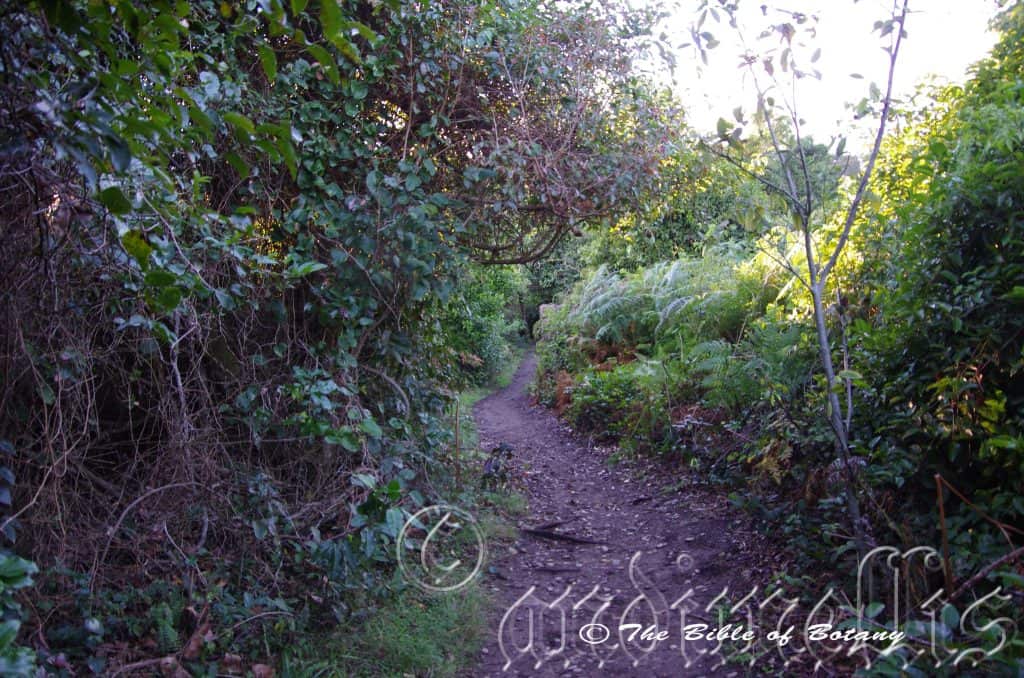
Moonee Beach Headland NSW
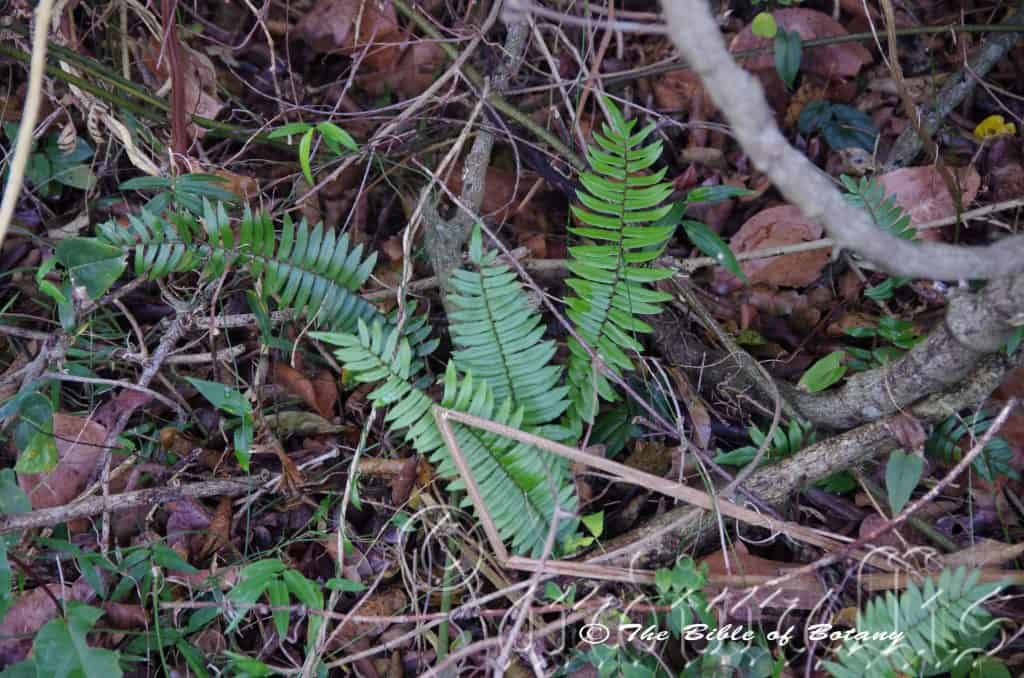
Moonee Beach Headland NSW
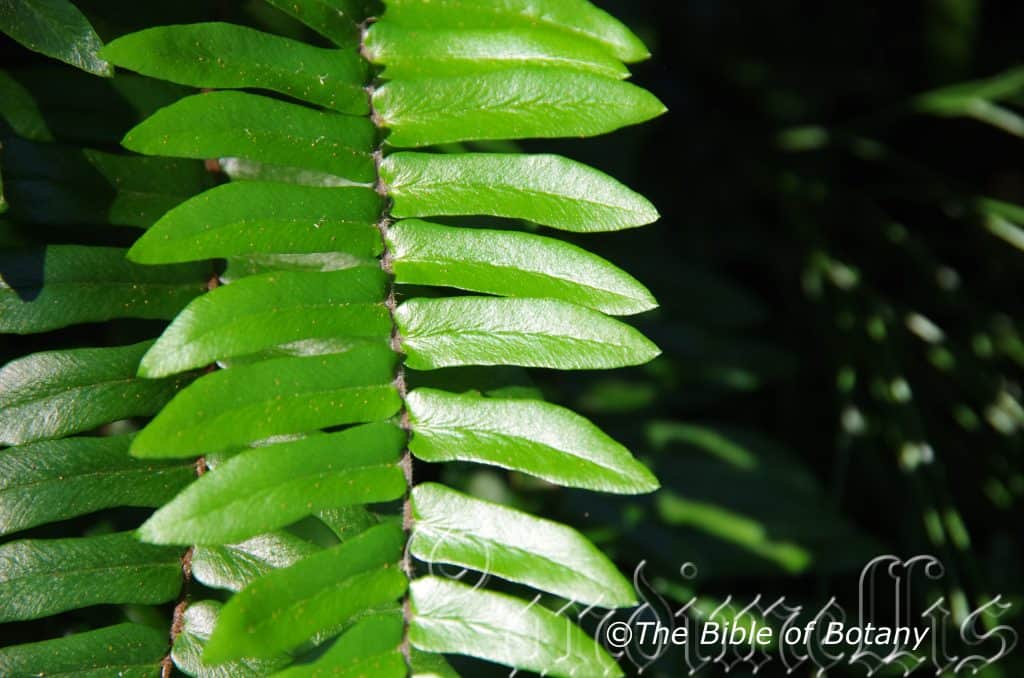
Mount Cootha Botanic Gardens Qld.
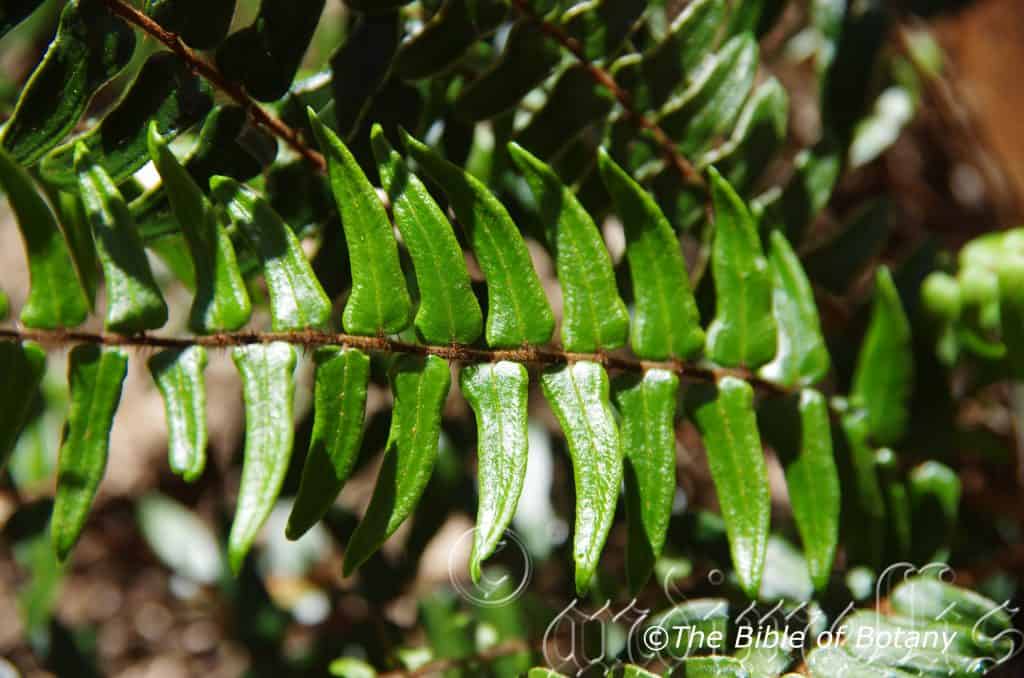
Moonee Beach Headland NSW
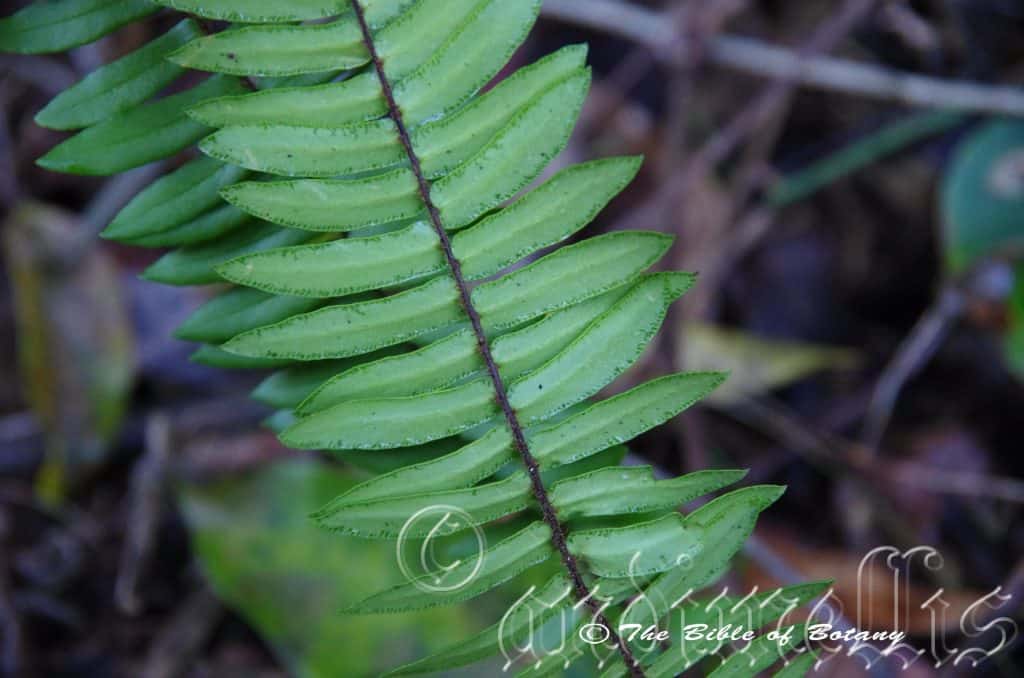
Moonee Beach Headland NSW
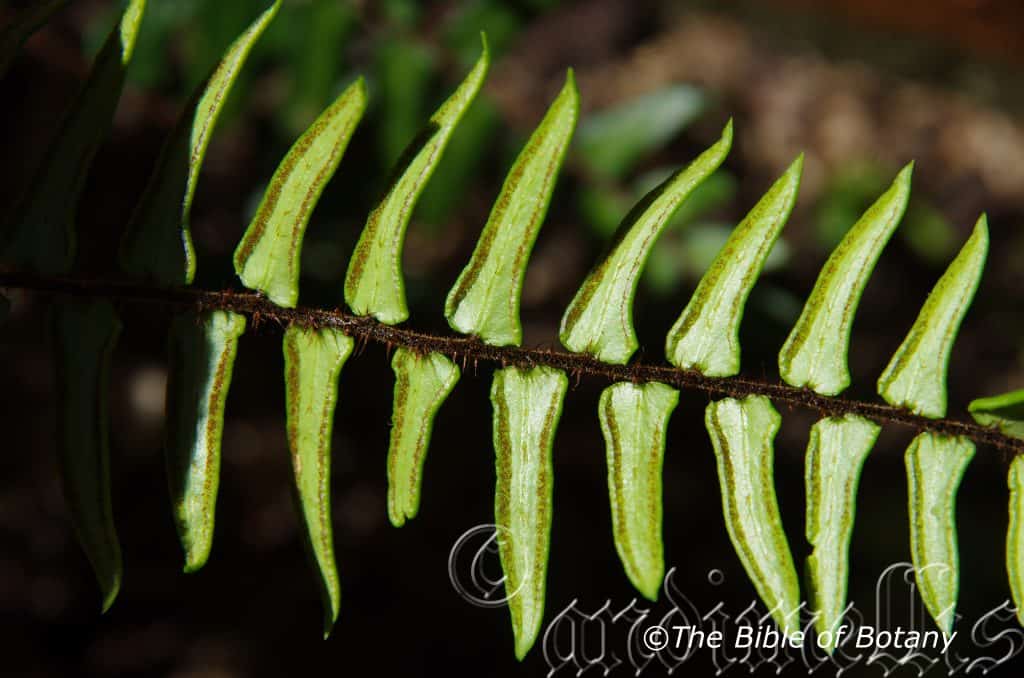
Author’s Garden The Pinnacles NSW
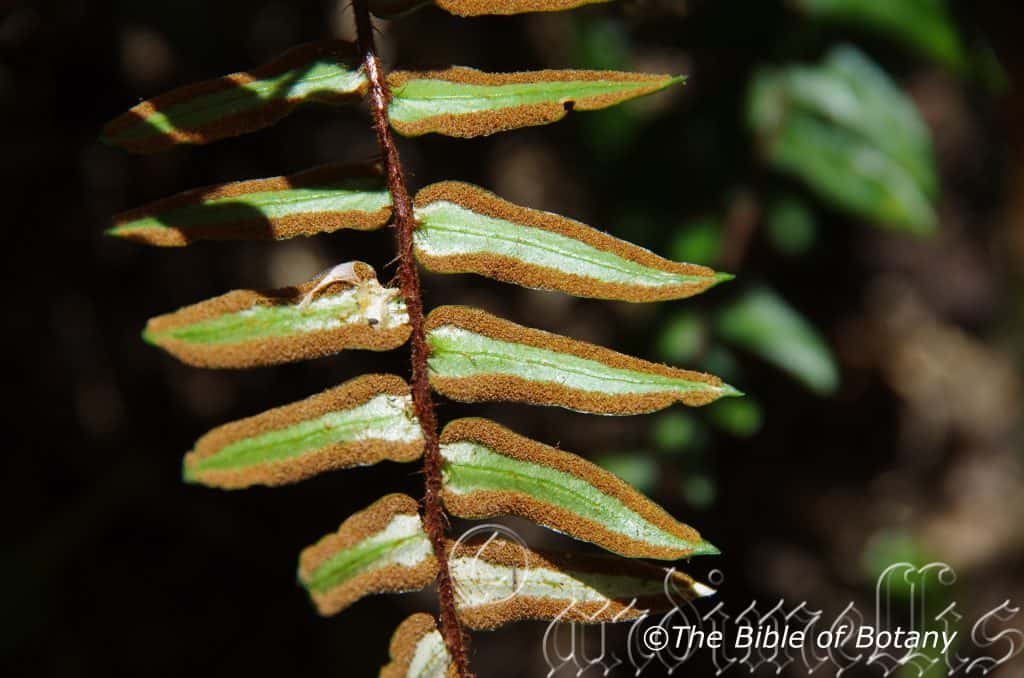
Author’s Garden The Pinnacles NSW
Pellaea falcata
Classification:
Unranked: Pteridophyta
Division:
Class: Pteridopsida
Order: Polypodiales
Family: Pteridaceae
Subfamily: Cheilanthoideae
Genus: From Pellos, which is Ancient Greek for a deep colour. It refers to leaves, fronds or other organs, which have a deep colour, in this case the notably deep green fronds.
Species: From Falcata, which is Latin for a scythe or sickle shape. It refers to leaves, which have a shape somewhat like the scythe or sickle shape.
Sub species:
Common Name: Falcate Leaf Pellaea.
Distribution:
Pellaea falcata is mainly found south from Cairns in far north eastern Queensland to Wilson’s Promontory in far southern Victoria and west to the Narracoorte Coastal Plains in Victoria and far south eastern South Australia.
In Tasmania it is found on the Bass Strait Islands and across the north and down the eastern side of Tasmania itself.
https://avh.ala.org.au/occurrences/search?taxa=Pellaea+falcata#tab_mapView
Habitat Aspect Climate:
Pellaea falcata prefers light dappled shade to dense shade. It grows in well-developed tropical rainforests, warm sub-tropical rainforests, warm temperate rainforests or wet Eucalyptus forests. The altitude ranges from 20 meters ASL to 900 meters ASL.
The temperatures range from minus 3 degrees in August to 36 degrees in January.
The rainfall ranges from lows of 900mm to an average of 2800mm.
Soil requirements:
Pellaea falcata prefers better quality sandy loams to medium clays with a high proportion of leaf litter. The soils are usually derived from decomposed brown or black basalts close to the pant rock. The soils pH ranges from 5pH to 6pH. It does not tolerate of waterlogged soils. Non saline soils to moderately saline soils are tolerated.
Height & Spread:
Wild Plants: 0.15m to 0.25m by 1m to 1.5m.
Characteristics:
Pellaea falcata grows as a small fern with very long slender, glossy black rhizomes. They measure 2mm to 2.5mm in diameter and a covered in narrowly ovate caduceous and persistent scales.
Pellaea falcata has simple fronds. The fronds measure 370mm to 900mm in overall length. The slender 80mm to 300mm stipes are deep glossy brown and glabrous except for a covering of triangular scales becoming less dense as they approach the apex.
There are 27 to 70 usually 38 to 50 per alternate to almost opposite pinnae to a stipe. The oblong to oblong-linear pinnae measure 25mm to 56mm in length by 5mm to 12mm in width. The bases are rounded to hastate while the apexes are broadly acute to obtuse. The discolourous laminas are deep sea-green, dull to semi glossy on the upper lamina while the lower lamina is paler. The petioles are sessile to shortly stalk even on the same stipe. The margins are entire, flat or slightly undulating.
The fertile fronds are identical to the sterile fronds. The sori are in a 1mm continuous band along the margin of the pinnae.
Spores are very small. It is a deep tan brown to chocolate brown in colour.
Wildlife:
Pellaea falcata’s wildlife is unknown to the author.
Cultivation:
Pellaea falcata makes an excellent ground cover for areas when there is filtered light to dense shade. It always looks green and fresh especially when adequate ground moisture is retained in the soil. It is very suitable on medium clays to heavy clay soils and are most suitable for small medium and large gardens close to the coast in warm temperate, warm sub-tropical or cool tropical gardens. It is cold tolerant to temperatures as low as minus 3 degrees once established.
It is most suitable for use as a rainforest understory plant when they will colonize banks. They like plenty of leaf litter to help increase soil fertility, maintain soil moisture and to maintain a cool root zone.
Large frog or fish ponds are made the more attractive When surrounded by this fern which can Spread over large areas if given the opportunity without becoming problem some. The size makes for a balanced setting.
Propagation:
Fern Spores: All ferns that are declared rare, vulnerable or endangered are protected by Federal and State Laws and must not be removed from the wild unless you are a land developer, mining company or main Roads department etc. This includes bulbs, roots, leaves and flowers. No part of any plant can be removed from Federal, State or Local Government land without the prior permission of the authority and this includes the spore.
Most people are put off at the thought of growing ferns from spore. Like all plants that produce their offspring from seed or spore the methods are basically the same. Remember nature has been doing this for millions of years and has been very successful. I have had excellent results growing over 200 different species of Australian ferns so don’t be afraid. Give it a go.
Step 1. Select spore from the fern fronds. Wait until the fern is just starting to release its spore. Rinse the fronds under clean running water and dry. This is to wash off any other spores from rogue ferns that may have settled onto the fronds. (There is nothing worse than having common brake or common soft bracken contaminating a prized tree fern or epiphyte.)
Step 2. Place the dry fronds in a clean brown paper bag and keep them in a cool dark place like the linen closet for about a week to ten days before you are ready to sow the spore. The exception to this rule applies to ferns, which produce green spores. These must be sown immediately that they are released. Todea Barbara is a good example of a fern, which produces green spore.
Step 3. Take a large ice cream container, a small ice cream container and a clean clear plastic bag large enough to seal the large ice cream container and three or four milk bottle tops.
Step 4. Punch or drill 6 to 10 5mm holes in the bottom of the small ice cream container.
Step 5. Wash both containers, tops and plastic bag so that they are very clean and sterile.
Step 6. Use a clean fine seed raising mi. We used 30mm fine sand, 30mm peat and 30mm perlite and 10mm vermiculite. We used crushed basalt, crusher dust and peat in a 50:50 ratio for epiphytes. Moisten the mix enough that water does not run out when the mix is squeezed between the fingers.
Step 7. Place the moisten mix (Enough to half fill the small ice cream container) in the microwave oven with a large glass of water for 7 or 8 minutes, until the water is boiling. Allow them to cool in the oven. You will need the water later so do not tip it out.
Step 8. Take the brown paper bag out of the linen closet. Shake the bag and remove the fronds. You should have a yellow, brown, black or rarely greenish brown or ochre powder or very fine, small round pin head size spore depending on the specie involved.
Step 9. Remove the mixture from the oven once it has cooled and place it in the small ice cream container and level.
Step 10. Sprinkle the spore sparsely over the mixture in the small ice cream container.
Step 11. Place the milk bottle tops in the large ice cream container with the flat surface facing down. Place the small ice cream container in the large ice cream container so that it is sitting on the milk bottle tops.
Step 12. Remove the water from the microwave and pour it into the larger ice cream container so there is 25mm to 30mm of water in the bottom.
Step 13. Place the ice cream containers in the plastic bag and seal. Step 14. Place the contents and bag in a warm shady place preferably 50mm to 70mm shade depending on the specie. Shade houses and some window sills are ideal.
Step 15. The surface should turn green within a week to two weeks. The prothallus will then develop. From the prthalus the first true fronds will appear. Wait until the ferns are 20mm to 35mm in height before you attempt to transplant them. Once they are ready open the bag up slightly and allow the air to flow around the little ferns. Every 3 to 5 days open the bag a little further so the ferns get use to their new environment. Allow them a week to two weeks to harden off before you transplant them following the removal of the plastic bag. Carefully prick them out into 50mm standard squat tubes as you would any seedling.
Do not try to transplant them as single plants as they are still a little delicate still.
Once the smaller ones again reach 50mm to 70mm you may wish to divide the stronger and hardier individual plants into smaller clumps in 100mm squat pots.
Step 16. We fertilized with seaweed, fish emulsion or organic chicken pellets soaked in water on an alternate basis until established. Fertilize every two months for one year even when in the ground.
Further Comments from Readers:
Hi reader, it seems you use The Bible of Botany a lot. That’s great as we have great pleasure in bringing it to you! It’s a little awkward for us to ask, but our first aim is to purchase land approximately 1,600 hectares to link several parcels of N.P. into one at The Pinnacles NSW Australia, but we need your help. We’re not salespeople. We’re amateur botanists who have dedicated over 30 years to saving the environment in a practical way. We depend on donations to reach our goal. If you donate just $5, the price of your coffee this Sunday, We can help to keep the planet alive in a real way and continue to bring you regular updates and features on Australian plants all in one Botanical Bible. Any support is greatly appreciated. Thank you.
In the spirit of reconciliation we acknowledge the Bundjalung, Gumbaynggirr and Yaegl and all aboriginal nations throughout Australia and their connections to land, sea and community. We pay our respect to their Elders past, present and future for the pleasures we have gained.
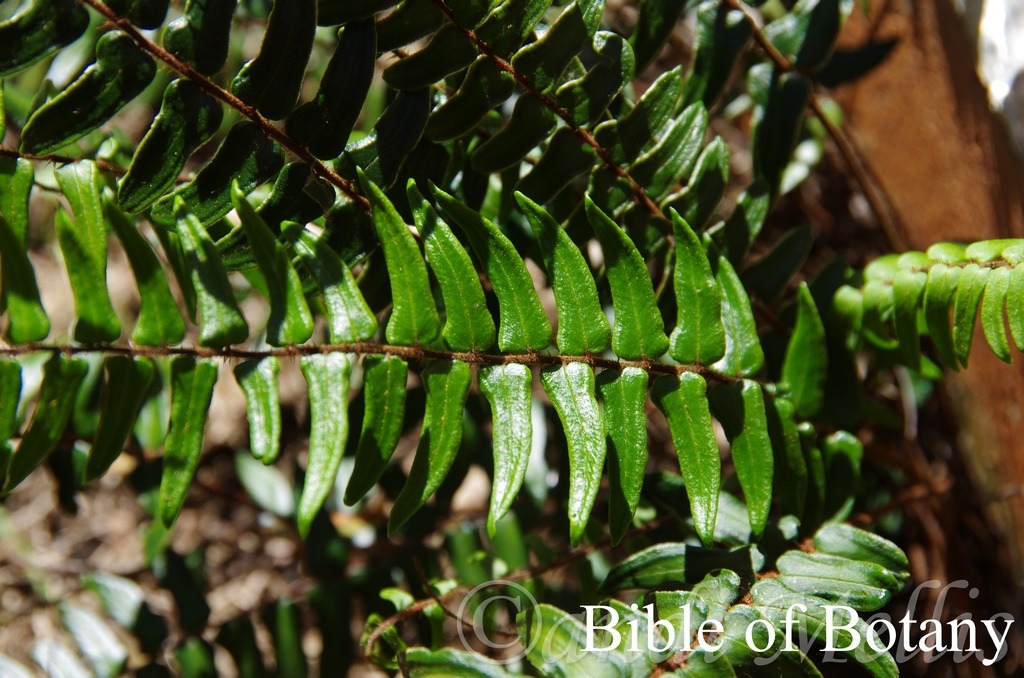
Author’s Garden The Pinnacles NSW
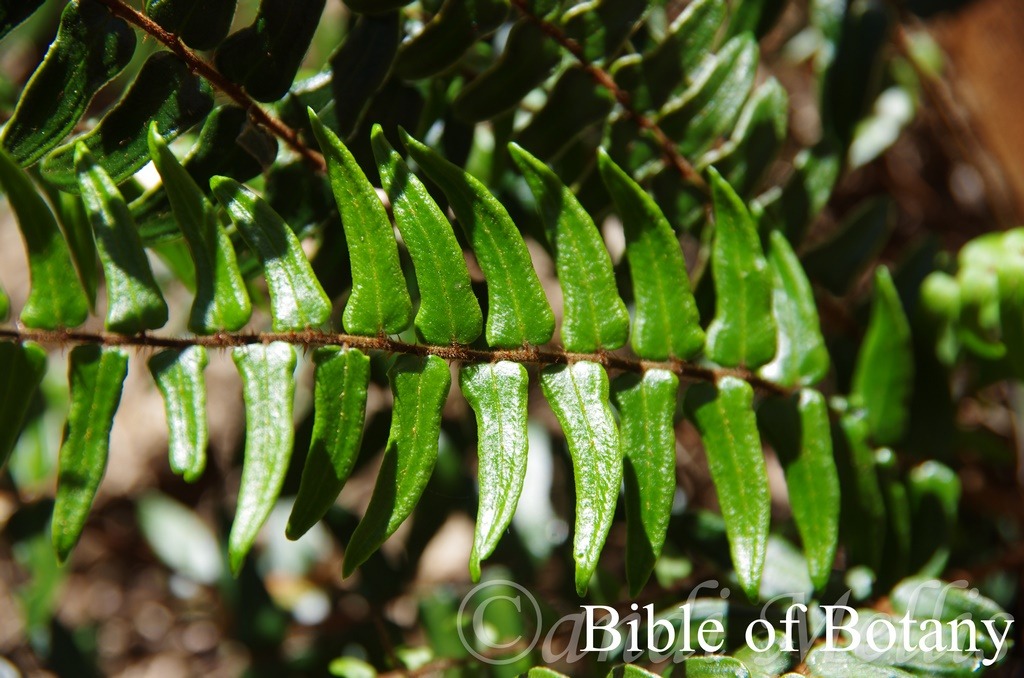
Author’s Garden The Pinnacles NSW
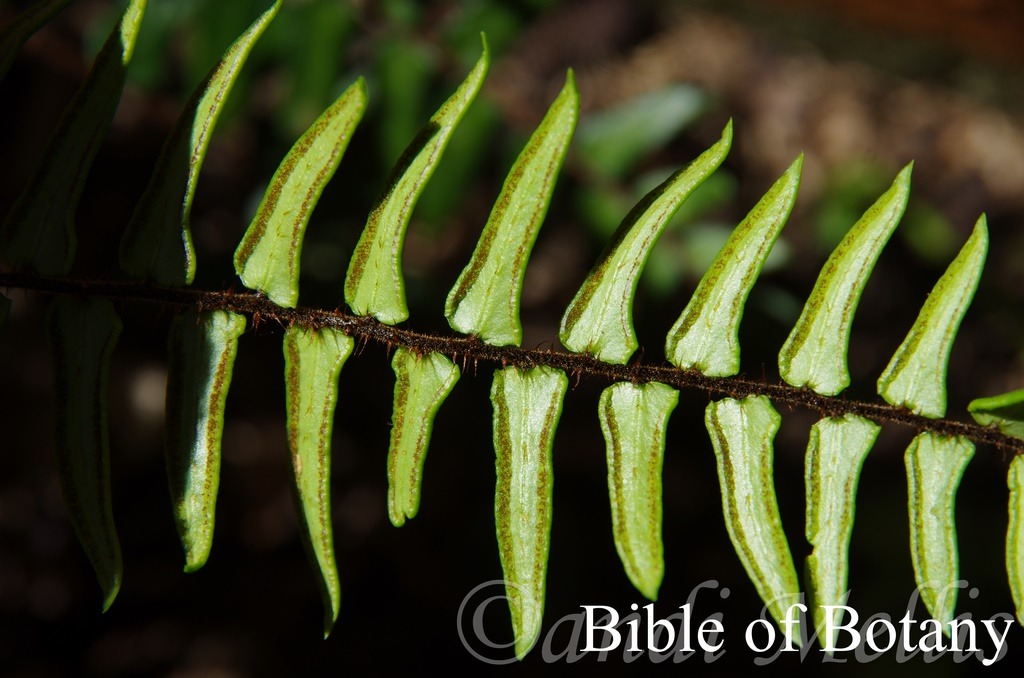
Author’s Garden The Pinnacles NSW
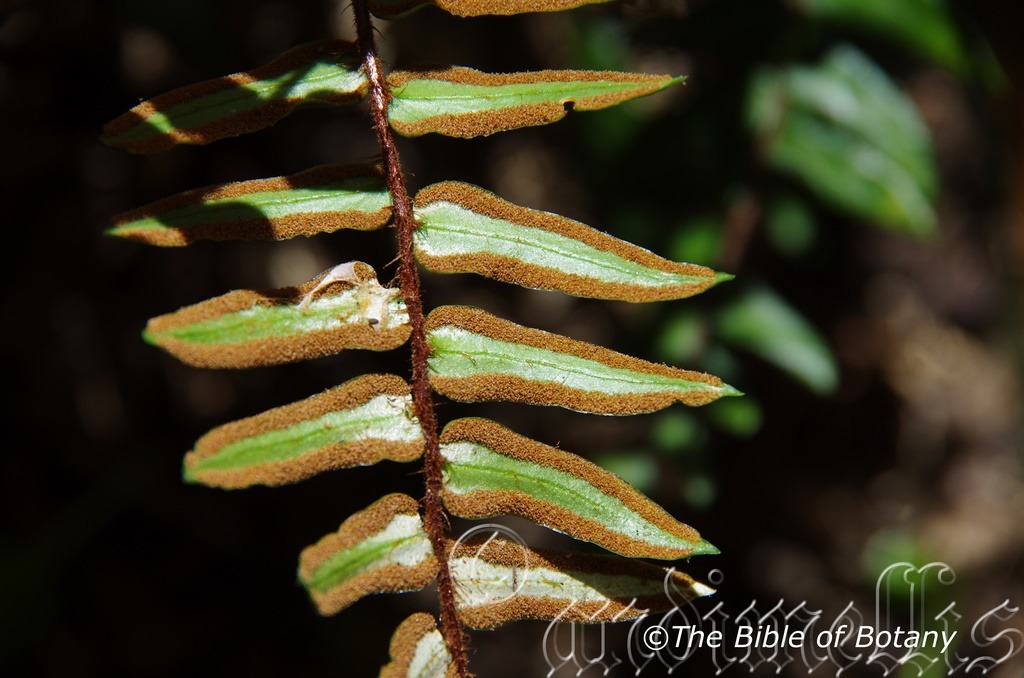
Author’s Garden The Pinnacles NSW
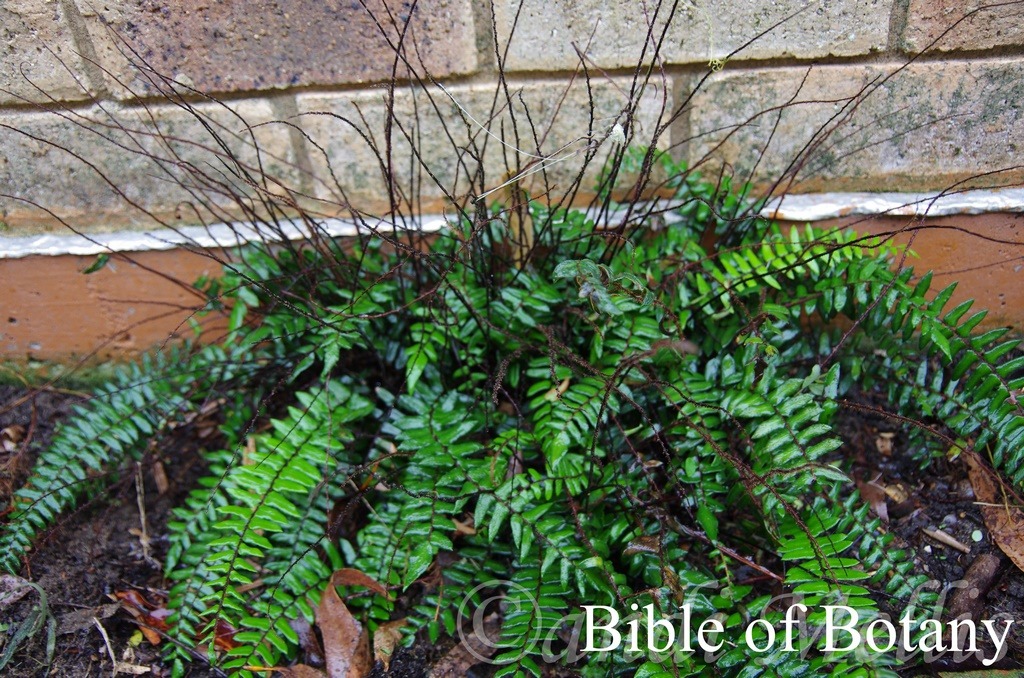
Author’s Garden The Pinnacles NSW
Pellaea nana
Classification:
Unranked: Pteridophyta
Class: Pteridopsida
Order: Polypodiales
Family: Pteridaceae
Subfamily: Cheilanthoideae
Genus: From Pellos, which is Ancient Greek for a deep colour. It refers to leaves, fronds or other organs, which have a deep green colour.
Species: From Nāna which is Latin for dwarf. It refers to plants, which are smaller than other species in the genus.
Sub species:
Common Name: Dwarf Sickle Fern.
Distribution:
Pellaea nana is a wide spread species which is found south from Cairns in far north eastern Queensland to north east of Canberra in south eastern New South Wales. It is found on and east of the Great Dividing Range.
https://avh.ala.org.au/occurrences/search?taxa=Pellaea+nana#tab_mapView
Habitat Aspect Climate:
Pellaea nana prefers light dappled shade to dense shade. It grows in well-developed cool tropical rainforests, warm sub-tropical rainforests or wet Eucalyptus forests. The altitude ranges from 10 meters ASL to 1000 meters ASL.
The temperatures range from minus 3 degrees in August to 36 degrees in January.
The rainfall ranges from lows of 900mm to an average of 3200mm.
Soil requirements:
Pellaea nana prefers sandy loams to medium clays with a high proportion of leaf litter. The soils are usually derived from decomposed brown or black basalts close to the parent rocks. The soils pH ranges from 5pH to 6.5pH. It does not tolerate of waterlogged soils. Non saline soils to moderately saline soils are tolerated.
Height & Spread:
Wild Plants: 0.15m to 0.25m by 1m to 1.5m.
Characteristics:
Pellaea nana grows as a small fern with slender, medium creeping, glossy, black rhizome. They measure 2mm to 2.5mm in diameter and are covered in narrowly ovate caduceous and persistent pale scales.
Pellaea nana’s has simple fronds. The fronds measure 200mm to 500mm in overall length. The slender 80mm to 300mm stipes a glossy black and glabrous and covering in narrow pale scales becoming less dense as they approach the apex. The stipes measure 100mm to 250mm in length.
There are 25 to 65 alternate pinnae to a stipe. The oblong to oblong-linear pinnae measure 5mm to 25mm in length by 2.5mm to 7mm in width. The bases are asymmetrical with one side being broadly cuneate to rounded while with one side is hastate. The apexes are acute. The discolourous laminas are deep sea-green, dull to semi glossy on the upper lamina while the lower lamina is paler. The margins are usually entire however on rare occasions can be finely crenate. It is flat or slightly undulating. The petioles measure 0mm to 2mm in length.
The fertile fronds are identical to the sterile fronds. The sori are in a 1mm continuous band along the margin of the pinnae.
Spores are very small. It is a deep tan brown to chocolate brown in colour.
Wildlife:
Pellaea nana’s wildlife is unknown to the author.
Cultivation:
Pellaea nana makes an excellent ground cover for areas when there is filtered light to dense shade. It always looks green and fresh especially when adequate ground moisture is retained in the soil. It is very suitable on medium clays to heavy clay soils and are most suitable for small medium and large gardens close to the coast in warm temperate, warm sub-tropical or cool tropical gardens. It is cold tolerant to temperatures as low as minus 3 degrees once established.
It is most suitable for use as a rainforest understory plant When they will colonize banks. They like plenty of leaf litter to help increase soil fertility, maintain soil moisture and to maintain a cool root zone.
Large frog or fish ponds are made the more attractive When surrounded by this fern which can Spread over large areas if given the opportunity without becoming problem some. The size makes for a balanced setting.
Propagation:
Fern Spores: All ferns that are declared rare, vulnerable or endangered are protected by Federal and State Laws and must not be removed from the wild unless you are a land developer, mining company or main Roads department etc. This includes bulbs, roots, leaves and flowers. No part of any plant can be removed from Federal, State or Local Government land without the prior permission of the authority and this includes the spore.
Most people are put off at the thought of growing ferns from spore. Like all plants that produce their offspring from seed or spore the methods are basically the same. Remember nature has been doing this for millions of years and has been very successful. I have had excellent results growing over 200 different species of Australian ferns so don’t be afraid. Give it a go.
Step 1. Select spore from the fern fronds. Wait until the fern is just starting to release its spore. Rinse the fronds under clean running water and dry. This is to wash off any other spores from rogue ferns that may have settled onto the fronds. (There is nothing worse than having common brake or common soft bracken contaminating a prized tree fern or epiphyte.)
Step 2. Place the dry fronds in a clean brown paper bag and keep them in a cool dark place like the linen closet for about a week to ten days before you are ready to sow the spore. The exception to this rule applies to ferns, which produce green spores. These must be sown immediately that they are released. Todea Barbara is a good example of a fern, which produces green spore.
Step 3. Take a large ice cream container, a small ice cream container and a clean clear plastic bag large enough to seal the large ice cream container and three or four milk bottle tops.
Step 4. Punch or drill 6 to 10 5mm holes in the bottom of the small ice cream container.
Step 5. Wash both containers, tops and plastic bag so that they are very clean and sterile.
Step 6. Use a clean fine seed raising mi. We used 30mm fine sand, 30mm peat and 30mm perlite and 10mm vermiculite. We used crushed basalt, crusher dust and peat in a 50:50 ratio for epiphytes. Moisten the mix enough that water does not run out when the mix is squeezed between the fingers.
Step 7. Place the moisten mix (Enough to half fill the small ice cream container) in the microwave oven with a large glass of water for 7 or 8 minutes, until the water is boiling. Allow them to cool in the oven. You will need the water later so do not tip it out.
Step 8. Take the brown paper bag out of the linen closet. Shake the bag and remove the fronds. You should have a yellow, brown, black or rarely greenish brown or ochre powder or very fine, small round pin head size spore depending on the specie involved.
Step 9. Remove the mixture from the oven once it has cooled and place it in the small ice cream container and level.
Step 10. Sprinkle the spore sparsely over the mixture in the small ice cream container.
Step 11. Place the milk bottle tops in the large ice cream container with the flat surface facing down. Place the small ice cream container in the large ice cream container so that it is sitting on the milk bottle tops.
Step 12. Remove the water from the microwave and pour it into the larger ice cream container so there is 25mm to 30mm of water in the bottom.
Step 13. Place the ice cream containers in the plastic bag and seal. Step 14. Place the contents and bag in a warm shady place preferably 50mm to 70mm shade depending on the specie. Shade houses and some window sills are ideal.
Step 15. The surface should turn green within a week to two weeks. The prothallus will then develop. From the prthalus the first true fronds will appear. Wait until the ferns are 20mm to 35mm in height before you attempt to transplant them. Once they are ready open the bag up slightly and allow the air to flow around the little ferns. Every 3 to 5 days open the bag a little further so the ferns get use to their new environment. Allow them a week to two weeks to harden off before you transplant them following the removal of the plastic bag. Carefully prick them out into 50mm standard squat tubes as you would any seedling.
Do not try to transplant them as single plants as they are still a little delicate still.
Once the smaller ones again reach 50mm to 70mm you may wish to divide the stronger and hardier individual plants into smaller clumps in 100mm squat pots.
Step 16. We fertilized with seaweed, fish emulsion or organic chicken pellets soaked in water on an alternate basis until established. Fertilize every two months for one year even when in the ground.
Further Comments from Readers:
Hi reader, it seems you use The Bible of Botany a lot. That’s great as we have great pleasure in bringing it to you! It’s a little awkward for us to ask, but our first aim is to purchase land approximately 1,600 hectares to link several parcels of N.P. into one at The Pinnacles NSW Australia, but we need your help. We’re not salespeople. We’re amateur botanists who have dedicated over 30 years to saving the environment in a practical way. We depend on donations to reach our goal. If you donate just $5, the price of your coffee this Sunday, We can help to keep the planet alive in a real way and continue to bring you regular updates and features on Australian plants all in one Botanical Bible. Any support is greatly appreciated. Thank you.
In the spirit of reconciliation we acknowledge the Bundjalung, Gumbaynggirr and Yaegl and all aboriginal nations throughout Australia and their connections to land, sea and community. We pay our respect to their Elders past, present and future for the pleasures we have gained.
Pellaea paradoxa
Classification:
Unranked: Pteridophyta
Class: Pteridopsida
Order: Polypodiales
Family: Pteridaceae
Subfamily: Cheilanthoideae
Genus: From Pellos, which is Ancient Greek for a deep colour. It refers to leaves, fronds or other organs, which have a deep green colour.
Species: From Pará, which is a Greek prefix that is usually attached to a descriptive verb and stands for to be close to, near, side by side or beside and Doxos, which is Greek for unbelievable. It usually refers to grasses, which have the growth habit of bushes in the desert rather than a typical grass.
Sub species:
Common Name:
Distribution:
Pellaea paradoxa is a wide spread species which is found south from Kenilworth in Queensland to Wollongong in central eastern New South Wales. It is mainly found on and east of the Great Dividing Range.
https://avh.ala.org.au/occurrences/search?taxa=Pellaea+paradoxa#tab_mapView
Habitat Aspect Climate:
Pellaea paradoxa prefers light dappled shade to dense shade. It grows in well-developed cool tropical rain forests, warm sub-tropical rain forests, warm temperate rain forests or closed moist Eucalyptus forests often in rock crevices or other niche areas when moisture is retained for longer periods. The altitude ranges from 10 meters ASL to 1100 meters ASL.
The temperatures range from minus 3 degrees in August to 36 degrees in January.
The rainfall ranges from lows of 900mm to an average of 3200mm.
Soil requirements:
Pellaea paradoxa prefers better quality sandy loams to medium clays with a generous layer of forest litter. The soils are usually derived from decomposed brown or black basalts close to the pant rock. The soils pH ranges from 5pH to 6.5pH. It does not tolerate of waterlogged soils. Non saline soils to moderately saline soils are tolerated.
Height & Spread:
Wild Plants: 0.15m to 0.25m by 1m to 1.5m.
Characteristics:
Pellaea paradoxa grows as a small fern with a slender medium creeping, glossy, black rhizome. They measure 2mm to 2.5mm in diameter and are covered in narrowly ovate caduceous and persistent pale scales.
Pellaea paradoxa’s has simple fronds. The fronds measure 200mm to 600mm in overall length. The slender 80mm to 300mm stipes are glossy black and glabrous and covering in narrow pale scales becoming less dense as they approach the apex.
There are 9 to 23 alternate pinnae to a stipe. The ovate to lanceolate falcate pinnae measure 35mm to 80mm in length by 10mm to 40mm in width. The bases are cordate while the apexes are acute. The discolourous laminas are deep sea-green, dull to semi glossy on the upper lamina while the lower lamina is paler. The margins are entire, flat or slightly undulating.
The petioles measure 1mm to 5mm in length.
The fertile fronds are identical to the sterile fronds. The sori are in a 2mm to 3mm continuous band along the margin of the pinnae.
The spores are very small and are deep tan-brown to chocolate-brown in colour.
Wildlife:
Pellaea paradoxa’s wildlife is unknown to the author.
Cultivation:
Pellaea paradoxa makes an excellent ground cover for areas when there is filtered light to dense shade. It always looks green and fresh especially when adequate ground moisture is retained in the soil. It is very suitable on medium clays to heavy clay soils and are most suitable for small medium and large gardens close to the coast in warm temperate, warm sub-tropical or cool tropical gardens. It is cold tolerant to temperatures as low as minus 3 degrees once established.
It is most suitable for use as a rainforest understory plant when they will colonize banks. They like plenty of leaf litter to help increase soil fertility, maintain soil moisture and to maintain a cool root zone.
Large frog or fish ponds are made the more attractive When surrounded by this fern which can Spread over large areas if given the opportunity without becoming problem some. The size makes for a balanced setting.
Propagation:
Fern Spores: Most people are put off at the thought of growing ferns from spore. Like all plants that produce their offspring from seed or spore the methods are fairly similar. Remember nature has been doing this for millions of years and has been very successful. I have had excellent results with almost every fern in Australia so give it a go.
Step 1.Select spore from the fronds of Pellaea paradoxa’s that is just starting to lease its spore. Rinse the fronds under clean running water and dry.
Step 2.Place the dry fronds in a brown paper bag and keep them in a cool dark place like the linen closet for about a week before you are ready to sow the spore.
Step 3.Take a large ice cam container, a small ice cam container and a clean clear plastic bag large enough to cover the large ice cam container.
Step 4.Wash both containers so that It is very clean.
Step 5.Punch some small holes in the small ice cam container.
Step 6.Use a clean fine seed raising mix that has had some clay or crusher added to it about 10mm. Then moisten the mix.
Step 7.Place this mix in the microwave oven for 7 or 8 minutes with a glass of water. Allow them to cool in the oven. You will need the water later so do not tip it out.
Step 8.Take the brown paper bag out of its cupboard. Shake the bag and move the fronds. You should have a brown powder or small round pepper size spore.
Step 9.Remove the mixture from the oven once it has cooled and place it in the small ice-cream container.
Step 10.Sprinkle the spore over the mixture in the small ice-cream container.
Step 11.Place the small ice-cream container in the large ice-cream container.
Step 12.Remove the water from the microwave and tip it into the ice-cream container so there is 20mm to 25mm of water in the bottom.
Step 13.Place the ice-cream containers in the plastic bag and seal.
Step 14.Place the contents and bag in a warm shady place. Shade houses and some window sills are ideal.
Step 15.Wait until the ferns a 20mm to 30mm high before you attempt to transplant them. Once it is ready open the bag up and allow the air to flow around them. Every the days open the bag a little further so the ferns get use to their new environment. Allow them a week or two to harden off before you transplant them into 50mm standard tubes. Do not try to transplant them as single plants as it is a little delicate still. Fertilize using Seaweed, fish emulsion or organic chicken pellets soaked in water on an alternate basis. Once they reach 50mm to 60mm start separating the strongest ones and again do not move them far from their original position. After a few weeks the ferns will power away without any setbacks.
Fertilize using Seaweed, fish emulsion or organic chicken pellets soaked in water and apply the liquid on an alternate basis. Fertilize every 2 months until the plants are established then twice annually in September and March to maintain better colour health and vitality.
Further Comments from Readers:
Hi reader, it seems you use The Bible of Botany a lot. That’s great as we have great pleasure in bringing it to you! It’s a little awkward for us to ask, but our first aim is to purchase land approximately 1,600 hectares to link several parcels of N.P. into one at The Pinnacles NSW Australia, but we need your help. We’re not salespeople. We’re amateur botanists who have dedicated over 30 years to saving the environment in a practical way. We depend on donations to reach our goal. If you donate just $5, the price of your coffee this Sunday, We can help to keep the planet alive in a real way and continue to bring you regular updates and features on Australian plants all in one Botanical Bible. Any support is greatly appreciated. Thank you.
In the spirit of reconciliation we acknowledge the Bundjalung, Gumbaynggirr and Yaegl and all aboriginal nations throughout Australia and their connections to land, sea and community. We pay our respect to their Elders past, present and future for the pleasures we have gained.
Peltophorum pterocarpum
Classification:
Unranked: Eudicots
Unranked: Rosids
Order: Fabales
Family: Fabaceae
Genus: From Pelte which is or Peltatus which is Latin for a small shield and Phoreo which is Greek to bear or bearing. It refers to the shape of the stigma which is shaped like a small curved shield.
Species: From Pteron, which is Ancient Greek for a bird’s wing and Karpós, which is Ancient Greek for a fruit. It usually refers to pods or dry fruits, which have a distinct wing down each side.
Sub specie:
Common Name: Yellow Poinciana.
Distribution:
Peltophorum pterocarpumis restricted to the northern coastal areas of the Northern Territory east from the Daly River to Nhulunbuy. There is an isolated population on Dampier Peninsula near Broome in Western Australia which may prove to be a garden escapee.
https://avh.ala.org.au/occurrences/search?taxa=Peltophorum+pterocarpum#tab_mapView
Habitat Aspect Climate:
Peltophorum pterocarpum prefers dappled shade to full sun. It grows in open monsoonal forests, closed Eucalyptus forests or coastal river flood plains. The altitude ranges from 2 meters ASL to 150 meters ASL.
The temperatures range from 12 degrees in July to 40 degrees in January.
The rainfall ranges from lows of 1200mm to 2000mm average per annum.
Soil requirements:
Peltophorum pterocarpum prefers medium clays or medium silts to heavy silts with copious quantities of organic matter. The soils are usually alluvial deposits. The soils pH ranges from 5pH to 7pH. It does not tolerate of waterlogged soils. Non saline soils to extremely saline soils are tolerated as are salt laden winds.
Height & Spread:
Wild Plants: 5m to 7m by 5m to 7m
Characteristics:
Peltophorum pterocarpum grows as a small wide spreading tree. The pale grey trunk is glabrous and often covered in lichens. The branches are olive-green while the stems are olive-green and densely covered in rusty brown hirtellous hairs.
The alternate bipinnate leaves measure 200mm to 400mm in length by 90mm to 160mm in width. The petiolules measure 75mm to 135mm while the individual petioles are sessile to 0.3mm in length. The asymmetrical oblong individual leaflets measure 12mm to 20mm in length by 6mm to 9mm in width. The base is rounded, oblique while the apex is emarginate. The concolourous laminas are grass-green and glabrous. The new growth and leaves are densely covered in caduceus rusty brown hirtellous hairs. The leaf margins are entire and flat. The leaflets curve upwards from the petiolule. The mid vein is not prominent on either lamina and is not clearly visible.
The inflorescences of Peltophorum pterocarpum are born on large panicles from the terminals. The Peduncles and pedicels are densely covered in rusty brown hirtellous hairs. The pedicels measure 8mm to 10mm in length. The calyxes are densely covered in rusty brown hirtellous hairs and measure 4.5mm to 5mm in length while the narrowly triangular lobes measure 4mm to 5mm in length. The 5 broadly spathulate to ovate, bright yellow petals have an ochre oblong raised longitudinal section from the base for 50mm of its length. The petals are sparsely to moderately covered in white pubescent hairs near the base.
They measure 15mm to 18mm in length by 11mm to 15mm in width. The margins and apex are wavy and crumpled, entire or unevenly crenate.
The 10 free stamens are cream with orange-brown anthers. The filaments measure 9mm to 15mm in length while the oblong anthers measure 4mm to 5mm in length by 2mm to 2.5mm in width.
The lime green style divides into a trilobed stigma. Peltophorum pterocarpum flowers from Mid-August to mid-September and mid-February to mid-March.
Peltophorum pterocarpum’s fruits are a flattened, falcate pod with wings or a small flat margin. The pods measure 50mm to 160mm in length by 10mm to 40mm in width at the widest point. The pods turn a rich glossy, coppery-brown when ripe. It is 1 to 5 seeds per pod which measure 8mm to 9mm in length by 3.5mm to 4.4mm in diameter.
Wildlife:
Peltophorum pterocarpum’s flowers are occasionally visited by many small butterflies, native bees and beetles. The pods are often eaten by an unknown beetle or weevil larvae.
Cultivation:
Peltophorum pterocarpum is a magnificent medium tree that deserves a place in every warm frost free native or exotic garden in the subtropics to the tropics, monsoonal regions and semi-arid areas of Australia. It is ideal in almost every setting at the edge of a rain forest in court yards, around swimming pools or larger rockeries where their size is balanced. In cultivation it grows from 6 meters to 9 meters in height by 7 meters to 10 meters in diameter where grown in the open.
It grows exceptionally well on lighter soils where deep leaf litter keeps the soil cool and moisture at an even level. If these requirements are met they will establish themselves quickly forming a beautiful umbrella shaped tree with light to dense shade beneath. It is moderately drought resistant in their rainfall zones. It should not be grown close to paths as it forms a moderately large root system close to the trunk on larger trees.
Add to the above, if it is given an adequate supply of native fertilizers on a regular basis the plants will respond with spectacular flowering over a long period. Ensure that the whole plant or at least most of it is on display from most sections of the garden as the flowers are a real bonus.
Be imaginative when planting in mass. Use the plants in different configurations and use curves for a park scene or scatter them in a bush scene they will grow upright with a smaller spread but will cover the ground in a yellow carpet when in flower.
When it is in flower these plants will catch your attention and the viewer will be transfixed on the display especially if it is under planted with purples or violets for something ally strong and vibrant.
Propagation:
Seeds: The seeds of Peltophorum pterocarpum can be moved easily from the plants as they dry. Once they have finished flowering and the fruits begin to shed their seeds place an old sheet below the plants and keep a close eye on it. Peg it down so it doesn’t blow around. Clean the rubbish off and sieve the material for the seeds or pick them out.
The seeds store very well with viability lasting several years to a decade or longer. The seeds need to be treated to hasten germination and to encourage even germination. This can be done by rubbing one end of the seed over fine sandpaper. Another method is to drop the seeds into boiling water and allow it to cool. Allow the seeds to soak for a period of 8 to 12 hours.
Sow freshly treated seeds directly into a seed raising mix, keeping them moist not wet. When the seedlings are 20mm to 25 mm tall, prick them out and plant them into 50mm native tubes using a good organic mix.
As the seedlings roots reach the bottom of the tubes plant them out into their permanent position. Do not delay.
Fertilize using seaweed, fish emulsion or organic chicken pellets soaked in water on an alternate basis. Fertilize every two months until the plants are established then twice annually in early September and March to maintain better health, vitality and flowering.
Further Comments from Readers:
Hi reader, it seems you use The Bible of Botany a lot. That’s great as we have great pleasure in bringing it to you! It’s a little awkward for us to ask, but our first aim is to purchase land approximately 1,600 hectares to link several parcels of N.P. into one at The Pinnacles NSW Australia, but we need your help. We’re not salespeople. We’re amateur botanists who have dedicated over 30 years to saving the environment in a practical way. We depend on donations to reach our goal. If you donate just $5, the price of your coffee this Sunday, We can help to keep the planet alive in a real way and continue to bring you regular updates and features on Australian plants all in one Botanical Bible. Any support is greatly appreciated. Thank you.
In the spirit of reconciliation we acknowledge the Bundjalung, Gumbaynggirr and Yaegl and all aboriginal nations throughout Australia and their connections to land, sea and community. We pay our respect to their Elders past, present and future for the pleasures we have gained.
Pennantia cunninghamii
Classification:
Unranked: Eudicots
Unranked: Asterids
Order: Apiales
Family: Pennantiaceae
Genus: From Pennant, which is Latin for a flag. It probably refers to the type species which is the flagship of the species with a single species growing on the Three King Islands of New Zealand or the large leaves of the species drooping like flags.
Species: Is named in honour of Allan Cunningham; 1791-1839, who was an Australian explorer, botanist and collector of plants.
Sub specie:
Common Name: Brown Beech.
Distribution:
Pennantia cunninghamii is restricted to the northern coastal areas of the Northern Territory. There are 2 disjunct populations near Broome and Carnarvon in Western Australia which may prove to be a garden escapee.
https://avh.ala.org.au/occurrences/search?taxa=Pennantia+cunninghamii#tab_mapView
Habitat Aspect Climate:
Pennantia cunninghamii prefers dappled shade to full sun. It grows in cool well developed tropical rainforest to cool well developed sub-tropical rainforest particularly by creeks or streams. The altitude ranges from 20 meters ASL to 1180 meters ASL however in tropical Queensland the plants are only found from 700 meters ASL to 1100 meters ASL.
The temperatures range from minus 2 degrees in July to 36 degrees in January.
The rainfall ranges from lows of 800mm to 2000mm average per annum.
Soil requirements:
Pennantia cunninghamii prefers better quality light gritty clays to medium clays with copious quantities of organic matter. The soils are usually derived from brown Basalt, Black Basalt and Granite. The soils pH ranges from 5pH to 6pH. It does not tolerate of waterlogged soils. Non saline soils to extremely saline soils are tolerated as are salt laden winds.
Height & Spread:
Wild Plants: 20m to 35m by 8m to 12m.
Characteristics:
Pennantia cunninghamii grows as a tall upright tree with irregularly fluted trunk. The bark is deep grey to deep brown often with tessellated patches on the lower sections. The branchlets are often strongly zigzagged, pale creamy-grey and glabrous.
The alternate elliptic or oblong-ovate leaves are slightly asymmetrical and measure 70mm to 180mm in length by 40mm to 80mm in width. The glabrous petioles measure 7mm to 20mm. The bases are cuneate to broad cuneate while the apexes are acuminate. The concolourous laminas are grass-green, glabrous and glossy. The laminas curve slightly upwards from the mid vein to the margins and decurve slightly near the apexes. The margins are entire and undulating. The mid vein is prominent on the lower lamina and is clearly visible from the upper lamina while the lateral veins are slightly prominent and strongly reticulate. The pit like domatia is prominent in the forks of the lateral and secondary veins.
The juvenile leaf margins are entire or toothed.
The bisexual or unisexual (male) inflorescences are born on large panicles from the terminals or upper leaf axils. The panicles measure 50mm to 120mm in length. The peduncles and pedicels are cream to creamy-yellow and glabrous. The pedicels measure 1mm to 2.5mm in length. The 5 creamy-yellow sepals are insignificant. The 5 white, glabrous, oblong petals are strongly flexed with an obtuse apex. The petals measure 3mm to 4.5mm in length by 1mm to 1.5mm in width.
The 5 white filiform filaments measure 7mm to 8mm in length. The narrow oblong, versatile anthers area deep creamy-yellow and measure 2.5mm to 3mm in length by 2mm to 2.5mm in width.
The yellowish-green ovary is glabrous. The stout narrow conical style measures 1.6mm to 2.5mm in length. The flowers appear from late December to early February.
The fruits are ovoidal to ellipsoidal drupes. The drupes measure 10mm to 16mm in length by 11mm to 12mm in diameter. The green drupes turn a rich glossy black when ripe. The single seed measures 9mm to 15mm in length by 7mm to 9mm in diameter.
Wildlife:
The fruits are eaten by the Satin Bowerbird, Ptilonorhynchus violaceus.
Cultivation:
Pennantia cunninghamii is a magnificent medium tree that deserves a place in every warm frost free native or exotic garden in the subtropics to the tropics, monsoonal regions and semi-arid areas of Australia. It is ideal in almost every setting at the edge of a rain forest in the centre of a rainforest or as a specimen tree. In cultivation it grows from 16 meters to 20 meters in height by 10 meters to 15 meters in diameter when grown in the open.
It grows exceptionally well on lighter soils When deep leaf litter keeps the soil cool and moisture at an even level. If these requirements are met they will establish themselves quickly forming a beautiful, spreading, columnular shaped tree with light to dense shade beneath. It is moderately drought resistant in their rainfall zones once established. It should not be grown close to paths or essential underground services as they form a moderately large root system close to the trunk and will develop a large buttress on older trees.
Add to the above, if it is given an adequate supply of native fertilizers on a regular basis the plants should respond with spectacular flowering annually. Ensure that the whole plant or at least most of it is on display from most sections of the garden as the flowers are a real bonus.
Be imaginative when planting in mass. Use the plants in different configurations and use curves for a park scene or scatter them in a bush scene they will grow more upright with a smaller Spread but will cover the ground in a yellow carpet when in flower. Use trees that have strong contrasting barks for a stronger affect like Eucalyptus grandis, Acacia melanoxylon, Araucaria bidwillii, Araucaria cunninghamii or Elaeocarpus grandis a just a few to mention quickly.
Propagation:
Seeds: The seeds can be removed easily from the plants as they dry. Once they have finished flowering and the fruits begin to shed their seeds in winter place an old sheet below the plants and keep a close eye on it. Peg it down so it doesn’t blow around. Clean the rubbish off and sieve the material for the seeds or pick them out.
The seeds store well with viability lasting at least 2 years. The seeds need to be treated to hasten germination and to encourage even germination. This can be done by washing the seeds thoroughly prior to sowing in spring. Allow the seeds to soak for a period of 8 to 12 hours.
Sow freshly treated seeds directly into a seed raising mix, keeping them moist not wet. Place the trays in a warm position beneath 50mm to 70mm shade cloth and keep moist. When the seedlings are 20mm to 25mm tall, prick them out and plant them into 50mm native tubes using a good organic mix.
As the seedlings roots reach the bottom of the tubes plant them out into their permanent position.
Fertilize using seaweed, fish emulsion or organic chicken pellets soaked in water on an alternate basis. Fertilize every two months until the plants are established then twice annually in early September and March to maintain better health, vitality and flowering.
Further Comments from Readers:
Hi reader, it seems you use The Bible of Botany a lot. That’s great as we have great pleasure in bringing it to you! It’s a little awkward for us to ask, but our first aim is to purchase land approximately 1,600 hectares to link several parcels of N.P. into one at The Pinnacles NSW Australia, but we need your help. We’re not salespeople. We’re amateur botanists who have dedicated over 30 years to saving the environment in a practical way. We depend on donations to reach our goal. If you donate just $5, the price of your coffee this Sunday, We can help to keep the planet alive in a real way and continue to bring you regular updates and features on Australian plants all in one Botanical Bible. Any support is greatly appreciated. Thank you.
In the spirit of reconciliation we acknowledge the Bundjalung, Gumbaynggirr and Yaegl and all aboriginal nations throughout Australia and their connections to land, sea and community. We pay our respect to their Elders past, present and future for the pleasures we have gained.
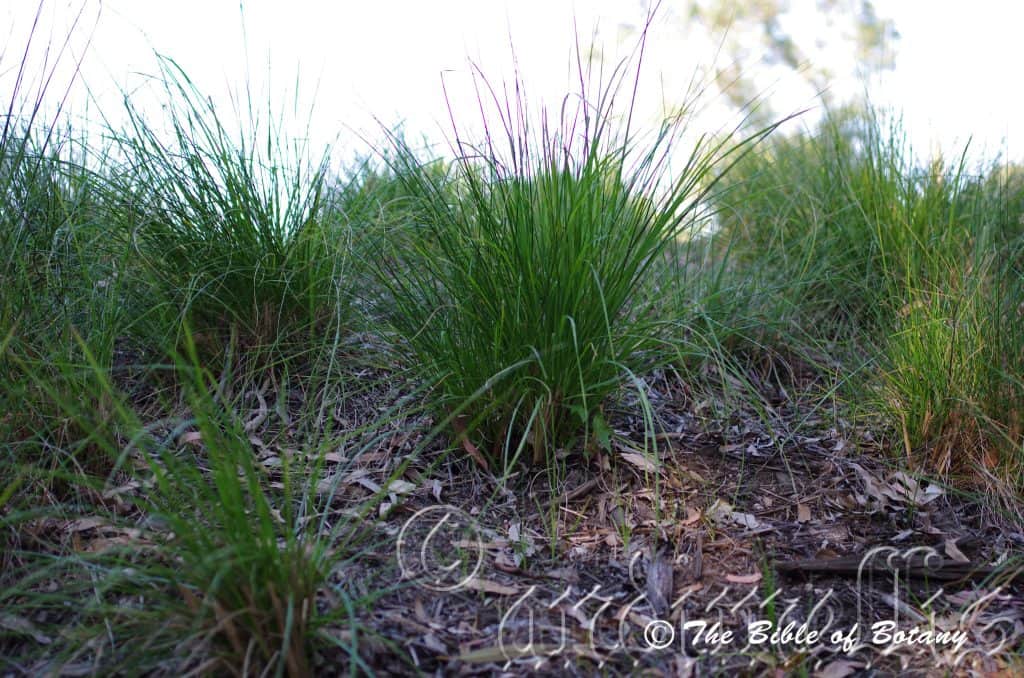
Mount Cootha Botanical Gardens Qld.
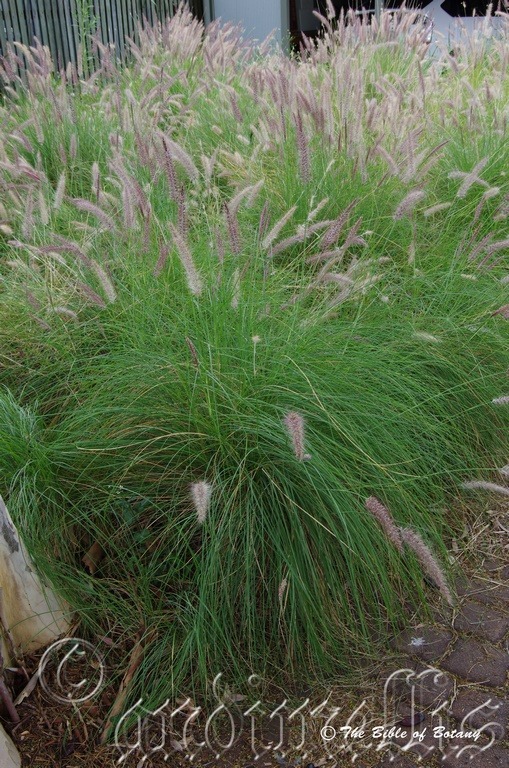
Grange Qld.
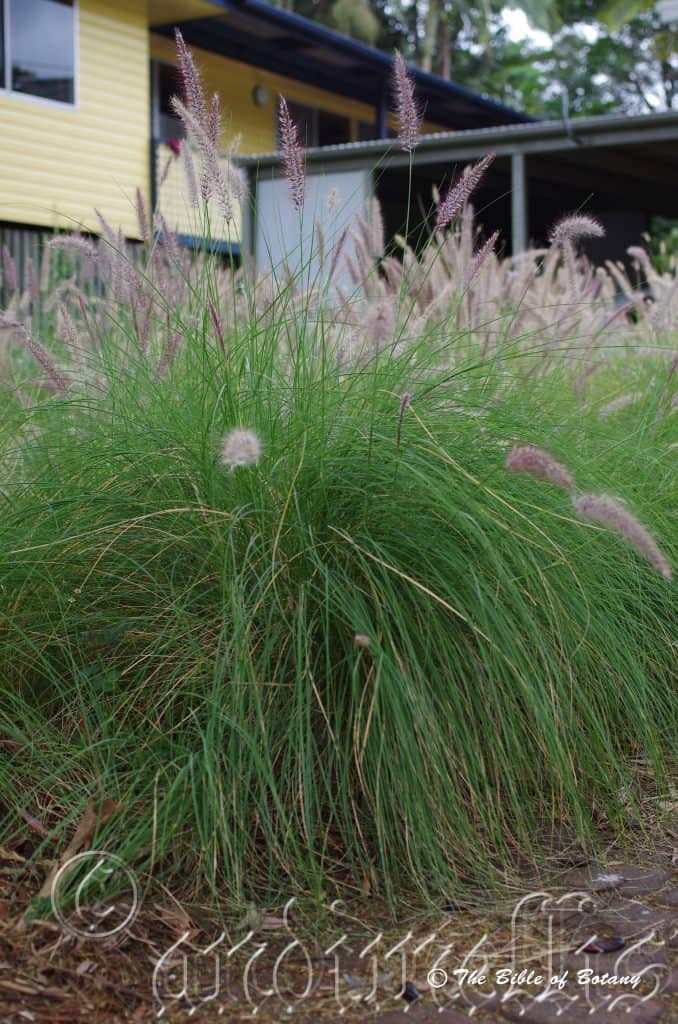
Grange Qld.
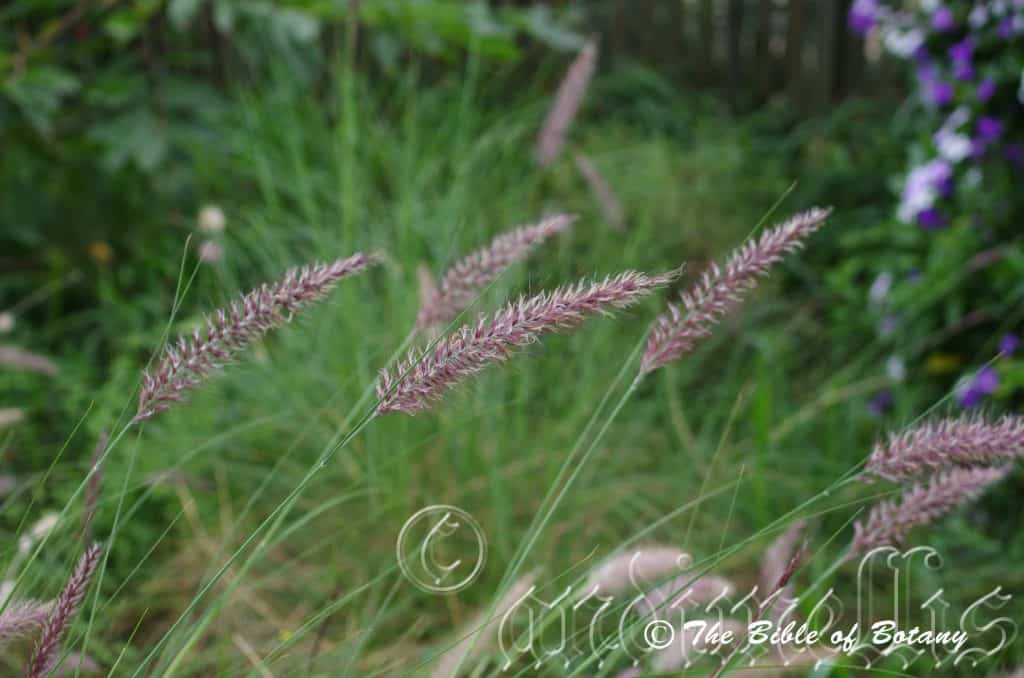
Grange Qld.
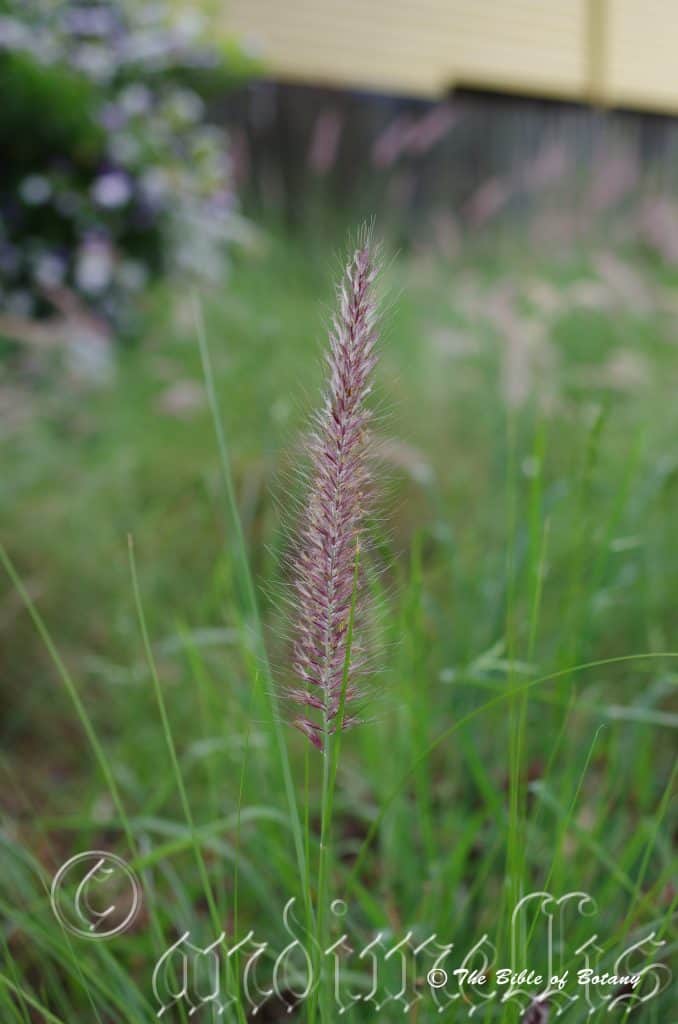
Grange Qld.
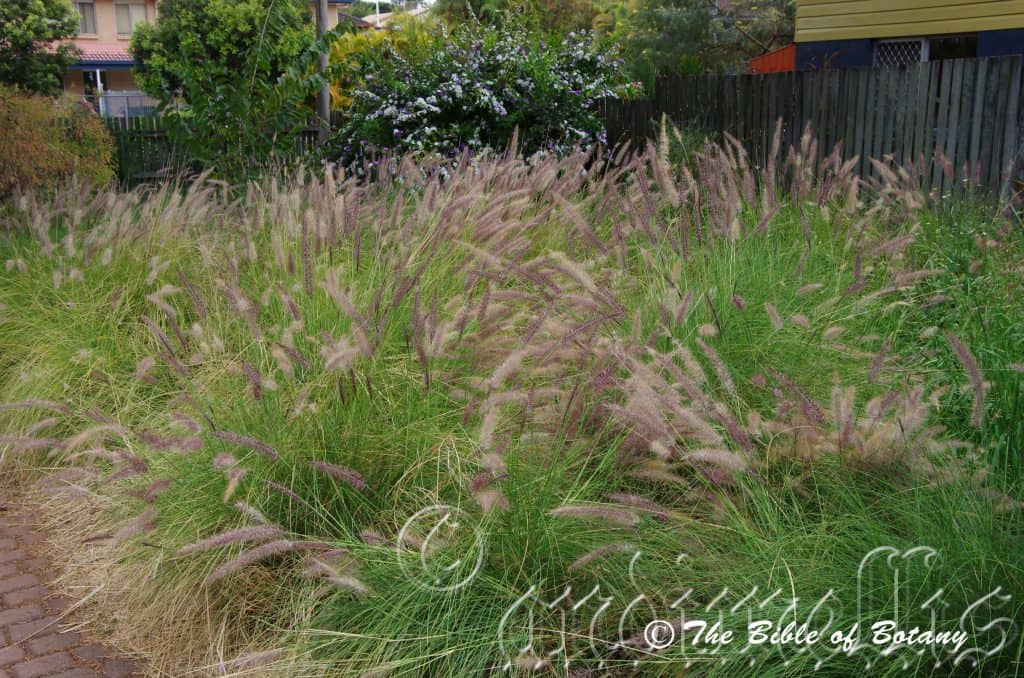
Grange Qld.
Pennisetum alopecuroides
Classification:
Unranked: Monocots
Unranked: Commelinids
Order: Poales
Family: Poaceae
Subfamily: Panicoideae
Genus: From Penna/Penni, which is Latin for a feather and Seta, which is Ancient Greek or Setae, which is Latin for bristly. It refers to structures or organs, which somewhat have a feather form and are covered in long, spiky bristles.
Species: From Alopekouros, which is Ancient Greek for a grass similar to a fox’s tail and Eîdos/Oides, which is Ancient Greek for alike or similar to. It refers to flower spikes or seed heads, which resemble the Alopecuros genus in that they look similar to a fox’s tail.
Sub Species:
Common Name: Swamp Foxtail
Distribution:
Pennisetum alopecuroides is found south from Mount Morgan in central eastern Queensland to Warnambool in southern Victoria. It is found on the western plains, on and east of the Great Dividing Range to the coast. It is found as far west as Elizabeth Springs on Springvale Station and around Aramac and further north on Castle Hill in Townsville.
It is also found at Wool Scour near Launceston in Tasmania.
https://avh.ala.org.au/occurrences/search?taxa=Pennisetum+alopecuroides#tab_mapView
Habitat Aspect Climate:
Pennisetum alopecuroides prefers dappled shade to full sun. It grows on creek, stream and river meander flats in open forests or in open woodlands. The altitude ranges from 5 meter ASL to 870 meters ASL.
The temperatures range from minus 3 degrees in August to 38 degrees in February.
The rainfalls range from lows of 500mm to an average 2000mm annually. The locations along soaks and drainage lines are more important than the actual rainfall in a given area.
Soil requirements:
Pennisetum alopecuroides prefers better quality sandy loams to heavy silts. The soils are usually derived from decomposed granites and alluvial silts and mud. The soils pH. ranges from 4.5pH to 7.5pH. It does not tolerate waterlogged soils. Non saline soils to moderately saline soils are tolerated.
Height & Spread:
Wild Plants: 0.5m to 1m by 1m to 1.3m.
Characteristics:
Pennisetum alopecuroides grows as an erect, tufted perennial with blue-green stems that are glabrous between the nodes. The grass-green to purplish leaf sheaths are clasping and measure 10mm to 38mm in length. The sheath is covered in white hirsute hairs. The ligule is densely covered in short, white ciliate hairs. The plants readily root from the nodes When they touch the ground or in prolonged wet weather.
Pennisetum alopecuroides’s alternate simple leaves are narrow elliptical to broad elliptical and measure 350mm to 600mm in length by 3mm to 6mm in width. The ligule measures 3mm to 4mm in length and is membranous at the base and dividing into long white ciliate hairs at the apexes. The bases are rounded while the apexes taper to a point. The concolourous laminas are mid grass-green and glabrous. The laminas are flat to involute while the margins are entire and covered in white ciliate hairs. The mid vein is slightly prominent on the lower lamina while the longitudinal veins either side of the mid vein are scabrous.
The Inflorescences of Pennisetum alopecuroides are racemes of 70 to 150 individual flowers on the terete racemes. The racemes measure 70mm to 200mm in length by 50mm to 65mm in diameter. The involucres are spreading. The 10 to 45 bristles are unequal. The inner bristles are 2 to 5 times longer than spikelets while the outer a finer and are as long as spikelets.
The lanceolate spikelets are usually solitary or rarely paid and measure 6mm to 8mm in length.
The glumes are dissimilar. The lower glumes are without keels and nerveless and measure 1mm to 1.3mm in length. The upper glumes are without keels and have 5 to 7 nerves and are 30mm to 50mm of the length of the spikelets.
The lower lemma is sterile and is as long as its spikelet. The lower lemma are without keels and have 7 nerves. The upper lemma is bisexual, is as long as its spikelet, are without keels and have 5 to 7 nerves. The palea is suppressed and shorter than its lemmas.
The 2 white filaments have yellow versatile anther. The bifid style is white and feathery.
Pennisetum alopecuroides’s fruits are oblong caryopsis. The grains measure 1.6mm to 2mm in length by 0.7mm to 1mm in diameter. The caryopsis has an acute apex and is glabrous and glossy.
Confusing Species:
Pennisetum alopecuroides’s is a long lived, tufted perennial grass that grows from usually 600mm to 1000mm in height with relatively elongated, purplish pinkish coloured seed heads. The rachis of the seed-head is terete with relatively long bristles that measure 15mm to 30mm in length and are glabrous. Leaves measure 250mm to 750mm in length by 2mm to 6mm in width.
Pennisetum setaceum’s is a long lived, tufted perennial grass that grows from usually 500mm to 1500mm in height with relatively elongated, reddish to pinkish coloured seed heads. The rachis of the seed-head is angular with relatively long bristles that measure 25mm to 40mm in length and are plumose. Leaves measure 150mm to 400mm in length by 1mm to 3mm in width.
Wildlife:
Pennisetum alopecuroides is the host plant for the Wonder Brown butterfly (Heteronympha mirifica), Brown Ringlet Moth (Hypocysta metirius) and Orange Ringlet (Hypocysta adiante).
Cultivation:
Pennisetum alopecuroides is a beautiful soft foliaged mat forming grass for forested areas in the garden. It can look rather weedy in small gardens if not placed in the correct manner. It can be mown with difficulty and it will cover very quickly.
It is often confused with Pennisetum alopecuroides and is being sold as Pennisetum alopecuroides in many non-native and native nurseries. Pennisetum alopecuroides is a native from South Africa and is highly invasive in metropolitan areas in Australia. Pennisetum alopecuroides is a long lived large tufted native grass that sets prolific quantities of seed. Out of its native habitat, so it too is starting to show signs of invasiveness. South Australia is concerned over its introduction to that state. It would be advisable to only grow it with in the areas that it is native to.
It is suitable for light dappled shaded but performs at its best in full sun. Place it near the entrance to rainforests or on riparian flats for erosion control where it performs exceptionally well.
Propagation:
Seeds: Pennisetum alopecuroides’s seeds directly into a seed raising mix. Cover them with 2mm of fine sand and keep moist not wet. Place the tray in a warm sunny position. When the seedlings are 25mm to 50mm tall, prick them out in small groups and plant them into 150mm squat pots using a good organic mix.
Once the seedlings reach 150mm to 200mm in diameter, nip the tips out before planting them out into their permanent position and water thoroughly with our commended fertilizer.
Division: Mow or cut the individual clump down to around 150mm in height. Water and allow to sit for 24 hours. Remove the clump and dissect it into 2 or more pieces. It is best to ensure each tuff has a decent amount of root for best results. Replace the divots with sand. Place the divided tuffs in their new position and water in thoroughly with our commended fertilizer. Keep moist until the new shoots appear in about a week in the warmer months.
Fertilize using seaweed, fish emulsion or organic chicken pellets soaked in water on an alternate basis. Fertilize every two months until the plants are established then twice annually in early September and March to maintain better health, vitality and flowering.
Further Comments from Readers:
Hi reader, it seems you use The Bible of Botany a lot. That’s great as we have great pleasure in bringing it to you! It’s a little awkward for us to ask, but our first aim is to purchase land approximately 1,600 hectares to link several parcels of N.P. into one at The Pinnacles NSW Australia, but we need your help. We’re not salespeople. We’re amateur botanists who have dedicated over 30 years to saving the environment in a practical way. We depend on donations to reach our goal. If you donate just $5, the price of your coffee this Sunday, We can help to keep the planet alive in a real way and continue to bring you regular updates and features on Australian plants all in one Botanical Bible. Any support is greatly appreciated. Thank you.
In the spirit of reconciliation we acknowledge the Bundjalung, Gumbaynggirr and Yaegl and all aboriginal nations throughout Australia and their connections to land, sea and community. We pay our respect to their Elders past, present and future for the pleasures we have gained.
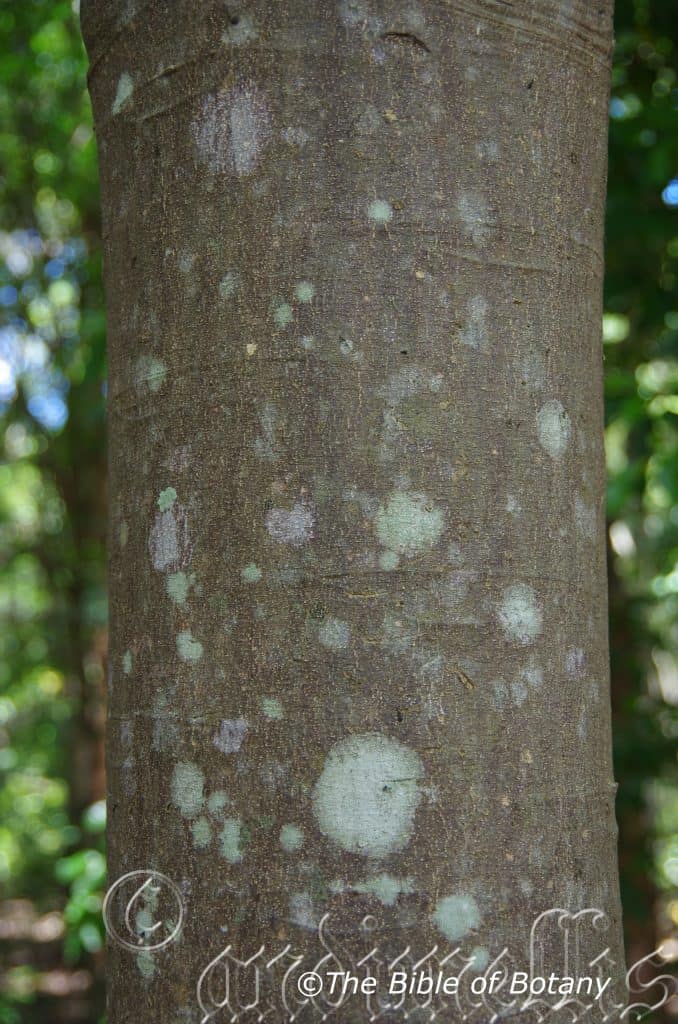
NCBG Coffs Harbour NSW
Pentaceras australe
Classification:
Class: Equisetopsida
Subclass: Magnoliidae
Superorder: Rosanae
Order: Sapindales
Family: Rutaceae
Subfamily: Panicoideae
Genus: From Penta, which is Ancient Greek for five and Keros, which is Ancient Greek for a goat’s horn. It refers to the five carpels, which all have a horn thus five horns.
Species: From Terra Australis, which is Latin for land of the south. It refers to plants, which were first discovered from the land down under.
Sub Species:
Common Name: Bastard Crow’s Ash or Black Teak or Penta Ash
Distribution:
Pentaceras australe is found south from Kilkivan in south eastern Queensland to Upper Copmanhurst with 3 smaller populations further south on the Manning River and the Richmond River near Singleton.
https://avh.ala.org.au/occurrences/search?taxa=Pentaceras+australe#tab_mapView
Habitat:
Pentaceras australe prefers dappled shade to full sun. It grows in dry rainforests and drier subtropical rainforest in coastal districts and on coastal ranges, often regenerating freely after clearing or when a fallen tree has opened up the canopy in the rainforest. The altitude ranges from 5 meter ASL to 870 meters ASL.
The temperatures range from minus 2 degrees in August to 36 degrees in February.
The rainfalls range from lows of 950mm to an average 1600mm annually.
Soil requirements:
Pentaceras australe prefer to grow on better quality sandy loams to medium clays. The soils are usually derived from decomposed black basalts and metamorphic rocks. The soils pH. ranges from 5pH to 6pH. It does not tolerate waterlogged soils. Non saline soils to moderately saline soils are tolerated.
Height & Spread:
Wild Plants: 16m to 25m by 12m to 18m.
Characteristics:
Pentaceras australe grows as medium erect tree usually with a straight and cylindrical, though some larger trees may be flanged at the base. The pale grey to pale grey-fawn bark is smooth with faint horizontal lines and small pustular lumps. The bark is relatively soft often being scarred with animal tracks. The branches are wrinkled, thick and spotted with small pale lenticel lumps.
The alternate odd pinnate leaves are oblong and measure 150mm to 500mm in length by 70mm to 300mm in width. The 7 to 17 ovate to lanceolate opposite leaflets measure 3omm to 150mm in length by 7mm to 65mm in width. The petiole measures 6omm to 250mm in length while the lateral petiolules measure 3mm to 10mm in length and the terminal petiolule measures 12mm to 40mm in length. The bases are strongly asymmetric, slightly oblique, cuneate to rounded while the apexes are acuminate to bluntly acuminate. The discolourous laminas are grass-green to mid green, glabrous and semi glossy on the upper laminas while the lower laminas are paler. The laminas curve from the midvein to the margins and decurve slightly near the apexes while the margins are entire or slightly crenate and undulating. The mid vein is strongly prominent on the lower lamina and is clearly visible on the upper lamina while the pinnate lateral veins are slightly prominent. The numerous oil glands are conspicuous.
The inflorescences are many branched panicles born from the terminals. The grass-green calyxes measure 0.5mm to 1mm in length. The 5 white, narrow elliptical petals measure 2.5mm to 3mm in length.
The 10 white stamens measure 2.5mm to 3mm in length. The ovary and pistil are pastel green and glabrous. The honey scented flowers appear from August to November.
The fruits are oblong samaras. The samaras measure 20mm to 50mm in length by 10mm to 20mm in width. The grass-green samaras turn yellowish then brown to pale fawnish or pale ochre, glabrous and glossy when ripe. The central part contains the central globose seed which is surrounded by wing. The fruits ripen from November to January.
Confusing Species:
Pentaceras australe’s bark is pale grey with small pustular lumps. The fruits are samaras.
Flindersia australis’s bark is deep grey-brown and is in irregular flaky patches. The fruits are large echinate woody capsules.
Wildlife:
Pentaceras australe flowers attract numerous butterflies, native bees and pollen flies when in flower. Small honey eaters and insectivorous birds are attracted to the flowering trees.
Cultivation:
Pentaceras australe is a beautiful small, slow growing conical tree for small to large gardens. It is suitable for animal shelters because of its bushy canopy. In cultivation the trees are much smaller than their forest counterparts. It usually grows from 15 meters to 20 meters in height by 10 meters to 15 meters in diameter when grown in the open.
It is best used adjacent to small areas of bush close to paths or the house so their white sweet honey scented flowers can be fully appreciated. It is great placed along long narrow driveways. He it can be planted very formally in straight rows. In small groups of 2 or 3 or as a standalone plant they can create a beautiful park like scene for smaller areas or as single trees to fill a small backyard. If it is surrounded by shorter plants with fine foliage and red flowers it will dominate at the centre giving height and strength to the bed especially when it is in flower. Remember that the trunk is a beautiful feature of this tree so it must main exposed so it can be appreciated. Interplant it with Flindersia australis for a wonderful contrast in barks.
Do not use plants with large leaves as these will be too overpowering and they will blend into each other. Planted with a mass of smaller plants and ground covers with mixed coloured flowers and foliage will ensure a great display during the winter and spring. For the rest of the year the mosaic of different foliage patterns will be pleasing to the eye. This would be particularly strong, if a mixture of different finer foliages of different colours and textures are incorporated together.
Be sure to plant any plant exactly in the centre for a formal look or well off to one side for an informal look. 2 or 3 trees close together on one side looks even more spectacular when just a single plant is placed on the other side to give balance to the picture. Mass plant below so the whole bed is covered for a woodland scene or sparsely plant for an arid scene.
As they develop a crown it is particularly good for growing epiphytic orchids and ferns particularly stags and elk horns.
It makes very good bonsai plants. Flindersia australis make good indoor or patio plants as it is slow in growth and maintain a bushy appearance for many years before they trunk up.
Indoors or Potted Plants:
Pentaceras australe is an excellent plant for indoor use however it needs good light and ventilation without drying breezes or wind. It is best planted in large urns when they will grow for many years.
It also makes very good bonsai plants. Because Pentaceras australe is very of hardy and their ability to grow with restrictions on the roots if necessary, makes this tree a very good specimen for bonsai. The aerial roots also make a great display.
On patios and verandas make sure the roots a contained in the pot. This can be achieved by placing the pots or urns in a saucer.
Sawdust or sand mixes are too well draining unless the sawdust is completely composted, when it exhibits a texture like plasticine to the touch. Moisture can be squeezed out between the fingers yet it mains moist. I find this a great basis to start with.
Mix equal parts of the well decomposed saw dust with the above feel with perlite and vermiculite. To this add two part sharp clean sand, one part compost and one part good crusher dust from a basalt rock quarry. Preferably black basalt but both are good. Make sure the sand comes from a source that does not contain salt.
The decomposed Sawdust in this condition creates the moisture retention and holds nutrient in. The perlite and vermiculite make the mix neutral and both have great water holing capacity without shrinkage with age. The sand creates good drainage and is good for good healthy root development. The crusher dust adds vital minerals which the plants need.
Before fertilizing wash the saucer and water the plants heavily so the water runs through the pots for a few minutes. This will leach any build-up of toxins and salts from the mix. Allow to drain and fertilize the plants the following day. Repeat on a monthly basis with the formula mentioned under propagation on a rotation basis using rain water if possible.
Because of their hardiness and their ability to grow with restrictions on the roots if necessary, makes this tree a very good specimen for bonsai.
Propagation:
Seeds: Sow the seeds directly into a seed raising mix. Cover the seeds with 2mm to 3mm of fine sand and place the trays in a warm sunny position. Keep moist but not wet. When the seedlings are 25mm to 50mm tall, prick them out and plant them into 50mm native tubes using a good organic mix.
Once the seedlings reach 200mm to 250mm in height plant them out into their permanent position.
Fertilize using seaweed, fish emulsion or organic chicken pellets soaked in water on an alternate basis. Fertilize every two months until the plants are established then twice annually in early September and March to maintain better health, vitality and flowering.
Further Comments from Readers:
Hi reader, it seems you use The Bible of Botany a lot. That’s great as we have great pleasure in bringing it to you! It’s a little awkward for us to ask, but our first aim is to purchase land approximately 1,600 hectares to link several parcels of N.P. into one at The Pinnacles NSW Australia, but we need your help. We’re not salespeople. We’re amateur botanists who have dedicated over 30 years to saving the environment in a practical way. We depend on donations to reach our goal. If you donate just $5, the price of your coffee this Sunday, We can help to keep the planet alive in a real way and continue to bring you regular updates and features on Australian plants all in one Botanical Bible. Any support is greatly appreciated. Thank you.
In the spirit of reconciliation we acknowledge the Bundjalung, Gumbaynggirr and Yaegl and all aboriginal nations throughout Australia and their connections to land, sea and community. We pay our respect to their Elders past, present and future for the pleasures we have gained.
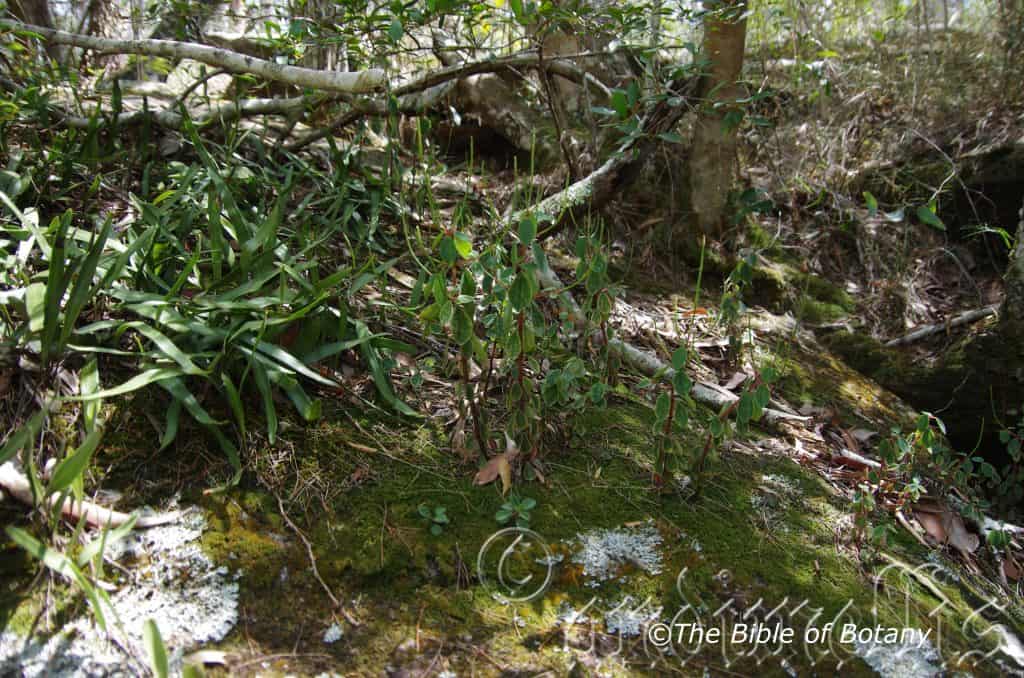
The Pinnacles NSW
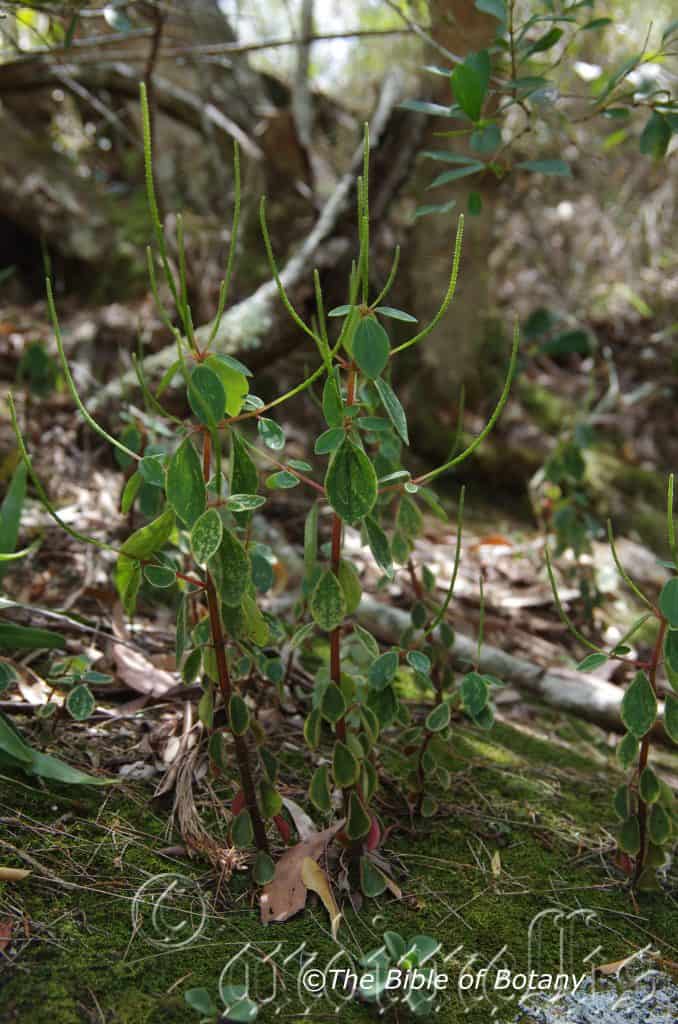
The Pinnacles NSW
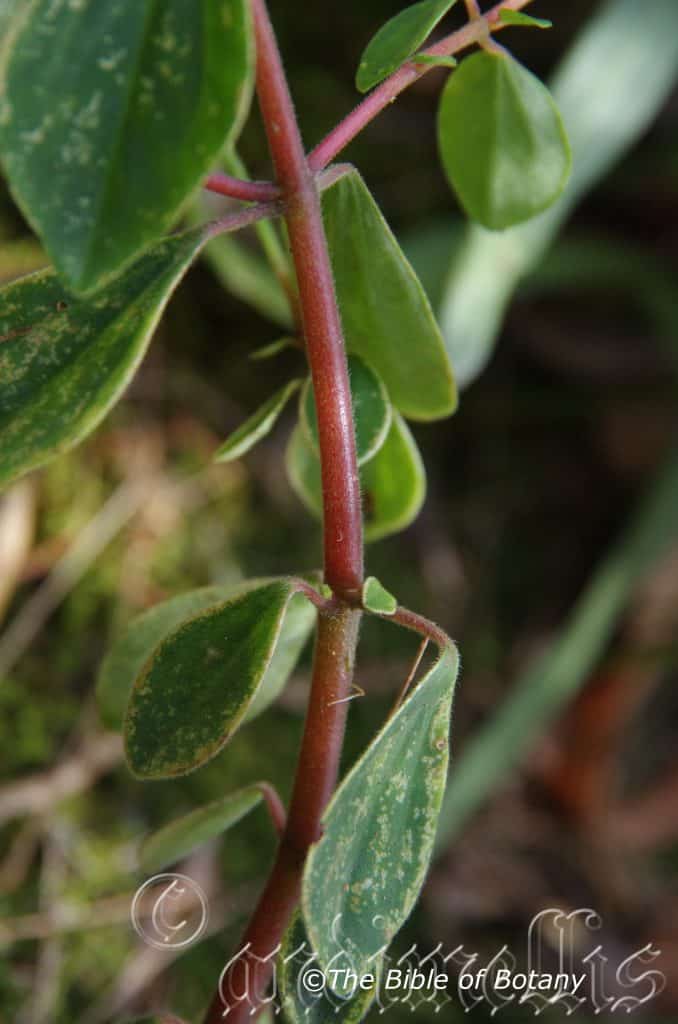
The Pinnacles NSW
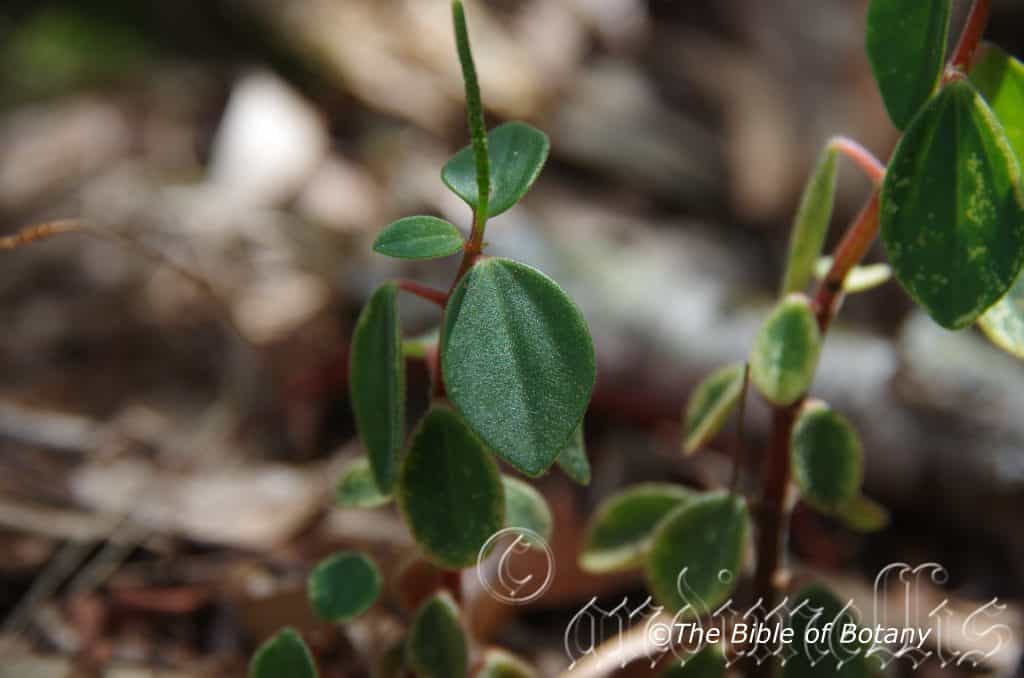
The Pinnacles NSW
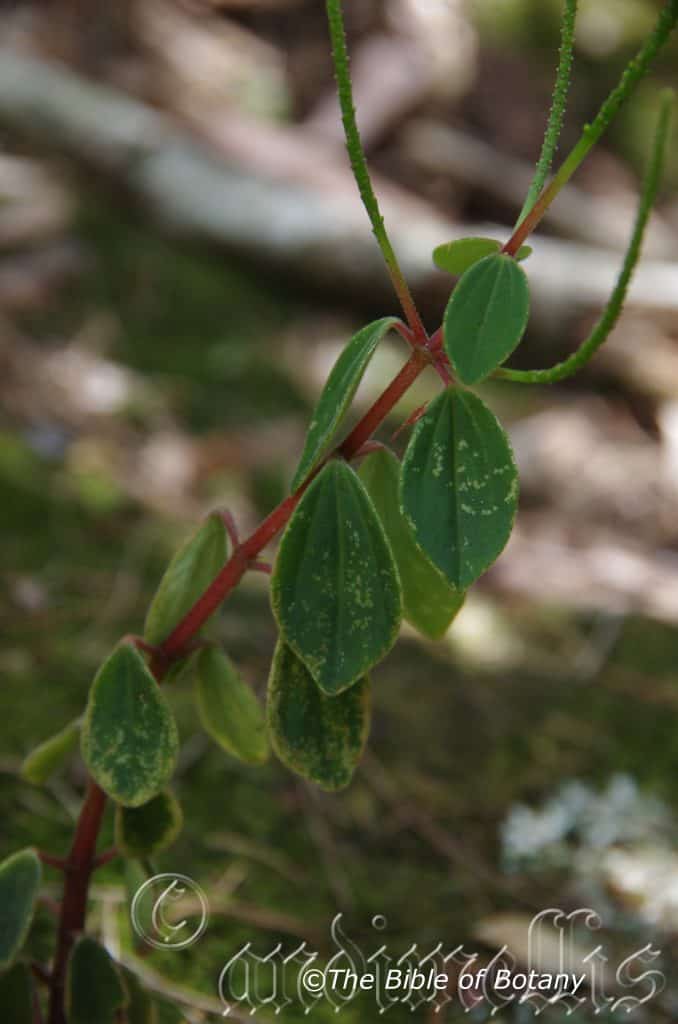
The Pinnacles NSW
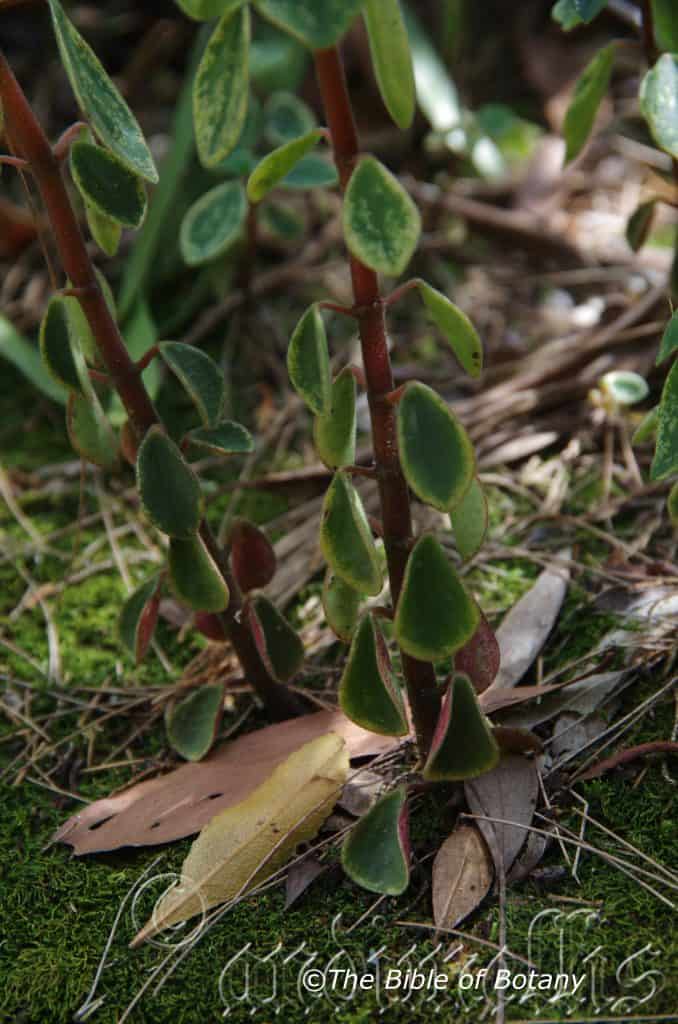
The Pinnacles NSW
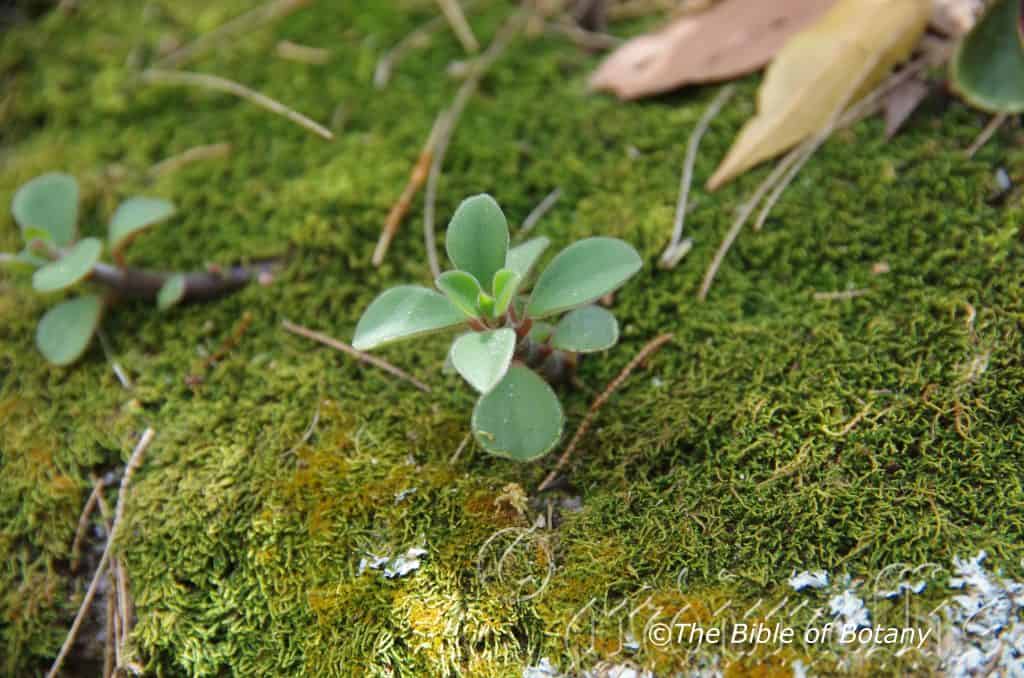
The Pinnacles NSW
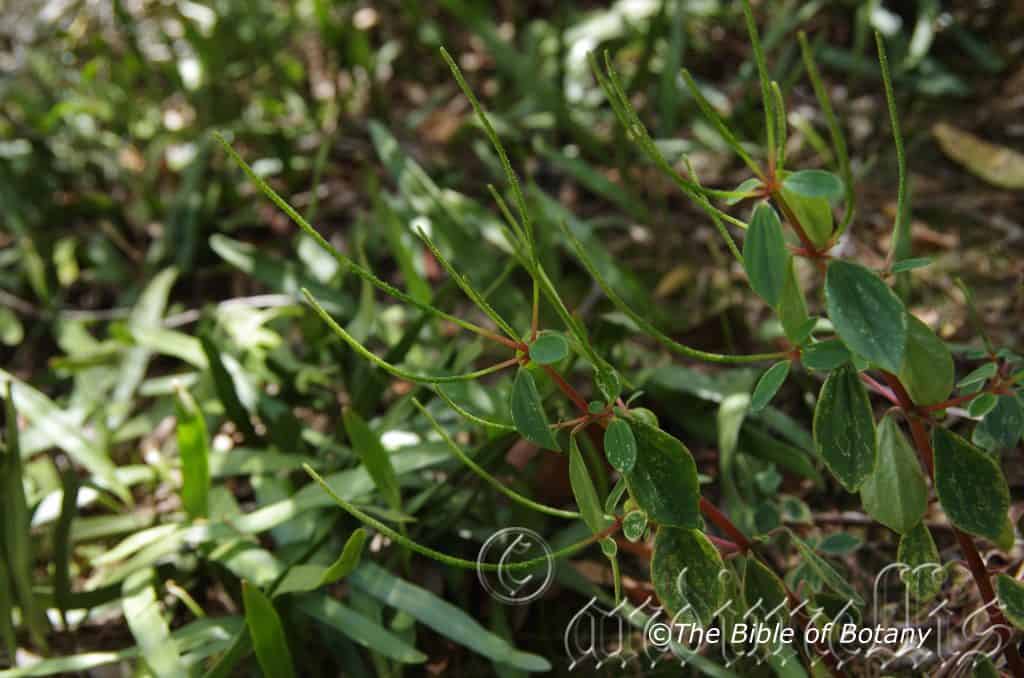
The Pinnacles NSW
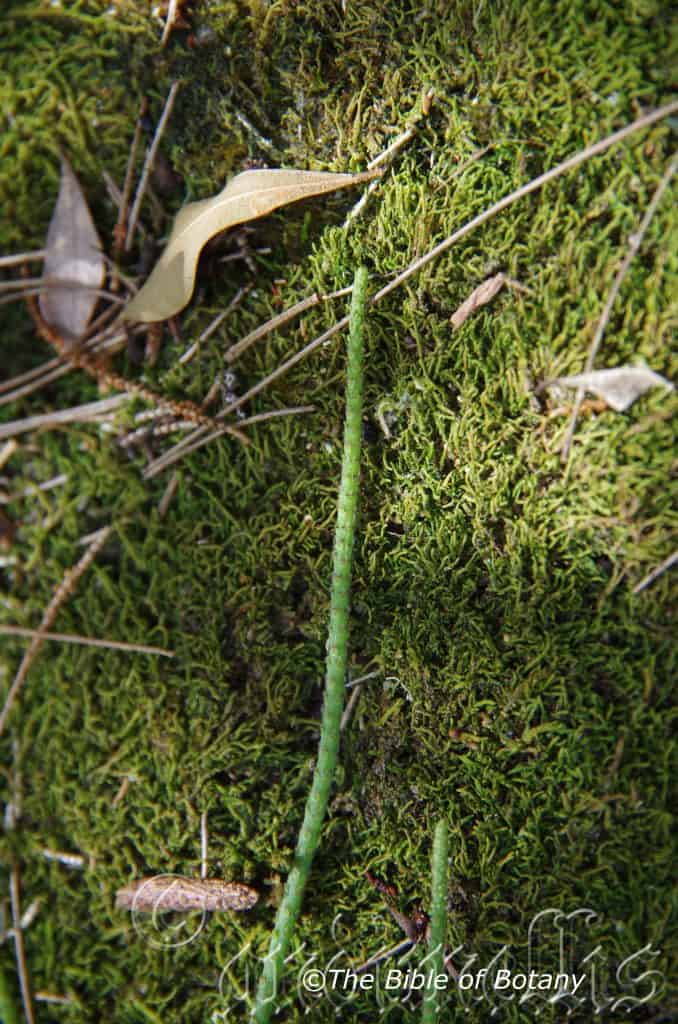
The Pinnacles NSW
Peperomia blanda
Classification:
Unranked: Magnoliids
Order: Piperales
Family: Piperaceae
Sub Family: Piperoideae
Genus: From Peper, which is Ancient Greek for a pepper and Omos, which is equivalent to Oides, which is Ancient Greek for alike or similar to. It refers to the flavour of some early species, which are similar to pepper.
Species: From Blanda which is Latin for smooth, enchanting, pleasant or pleasing to the tongue or at times flattering as in beauty. It refers to plants, which have a pleasant taste or are unassumingly beautiful in their own way.
Sub specie: Floris is Latin for a flower or Flōs, which is Roman for the Goddess of spring and flowers and Bundus, which is Latin for abundant or plenty. It refers to plants, which bear flowers that are in prolific numbers when in flower or plants, which are more floriferous than other sub species in the genus. It is the only subspecies found in Australia.
Common Name: Erect Peperomia.
Distribution:
Peperomia blanda is found south from the Iron Range on Cape York Peninsula in far north east Queensland to near Jervis Bay in southern coastal New South Wales. It is mainly found on the Western Slopes, on and east of the Great Dividing Range.
https://avh.ala.org.au/occurrences/search?taxa=Peperomia+blanda#tab_mapView
Habitat Aspect Climate:
Peperomia blanda prefers light dappled shade to dense shade. It grows amongst moss covered rocks and on tree trunks in the shade of well-developed tropical rainforest, subtropical rainforest, notophyll vine forest, moist schlerophyll forest, moist Eucalypt forest and deciduous vine thickets in the north. The altitude ranges from 30 meters ASL to 1030 meters ASL.
The temperatures range from minus 2 degrees in July to 38 degrees in January.
The rainfall ranges from lows of 1200mm to 3200mm average per annum.
Soil requirements:
Peperomia blanda grows as an epiphyte or lithophyte. It does not tolerate of waterlogged soils. The mulches pH ranges from 5pH to 6.6pH. Non saline soils to slightly saline soils are tolerated.
Height & Spread:
Wild Plants: 0.25m to 0.3m by 0.3m to 1m
Characteristics:
Peperomia blanda grows as a small spreading lithophyte on porous rocks, on the branches and trunks of fallen trees or in the nests of ferns. The pale reddish green erect stems are sparsely to densely covered in white tomentose to pannate hairs. The internodes measure 16mm to 22mm in length by 5mm to 6mm in diameter. The stems eventually become decumbent where they will root from the leaf nodes and at times from discarded leaves.
The leaves of Peperomia blanda are opposite or at times in whorls. It is ovate to ovate-elliptical measure 20mm to 30mm in length by 20mm to 25mm in width. The petioles measure 3mm to 6mm in length. The bases are cuneate to rounded while the apexes are acute or obtuse. The discolourous laminas are deep grass-green and sparsely to densely covered in white tomentose to pannate hairs on the upper lamina while the lower lamina is paler, creamy-green, or creamy yellow-green or burgundy. The leaf margins are entire and flat. The leaves are thick and succulent tapering slightly towards the margins. The 5 veins from the base are not prominent on either lamina.
The inflorescences of Peperomia blanda are long spikes born from the terminals or upper leaf axils. The peduncles measure 5mm to 16mm in length by 1.2mm to 1.5mm in diameter while the axis measure 10mm to 130mm in length by 1.3mm to 1.6mm in diameter. The individual flowers are sessile. The flowers are crowded near the base becoming more disjunct as they approach the apex. The creamy yellow or white individual flowers measure 0.6mm to 0.8mm in length by 0.7mm to 0.8mm in diameter. Peperomia blanda var. floribunda flowers most of the year especially in the northern parts of its range.
Peperomia blanda fruits are a globose, sticky drupe. The drupes are papillate and dry to a deep creamy brown and measure 0.6mm to 0.8mm in length with a similar diameter.
Wildlife:
Peperomia banda’s wildlife is unknown to the author.
Cultivation:
Peperomia blanda is a beautiful small succulent that deserves a place in those small nooks and crannies in a shaded garden in warm temperate, subtropics to the tropics, monsoonal regions and even cooler semi-arid areas of Australia. It is ideal in almost every setting at the edge of a rain forest in court yards, around swimming pools or smaller rockeries where their small size can bring a balance into the garden balanced. In cultivation it will grow from 200mm to 350mm in height by around half a meter in diameter where grown in an open shady position.
It grows exceptionally well on lighter soils When deep leaf litter keeps the soil cool and moisture at an even level. It does best however growing on moist sandstones or along fallen logs that a kept moist. If these requirements are met they will establish themselves quickly forming a beautiful lush ground cover. It is moderately drought resistant in their rainfall zones.
Be imaginative when planting in mass. Use the plants in different configurations with other small plants like Viola betonicifolia or small orchids and ferns that like similar conditions.
Peperomia blanda var. floribunda makes an excellent terrarium or bottle plants. I have grown this Peperomia and others in bottles and terrariums for many years where once a balanced height in the container is reached it is happy without any maintenance or further care. It looks great with some of the smaller Adiantum like Adiantum aethiopicum or with a common native moss like Barbula crinita or even the small white flowering Scleranthus biflorus can look really good.
Propagation:
Seeds: Seeds of Peperomia blanda var. floribunda are usually difficult to collect and would not be easy to establish seedlings from the seeds.
Cuttings: Cutting grown plants a very easy to establish. Use 150mm long ripened material with two sets of leaf nodes when growing from cuttings. They can be taken at any time during the year however the warmer growing months are better. Remove the leaves from the bottom nodes, being careful not to damage the nodes. Lay the cuttings in a sterile mix with the lower two nodes just below the surface of the mix on a 45 degree to 60 degree angle. Allow the mix to dry out between watering as over watering is the biggest killer of the plants. Do not use mist spraying and if the humidity is high water only in the early morning.
When the cuttings have obviously struck and have developed good roots and a new shoot, transplant them carefully into a new pot or into the permanent position. Fertilize using Seaweed, fish emulsion or organic chicken pellets soaked in water and apply the liquid on an alternate basis. Fertilize every two months.
It is also possible to strike new plants from leaf cuttings though these are slower to develop a good rooting system and stems. However if large numbers a required this is a good alternative method. Take the leaves off the plant with the petiole still attached. Place the petiole in the sterile mix with the leaf blade pointing at around 45 degrees. When the leaves developed a good rooting system and some stem growth transplant them into their new containers and as you would for normal cuttings.
Fertilize using seaweed, fish emulsion or organic chicken pellets soaked in water on an alternate basis. Fertilize every two months until the plants are established then twice annually in early September and March to maintain better health, vitality and flowering.
Further Comments from Readers:
Hi reader, it seems you use The Bible of Botany a lot. That’s great as we have great pleasure in bringing it to you! It’s a little awkward for us to ask, but our first aim is to purchase land approximately 1,600 hectares to link several parcels of N.P. into one at The Pinnacles NSW Australia, but we need your help. We’re not salespeople. We’re amateur botanists who have dedicated over 30 years to saving the environment in a practical way. We depend on donations to reach our goal. If you donate just $5, the price of your coffee this Sunday, We can help to keep the planet alive in a real way and continue to bring you regular updates and features on Australian plants all in one Botanical Bible. Any support is greatly appreciated. Thank you.
In the spirit of reconciliation we acknowledge the Bundjalung, Gumbaynggirr and Yaegl and all aboriginal nations throughout Australia and their connections to land, sea and community. We pay our respect to their Elders past, present and future for the pleasures we have gained.
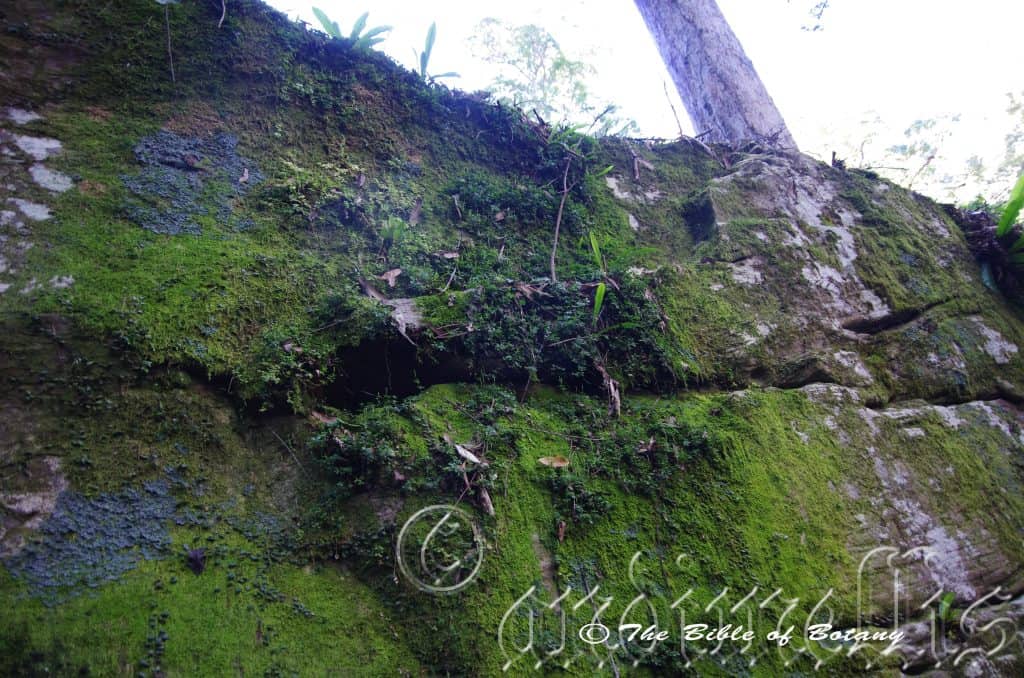
The Pinnacles NSW
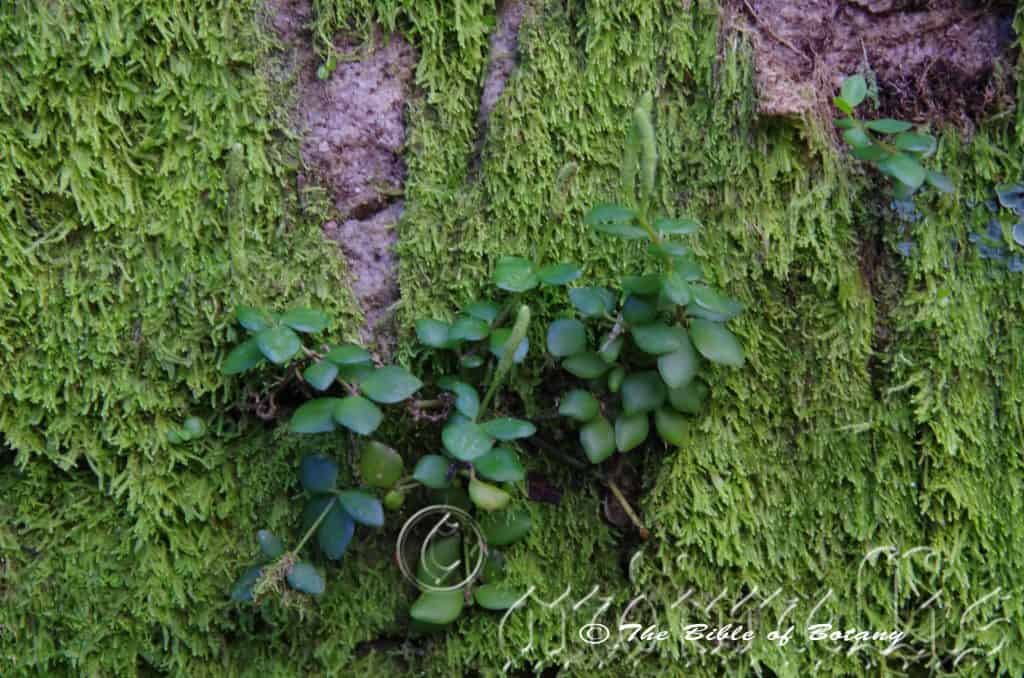
The Pinnacles NSW
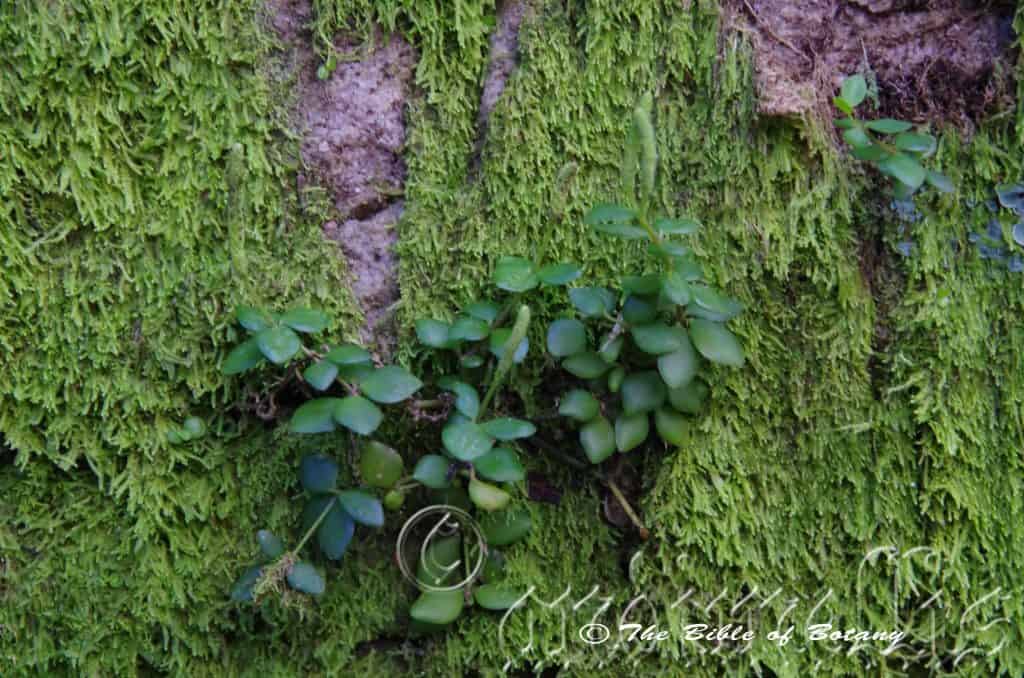
The Pinnacles NSW
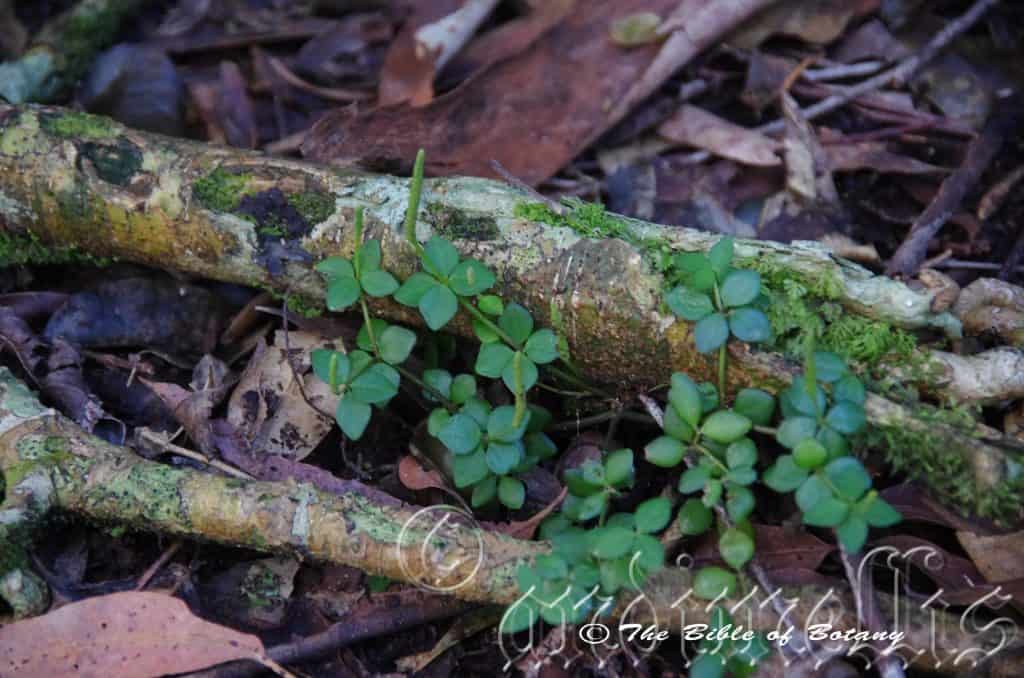
The Pinnacles NSW
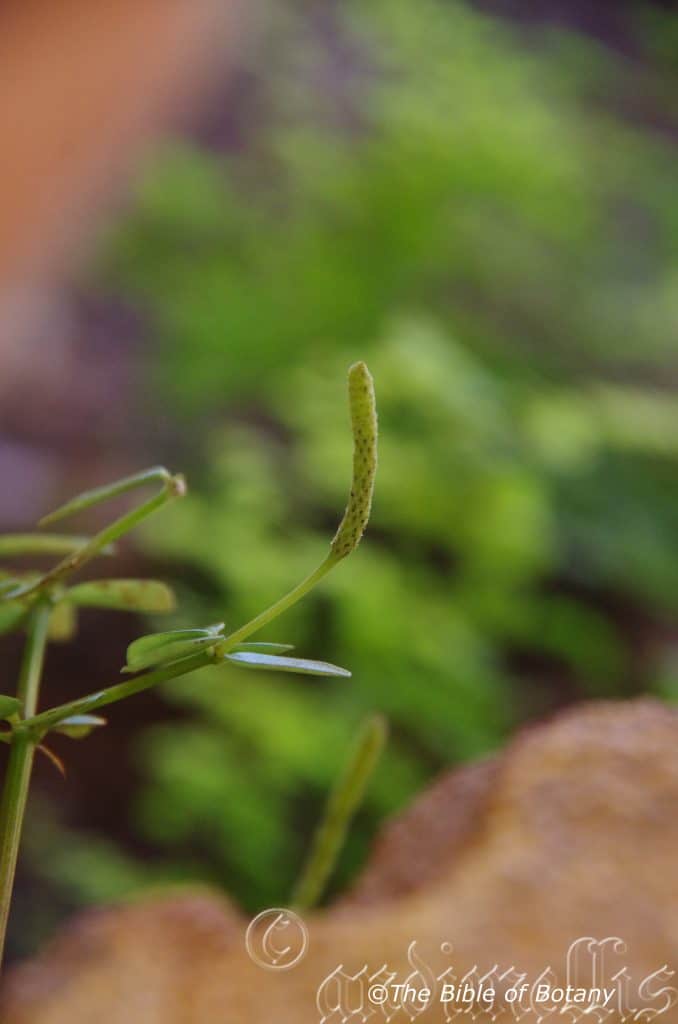
The Pinnacles NSW
Peperomia tetraphylla
Classification:
Unranked: Magnoliids
Order: Piperales
Family: Piperaceae
Genus: From Peper, which is Ancient Greek for a pepper and Omos, which is equivalent to Oides, which is Ancient Greek for alike or similar to. It refers to the flavour of some early species, which are similar to pepper.
Species: From Tetra, which is Ancient Greek for four and Phullon/Phýllon, which is Ancient Greek for a leaf. It refers to leaves, which have a rhomboid form.
Sub specie:
Common Name: Four Leaf Peperomia.
Distribution:
Peperomia tetraphylla is found south from Proserpine and Collinsville in far north eastern Queensland to Braidwood in southern New South Wales. It is found on and east of the Great Dividing Range.
https://avh.ala.org.au/occurrences/search?taxa=Peperomia+tetraphylla#tab_mapView
Habitat Climate:
Peperomia tetraphylla prefer dappled shade to heavy shade. It grows amongst moss covered rocks and on tree trunks in the shade of well-developed tropical rainforest, subtropical rainforest, notophyll vine forest, moist schlerophyll forest, moist Eucalyptus forest and deciduous vine thickets in the north. The altitude ranges from 180 meters ASL to 1200 meters ASL.
The temperatures range from minus 2 degrees in July to 38 degrees in January.
The rainfall ranges from lows of 950mm to 3200mm average per annum.
Soil requirements:
Peperomia tetraphylla are epiphytes or lithophytes. The mulches pH ranges from 5pH to 6.6pH. It does not tolerate of waterlogged soils. Non saline soils to slightly saline soils are tolerated.
Height & Spread:
Wild Plants: 0.05m to 0.15m by 0.3m to 1m
Characteristics:
Peperomia tetraphylla grows as a small spreading lithophyte on porous rocks or on the branches and trunks of fallen trees. The pale green or pale reddish green erect stems are glabrous to densely covered in white or pale grey pubescent. The internodes measure 18mm to 26mm in length by 4mm to 5mm in diameter. Erect stems will eventually become decumbent where they will root from the leaf nodes and at times from discarded leaves.
The leaves of Peperomia tetraphylla are in whorls of 4 very rarely 5.It is elliptical or broad-ovate and measure 6mm to 13mm in length by 5mm to 10mm in width. The petioles measure 1mm to 3mm in length. The base is cuneate to rounded while the apex is acute or obtuse. The discolourous laminas are grass-green to deep sea-green with or without silvery markings along the veins, glabrous or sparsely to densely covered in white or pale grey pubescent hairs on the upper lamina while the lower lamina is paler, creamy green, or creamy yellow-green, purple or burgundy. The leaf margins are entire and flat. The leaves a thick and succulent tapering slightly towards the margins.
The inflorescences of Peperomia tetraphylla a long spikes born from the terminals or the upper leaf axils. The peduncles measure 8mm to 28mm in length by 1.2mm to 1.4mm in diameter while the axis When the flowers form measure 10mm to 35mm in length by 3mm to 3.2mm in diameter. The individual flowers are sessile. The flowers are irregularly scatted along the axis. The purple or pale brownish individual flowers are deeply sunken into the axis and measure 0.3mm to 0.5mm in length by 0.2mm to 0.3mm in diameter. Peperomia tetraphylla flowers most of the year especially in the northern parts of its range.
The fruits are a globose, sticky drupe. The drupes are smooth, glabrous purple-brown and measure 1mm to 1.2mm in length by 0.6mm to 0.7mm in diameter.
Wildlife:
Peperomia tetraphylla’s wildlife is unknown to the author.
Cultivation:
Peperomia tetraphylla is a beautiful small succulent that deserves a place in those small nooks and crannies in a shaded garden in warm temperate, subtropics to the tropics, monsoonal regions and even cooler semi-arid areas of Australia. It is ideal in almost every setting at the edge of a rain forest in court yards, around swimming pools or smaller rockeries where their small size can bring a balance into the garden balanced. In cultivation it grows from 100mm to 100mm in height by around half a meter in diameter when grown in an open shady position.
It grows exceptionally well on lighter soils When deep leaf litter keeps the soil cool and moisture at an even level. It grows best on moist sandstones or along fallen logs that are kept moist. If these requirements are met they will establish itself quickly forming a beautiful lush ground cover. It is moderately drought resistant in their rainfall zones.
Be imaginative when planting in mass. Use the plants in different configurations with other small plants like Viola betonicifolia or small orchids and ferns that like similar conditions so that are mosaic of various leaf colours and patterns are created.
Peperomia tetraphylla makes an excellent terrarium or bottle plants. I have grown this Peperomia and others in bottles and terrariums for many years where once a balanced height in the container is reached it is happy without any maintenance or further care. They look great with some of the smaller Adiantum like Adiantum aethiopicum or with a common native moss like Barbula crinita or even the small white flowering plantScleranthus biflorus.
Propagation:
Seeds: Seeds of Peperomia tetraphylla are usually difficult to collect and would not be easy to establish seedlings from the seeds.
Cuttings: Peperomia tetraphylla grow very easy to establish. Use 50mm long ripened material with two sets of leaf nodes when growing from cuttings. Cuttings can be taken at any time during the year. Remove the leaves from the bottom section being careful not to damage the nodes. Lay the cuttings in a sterile mix with the lower two nodes just below the surface of the mix on a 45 degree to 60 degree angle. Allow the mix to dry out between watering as over watering is the biggest killer of the plants. Do not use mist spraying and if the humidity is high water only in the early morning. When the cuttings have obviously struck and have developed good roots, a new shoot transplant them carefully into a new pot or into the permanent position.
It is also possible to strike new plants from leaf cuttings though these are slower to develop a good rooting system and stems. However if large numbers a quid this is a good alternative method. Take the leaves off the plant with the petiole still attached. Place the petiole in the sterile mix with the leaf blade pointing directly upwards. When the leaves develop a good rooting system and some stem growth transplant them into their new containers and tat as normal cuttings.
Fertilize using seaweed, fish emulsion or organic chicken pellets soaked in water on an alternate basis. Fertilize every two months until the plants are established then twice annually in early September and March to maintain better health, vitality and flowering.
Further Comments from Readers:
Hi reader, it seems you use The Bible of Botany a lot. That’s great as we have great pleasure in bringing it to you! It’s a little awkward for us to ask, but our first aim is to purchase land approximately 1,600 hectares to link several parcels of N.P. into one at The Pinnacles NSW Australia, but we need your help. We’re not salespeople. We’re amateur botanists who have dedicated over 30 years to saving the environment in a practical way. We depend on donations to reach our goal. If you donate just $5, the price of your coffee this Sunday, We can help to keep the planet alive in a real way and continue to bring you regular updates and features on Australian plants all in one Botanical Bible. Any support is greatly appreciated. Thank you.
In the spirit of reconciliation we acknowledge the Bundjalung, Gumbaynggirr and Yaegl and all aboriginal nations throughout Australia and their connections to land, sea and community. We pay our respect to their Elders past, present and future for the pleasures we have gained.
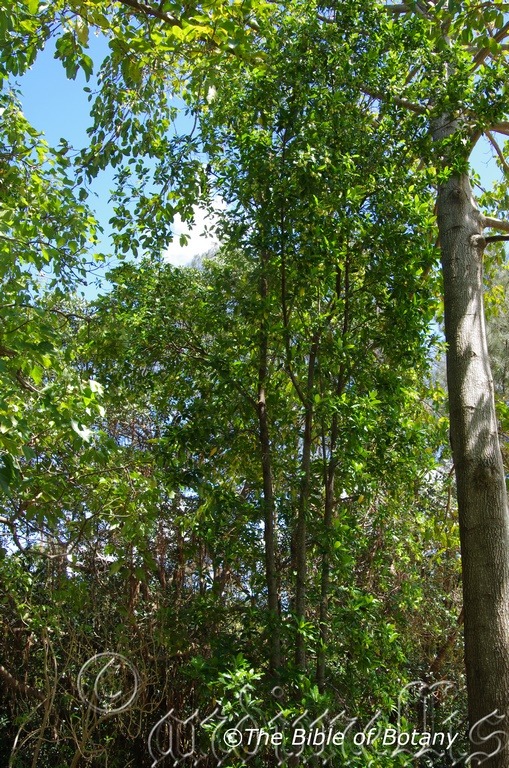
NCBG Coffs Harbour NSW
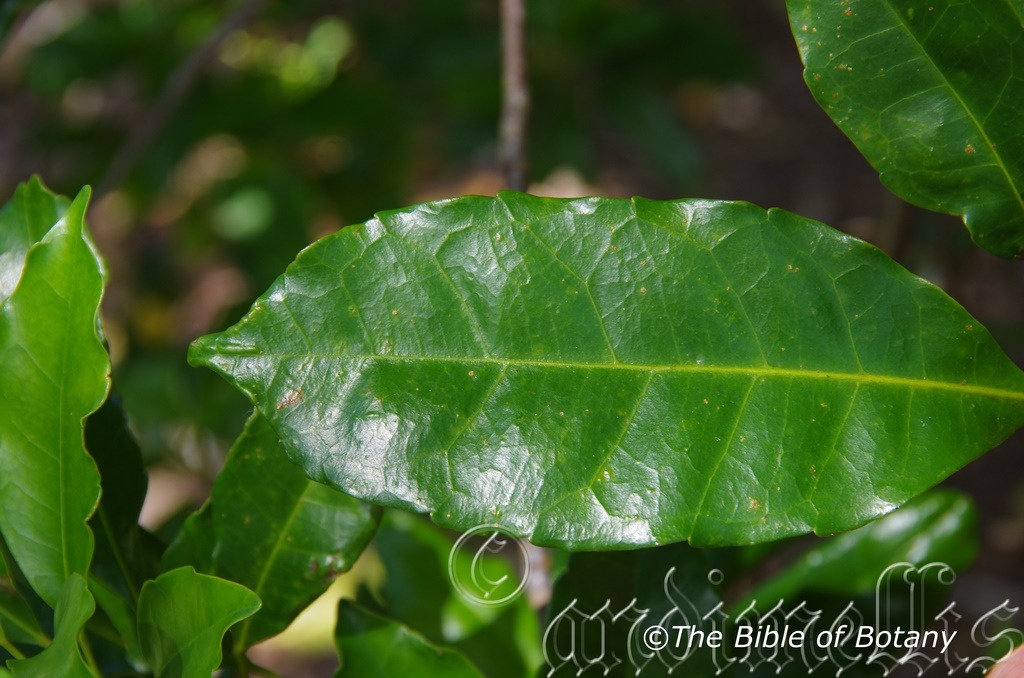
NCBG Coffs Harbour NSW
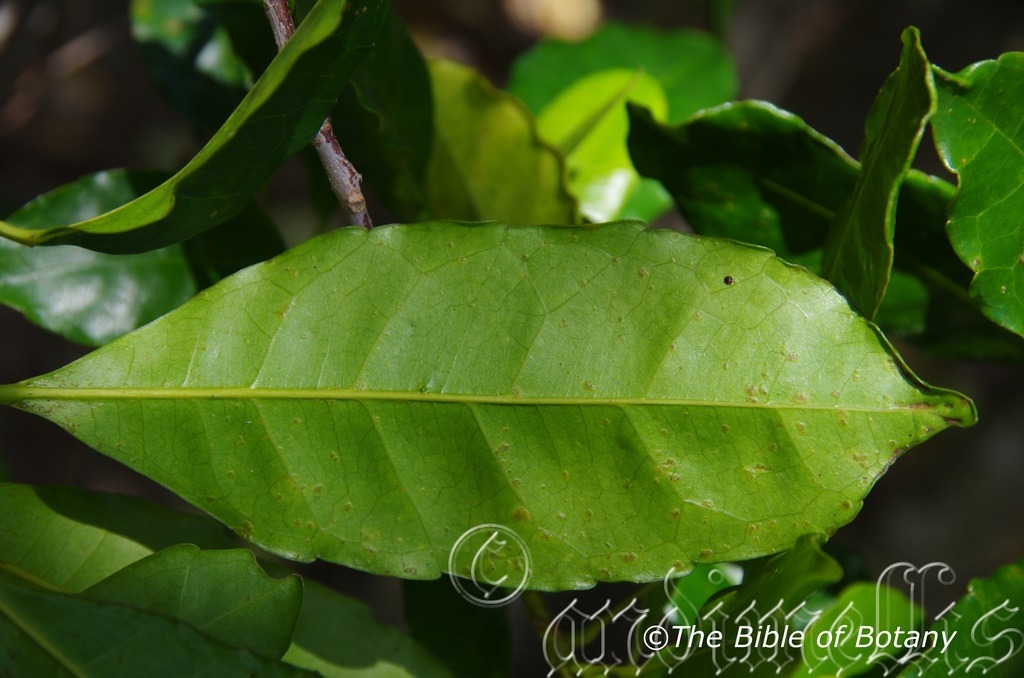
NCBG Coffs Harbour NSW
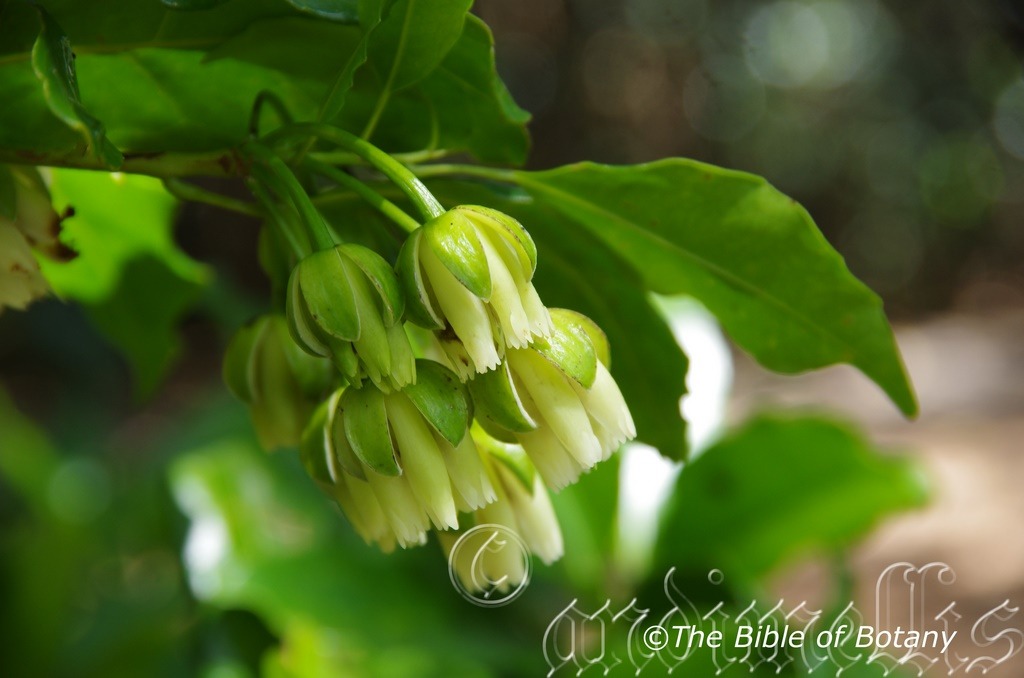
NCBG Coffs Harbour NSW
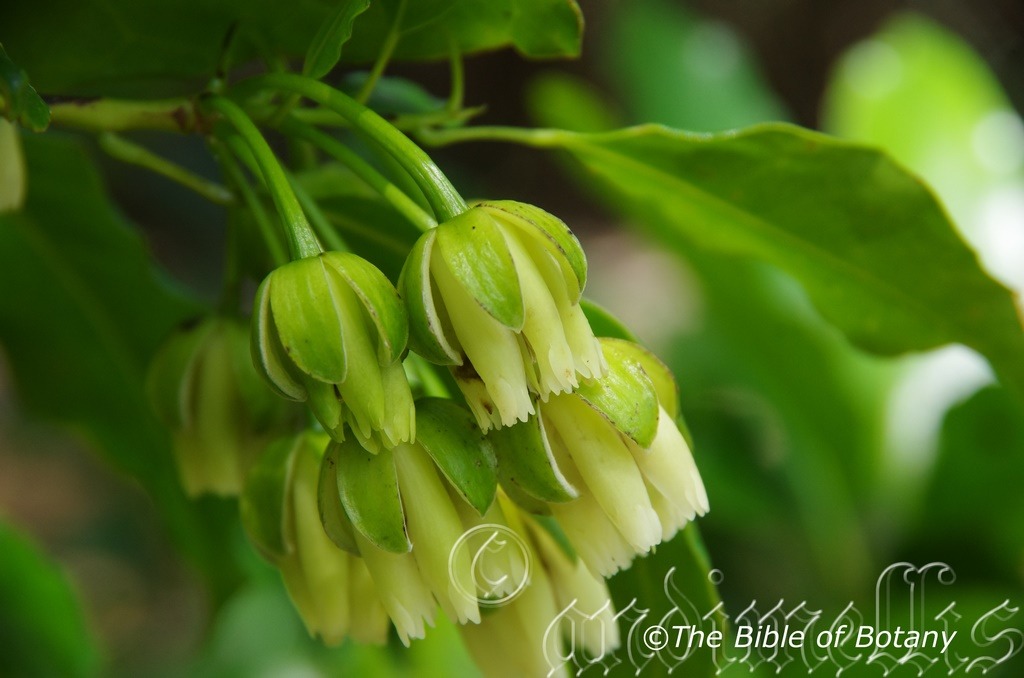
NCBG Coffs Harbour NSW
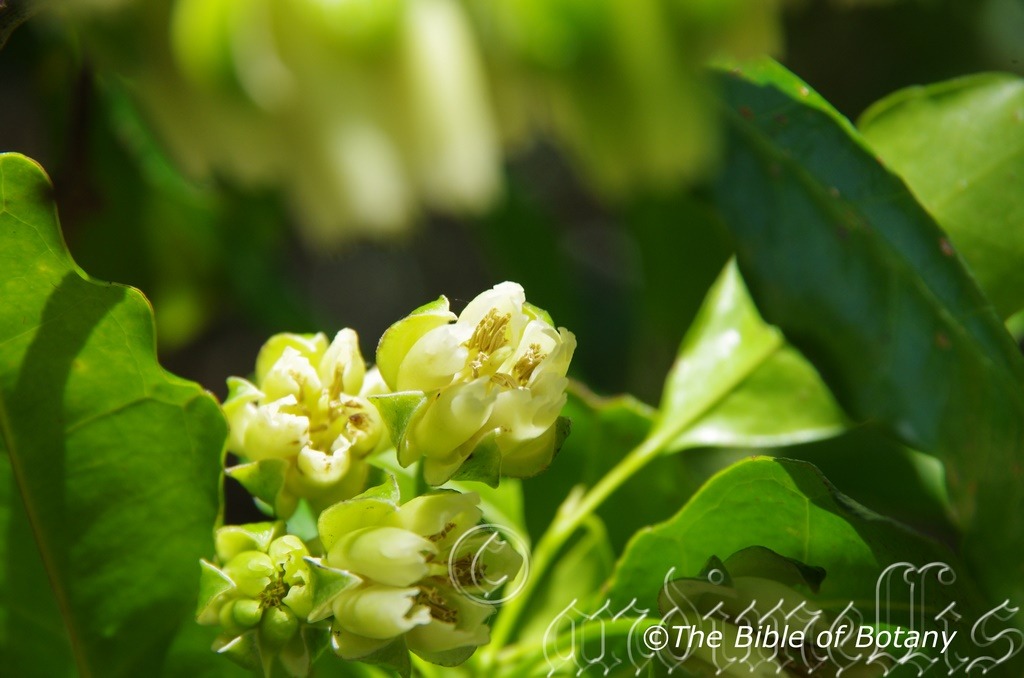
NCBG Coffs Harbour NSW
Peripentadenia phelpsii
Clade: Tracheophytes
Clade: Angiosperms
Clade: Eudicots
Clade: Rosids
Order: Oxalidales
Family: Elaeocarpaceae
Genus: From Peri, which is English for to surround, Pent, which is English for to be enclosed and maybe Denia, which is English for to deny. It may refer to the stamens and pistol being completely enclosed by the petals.
Species: Is named in honour of Phelps, but which Phelps is unknown.
Sub specie:
Common Name:
Distribution:
Peripentadenia phelpsii is restricted to two isolated populations in far north eastern Queensland. One is located north of Cairns around Mossman and the other population is found south of Cairns in Wooroonooran National Park, near Malanda. It is found on the Great Dividing Range.
https://avh.ala.org.au/occurrences/search?taxa=Peripentadenia+phelpsii#tab_mapView
Habitat Climate:
Peripentadenia phelpsii prefer dappled shade to full sun. It grows in upland tropical rainforests. The altitude ranges from 60 meters ASL to 720 meters ASL.
The temperatures range from 4 degrees in July to 36 degrees in January.
The rainfall ranges from lows of 1250mm to 3200mm average per annum.
Soil requirements:
Peripentadenia phelpsii prefer medium rich clays with copious quantities of mulch. The pH ranges from 6pH to 7.5pH. It does not tolerate waterlogged soils. Non saline soils to slightly saline soils are tolerated.
Height & Spread:
Wild Plants: 20m to 25m by 8m to 10m
Characteristics:
Peripentadenia phelpsii grows as a large rainforest tree. The young glabrous, red stems soon turn pale brown. The trunk has a thin grey-brown bark. Older trees are conspicuouslt buttressed.
The opposite, coriacius, decastate leaves measure 70mm to 130mm in length by 30mm to 55mm in width. The petioles measure 25mm to 35mm in length and has a distinct right angle bend at the base. There are 2 glands visible on the petiole at the junction of the lamina. The base is cuneate, while the apex is bluntly acuminate. The discolourous laminas are deep green and glabrous on the upper lamina, while the lower lamina is much paler and dull to semi glossy. The leaf margins have 6 to 8 pairs of broad shallow lobes. The mid vein is prominent on both laminas, while the 8 to 10 Lateral veins are distinctly visible on the upper lamina are prominent on the lower lamina and form loops well inside the margin.
The inflorescences are clusters that form behind the outer leaves. The thick, terete, glossy, green pedicles measure 18mm to 25mm in length by 1mm to 1.4mm in diameter. The thick, pale green lanceolate sepals are moderately covered in short, fine pubescent hairs and measure 8mm to 10mm in length by 4mm to 5mm in width. There are 5 or at times 6 individual, white tubular flowers on each pedicel surrounded by one set of sepals. The individual corollas measure 15mm to 20mm in length by 3.5mm to 4.5mm in diameter. The corollas have 8 to 10 short obtuse lobes The flowers appear in late October to mid November.
The13 white filaments support narrow, oblong fawn basifixed anthers.
The style is fluted near the base.
The fruits are a globose drupe. The smooth, glabrous drupes measure 35mm to 45mm in length by 30mm to 35mm in diameter. The single seed measures 25mm in length by 16mm in diameter.
Wildlife:
Peripentadenia phelpsii wildlife is unknown to the author.
Cultivation:
Peripentadenia phelpsii is a large tree suitable for parks and large gardens that has spectacular flowers
Propagation:
Seeds: The seeds are usually easy to collect and would not be easy to establish seedlings from the seeds.
Like most rainforest trees the seed is best sown when freshly collected. Sow seeds directly into a seed raising mix, keeping them moist not wet. When the seedlings are 30mm to 40mm tall, prick them out and plant them into 50mm native tubes using a good organic mix.
As the seedlings roots ach the bottom of the tubes nip the tips out and plant them out into their permanent position.
Fertilize using Seaweed, fish emulsion or organic chicken pellets soaked in water and apply the liquid on an alternate basis. Fertilize every 2 months until the plants are established then once a year the after in spring or autumn to maintain health, vigour and better flowering.
Further Comments from Readers:
Hi reader, it seems you use The Bible of Botany a lot. That’s great as we have great pleasure in bringing it to you! It’s a little awkward for us to ask, but our first aim is to purchase land approximately 1,600 hectares to link several parcels of N.P. into one at The Pinnacles NSW Australia, but we need your help. We’re not salespeople. We’re amateur botanists who have dedicated over 30 years to saving the environment in a practical way. We depend on donations to reach our goal. If you donate just $5, the price of your coffee this Sunday, We can help to keep the planet alive in a real way and continue to bring you regular updates and features on Australian plants all in one Botanical Bible. Any support is greatly appreciated. Thank you.
In the spirit of reconciliation we acknowledge the Bundjalung, Gumbaynggirr and Yaegl and all aboriginal nations throughout Australia and their connections to land, sea and community. We pay our respect to their Elders past, present and future for the pleasures we have gained.
Peristeranthus hillii
Classification:
Unranked: Monocots
Order: Asparagales
Family: Orcidaceae
Subfamily: Epidendroideae
Tribe: Vandeae
Subtribe: Aeridinae
Genus: From Peristera, which is Latin for a dove and ánthos, which is Ancient Greek or Anthus, which is Latin for a small bird or may be ántha/ánthos, which is Ancient Greek for the male reproductive organ of a flower or the flower. The pollen-bearing portion of the stamen usually at the apex of the filament. It may refer to the flowers, of the type species, which were white and appeared like small doves along the flowering spike all taking flight at the same time.
Species: Is named in honour of Leslie J. Hill; 1908-2003, who was a botanical philanthropist and collector of South African succulents.
Sub specie:
Common Name:
Distribution:
Peristeranthus hillii is found in several disjunct populations south from Barron in far north eastern coastal Queensland to Kempsey in central coastal New South Wales. It is found east of the Great Dividing Range to the coast including Fraser Island and Moreton Island.
https://avh.ala.org.au/occurrences/search?taxa=Peristeranthus+hillii#tab_mapView
Habitat Aspect Climate:
Peristeranthus hillii prefers medium shade to dappled shade. It usually grows in well-developed littoral rainforest on the coastal ranges especially on trees and woody climbers in rainforest. Its altitude ranges from 5 meters ASL to 380 meters ASL.
The temperatures range from 1 degree in August to 36 degrees in January.
The rainfall ranges from lows of 1300mm to 2200mm average per annum.
Soil requirements:
Peristeranthus hillii grows as an epiphyte on the trunks of trees and larger lianas. The soils pH ranges from 5pH to 6pH. The host trees do not tolerate water-logged soils. Non saline soils to moderately saline soils are tolerated.
Height & Spread:
Wild Plants: 0.06m to 0.25m by 0.1m to 0.3m.
Characteristics:
Peristeranthus hillii grows as a slender semi pendant epiphytic orchid with 1 or rarely 2 or more shoots. The aerial roots are thick and spongy. The stems measure 30mm to 250mm in length.
It has 3 to 8 divaricate narrow oblong leaves. The leaves measure 50mm to 250mm in length by 15mm to 40mm in width. The bases are clasping while the apexes are acute, acuminate or obtuse. The concolourous, coriaceous leaves are grass-green to deep green and glabrous. The laminas are flat and strongly flexed while the margins are entire. The midvein is prominent on the lower laminas while there are 4 to 6 slightly prominent longitudinal veins.
The inflorescences are long, pendant spikes. The spikes usually have 25 to 75 small individual flowers. The spikes measure 50mm to 250mm in length. The ovary which appears to be part of the pedicel is slightly swollen at the base and measure 1.5mm to 3mm in overall length including the pedicel. The flowers are pale lime-green to greenish-cream with reddish-purple or crimson markings.
The glabrous, oblong to narrow spathulate dorsal sepal is strongly incurved with an obtuse apex. The margins are entire. The dorsal sepal measures 2.5mm to 3.5mm in length by 1mm to 1.5mm in width.
The glabrous, oblong to narrow spathulate lateral sepals are strongly incurved with an obtuse apex. The margins are entire. The lateral sepals measure 2.5mm to 3.5mm in length by 1mm to 1.5mm in width.
The glabrous, oblong to narrow spathulate lateral petals are strongly incurved with an obtuse apex. The margins are entire. The lateral petals measure 2.5mm to 3.5mm in length by 1mm to 1.5mm in width.
The labellum is glossy yellow-green with crimson markings. It measures 2mm to 2.5mm in length by 2mm to 2.5mm in width. The column is erect near the base but deflexed through 90° from the middle and measures 1mm to 1.5mm in length. The foot measures 0.5mm to 0.8mm in length. The flowers appear from September to October.
The fruits are linear capsules. The green capsules turn deep grey when ripe. The angular uncross section capsules have 4 flattened sides and measure 1mm to 30mm in length by 4mm to 7mm in width.
Wildlife:
Peristeranthus hillii’s wildlife is unknown to the author.
Cultivation:
Peristeranthus hillii is an unusual epiphytic orchid to grow in the garden but it needs a cool, moist, light shady position to survive and thrive. The best place is in a green house or bush house where the environment can be controlled better. It does well on slabs of cork or on slabs of old tree fern.
In a littoral rainforest free of frost or sub zero temperatures and a humid microclimate will see the plants thrive.
Propagation:
Seeds: All orchids that are declared rare, vulnerable or endangered are protected by Federal and State Laws and must not be removed from the wild unless you are a land developer, mining company or main Roads department etc. This includes bulbs, roots, leaves and flowers. No part of any plant can be removed from Federal, State or Local Government land without the prior permission of the authority and this includes the spore.
1. Obtain relevant materials
The first step in growing orchid from seed will be sourcing and having at the ready all materials that will be required in the propagation process.
This includes all of the following:
Unripe orchid seed capsule. If there are 2 capsules secure the second capsule immediately after the first capsule splits or if only one capsule as soon as it changes colour.
Orchid gelling medium with agar which can be purchased from an orchid society or a specialist nursery.
Distilled water
Cooking pot
Spoon
Oven-safe glass or polypropylene containers with lids
Sealable bags
Clean, sterilized cutting board
Rubber gloves
Paper towels
Tweezers or forceps
70 percent ethanol
Bleach
Scalpel or sharp knife
Planting pot
Orchid compost
Length of wire metal
Plastic spray bottle.
deep petri dishes or sterile jars.
2. Prepare agar medium
The agar medium is a special orchid gelling mixture that distilled water will be added to distilled water.
To prepare the medium, mix equal parts of orchid gelling medium with distilled water in a cooking pot.
Place the pot on a stove and bring the mixture to boil for while stirring continuously for two minutes.
Pour the mixture into the petri dishes glass or propylene containers while ensuring not to fill the containers above 20 percent of their volume.
Loosely replace the lids to the containers. Sterilize the containers by heating them up in a microwave oven for between 2 to 3 minutes.
Spray 70 percent ethanol into a sealable bag to create a sterile environment. Transfer the heated containers into the sealable bag.
Allow the containers to cool a bit before tightening their lids and then sealing the bag. Leave the containers to stand for a few days until the mixture solidifies.
3. Prepare seed capsule and work surface
Place an open pot of water on a stove and bring to boil. Place the cutting board in the oven and sterilize.
Put on rubber gloves and sterilize the forceps, and scalpel with 70 percent ethanol.
Insert the seed capsule into a bowel filled with bleach for about fifteen minutes.
Sterilize seed capsule again with 70 percent ethanol and place on grill.
Using the sterilized scalpel, cut open the seed capsule to reveal the seeds. Using a scalpel or sharp knife, scrape out the seeds from the capsule unto an ethanol soaked paper towel.
4. Flasking of the seed
Take out the petri dishes or glass jars containers holding the agar medium. Over the steam, open up the containers and transfer seeds from the ethanol soaked paper towel into the individual containers using the sterilized forceps.
The amount of seeds will determine the number of containers required. Replace the lid of the containers and place them on a window sill that receives indirect sunlight.
5. Wait and exercise patience
All that can be done at this point is to wait until the seeds germinate. The amount of time that this might take varies and is dependent on the particular species.
Generally, the time can range from a few months to a few years. During this period of waiting, ensure the containers are free from contamination to ensure that germination is not disrupted.
6. Emergence of protocorms
Protocorms are tuber-shaped bodies with rhizoids that are produced by the young seedlings of various orchids. Protocorms represent the embryonic form of the orchid plant.
Their emergence after the period of waiting at an affirmation that everything in the propagation process is on track.
7. Transflask orchid seedlings is done after they have developed roots
Upon the emergence of the protocorms, consistently observe the growth of the seedlings. At the point when the seedlings appear to overcrowd the flask, transflasking should be carried out, typically within 30 and 60 days.
* This is done by removing individual seedlings using sterilized tweezers from the original containers and placing them in new containers also filled, in a proportion similar to the original, with agar medium. 6 to 8 in a standard petri dish or 1or 2 to a test tube
8. Transplant seedlings into planting pots
On the presumption that there are no disruptions to the plant growth, the seedlings will eventually outgrow the containers.
At this point, they are to be transplanted into planting pots. A good rule of thumb to determine when they are ready to be transplanted is when the seedlings have developed roots that have grown up to the length of one-quarter of an inch.
To transplant, prepare a planting pot or other container for receiving the seedling by majorly filling it up with coarse fir bark and possibly some slightly moist orchid compost mixture containing perlite, fine charcoal, redwood bark shavings, etc.
To extract the seedlings, submerge the containers in warm water to help loosen the agar gel.
Once the agar medium is softened, twist a piece of metal to form a loop and in turn, use it to carefully pull out the seedlings from the container. It is best done if the agar and seedling can be removed together.
The seedlings can be further rinsed in lukewarm water to remove any excess agar mixture still stuck to them.
Following this, the seedlings can now be planted into the prepared pot with at least 50mm of space between each individual seedling.
9. Positioning the orchid
The seedling once fully transplanted should be placed in a location that is warm with good indirect sun light.
Slowly position the pots into an area that closely assimilates the conditions it will be growing under.
The choice as to whether the plant should be exposed to full sun or in direct sunlight will be dependent on the particular orchid specie.
10. Subsequent care of the plant
After the first week, the seedling can be misted several times a day and watered just once a week.
A guide in watering the plant will be using the dryness of the fir back that is, water the plant until the fir back is completely moistened and wait till it has completely dried out before watering again.
Do not fertilize until the seedlings have fully established themselves.
Division:
Peristeranthus hillii can be divided using older plants that have several shoots. Each shoot should have roots and be healthy. Remove the shoots by cutting them with a sharp clean, sterilised knife. Tie the new shoots firmly back onto a small slab of cork or small slab of old tree fern. Plants a slow to -establish and should be kept moist with misting daily and in a cool, humid environment until fully established.
Fertilize using seaweed, fish emulsion or organic chicken pellets soaked in water on an alternate basis as a foliar spray. Fertilize every two months until the plants are established then twice annually in early September and March to maintain better health, vitality and flowering.
Further Comments from Readers:
Hi reader, it seems you use The Bible of Botany a lot. That’s great as we have great pleasure in bringing it to you! It’s a little awkward for us to ask, but our first aim is to purchase land approximately 1,600 hectares to link several parcels of N.P. into one at The Pinnacles NSW Australia, but we need your help. We’re not salespeople. We’re amateur botanists who have dedicated over 30 years to saving the environment in a practical way. We depend on donations to reach our goal. If you donate just $5, the price of your coffee this Sunday, We can help to keep the planet alive in a real way and continue to bring you regular updates and features on Australian plants all in one Botanical Bible. Any support is greatly appreciated. Thank you.
In the spirit of reconciliation we acknowledge the Bundjalung, Gumbaynggirr and Yaegl and all aboriginal nations throughout Australia and their connections to land, sea and community. We pay our respect to their Elders past, present and future for the pleasures we have gained.